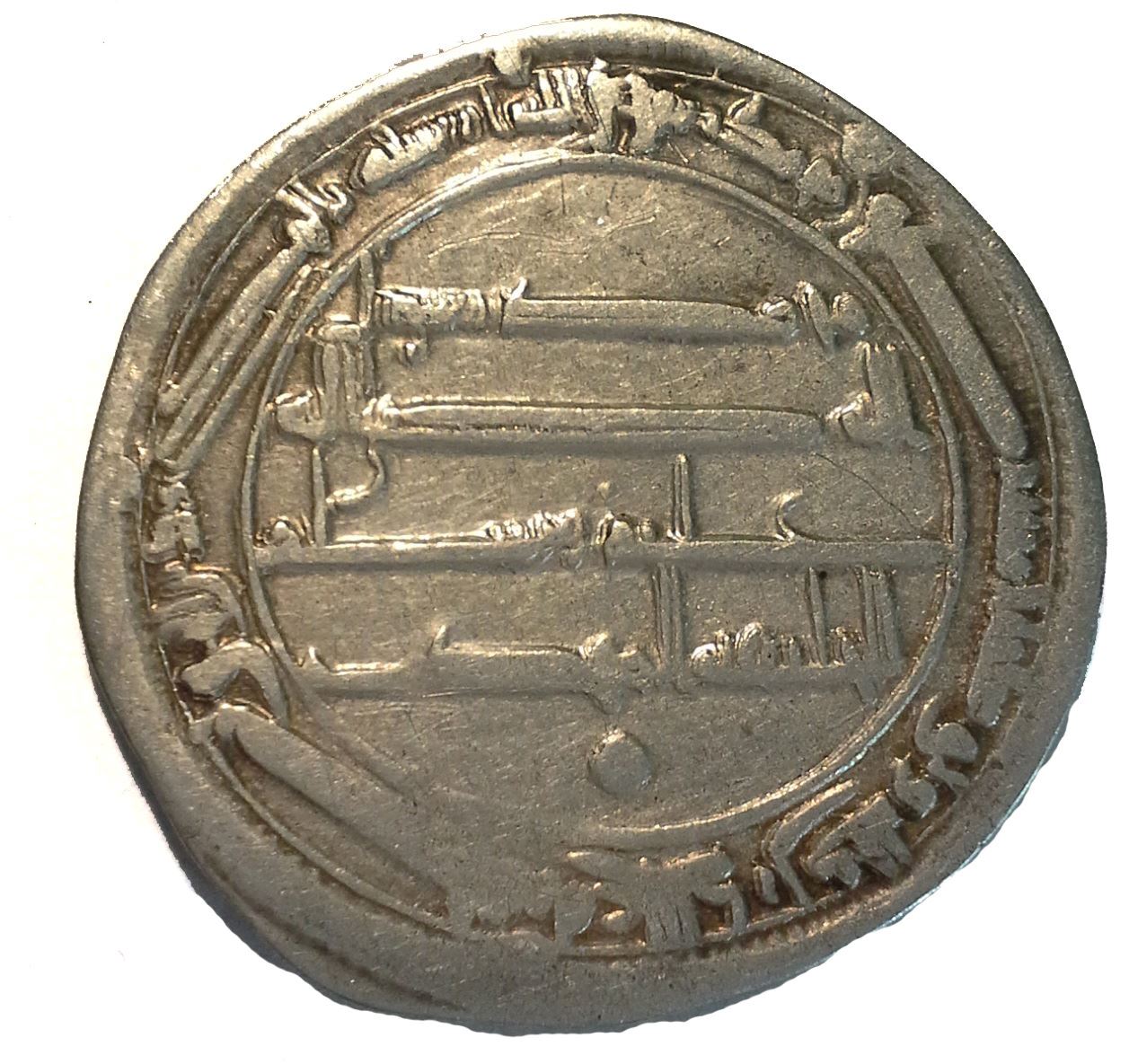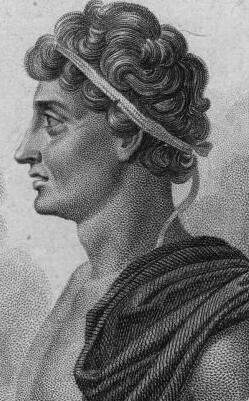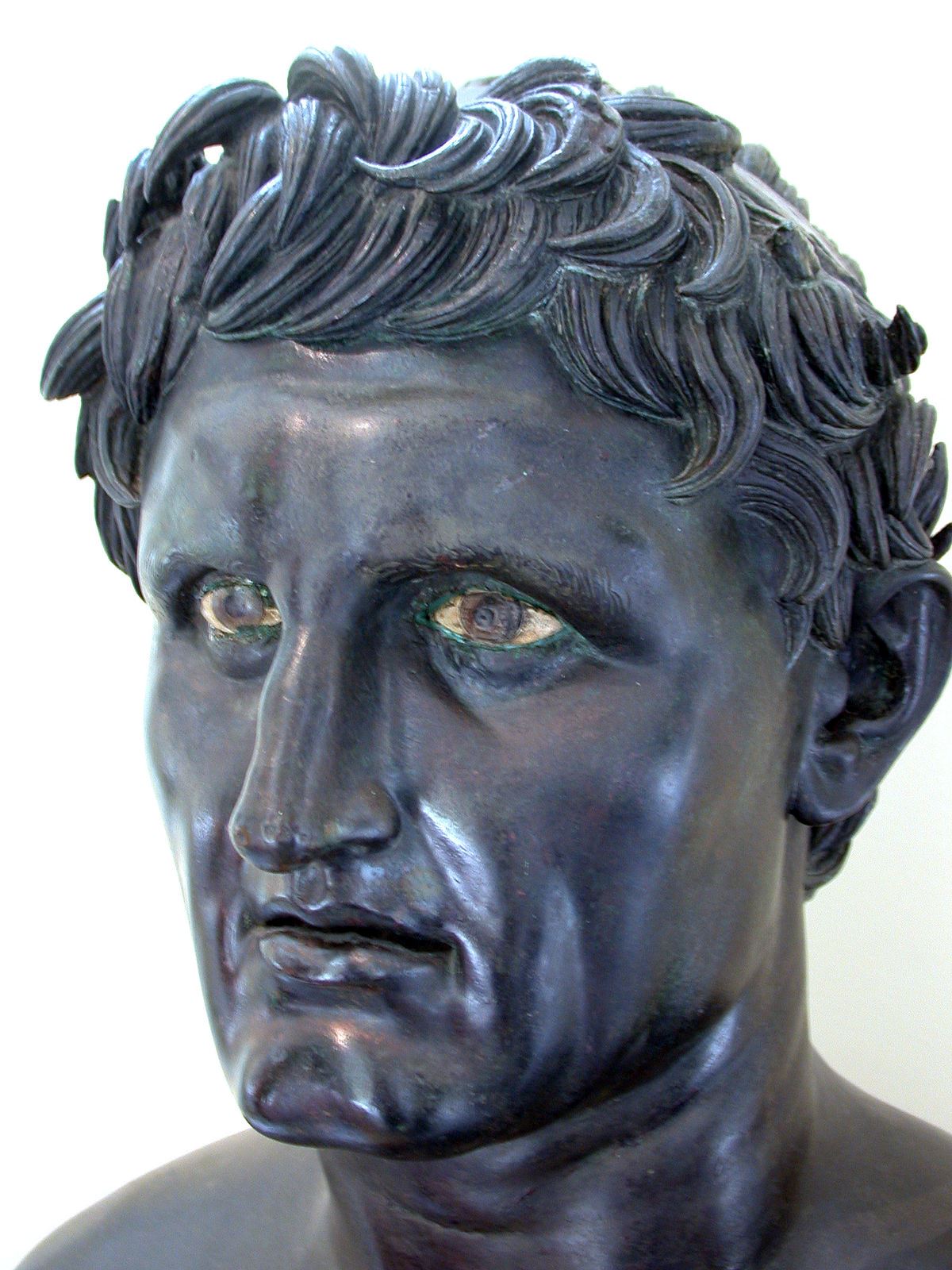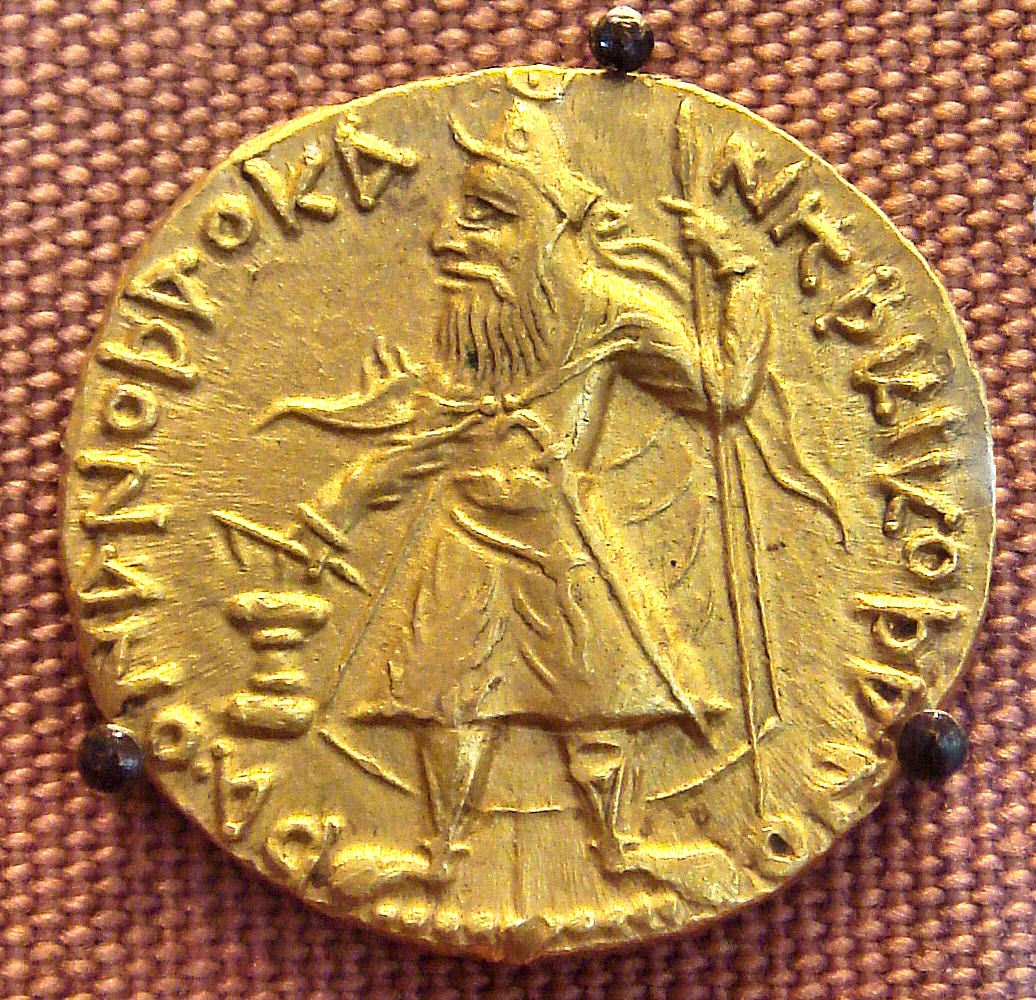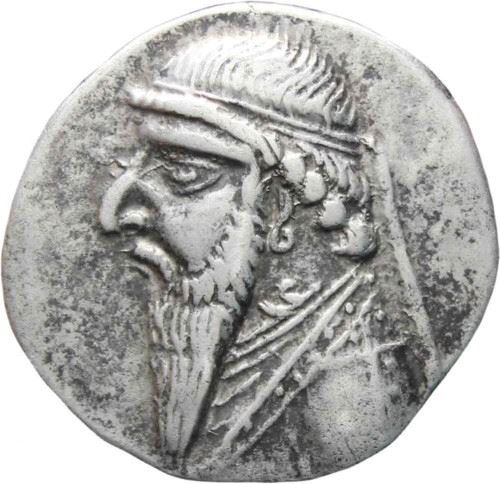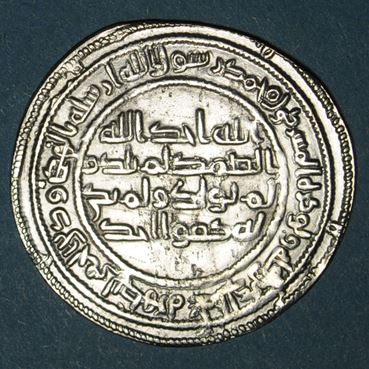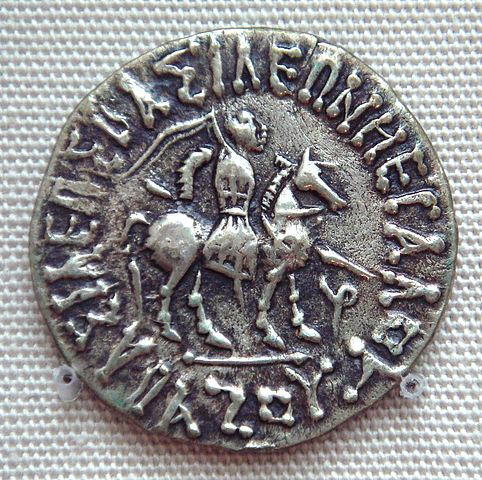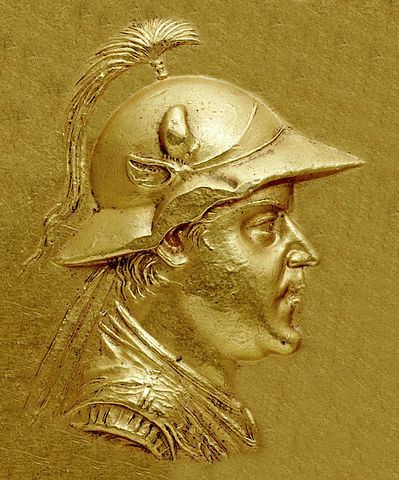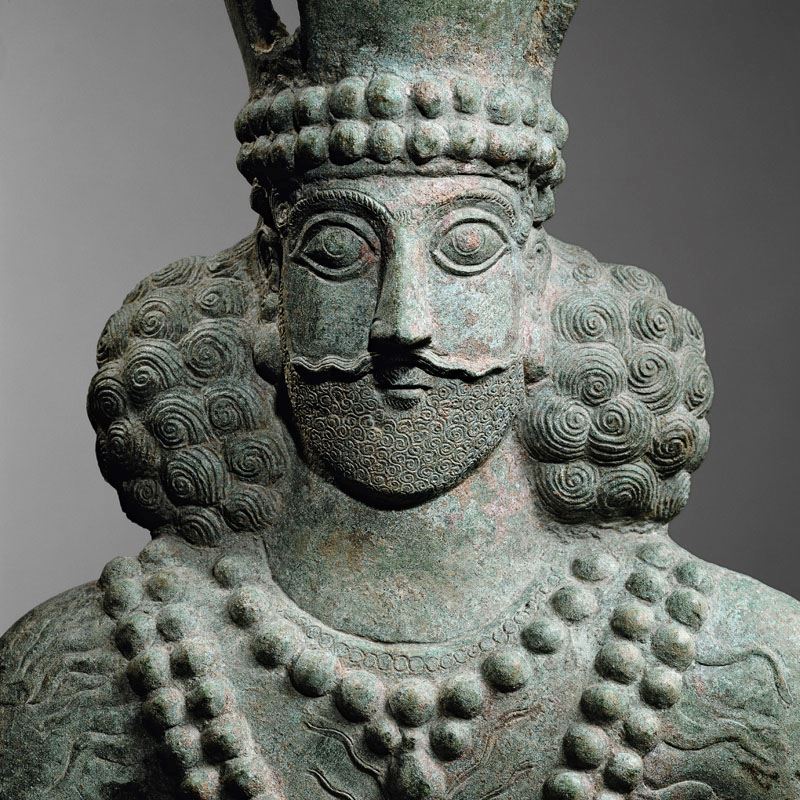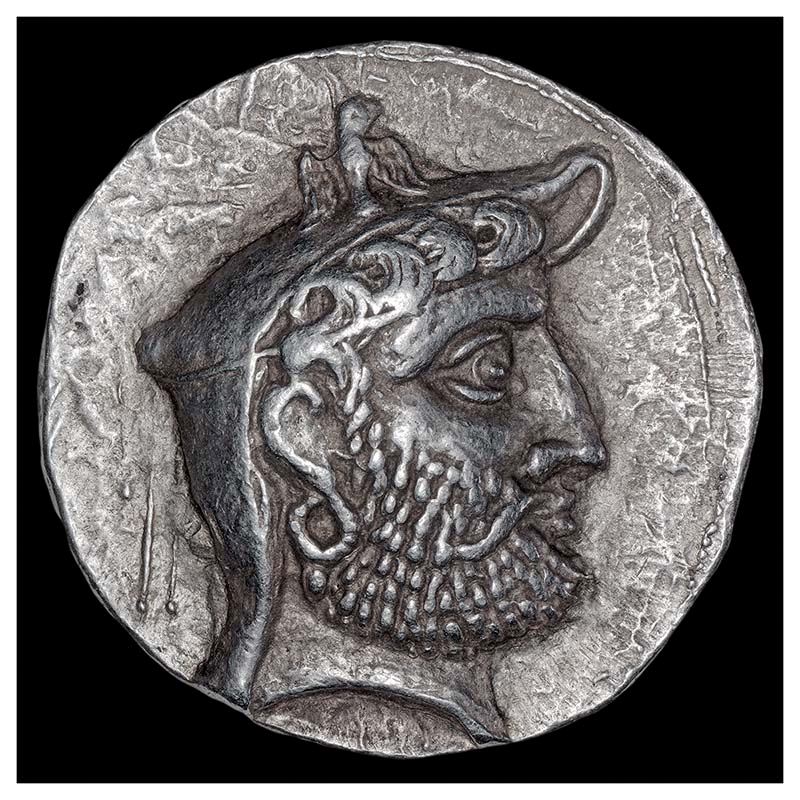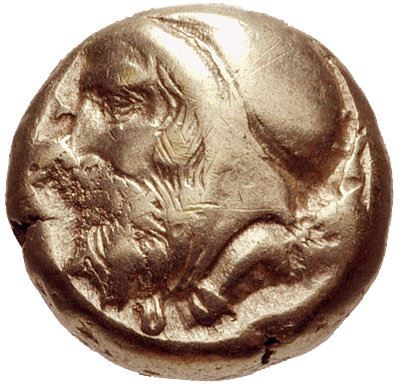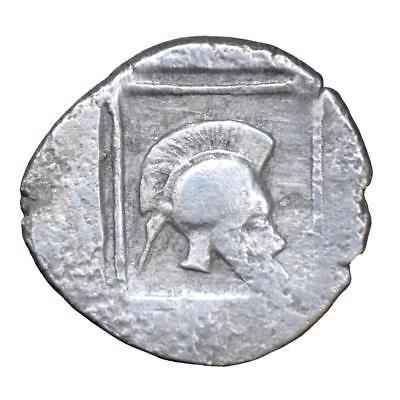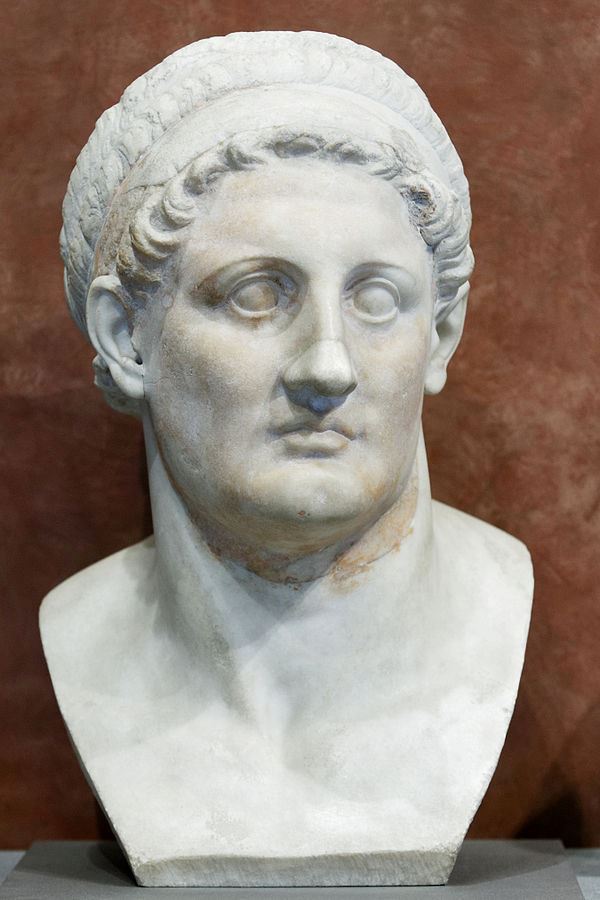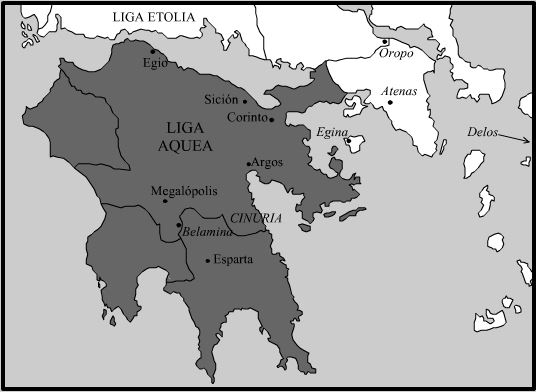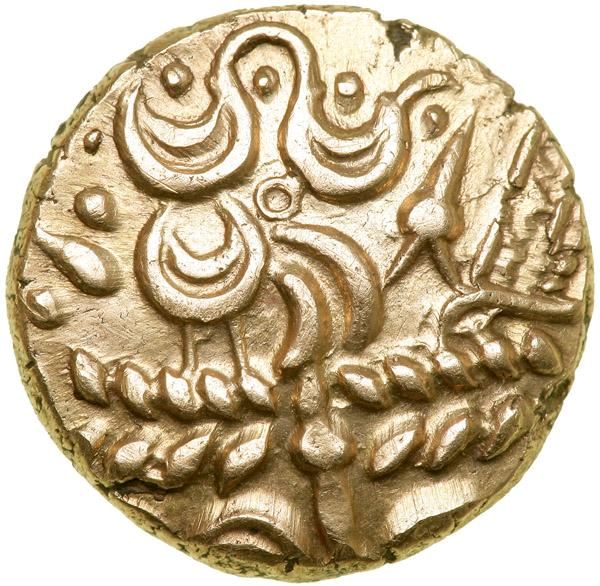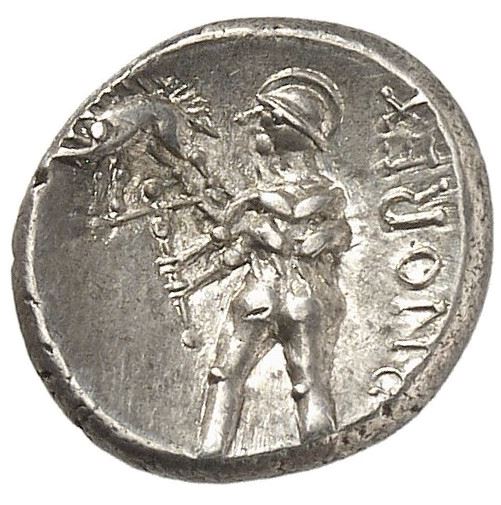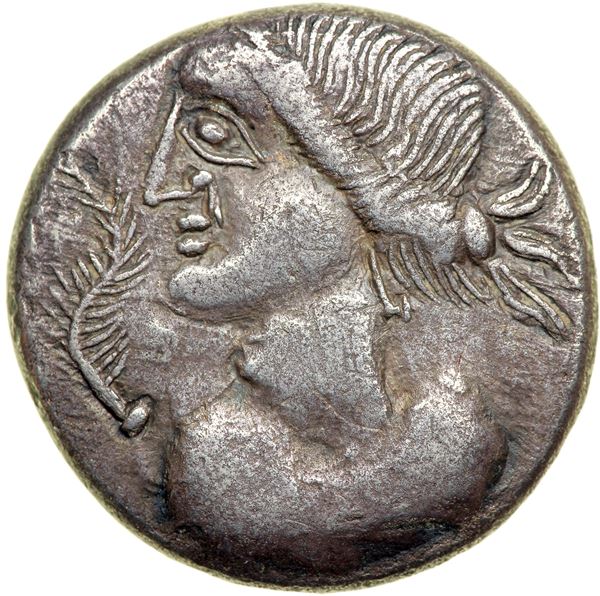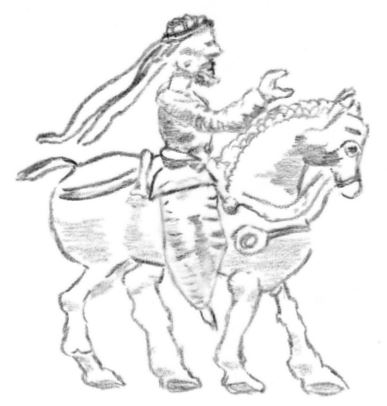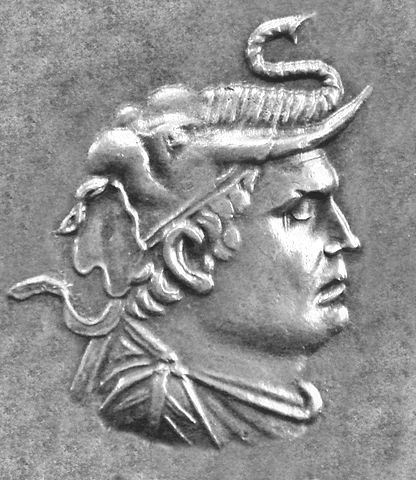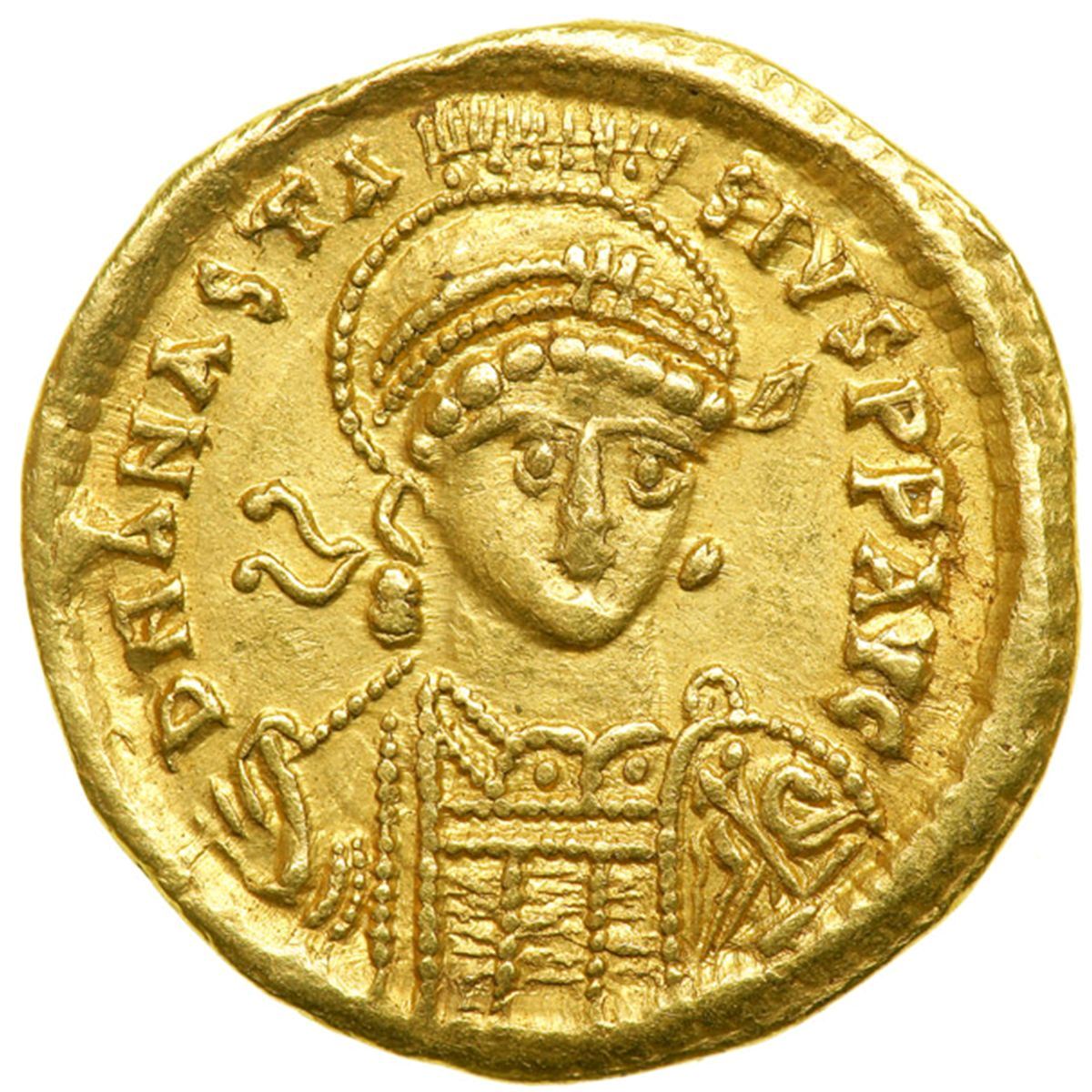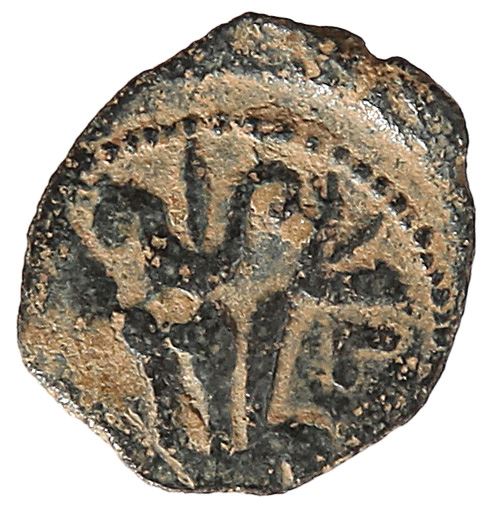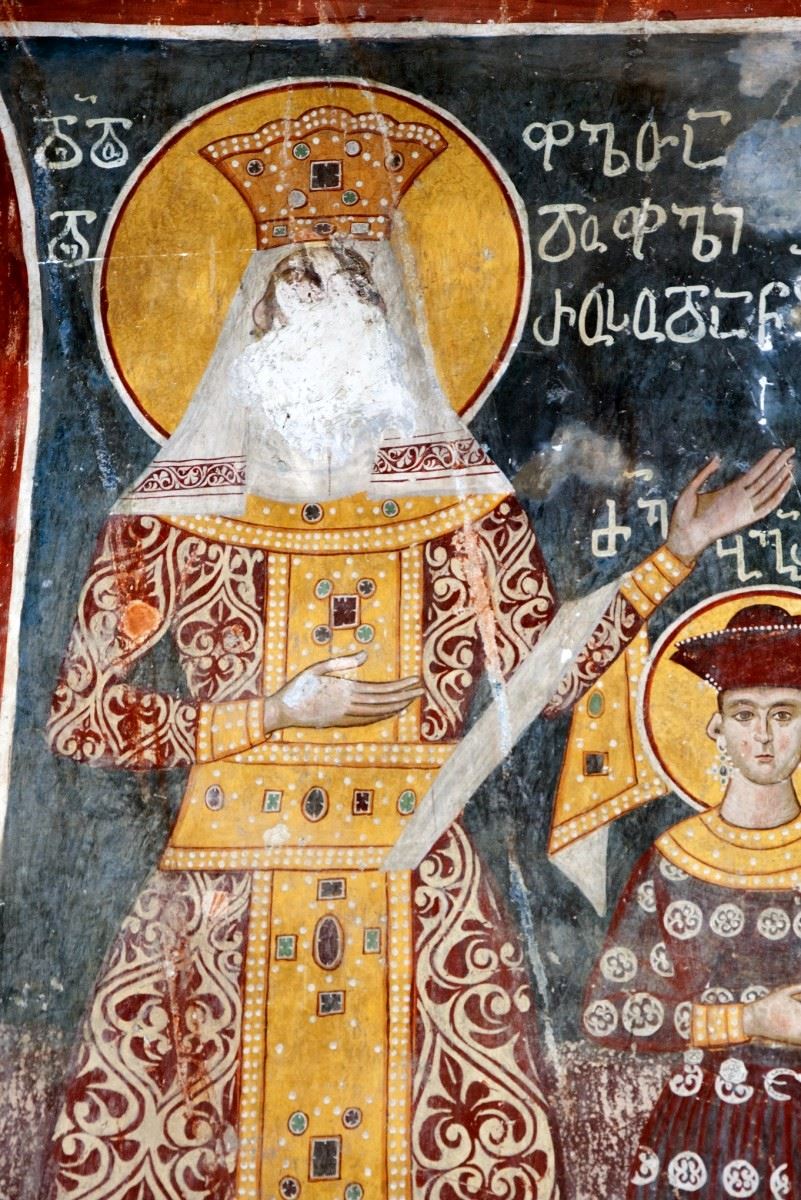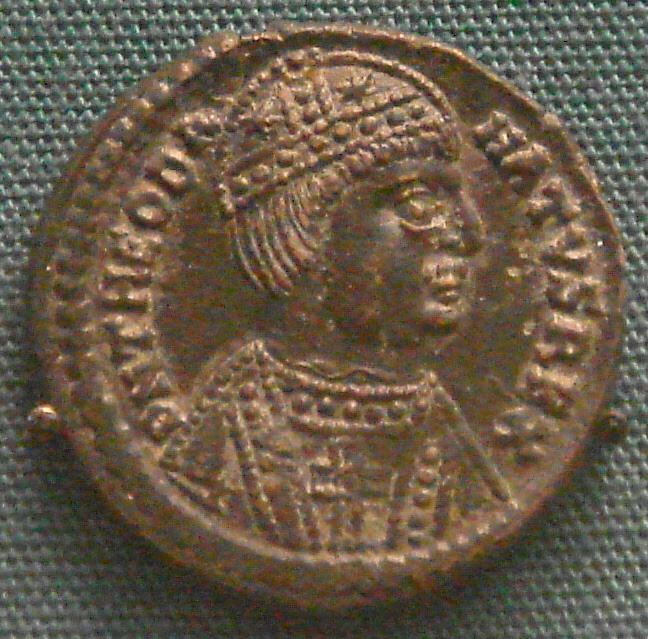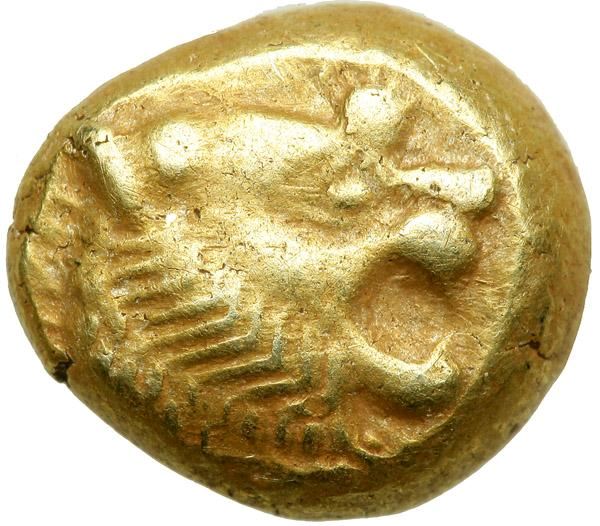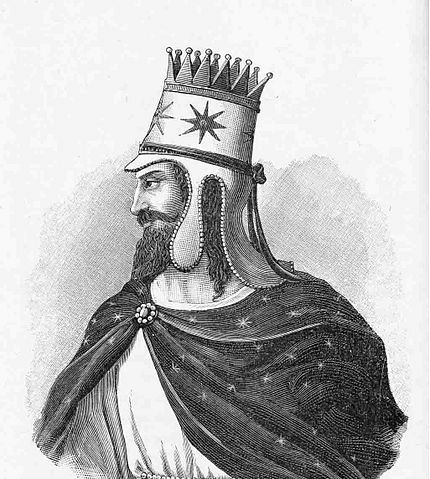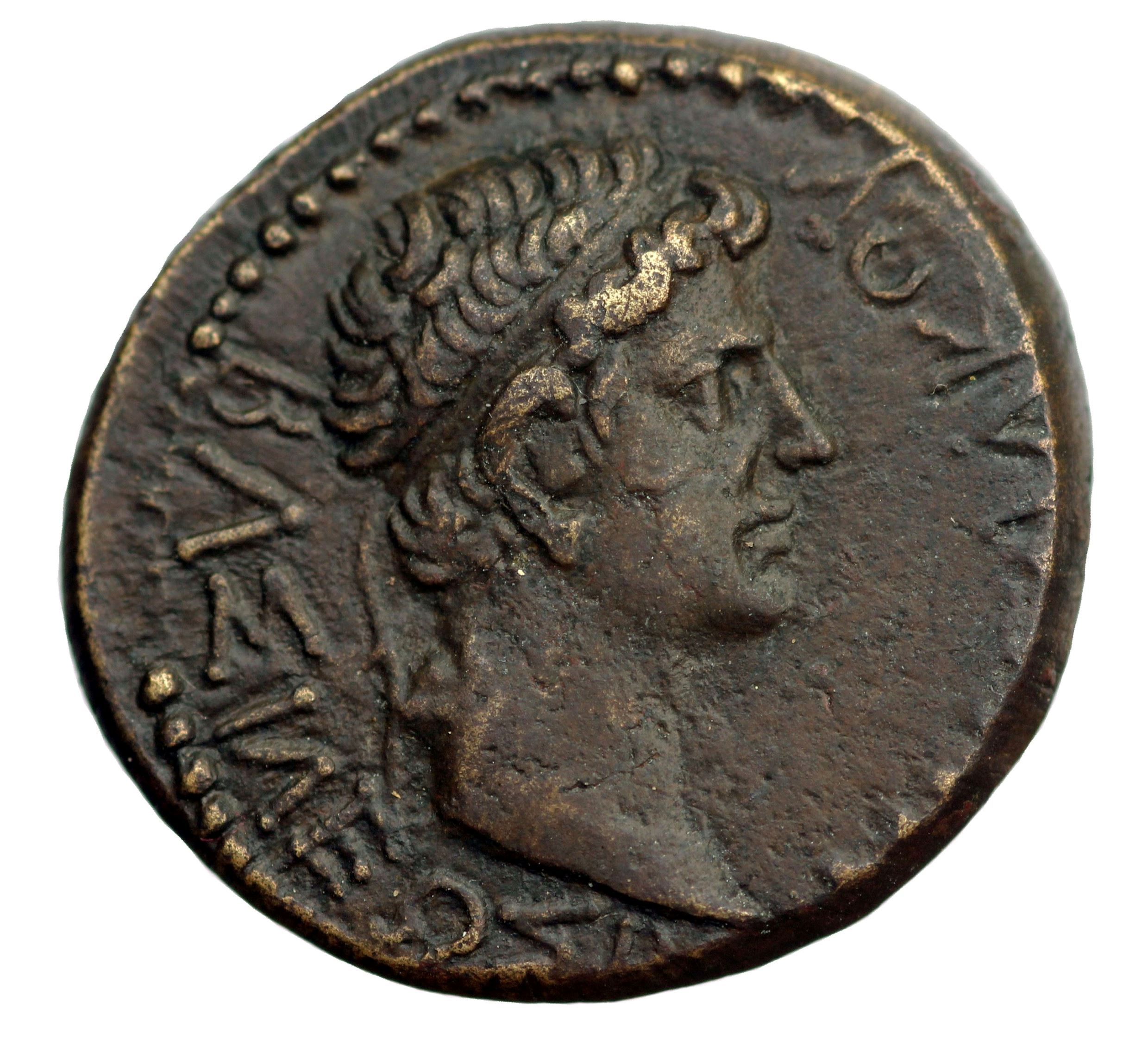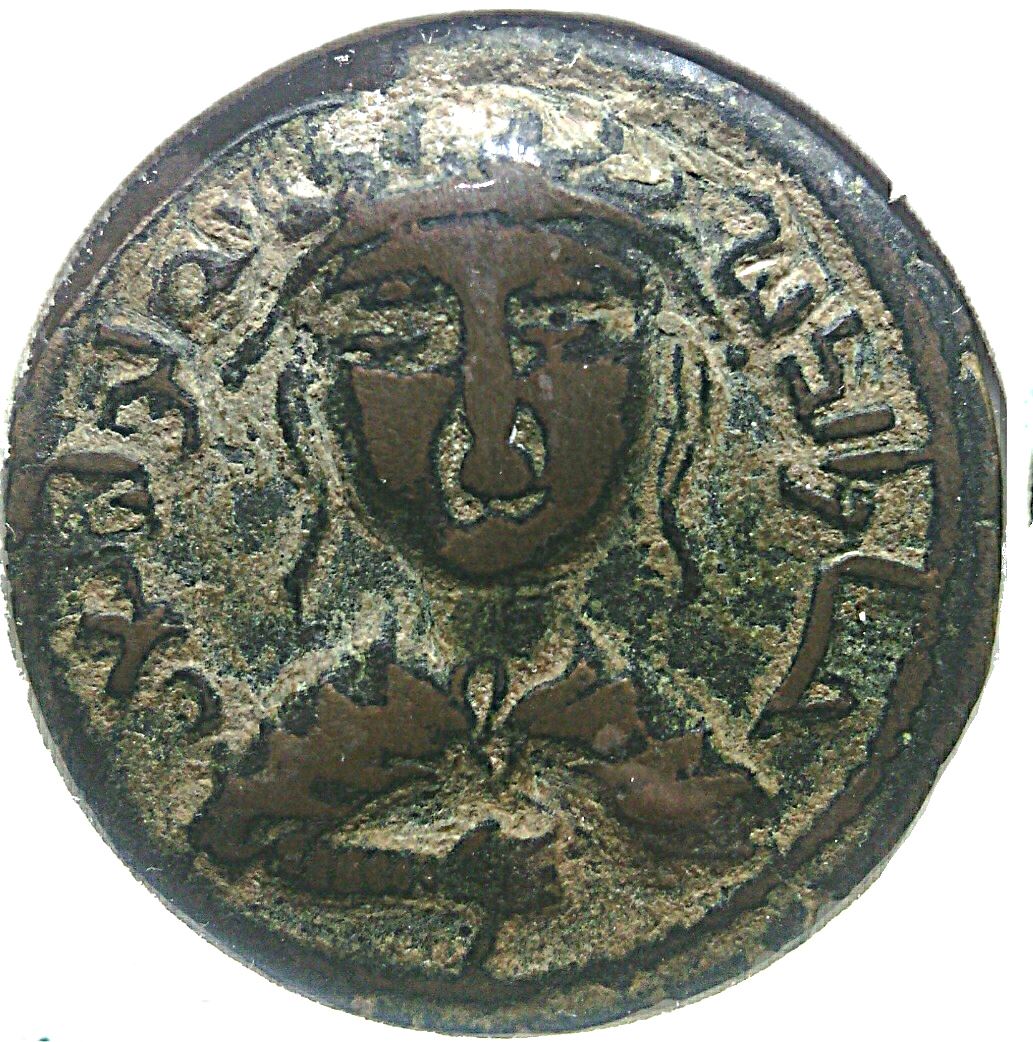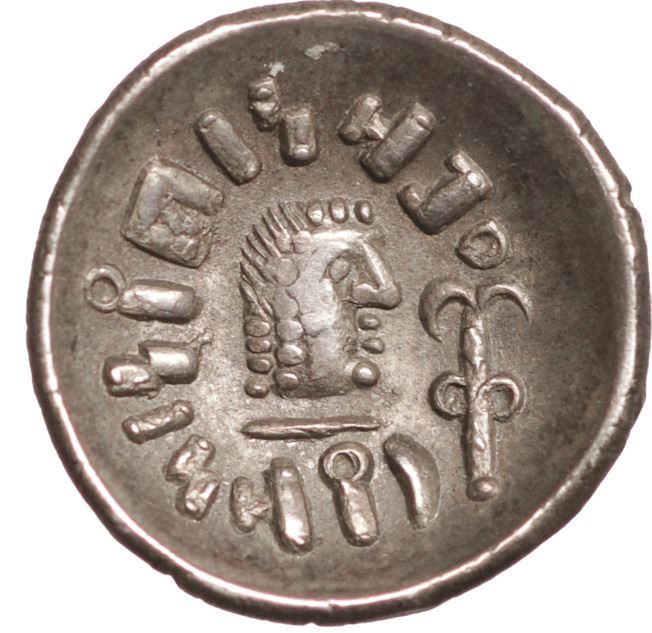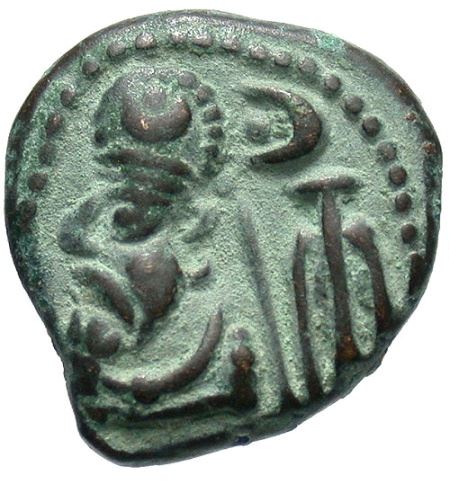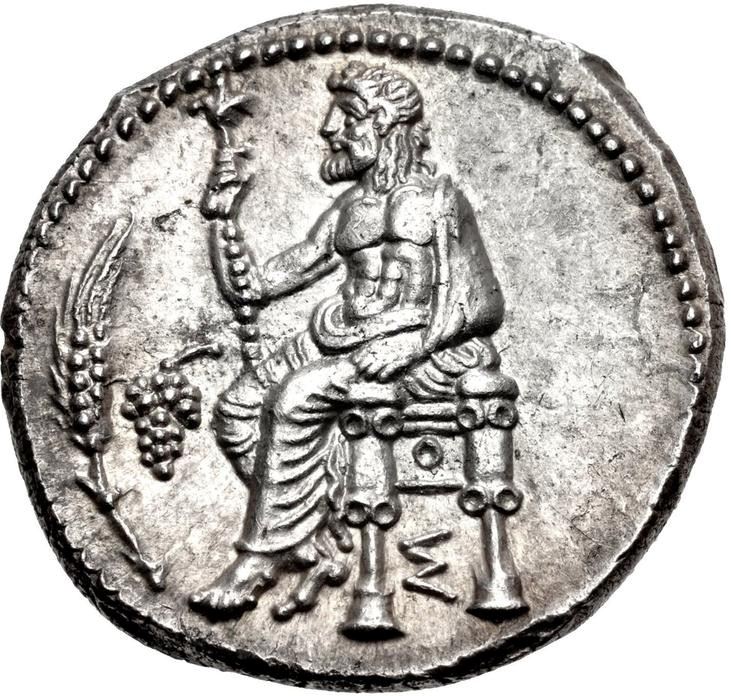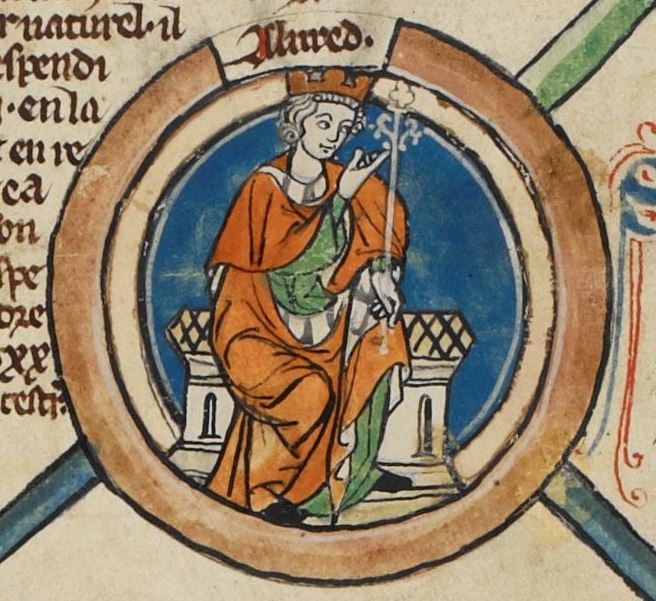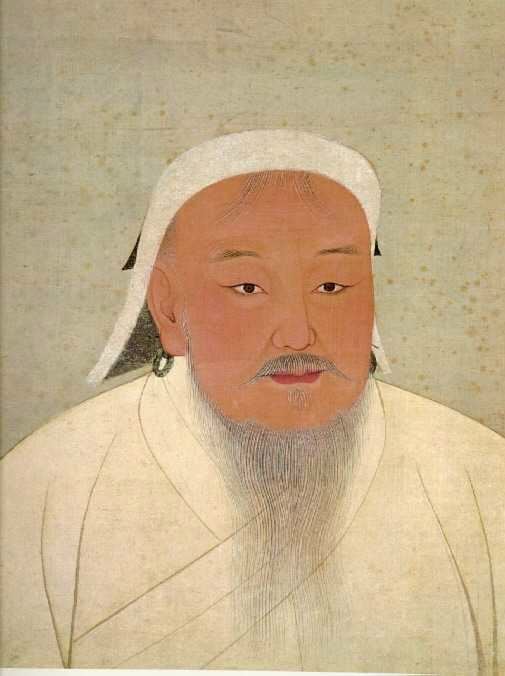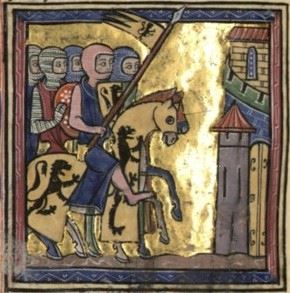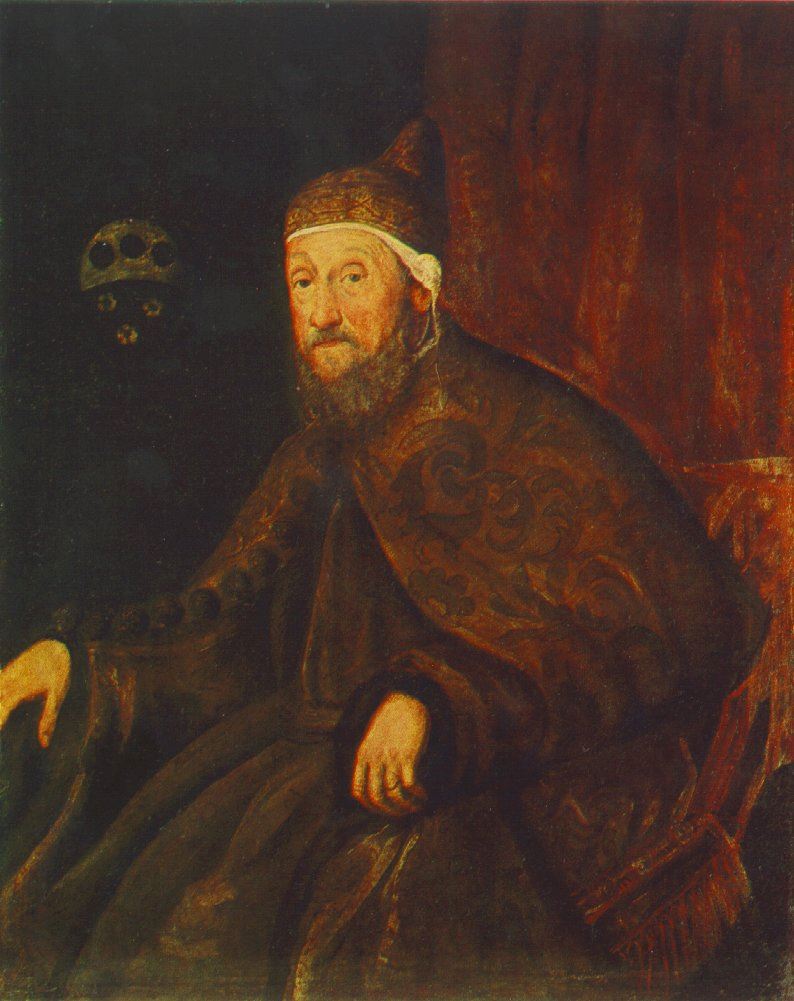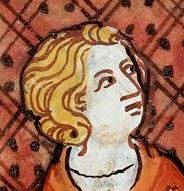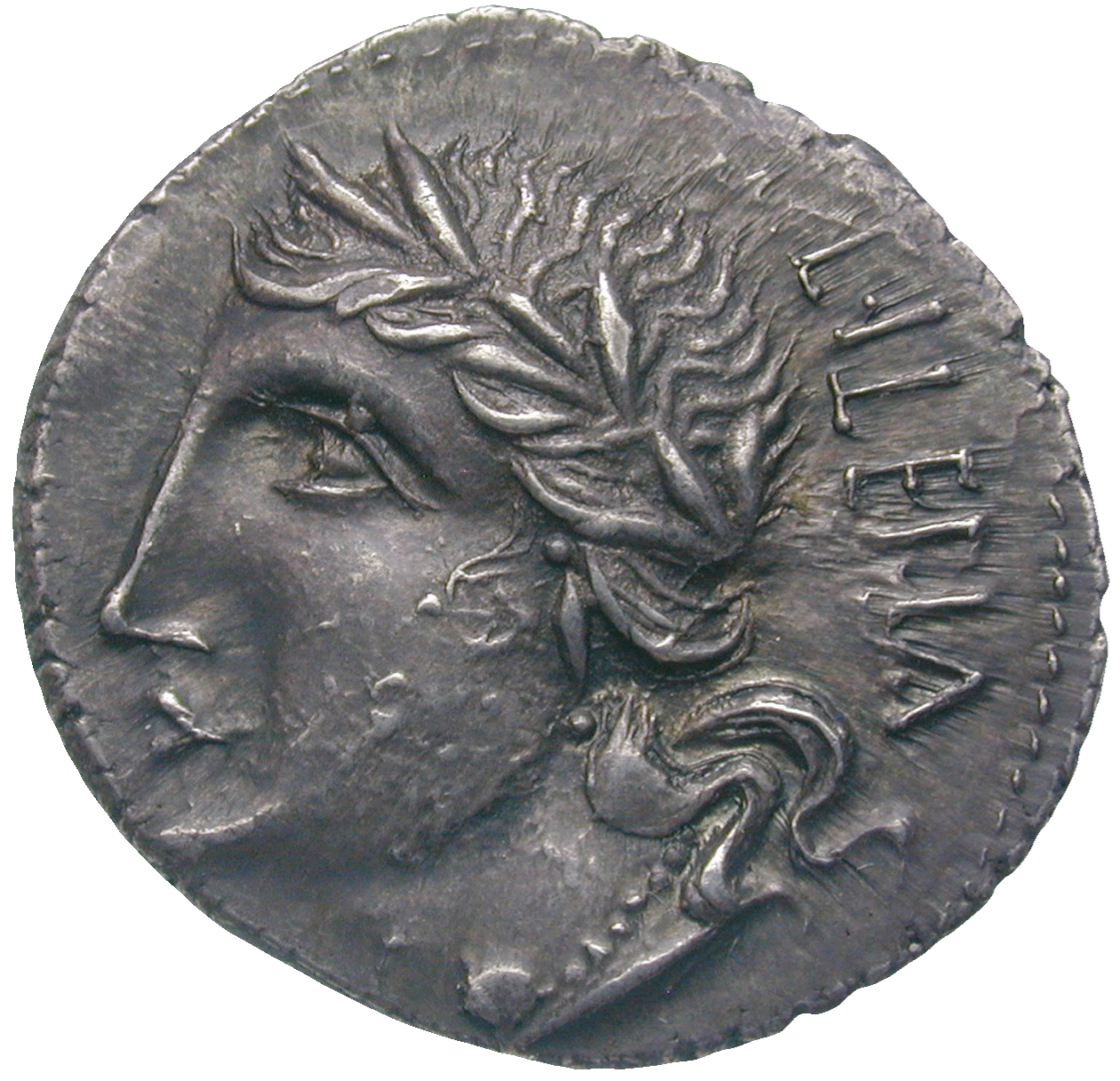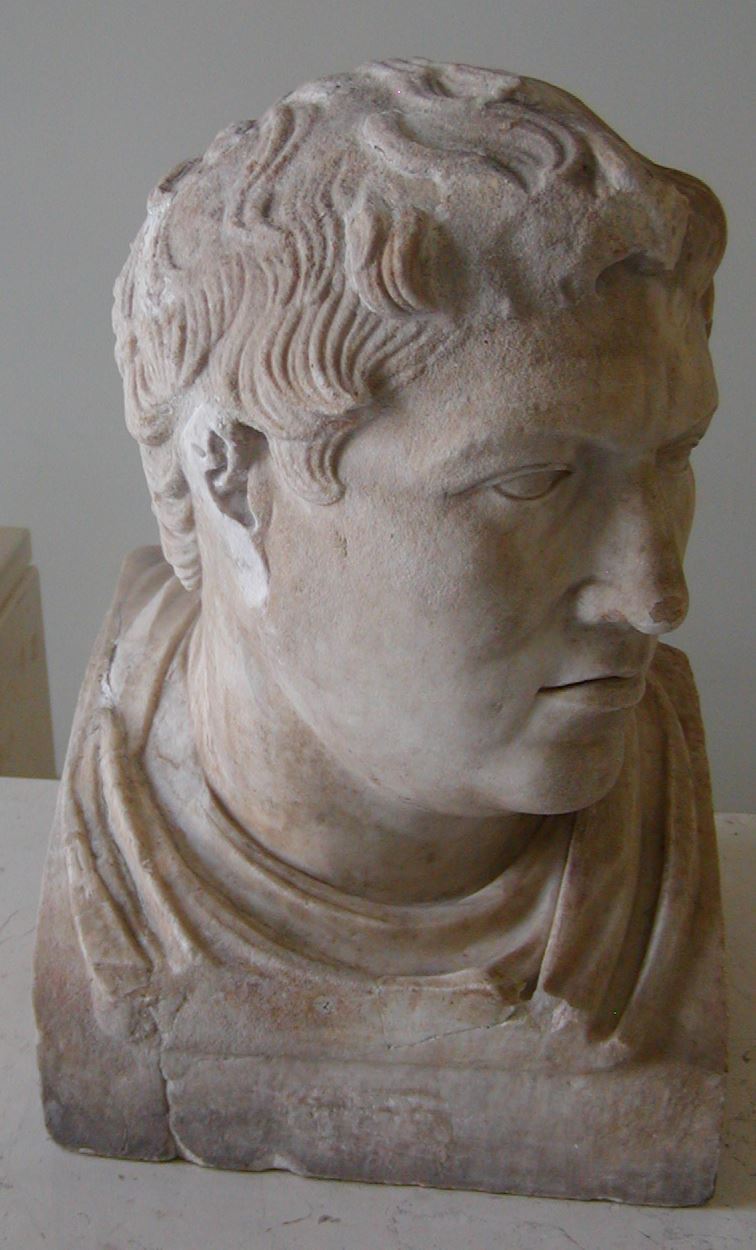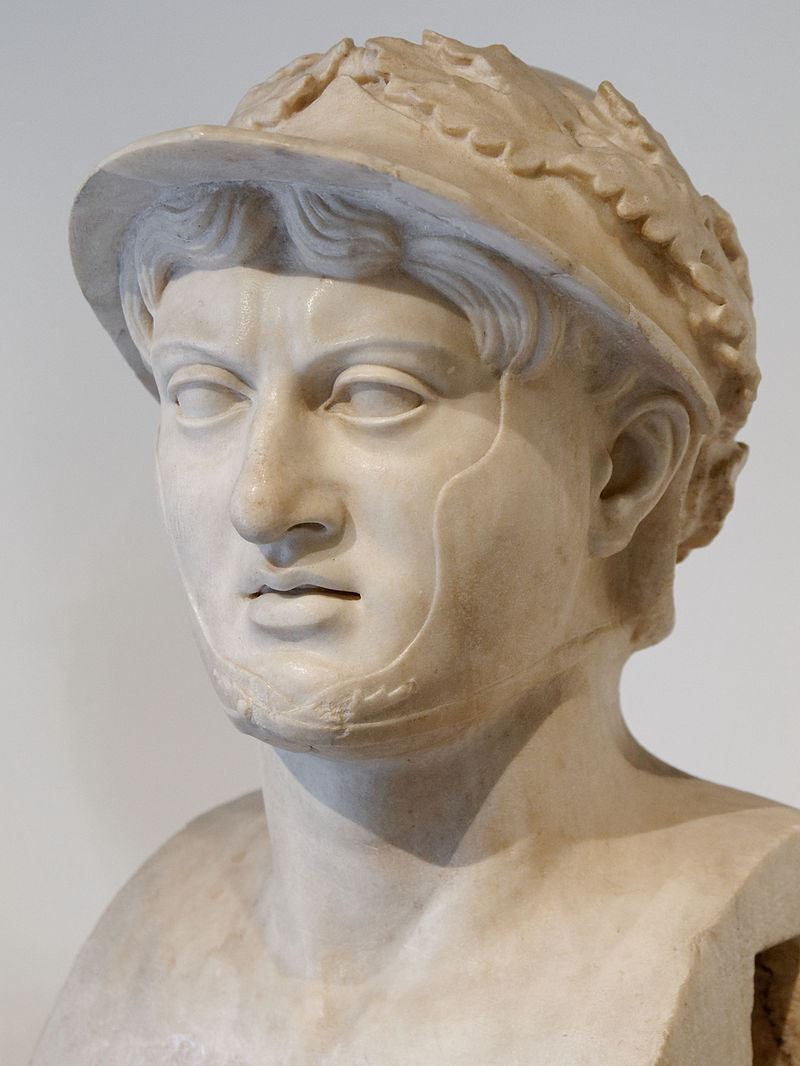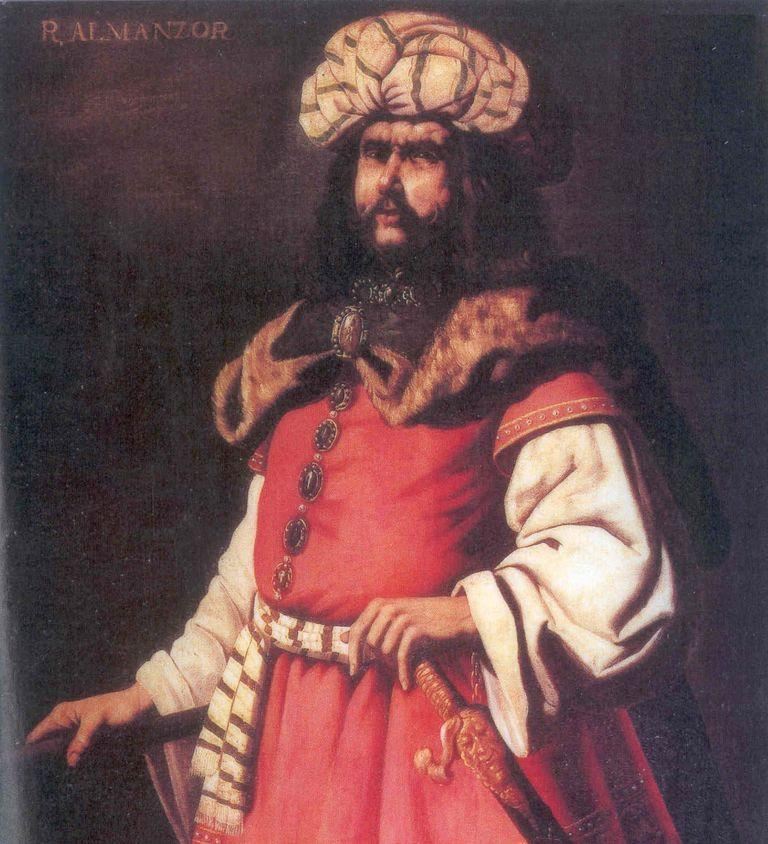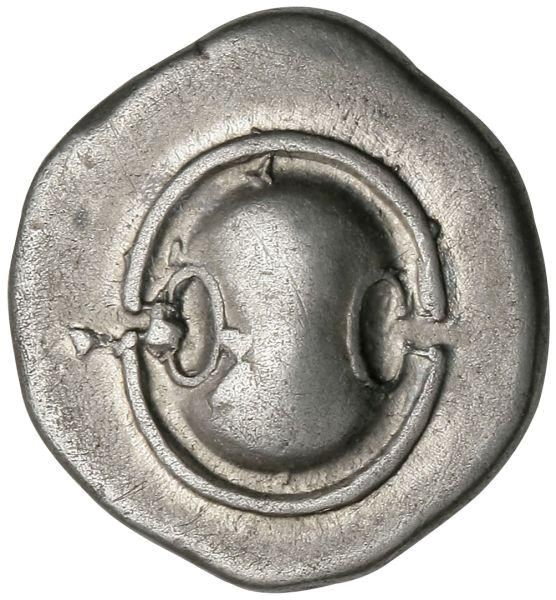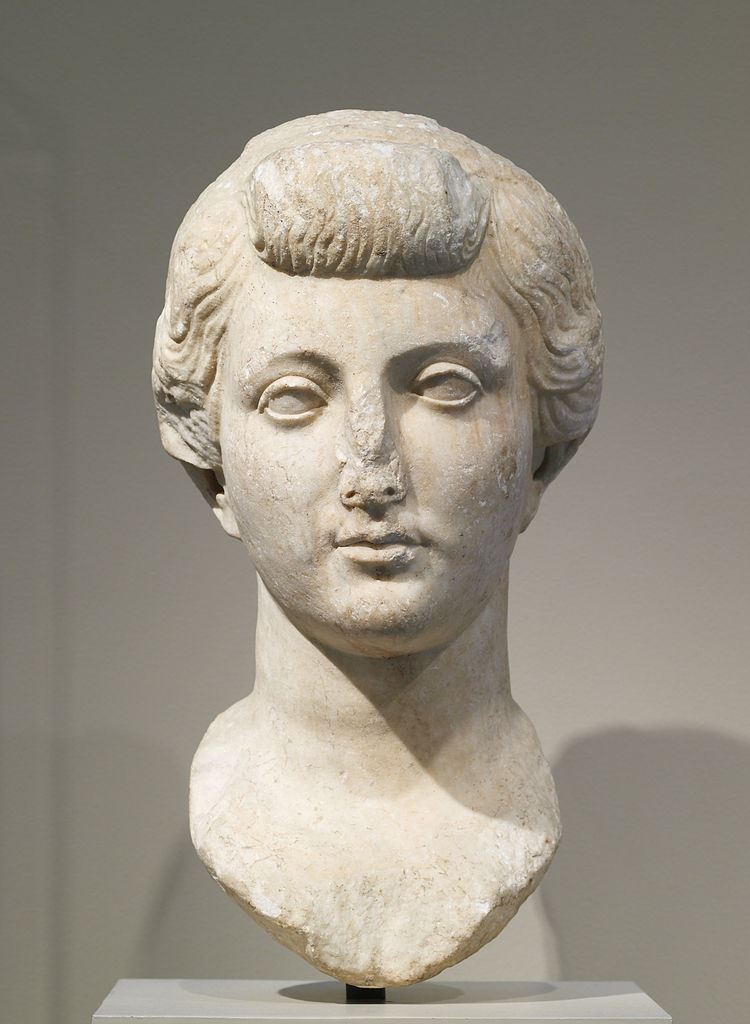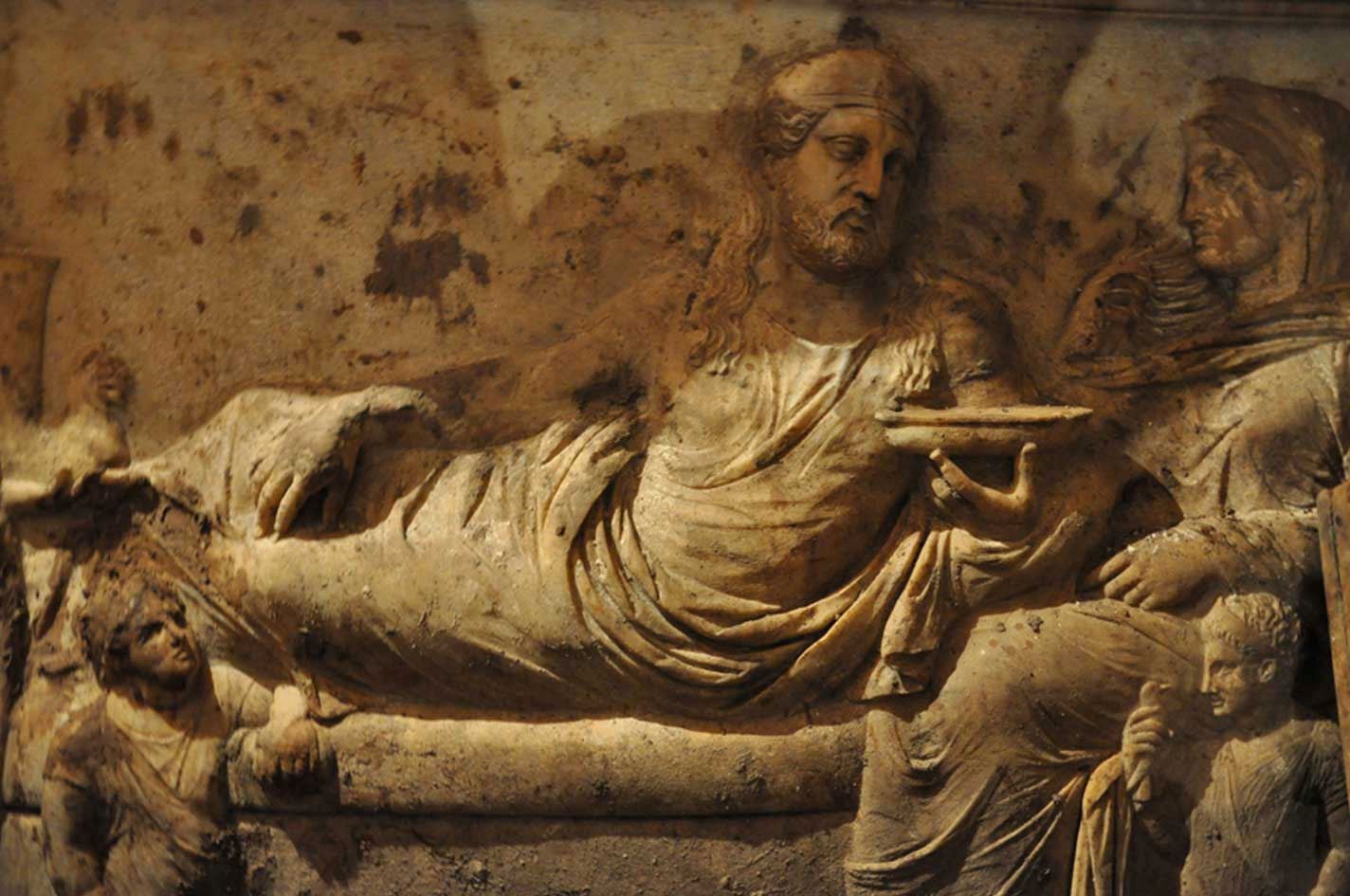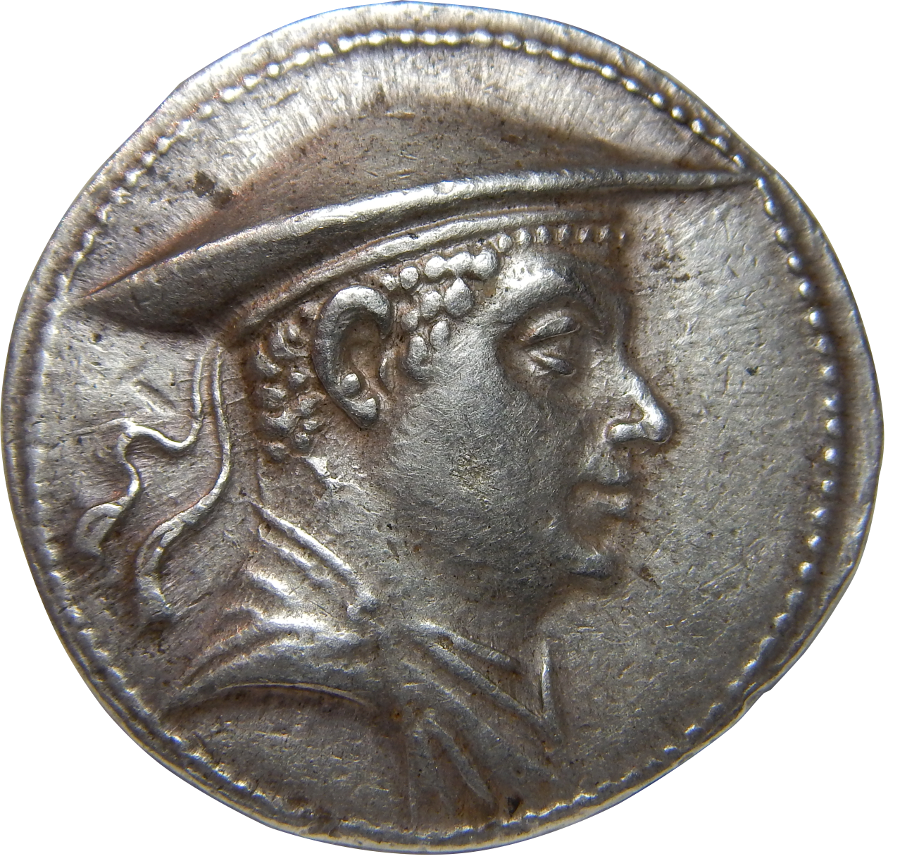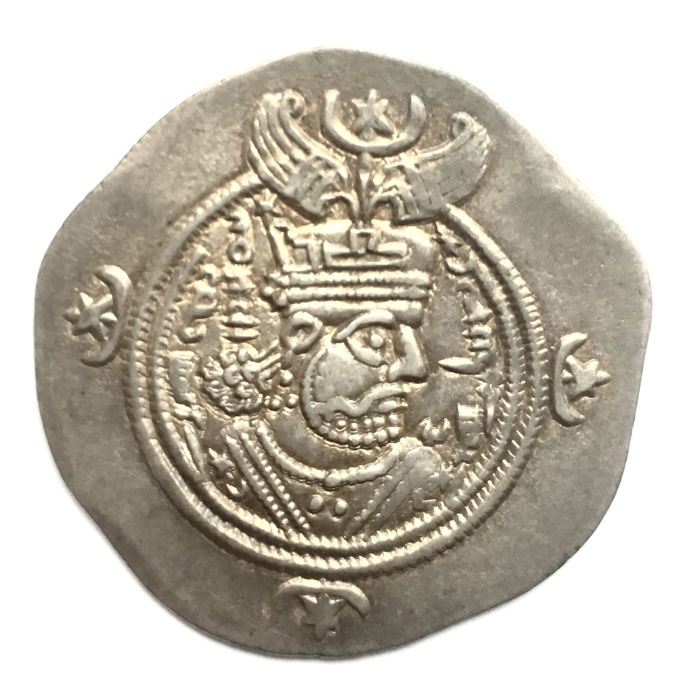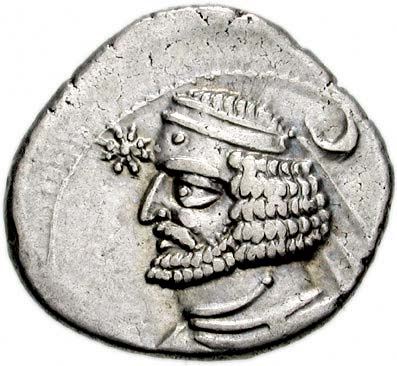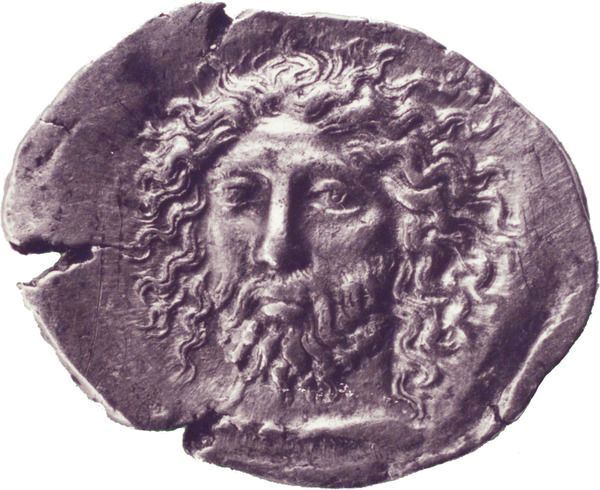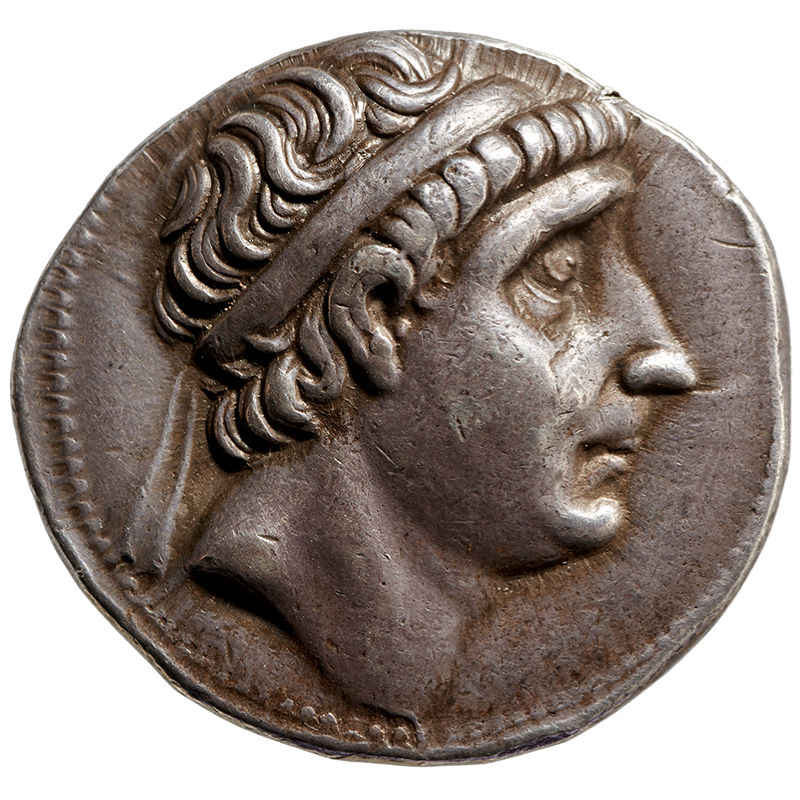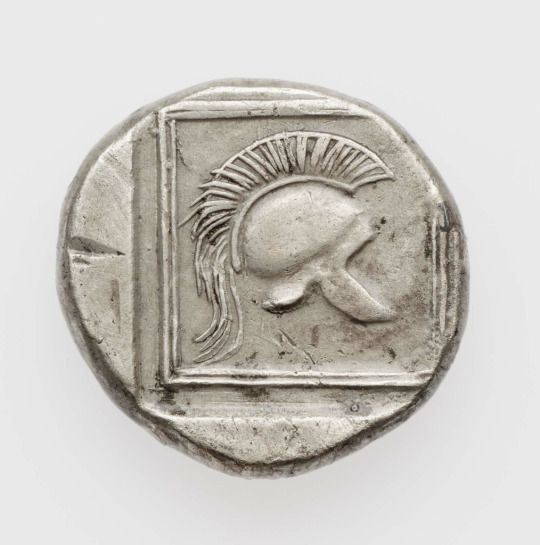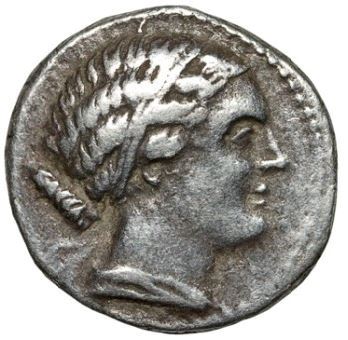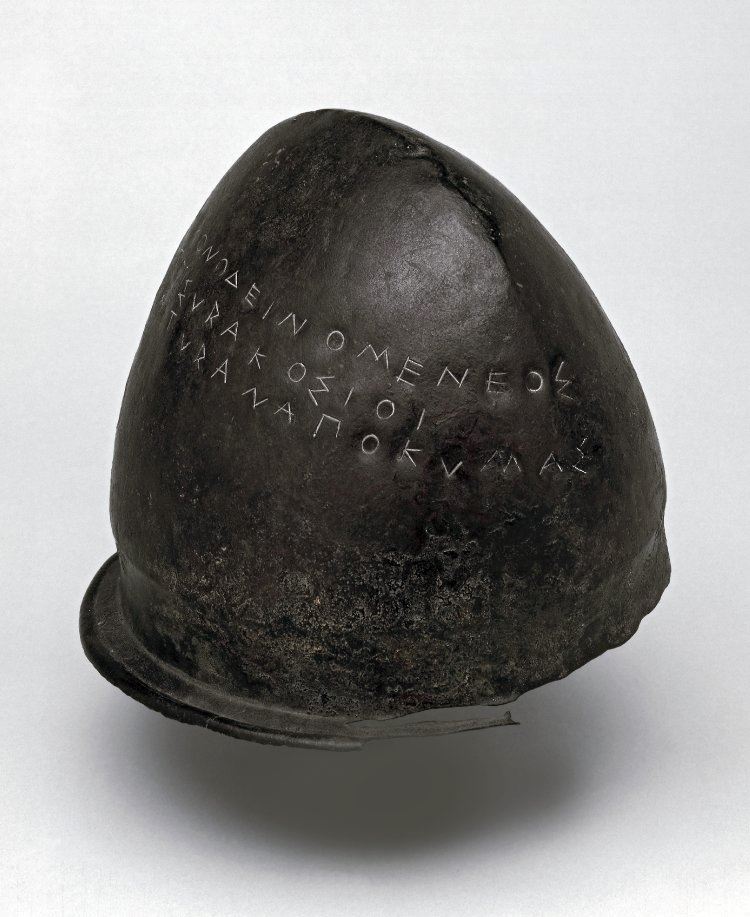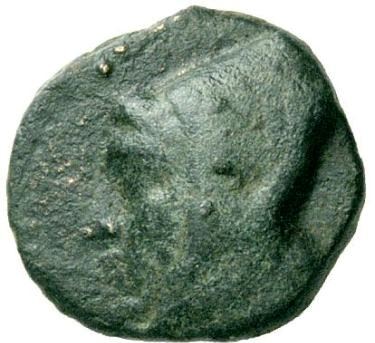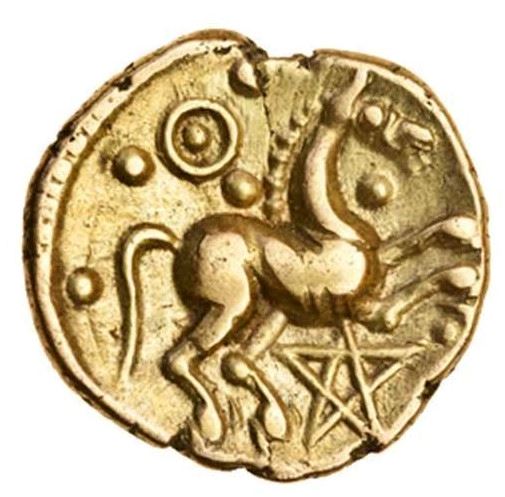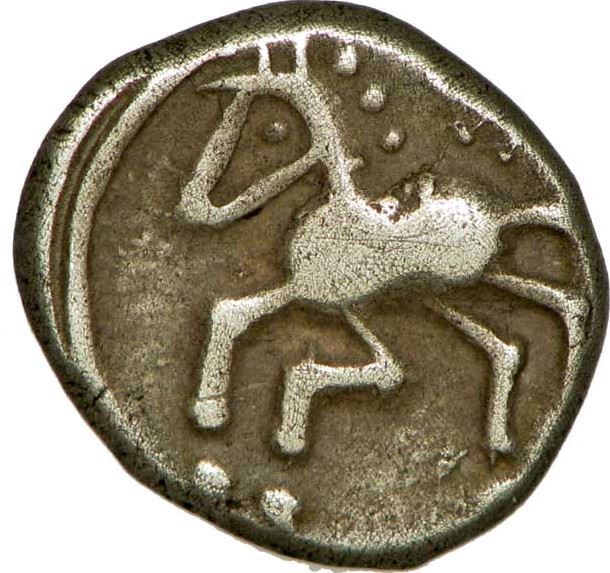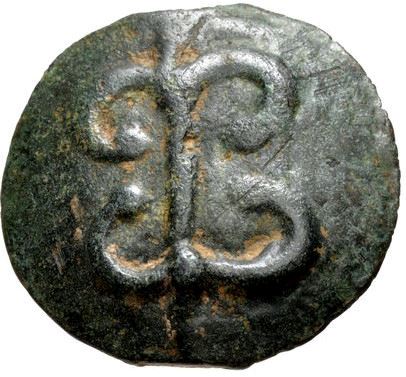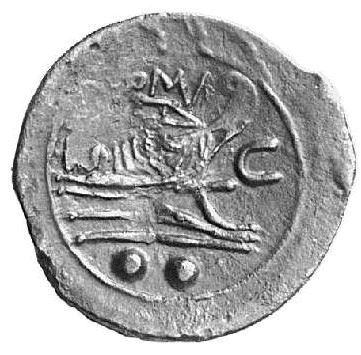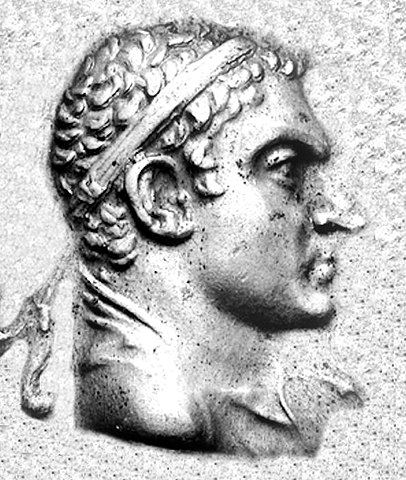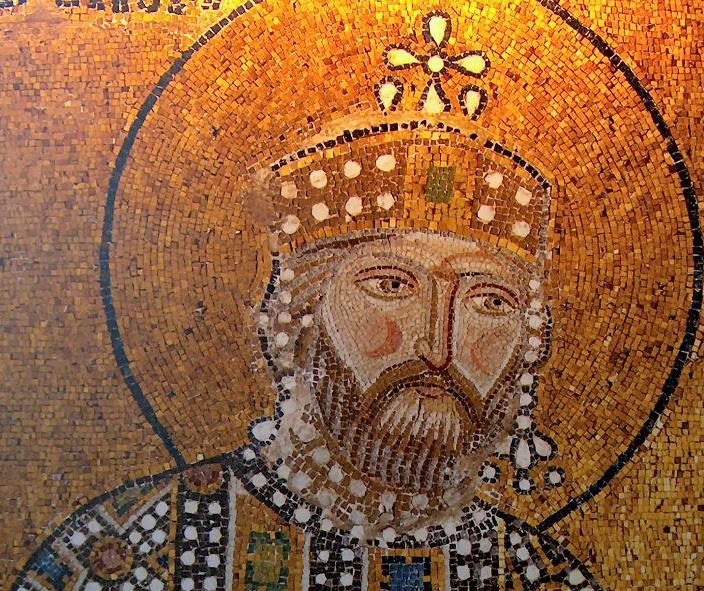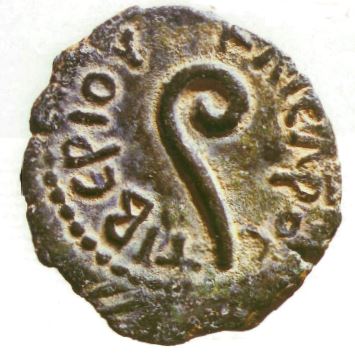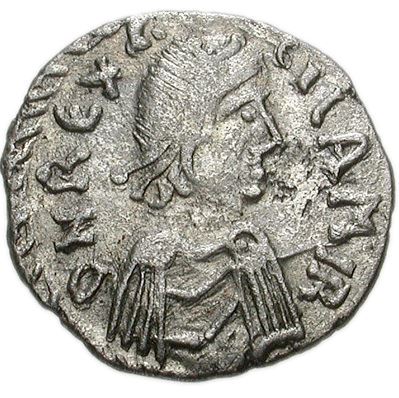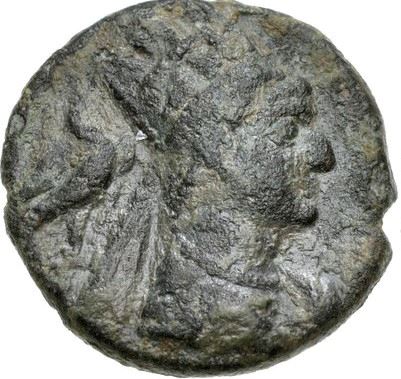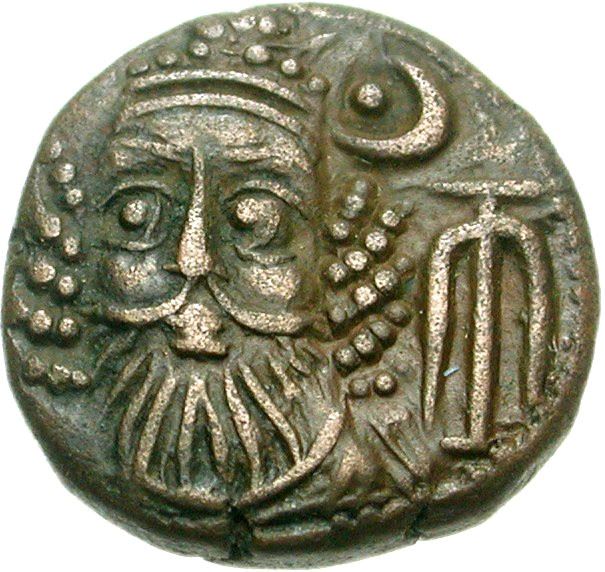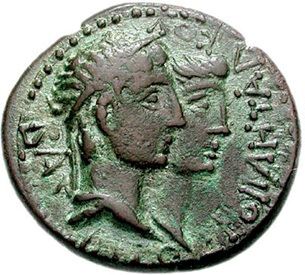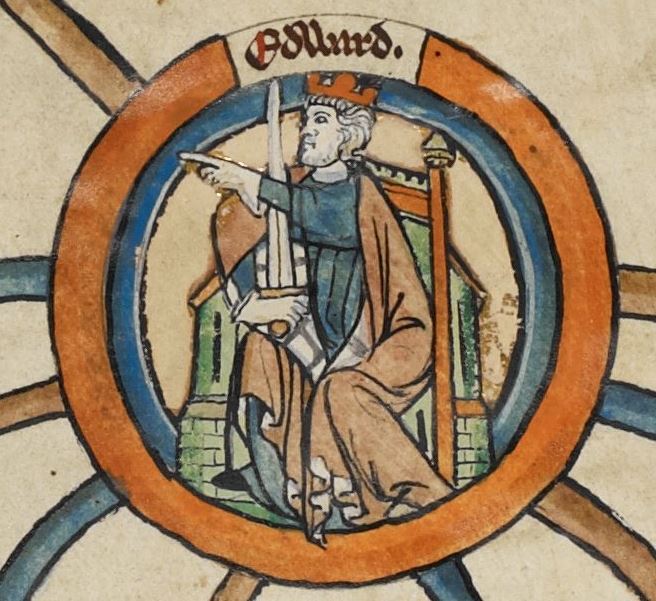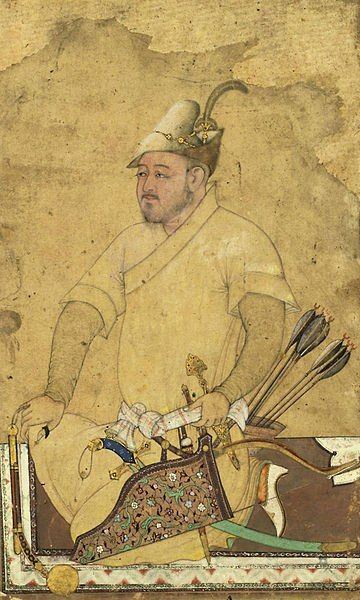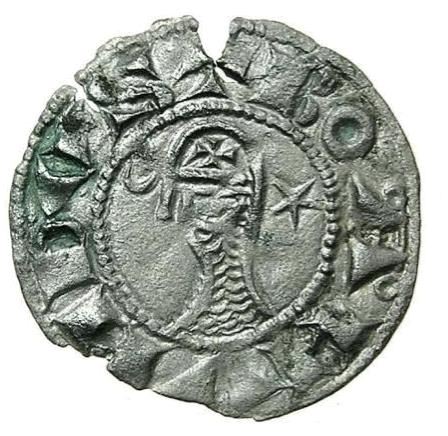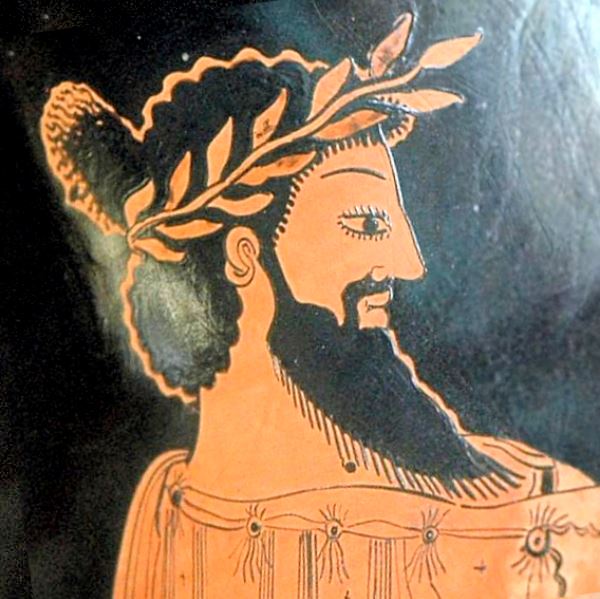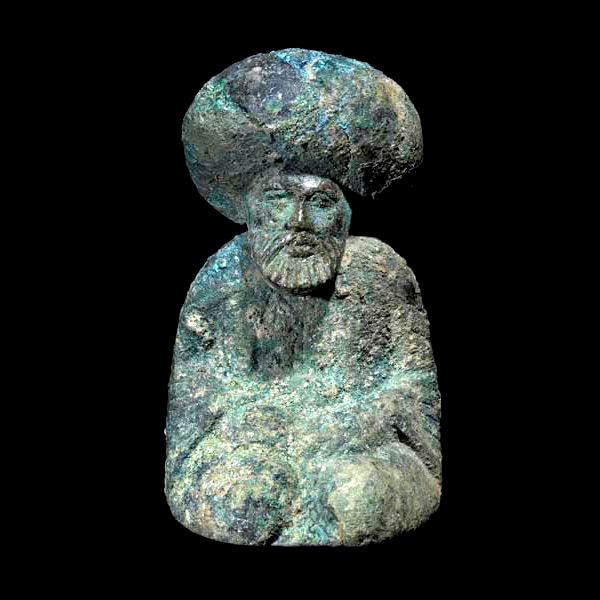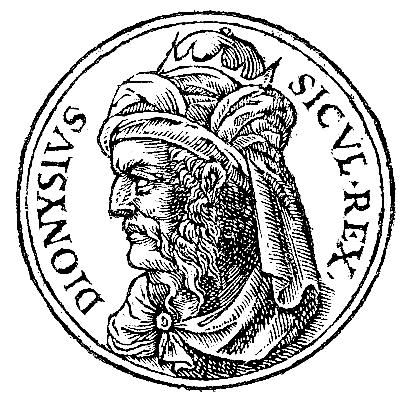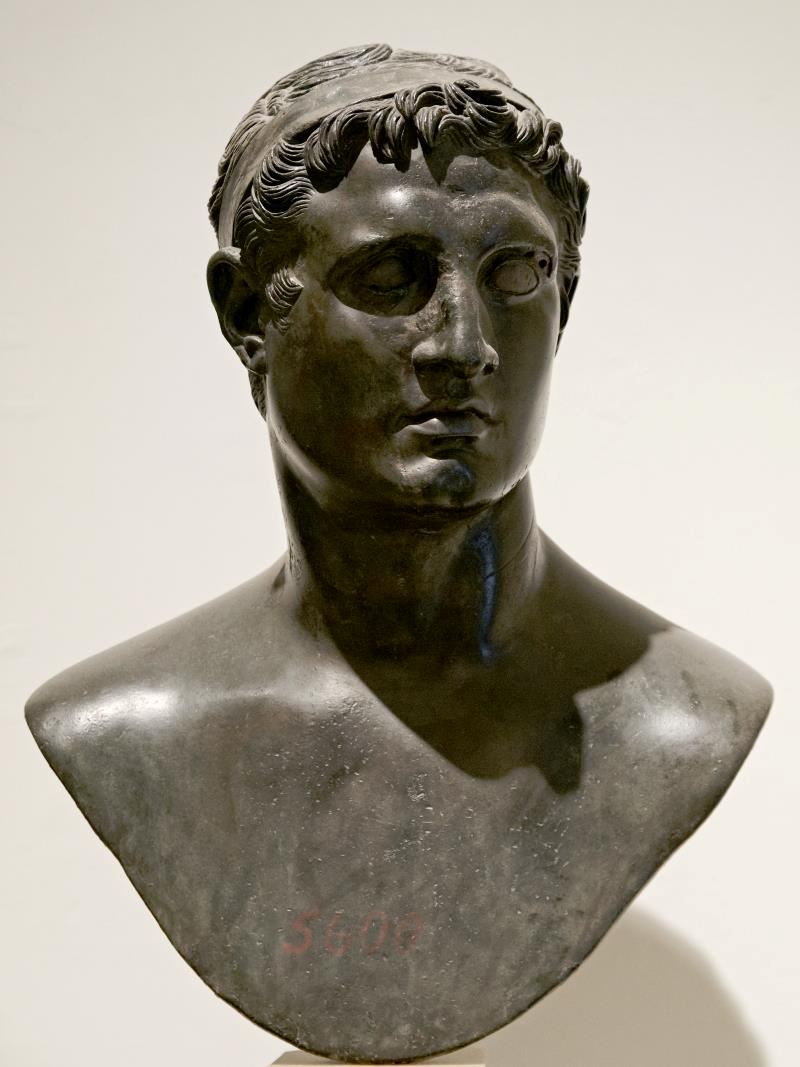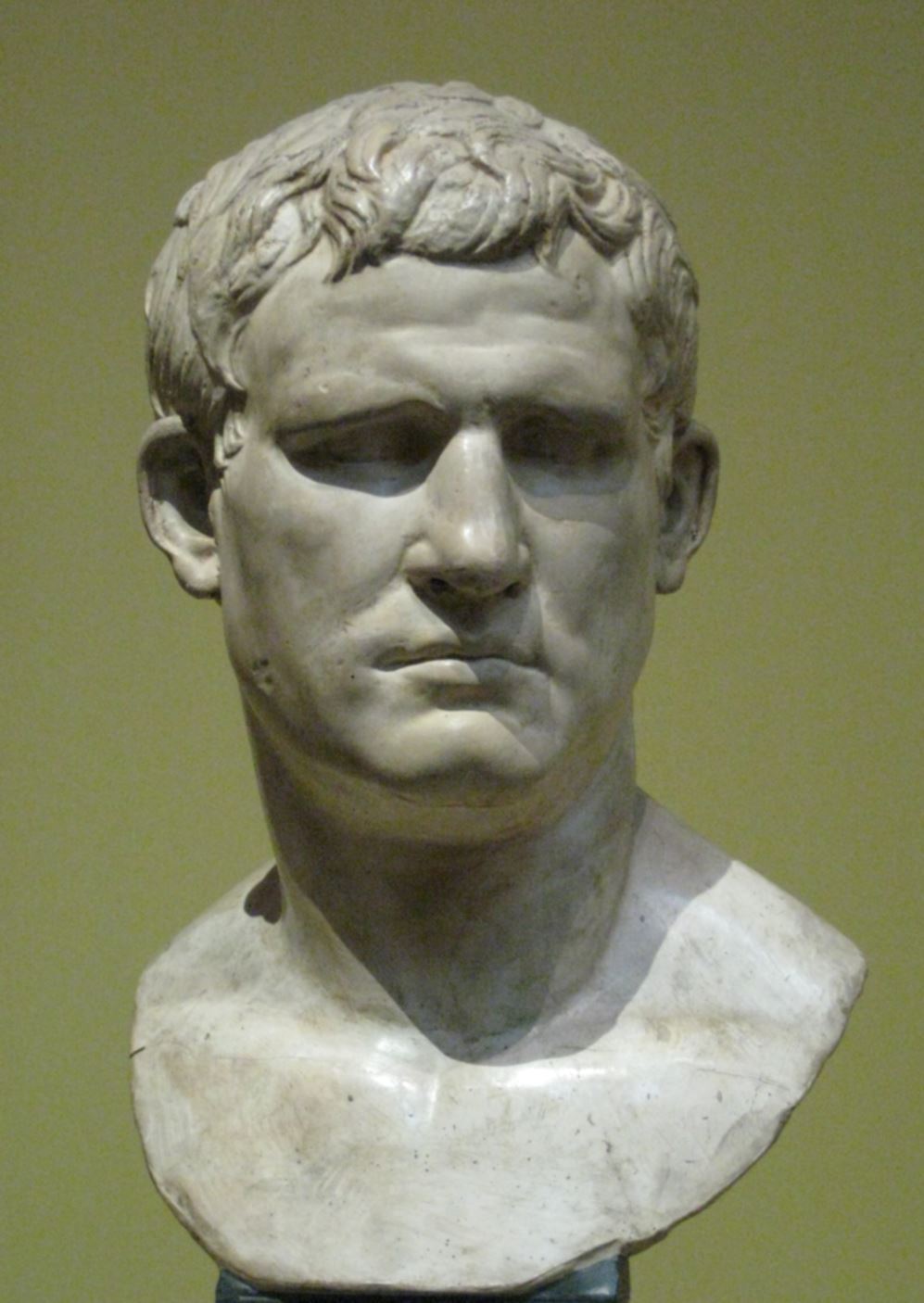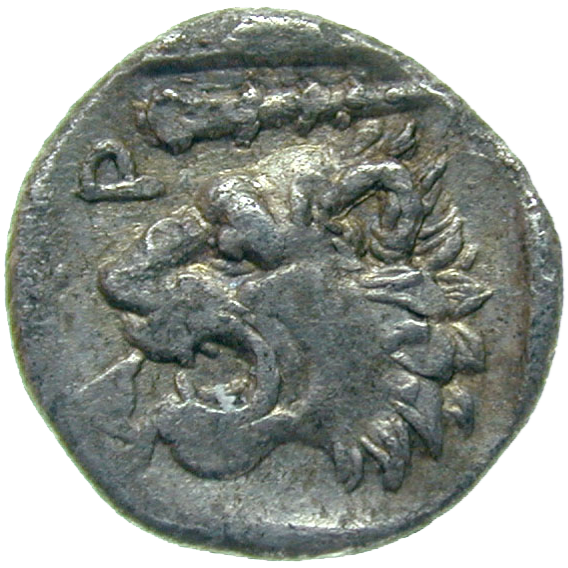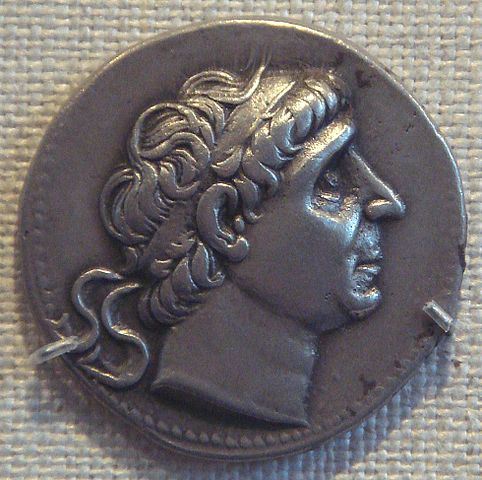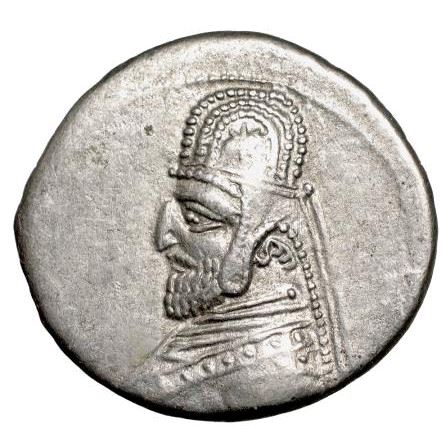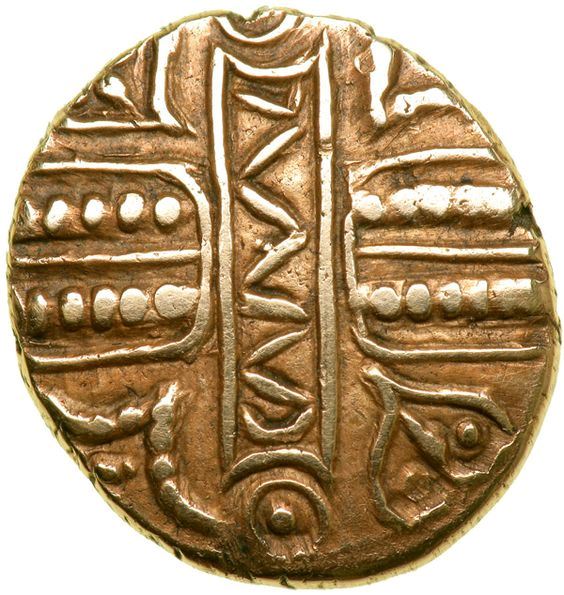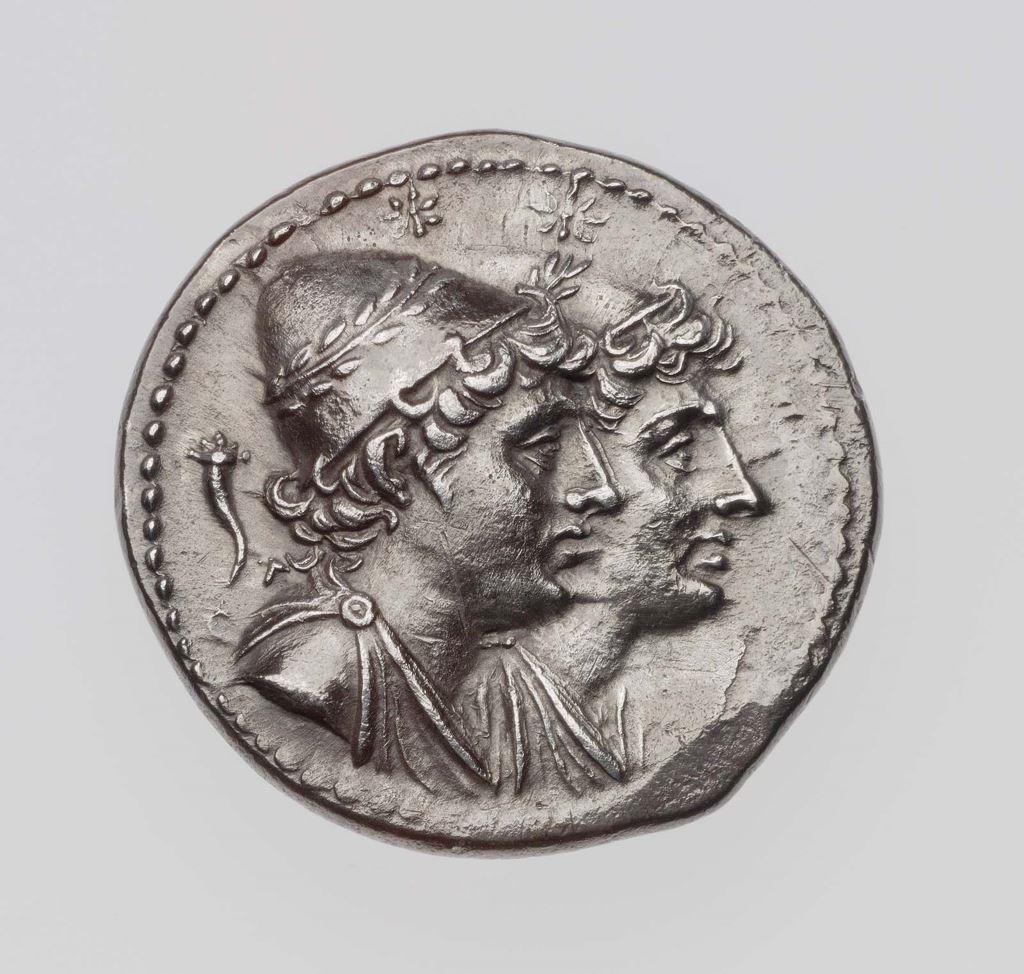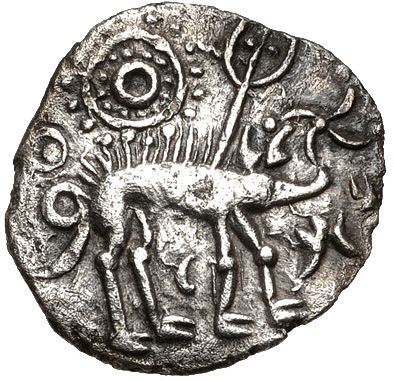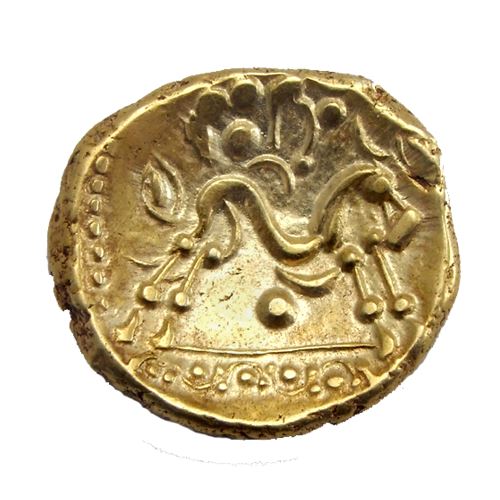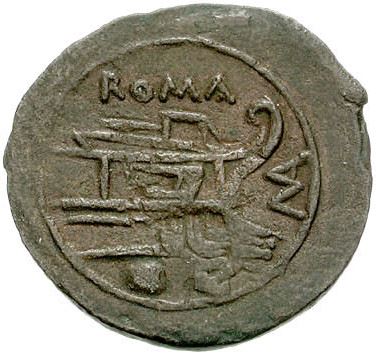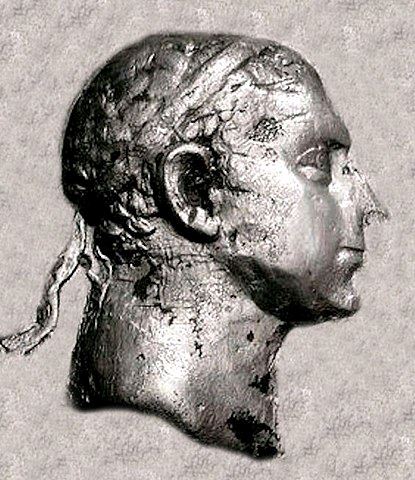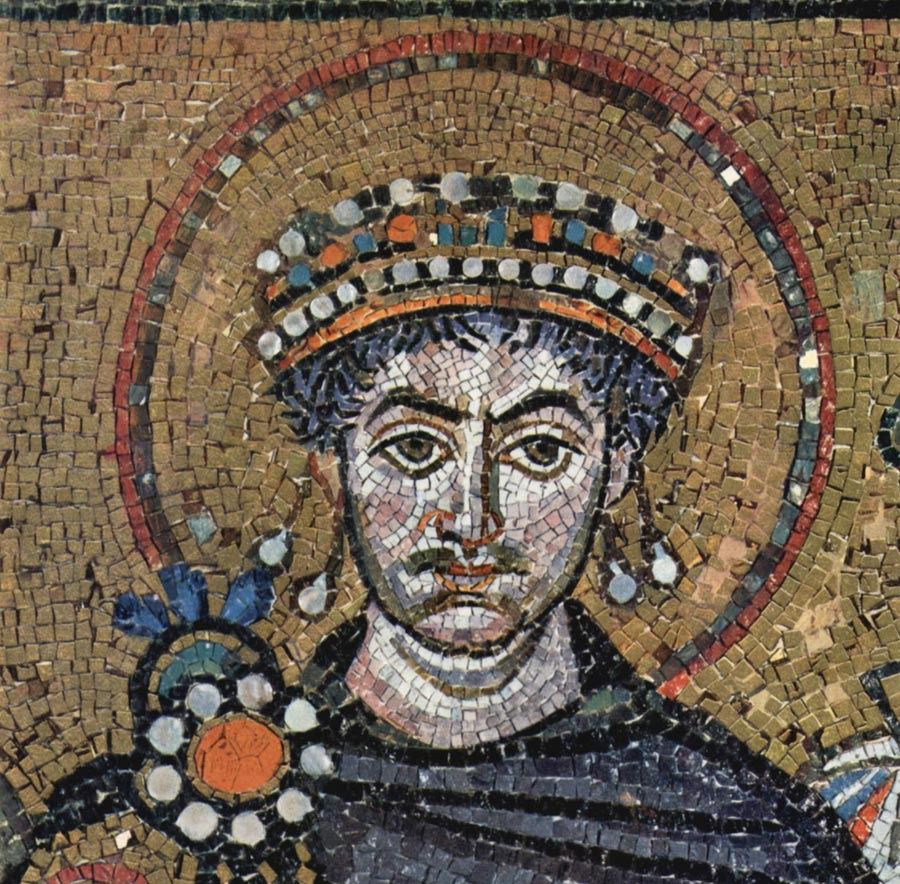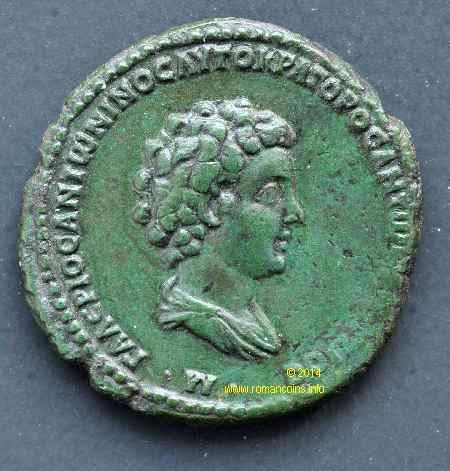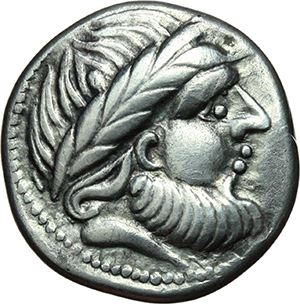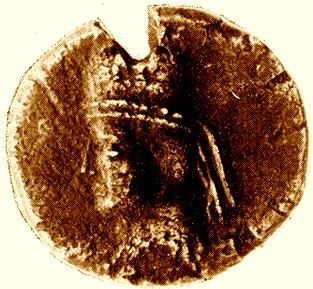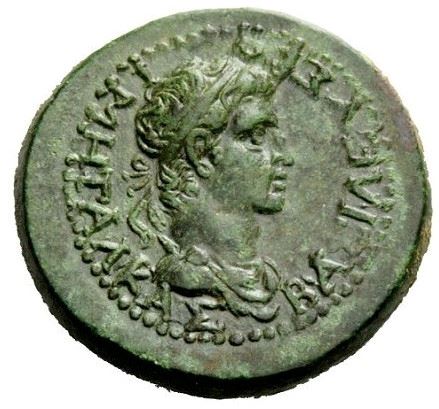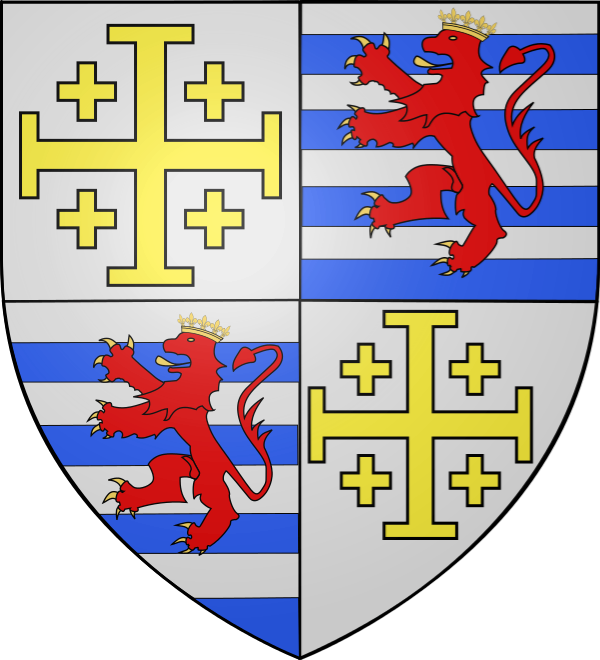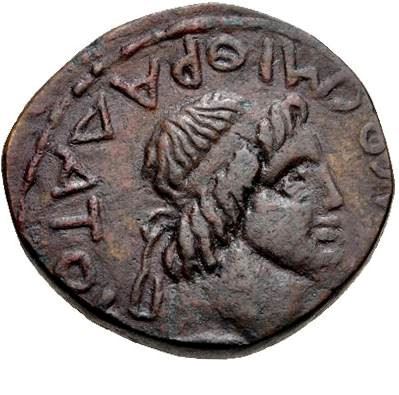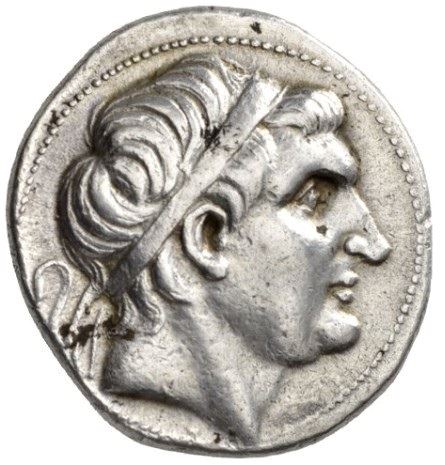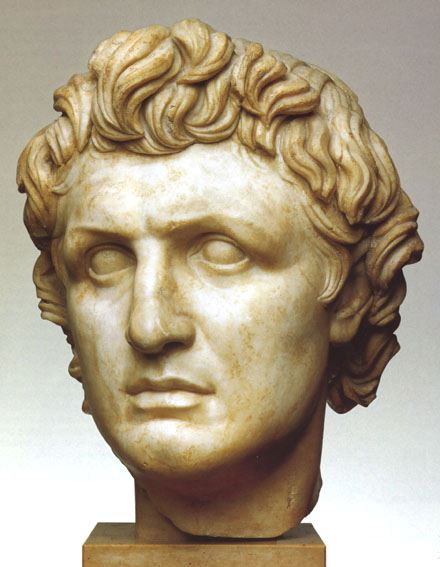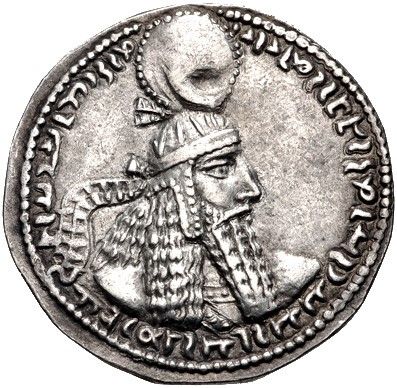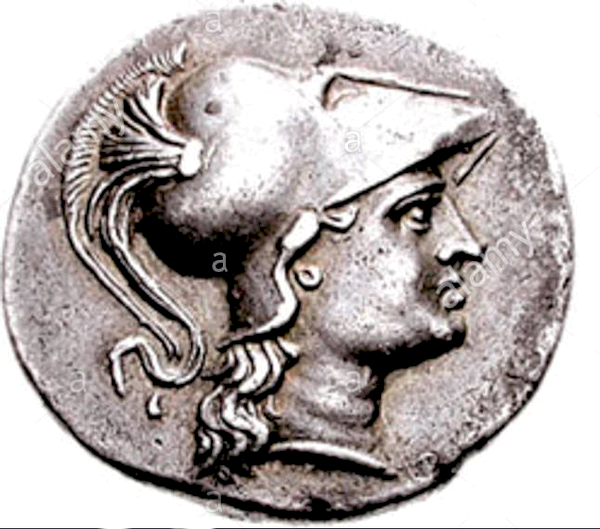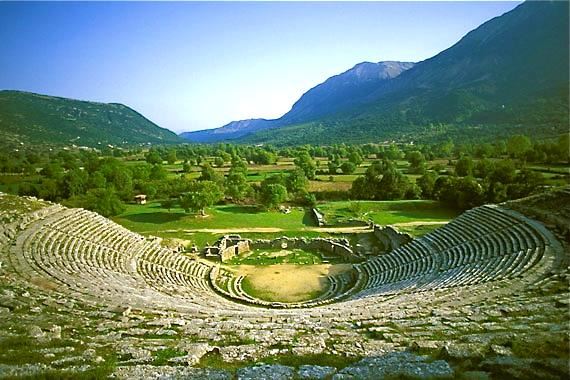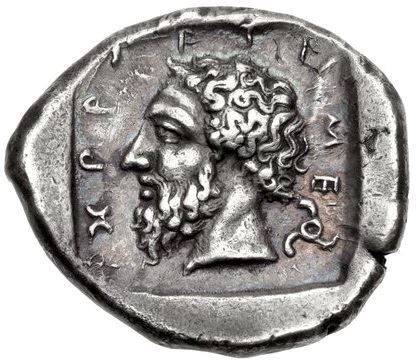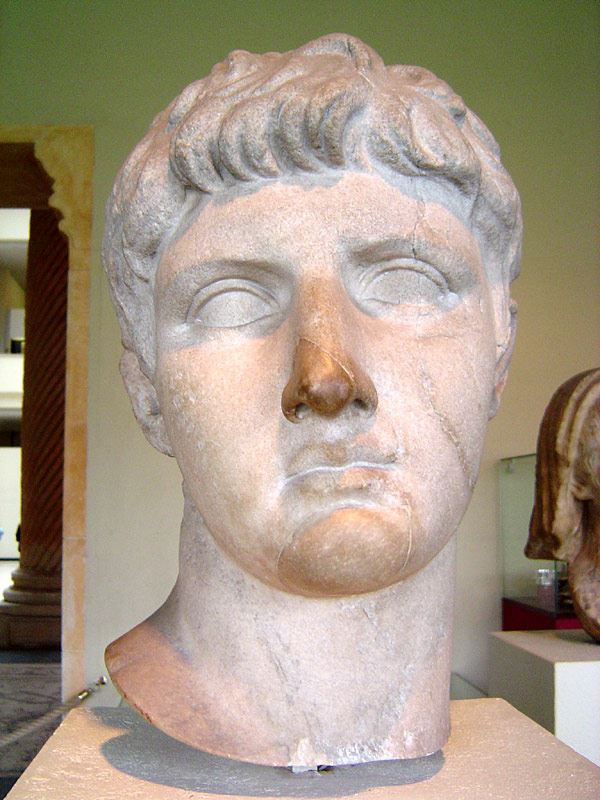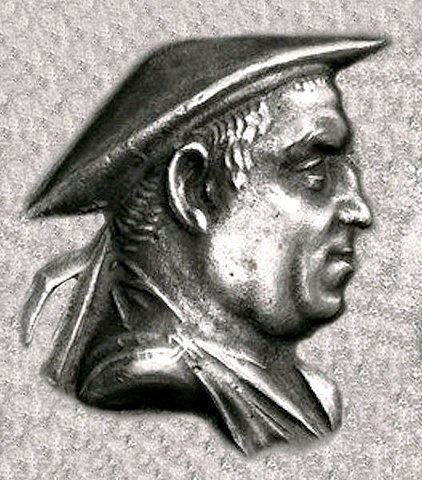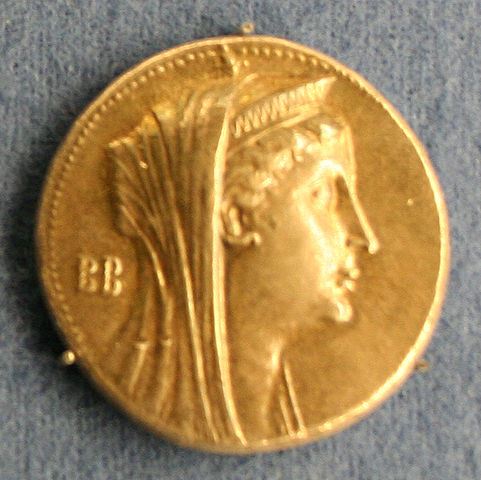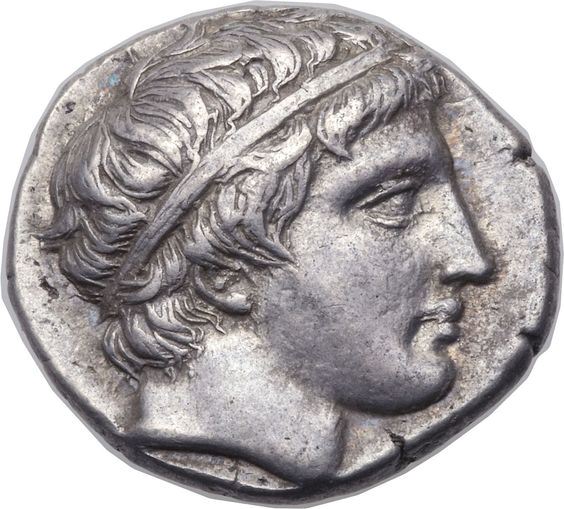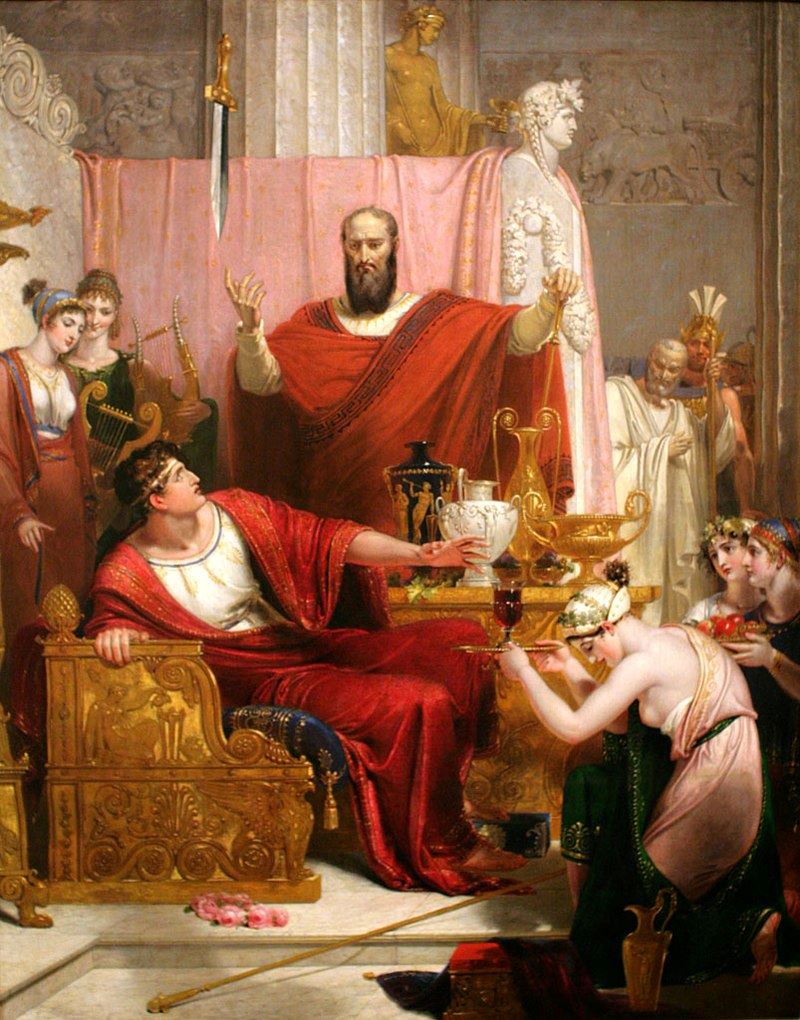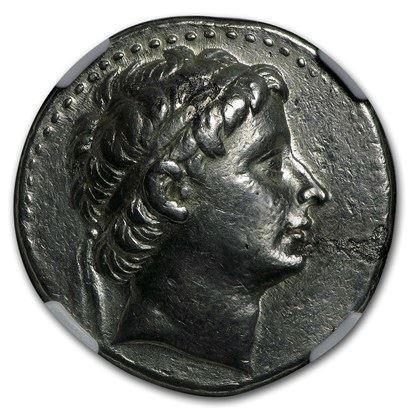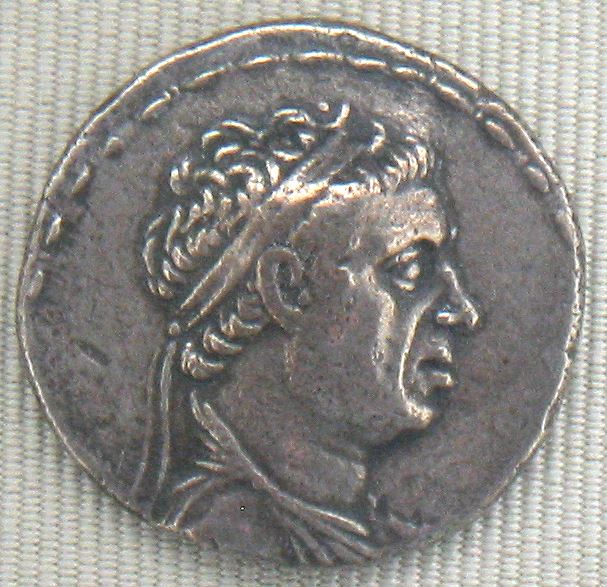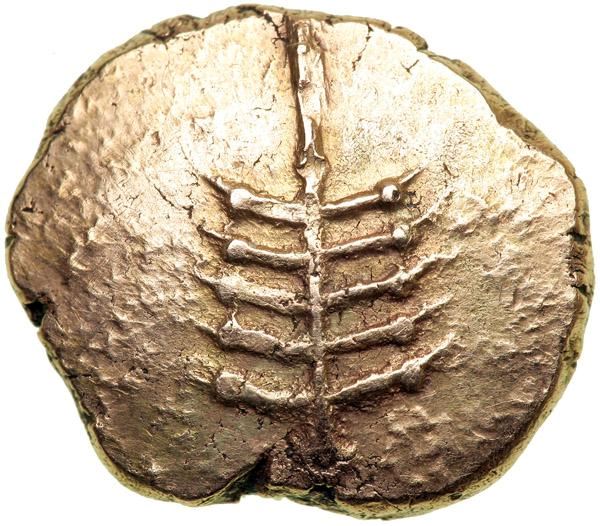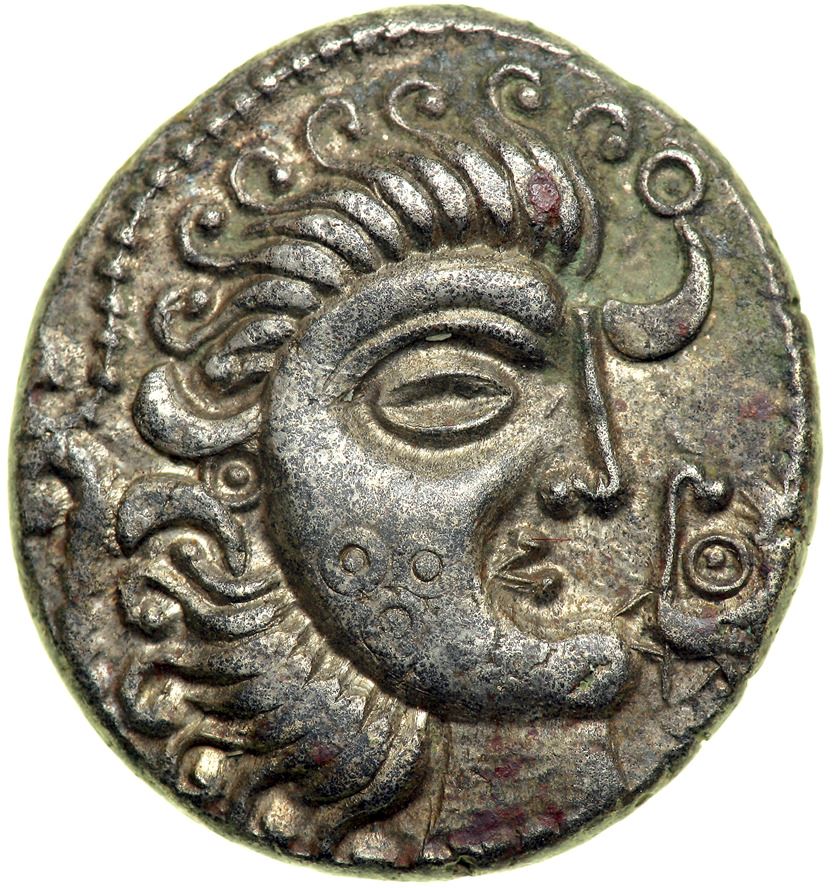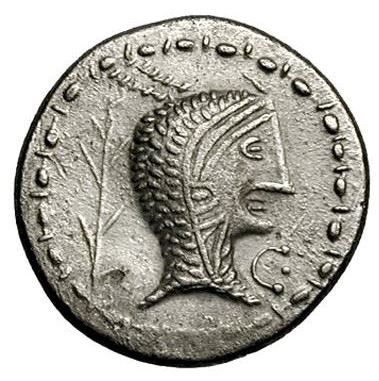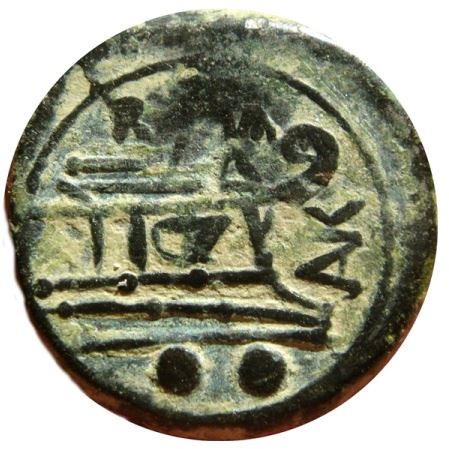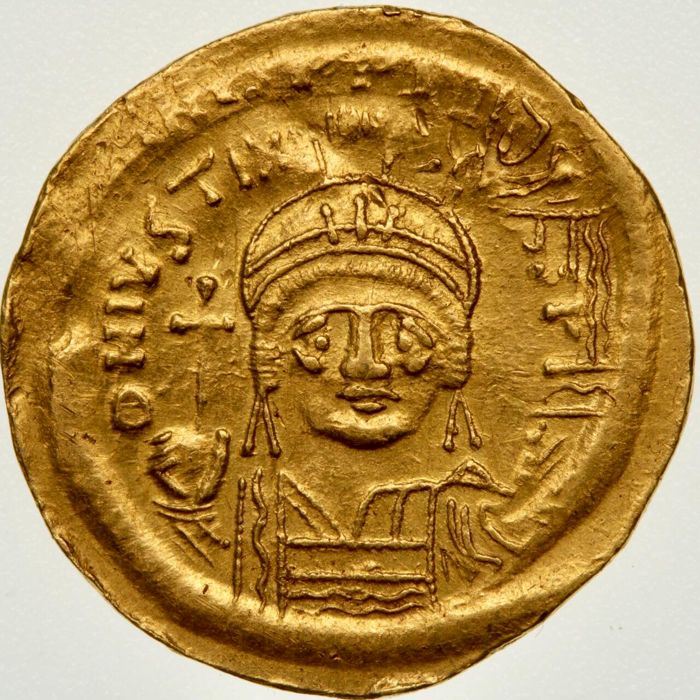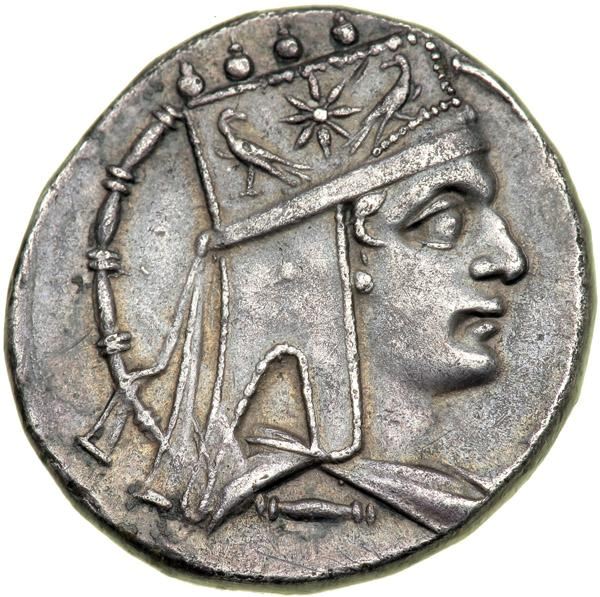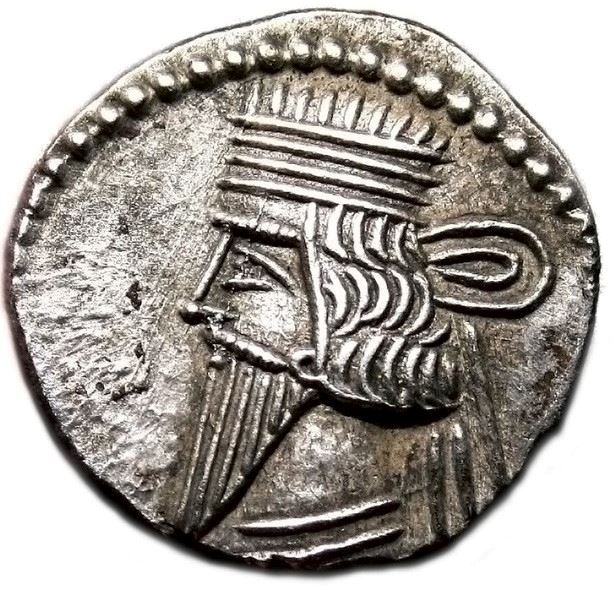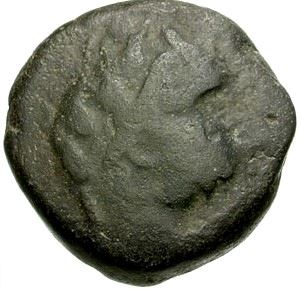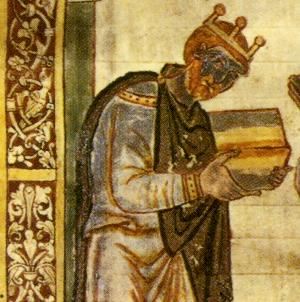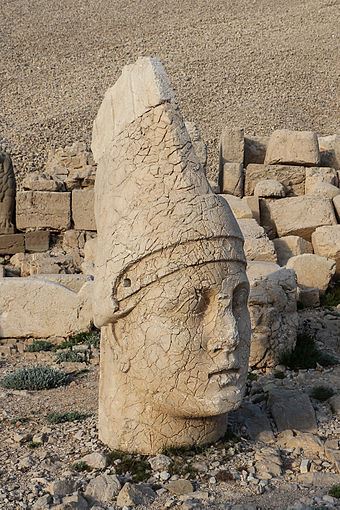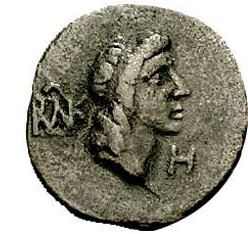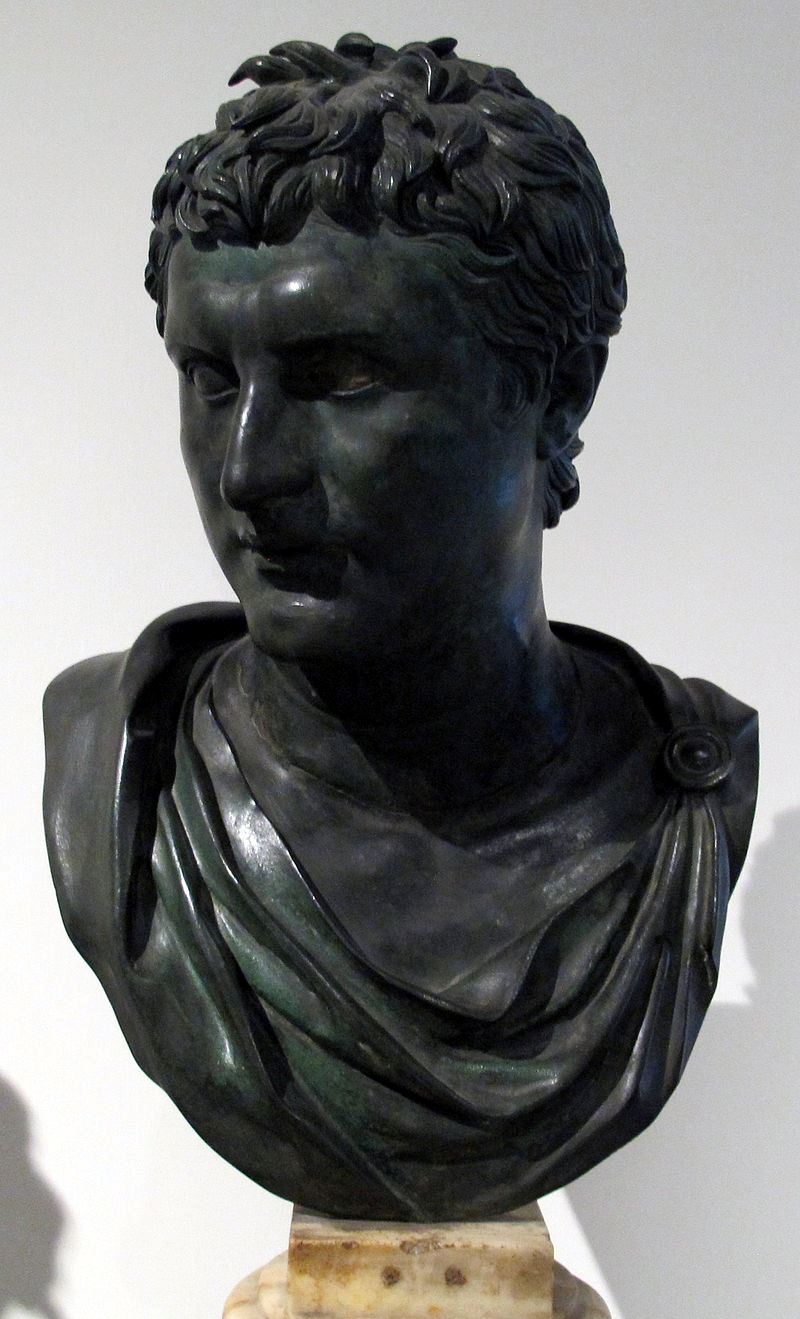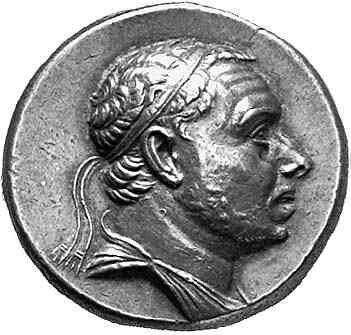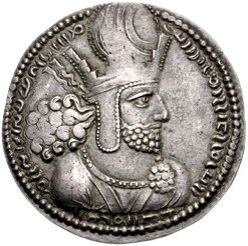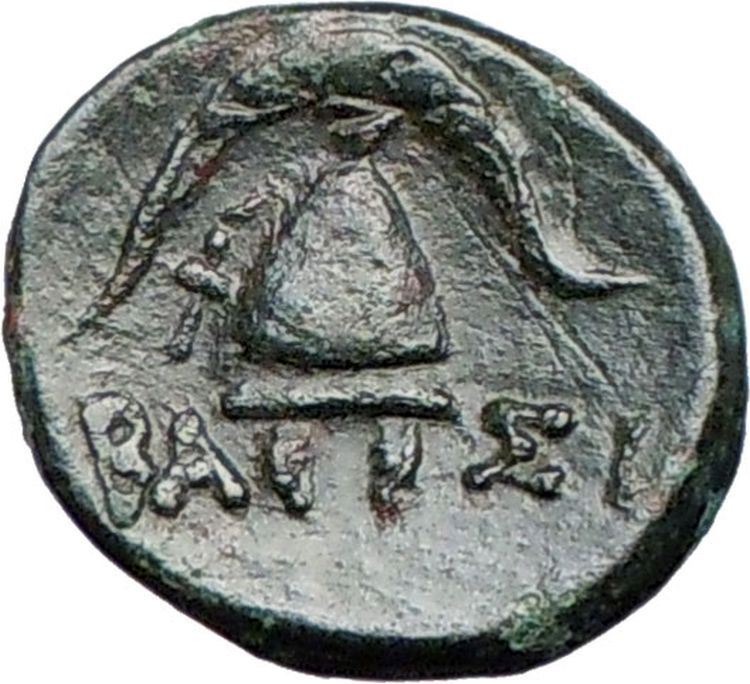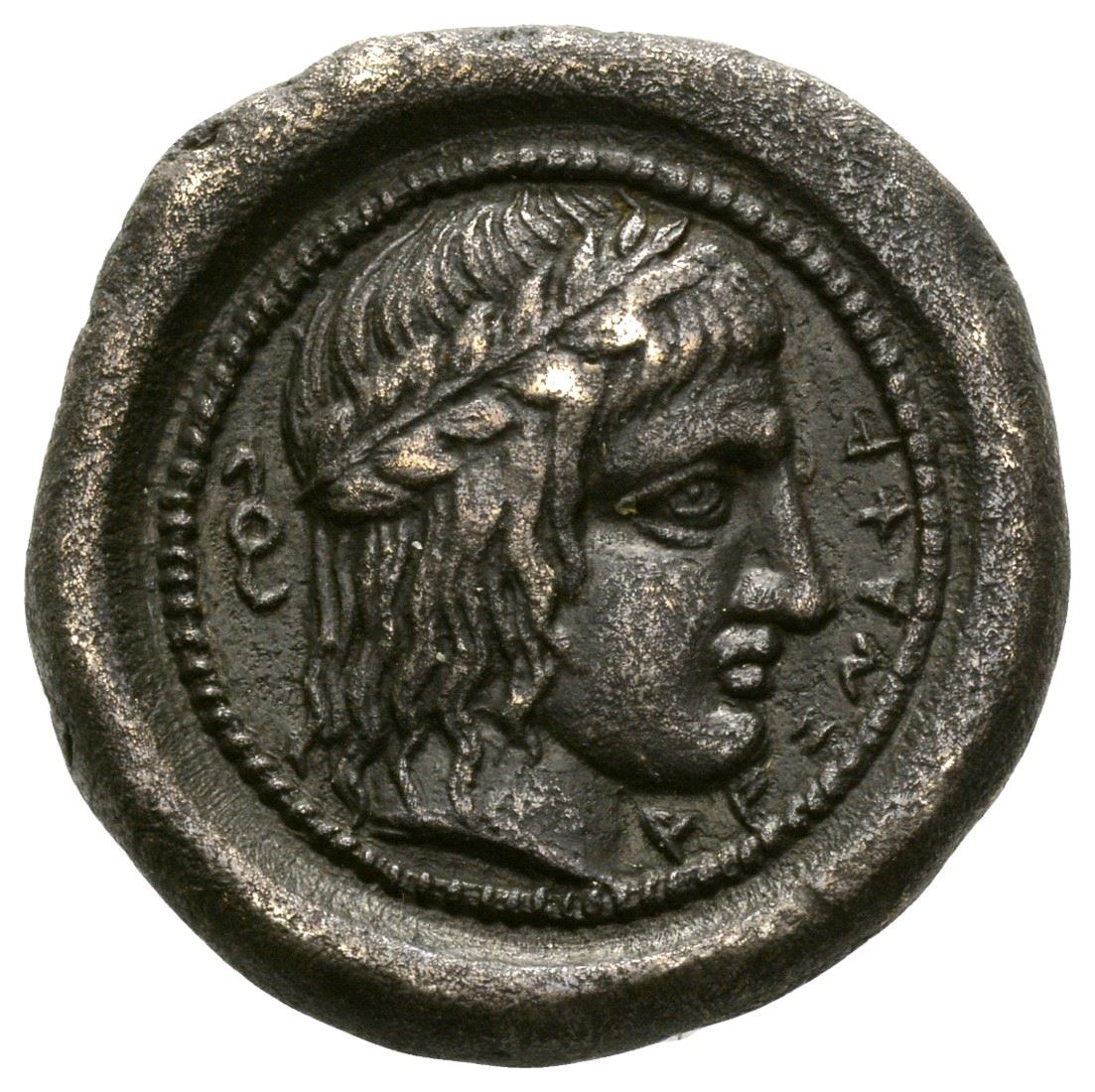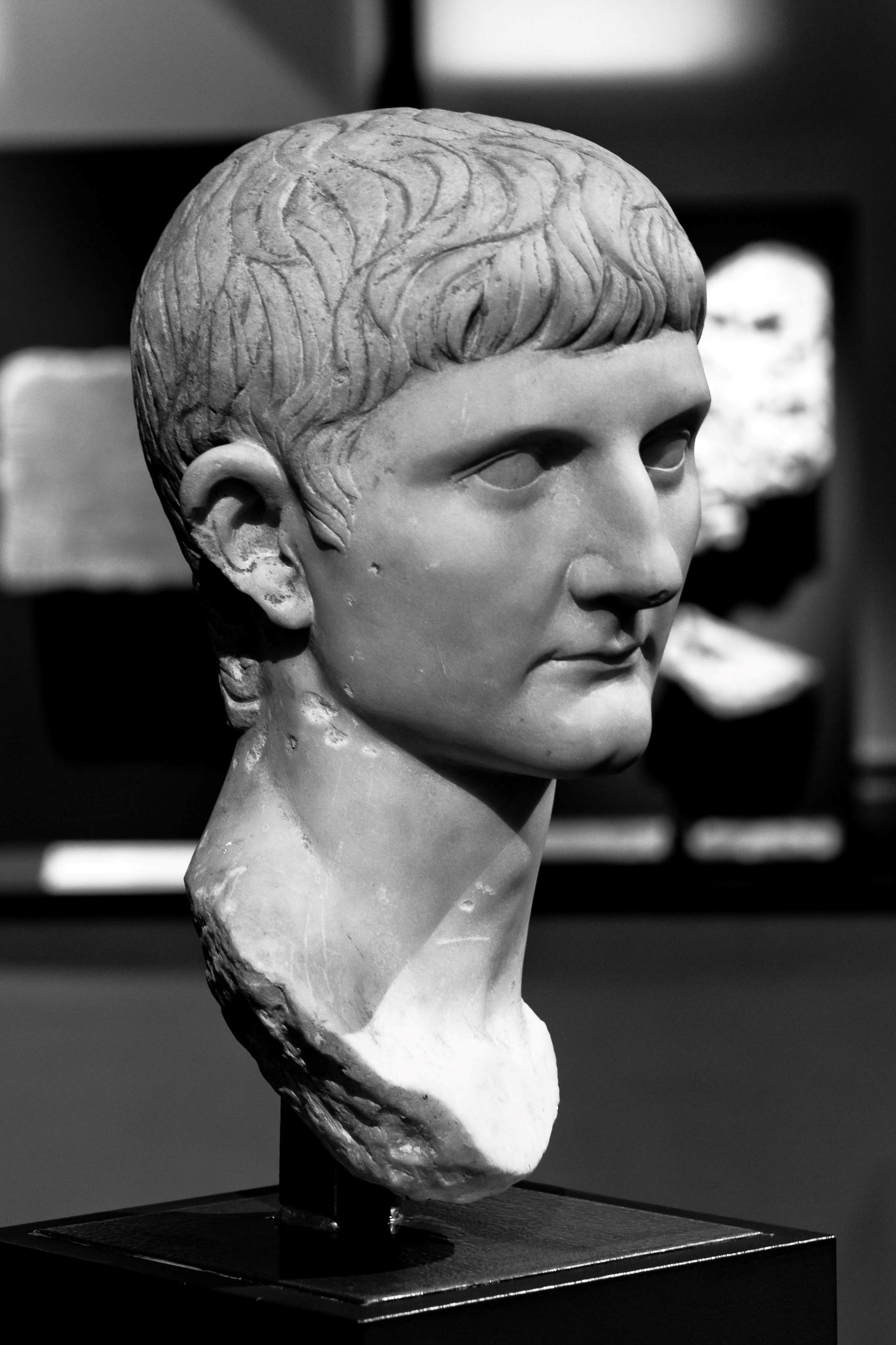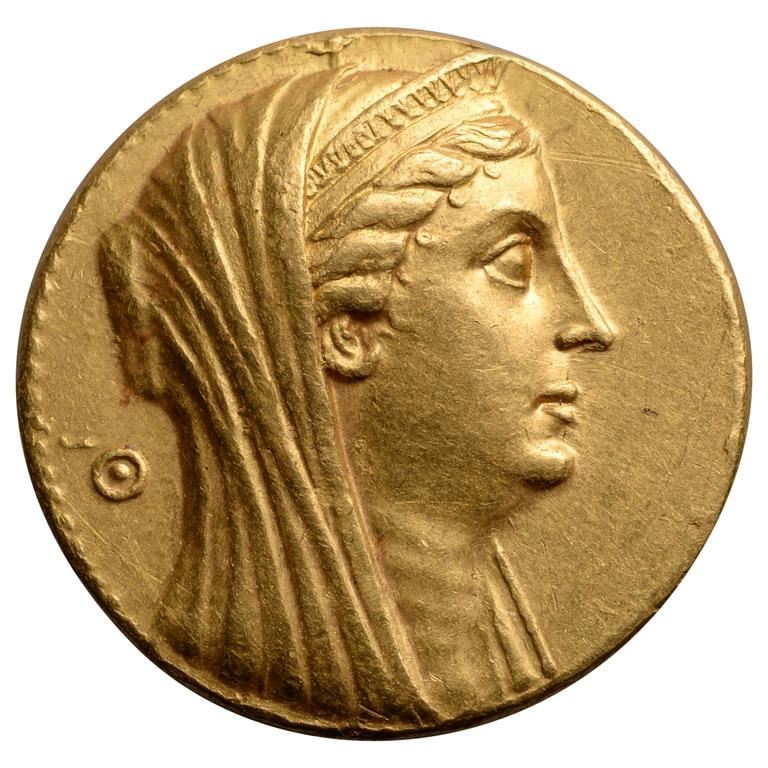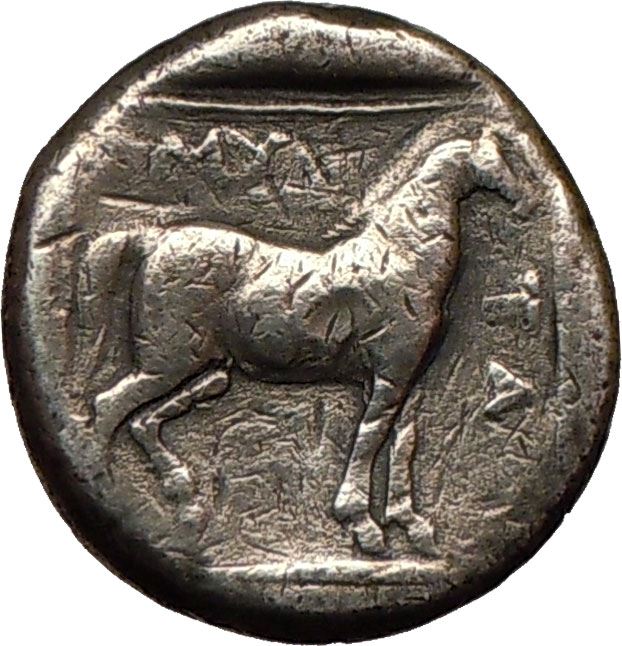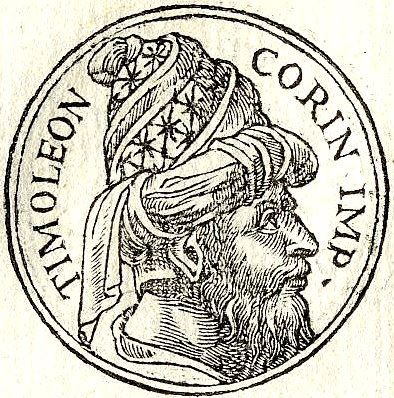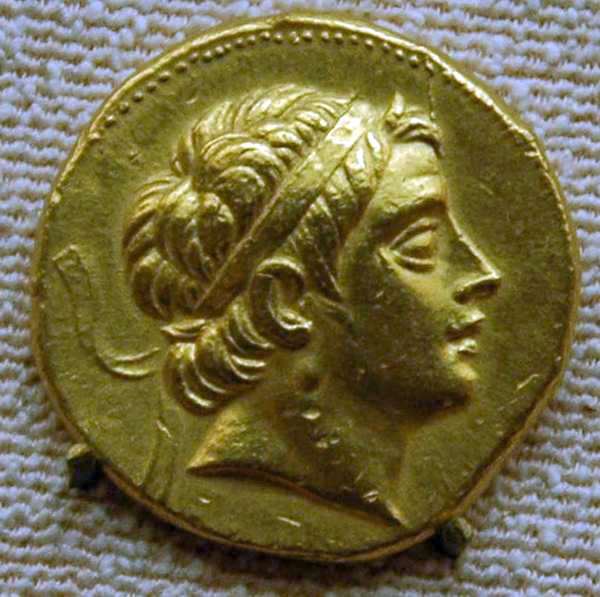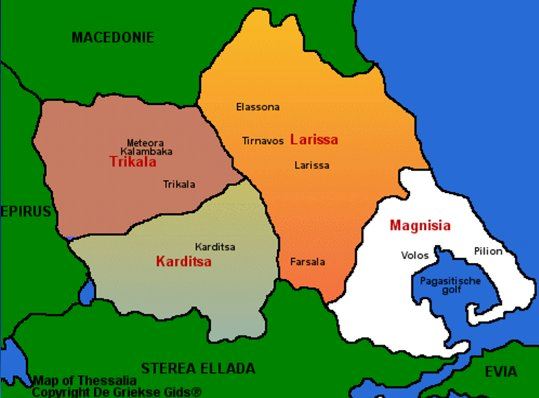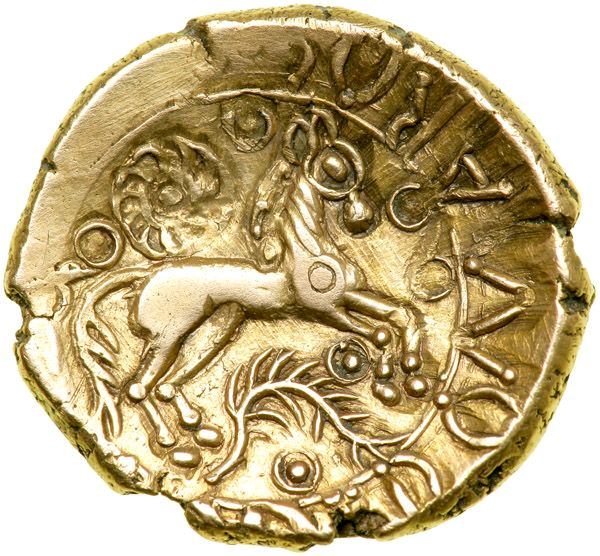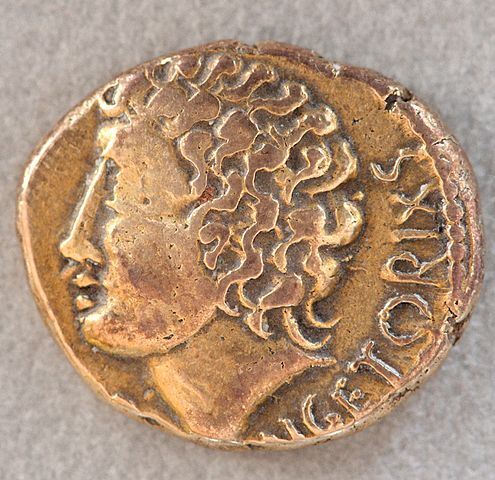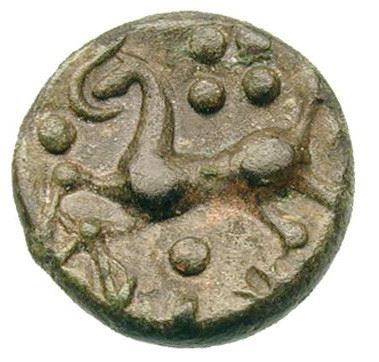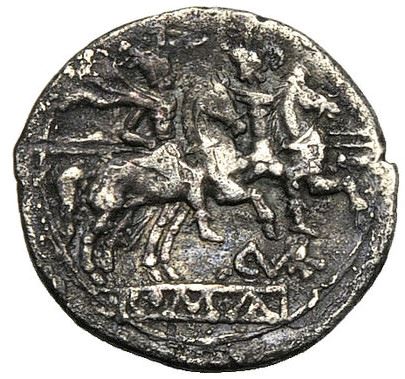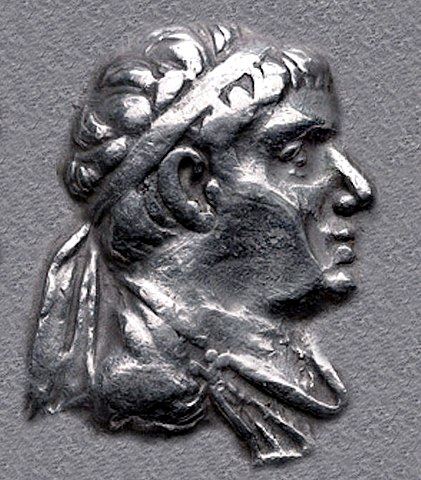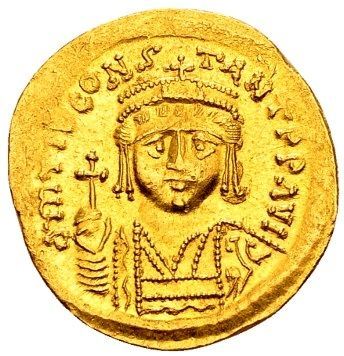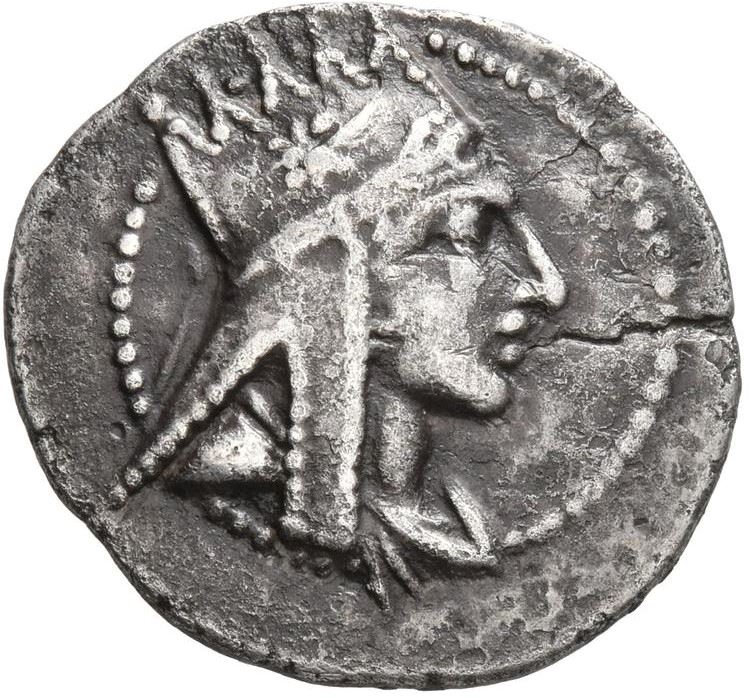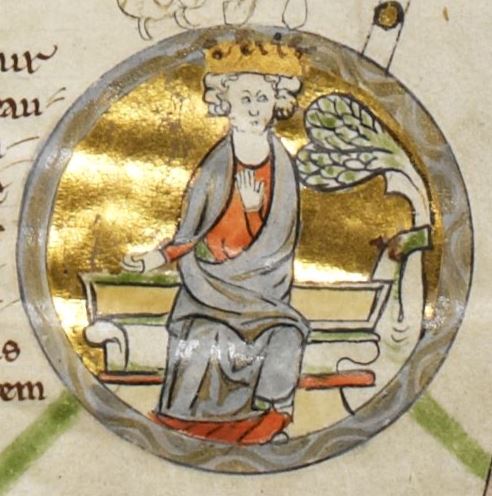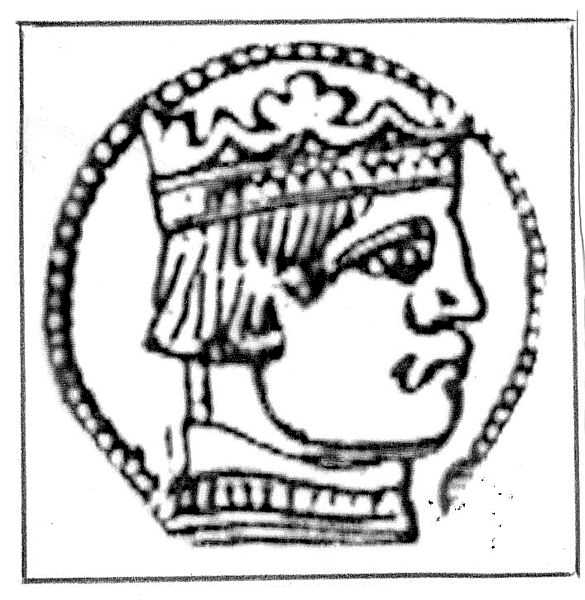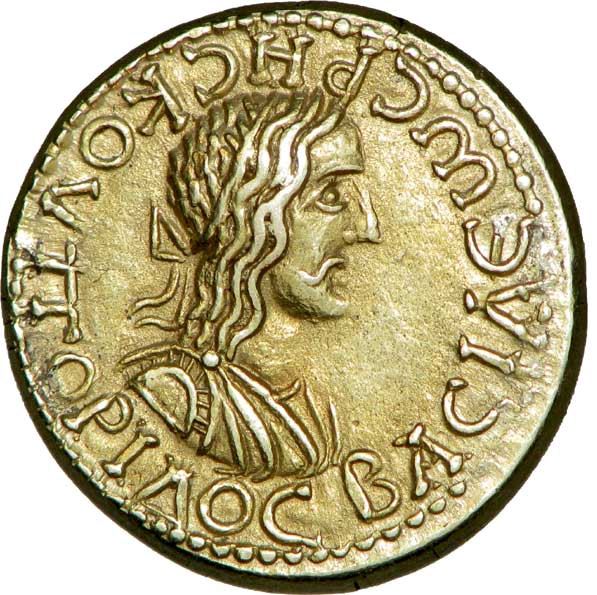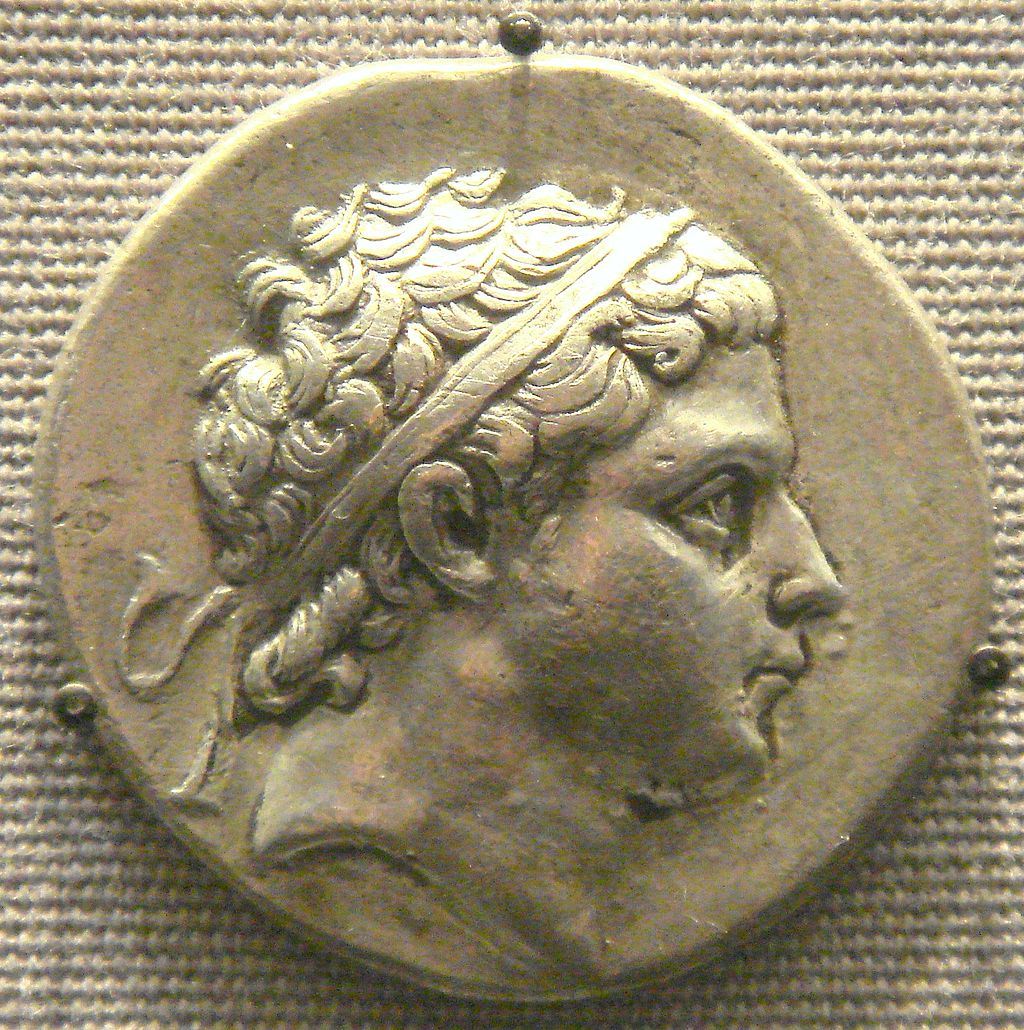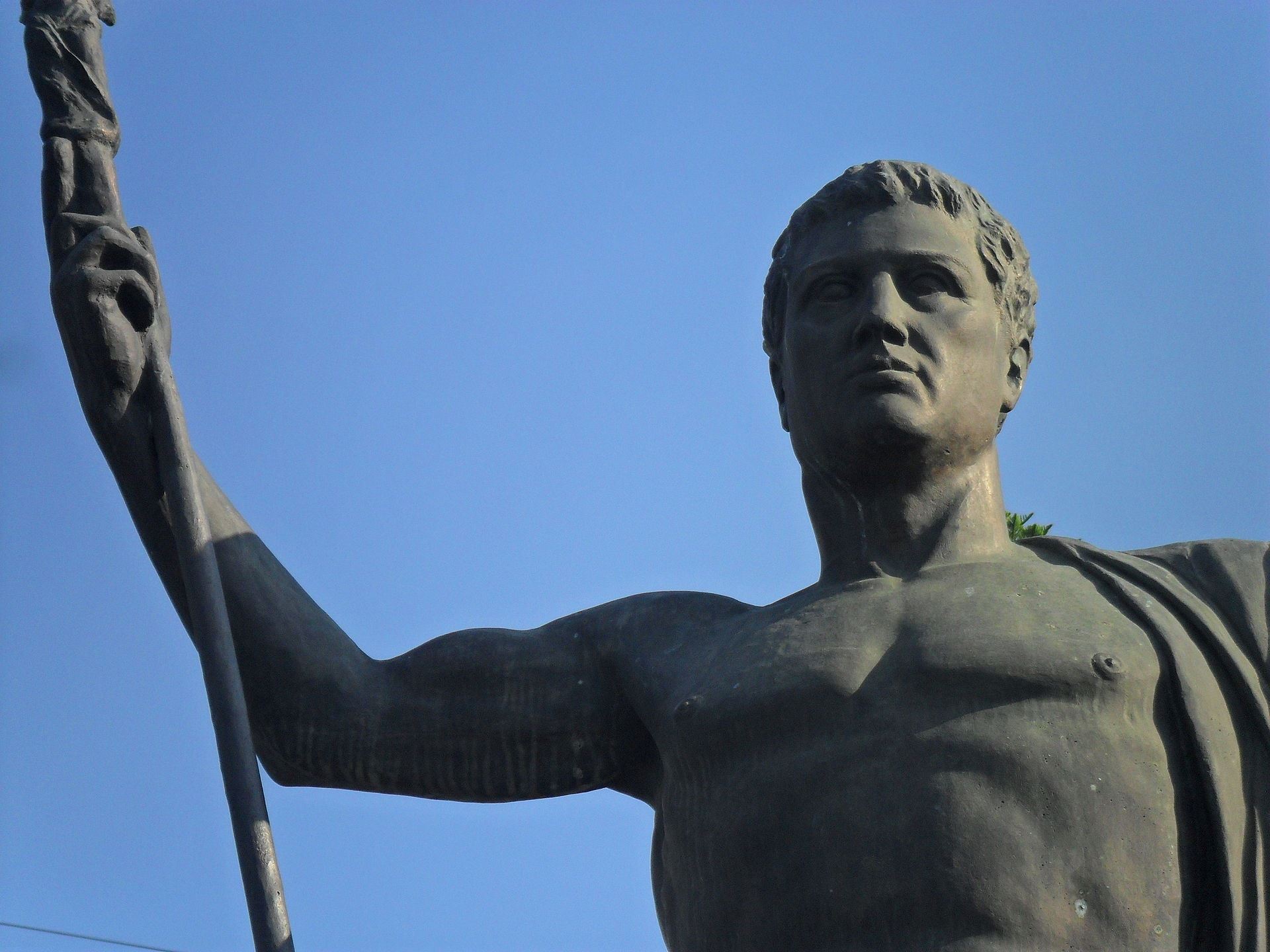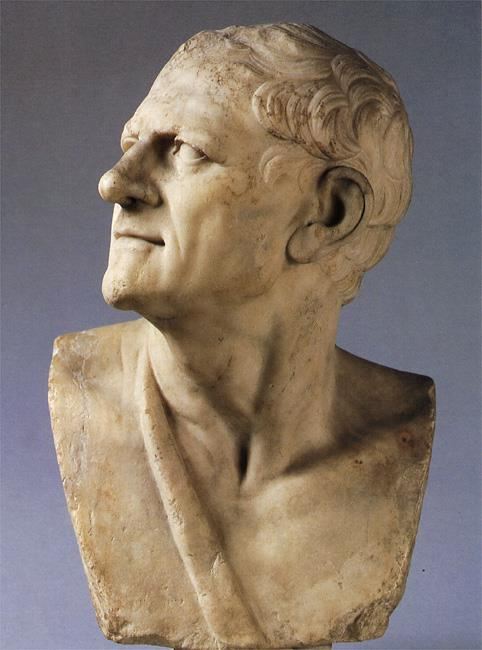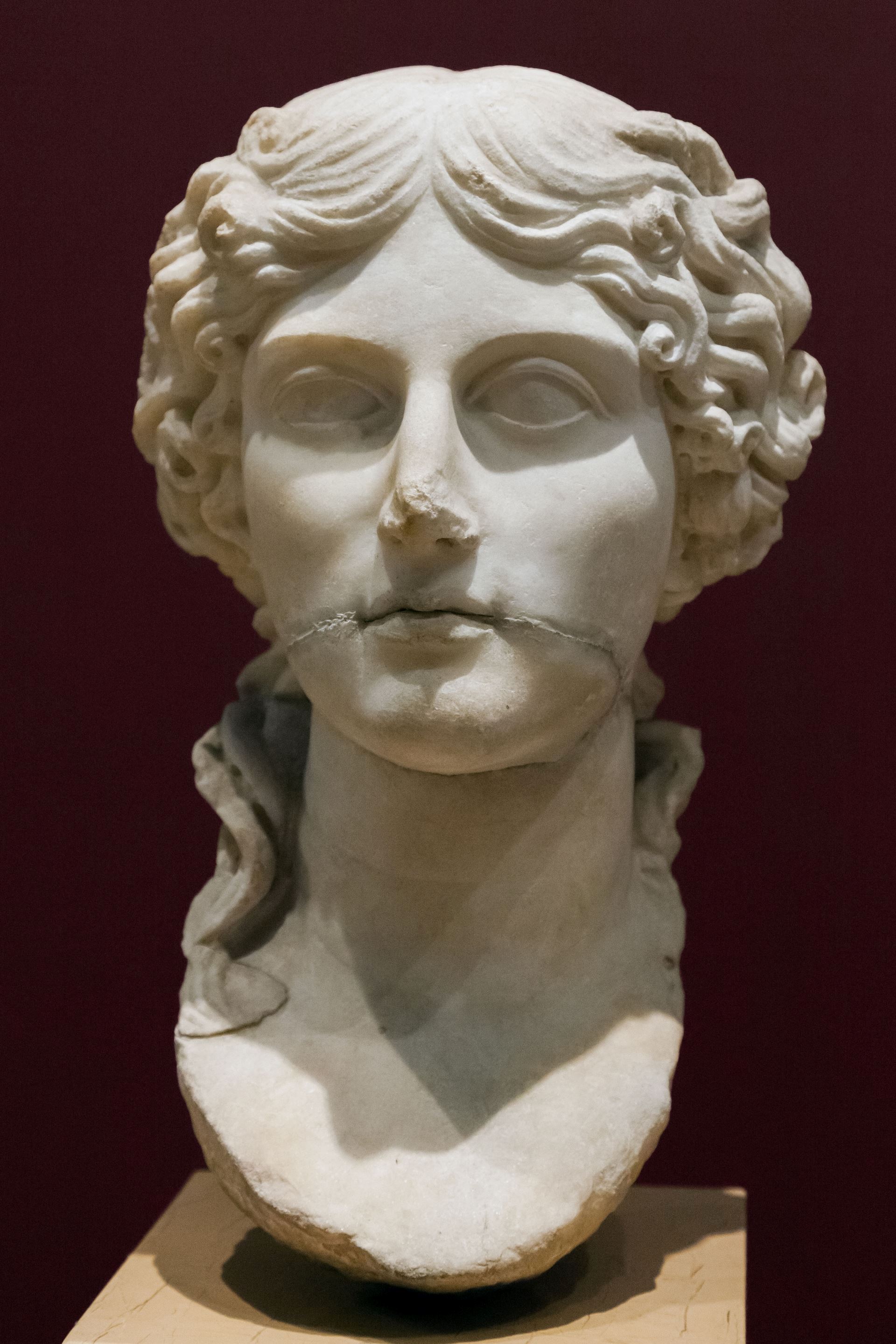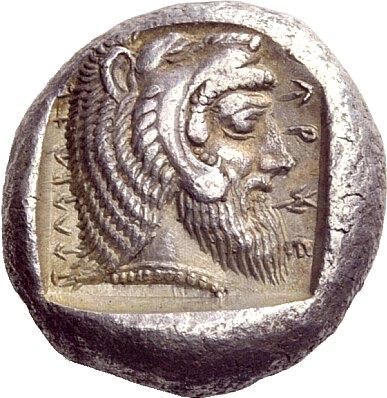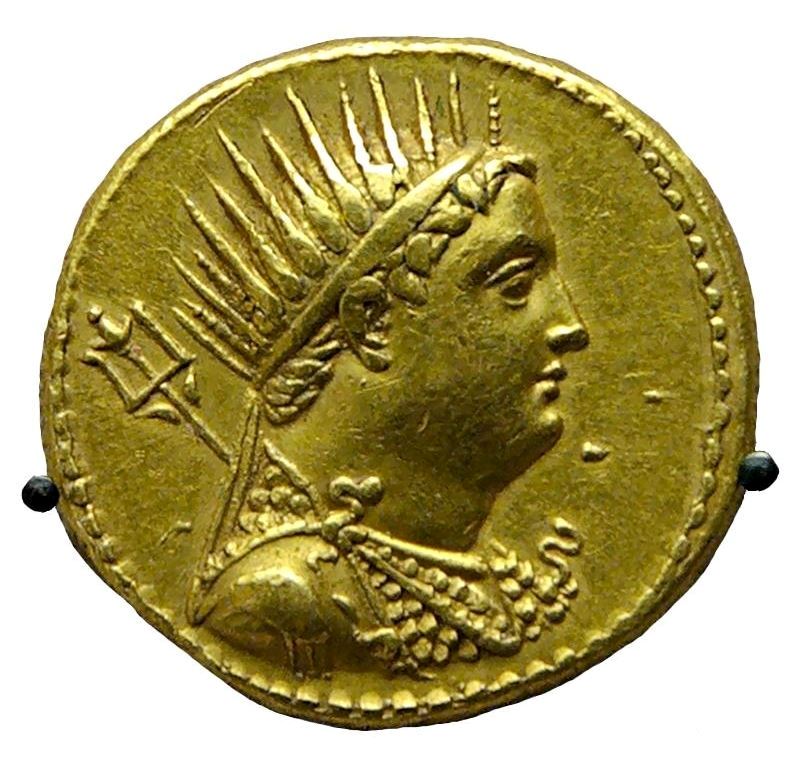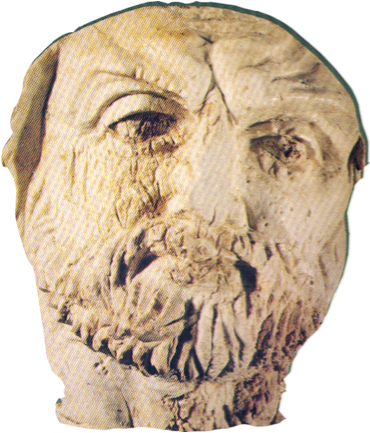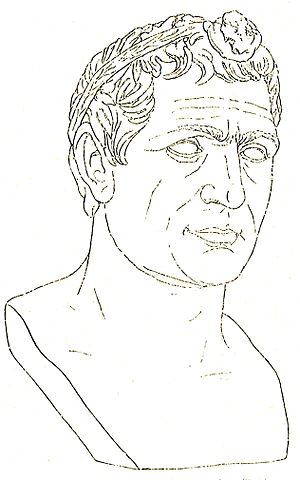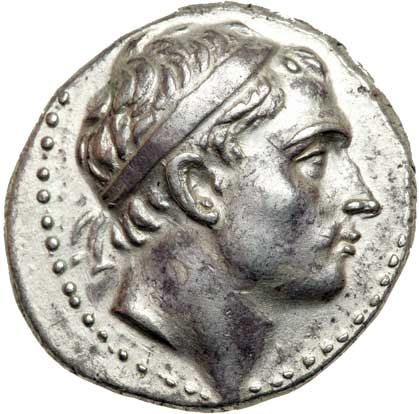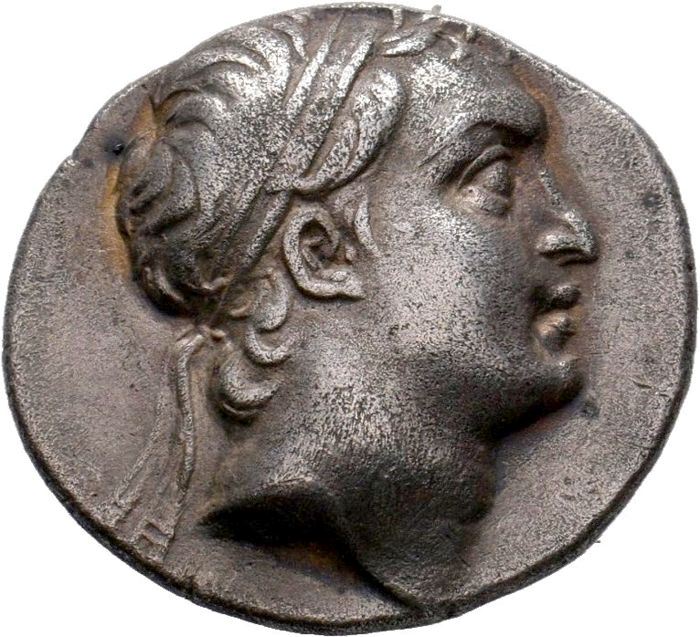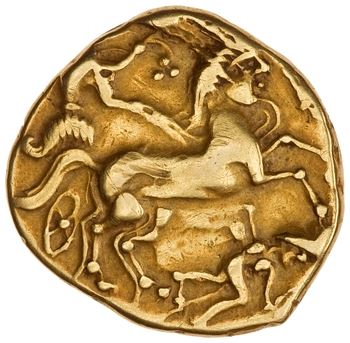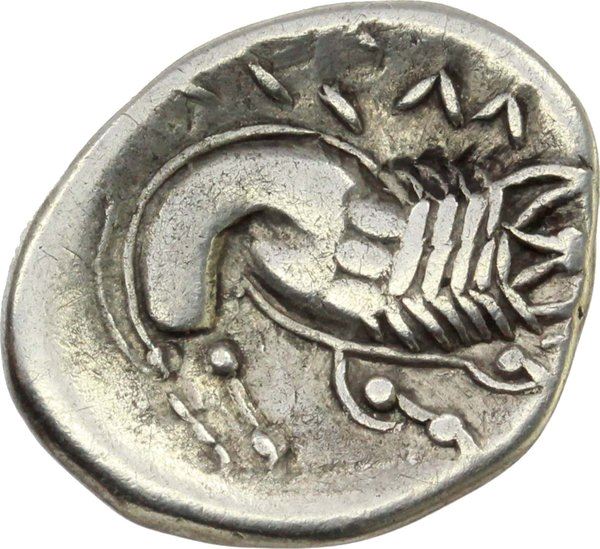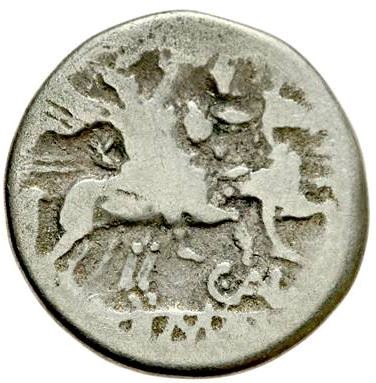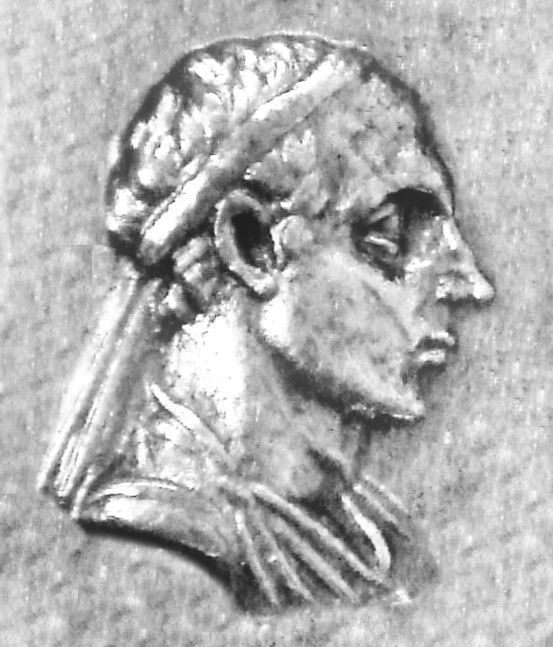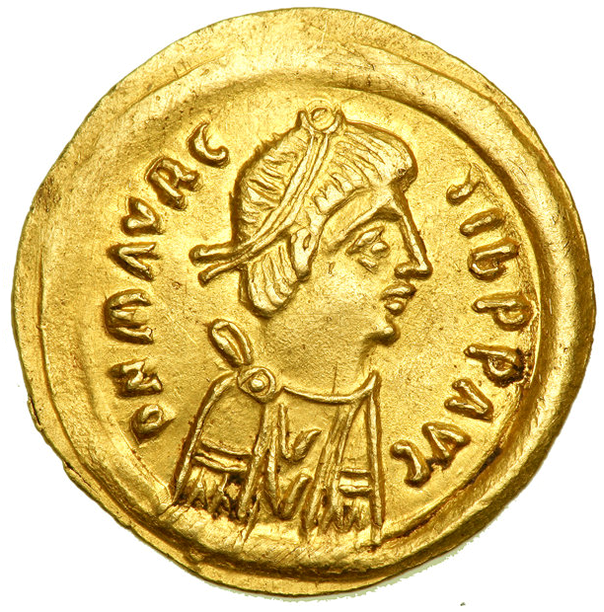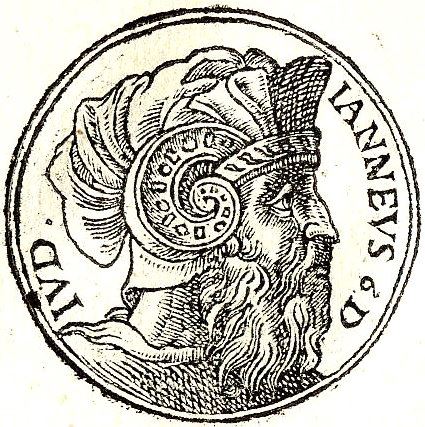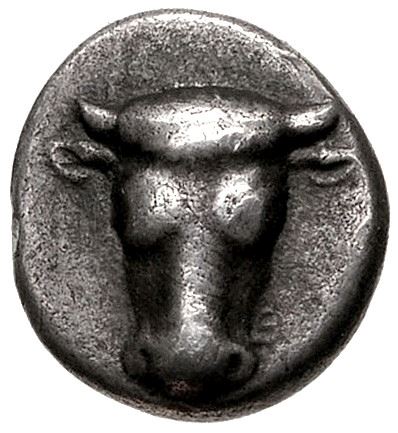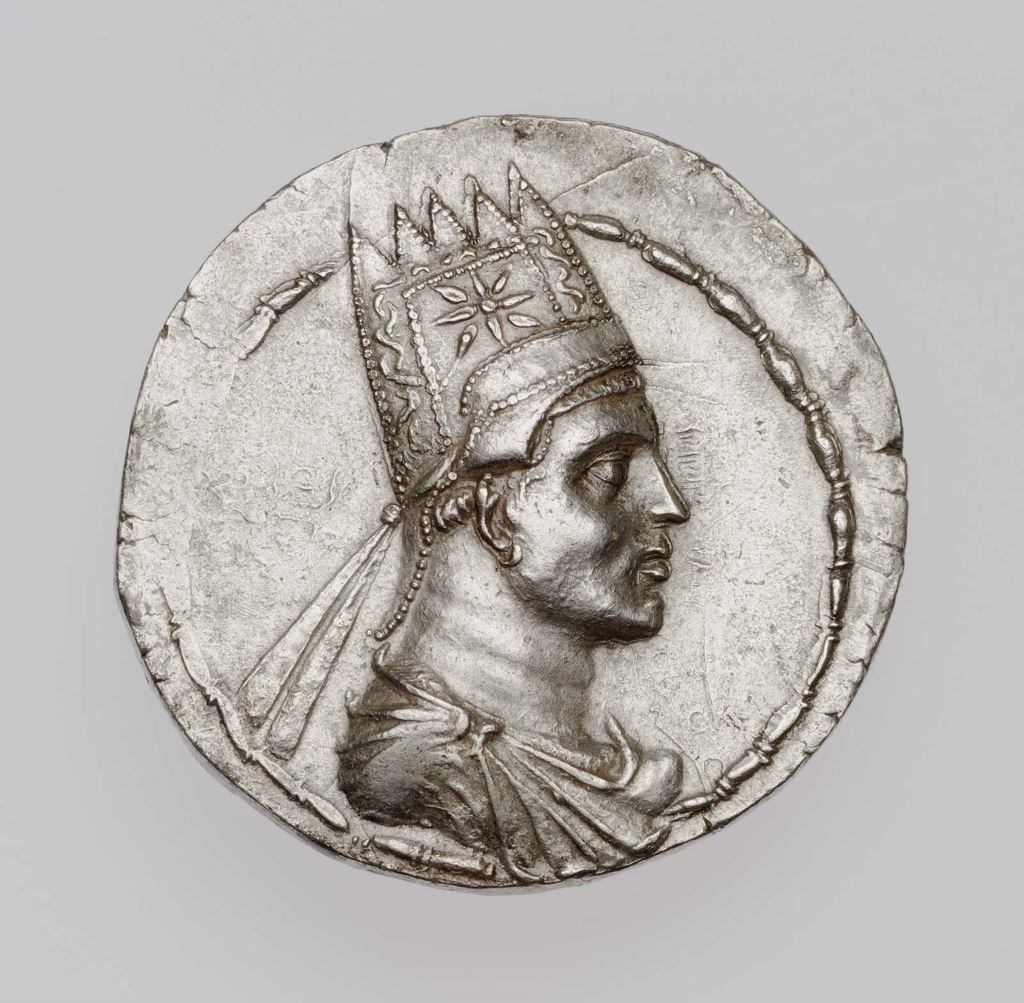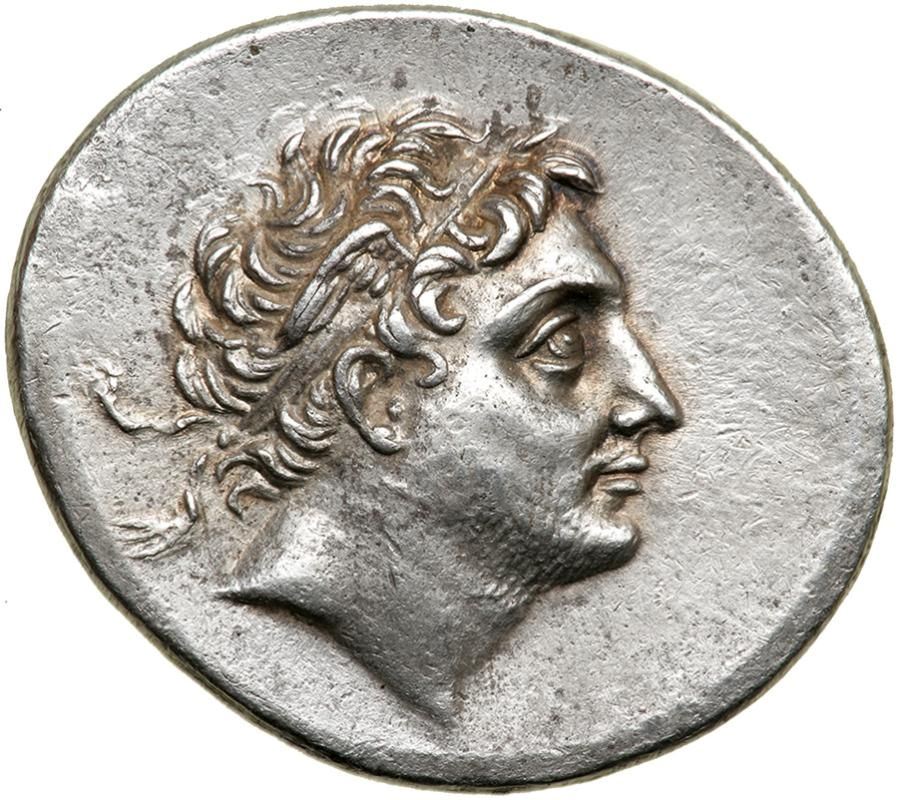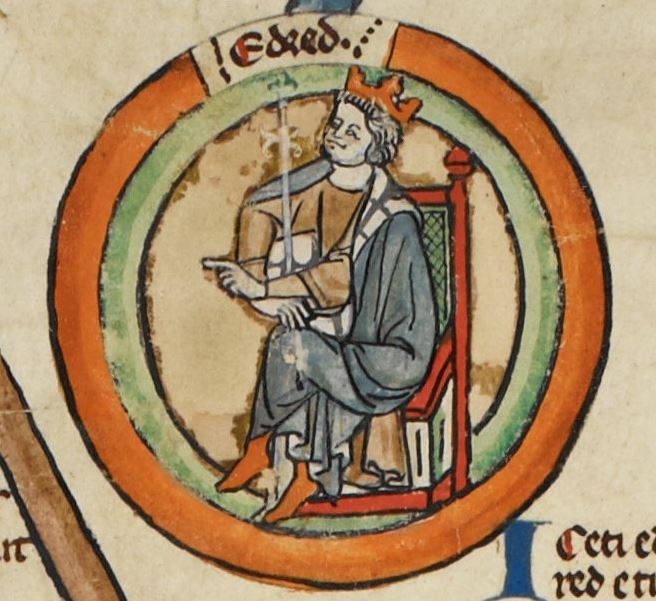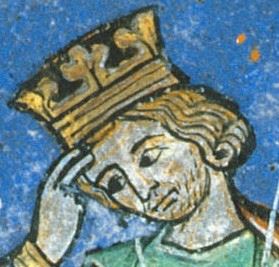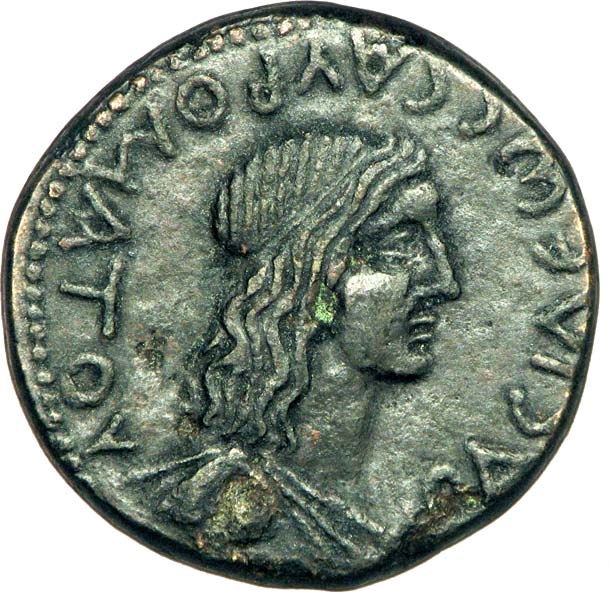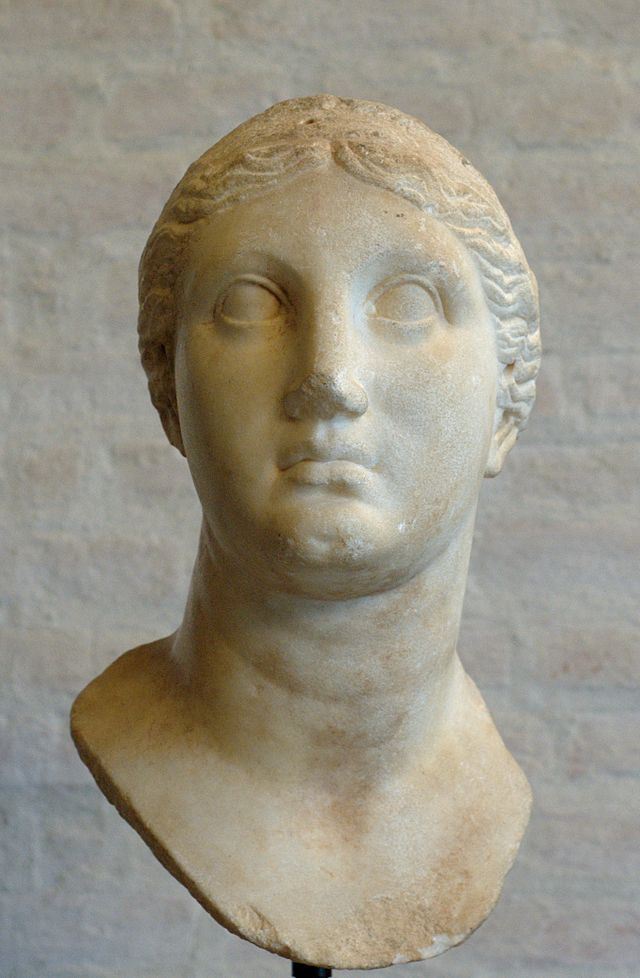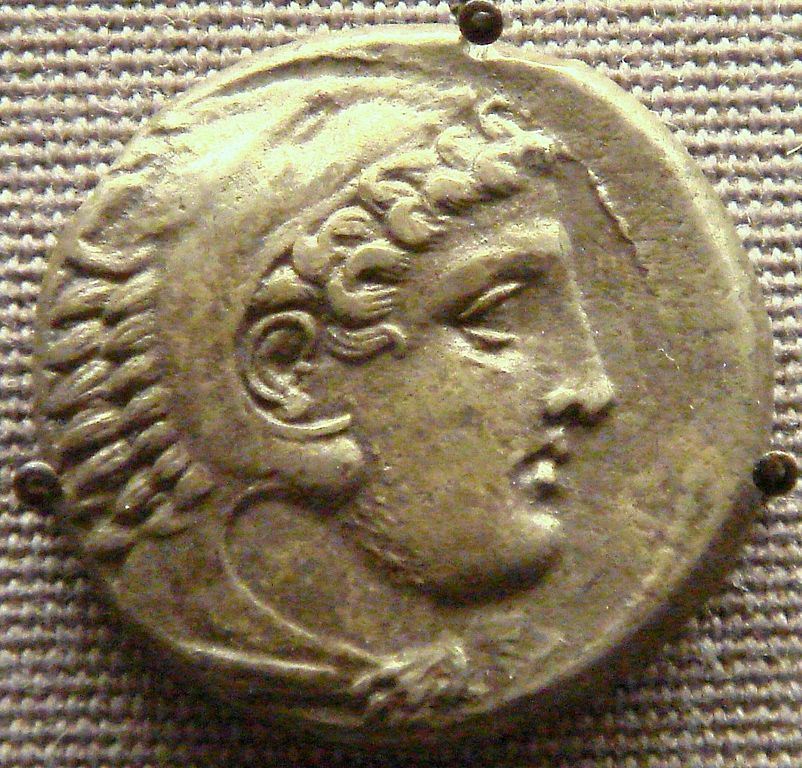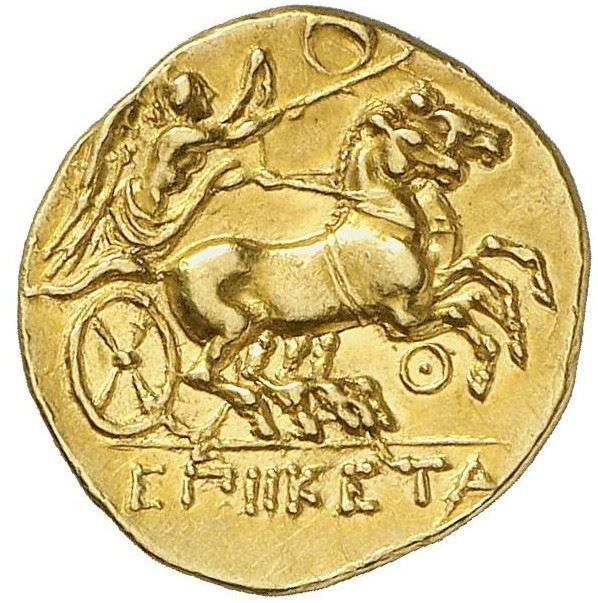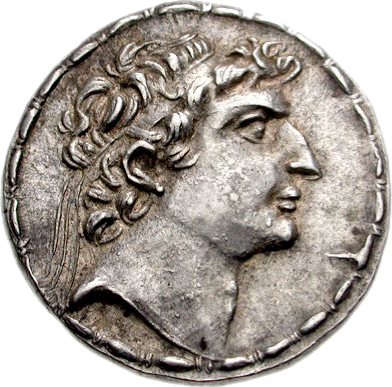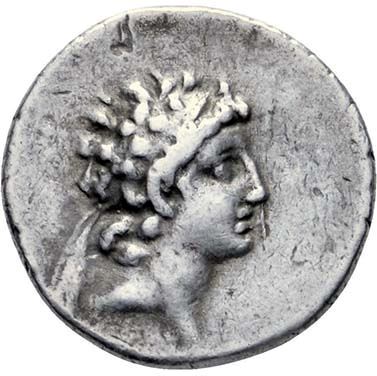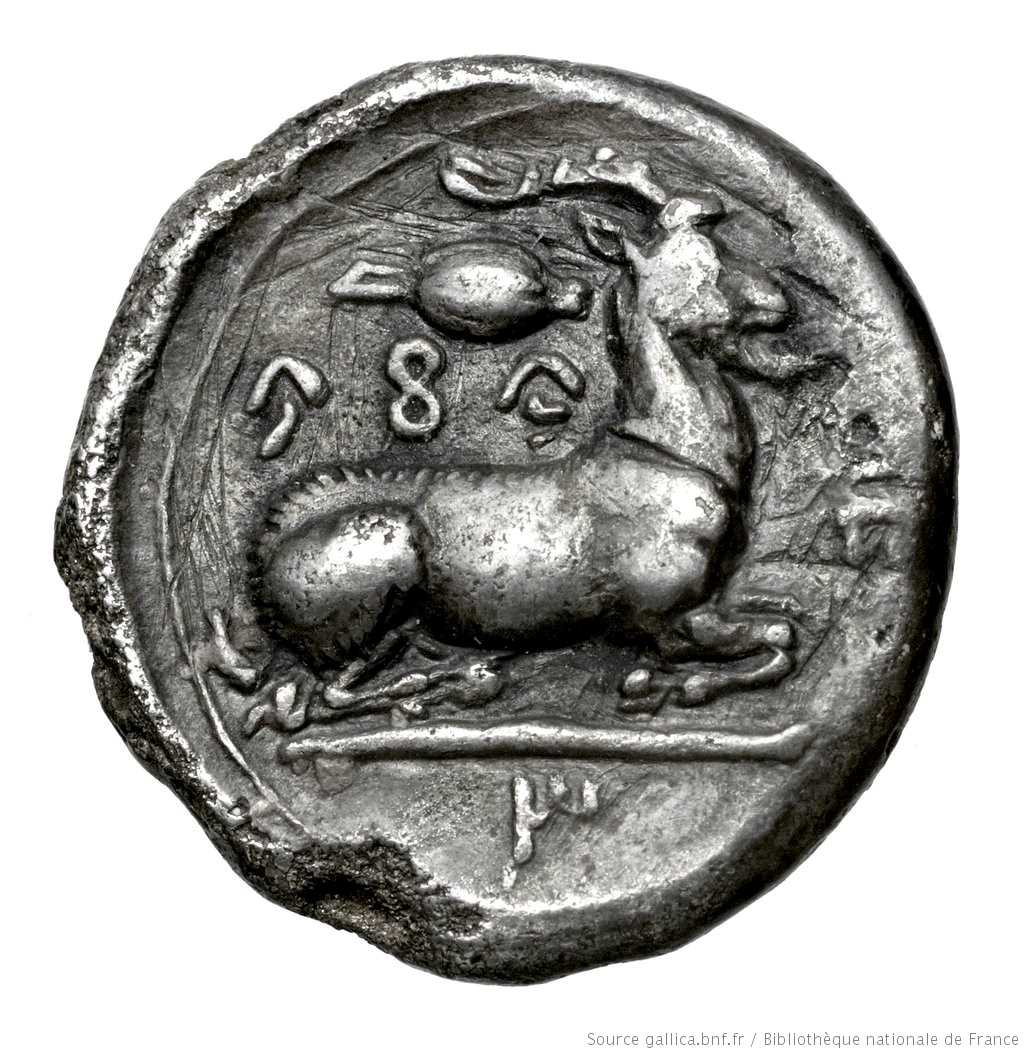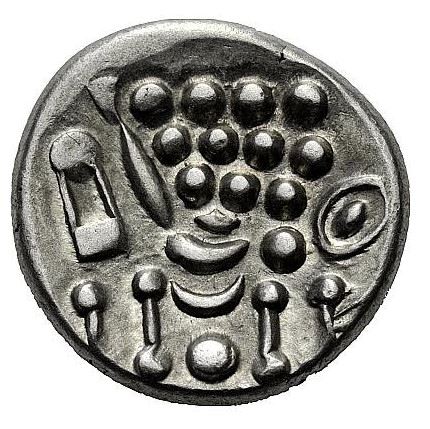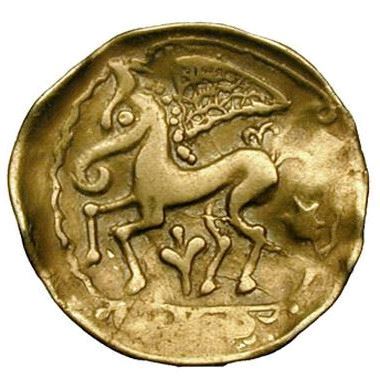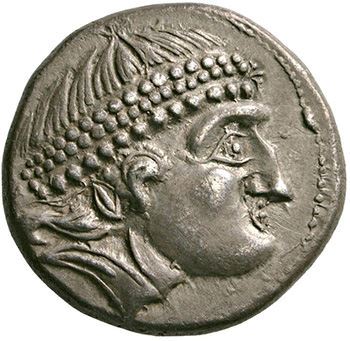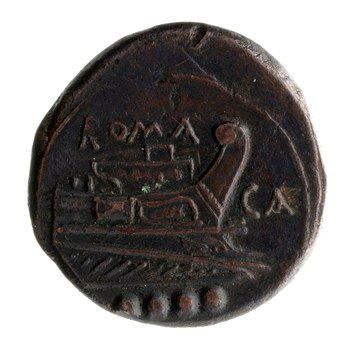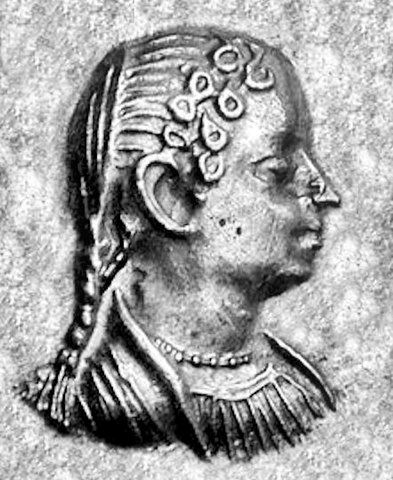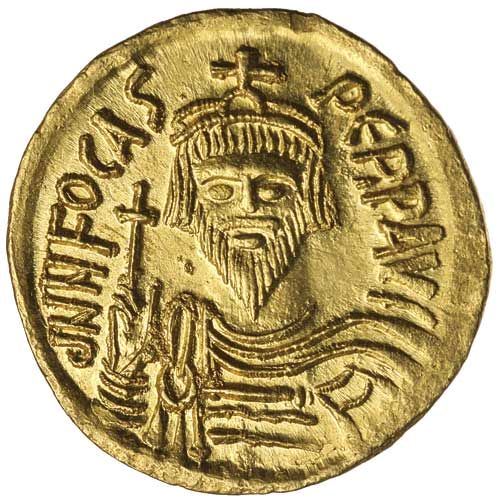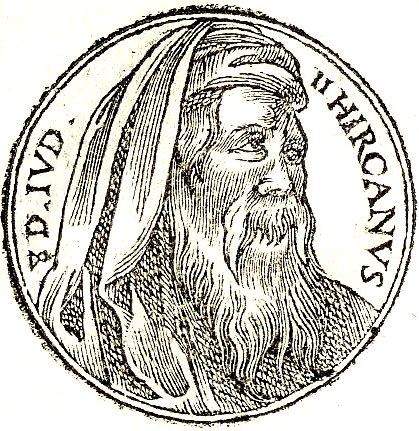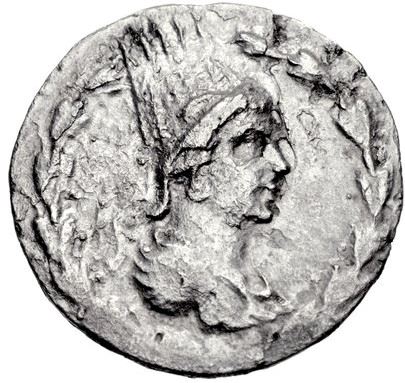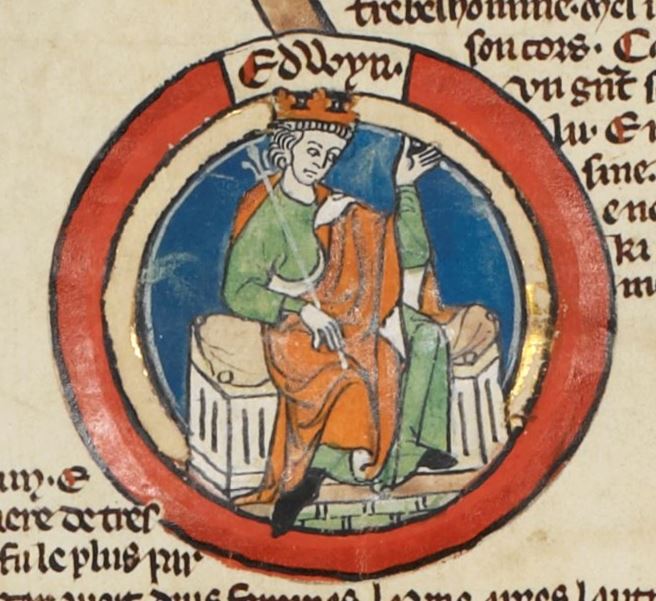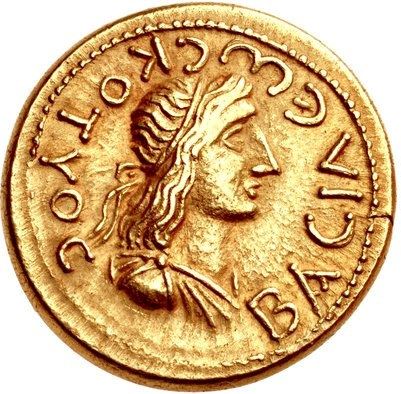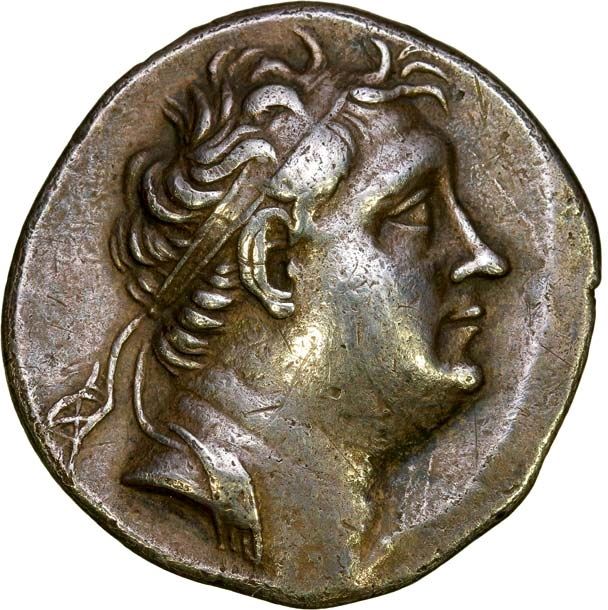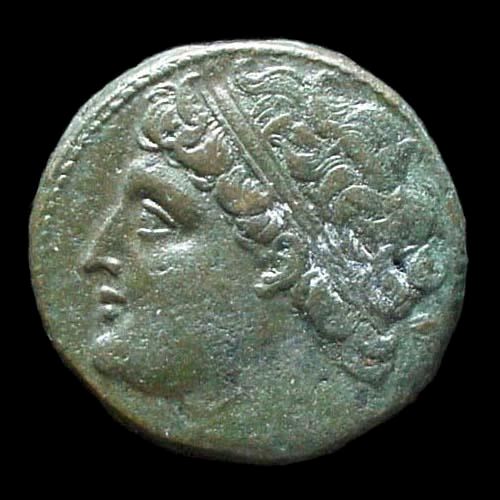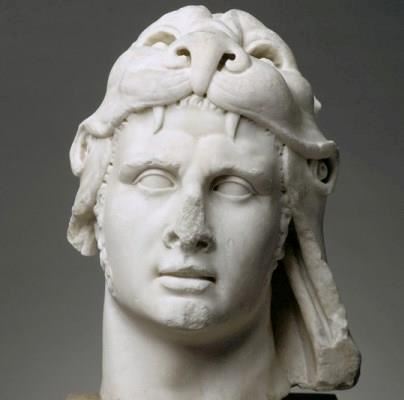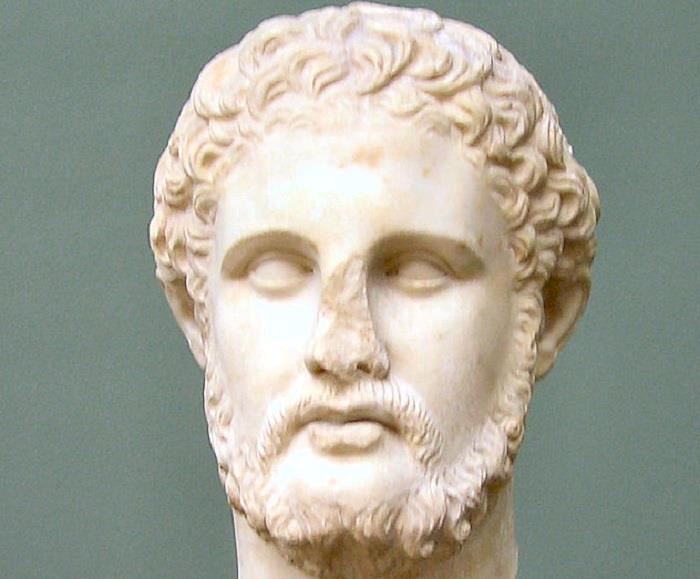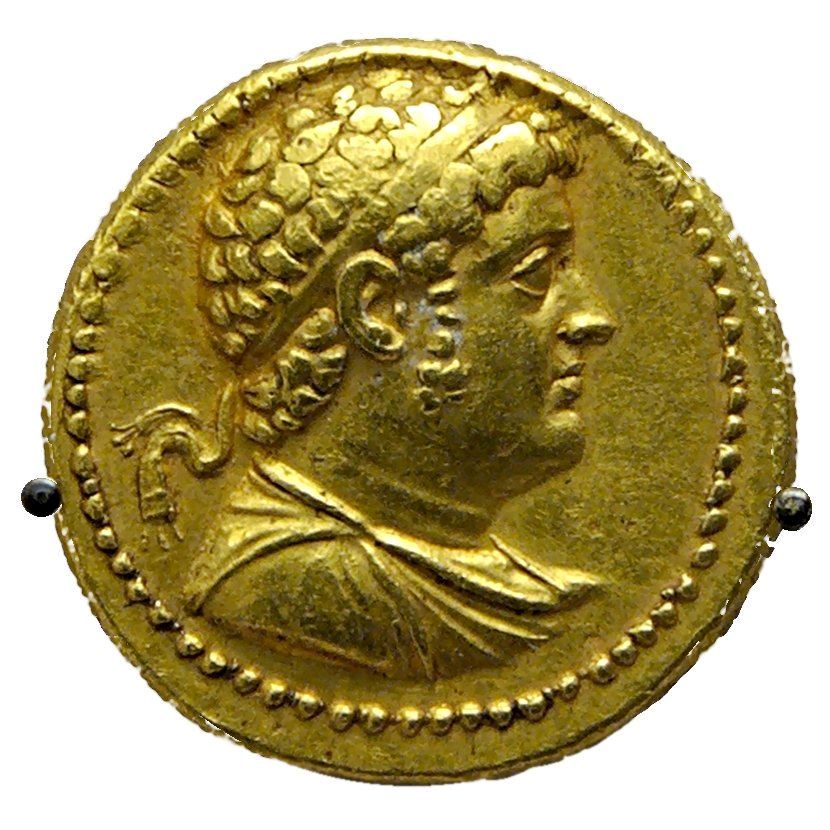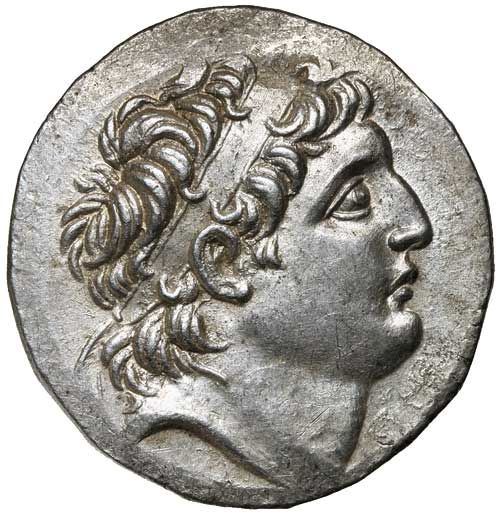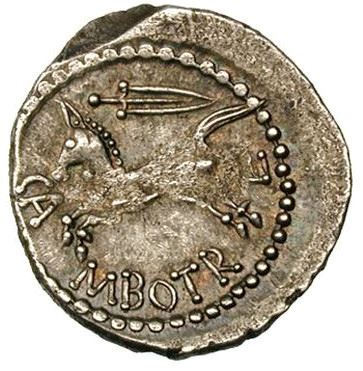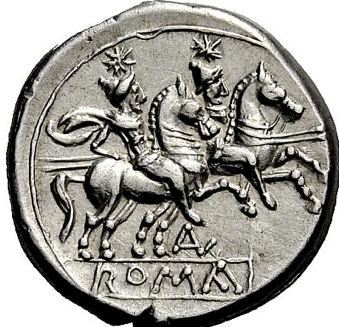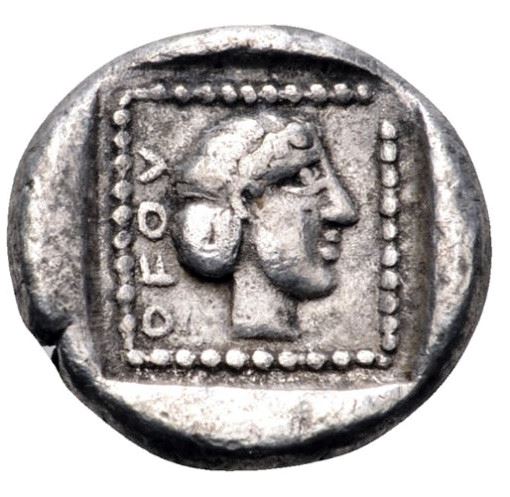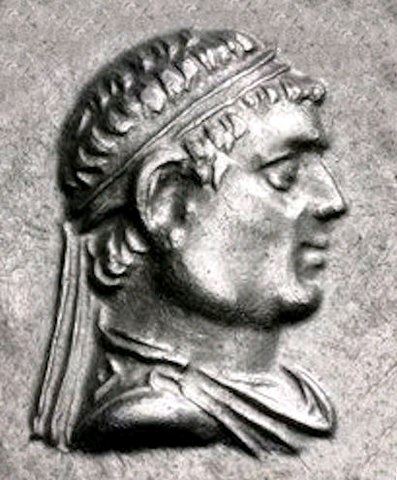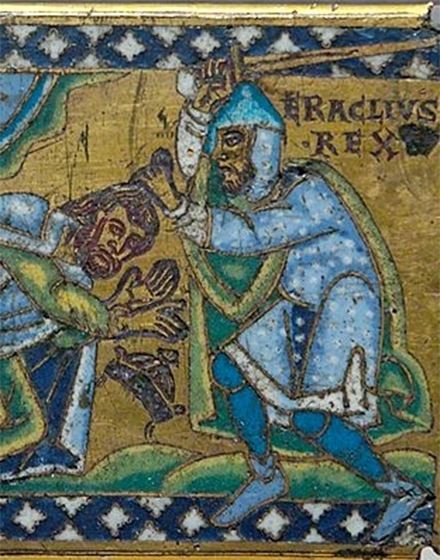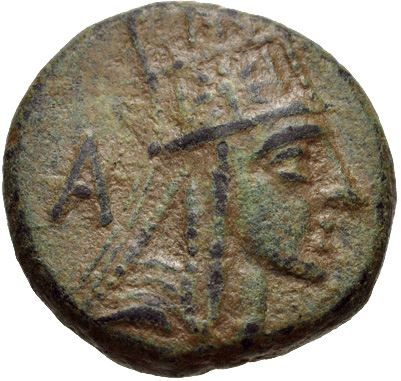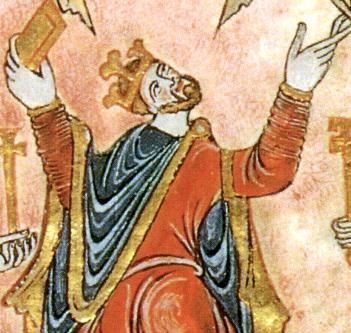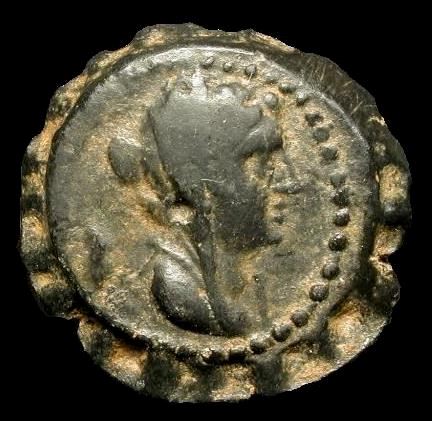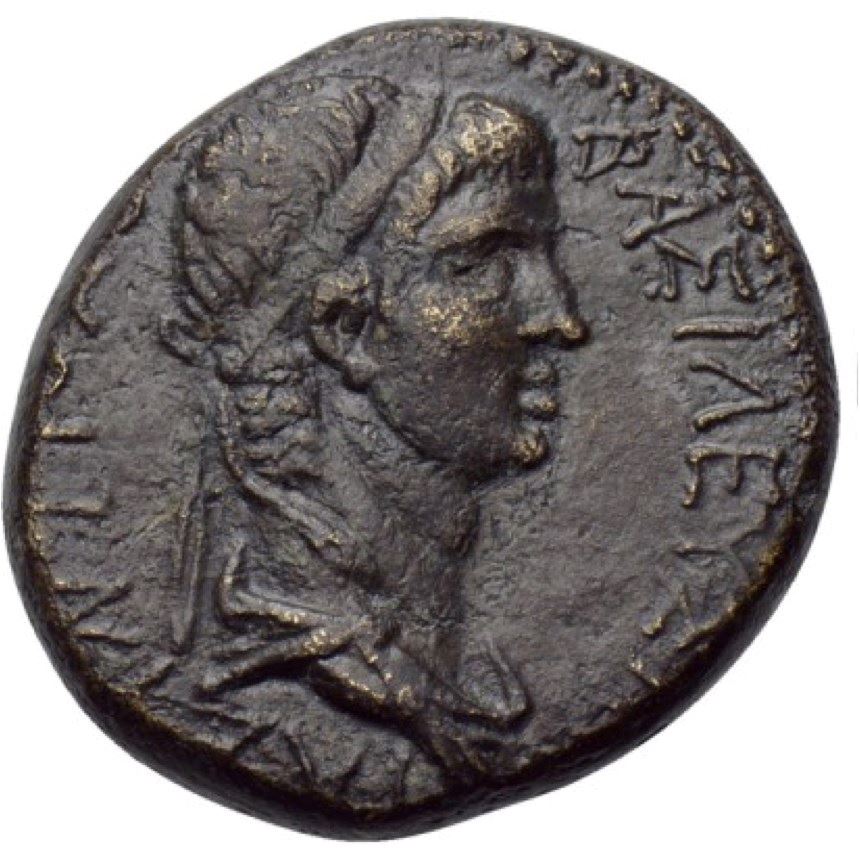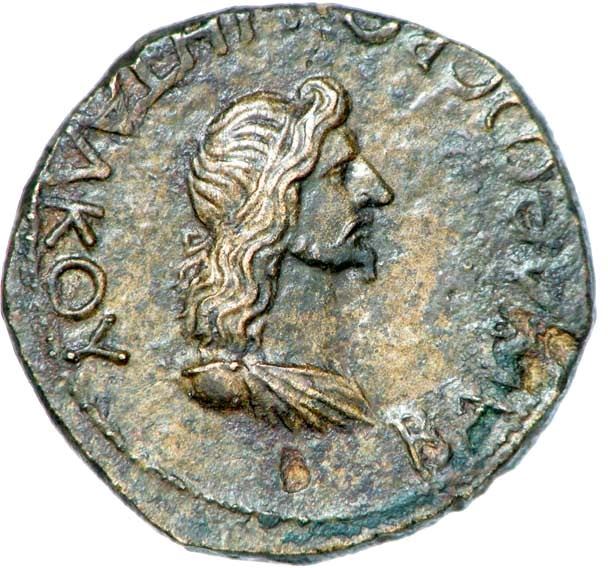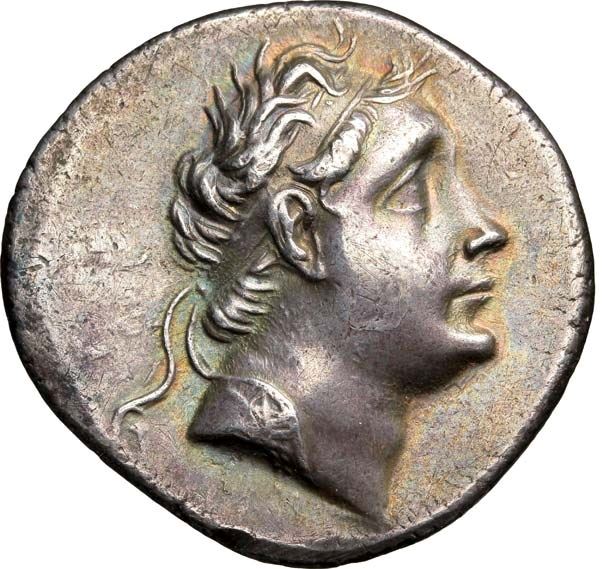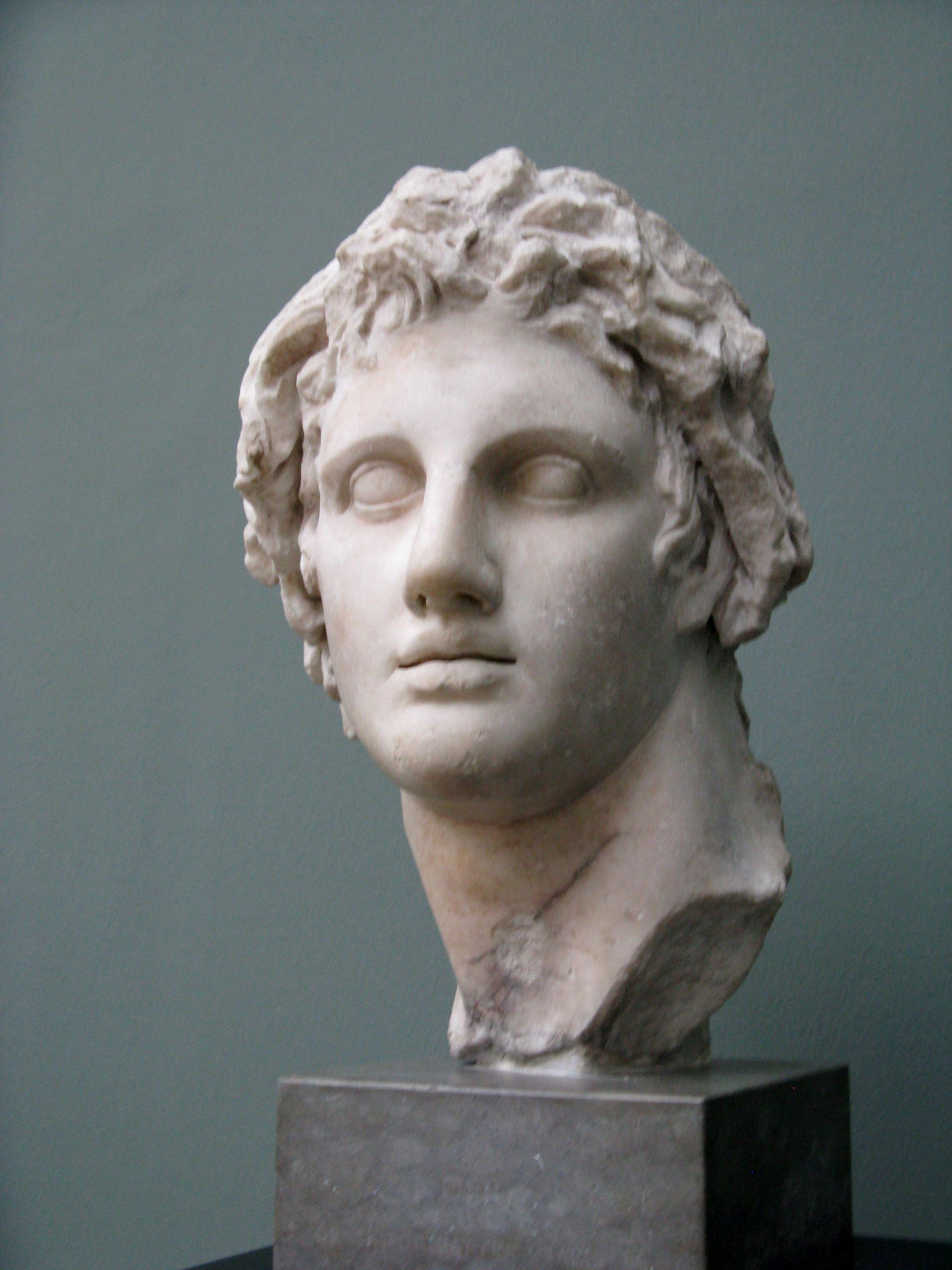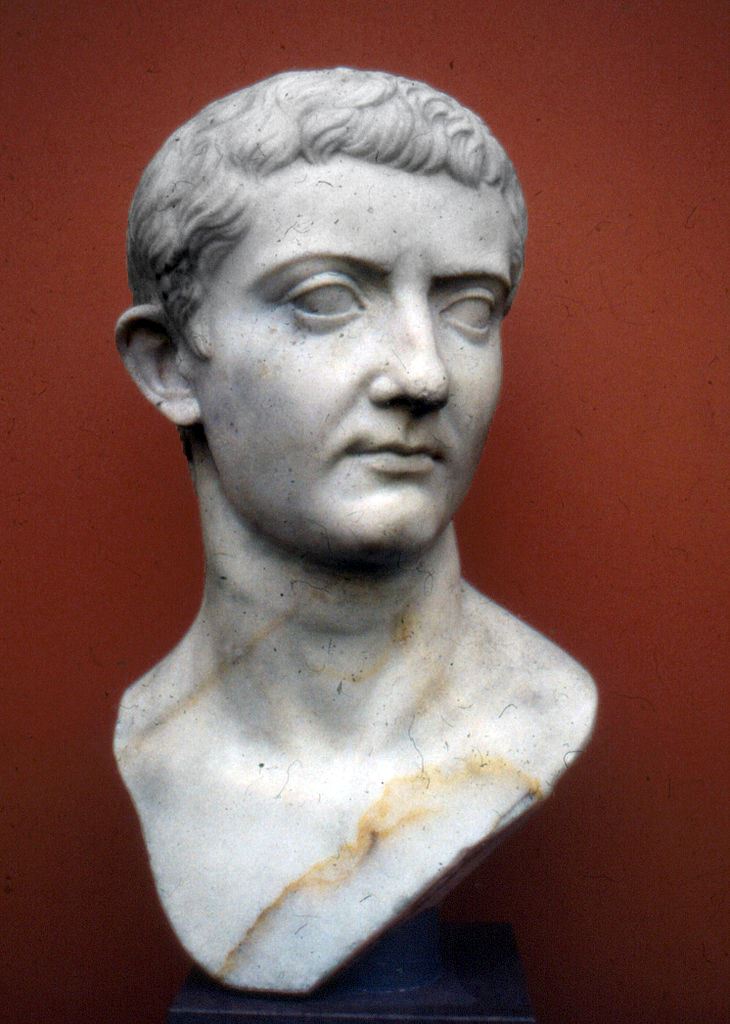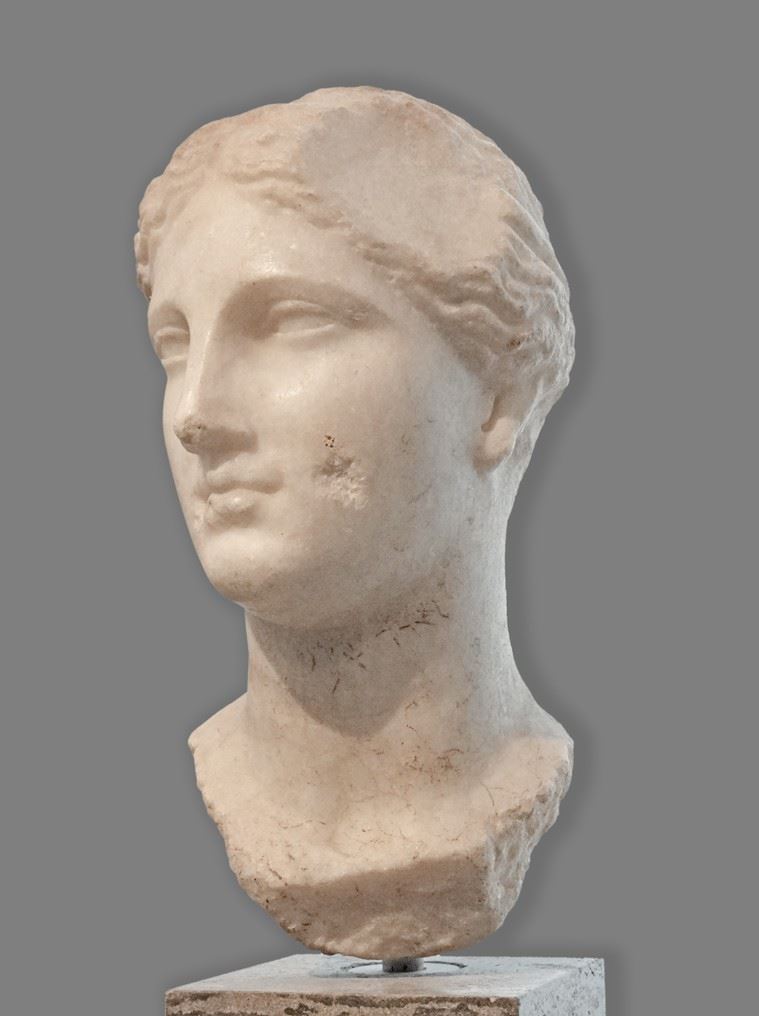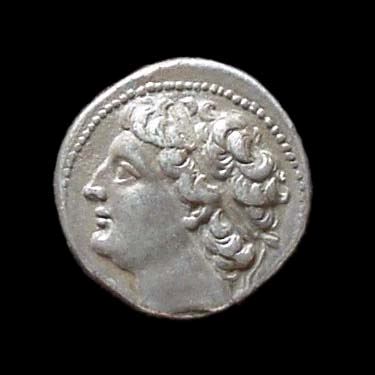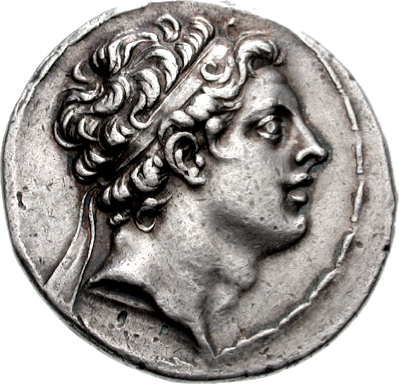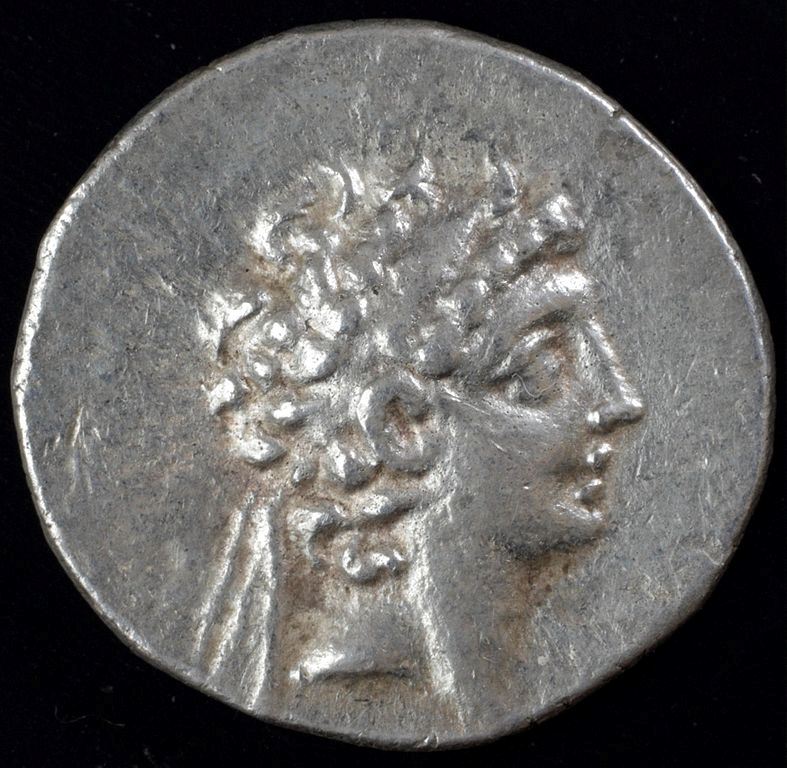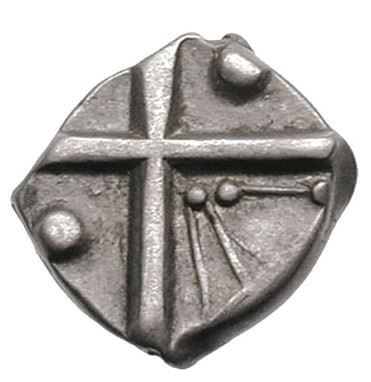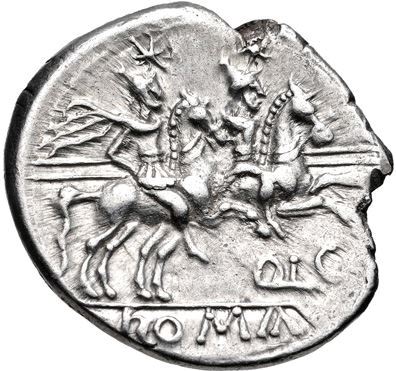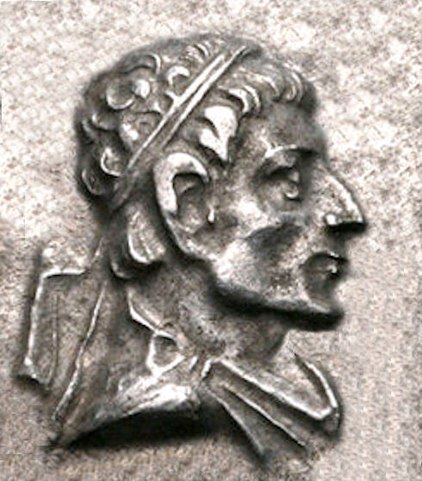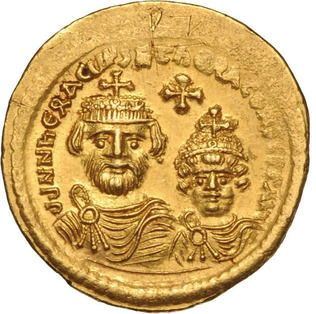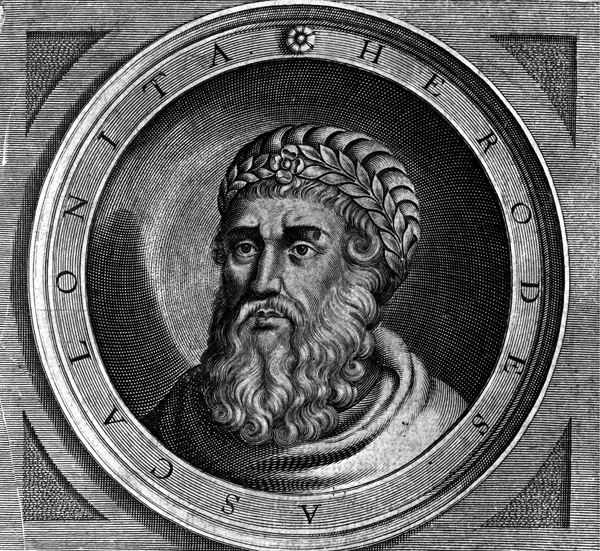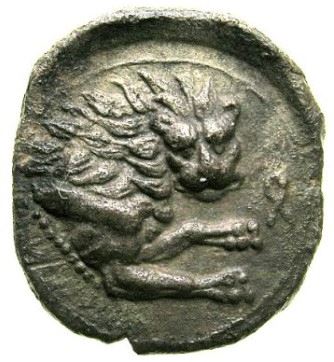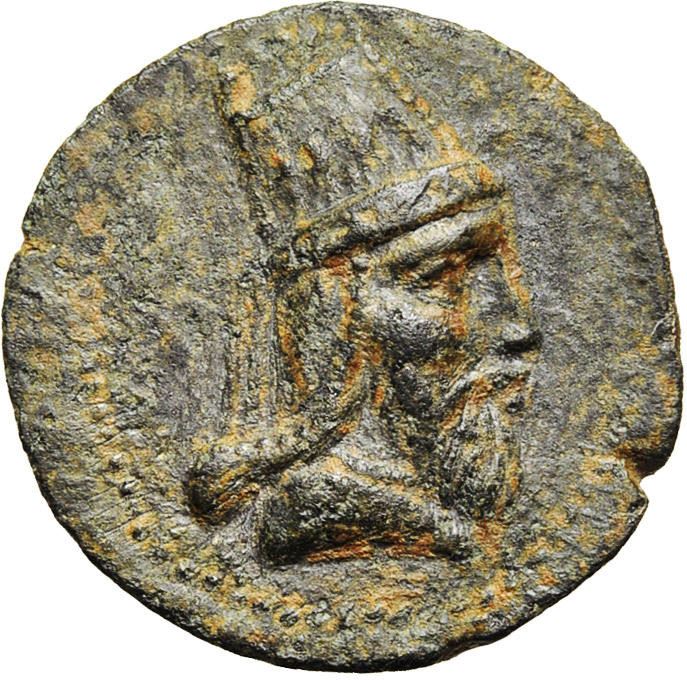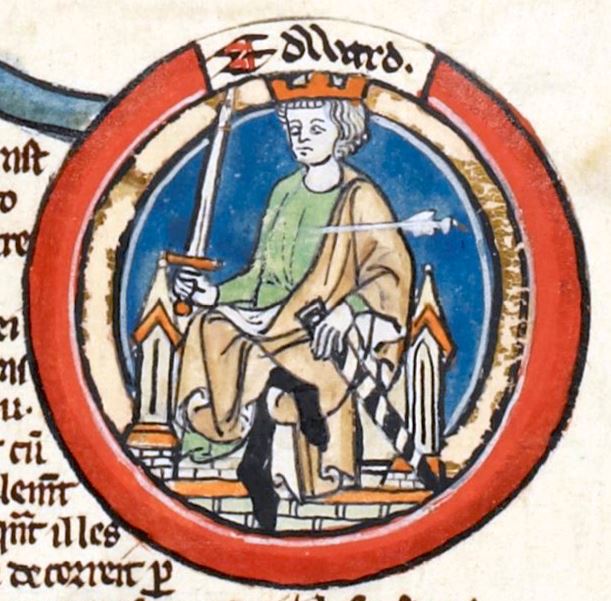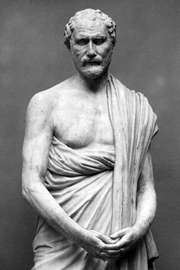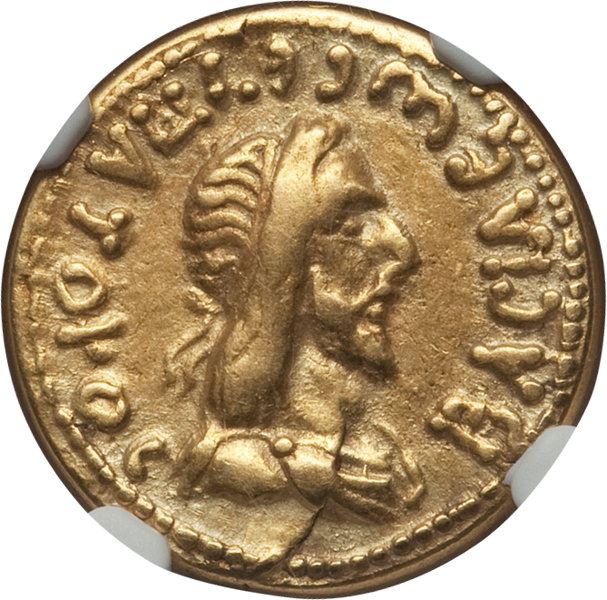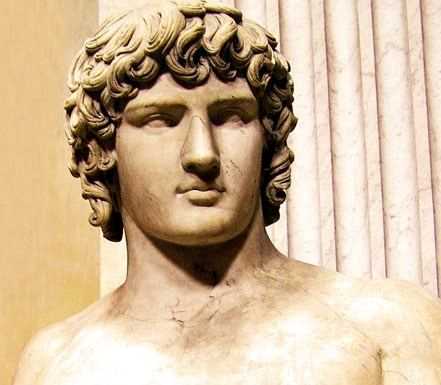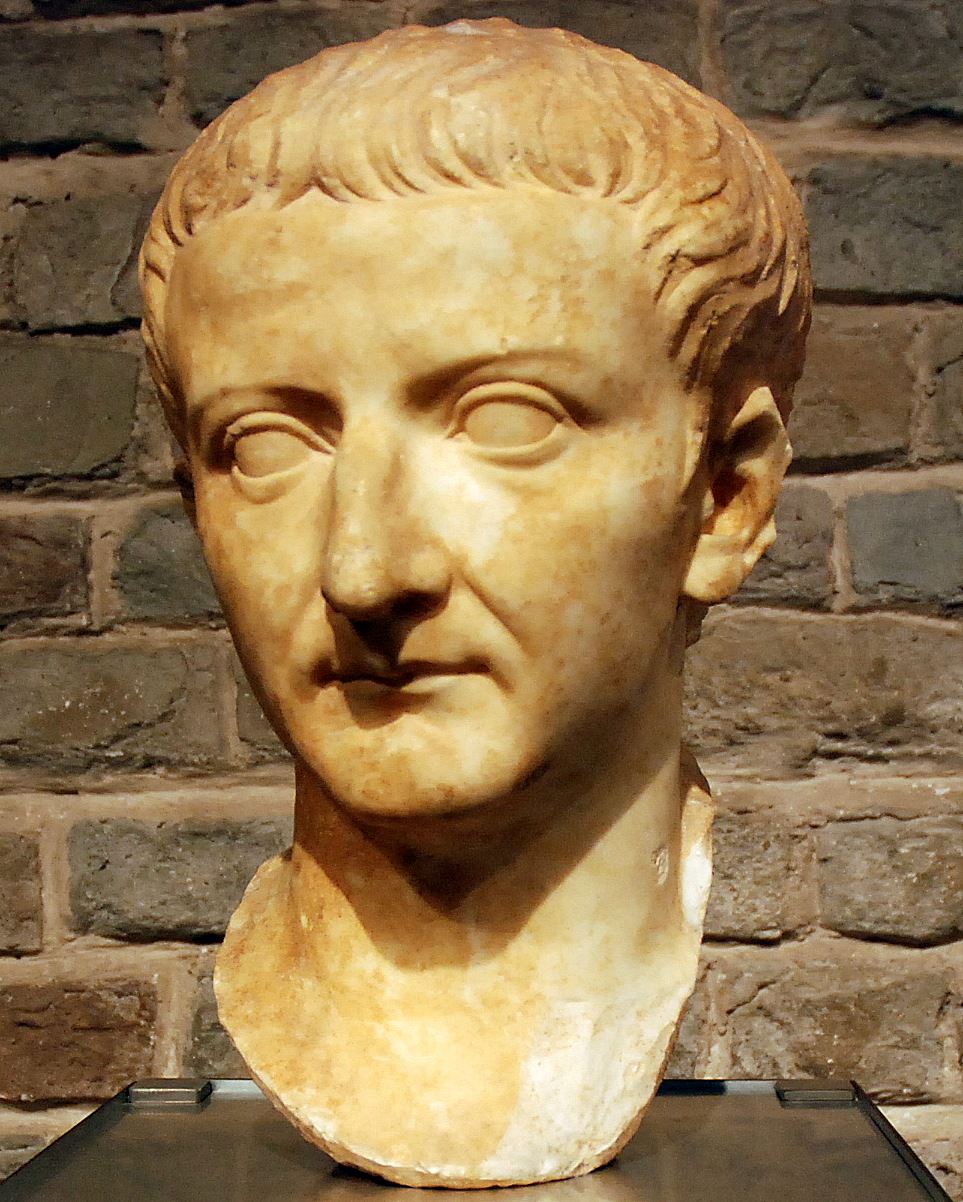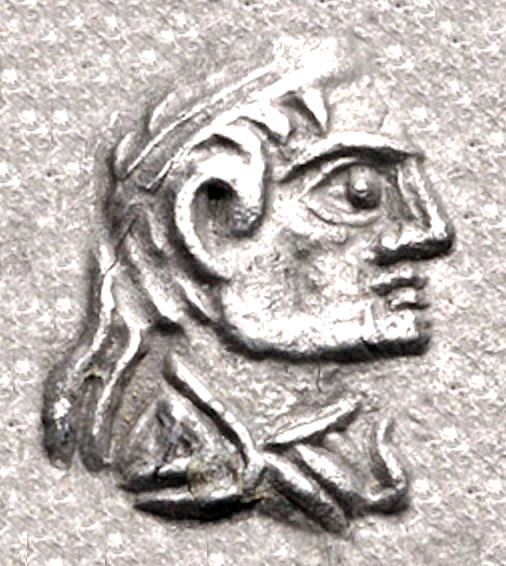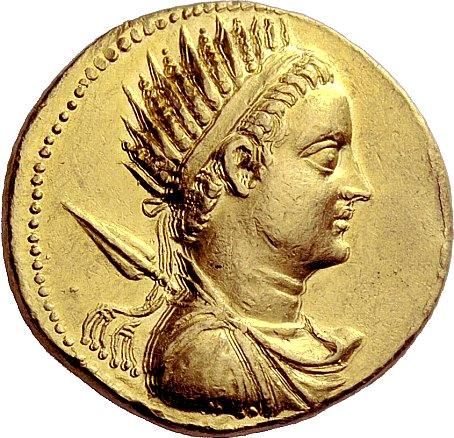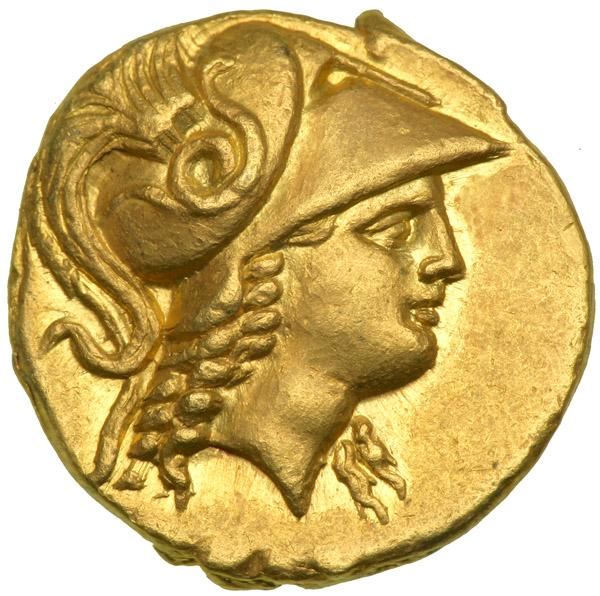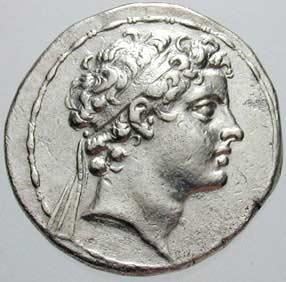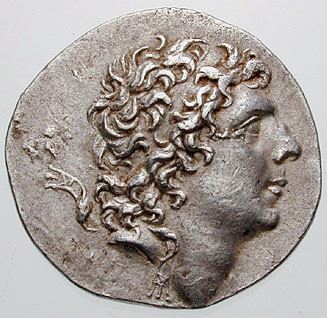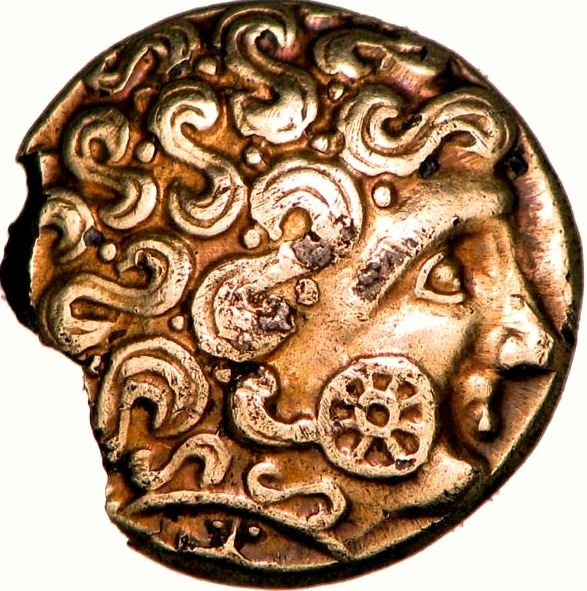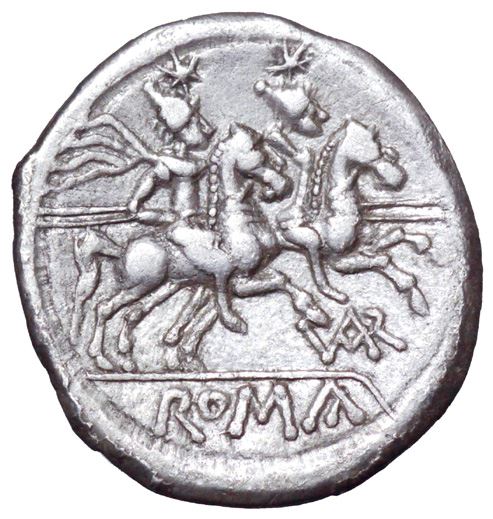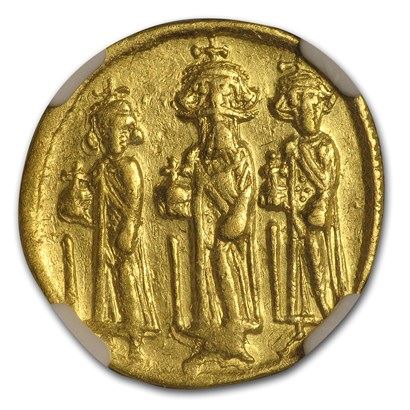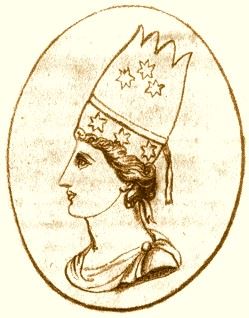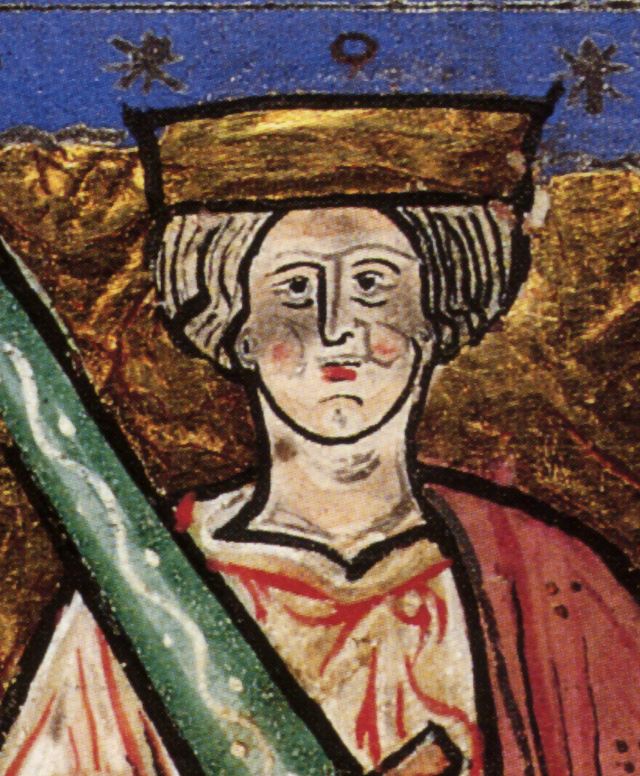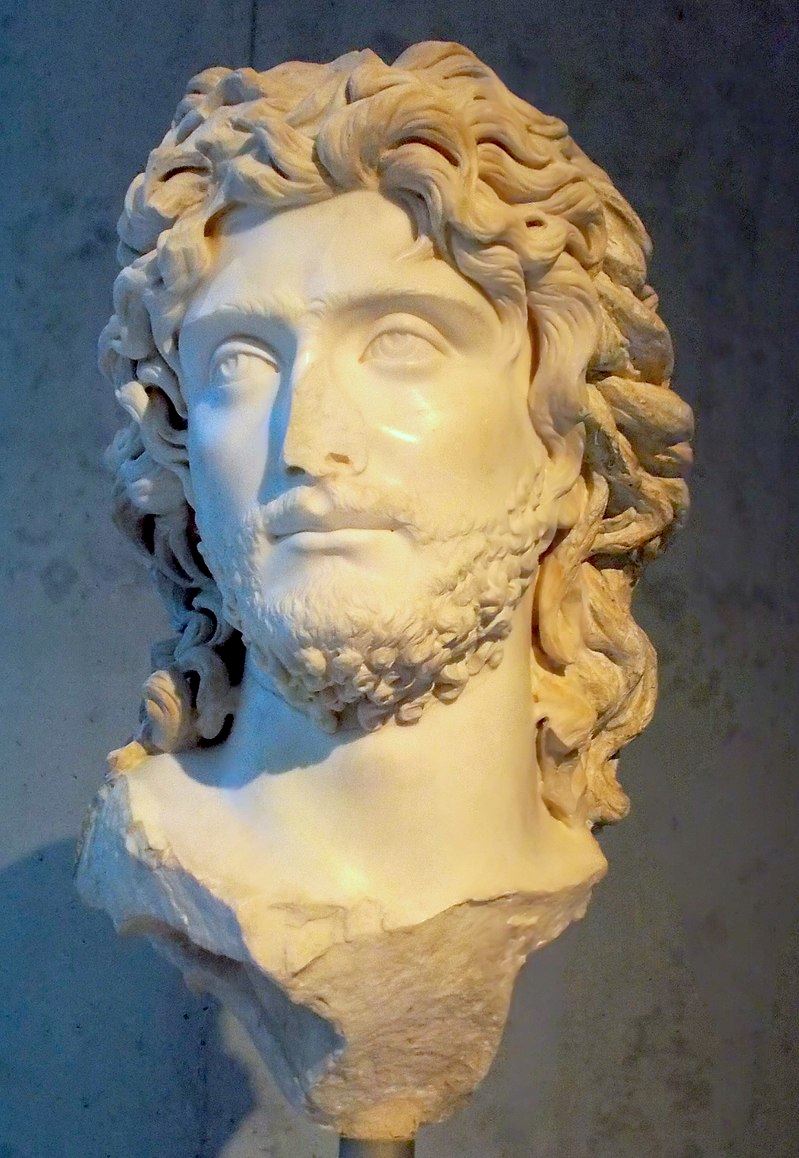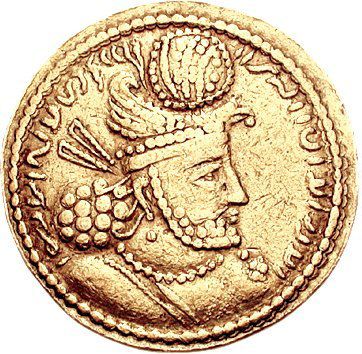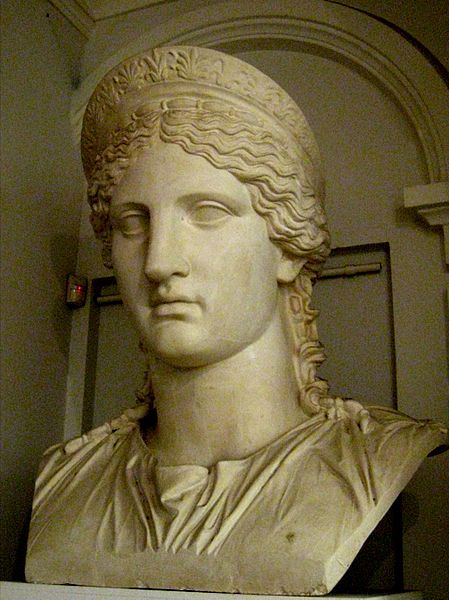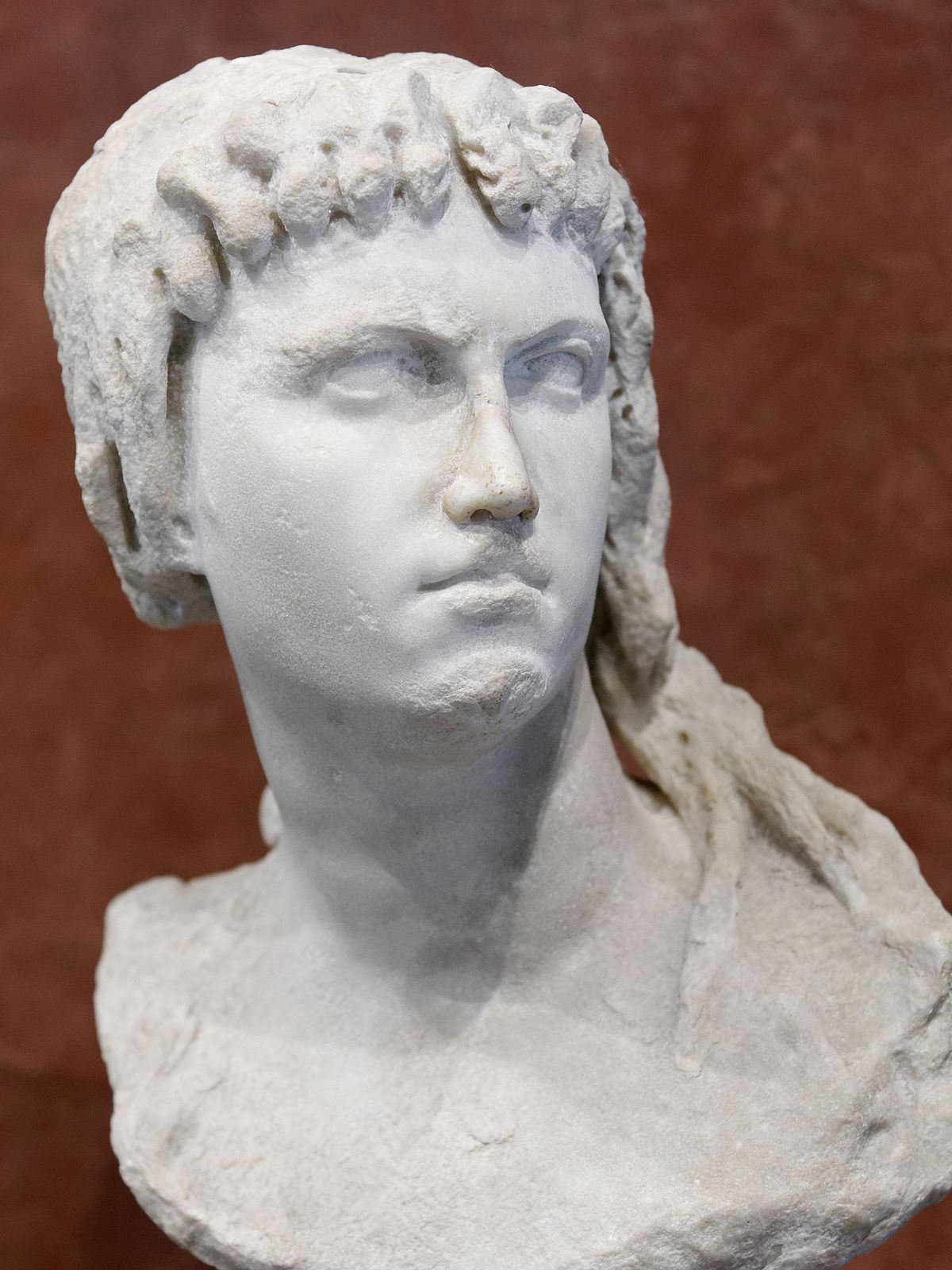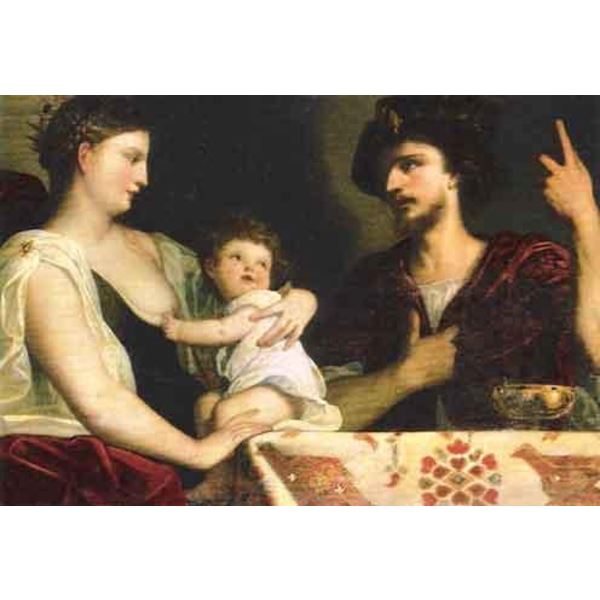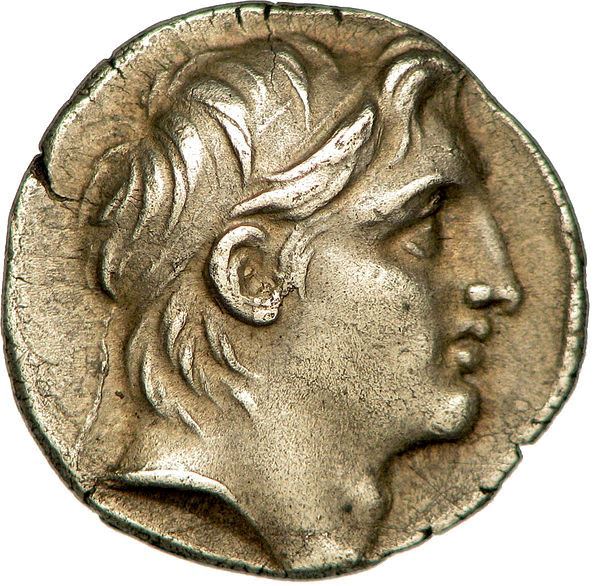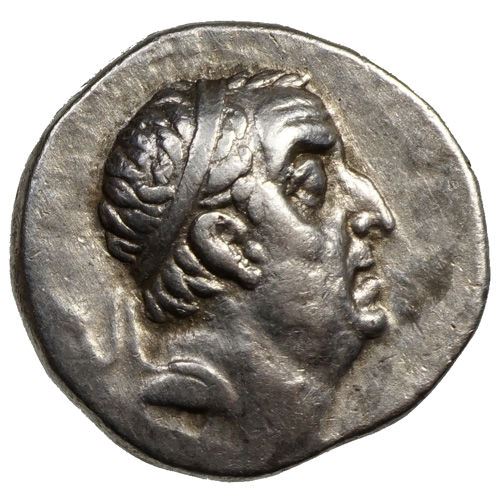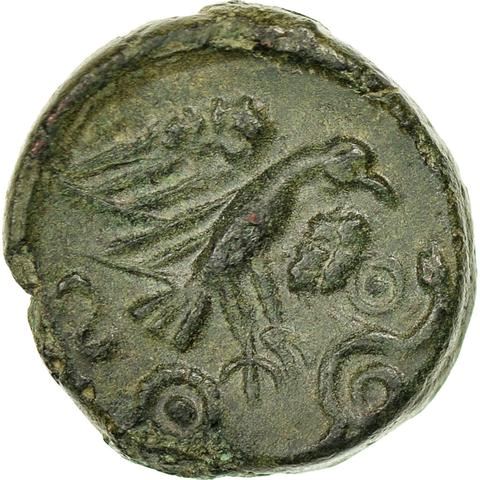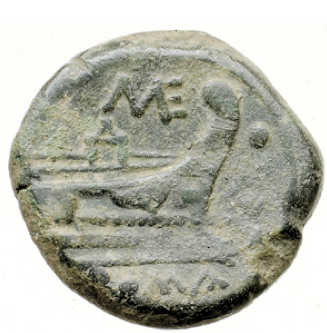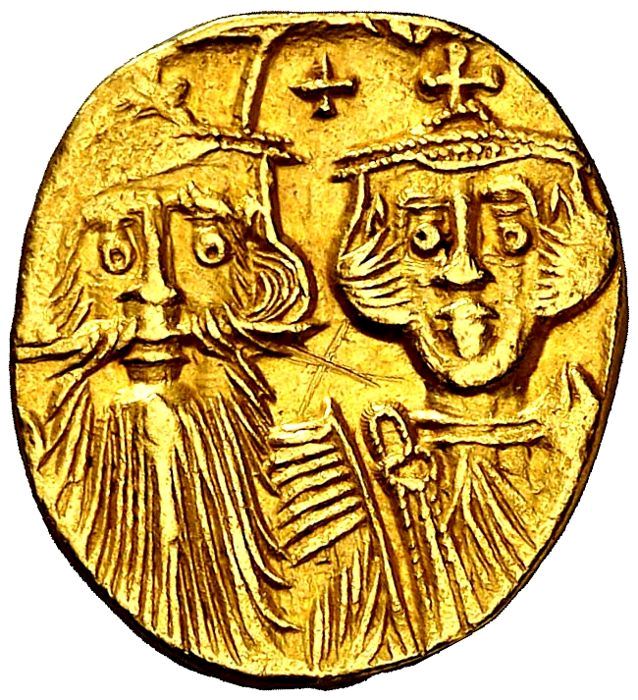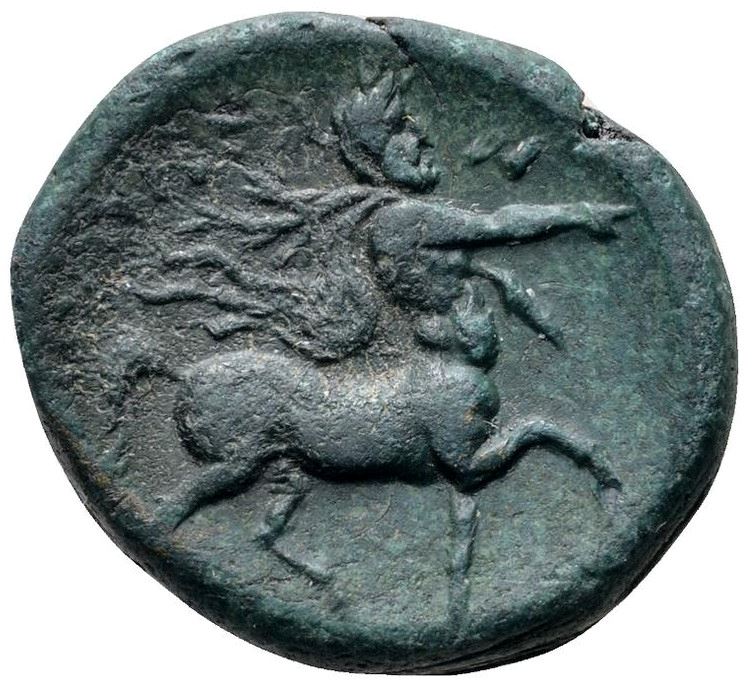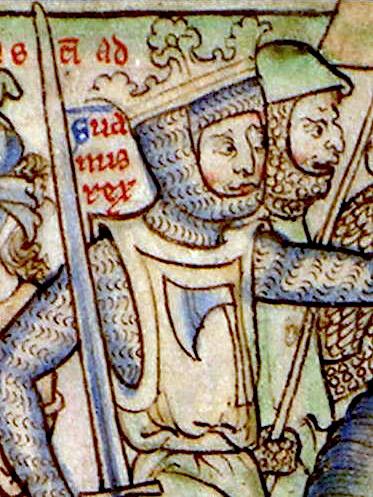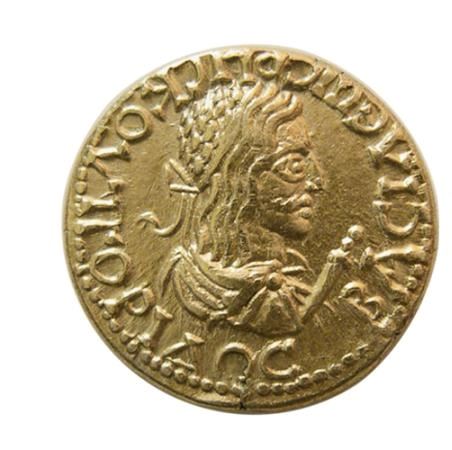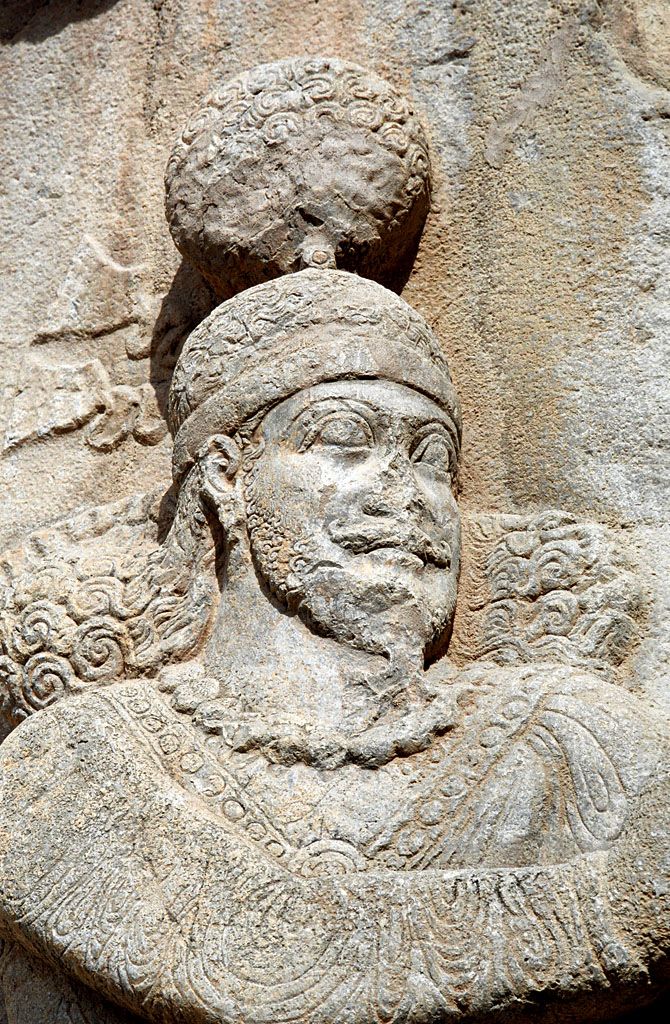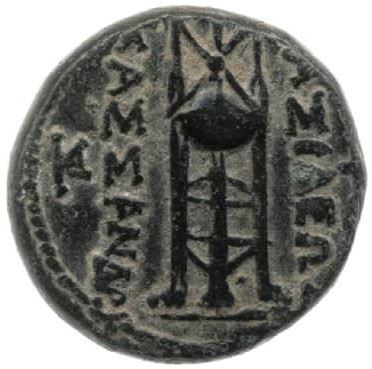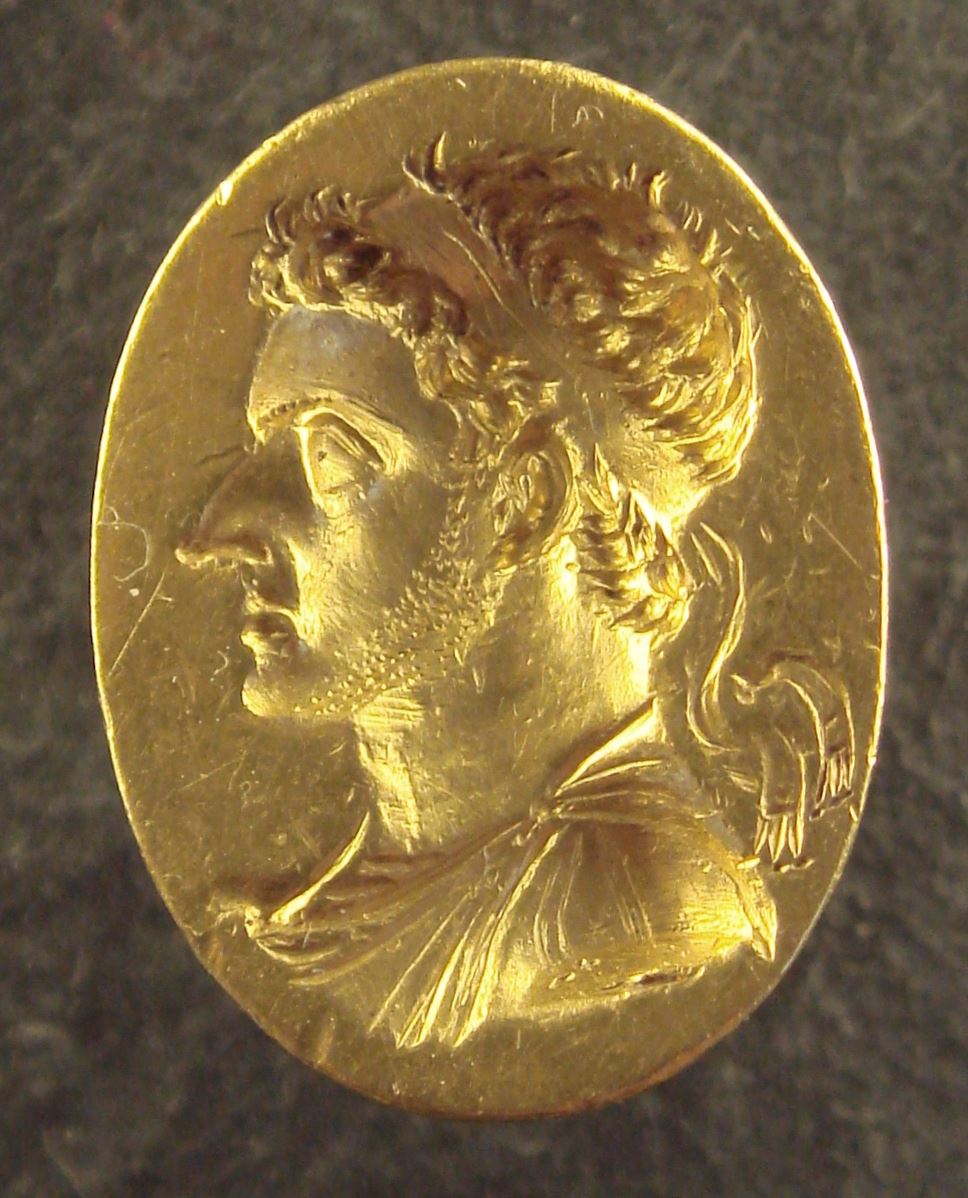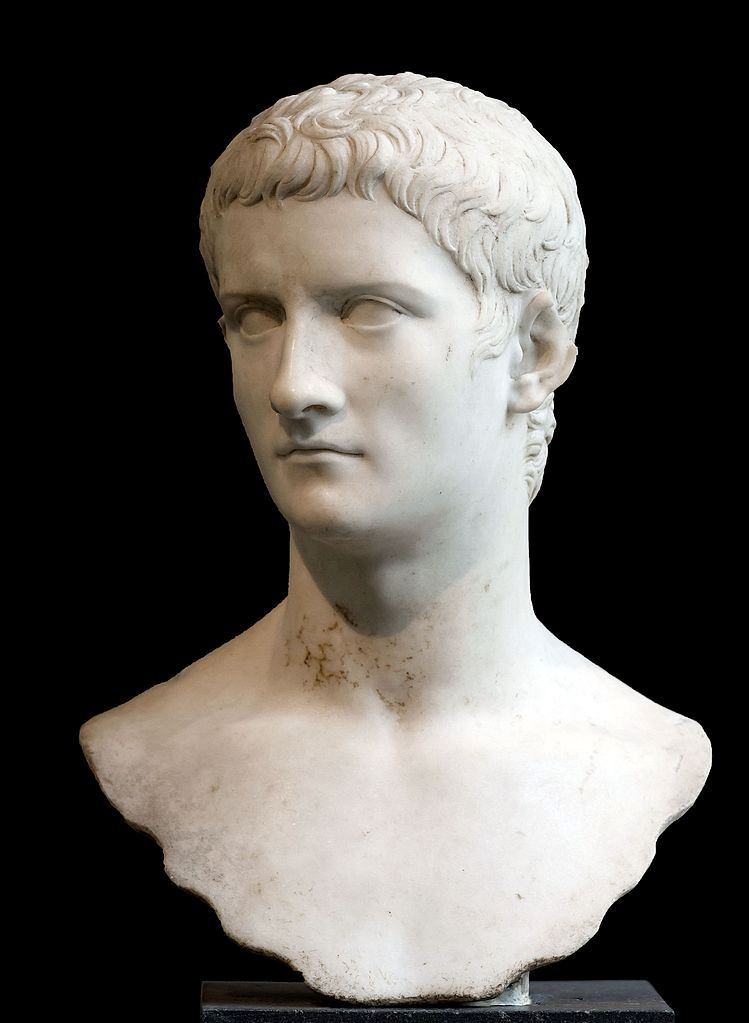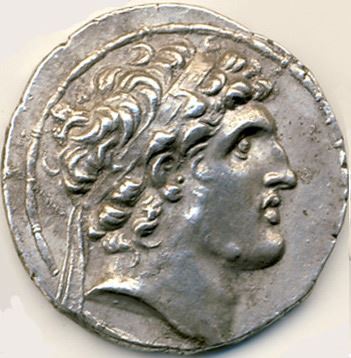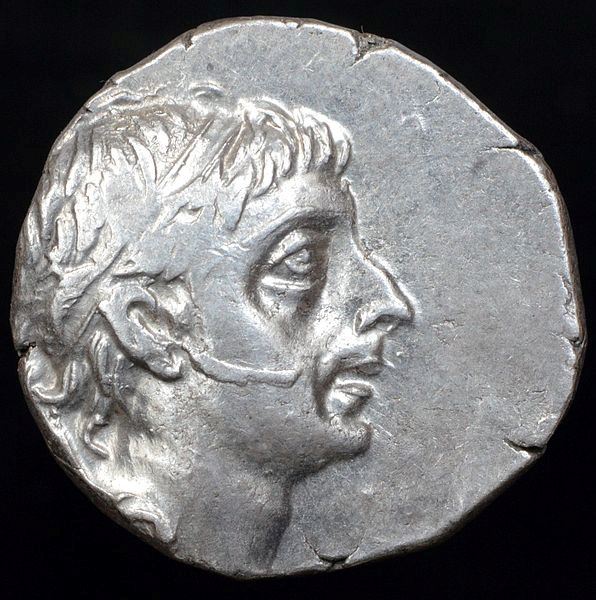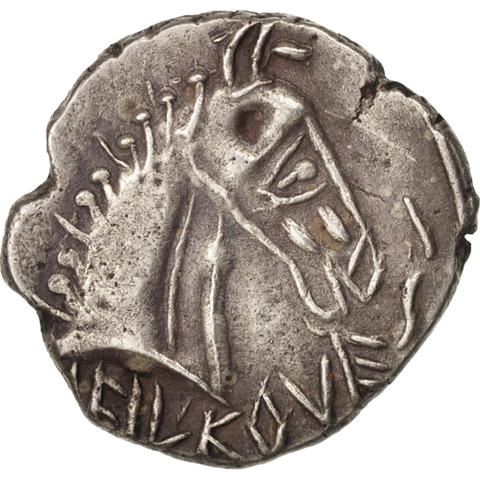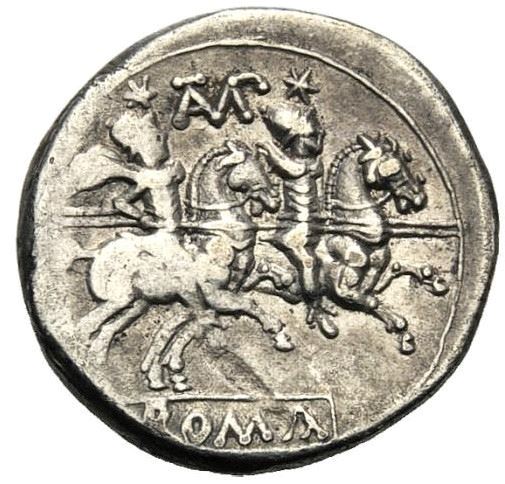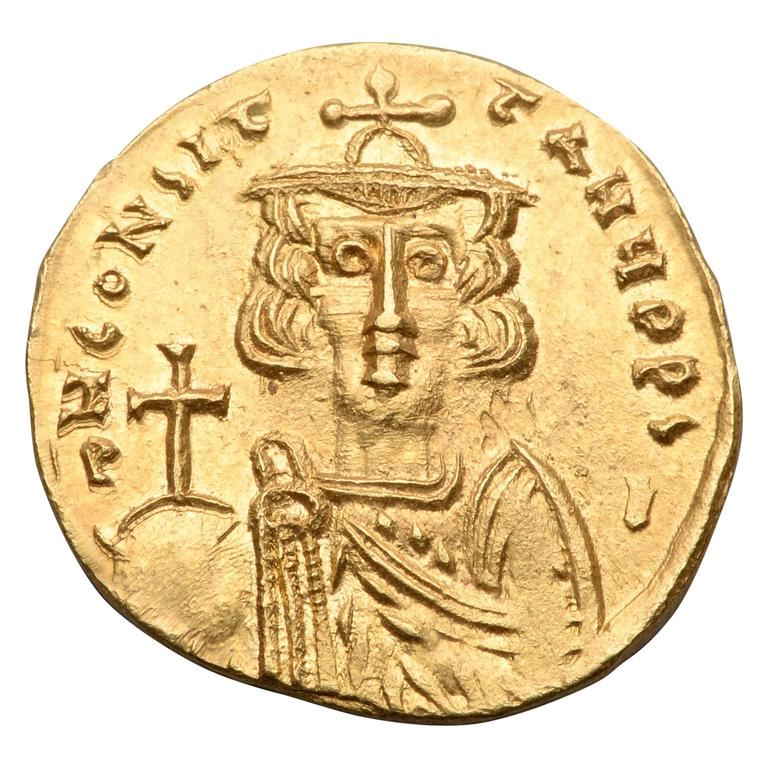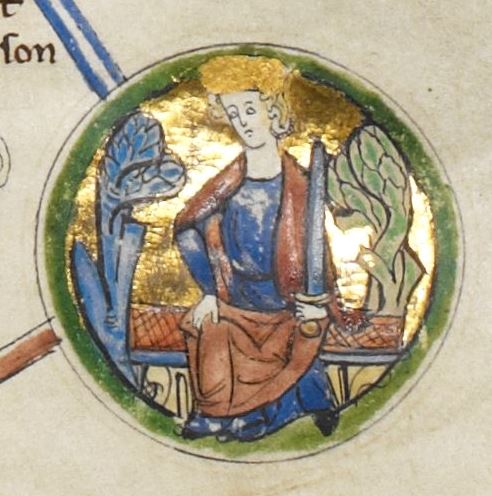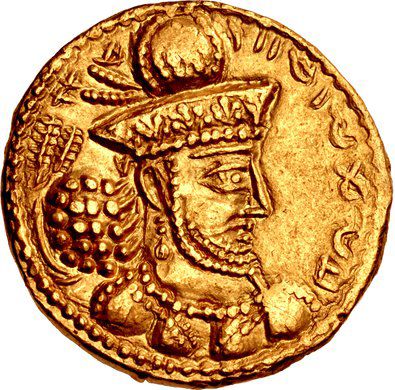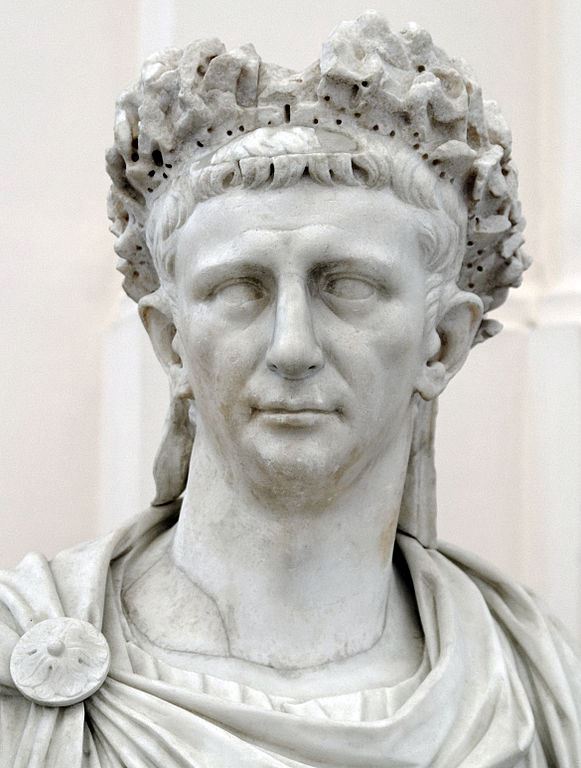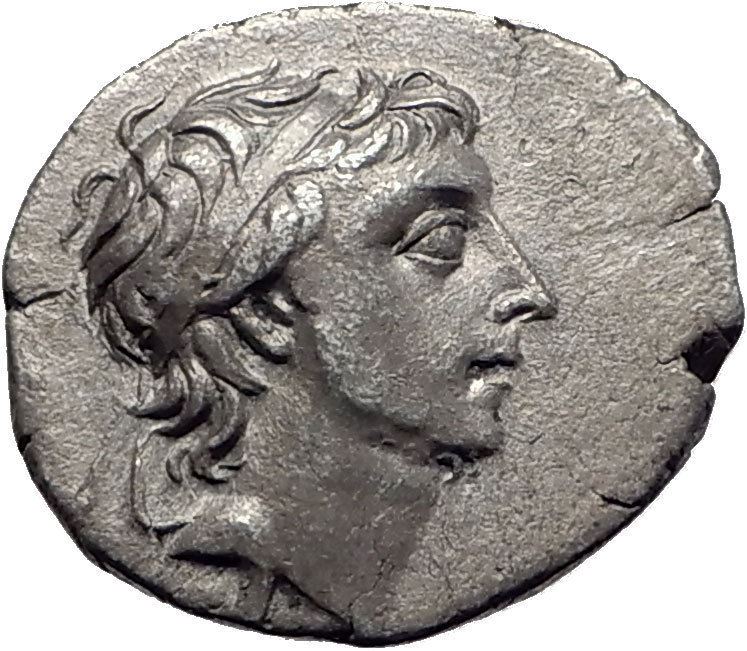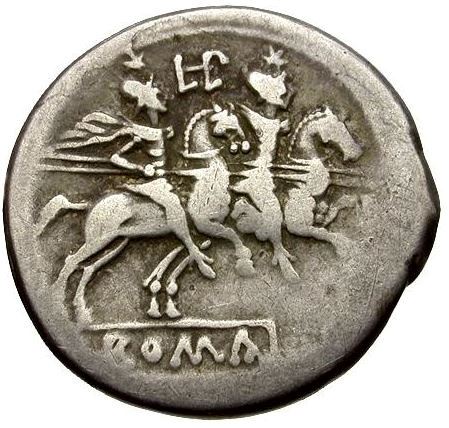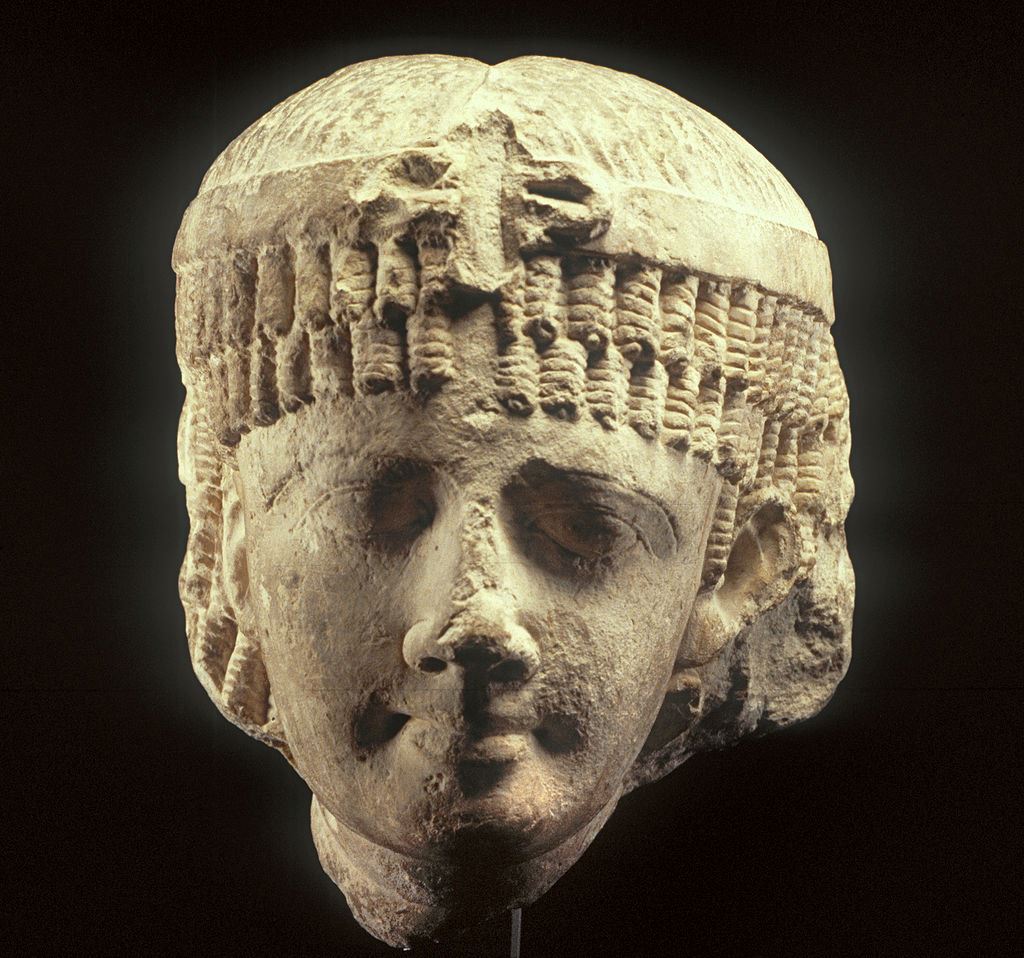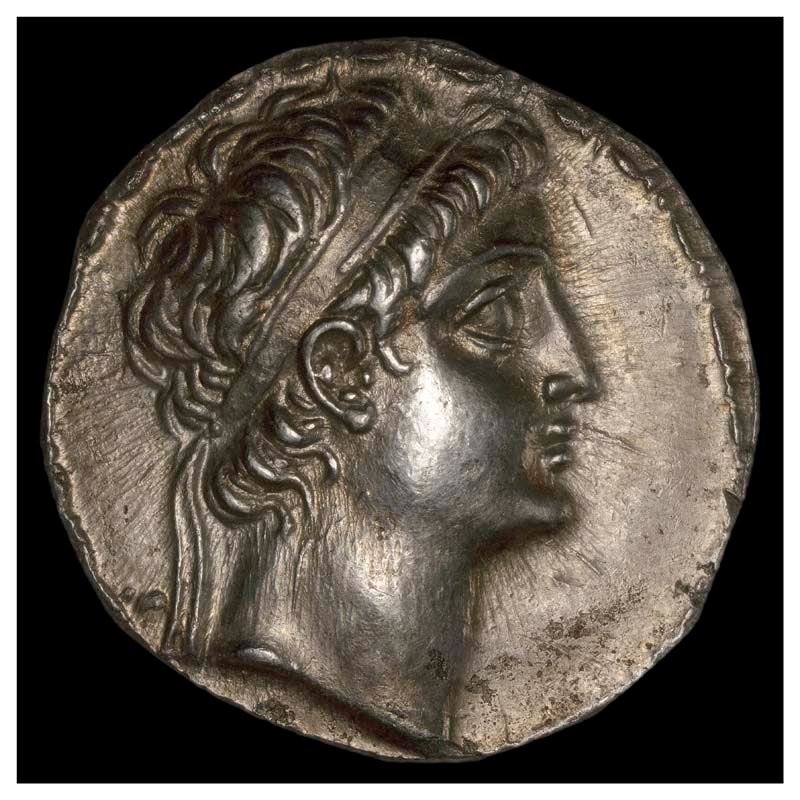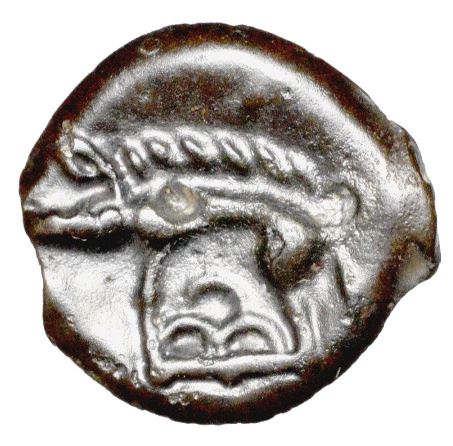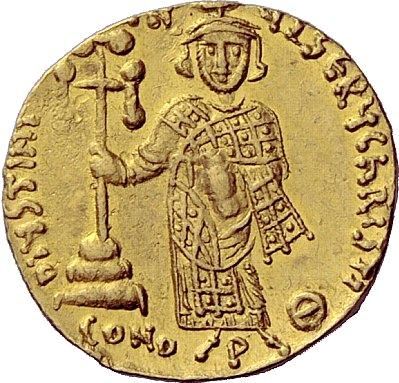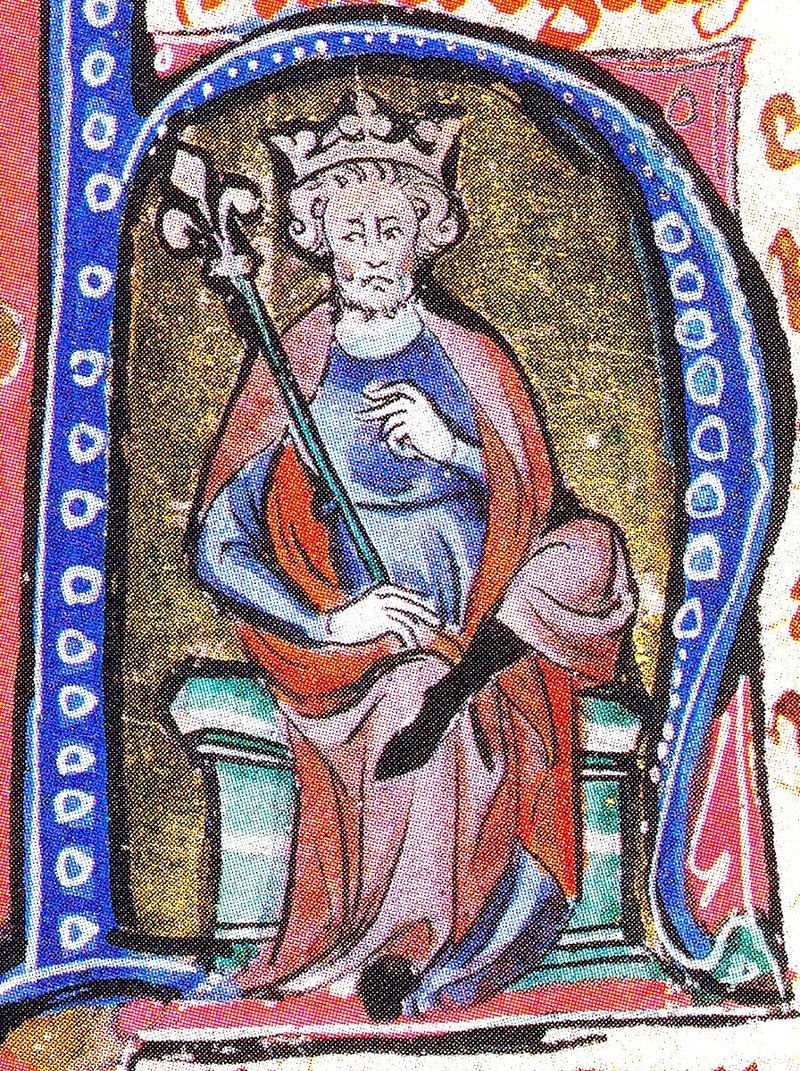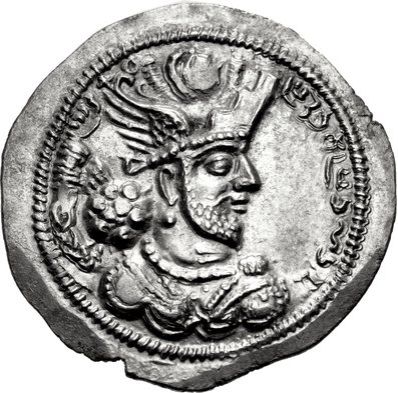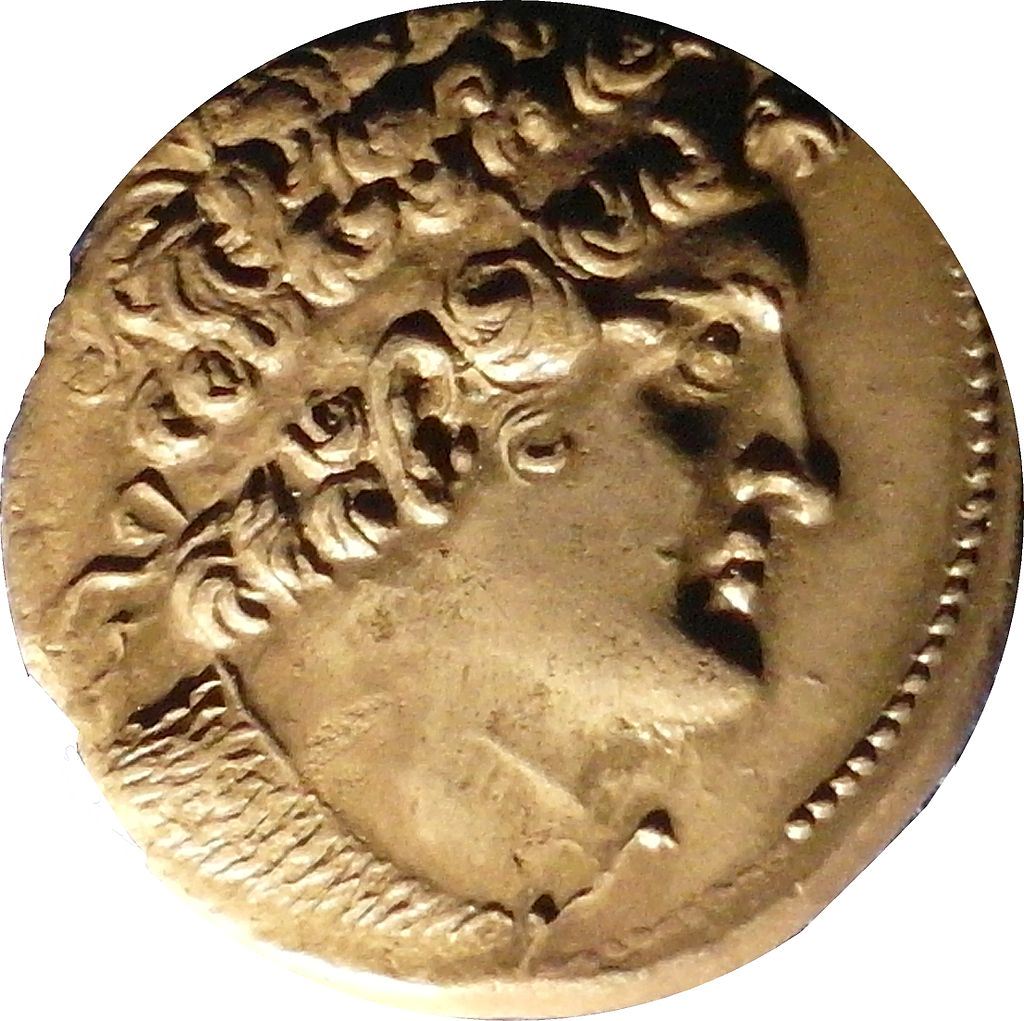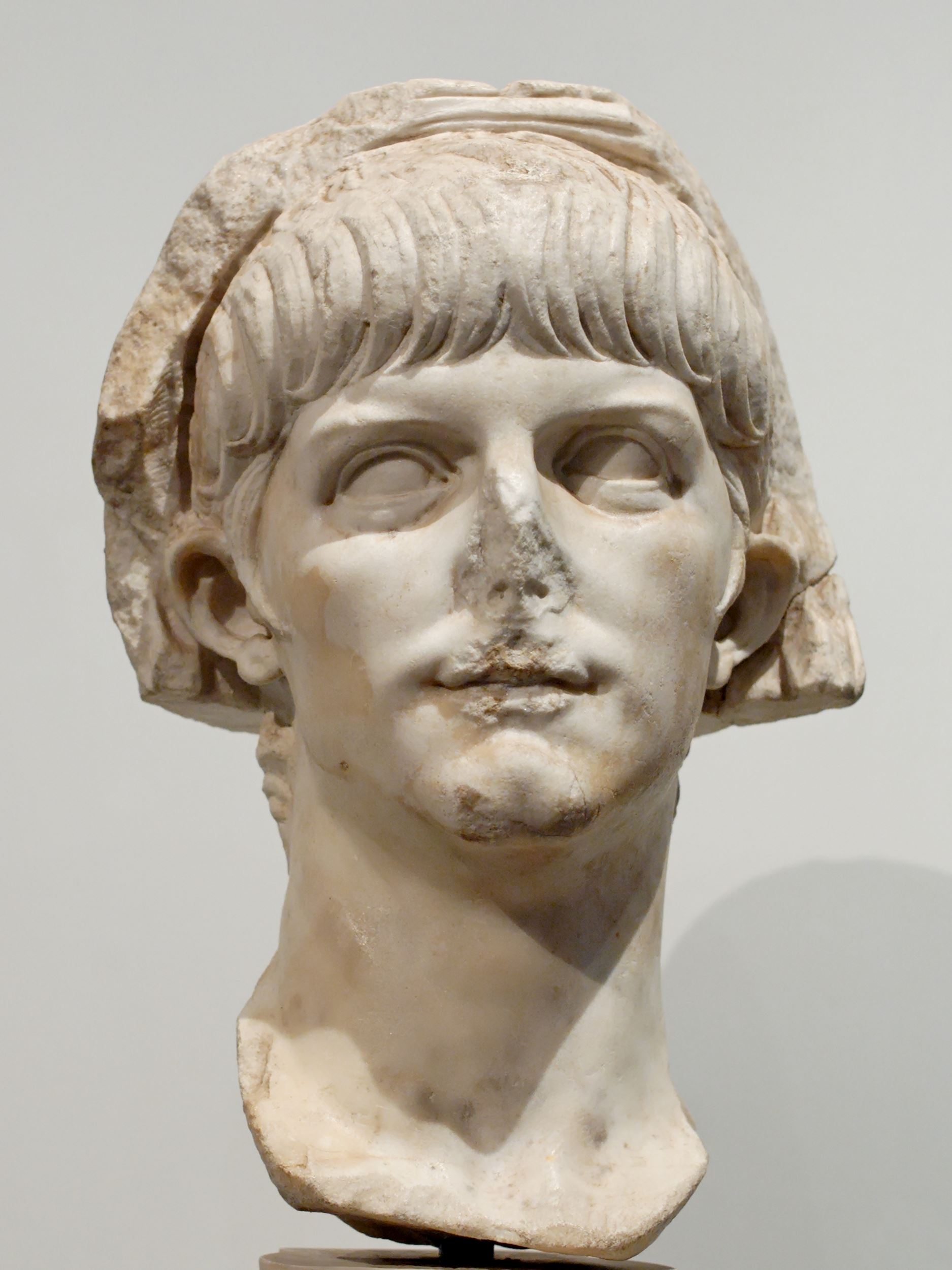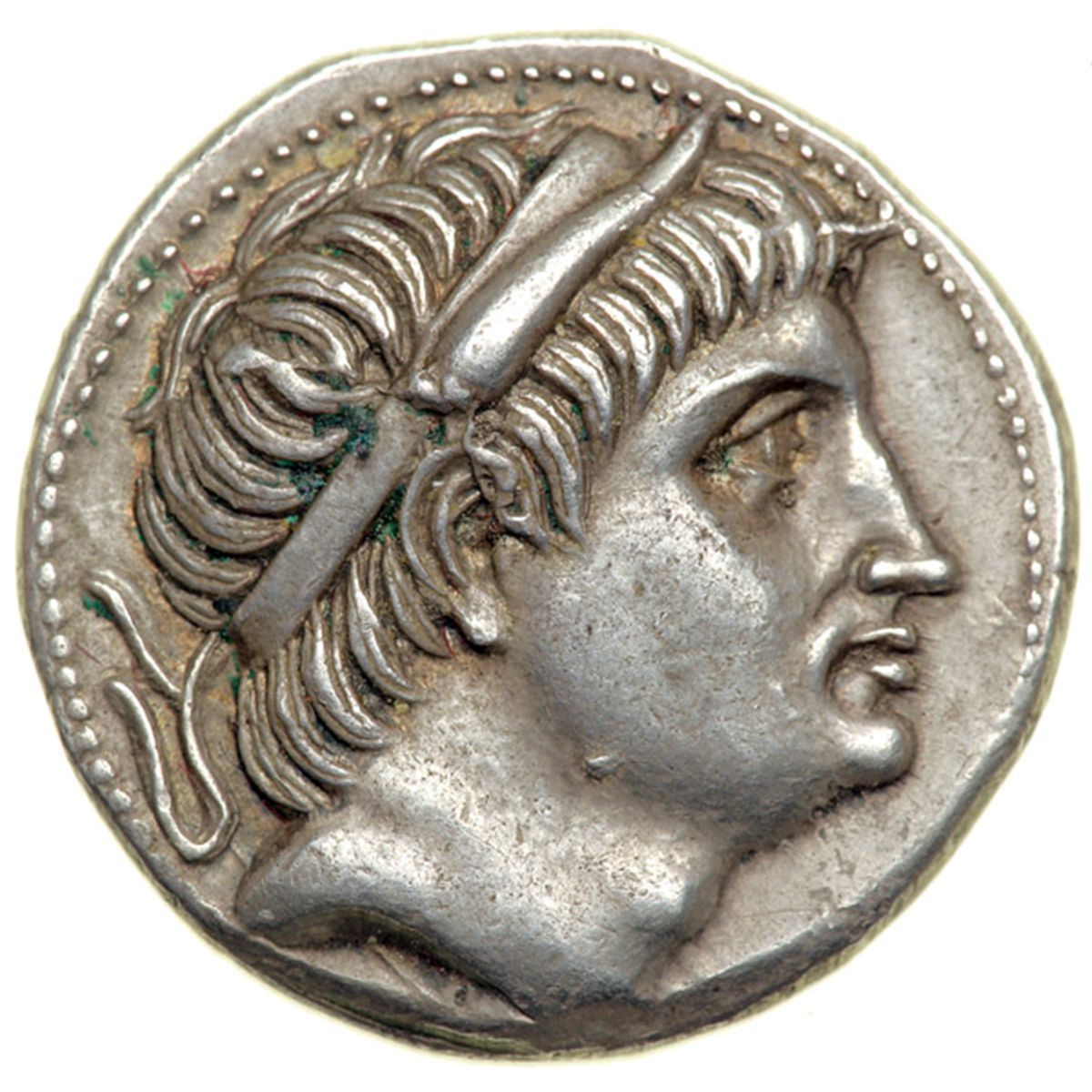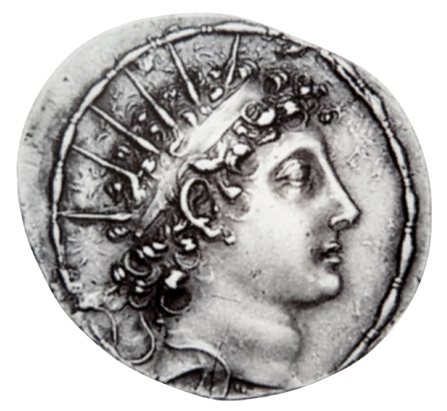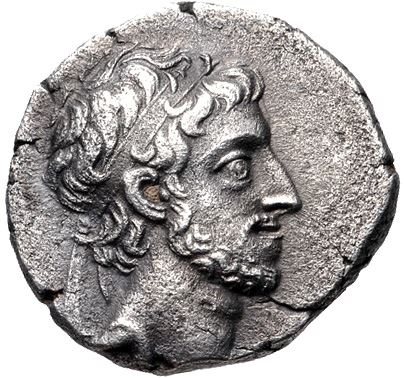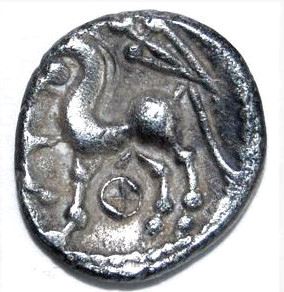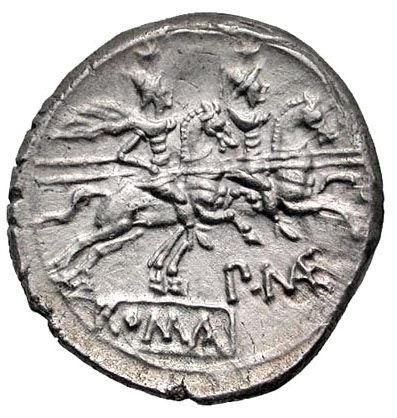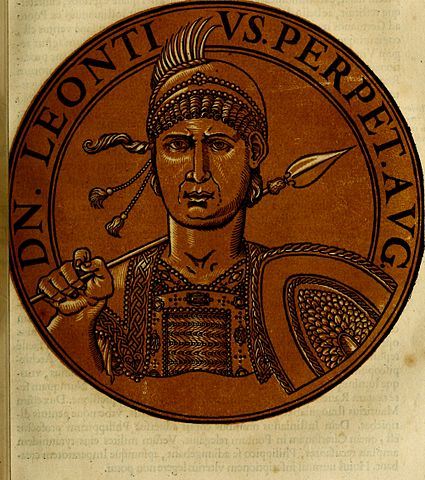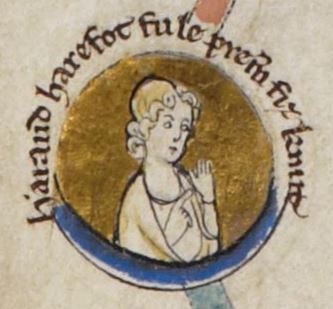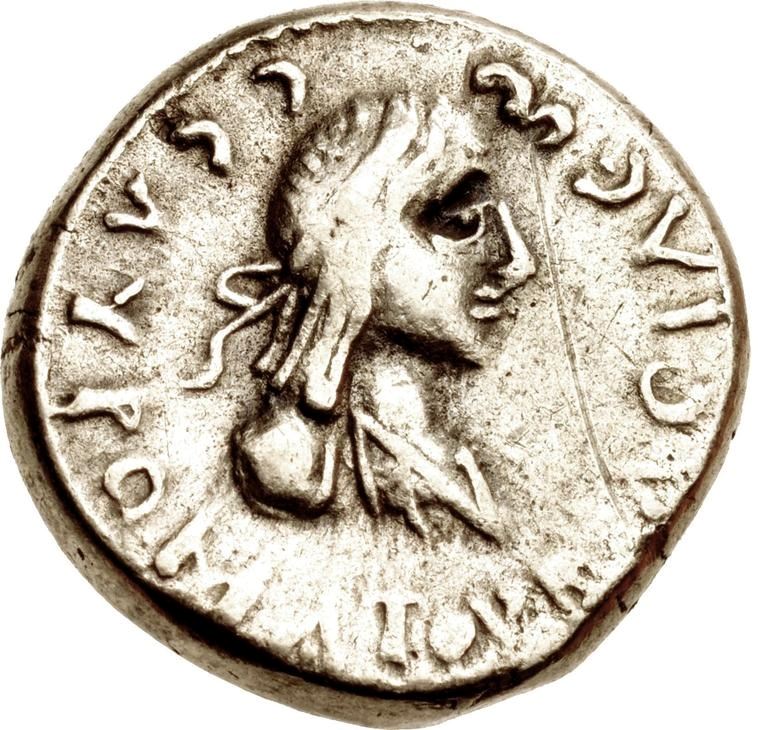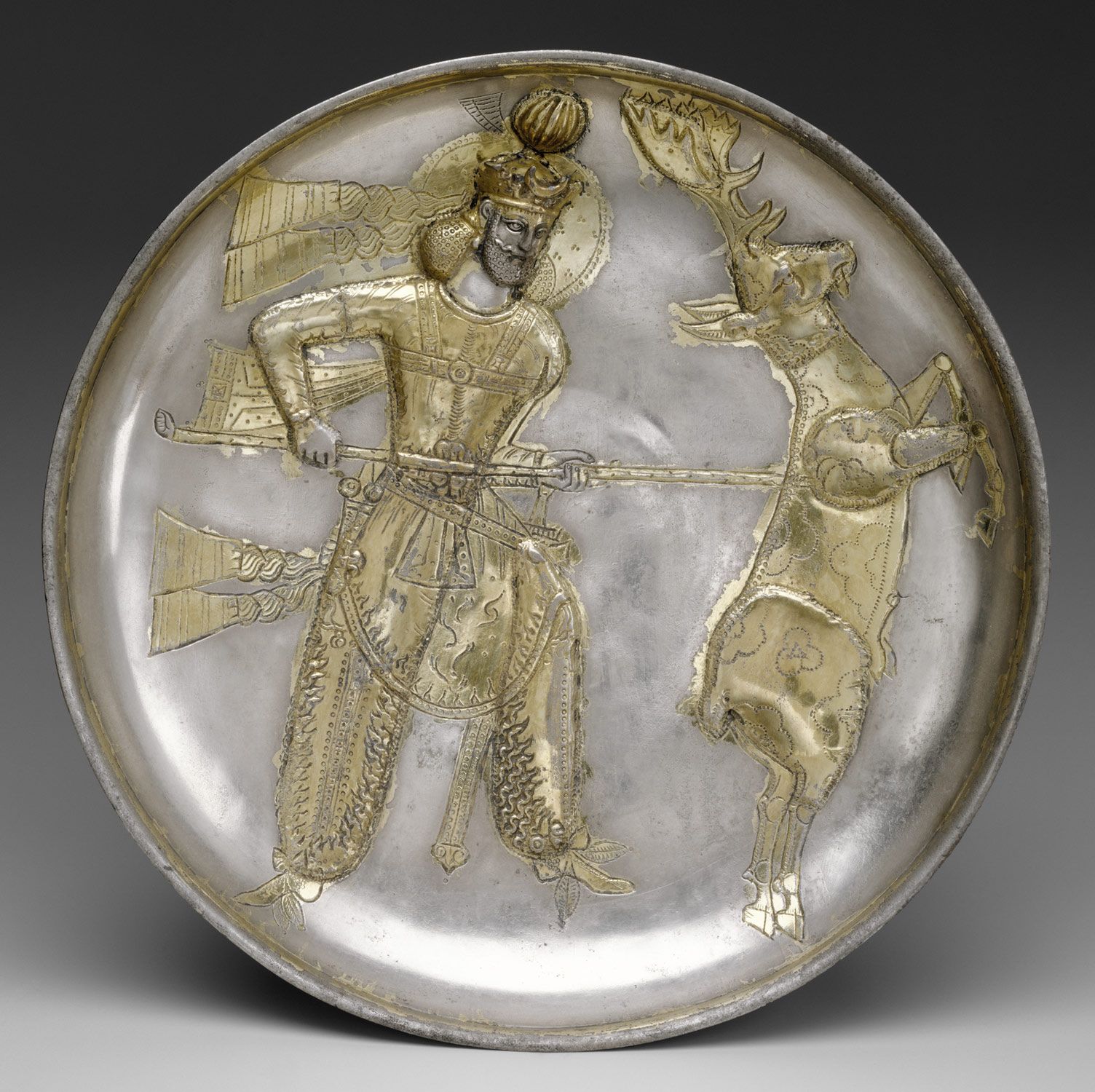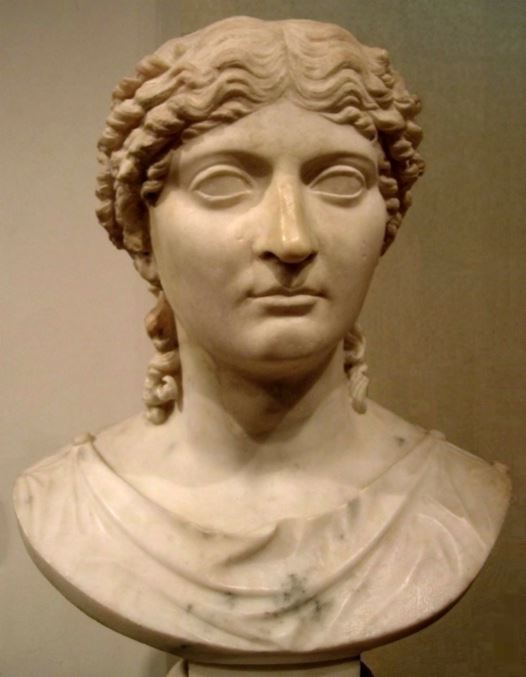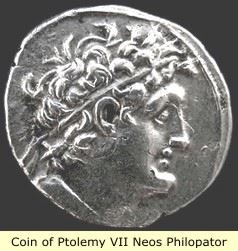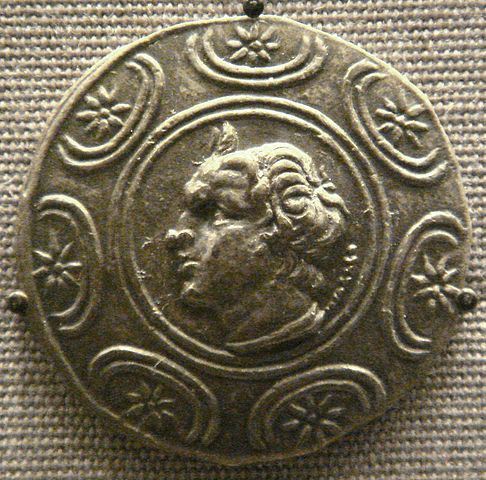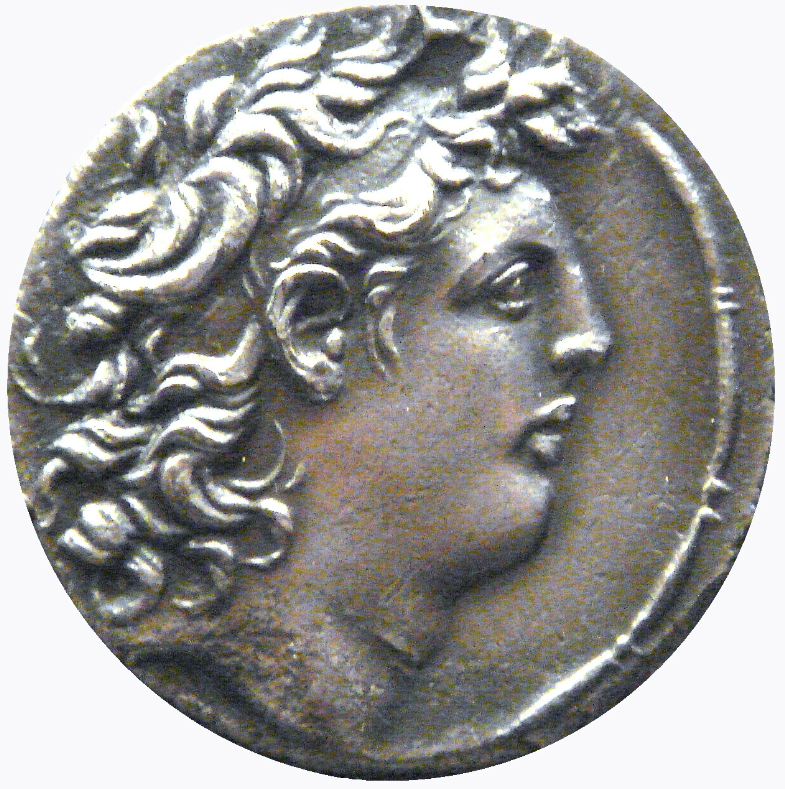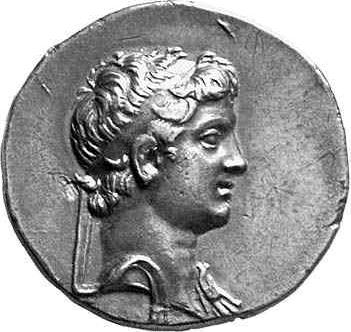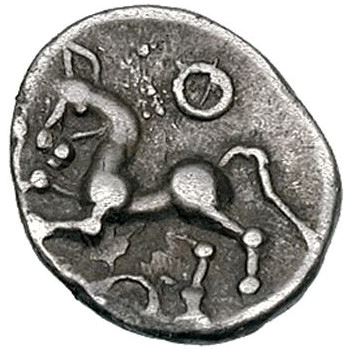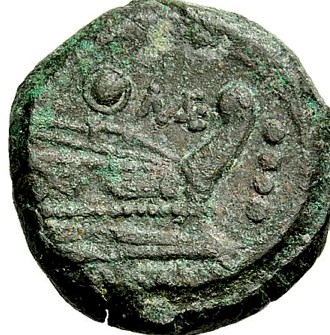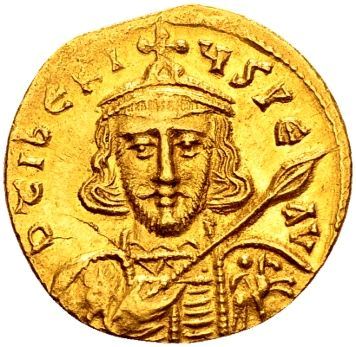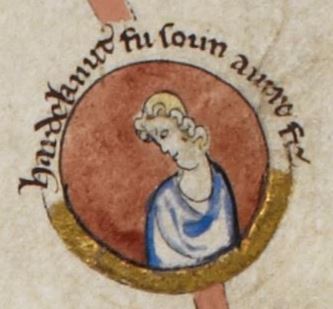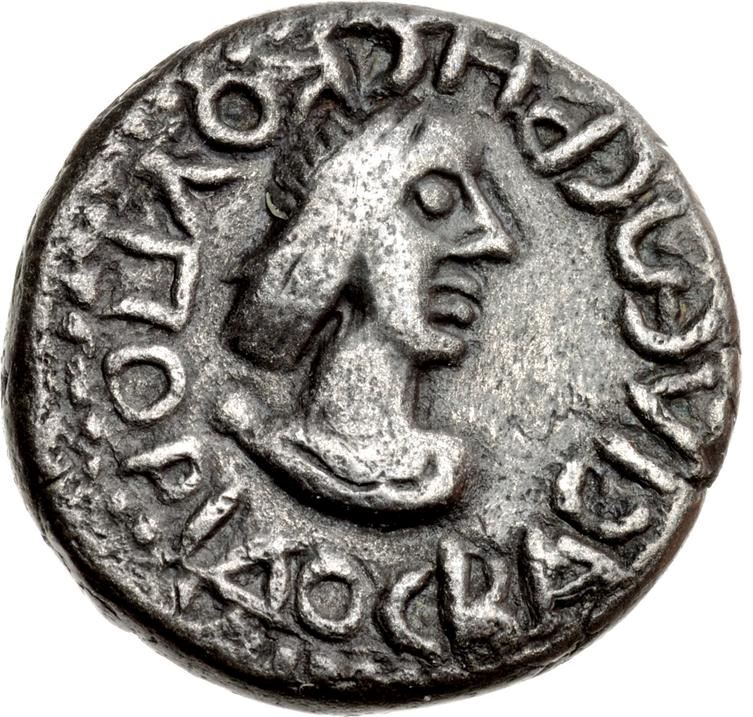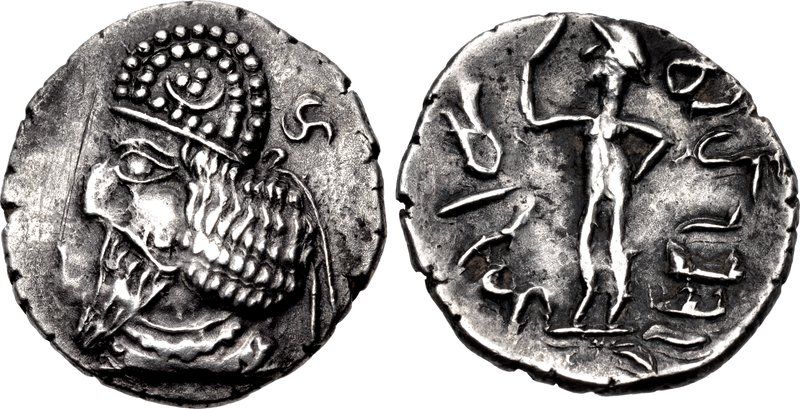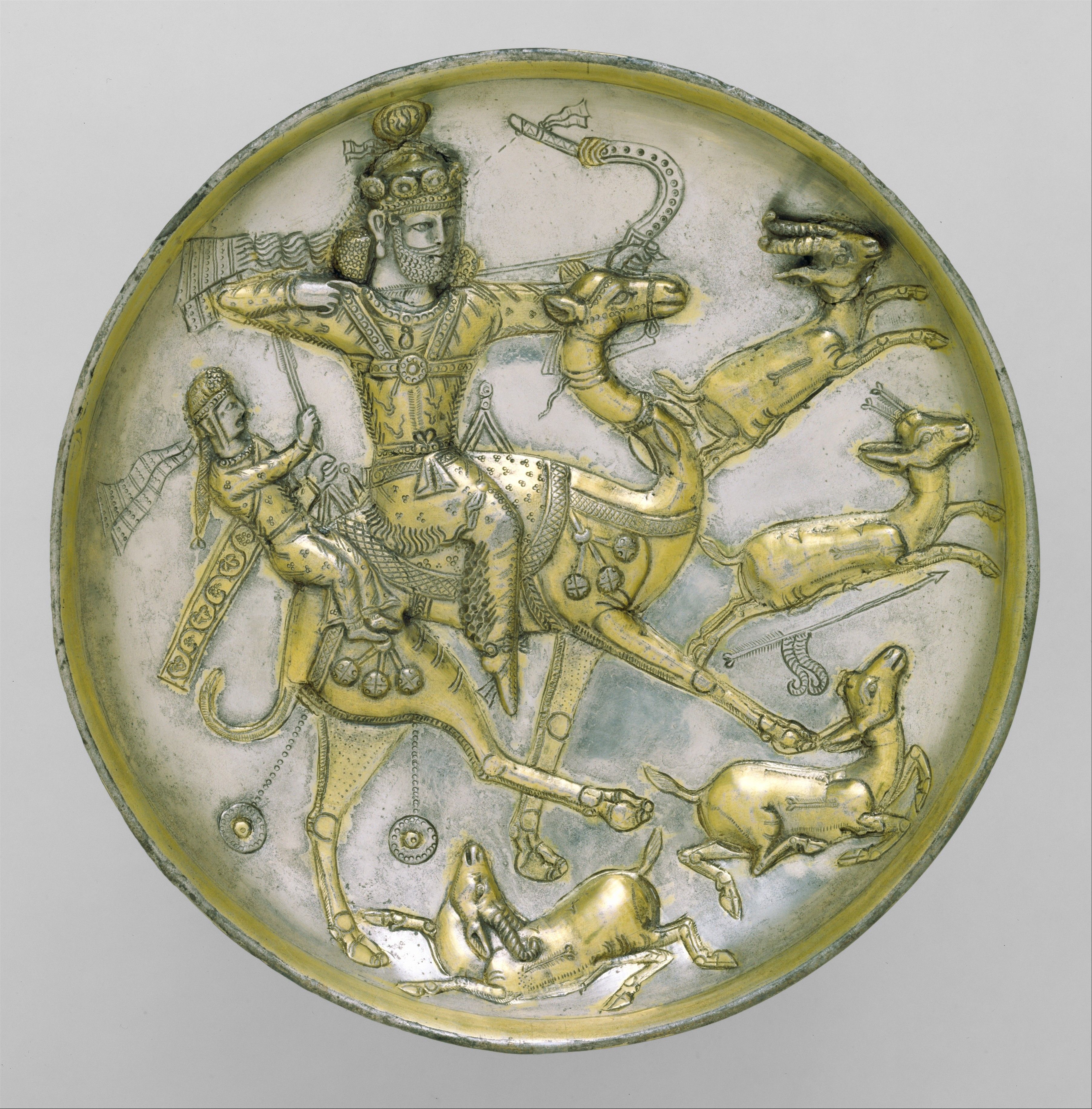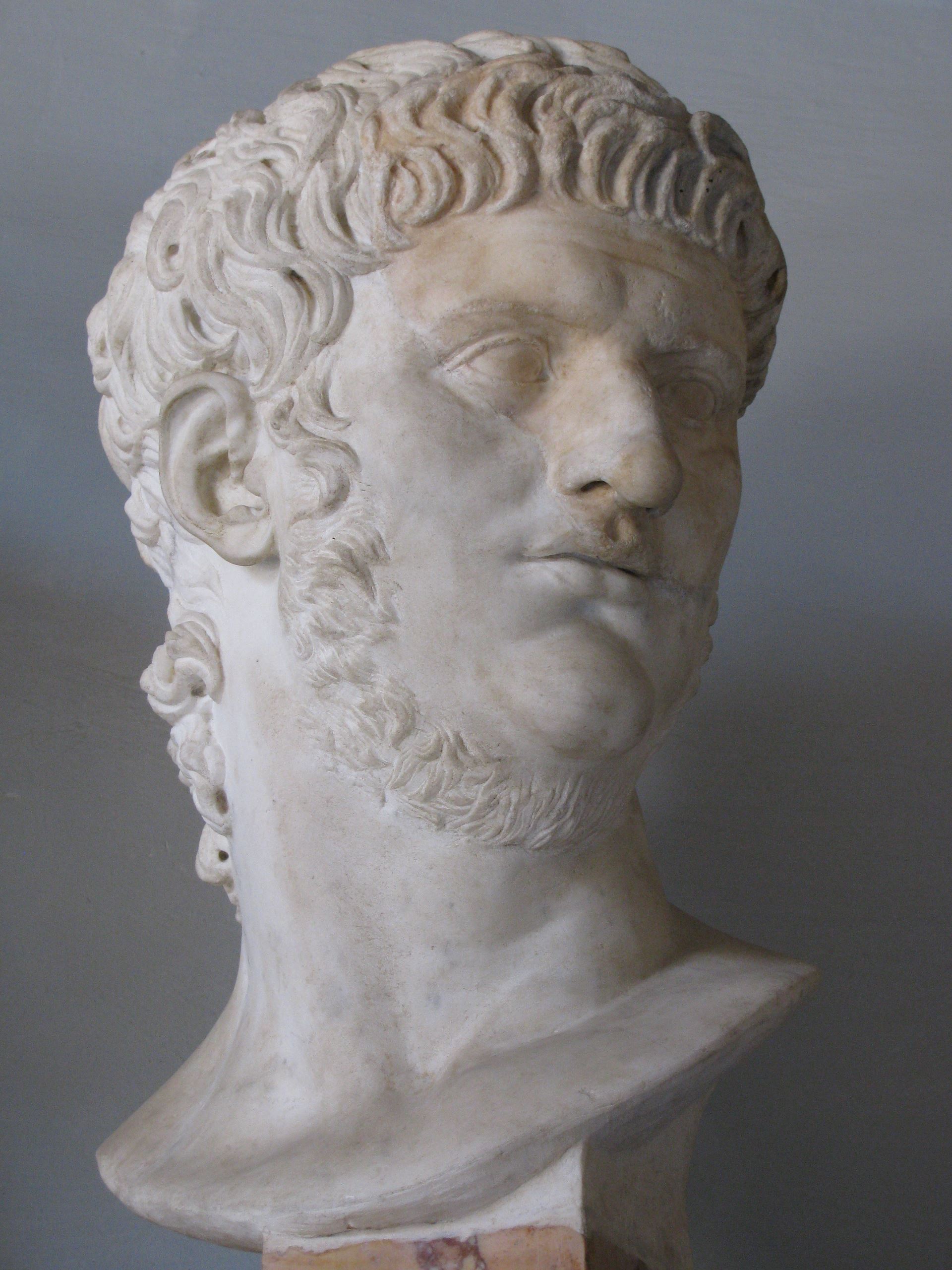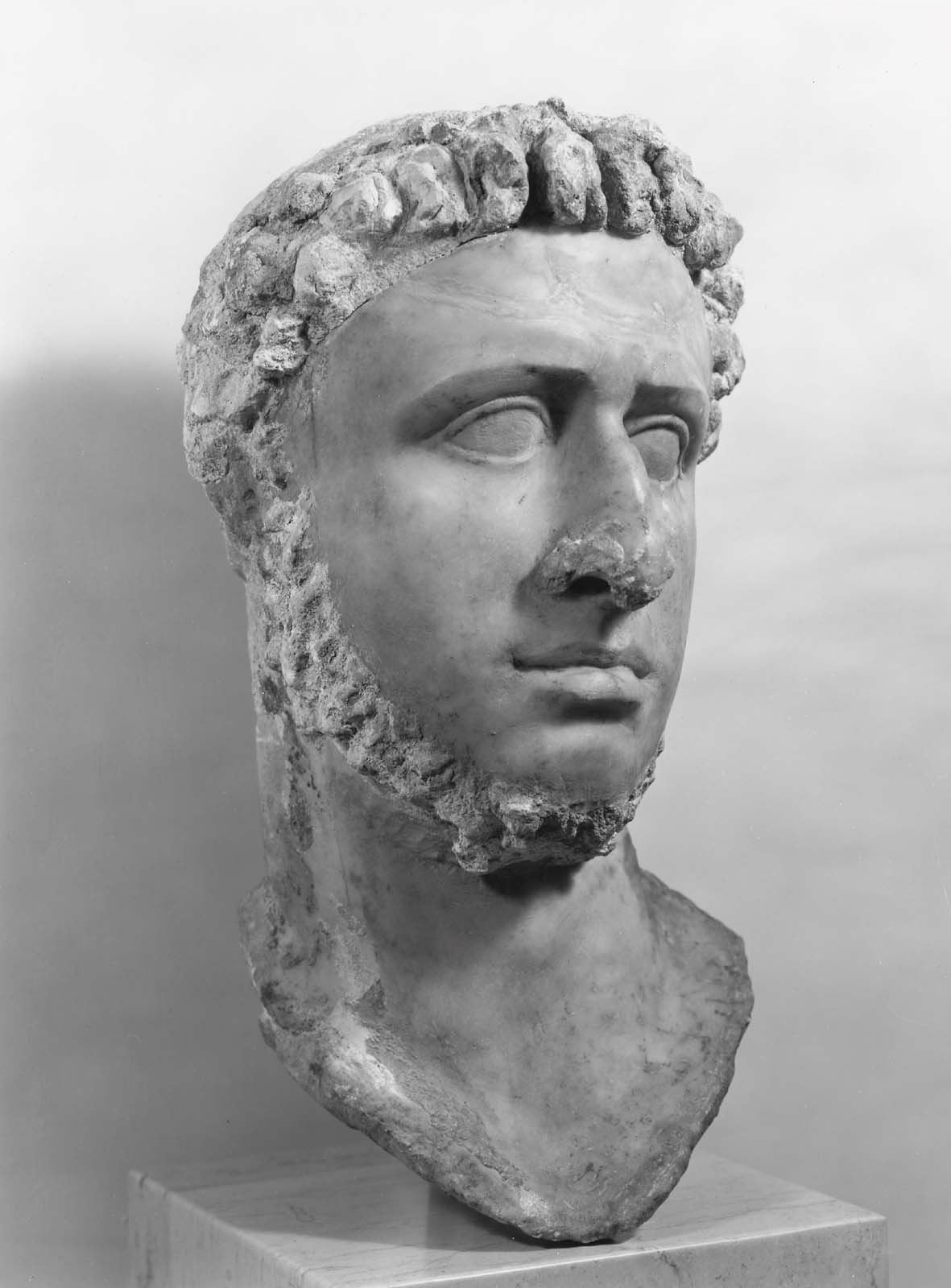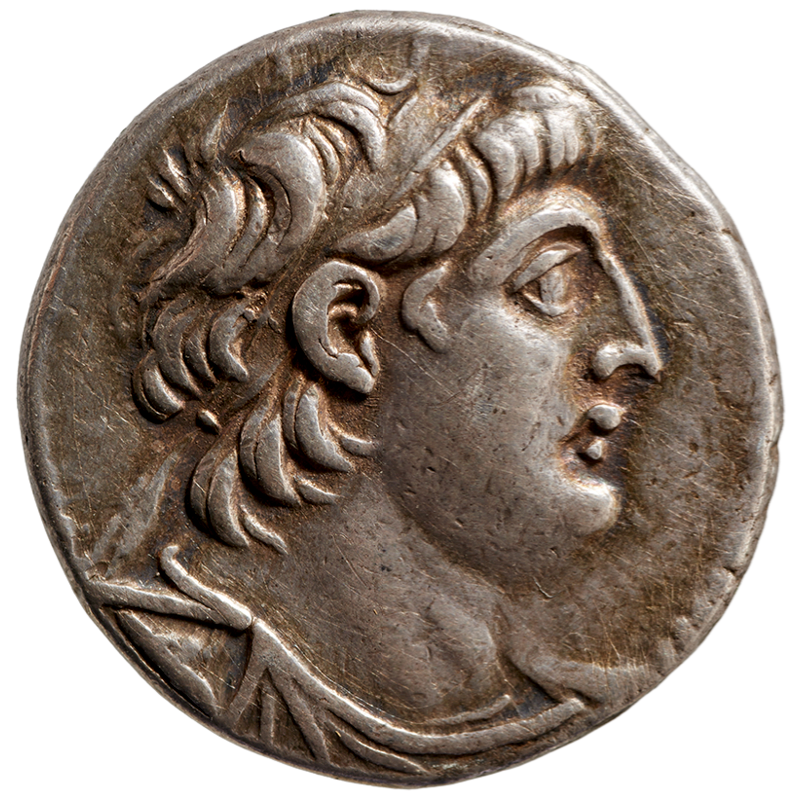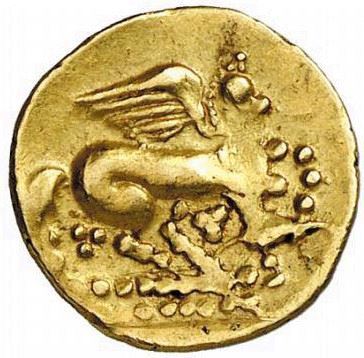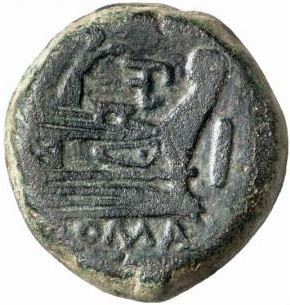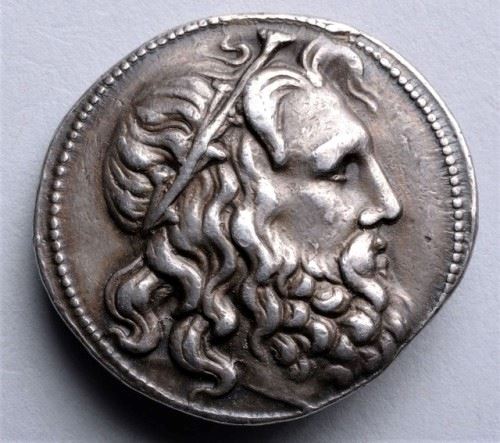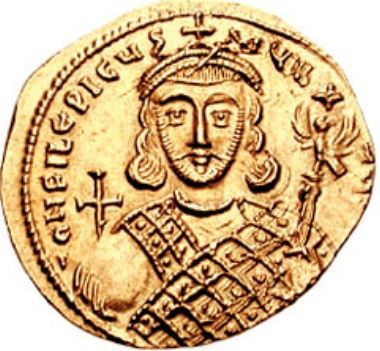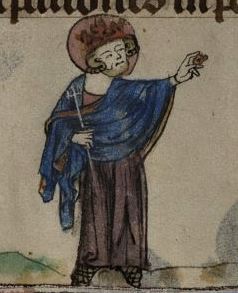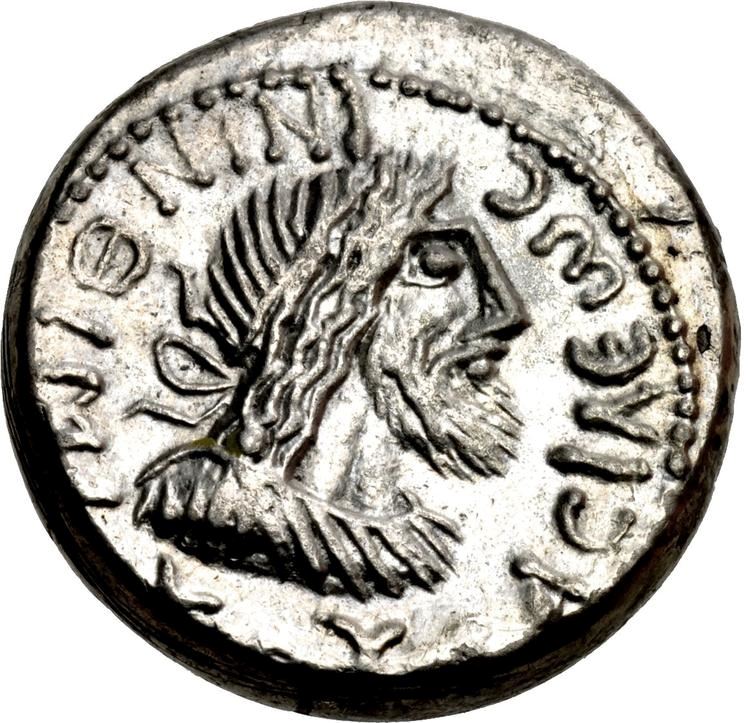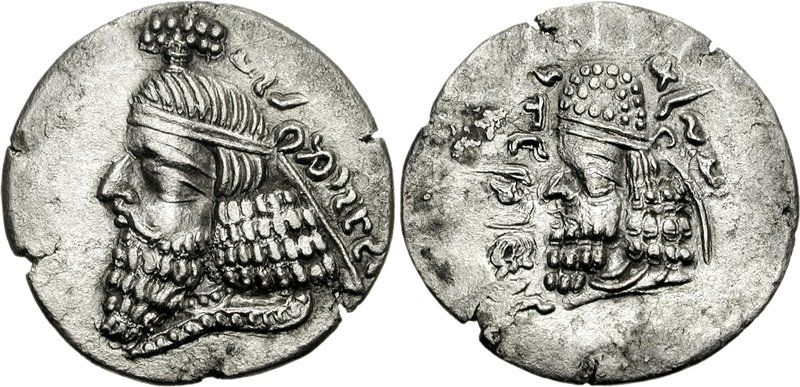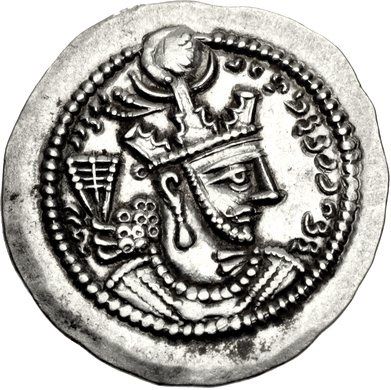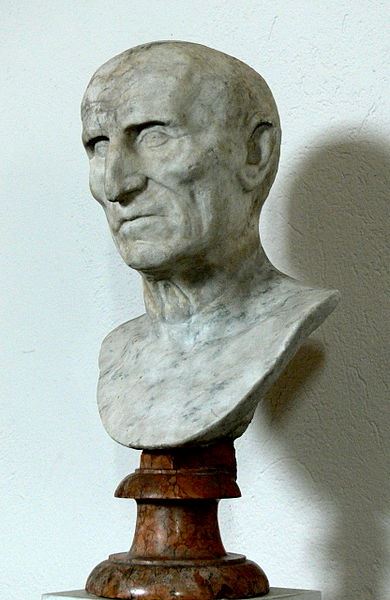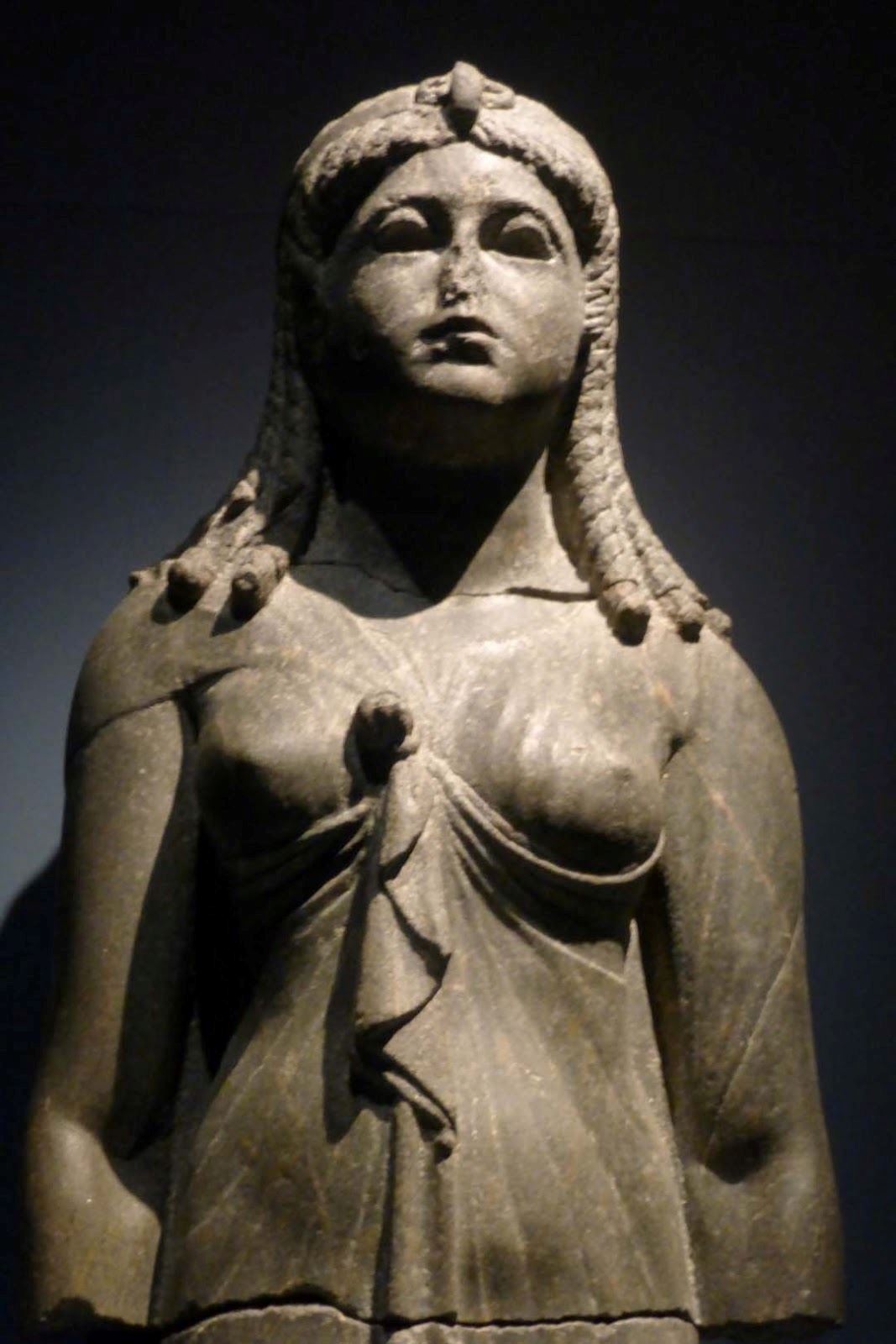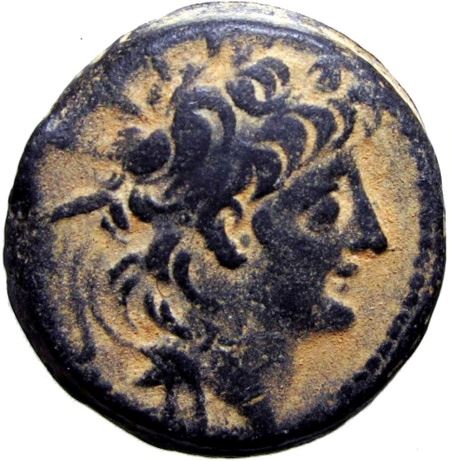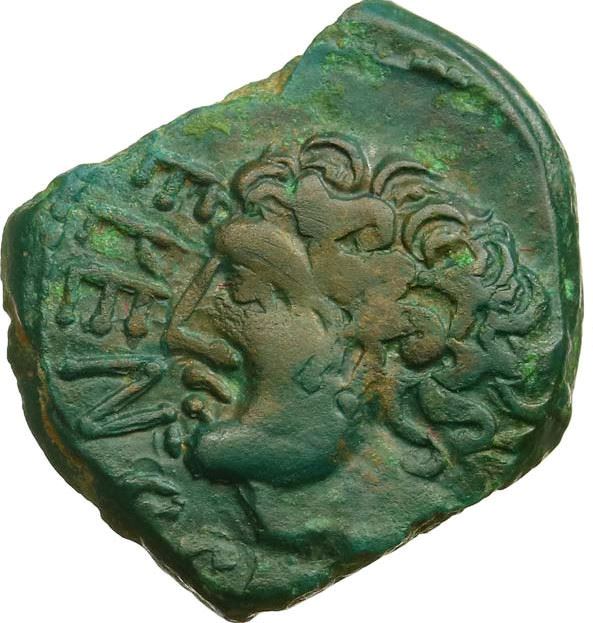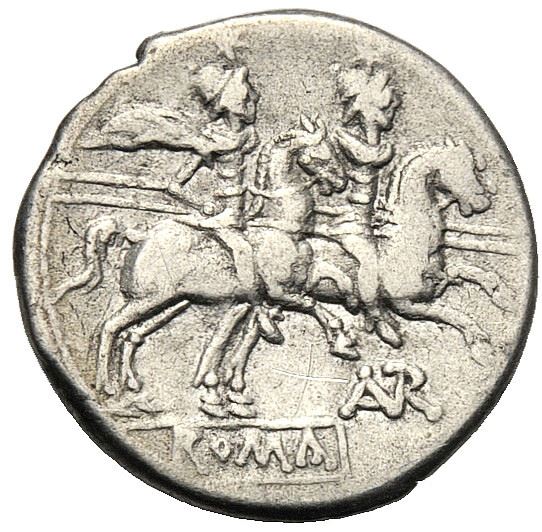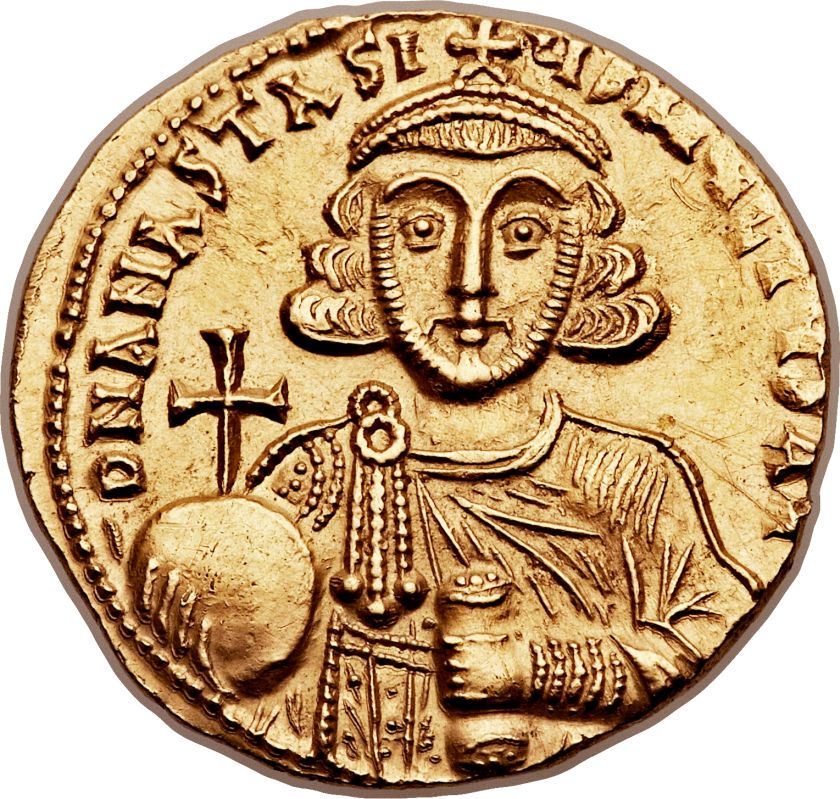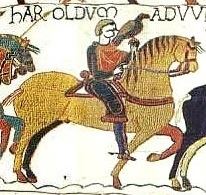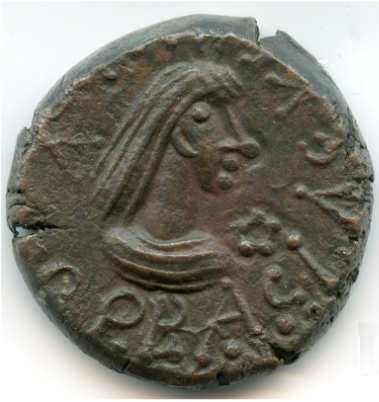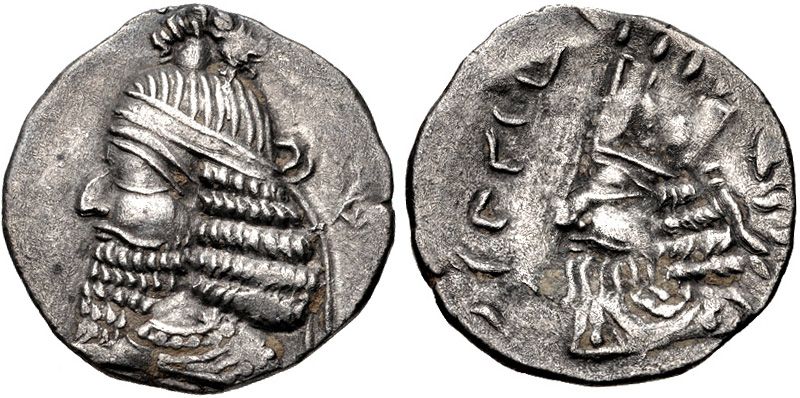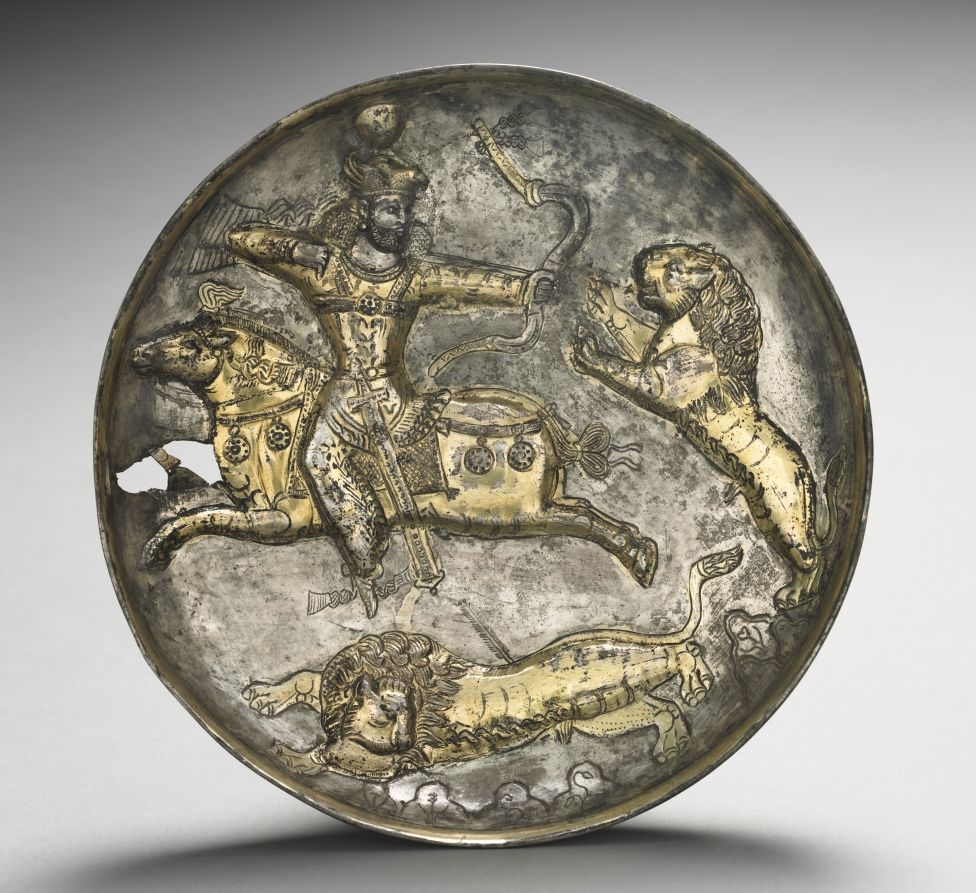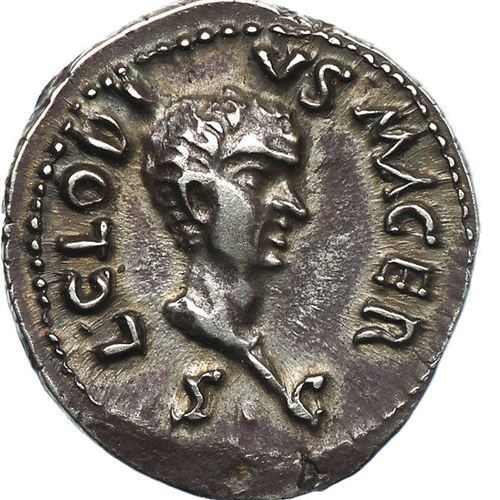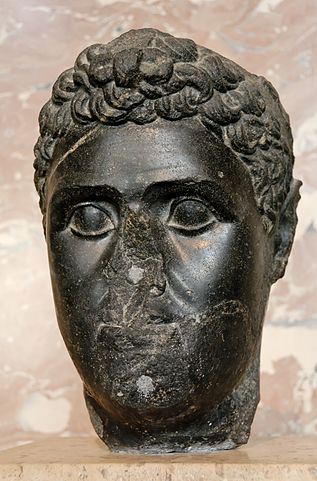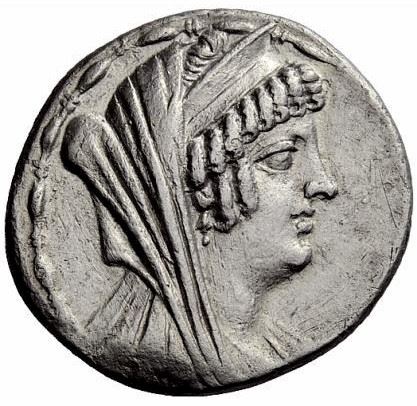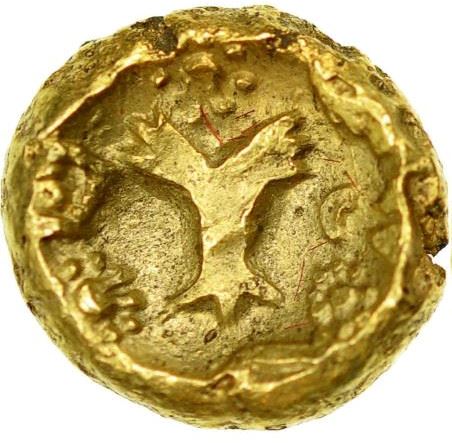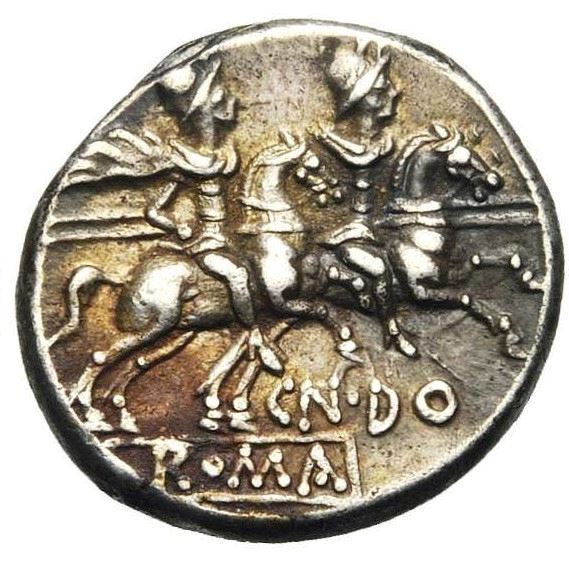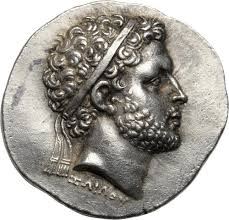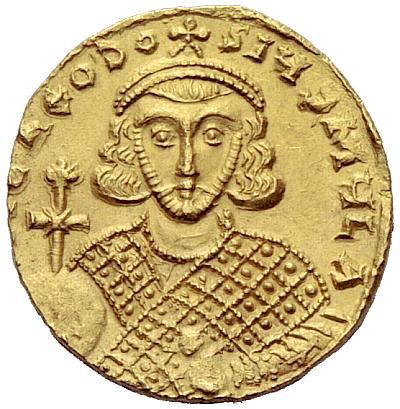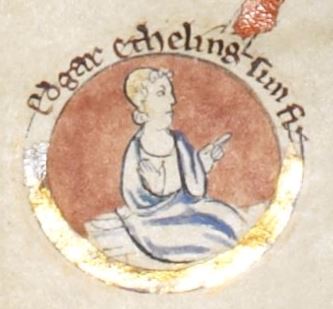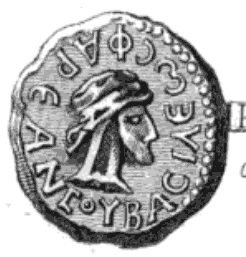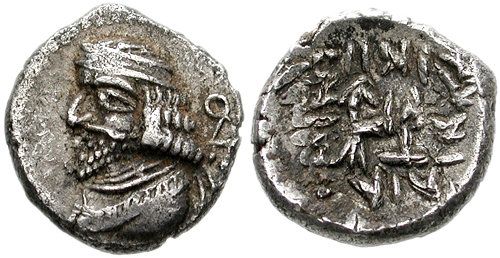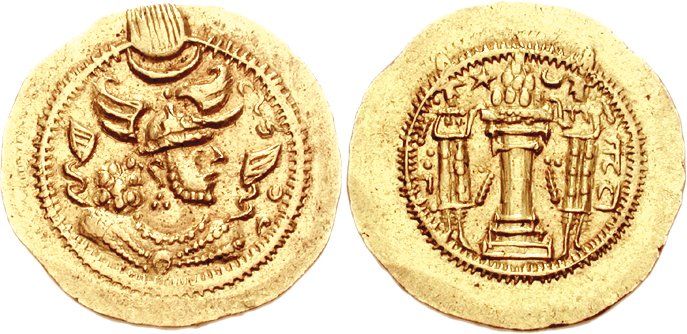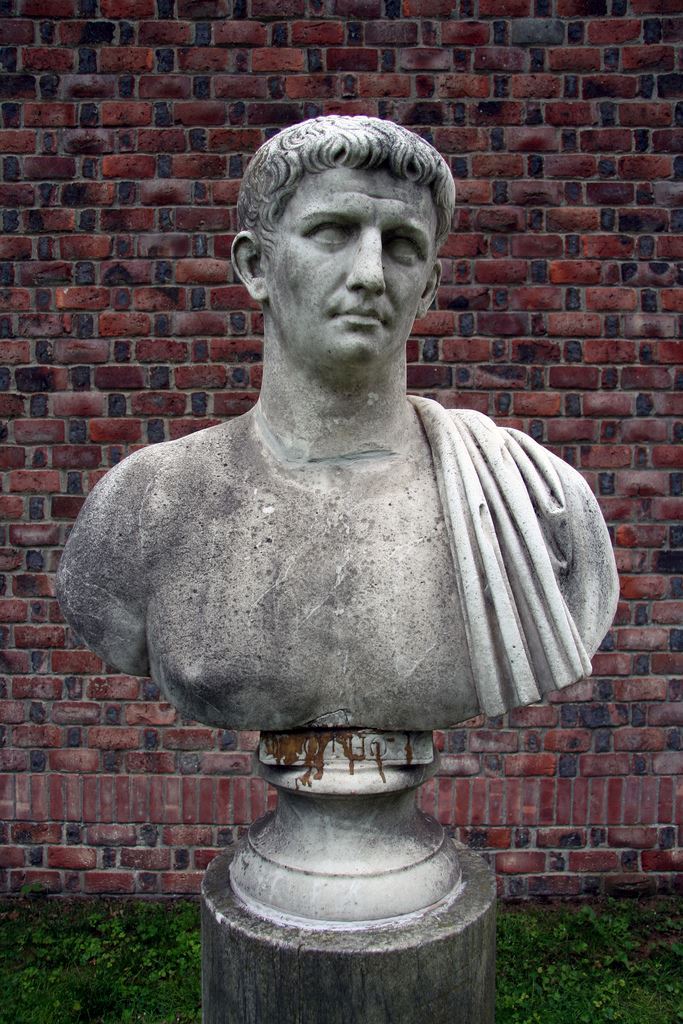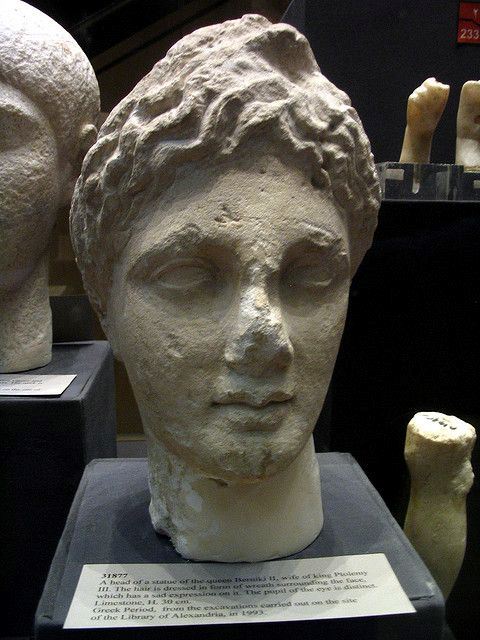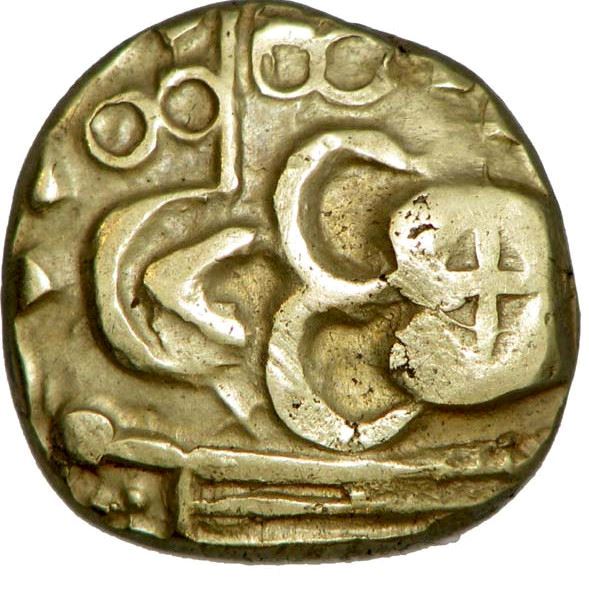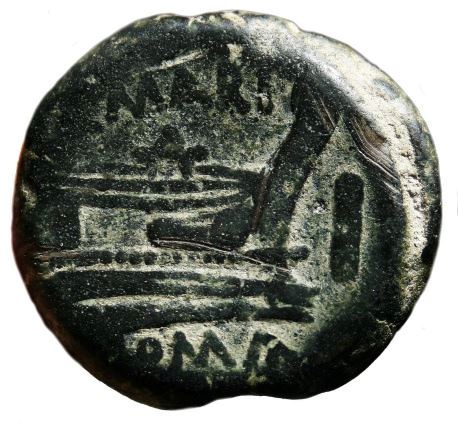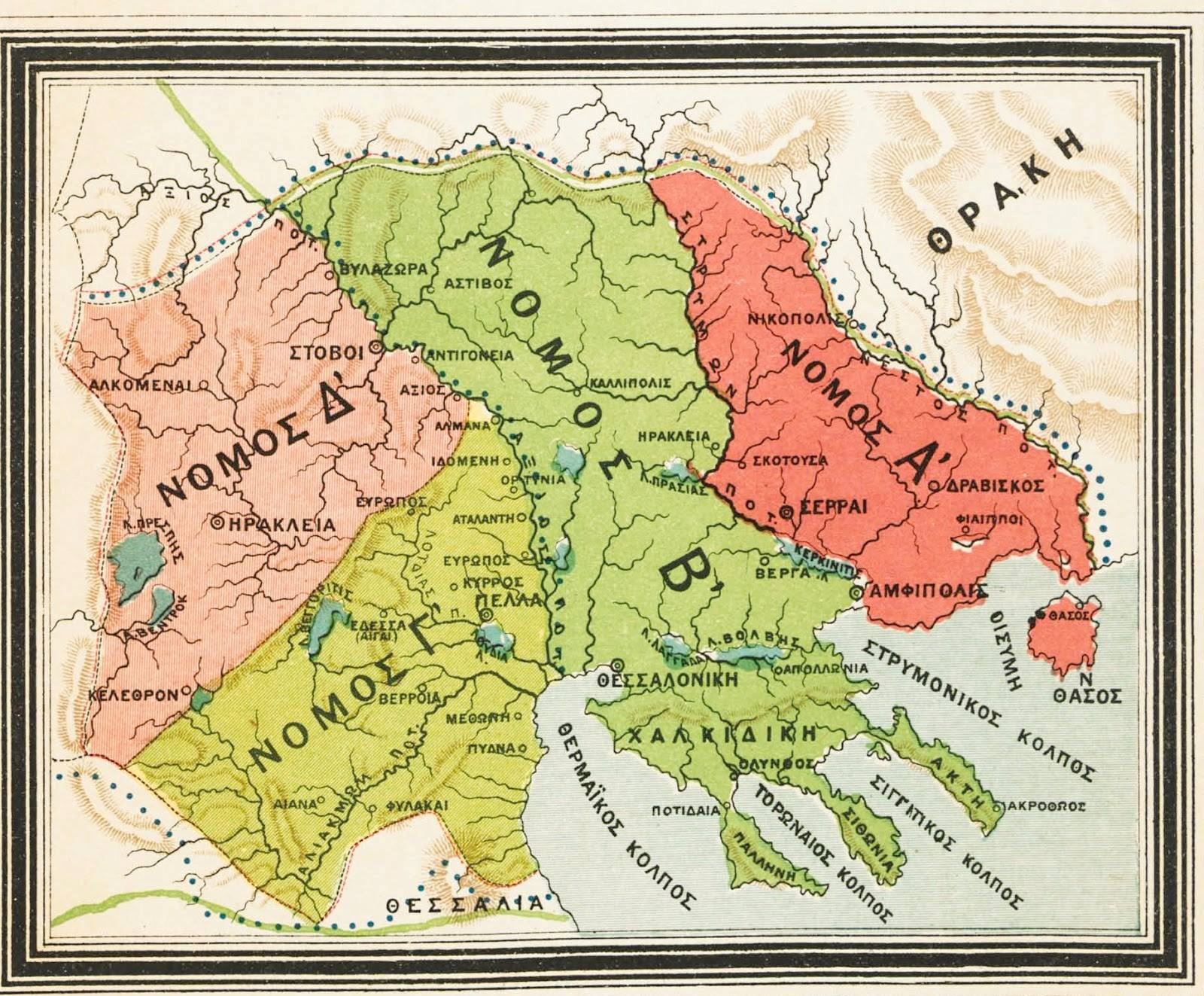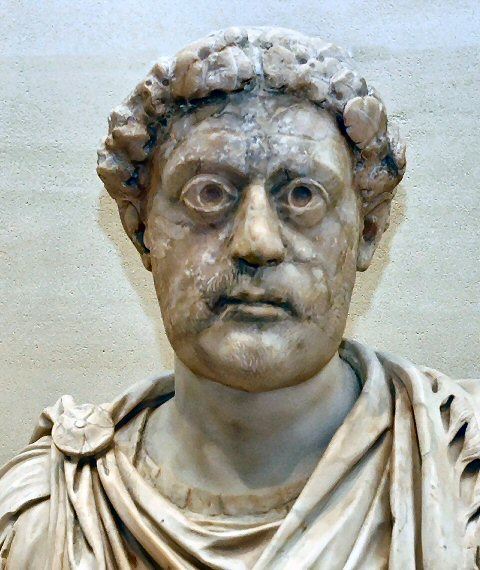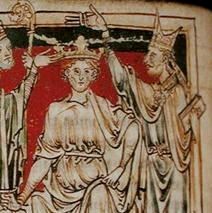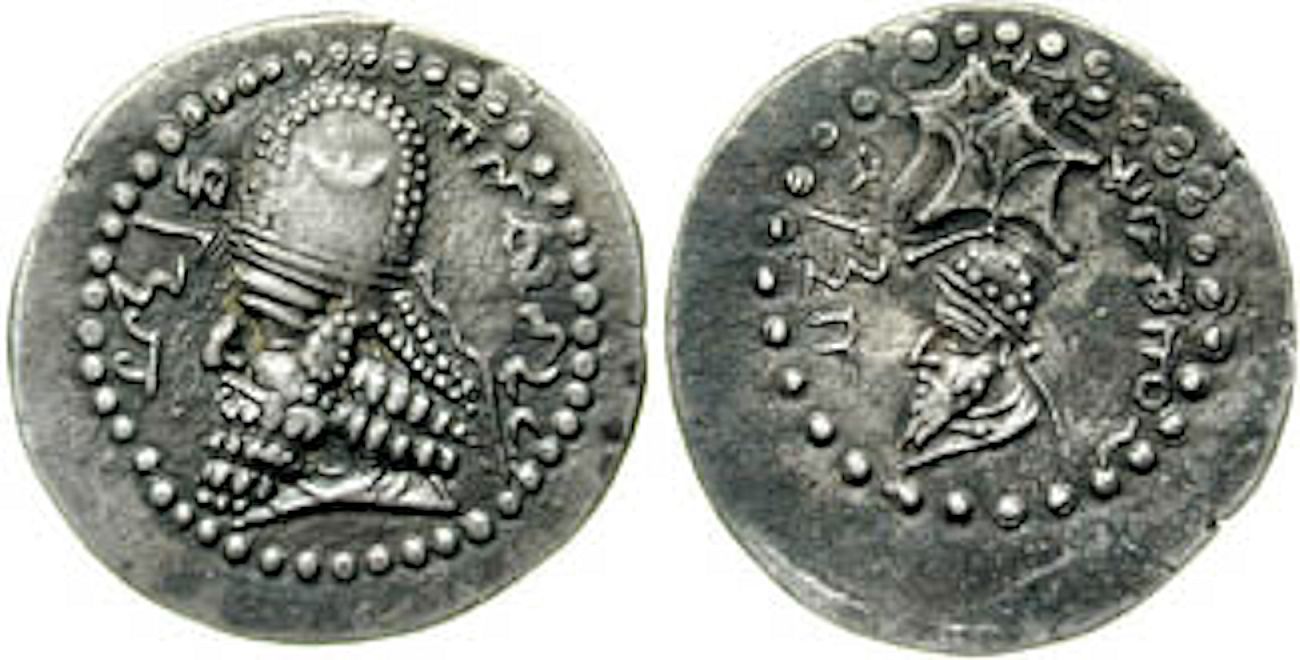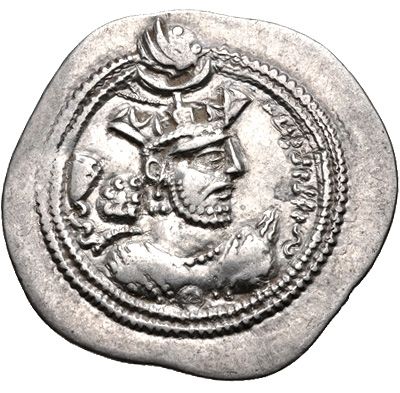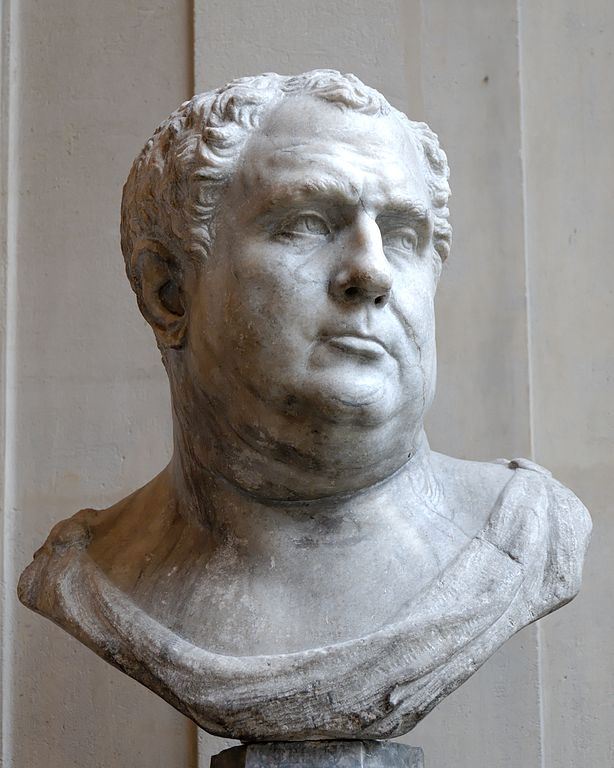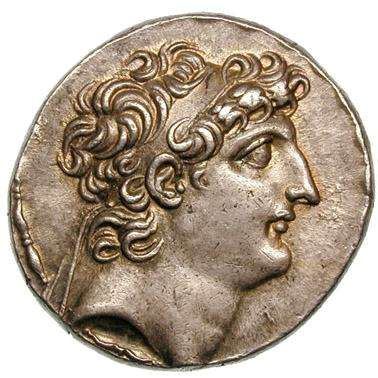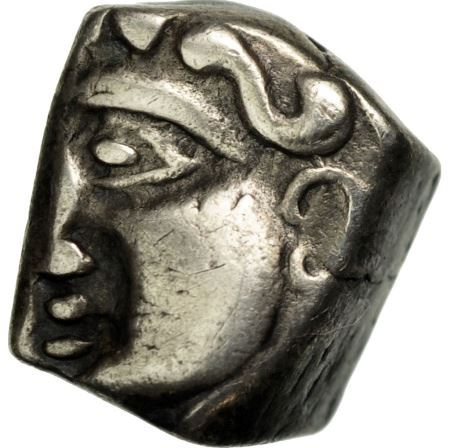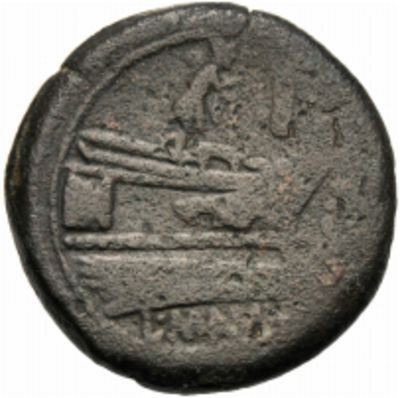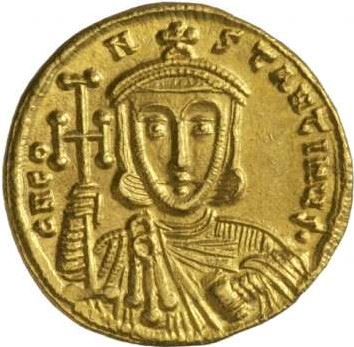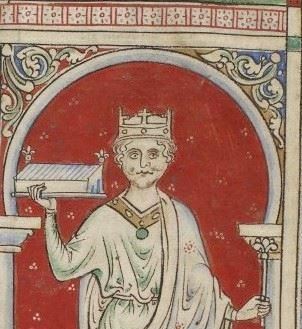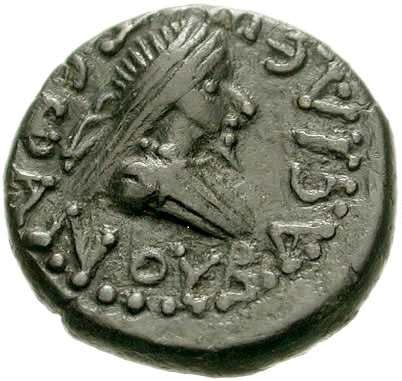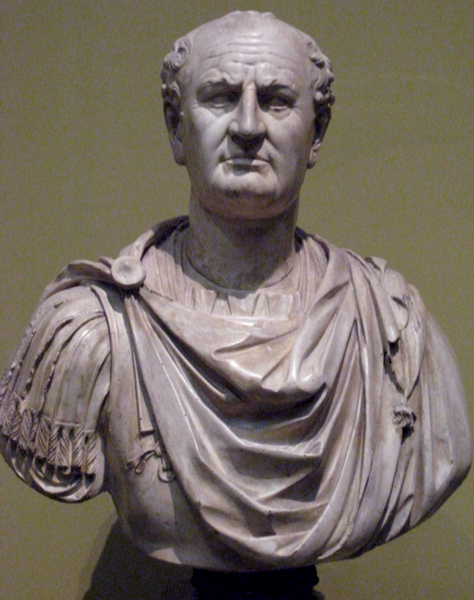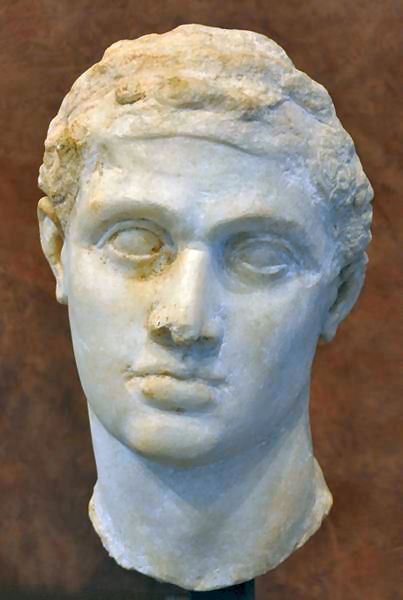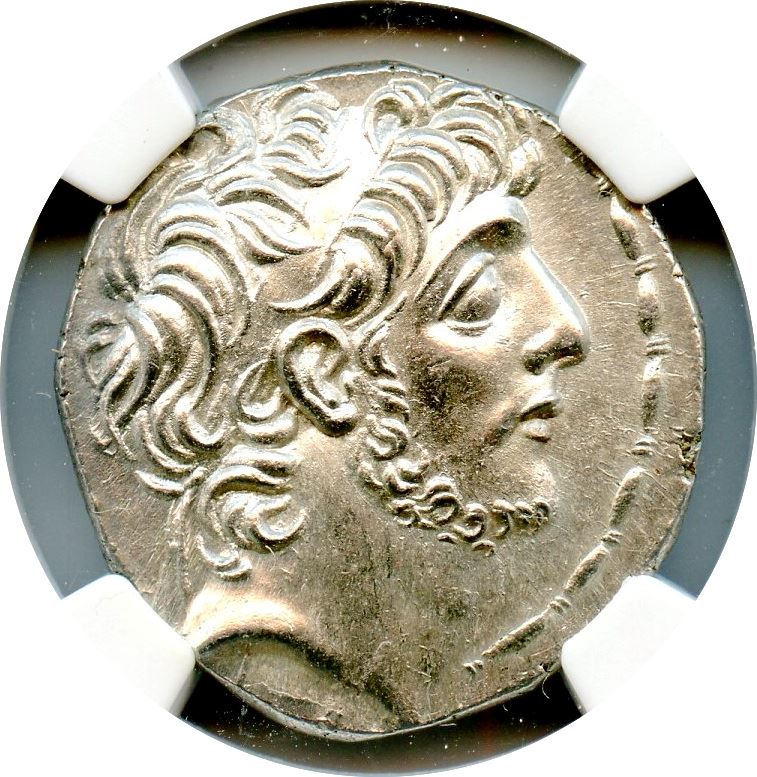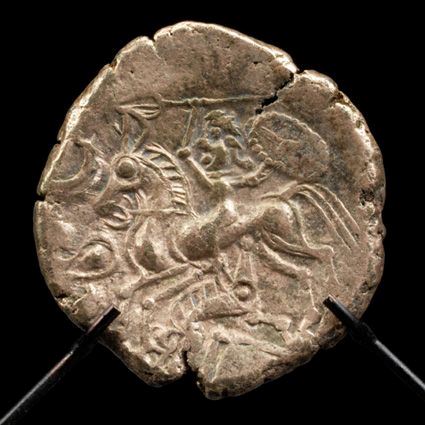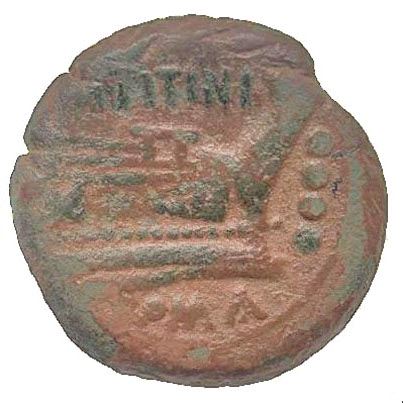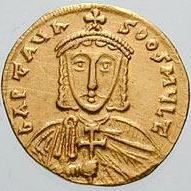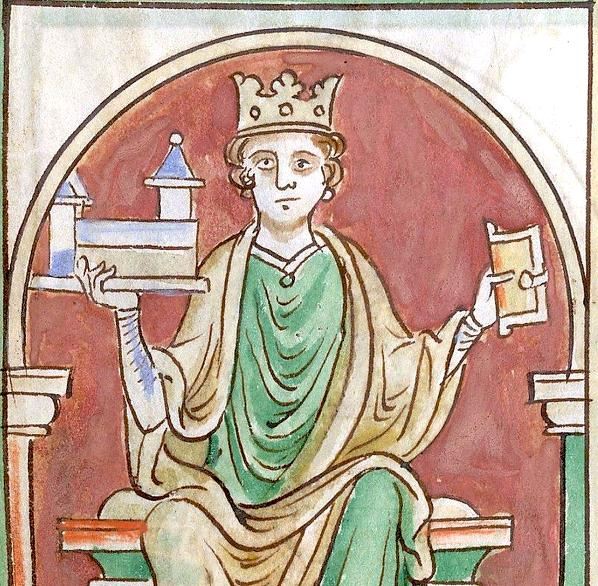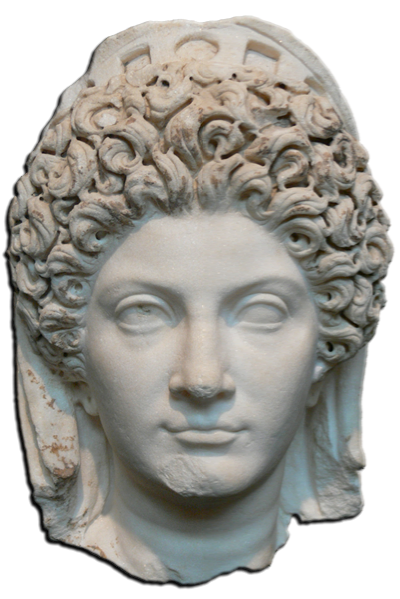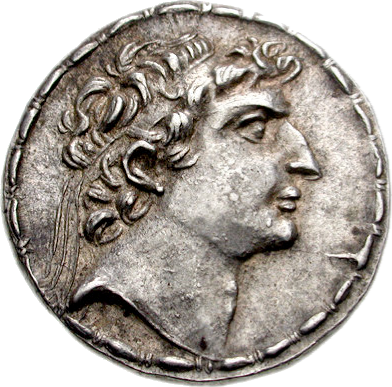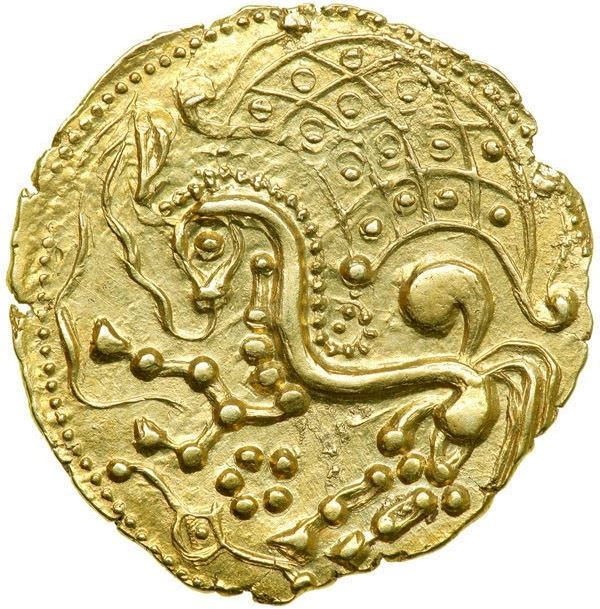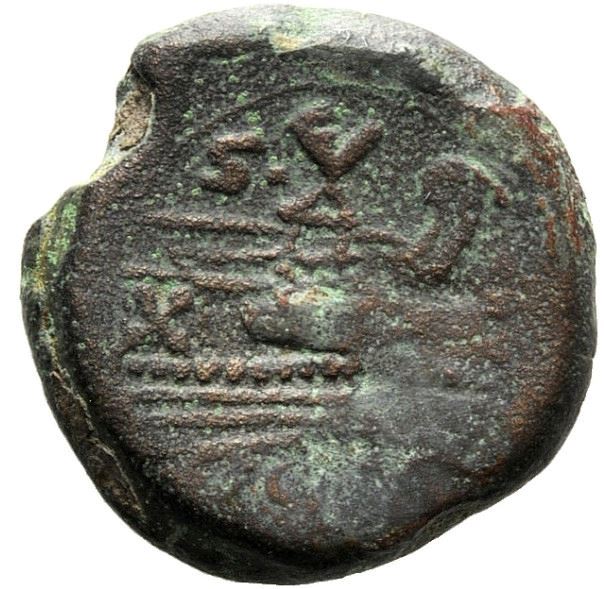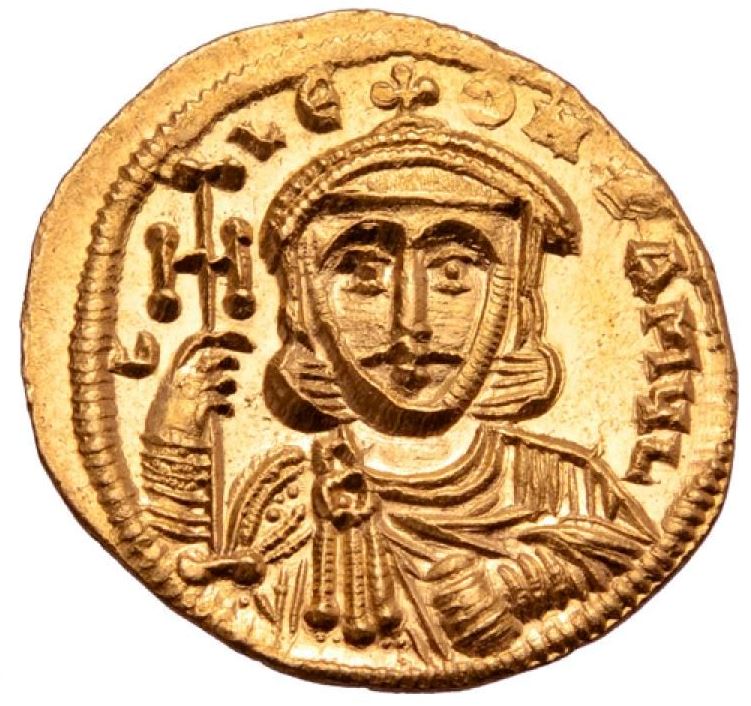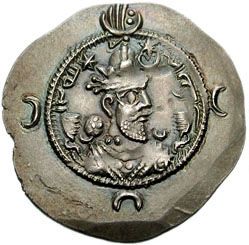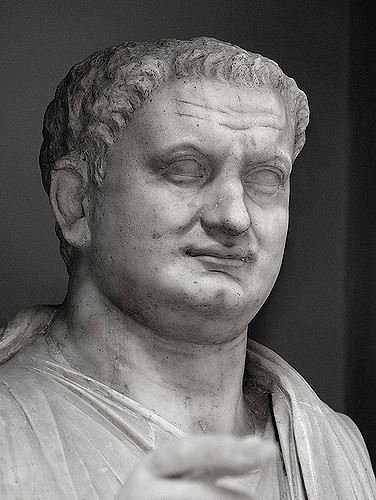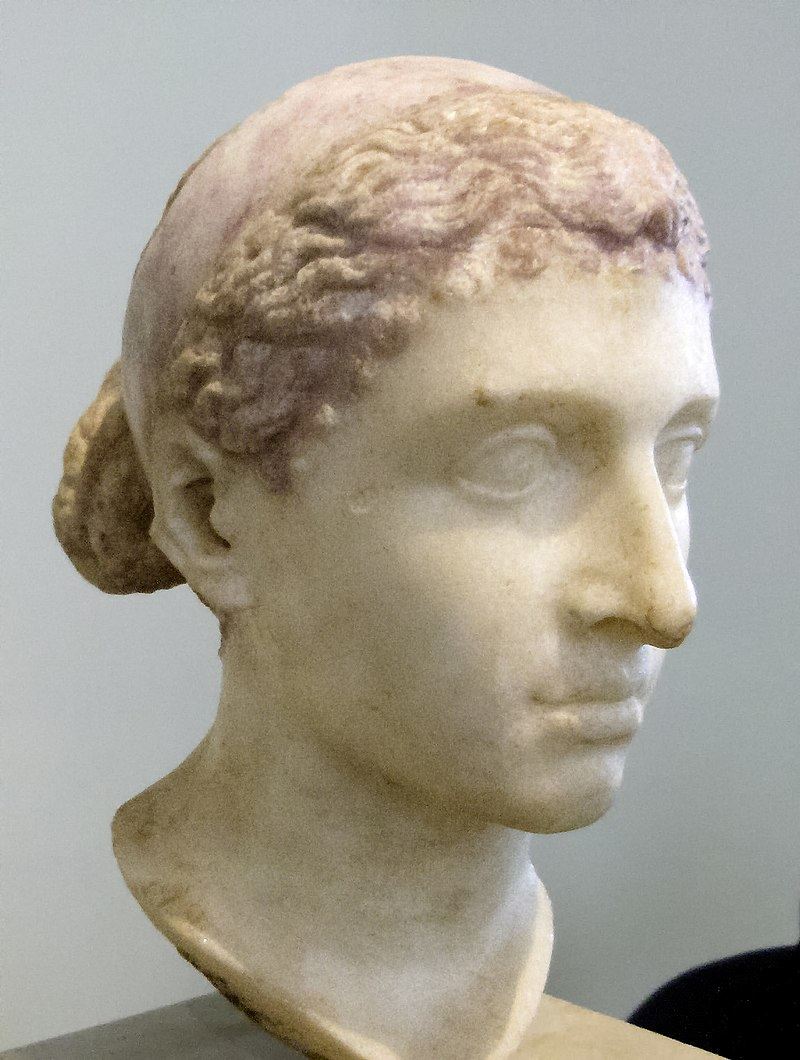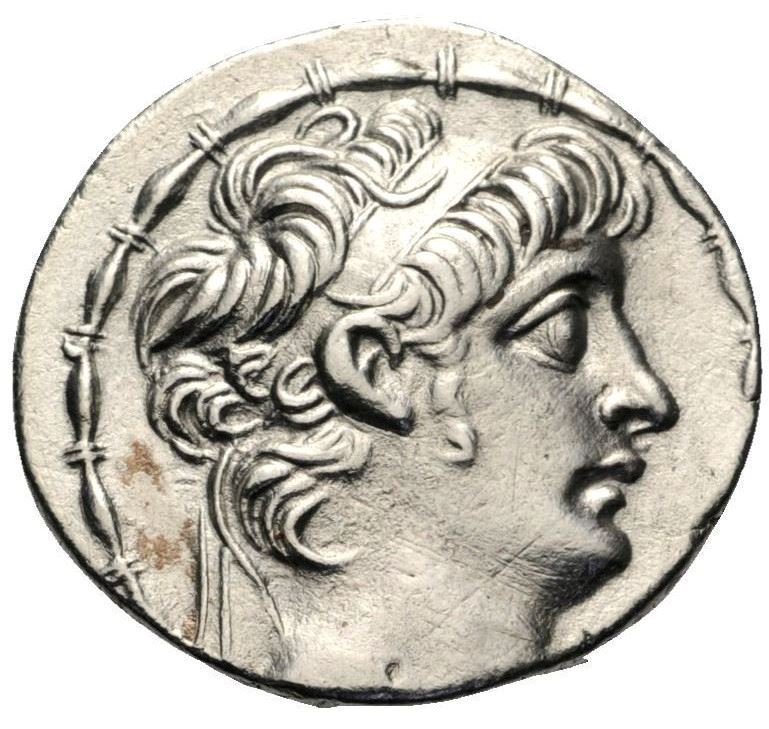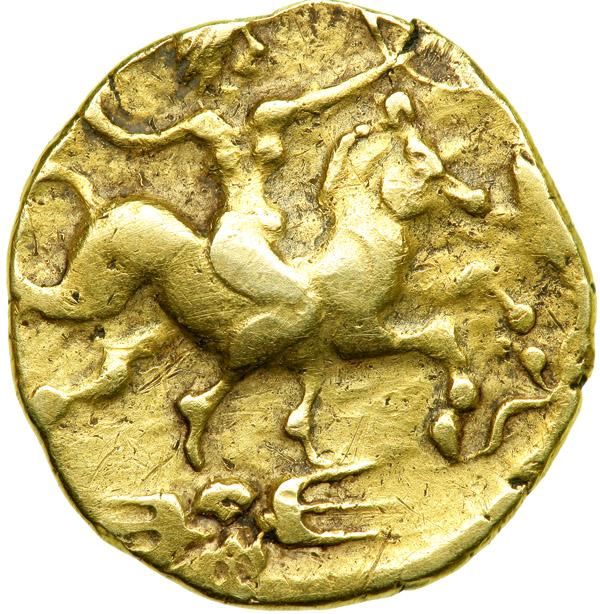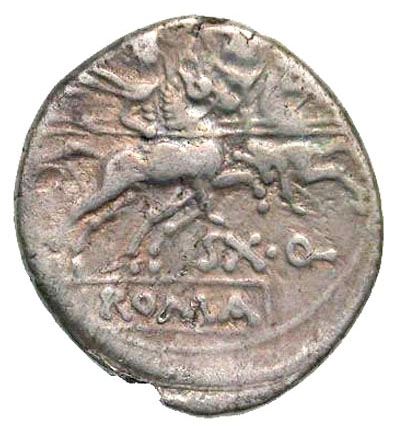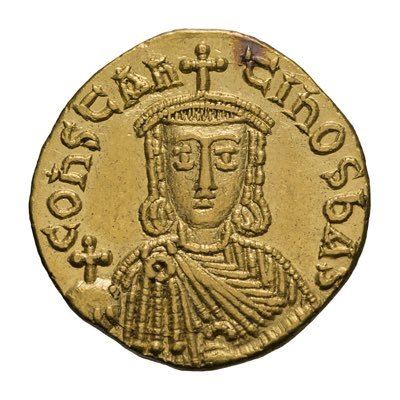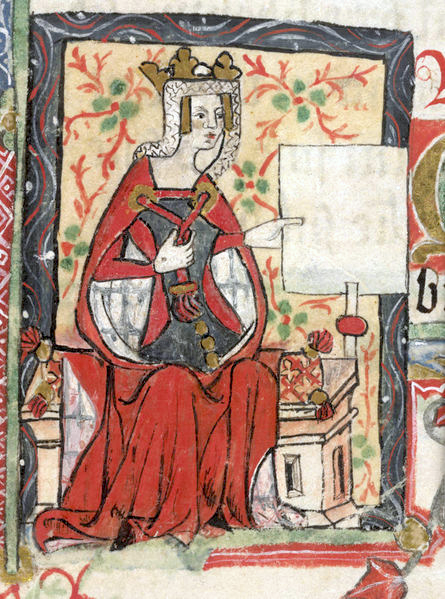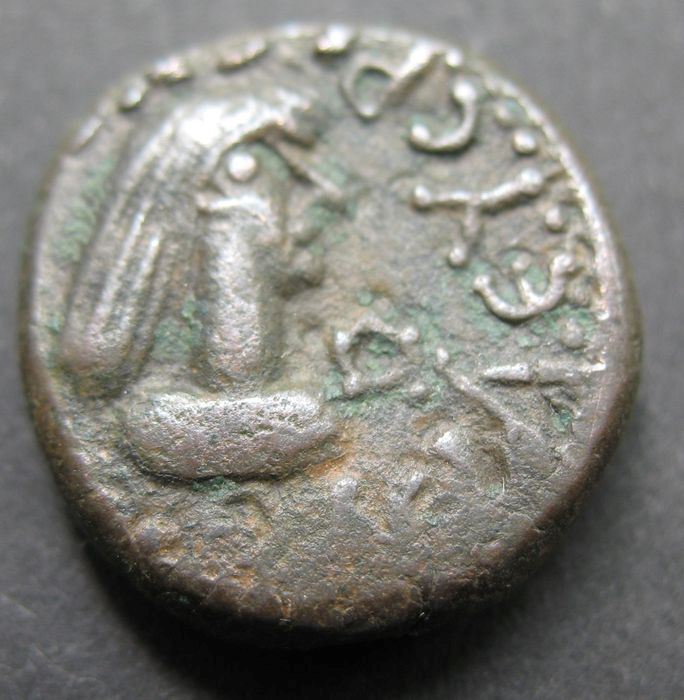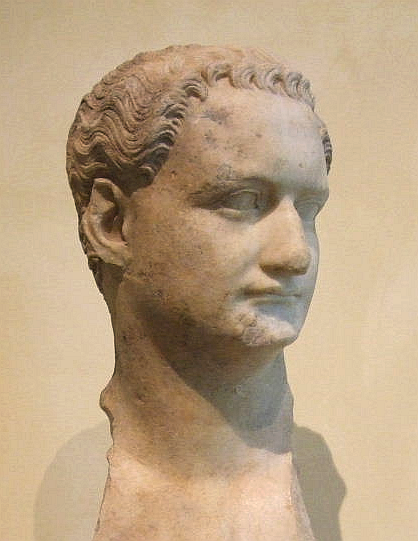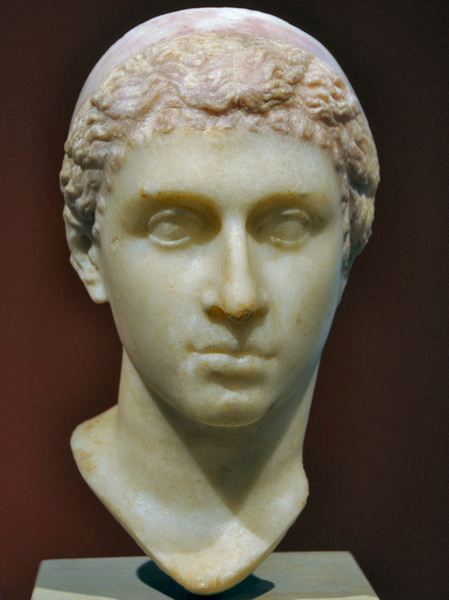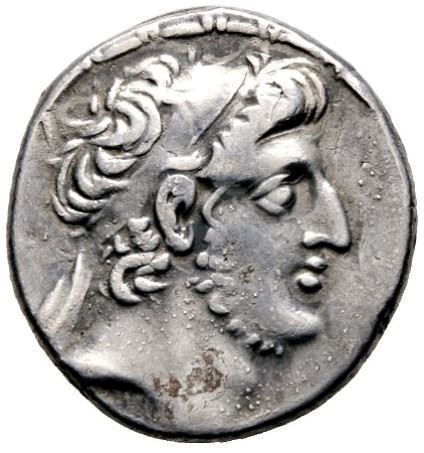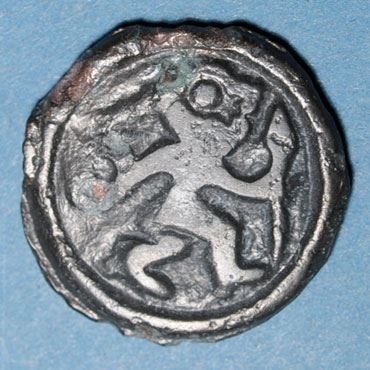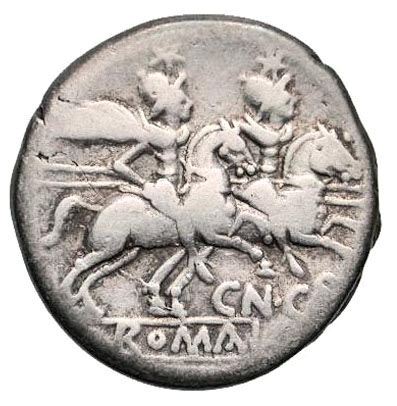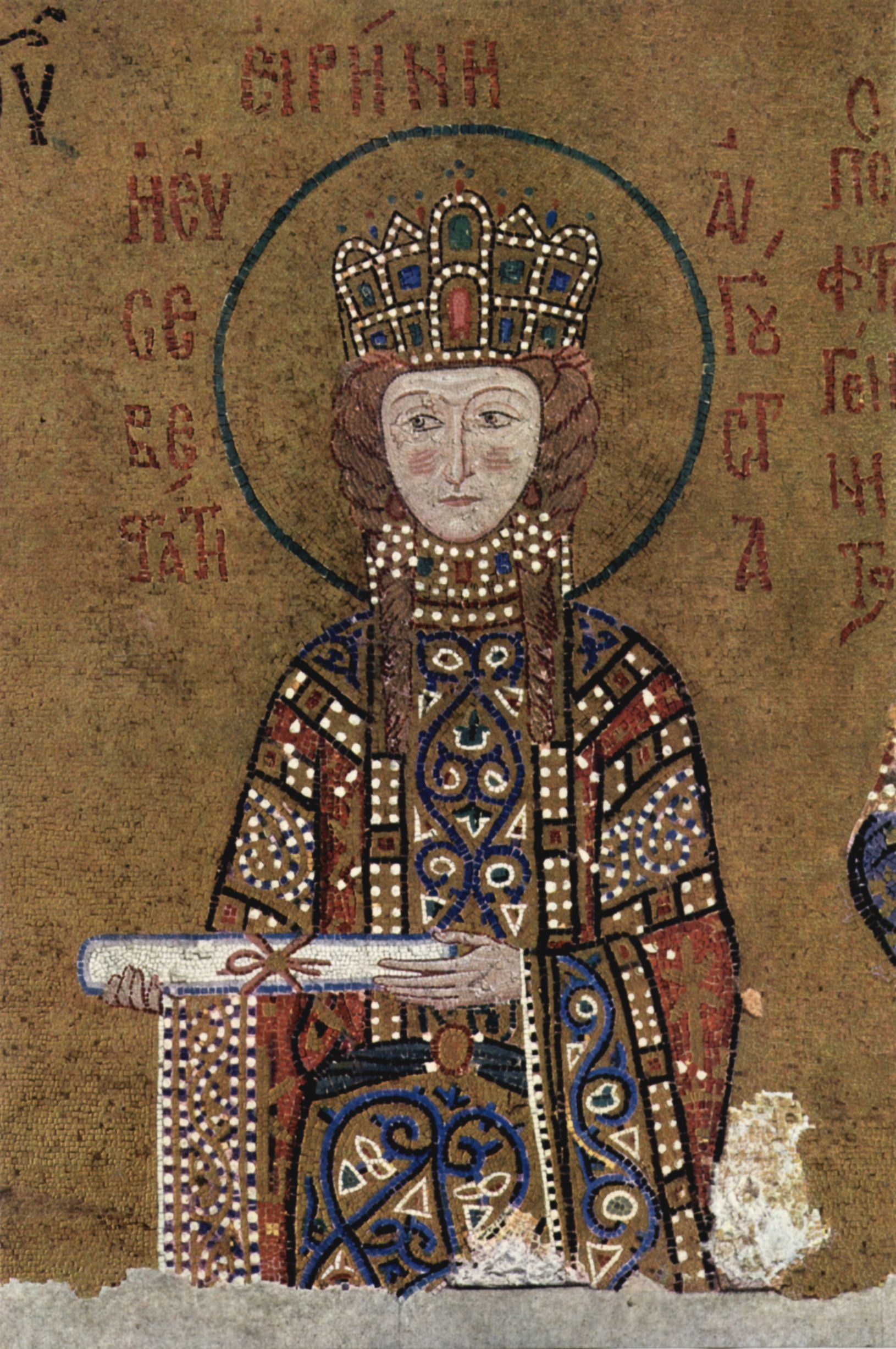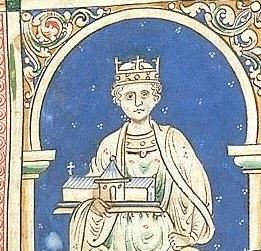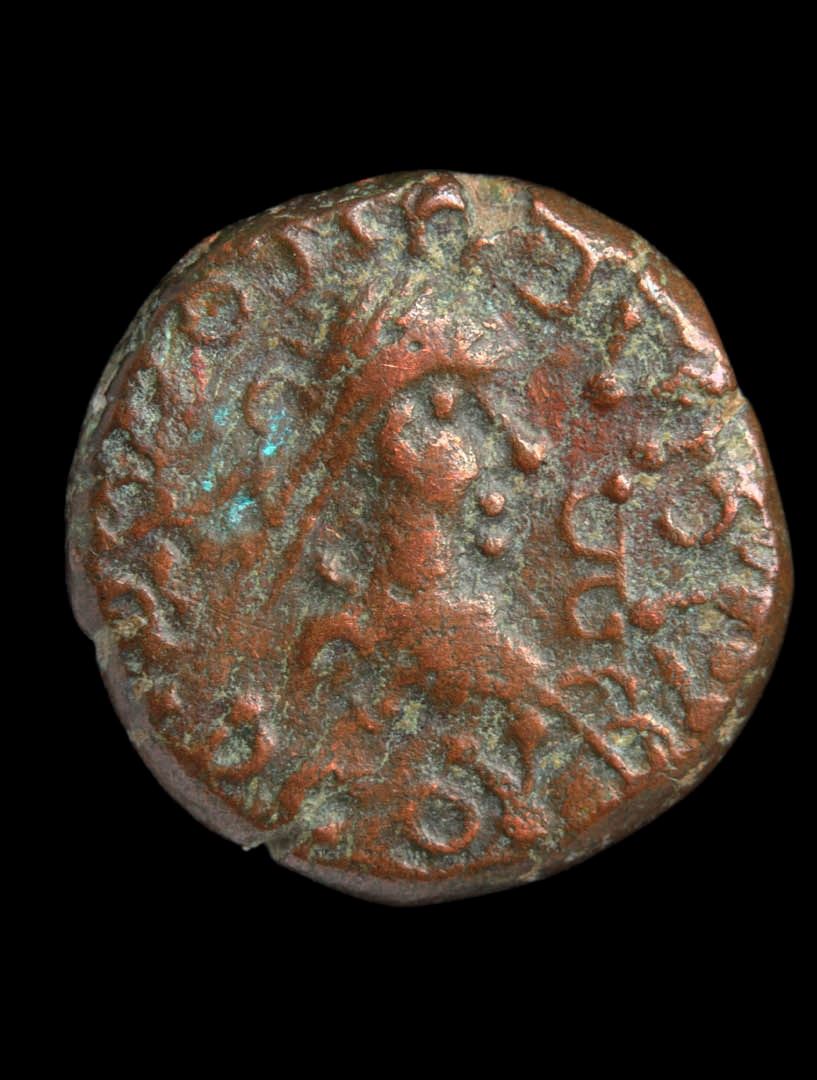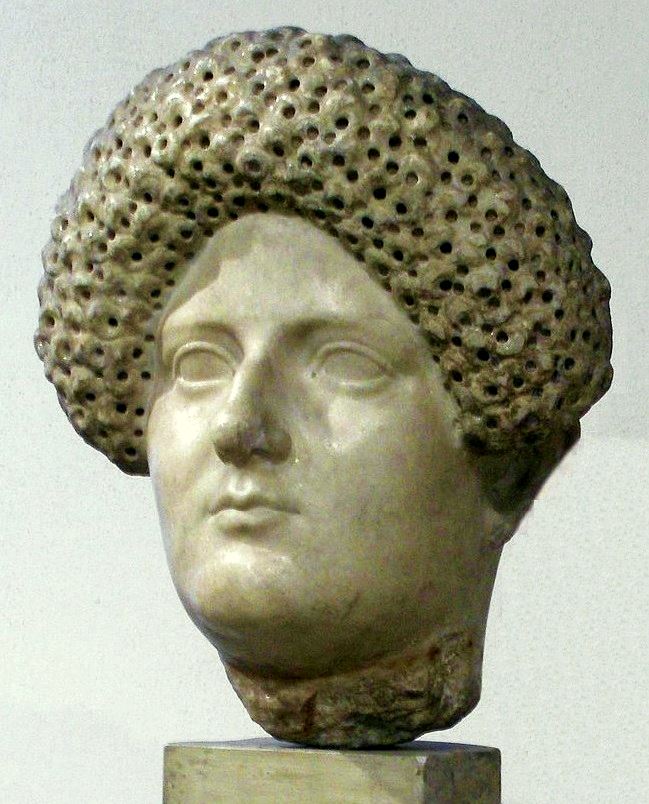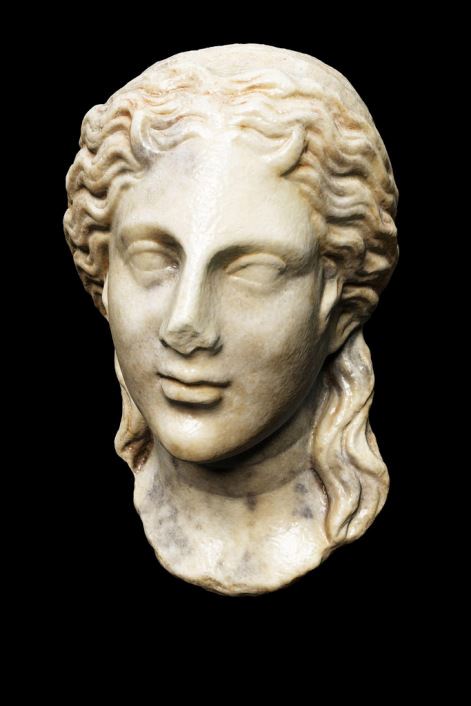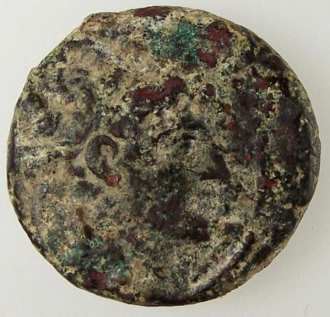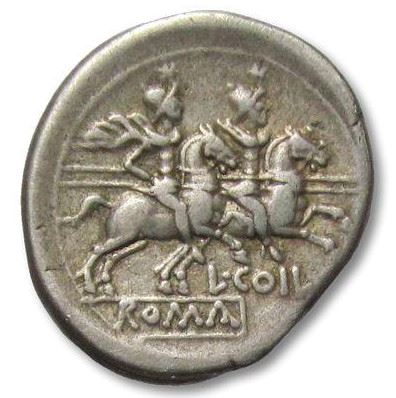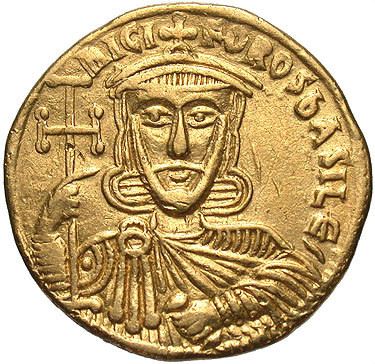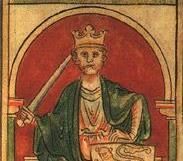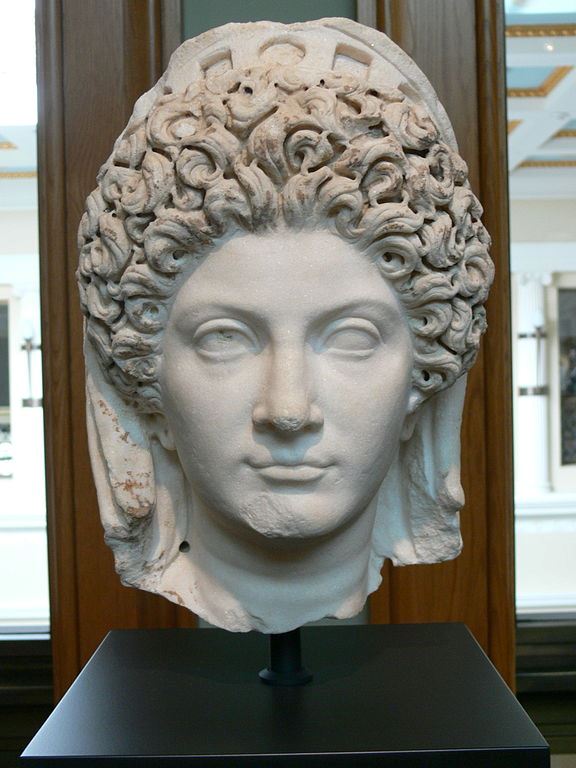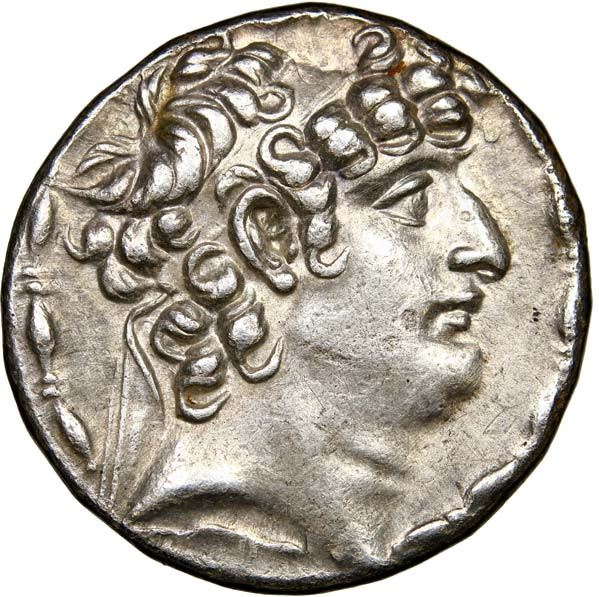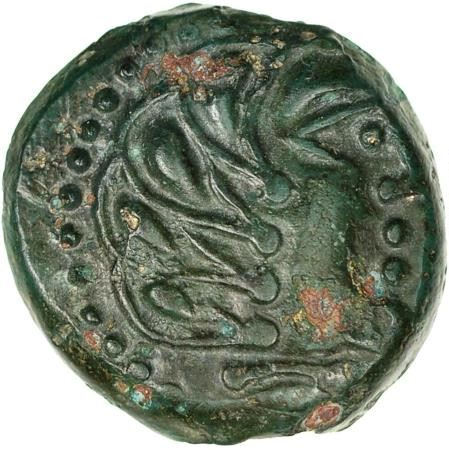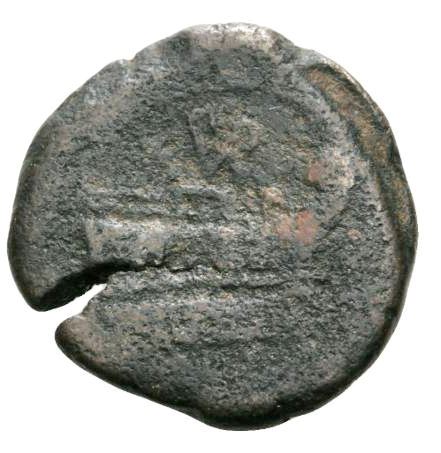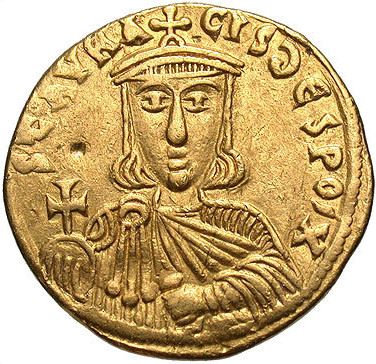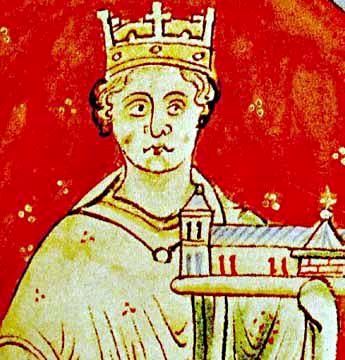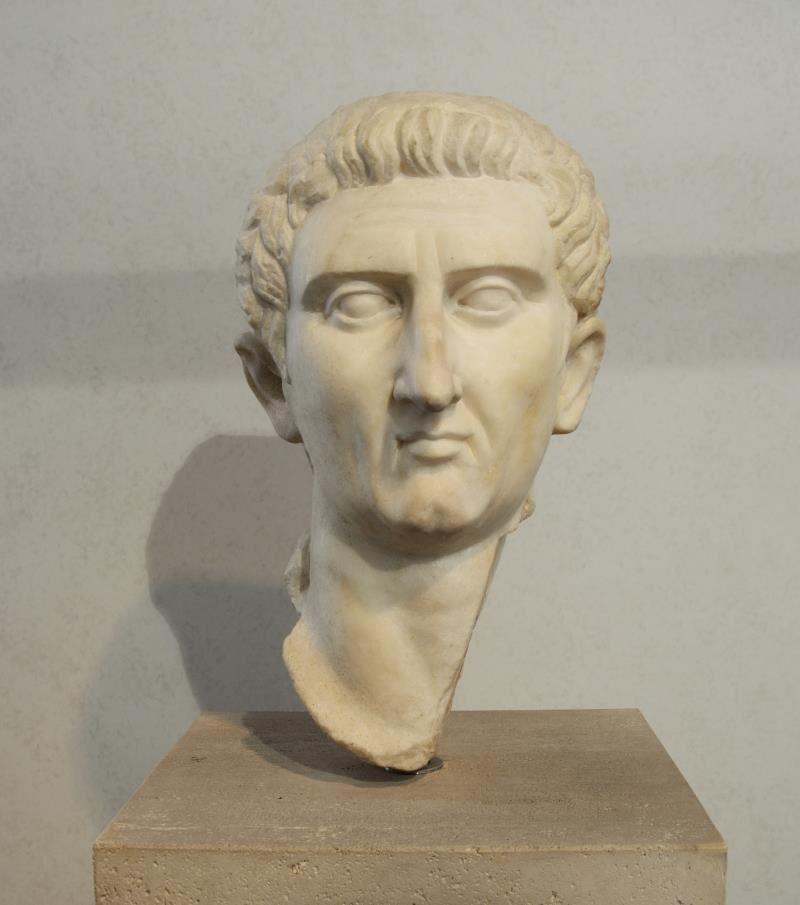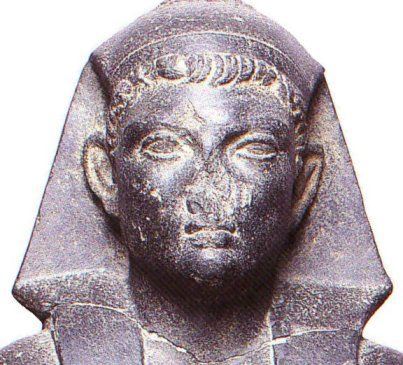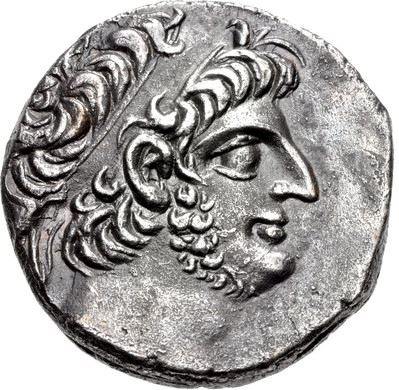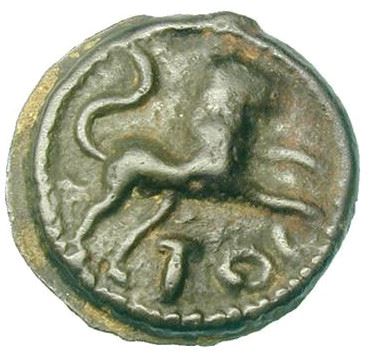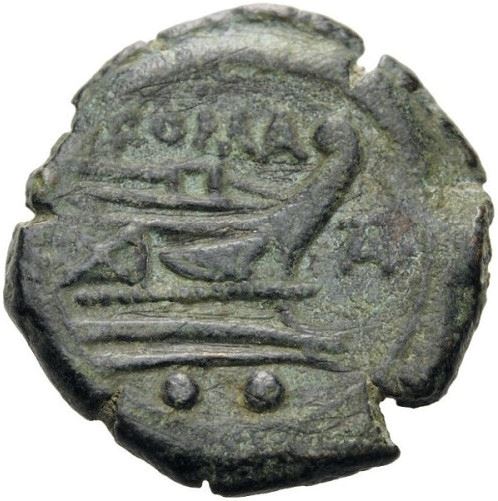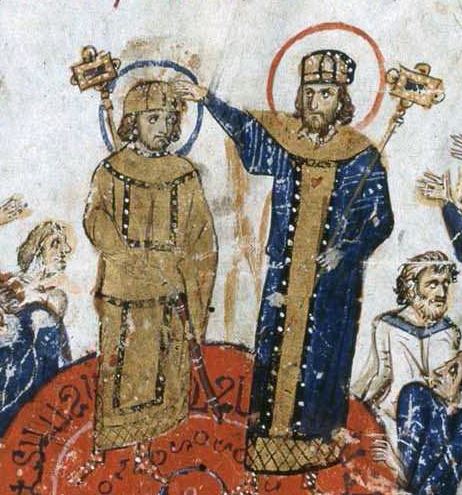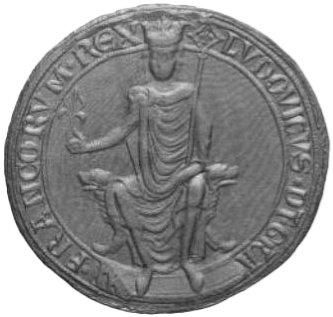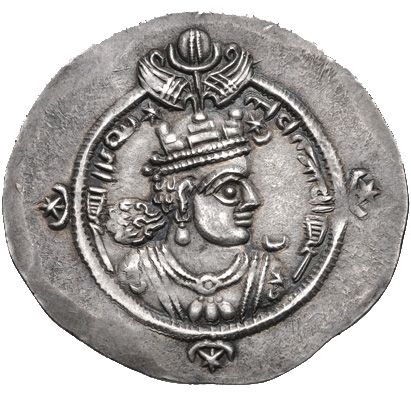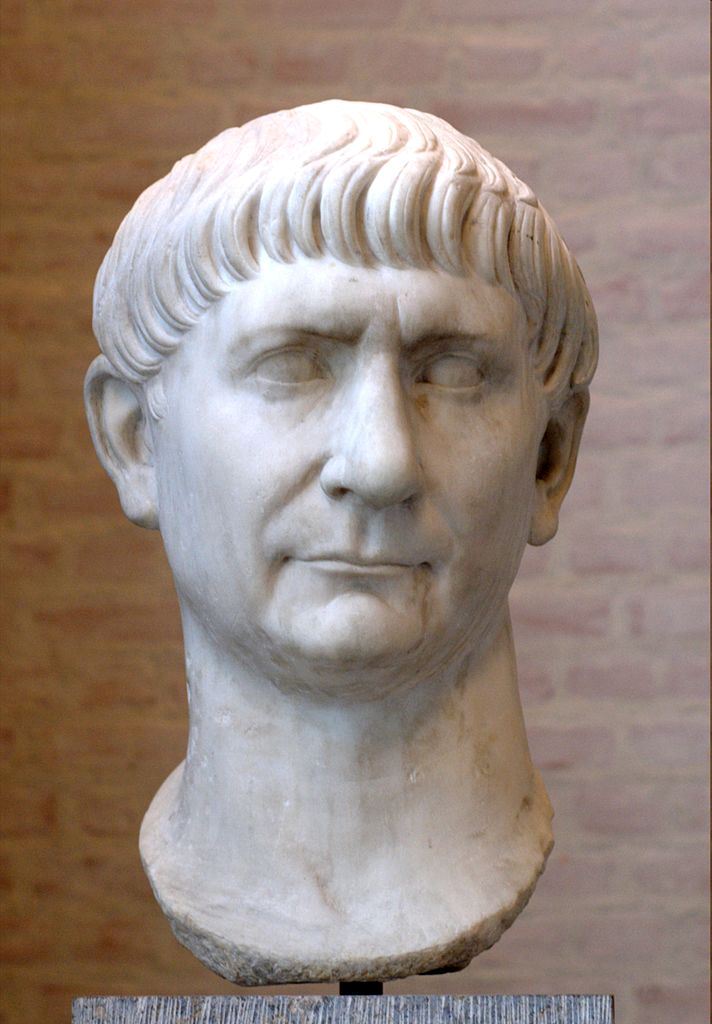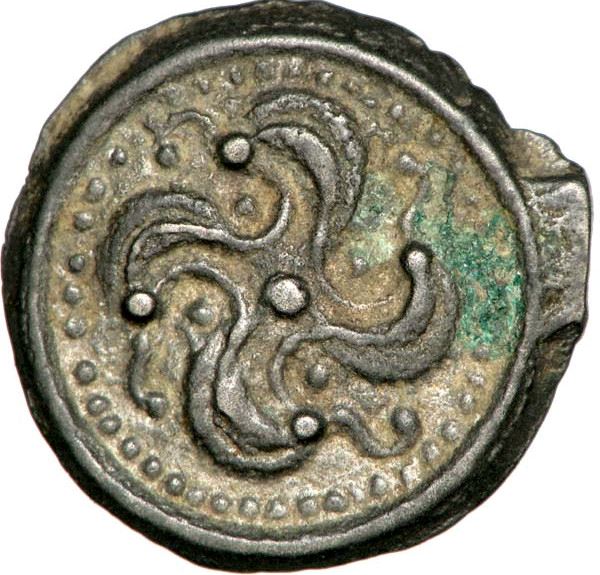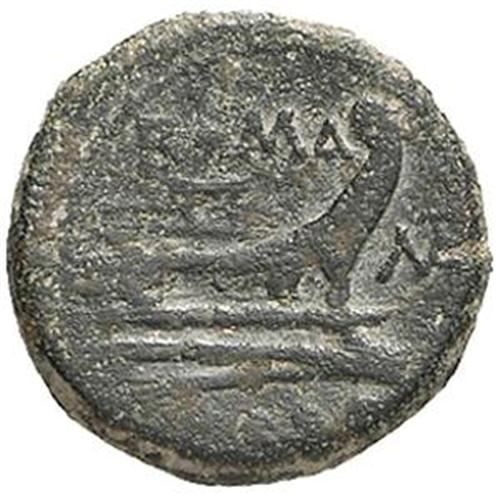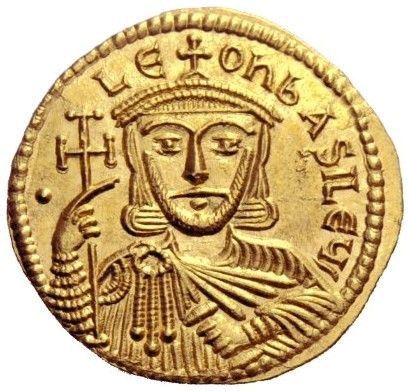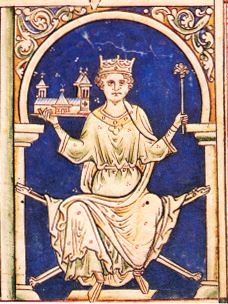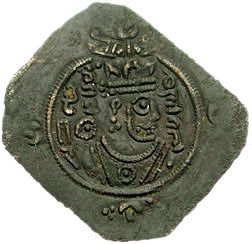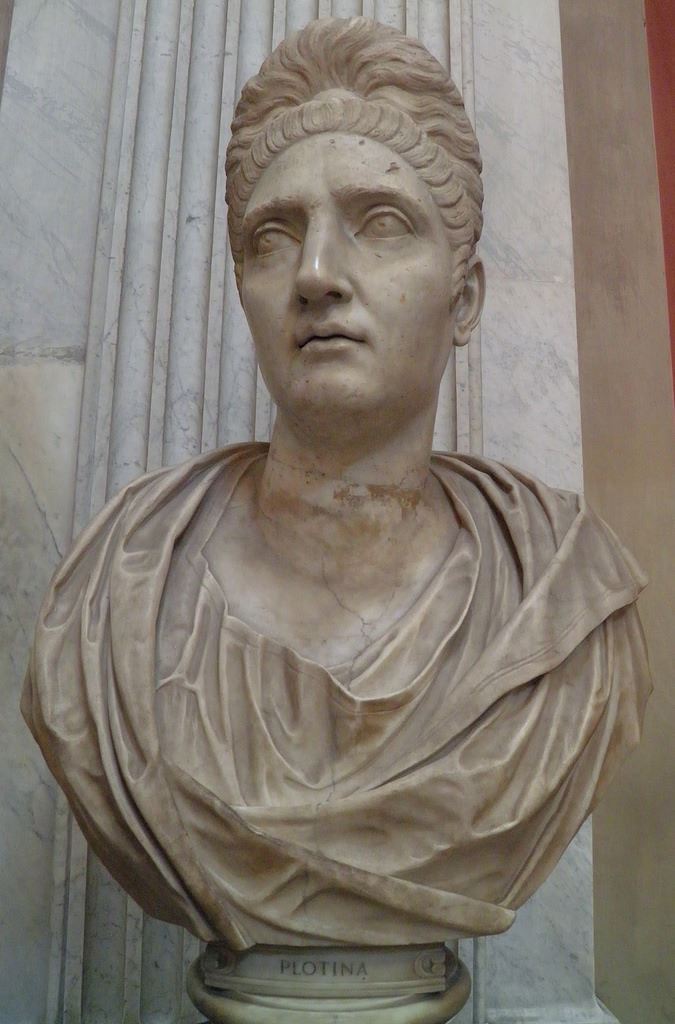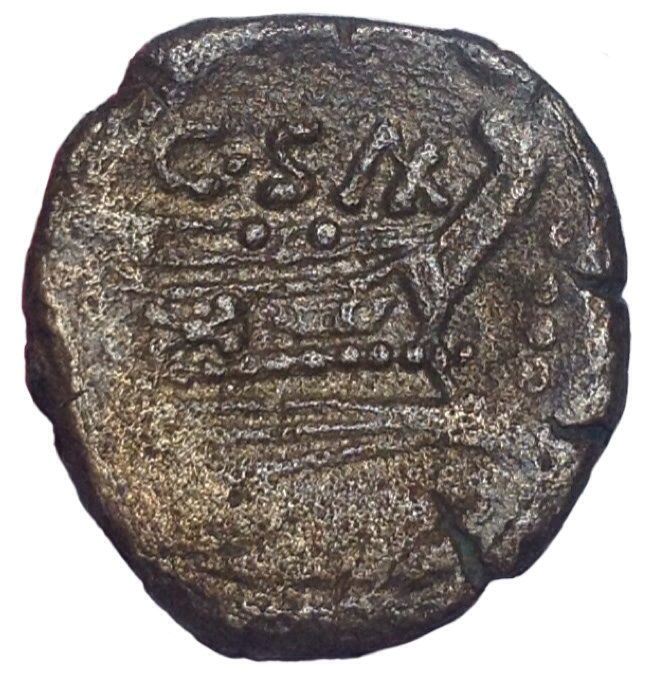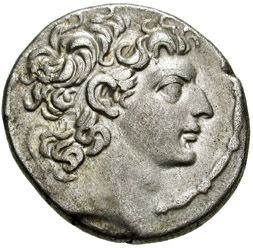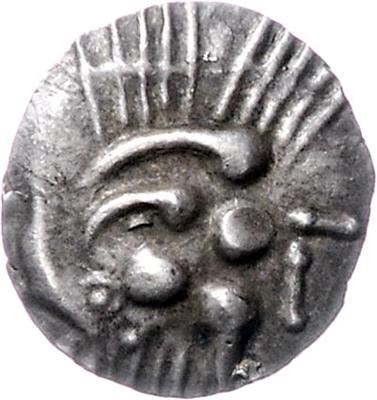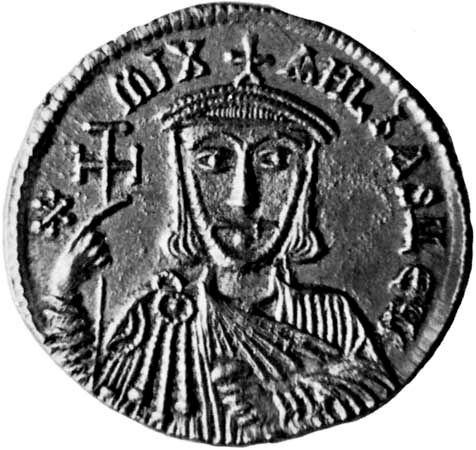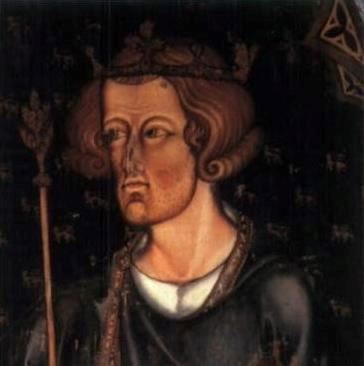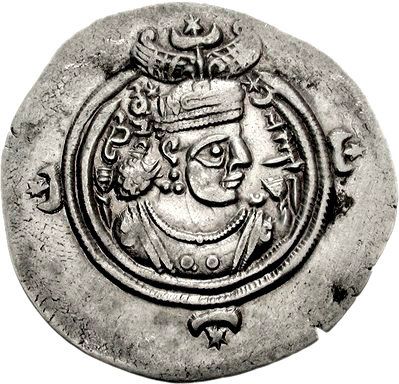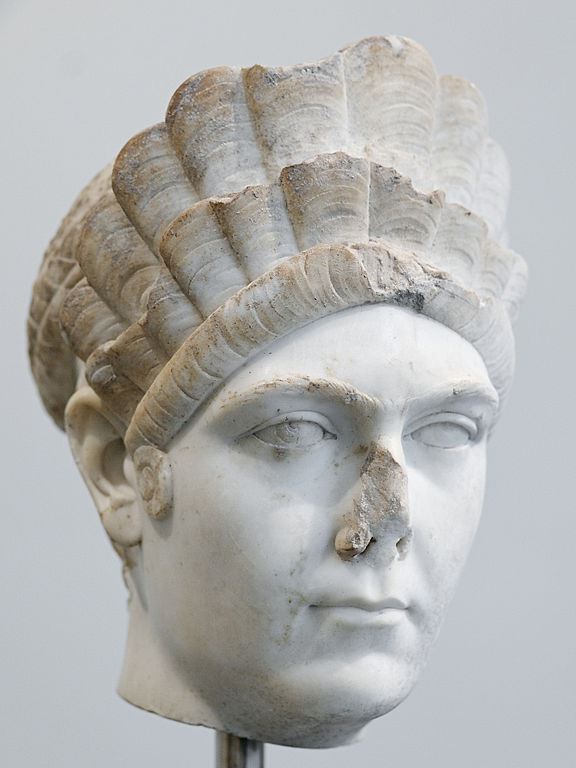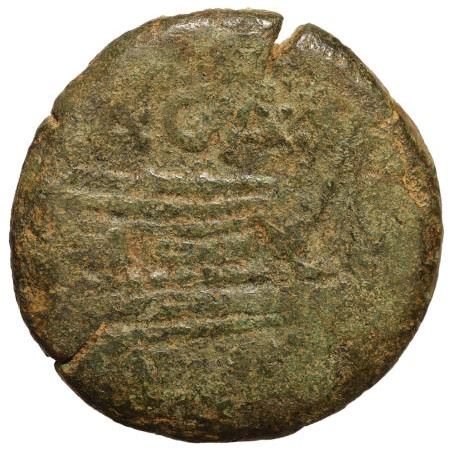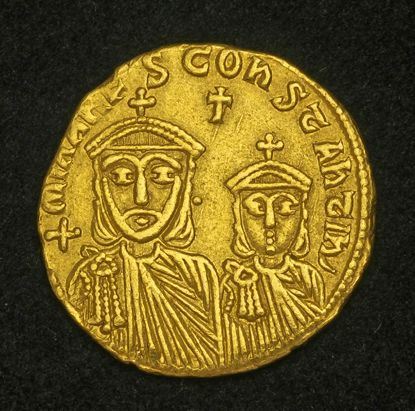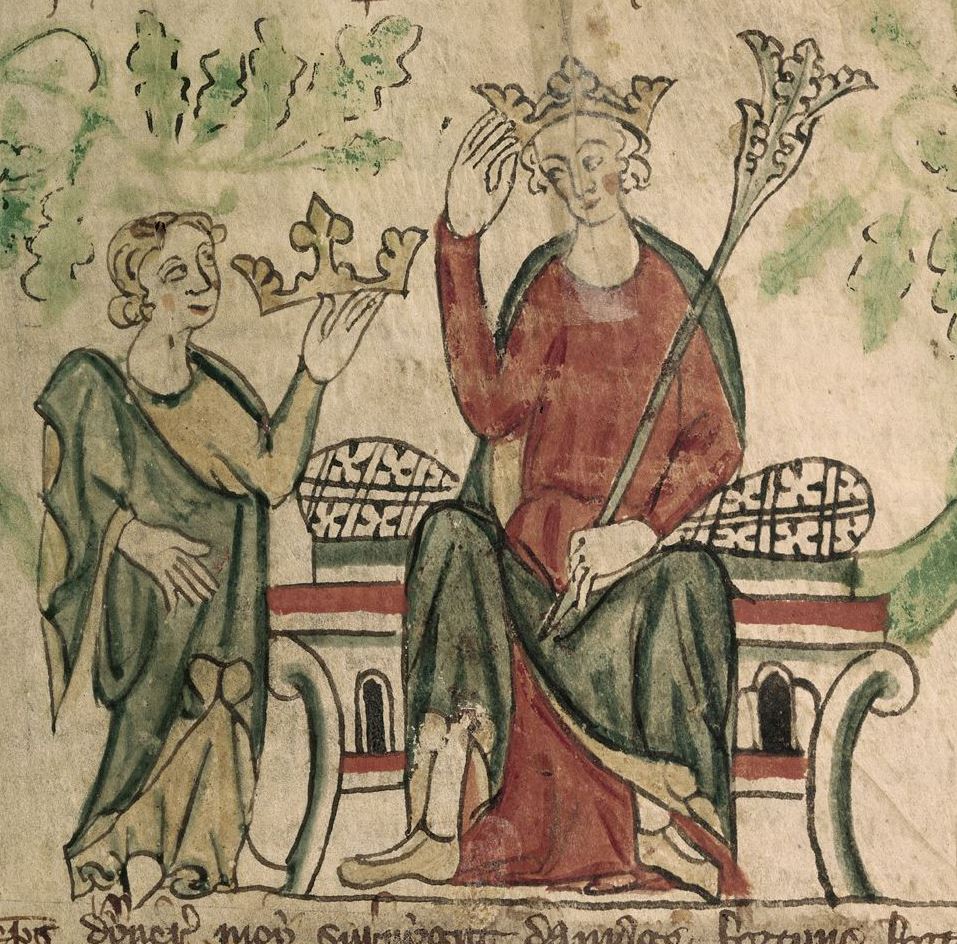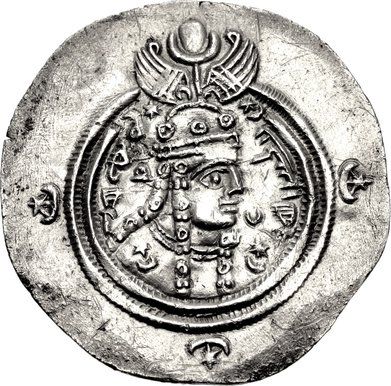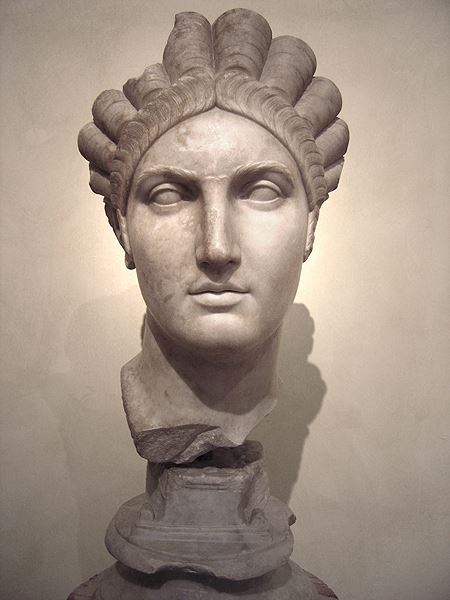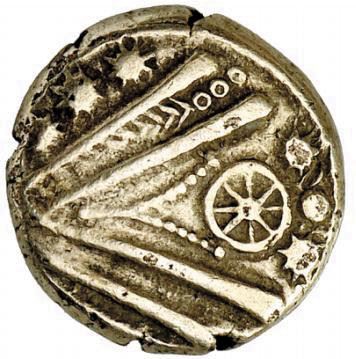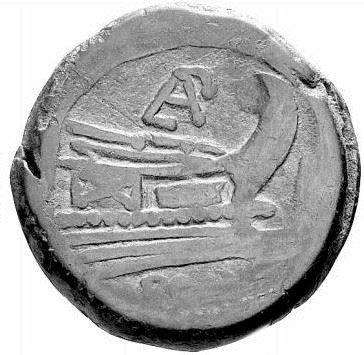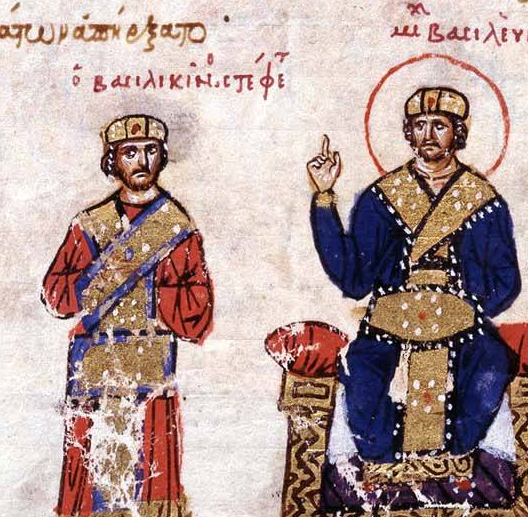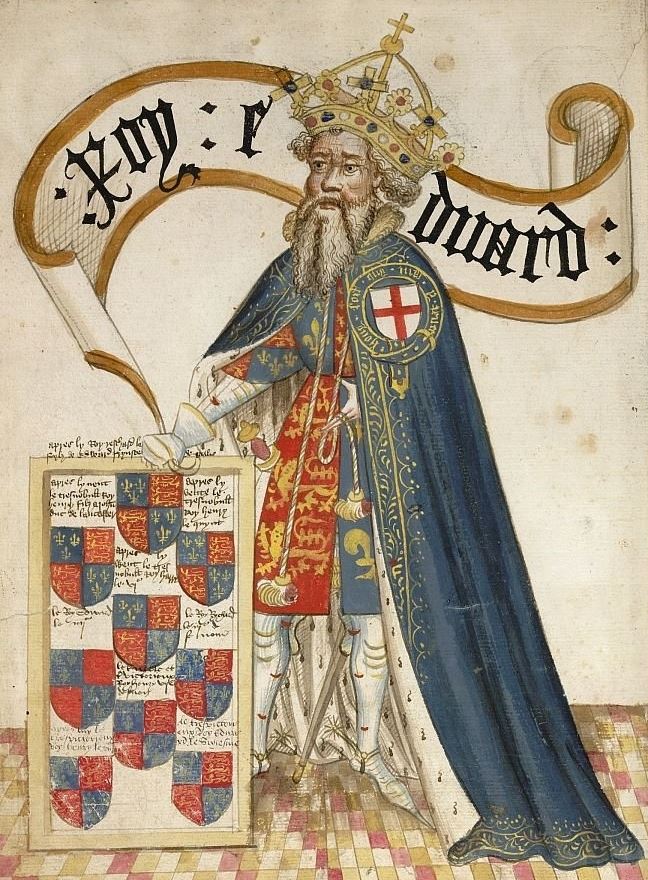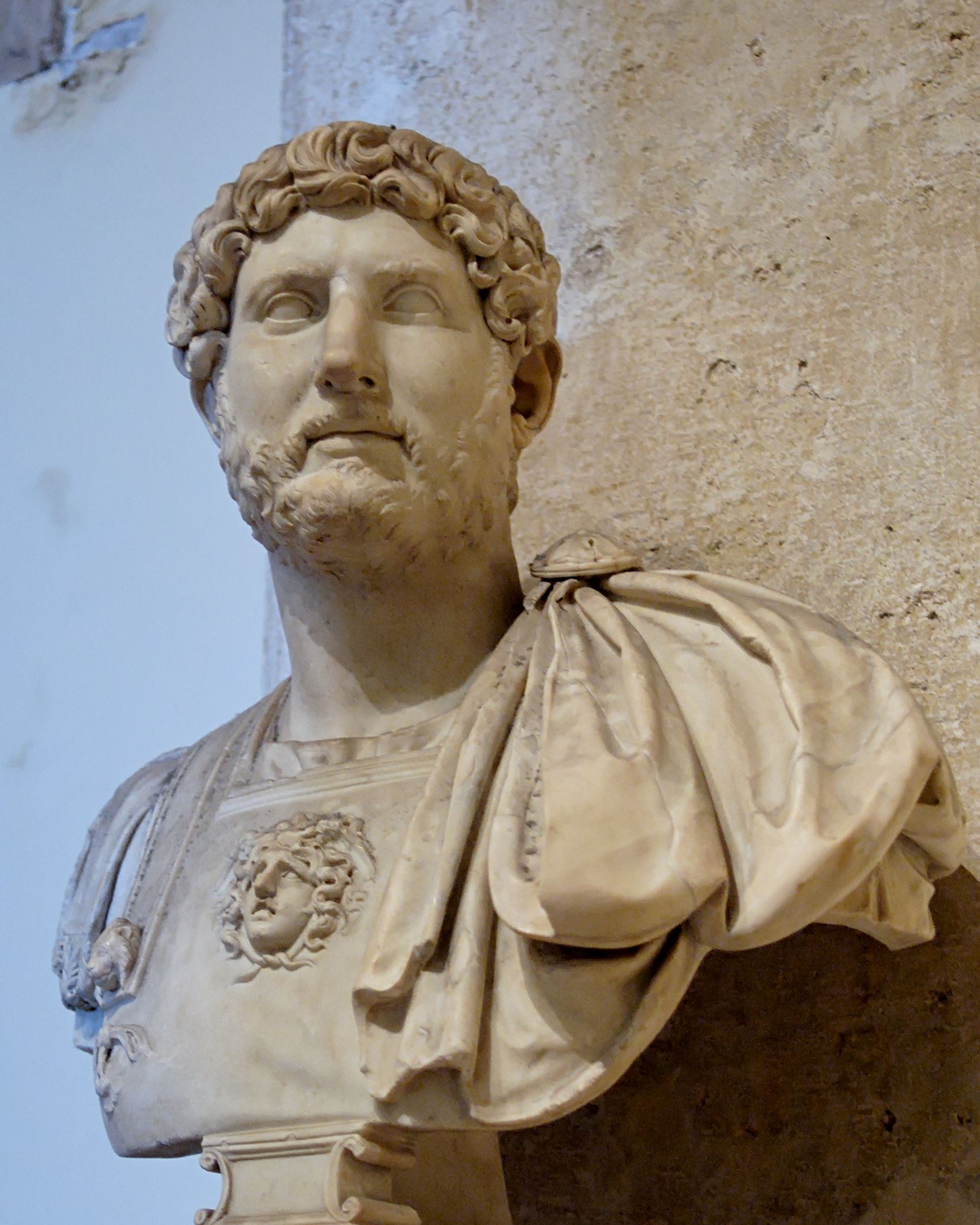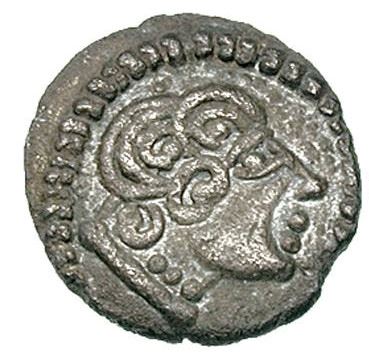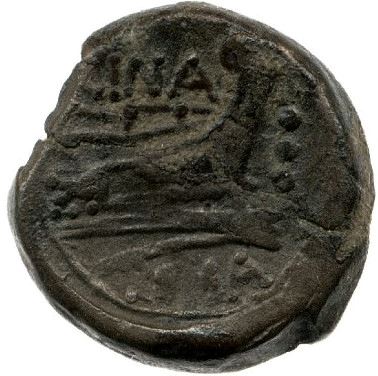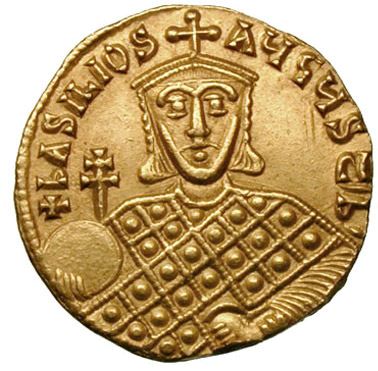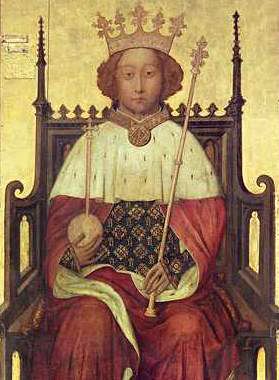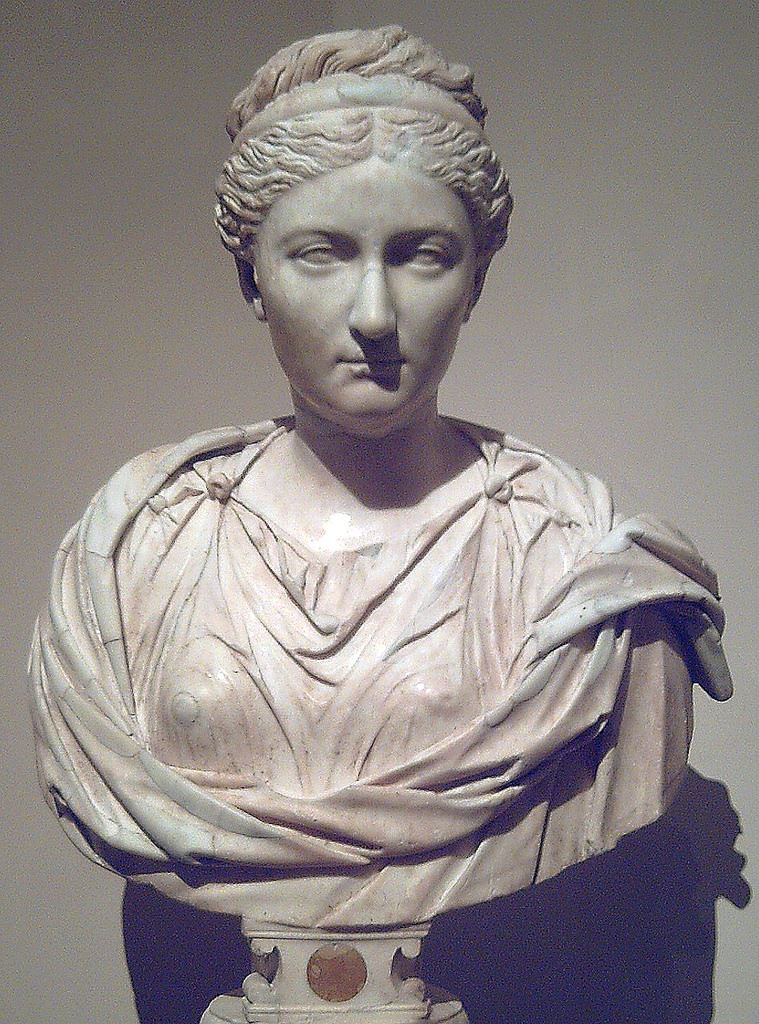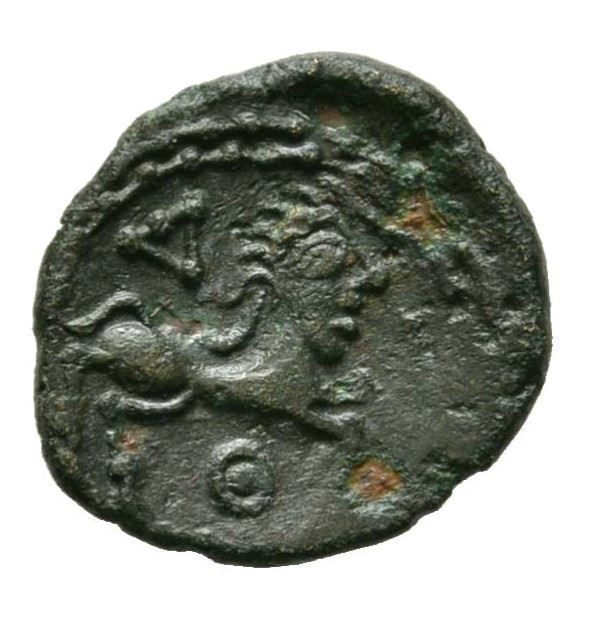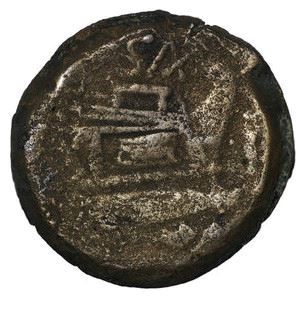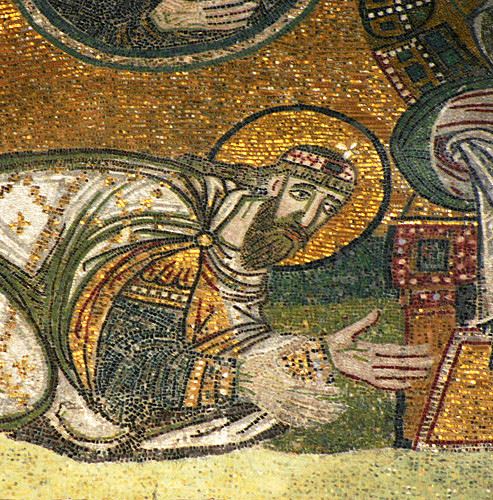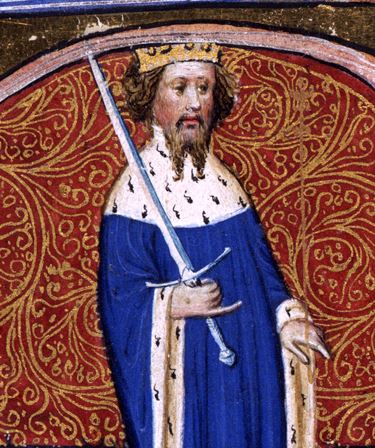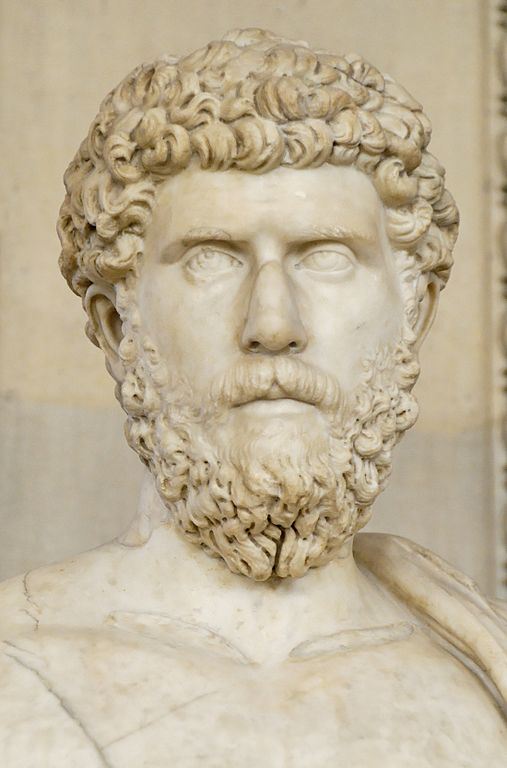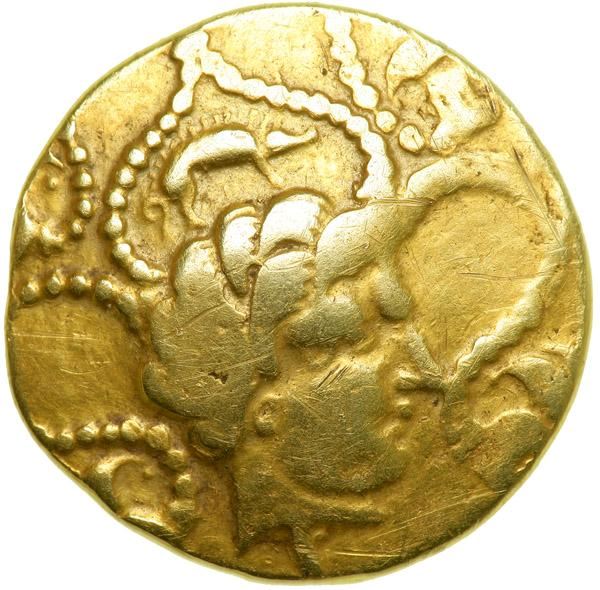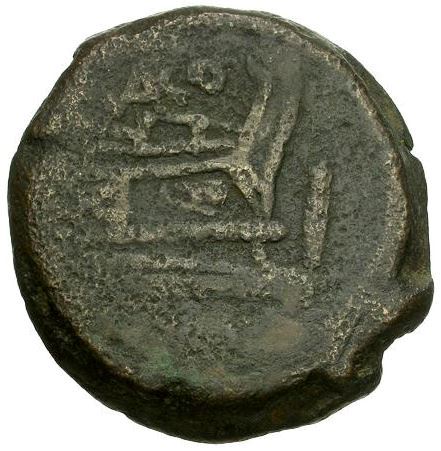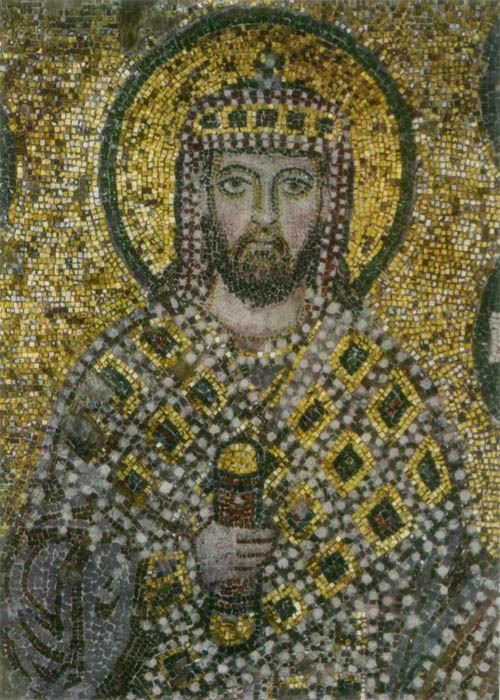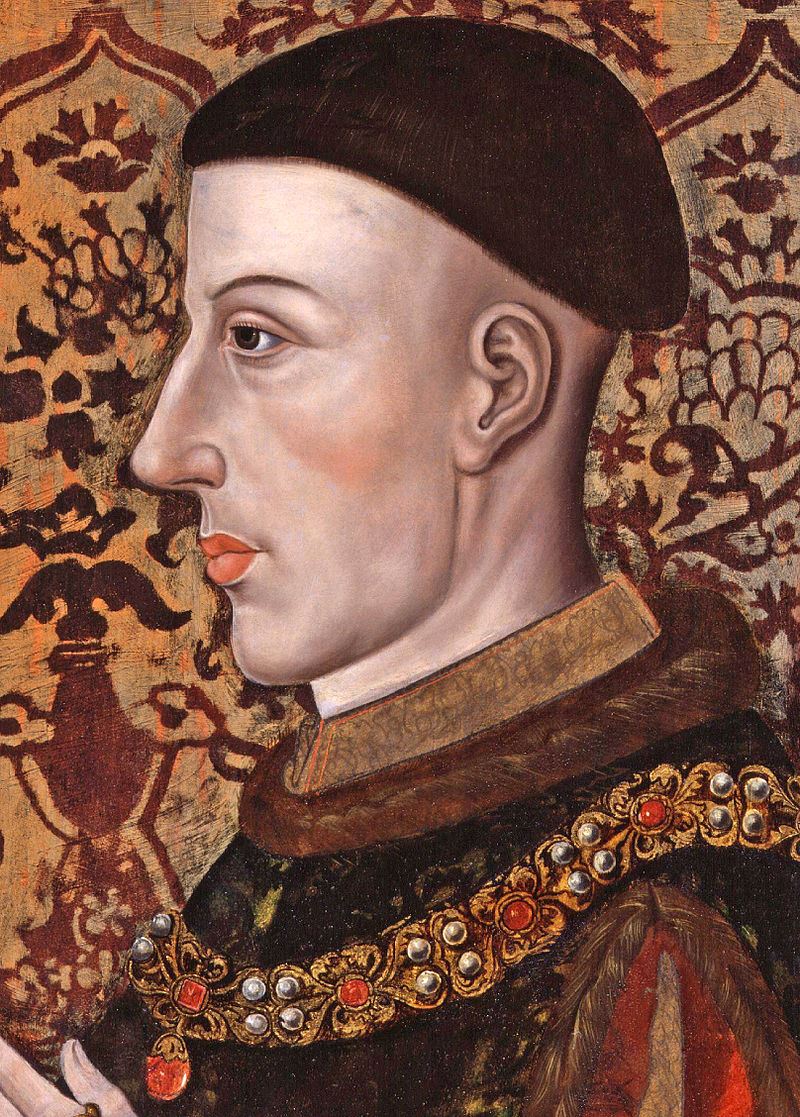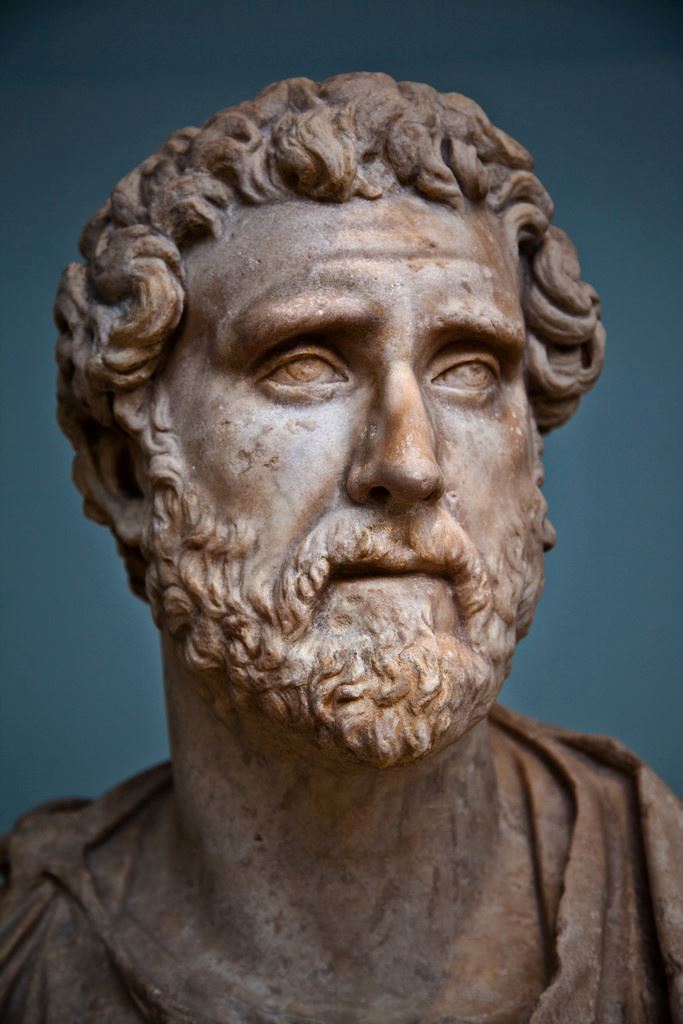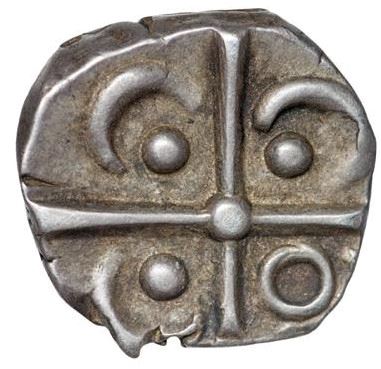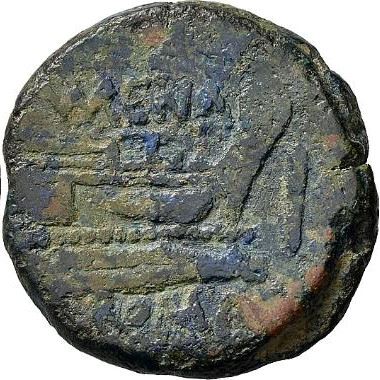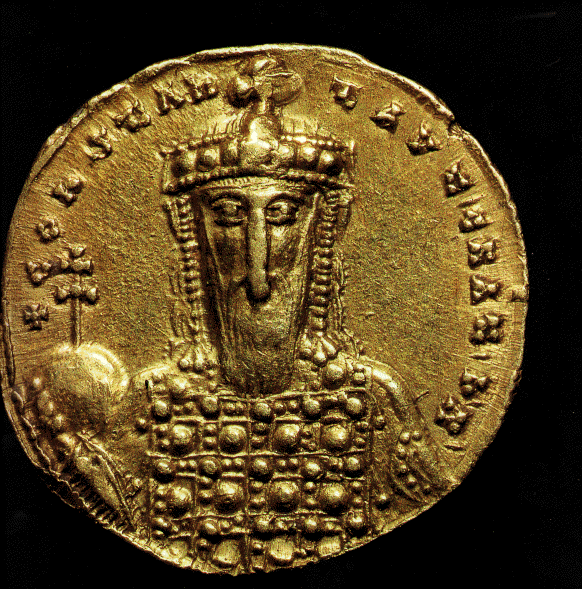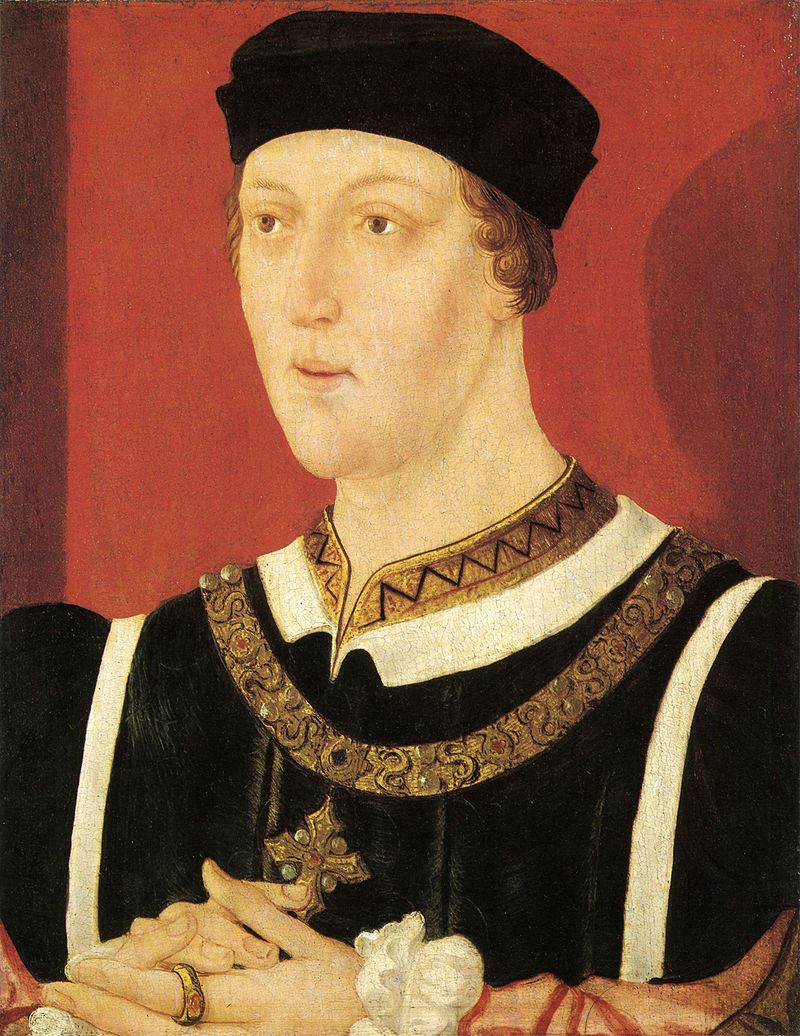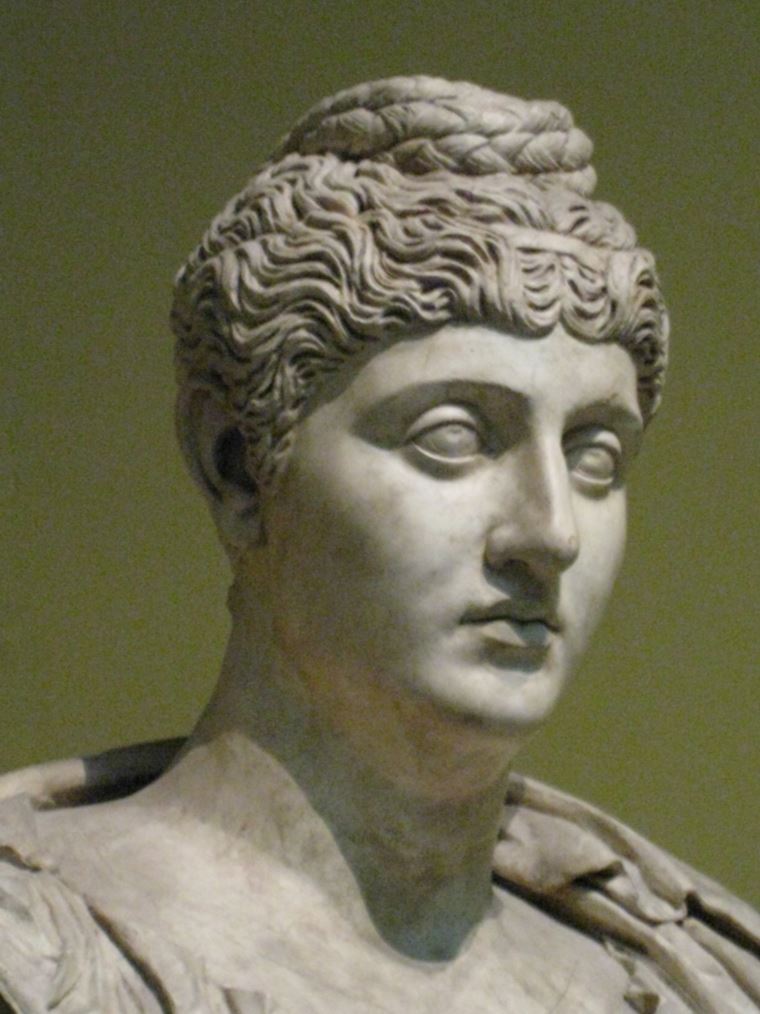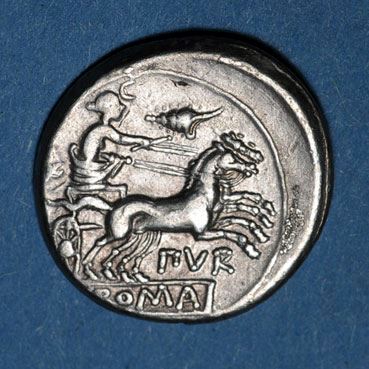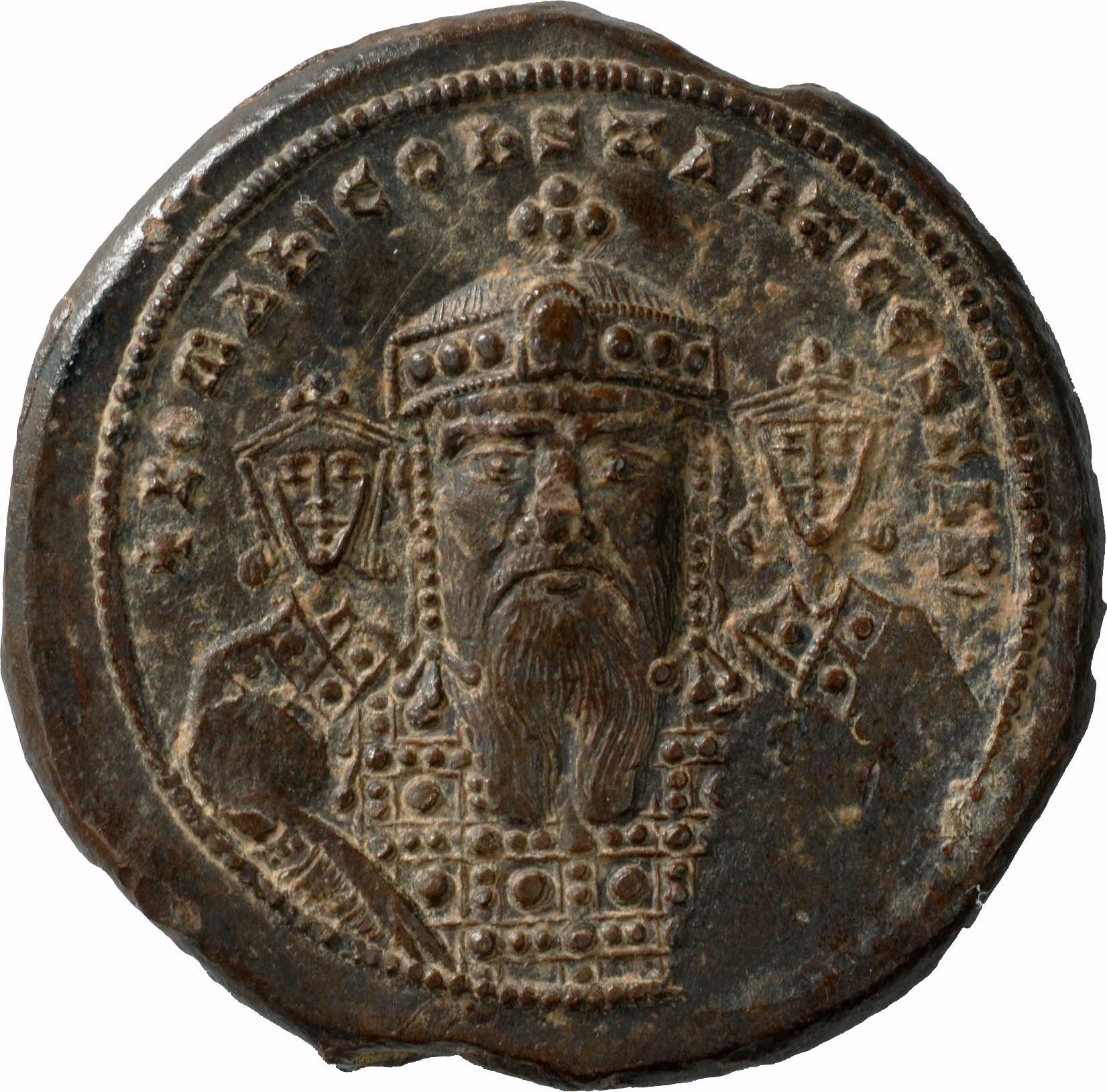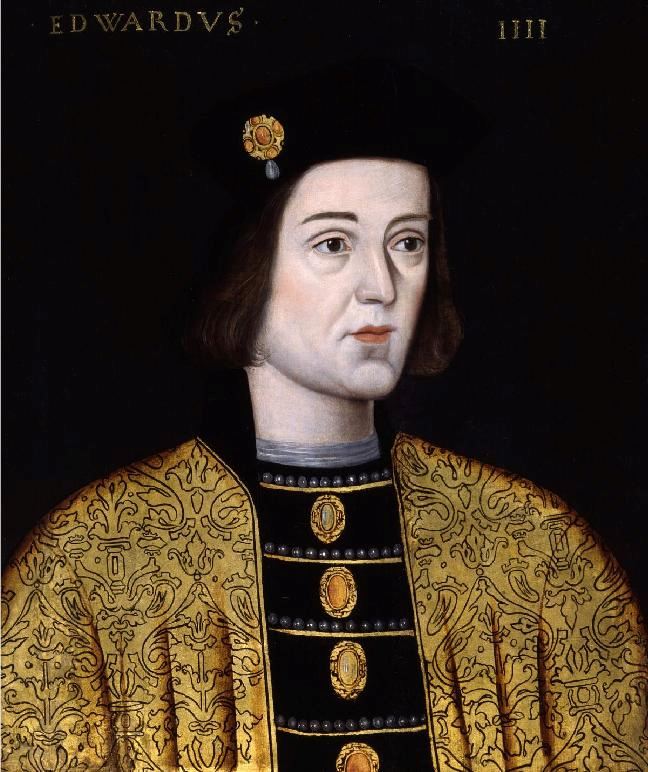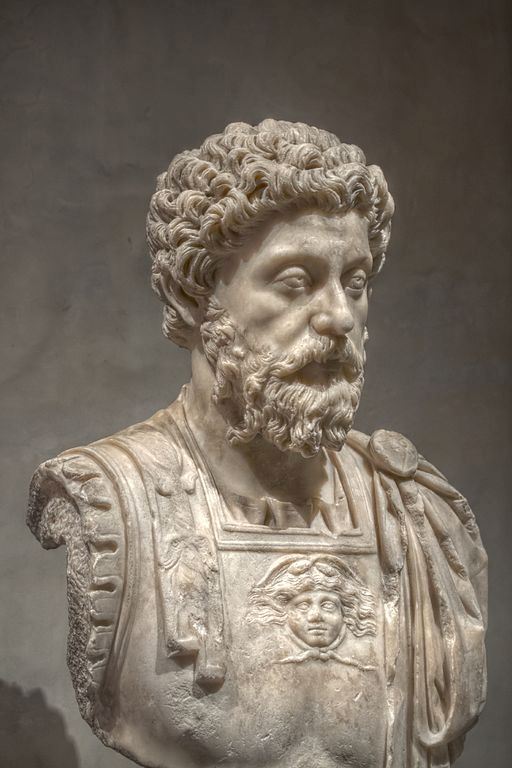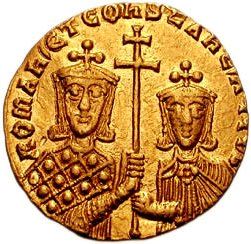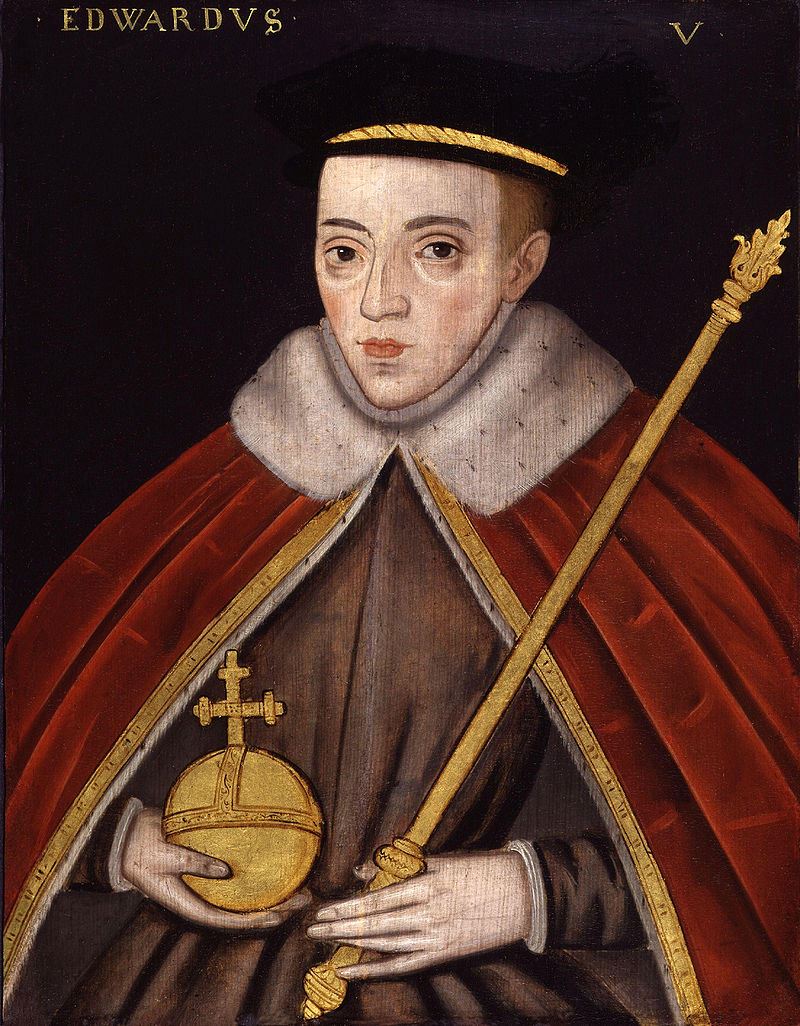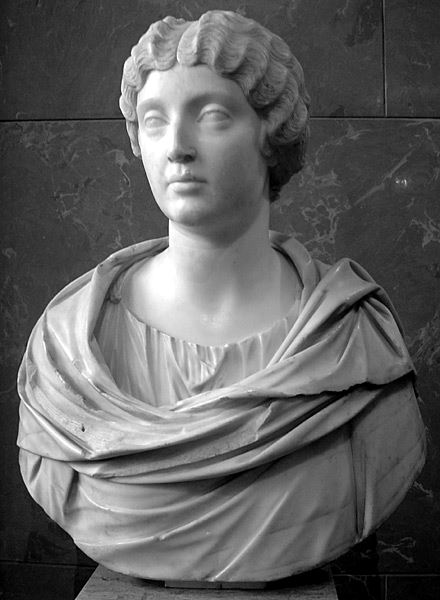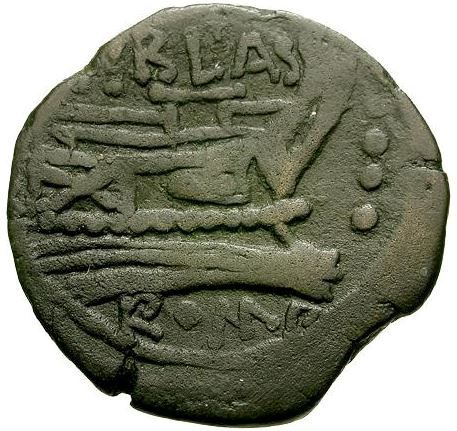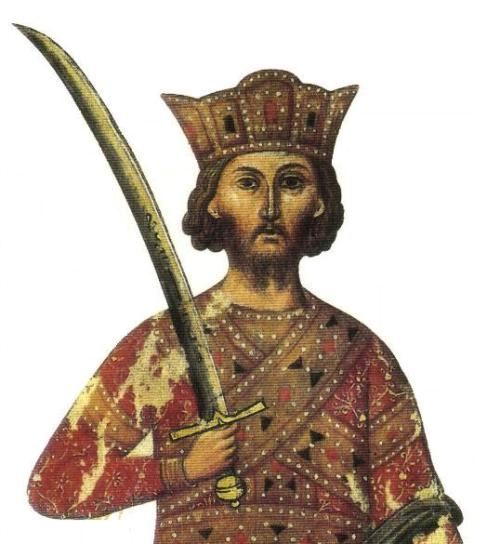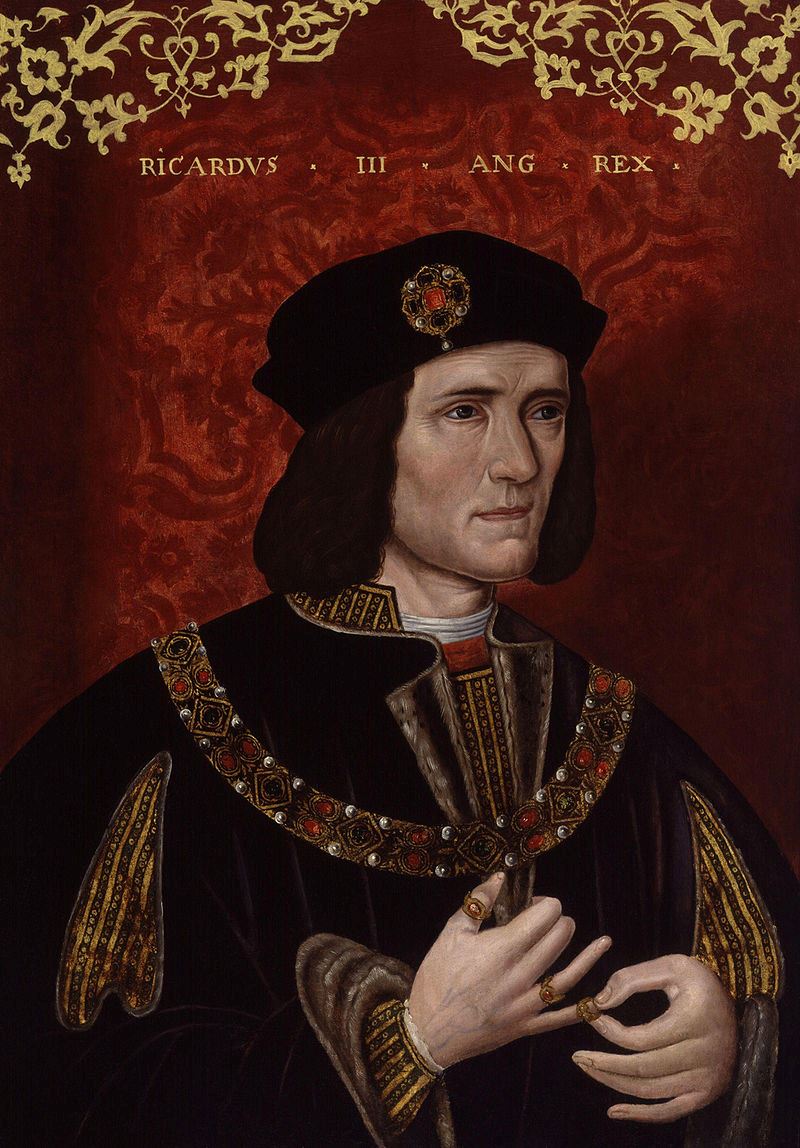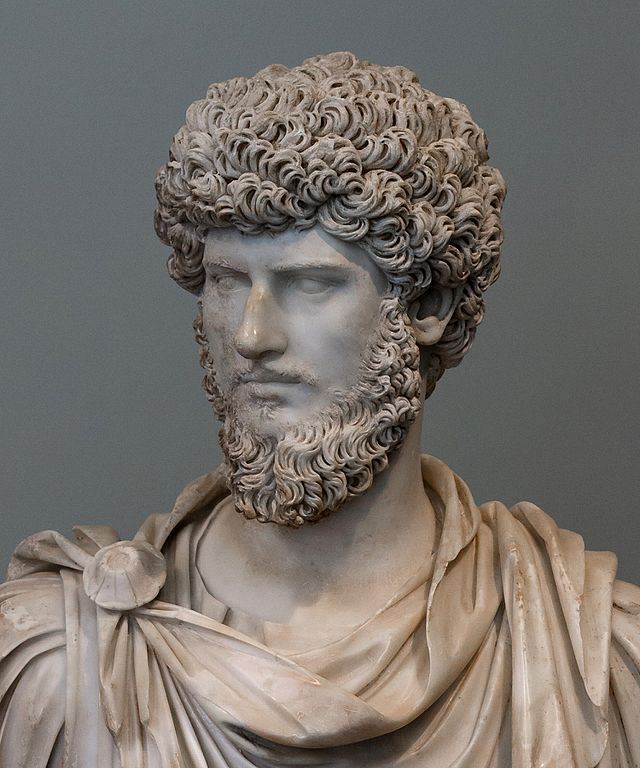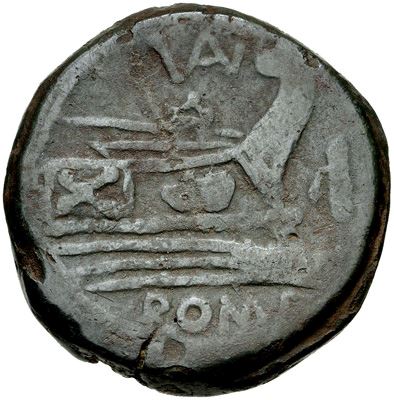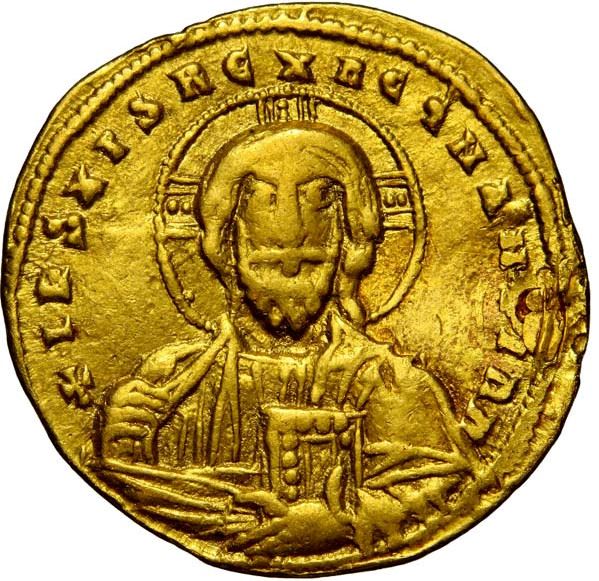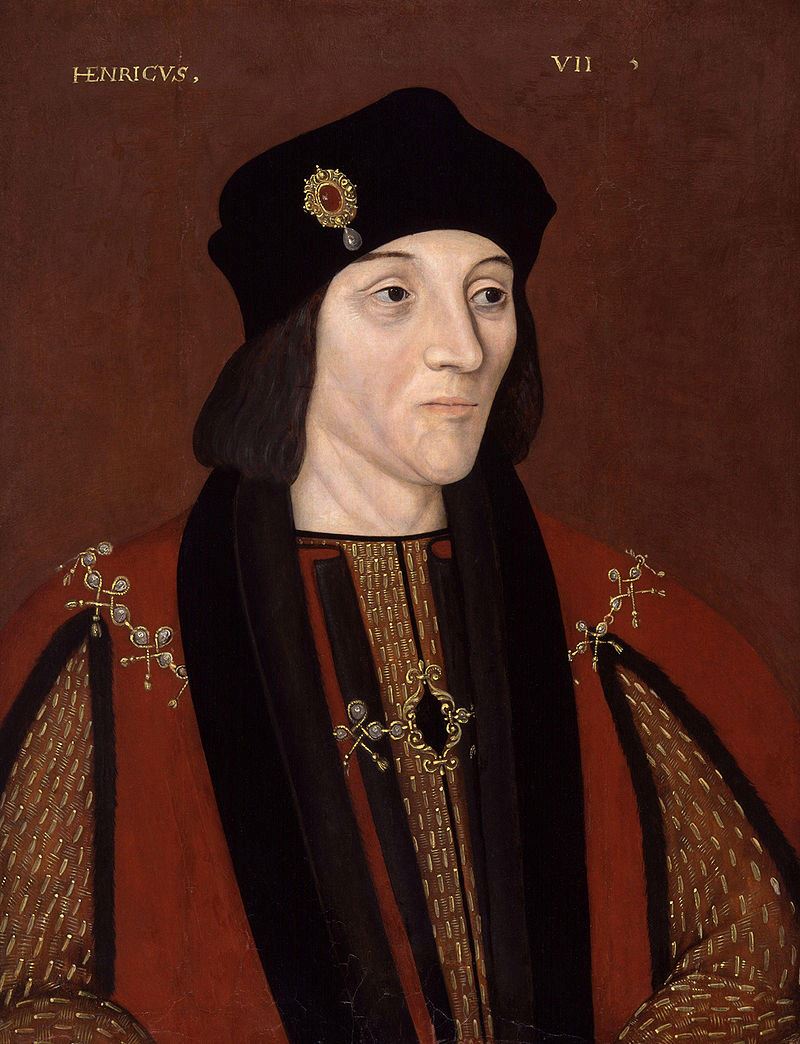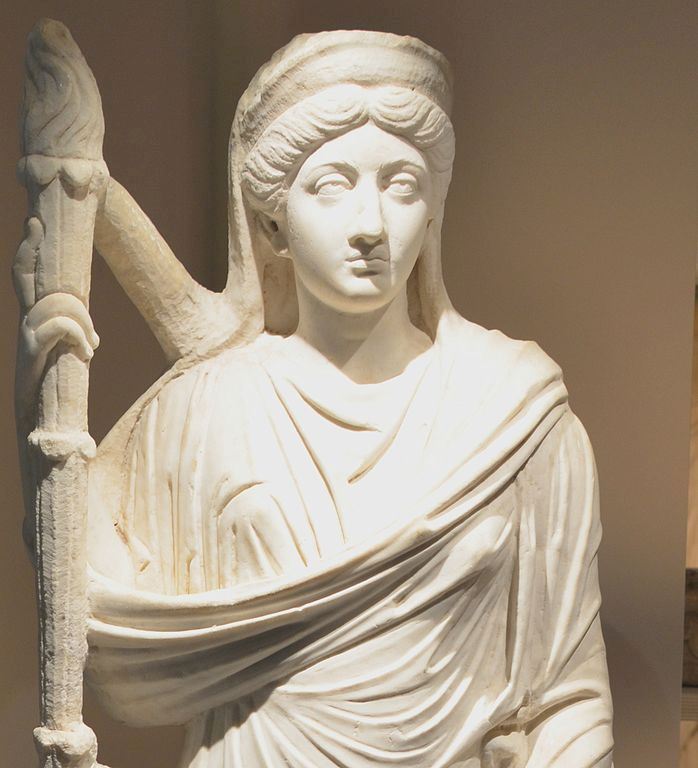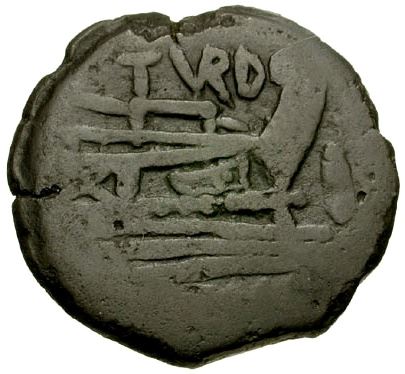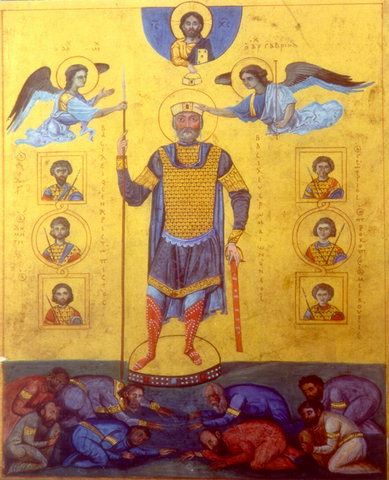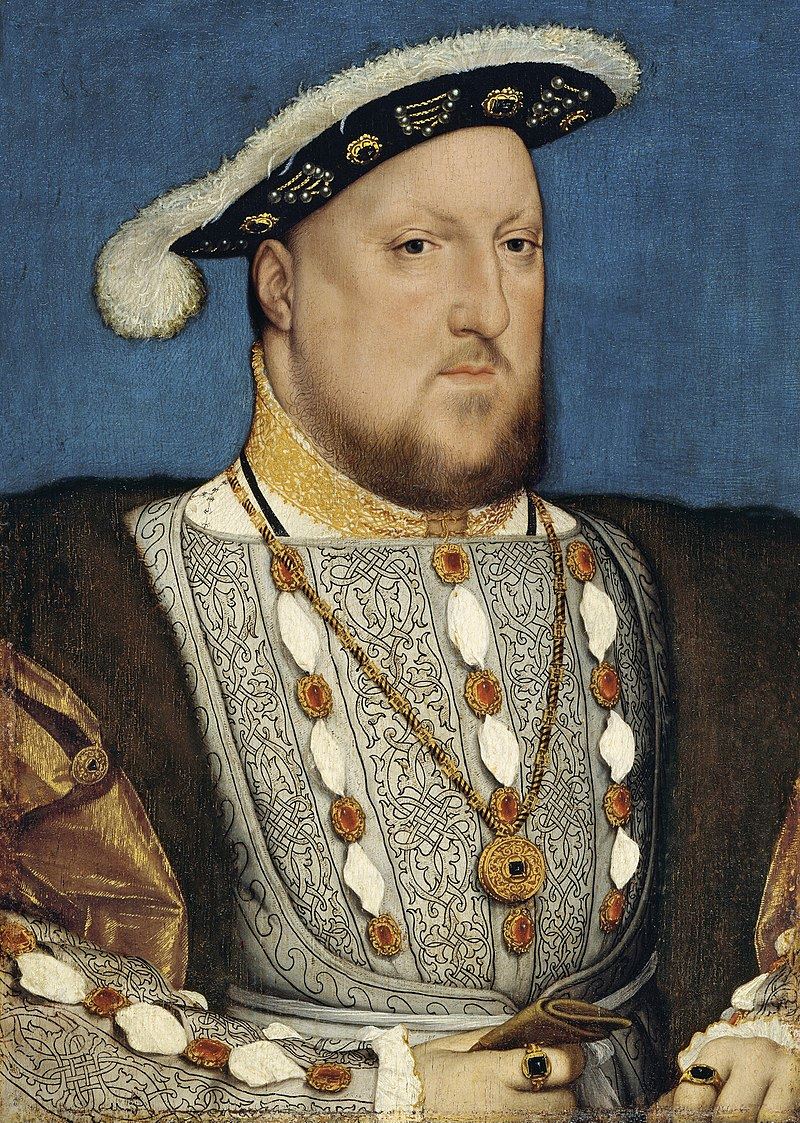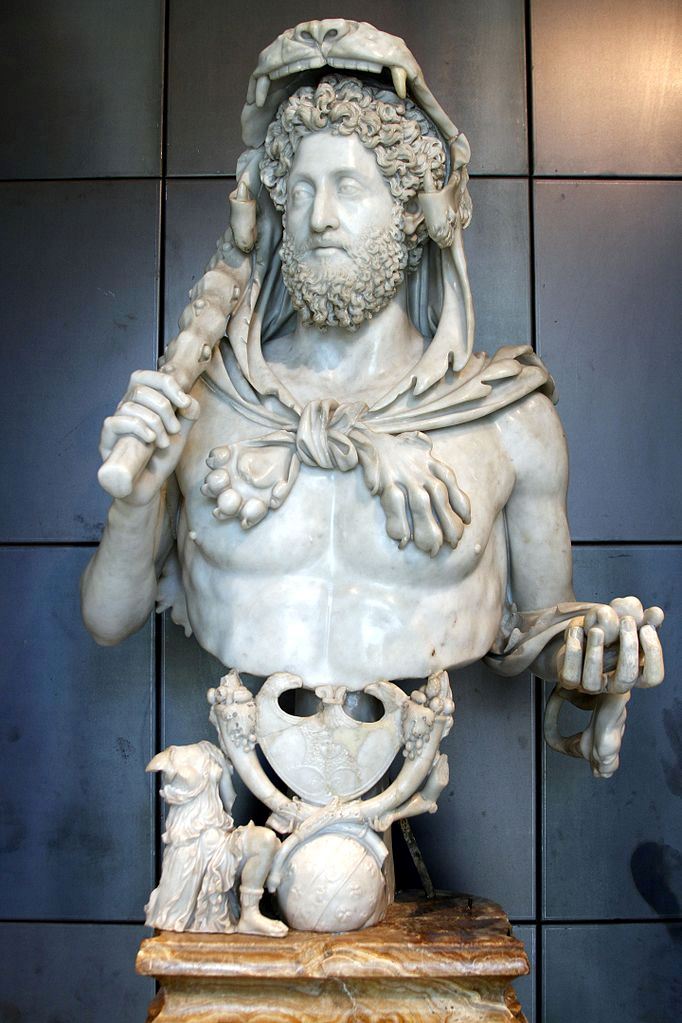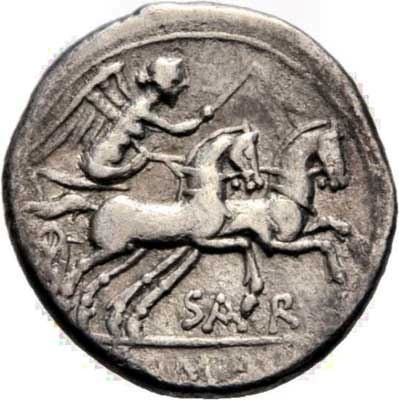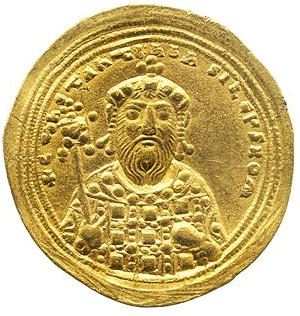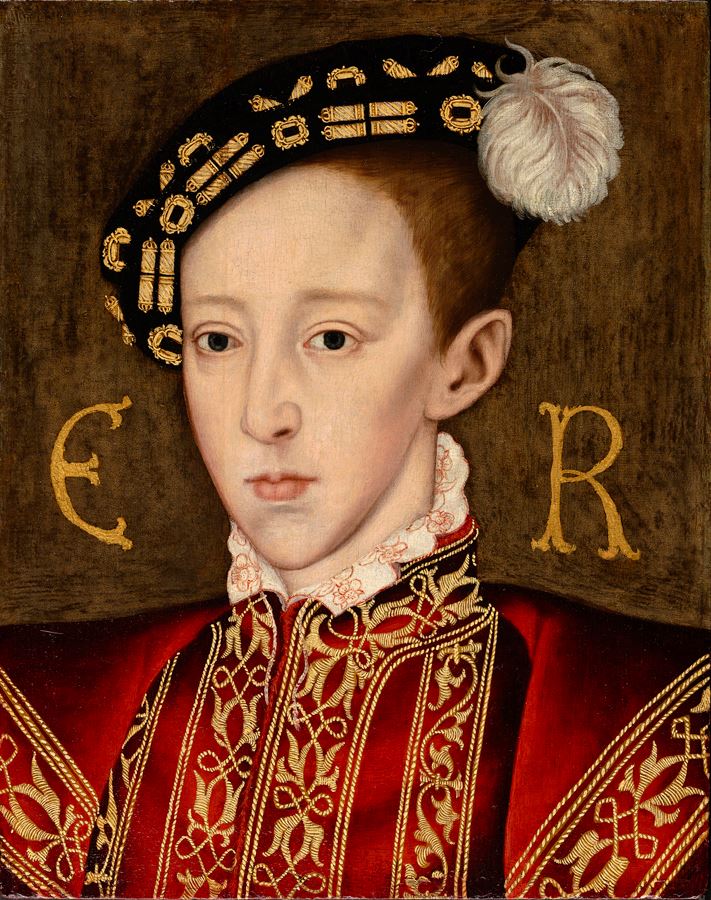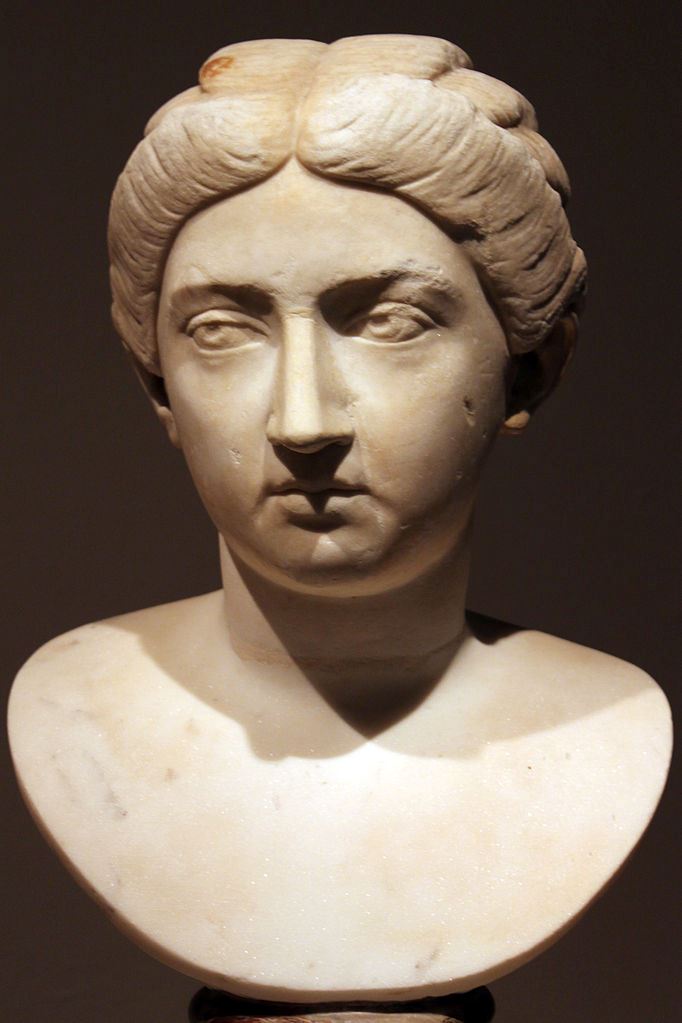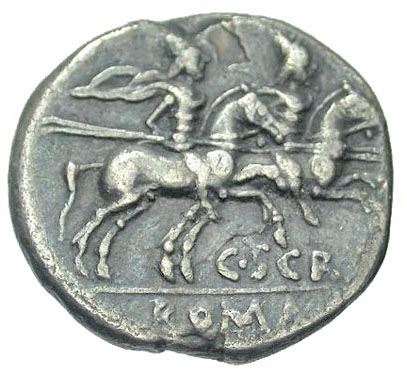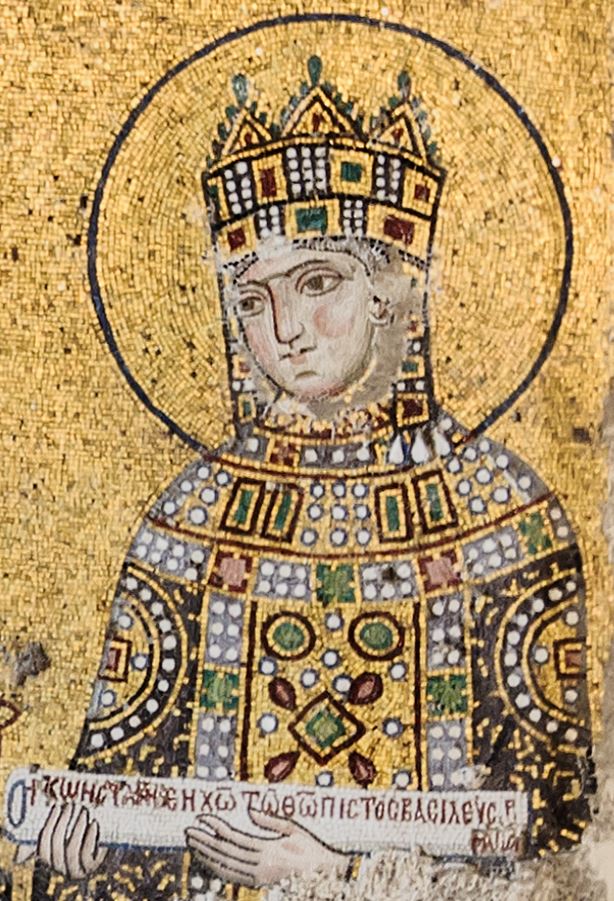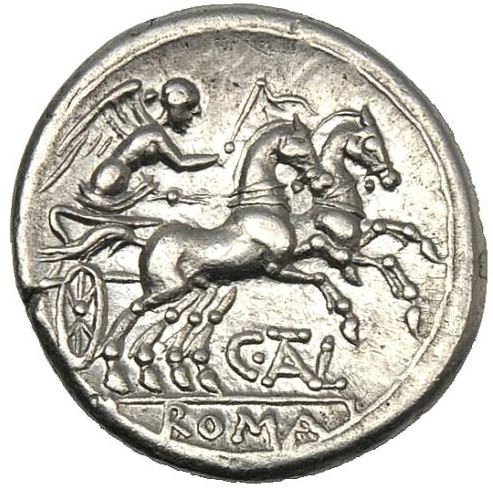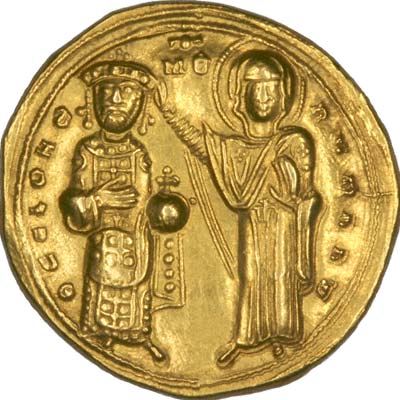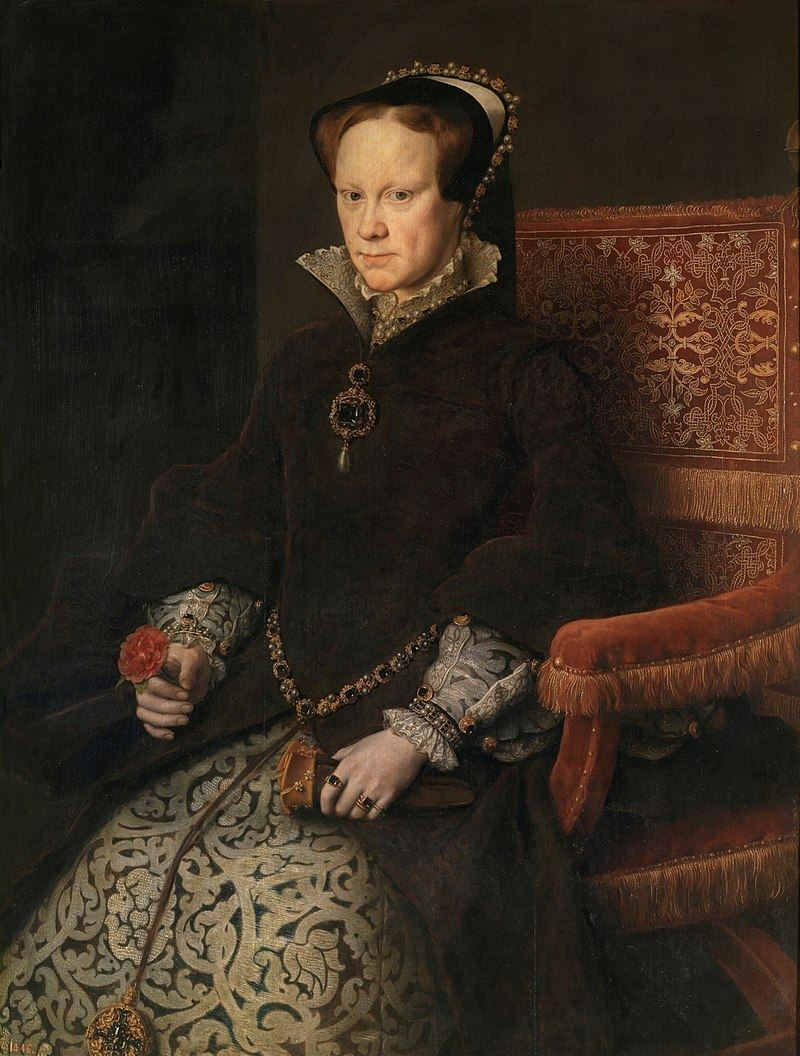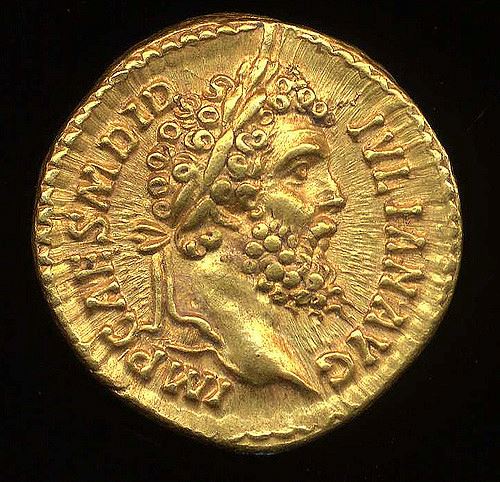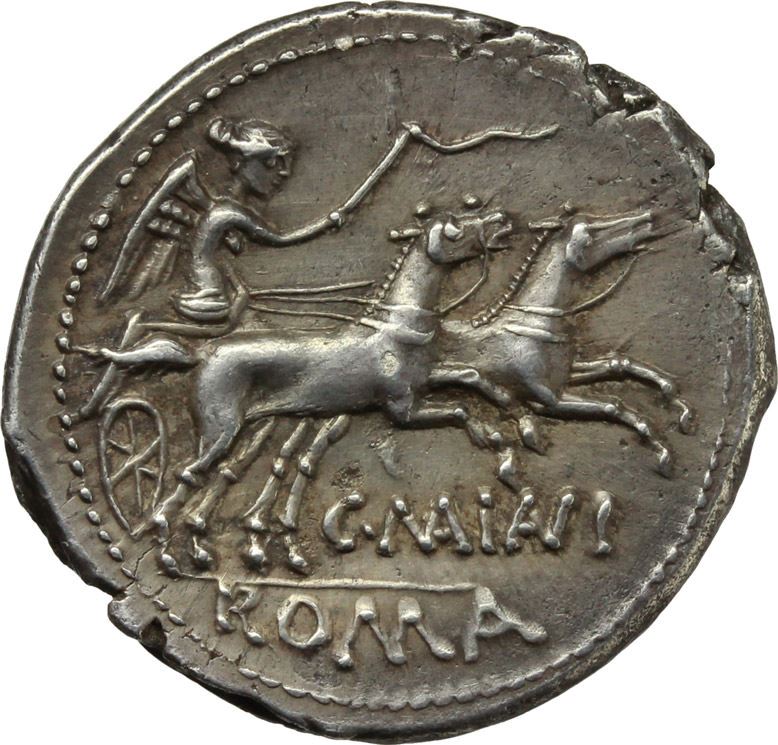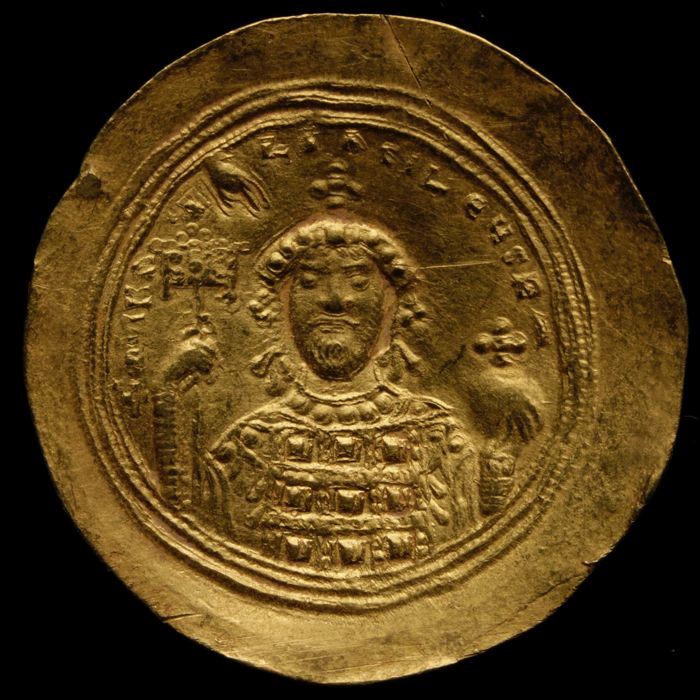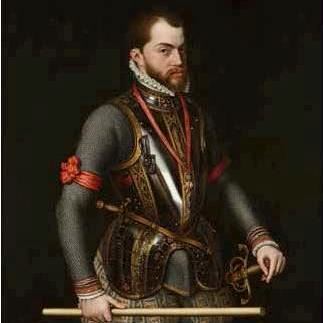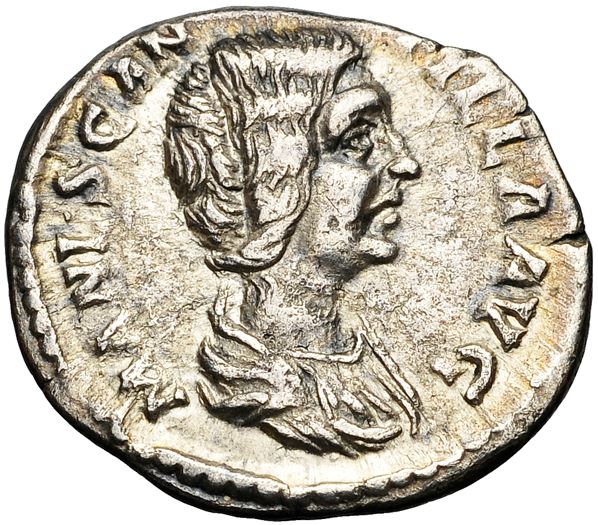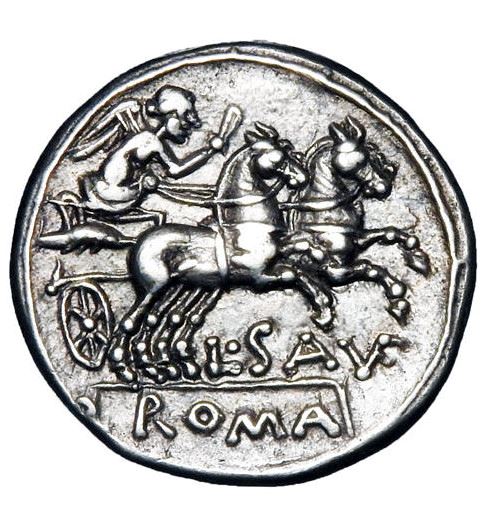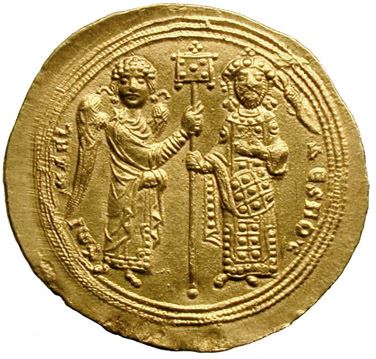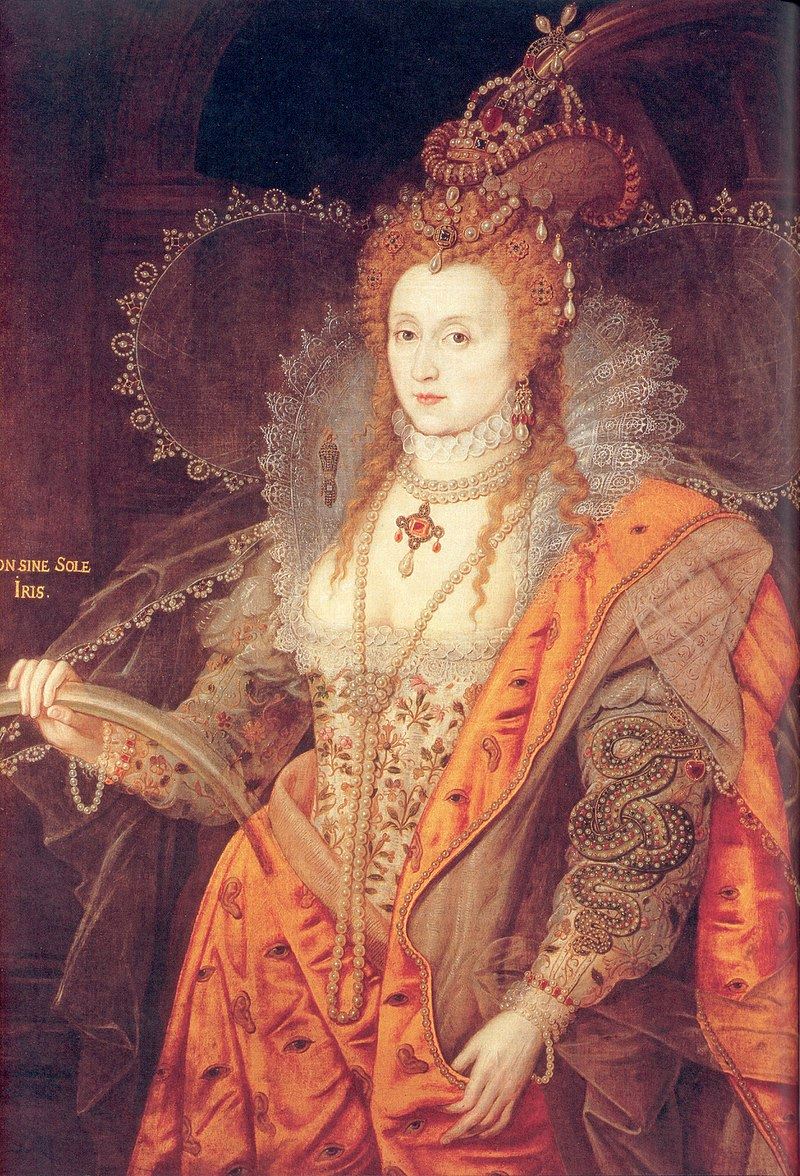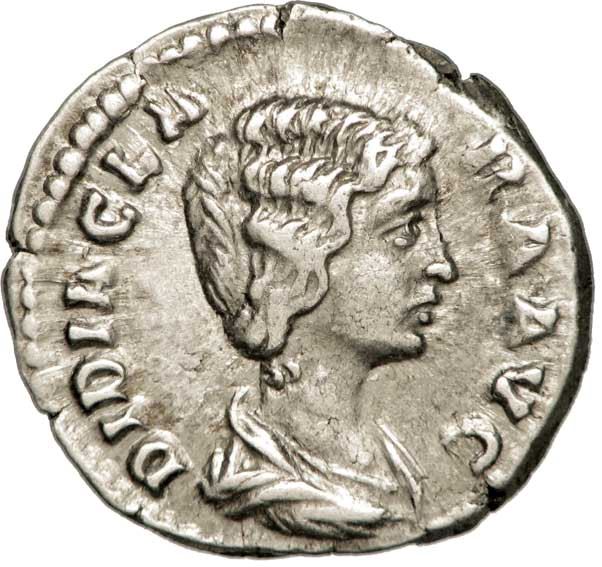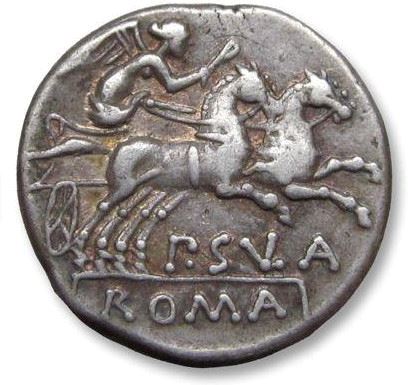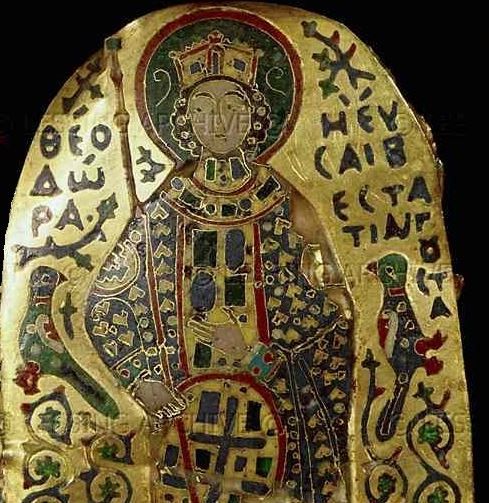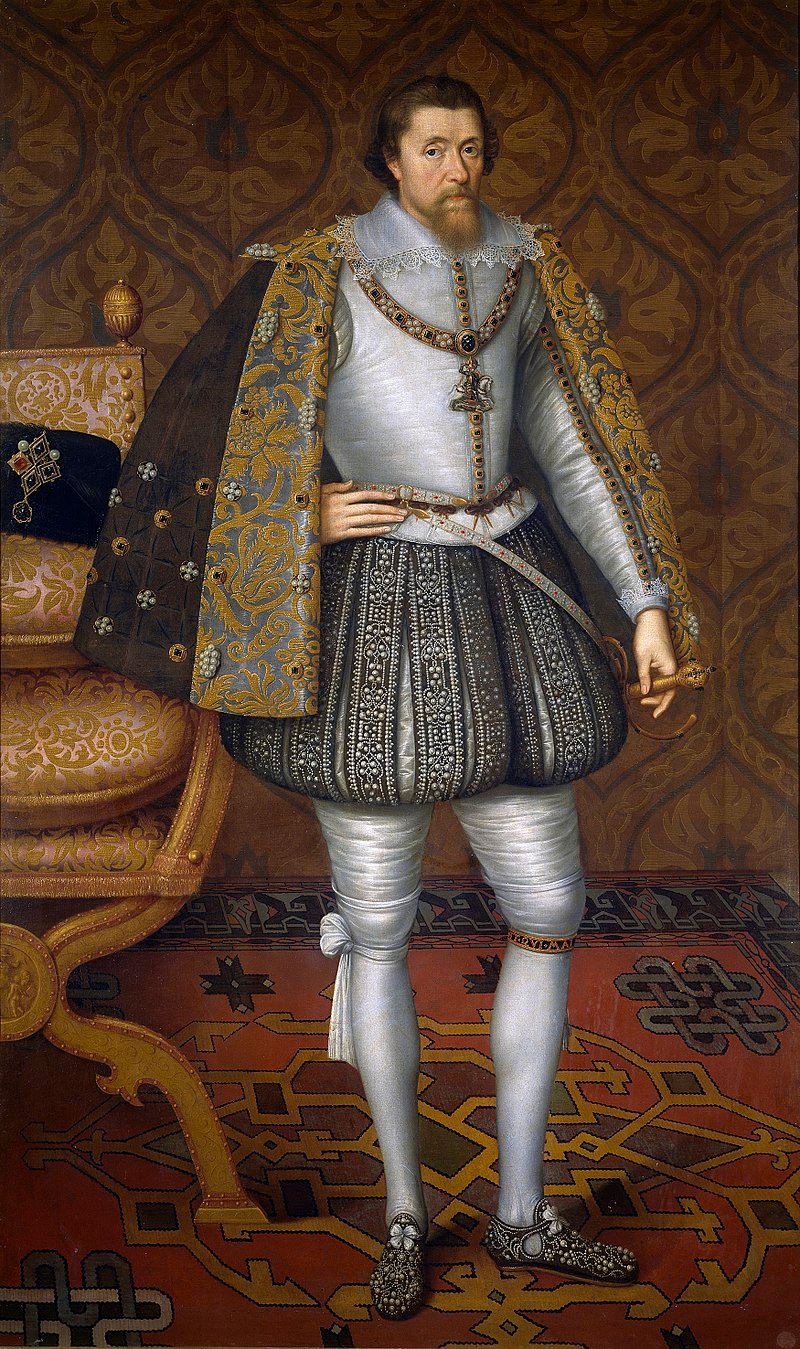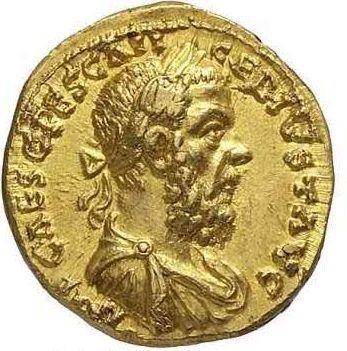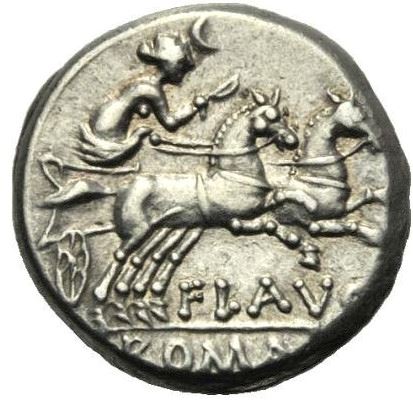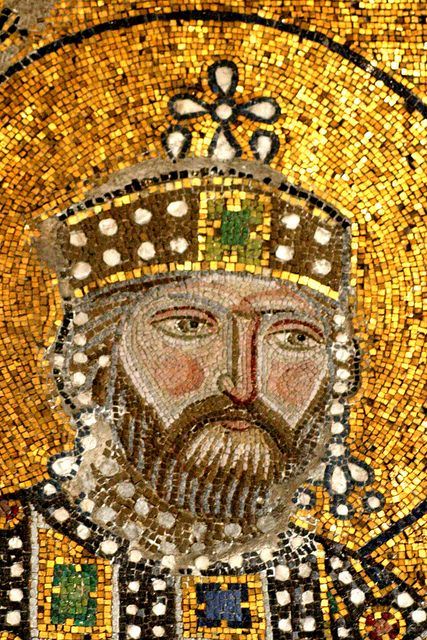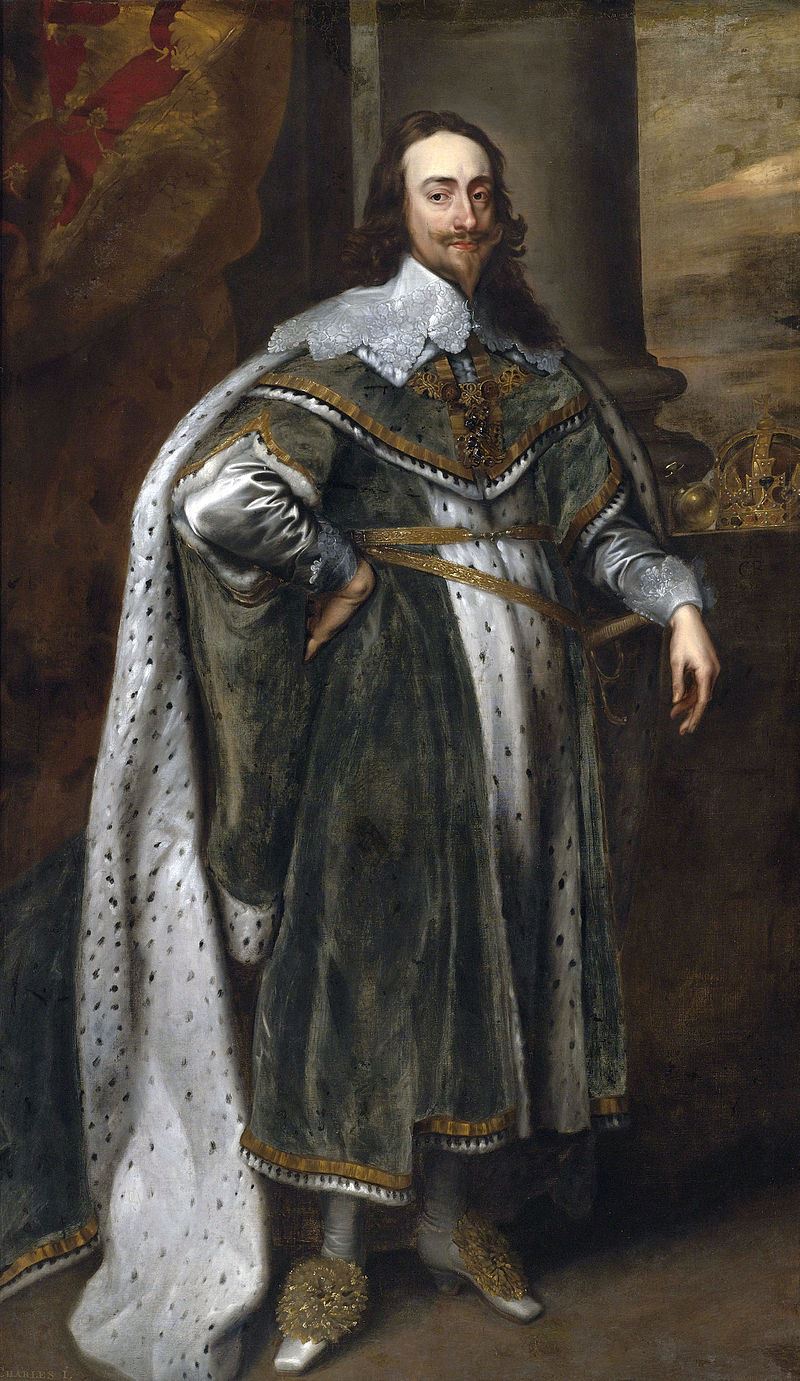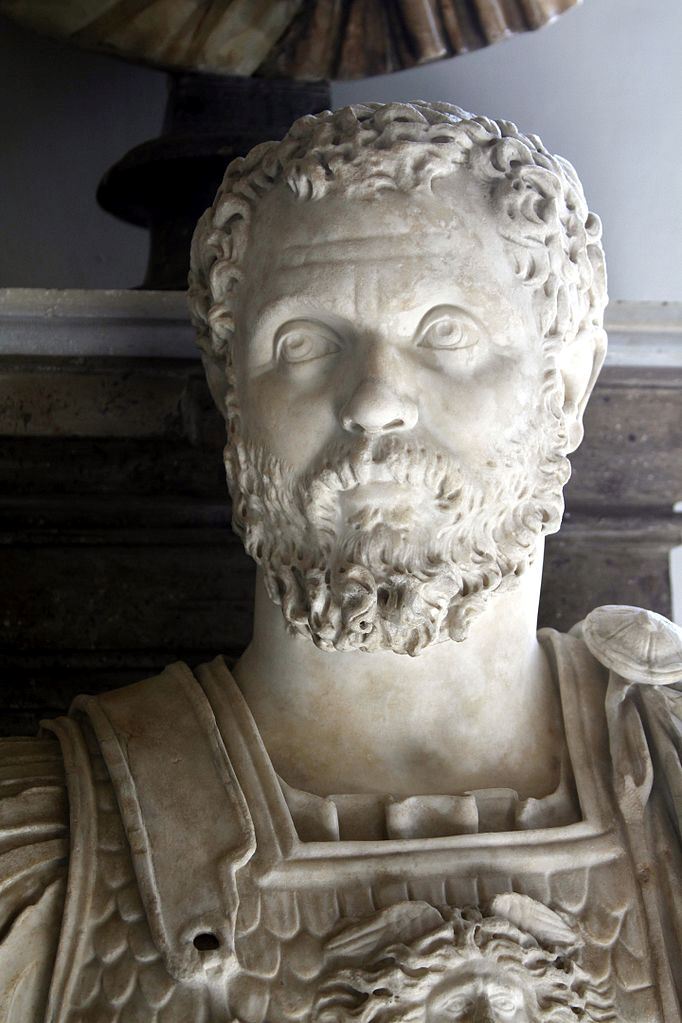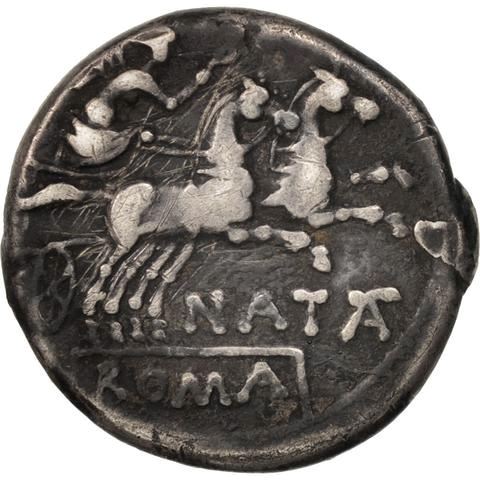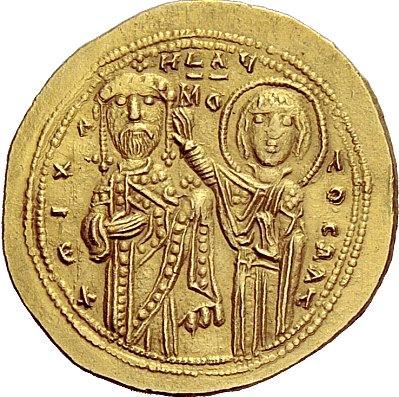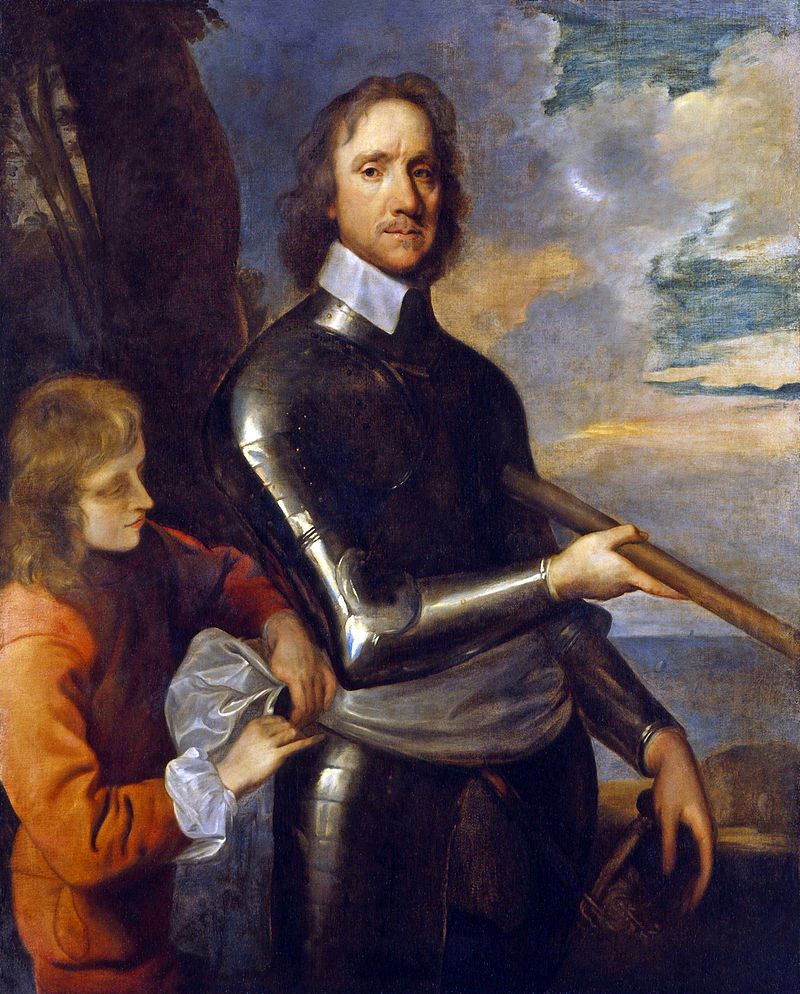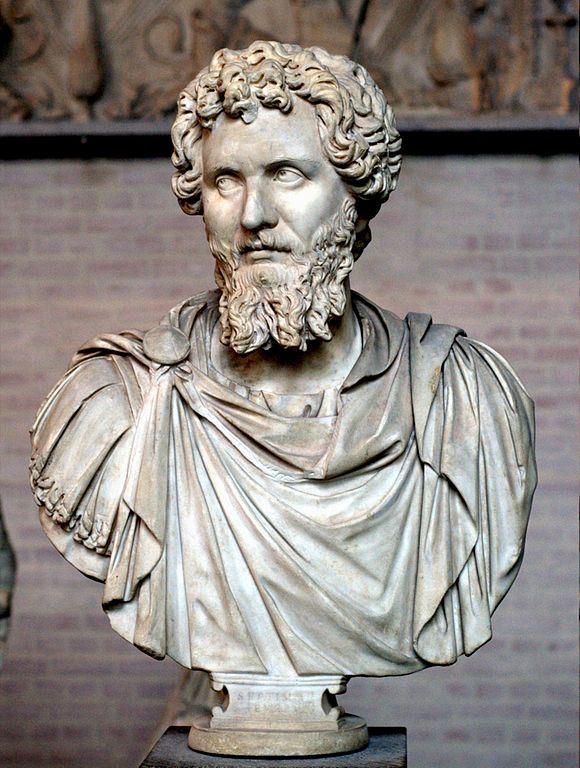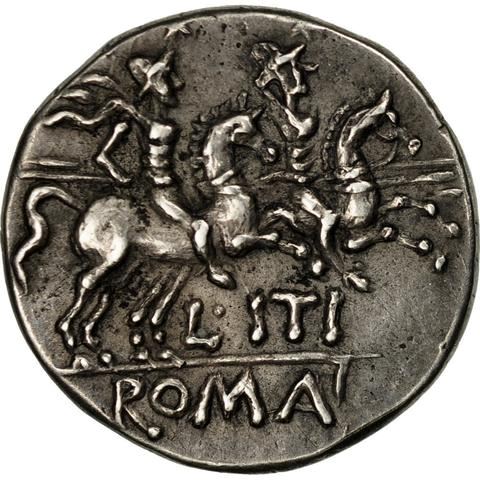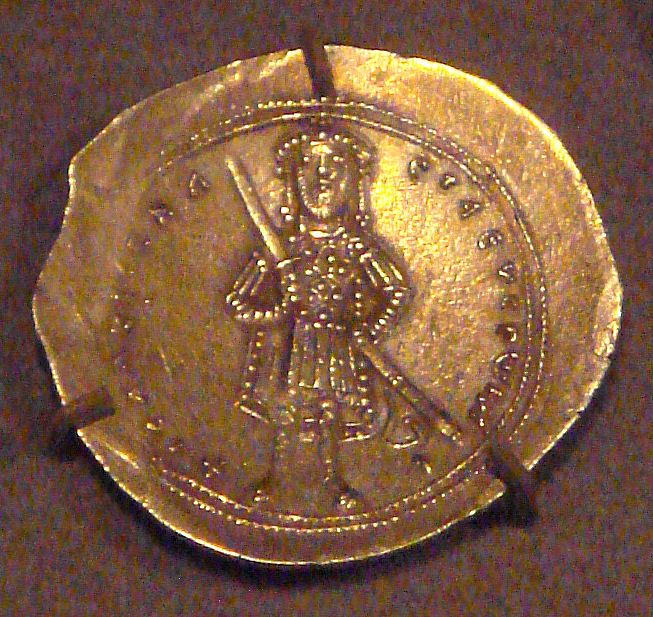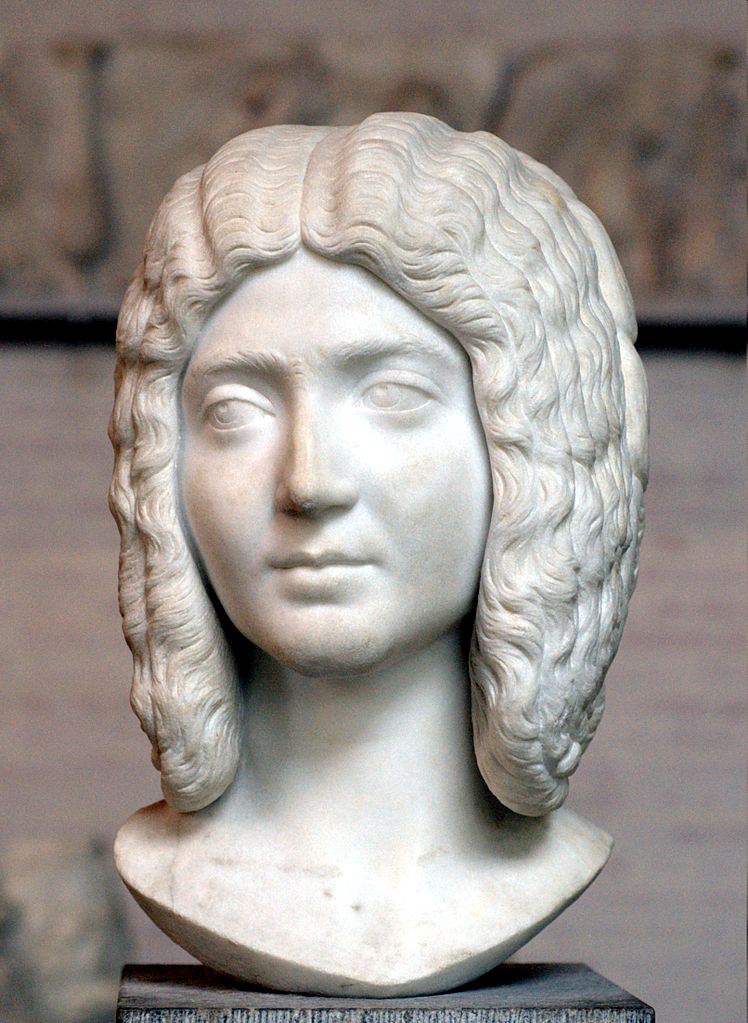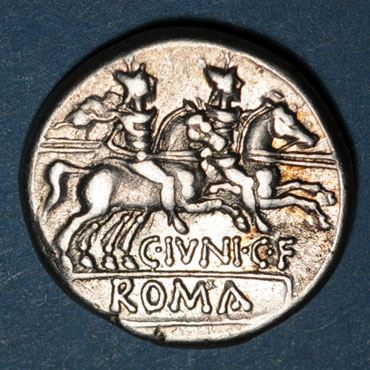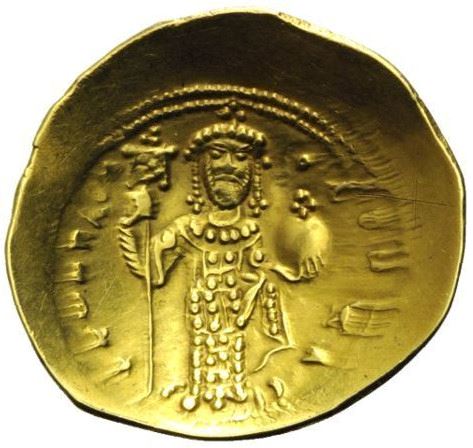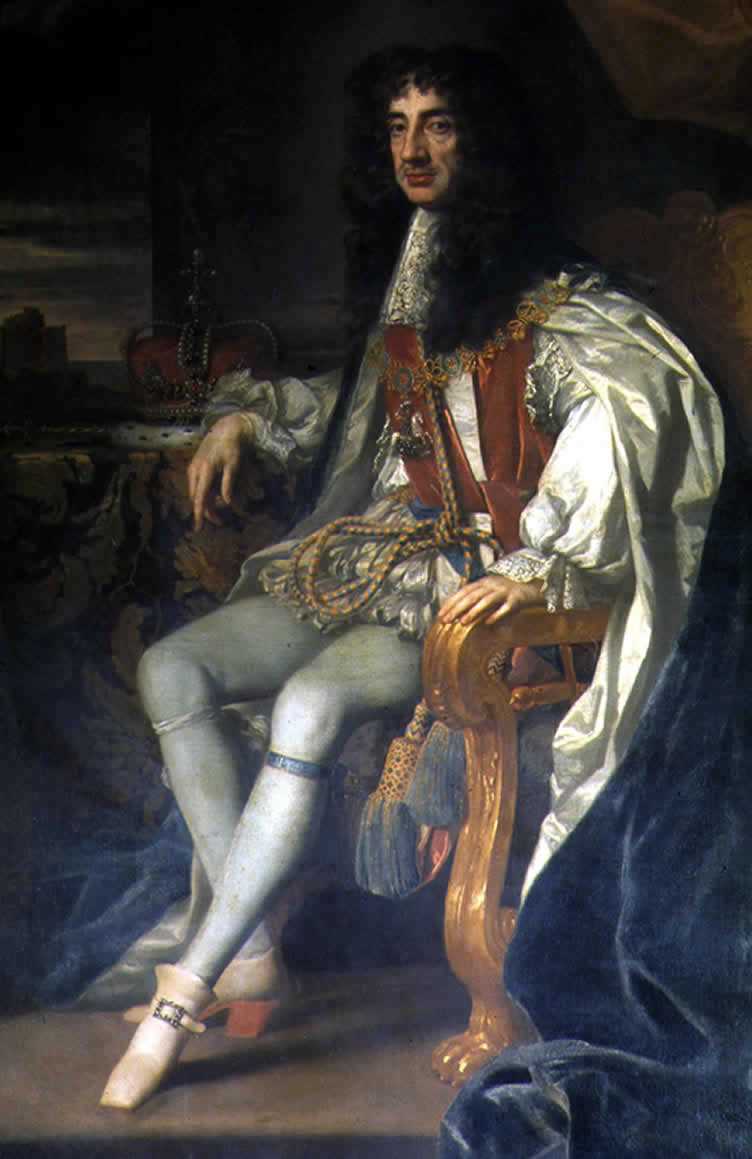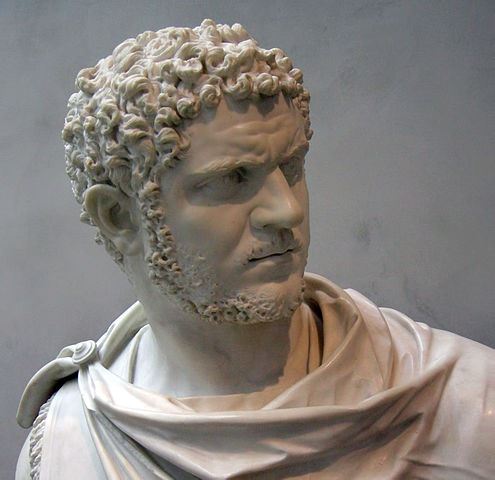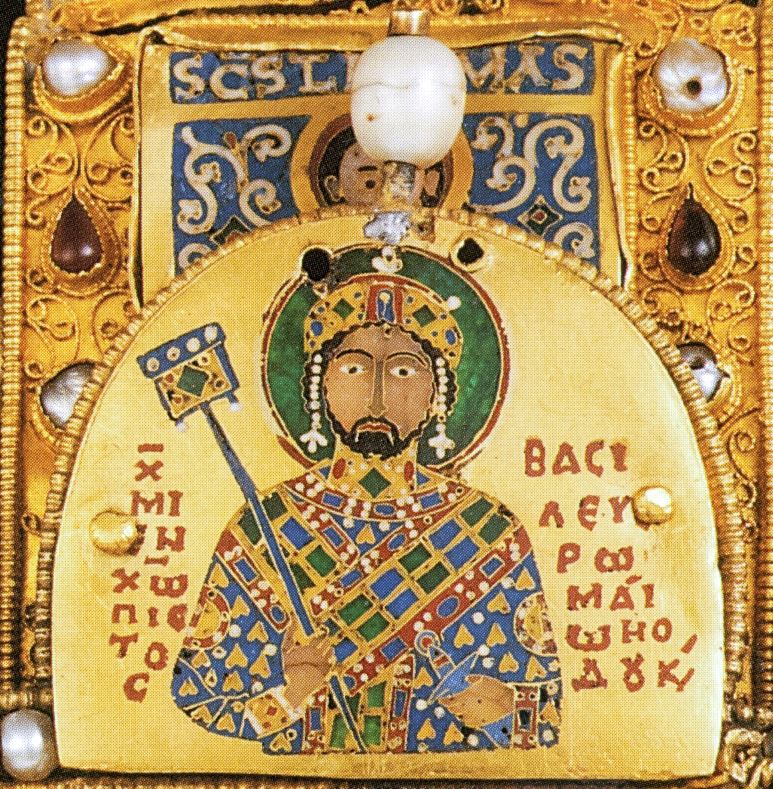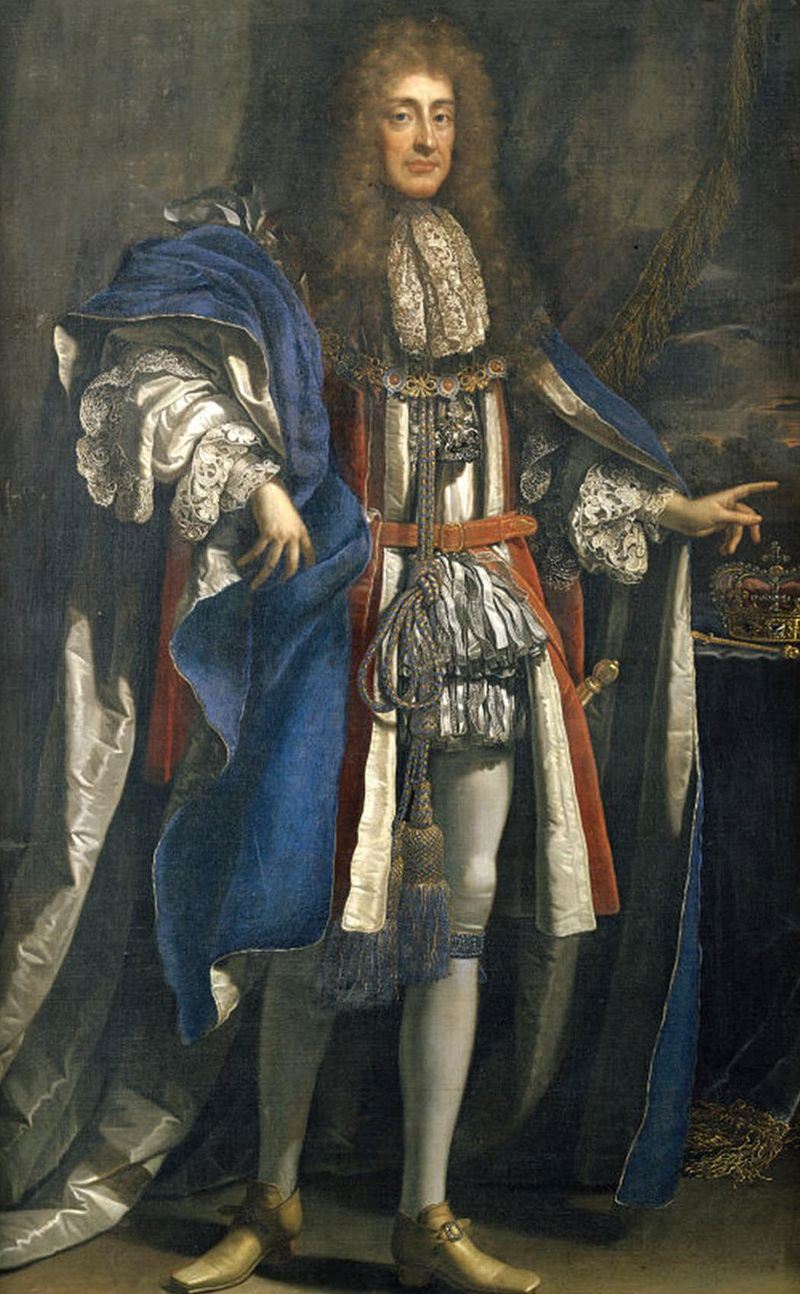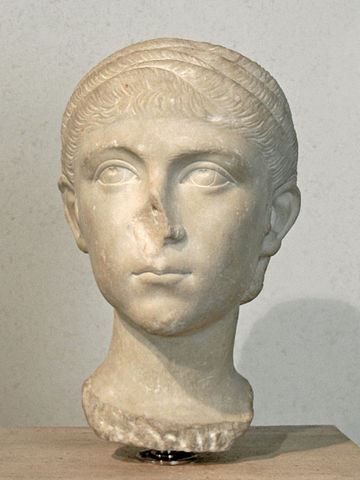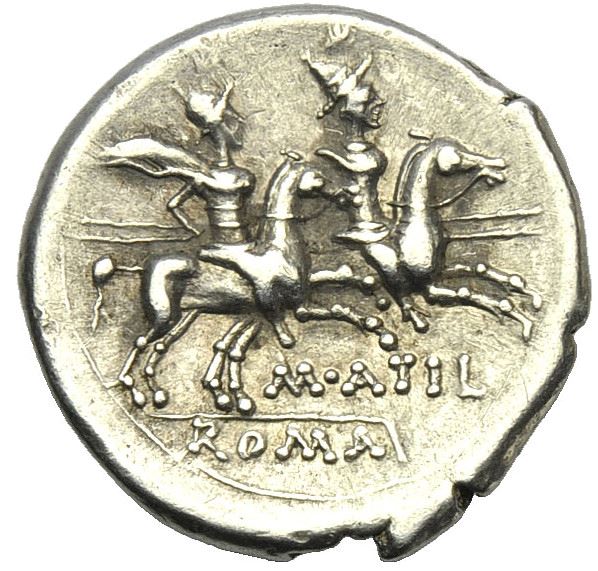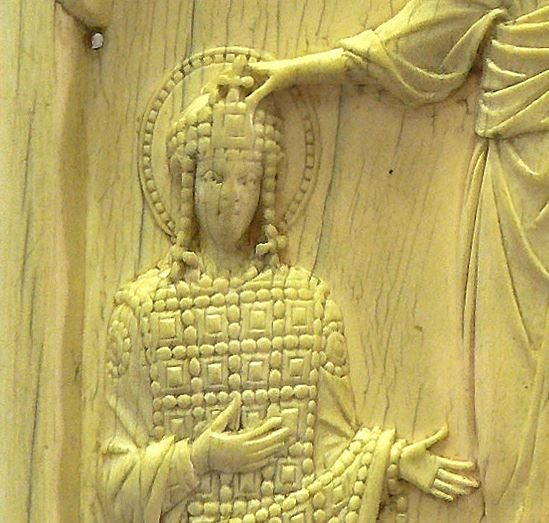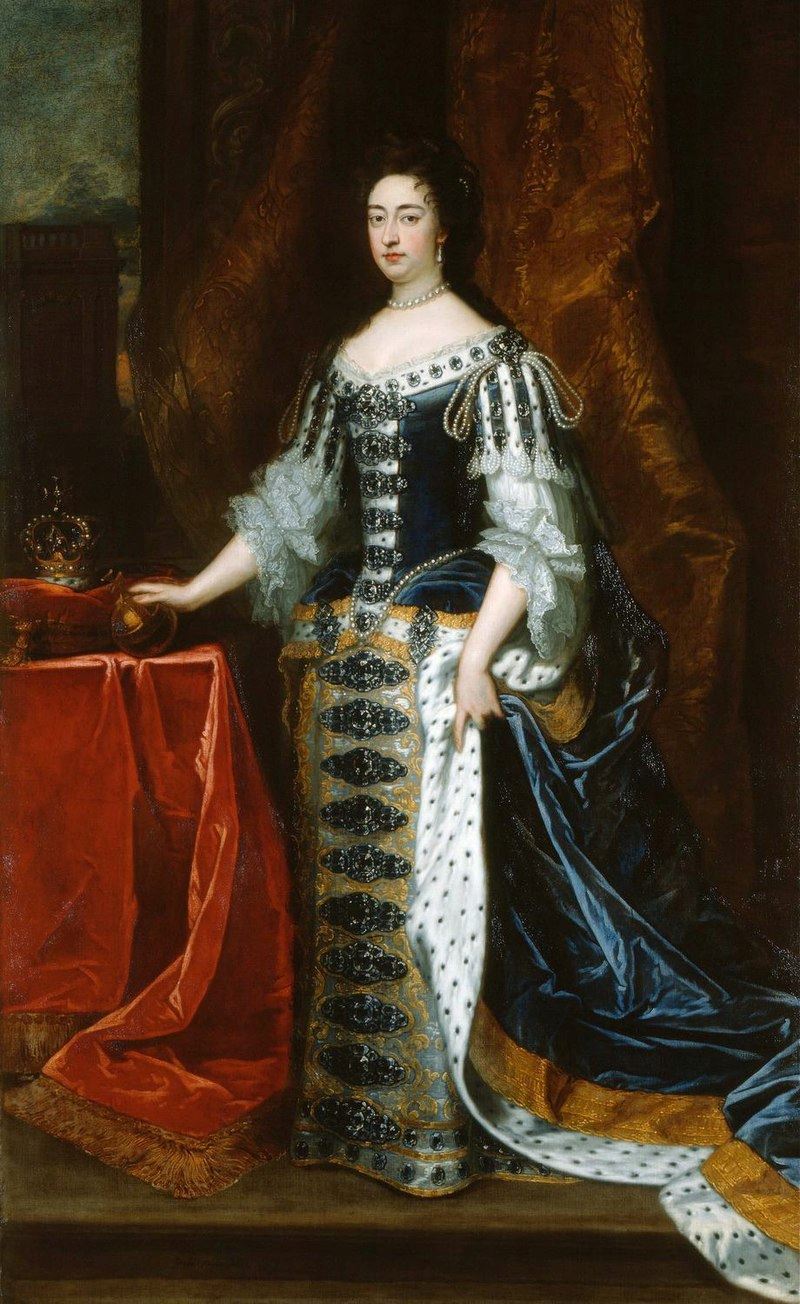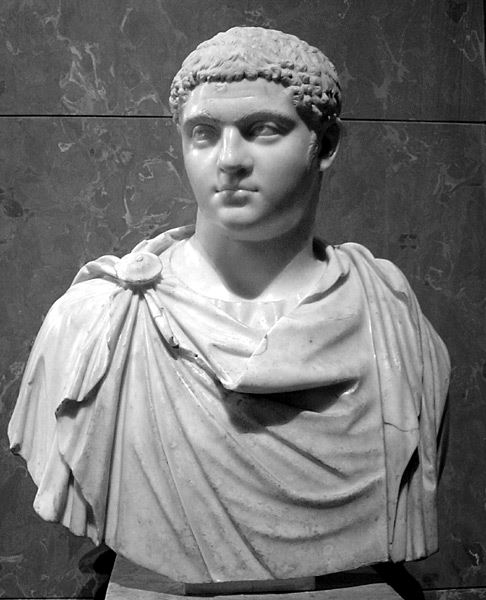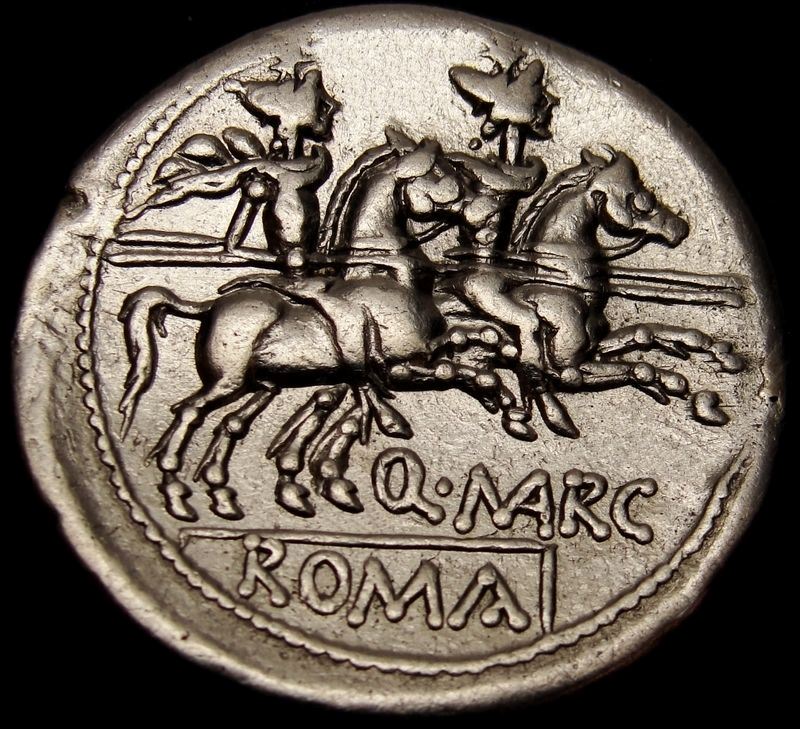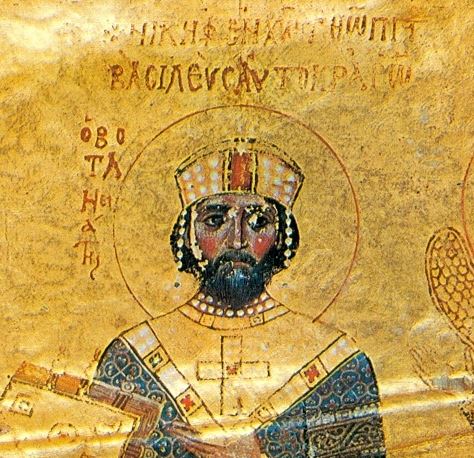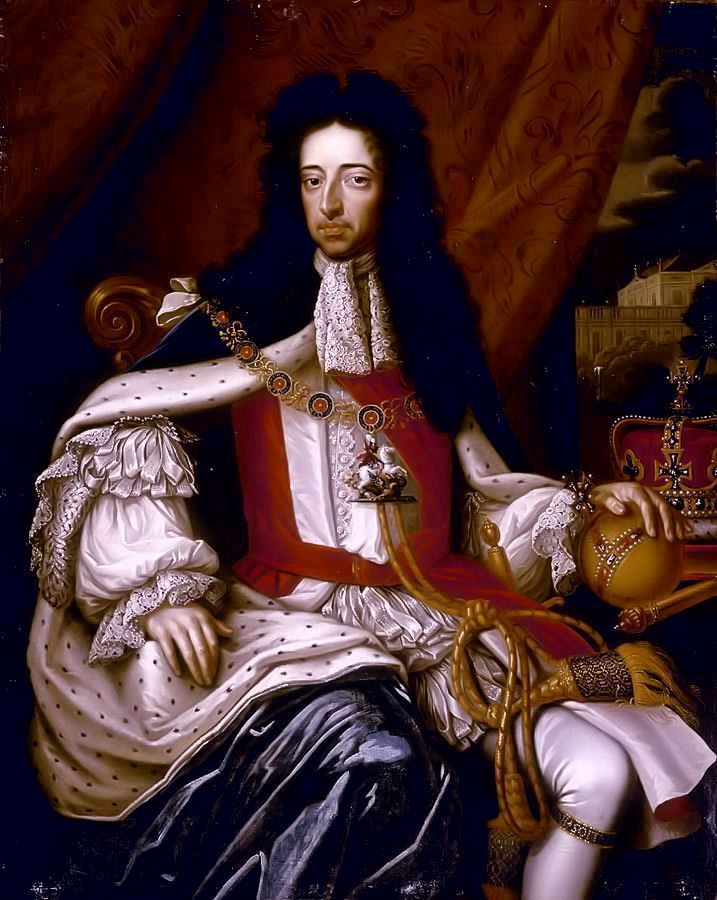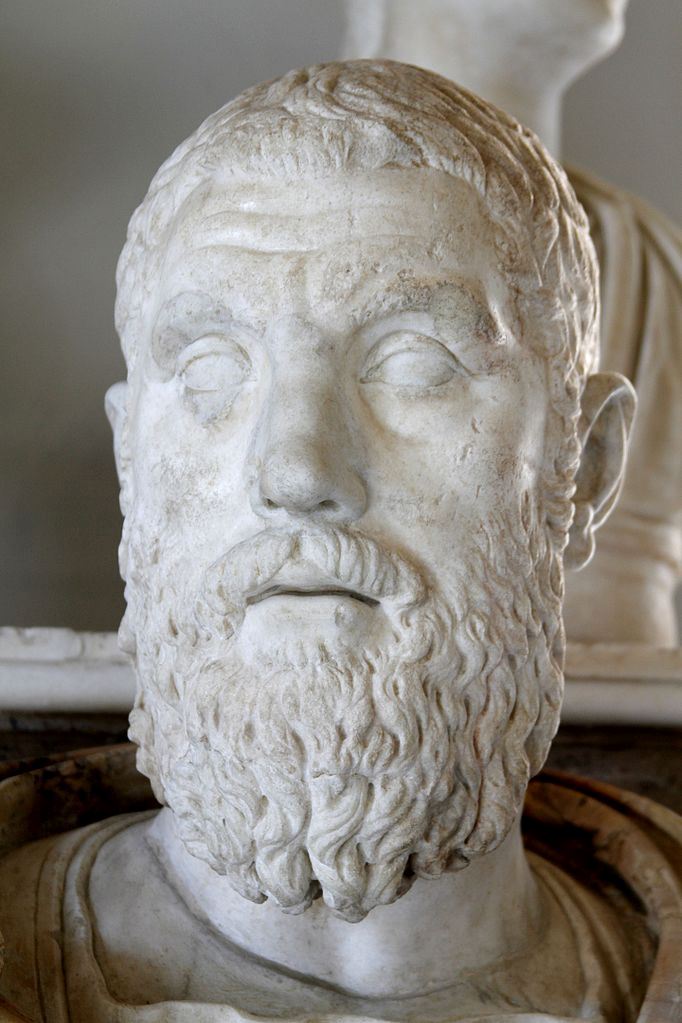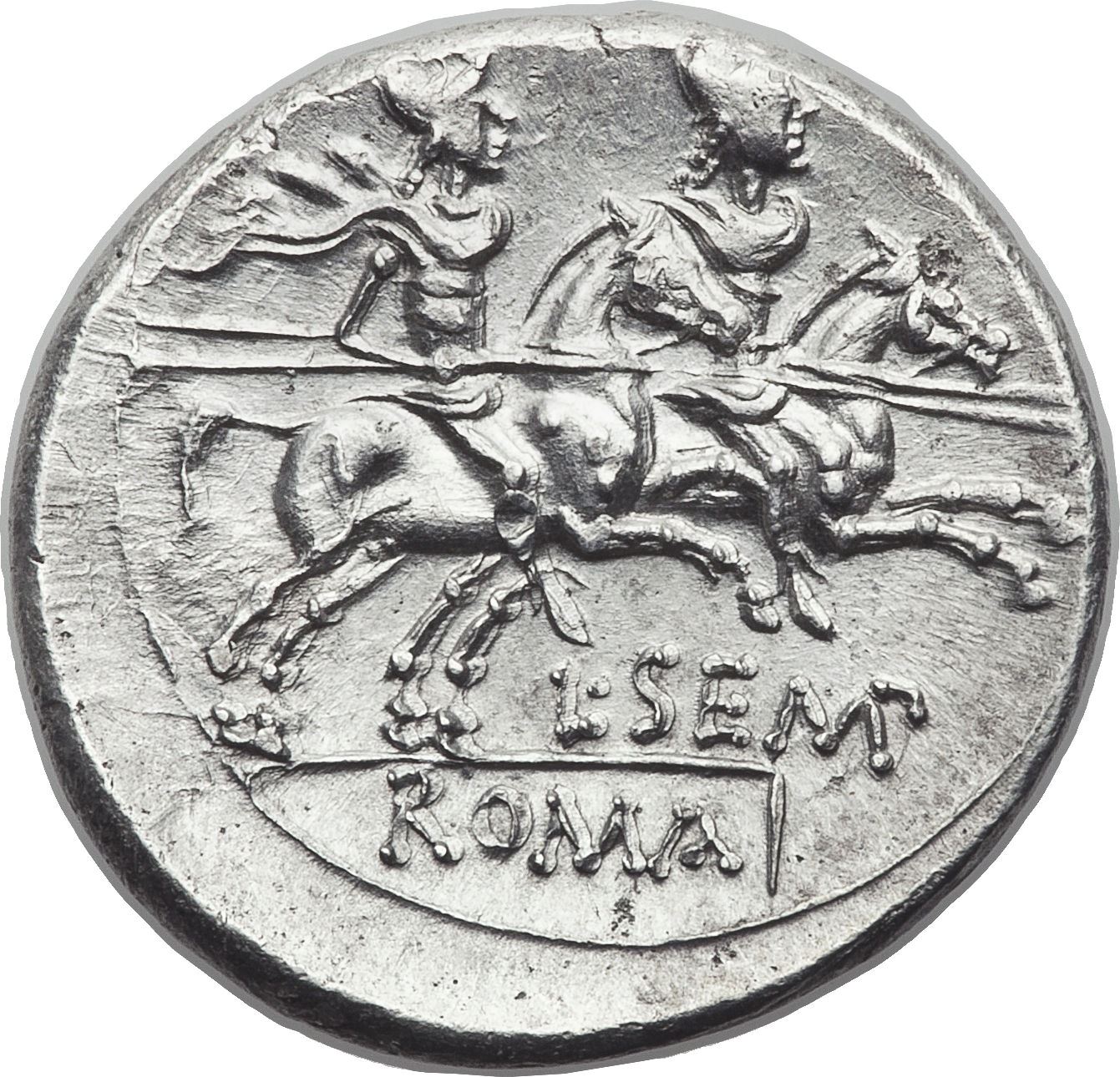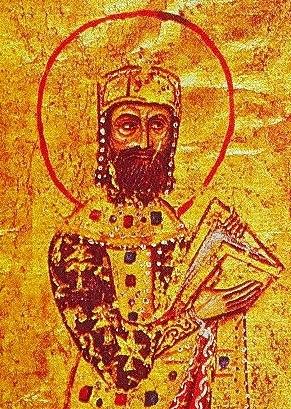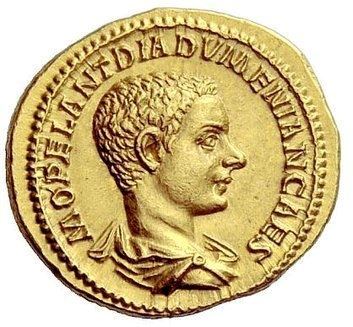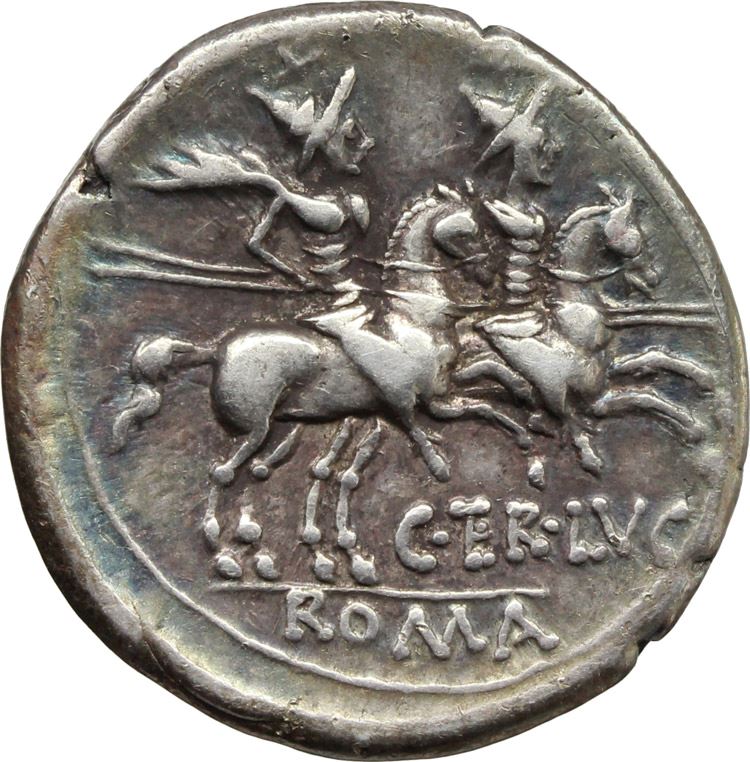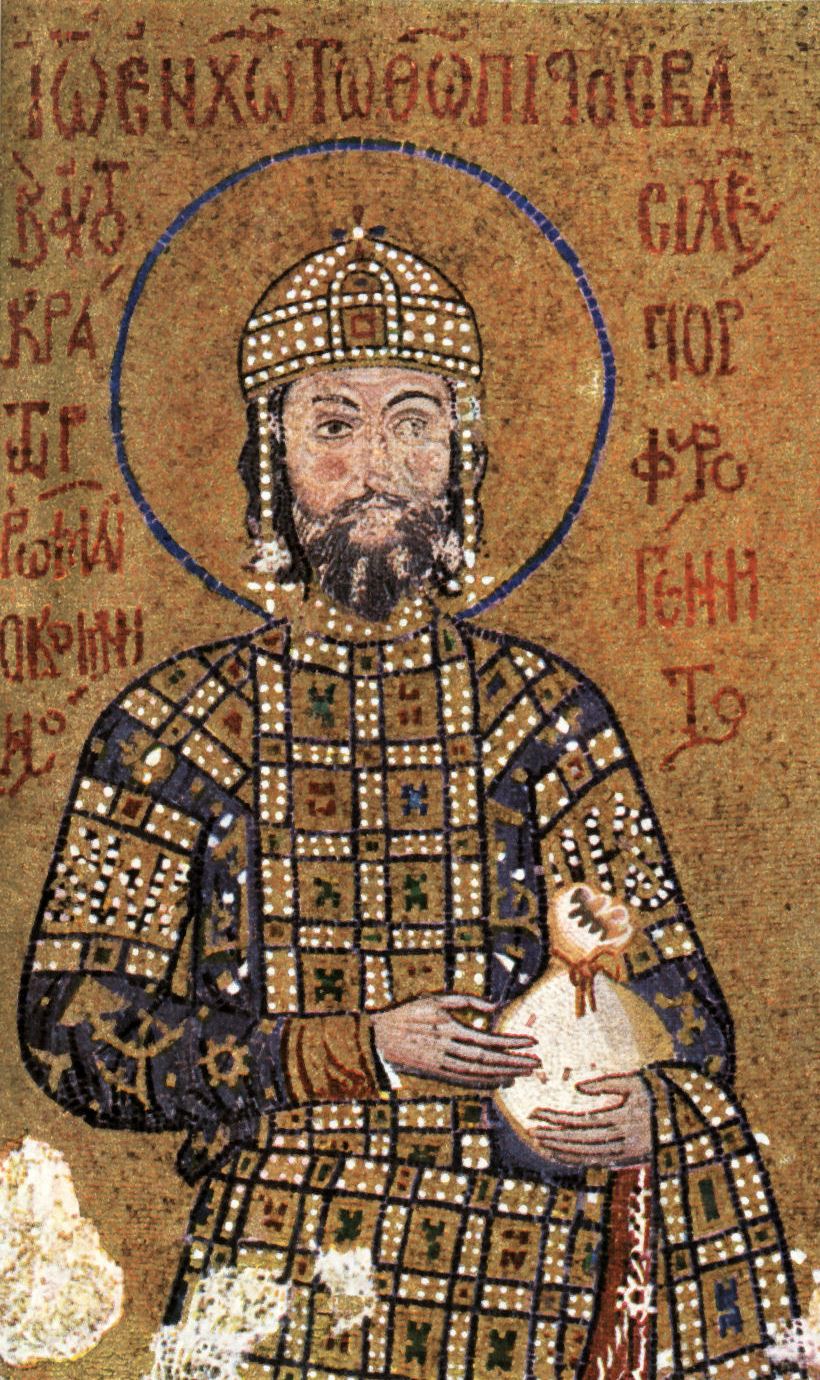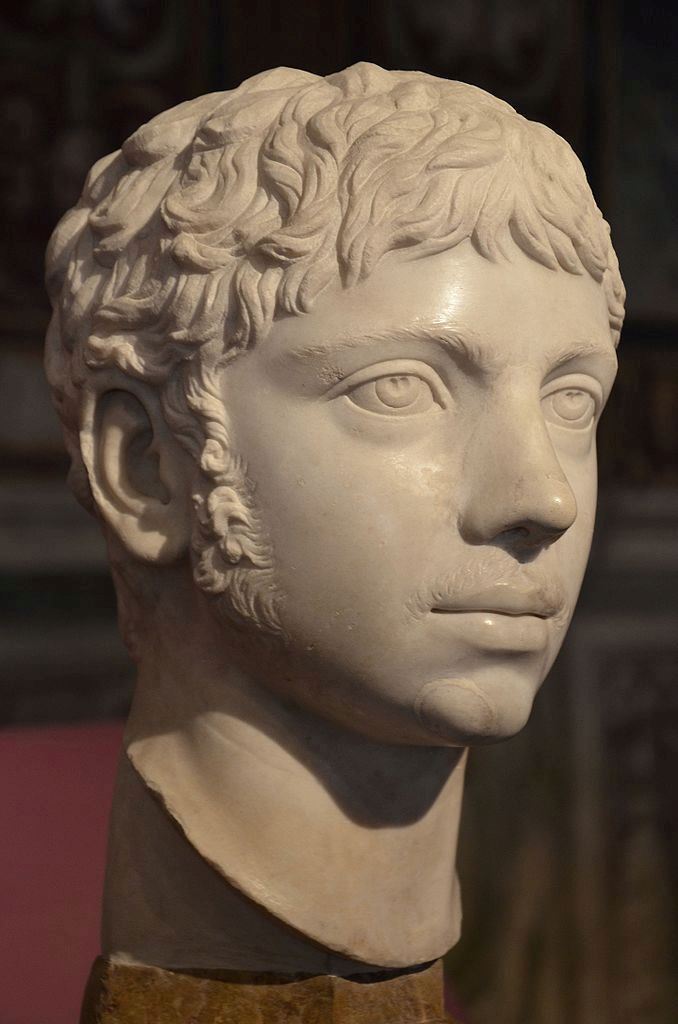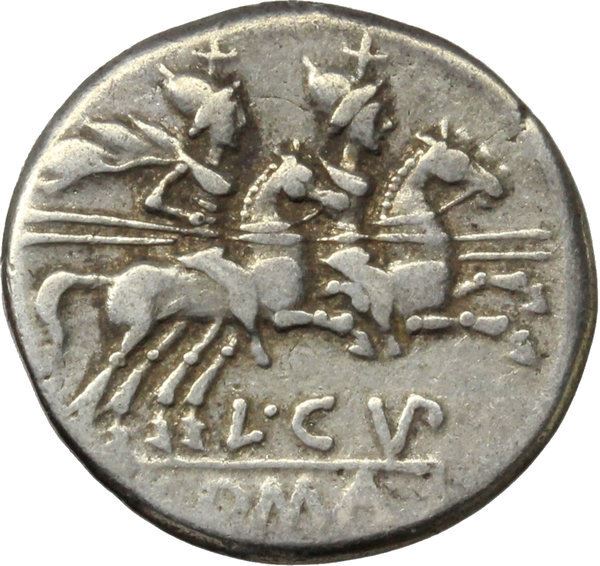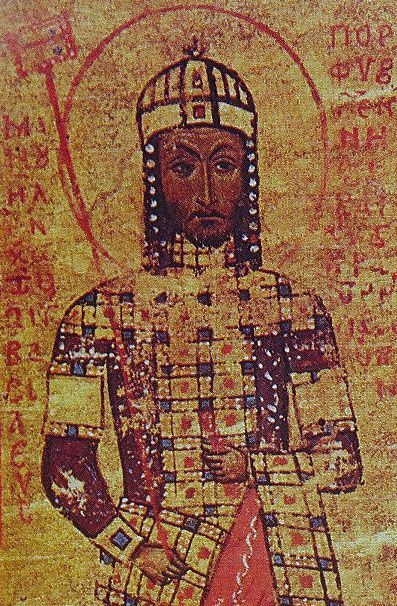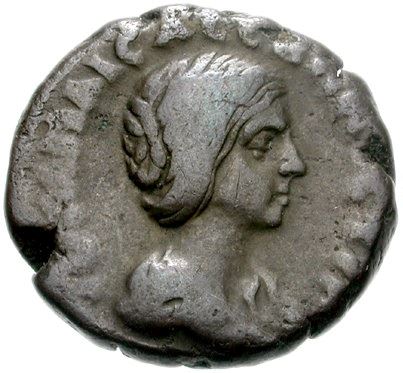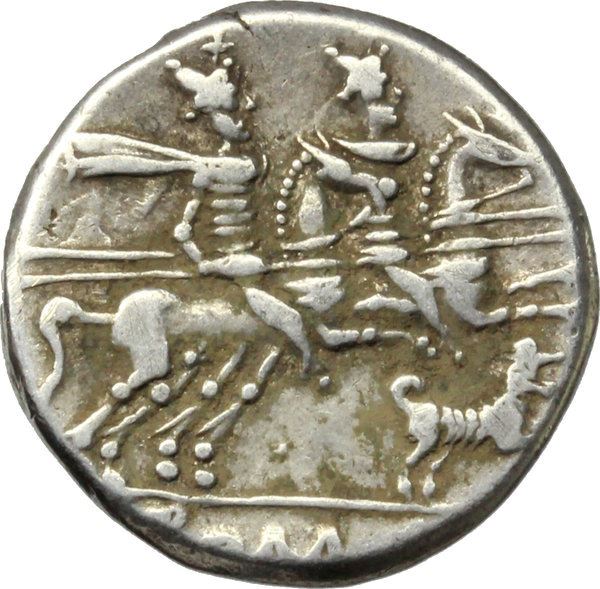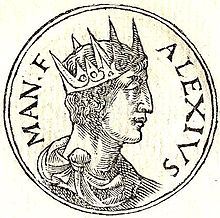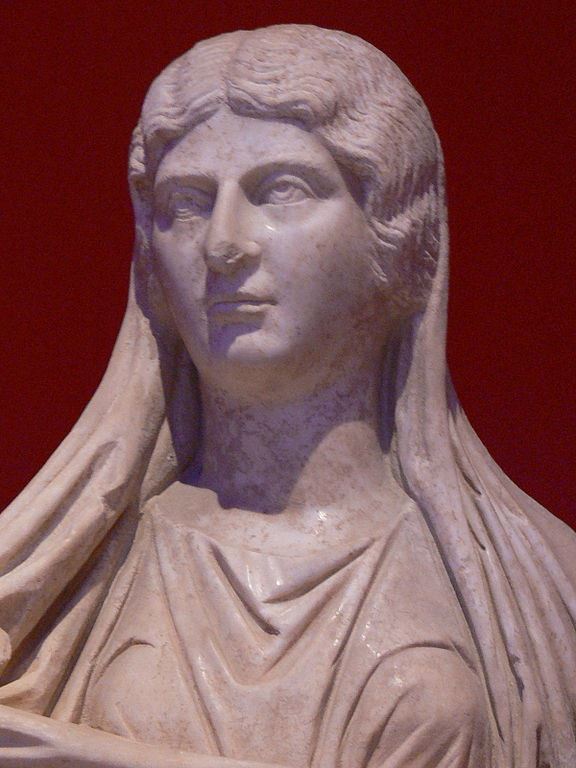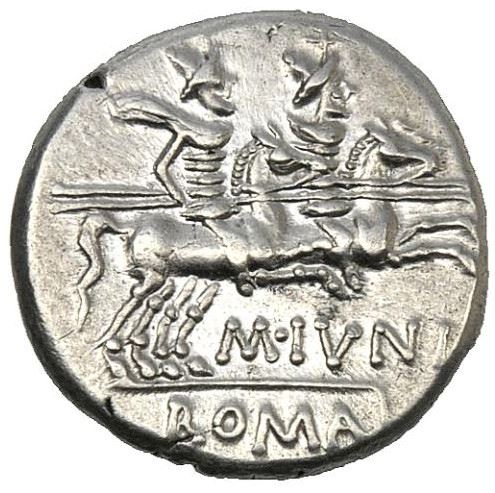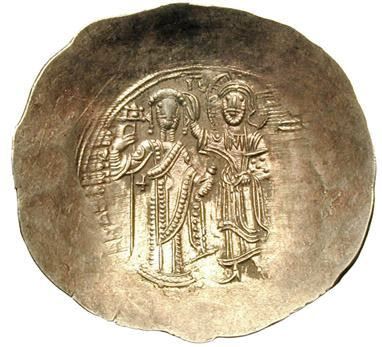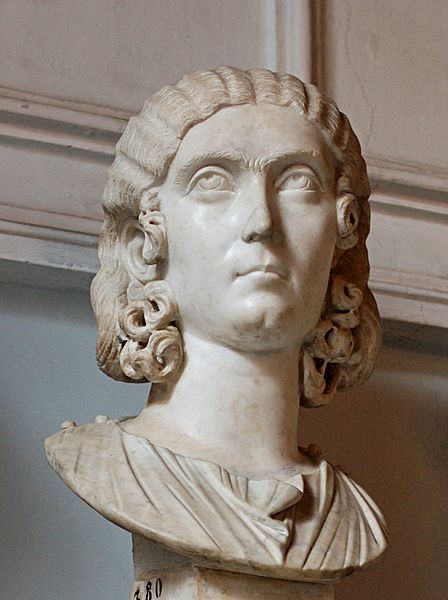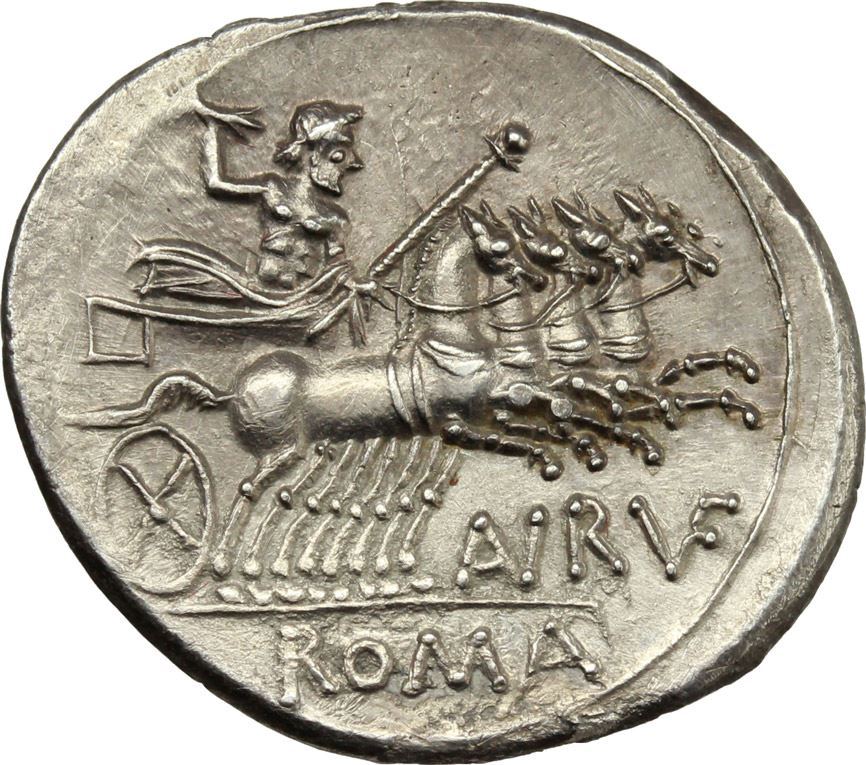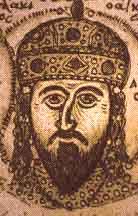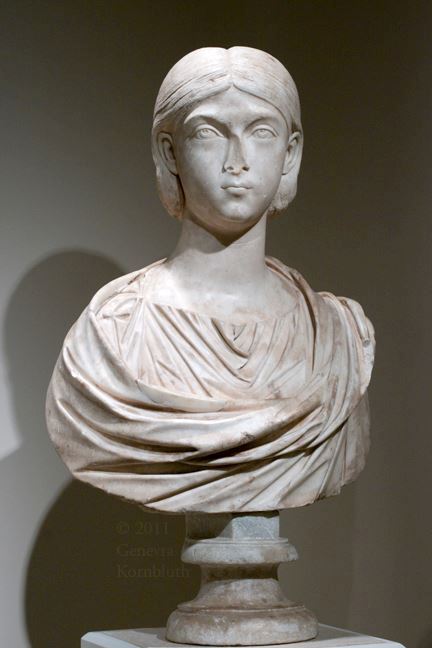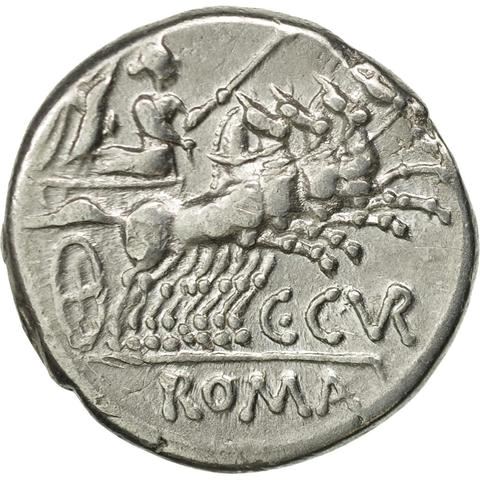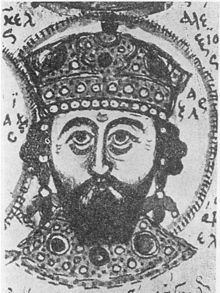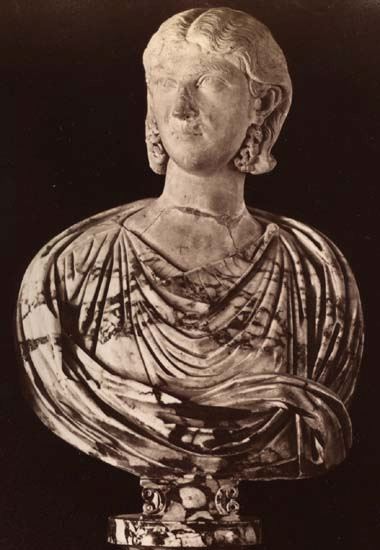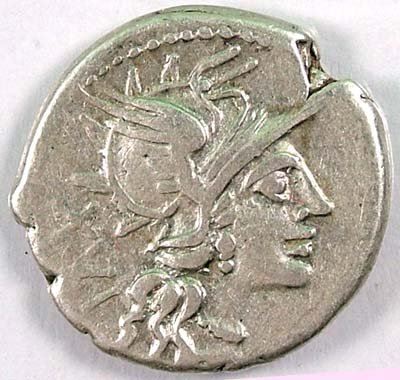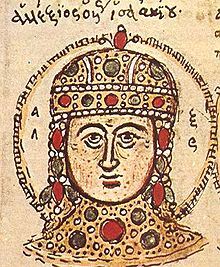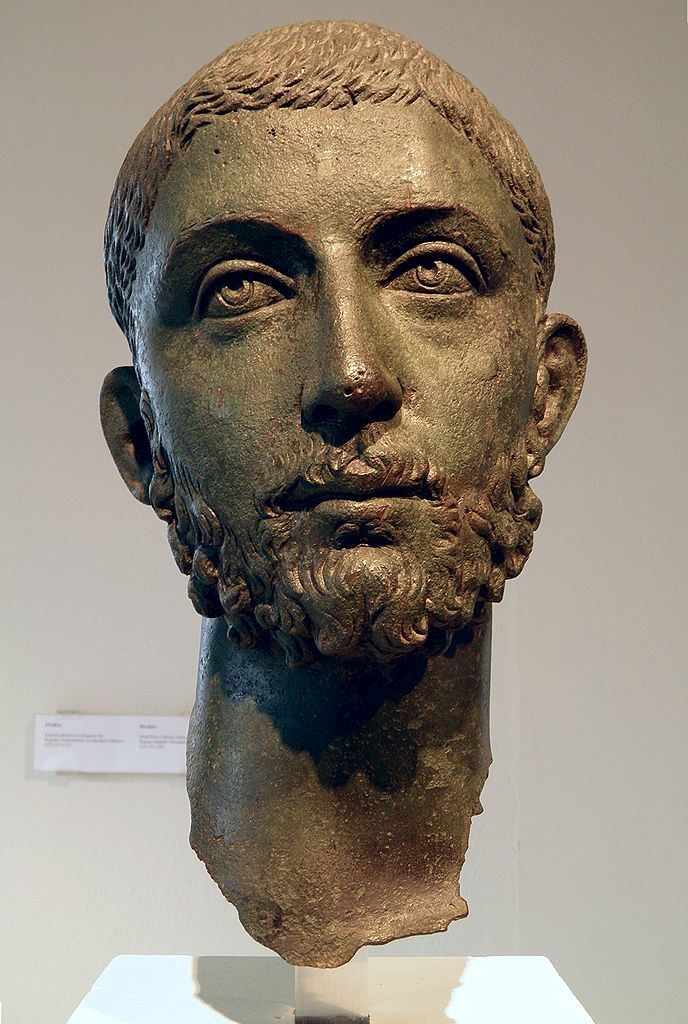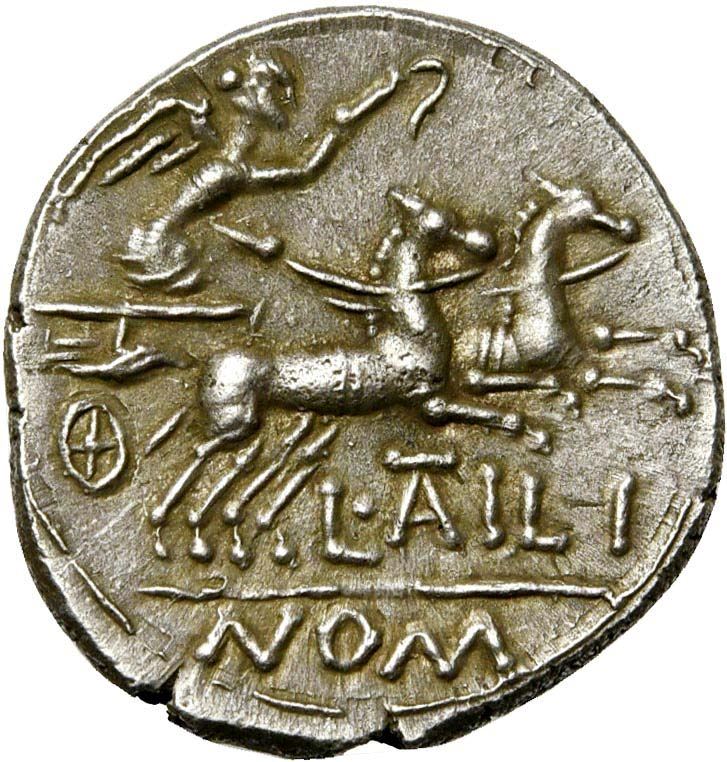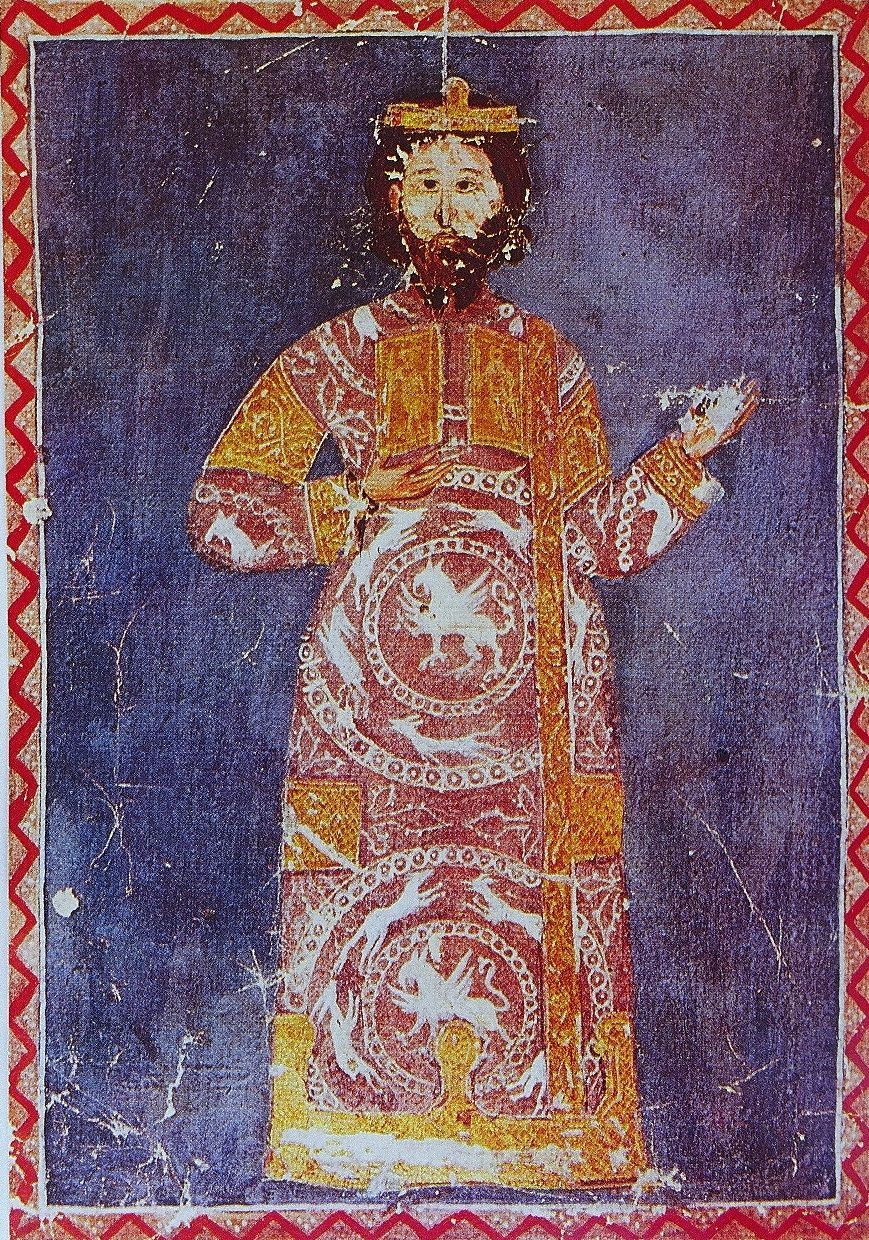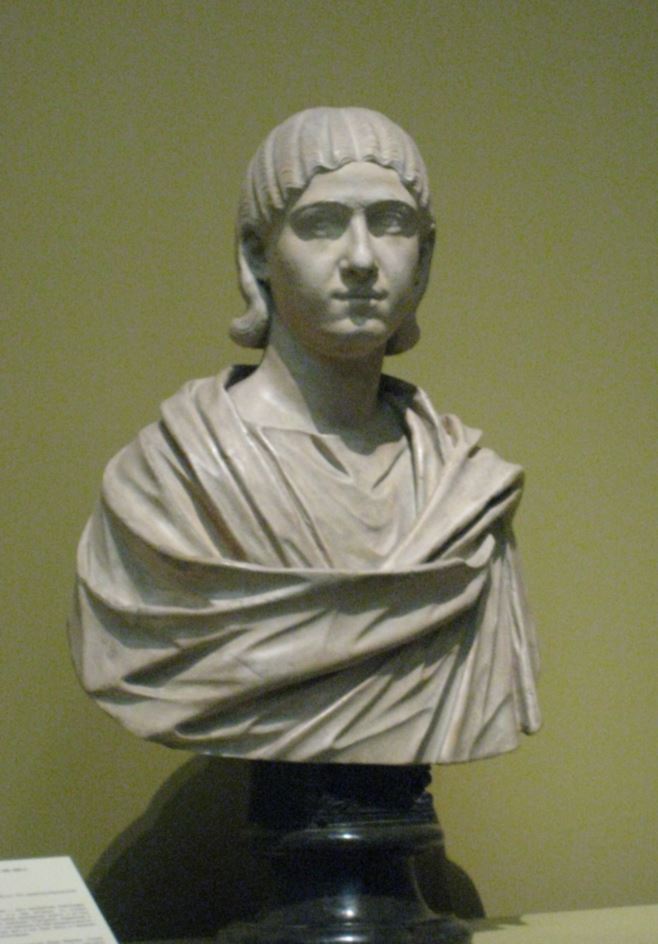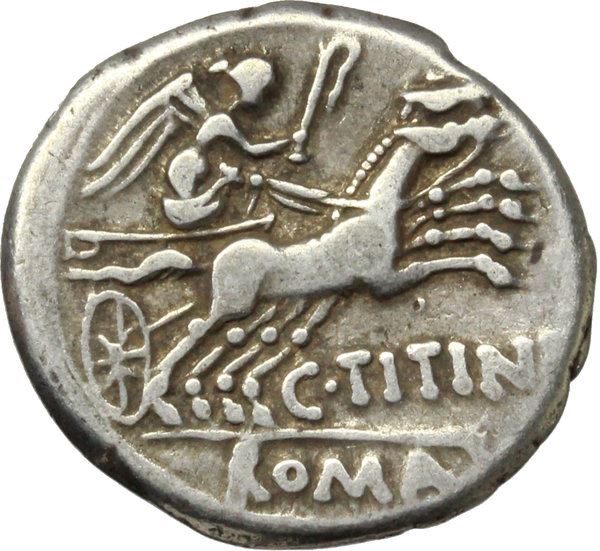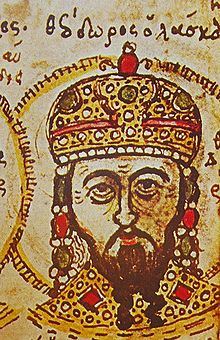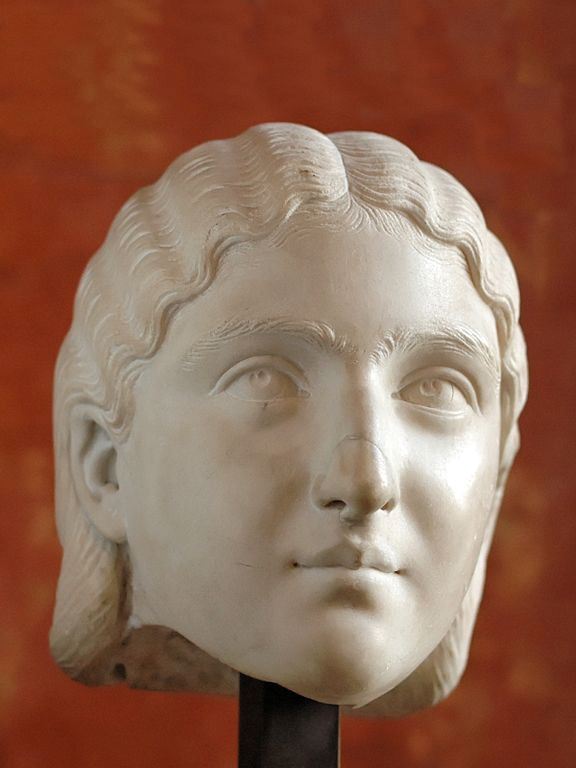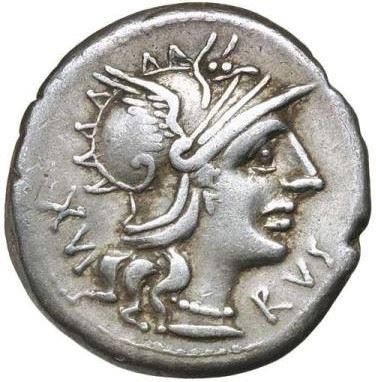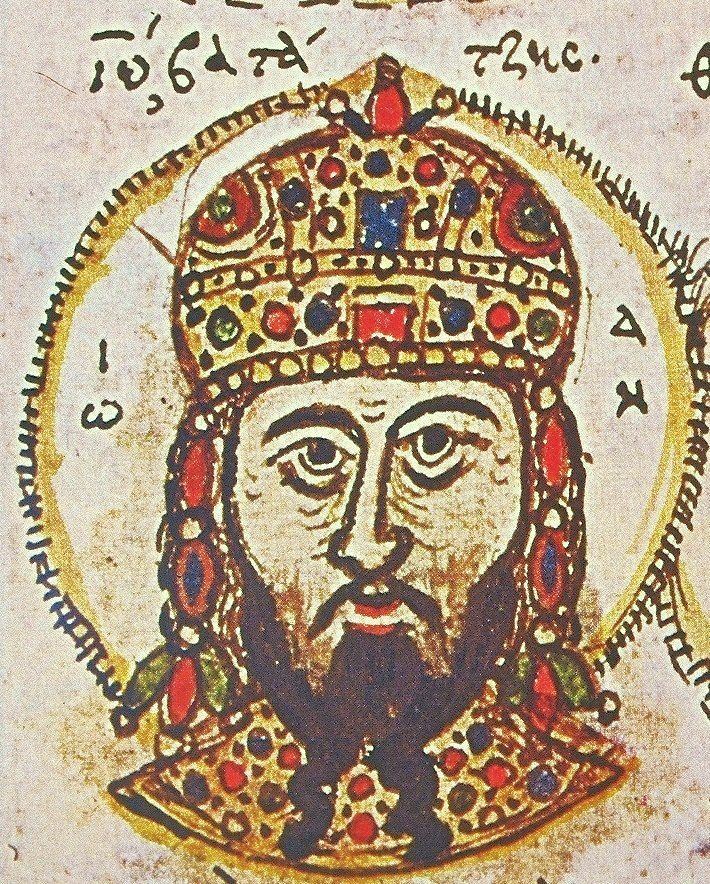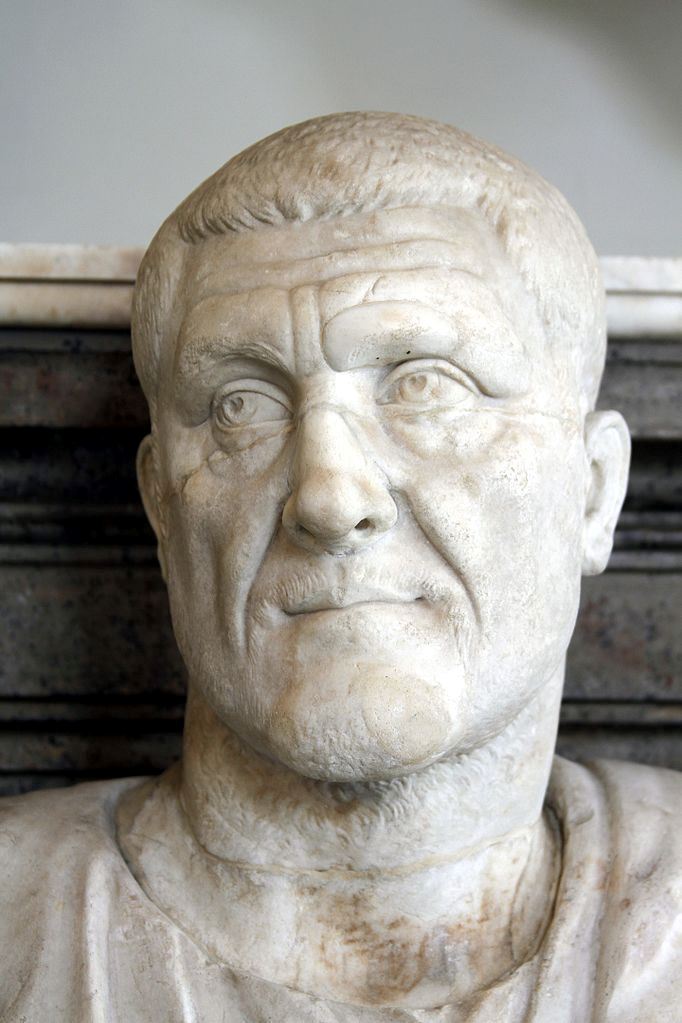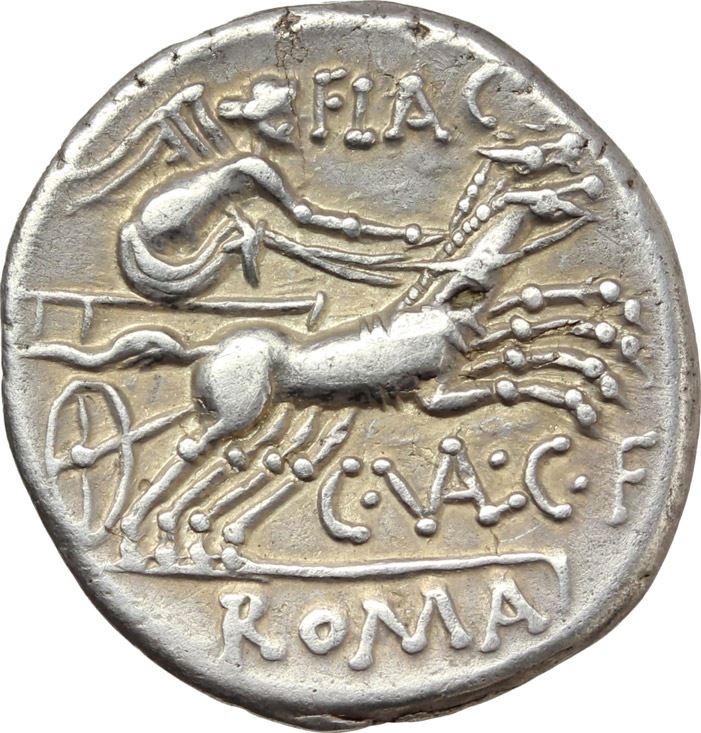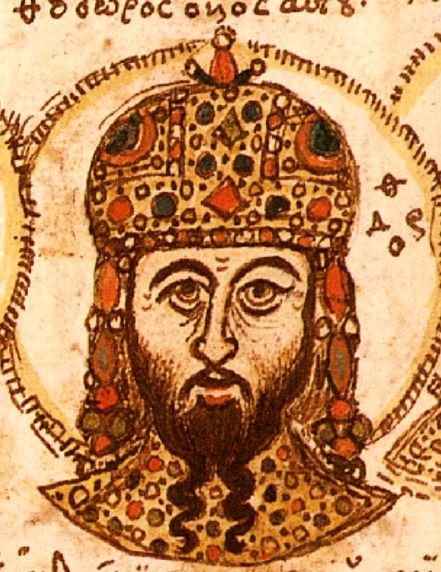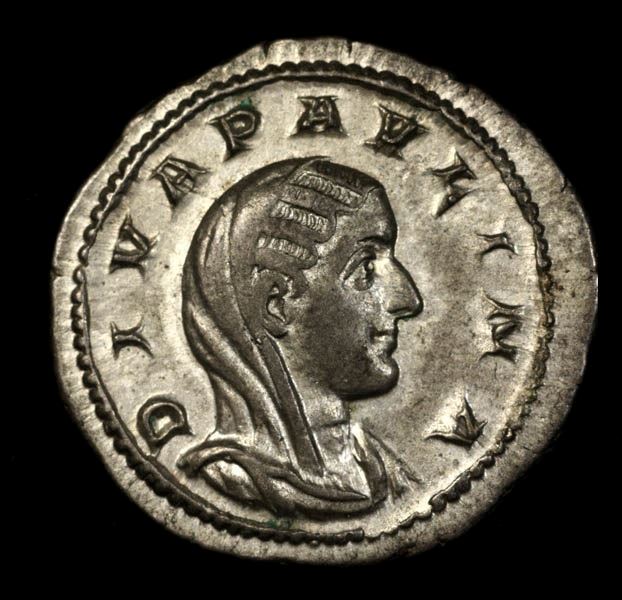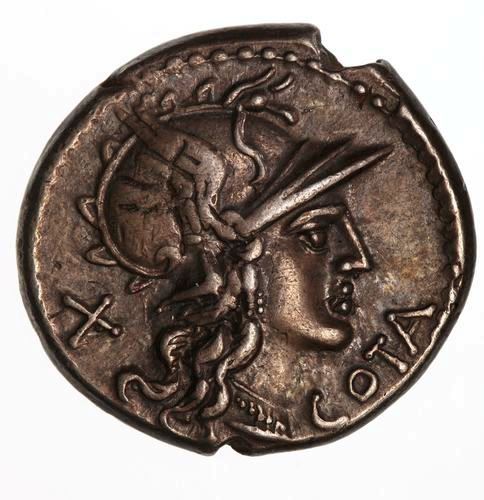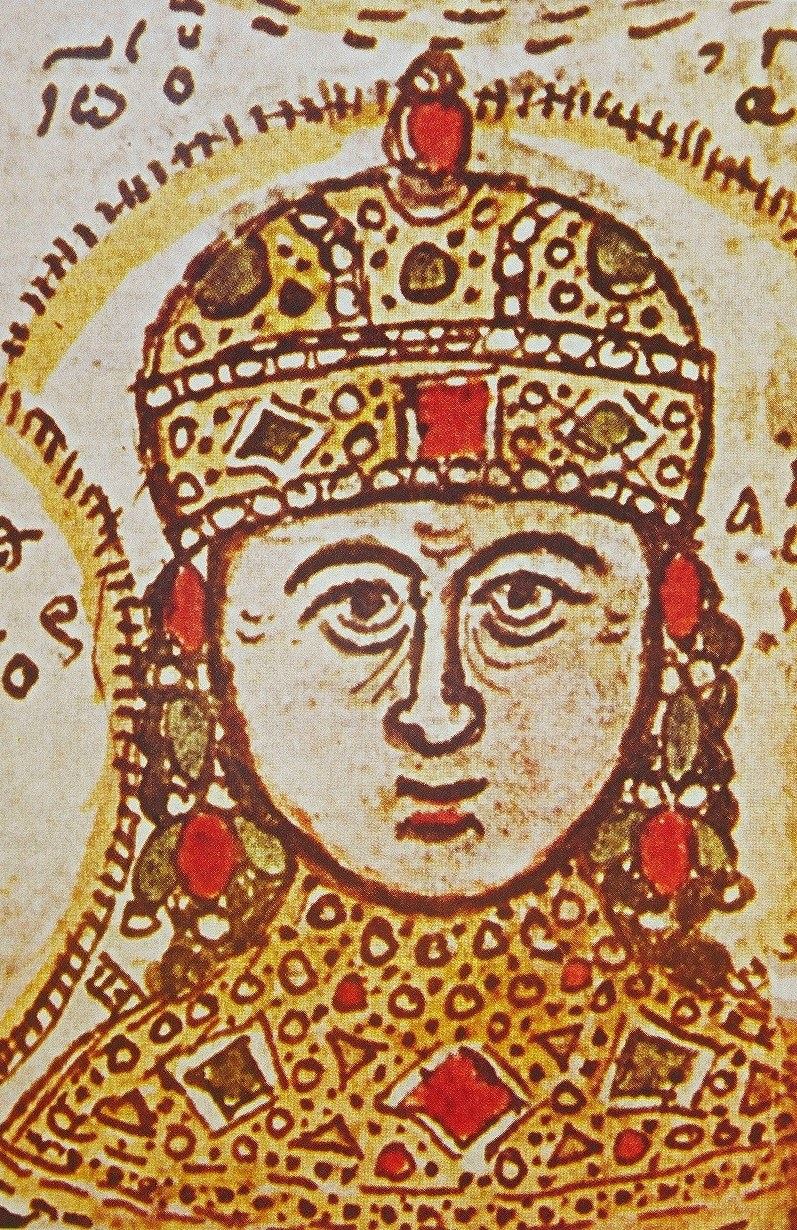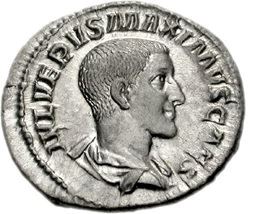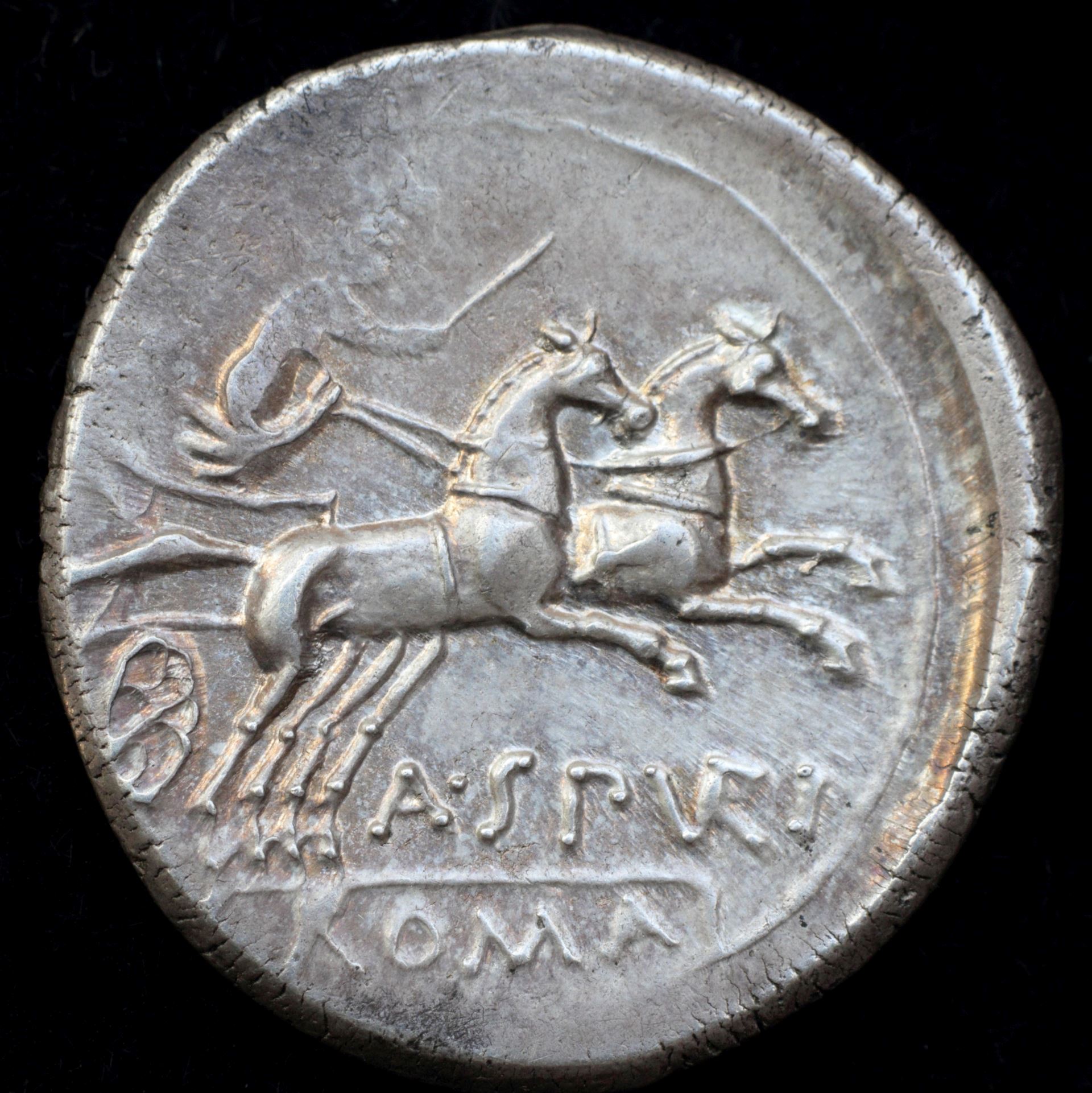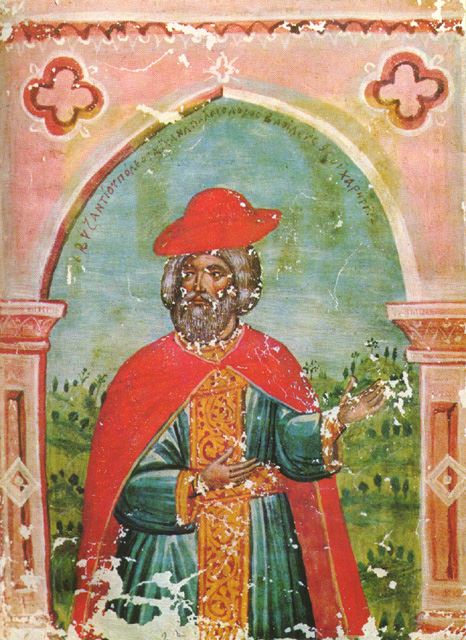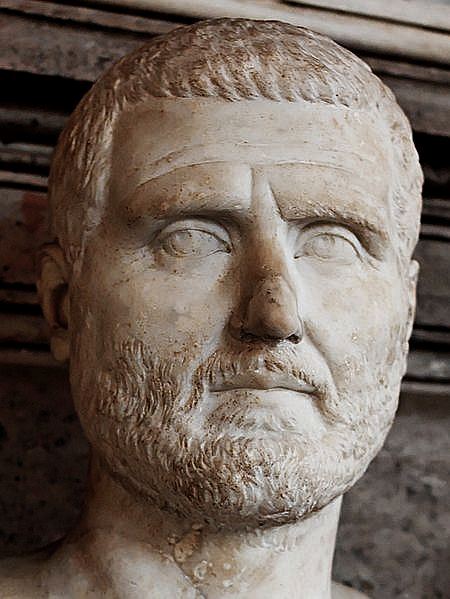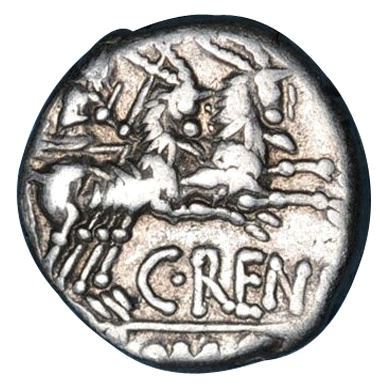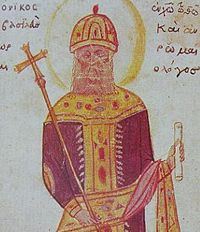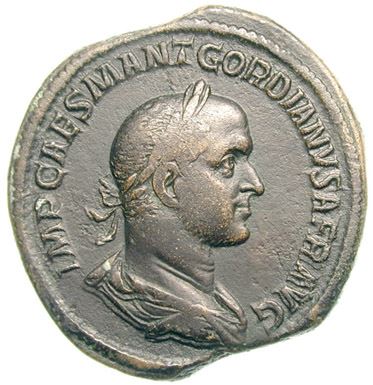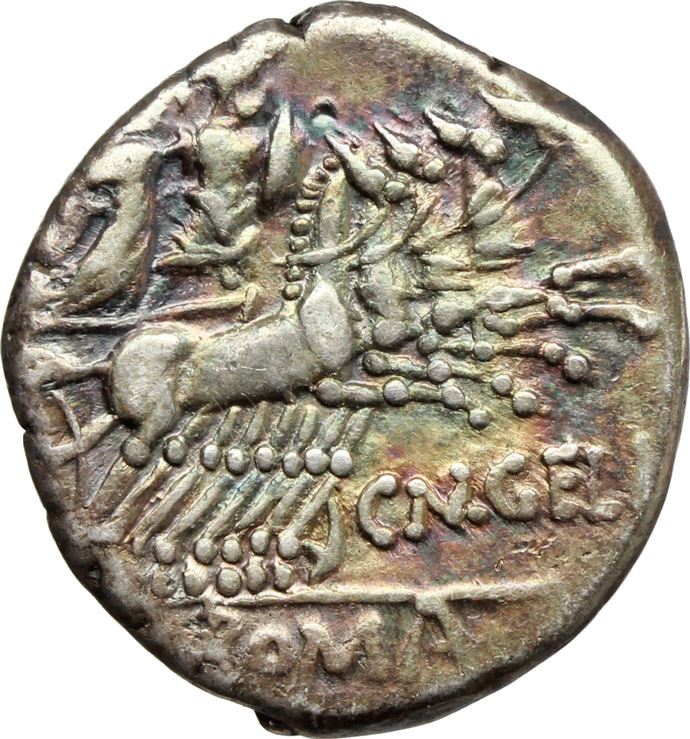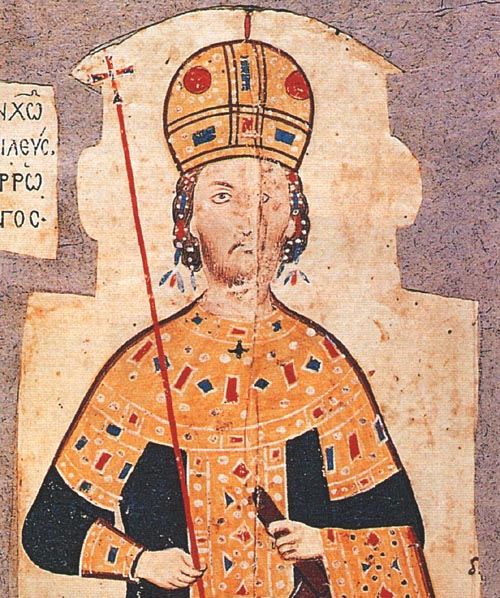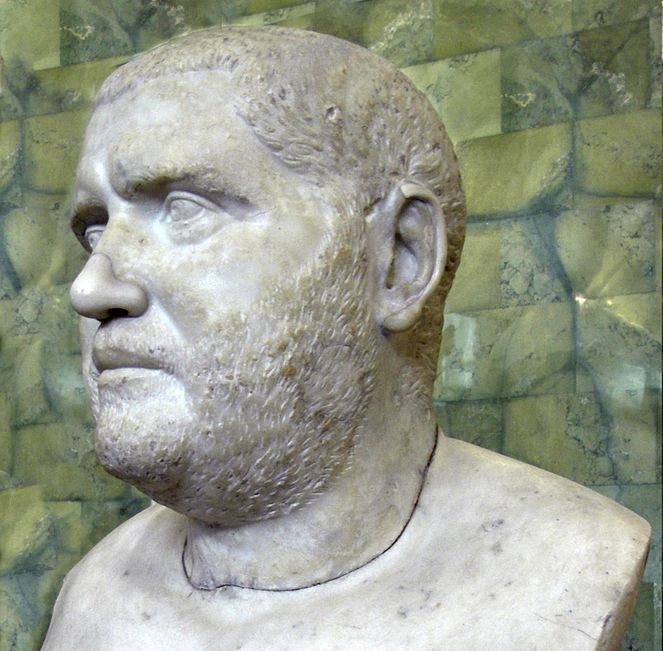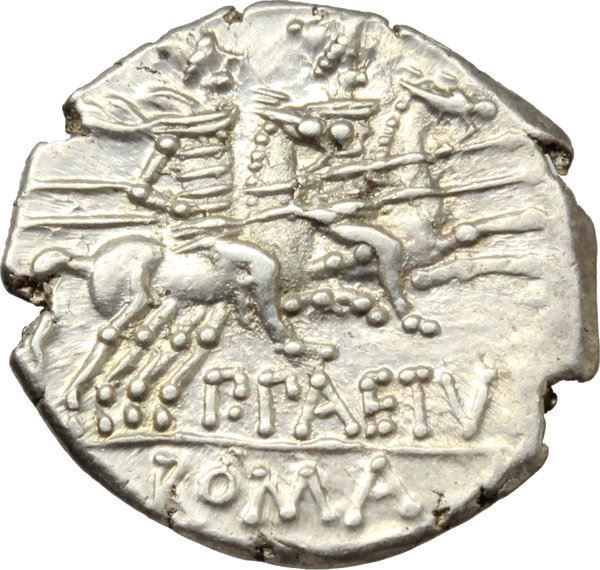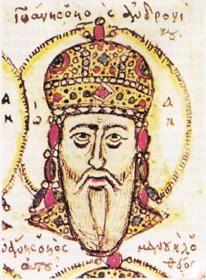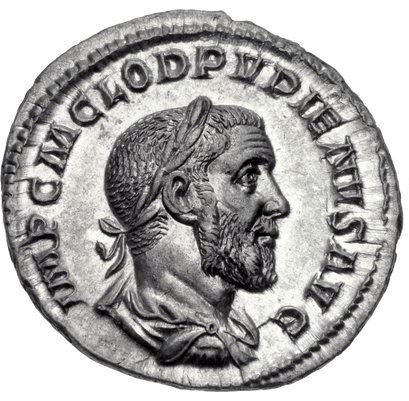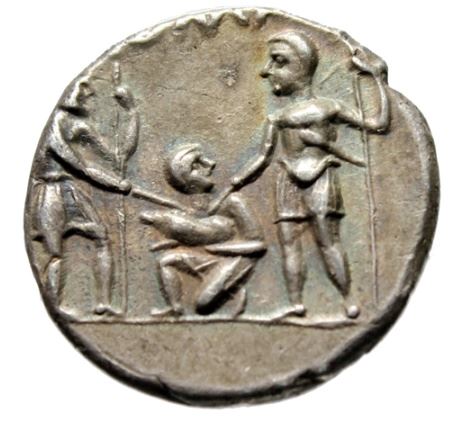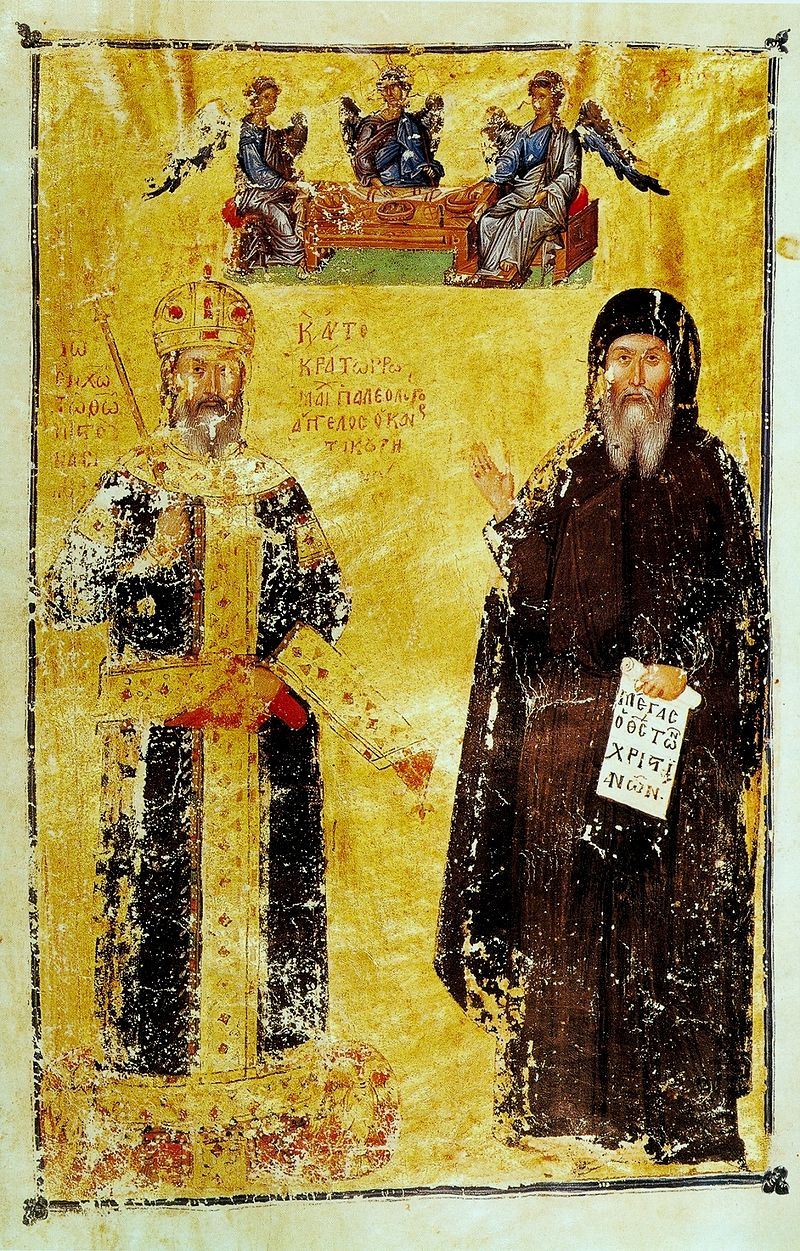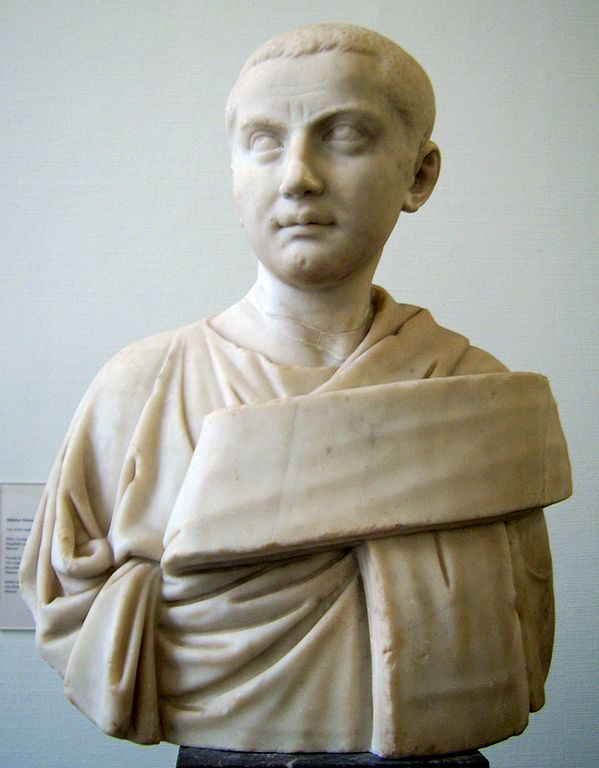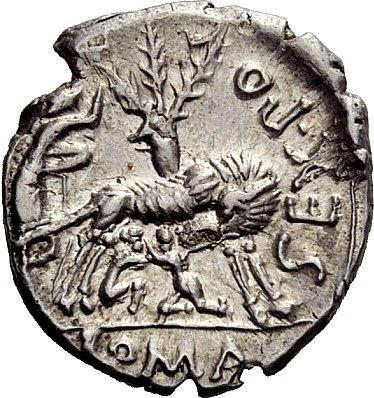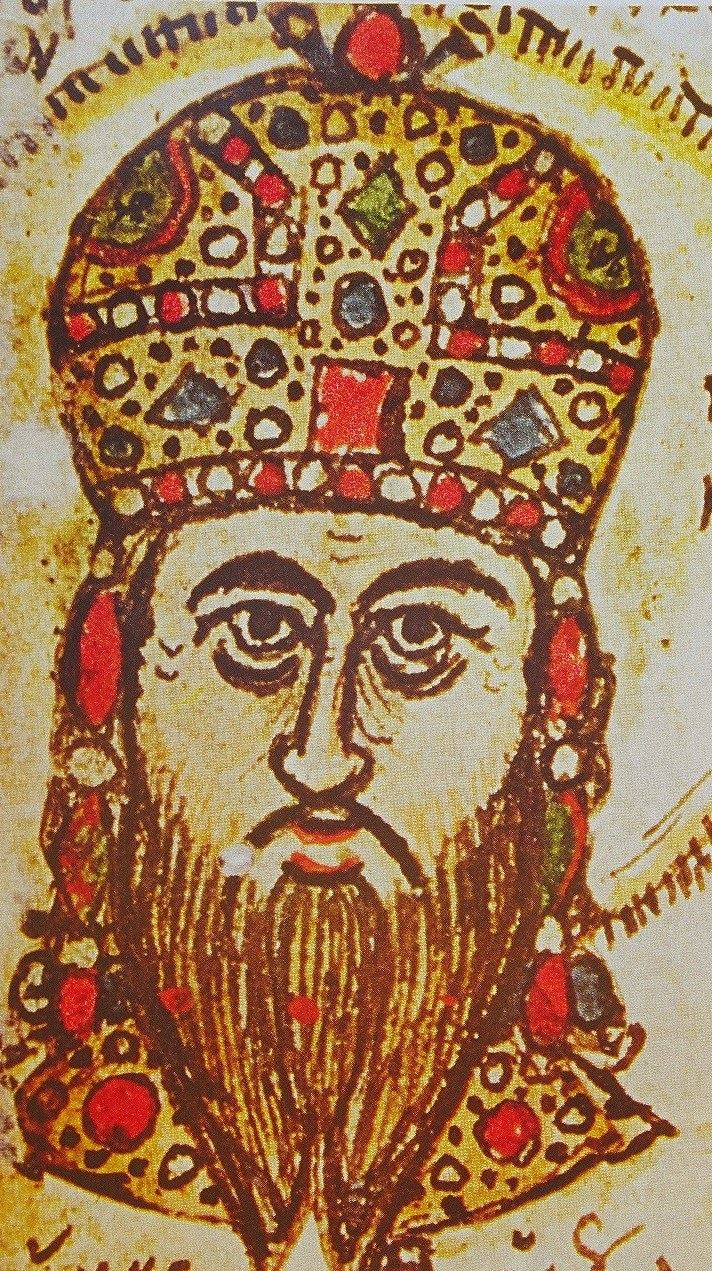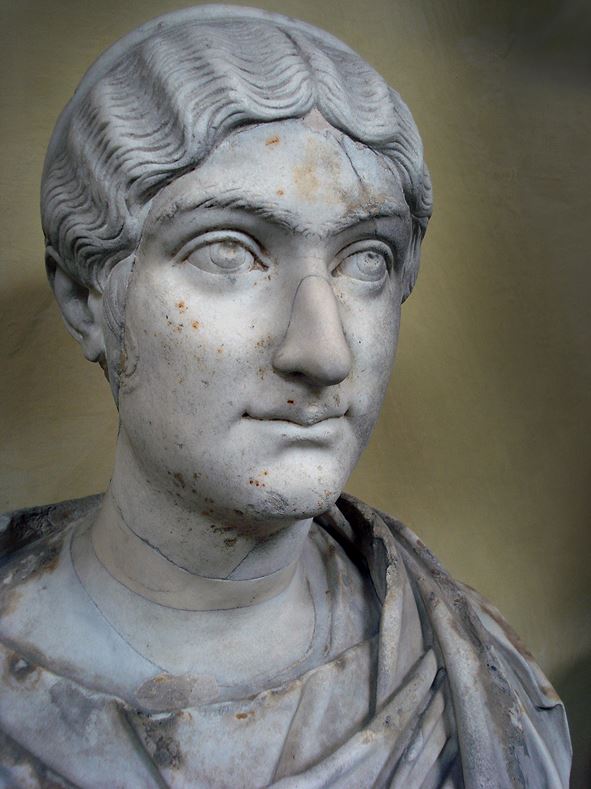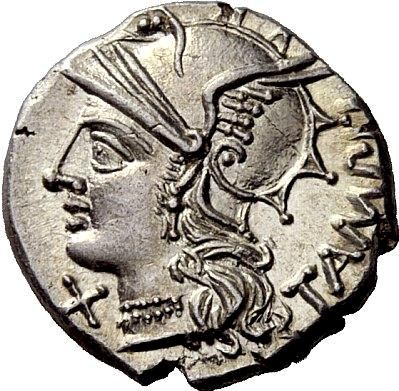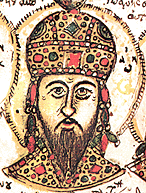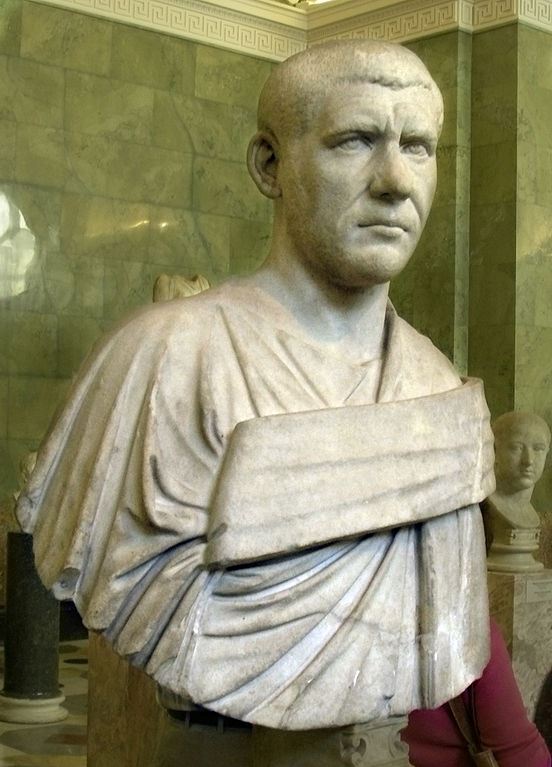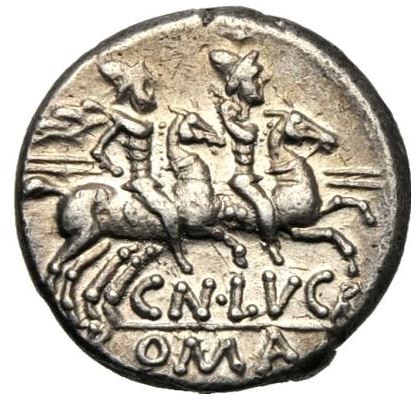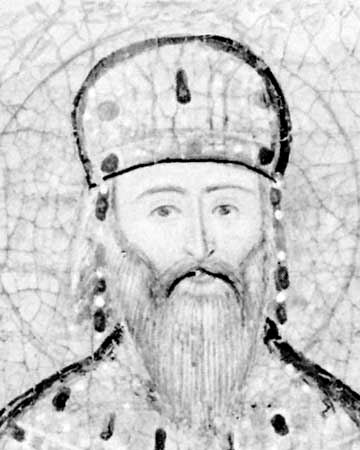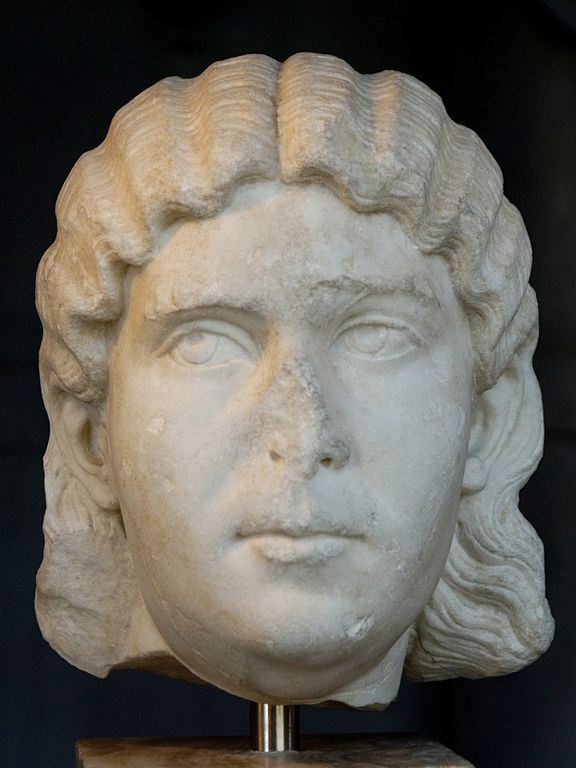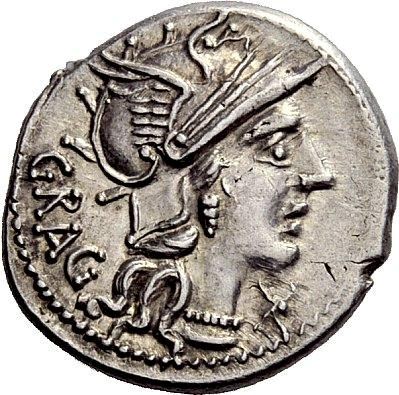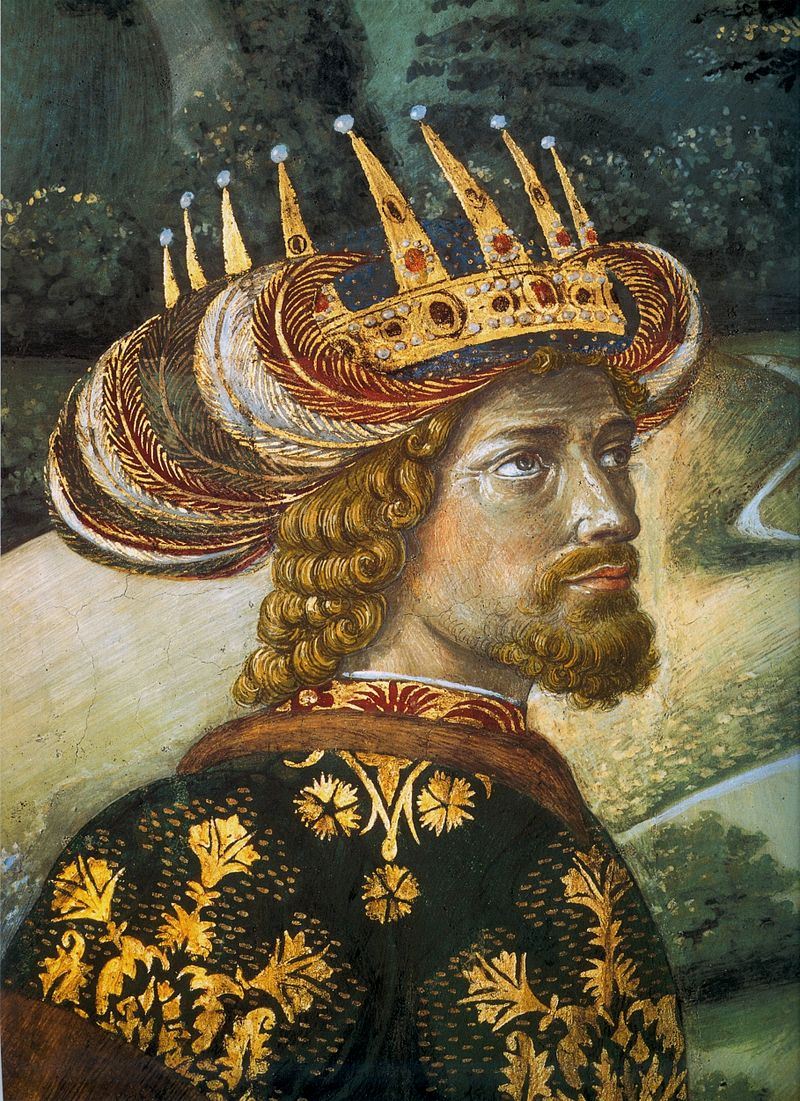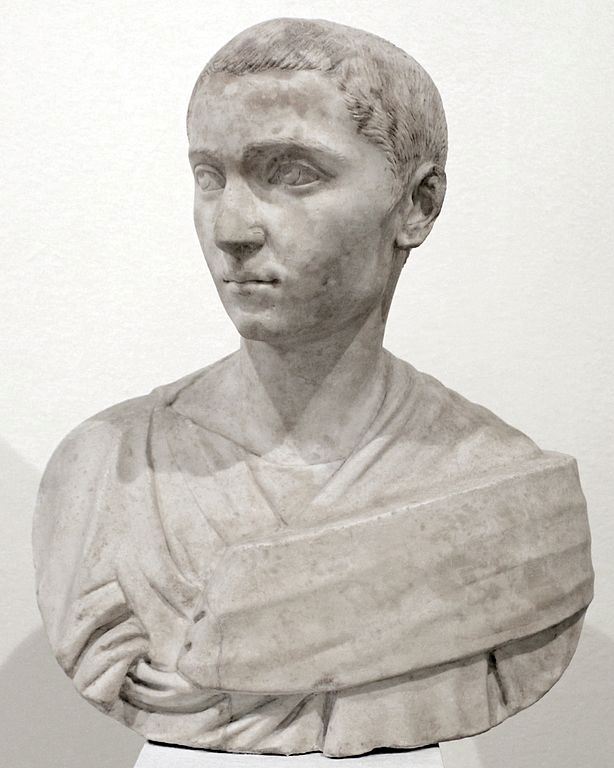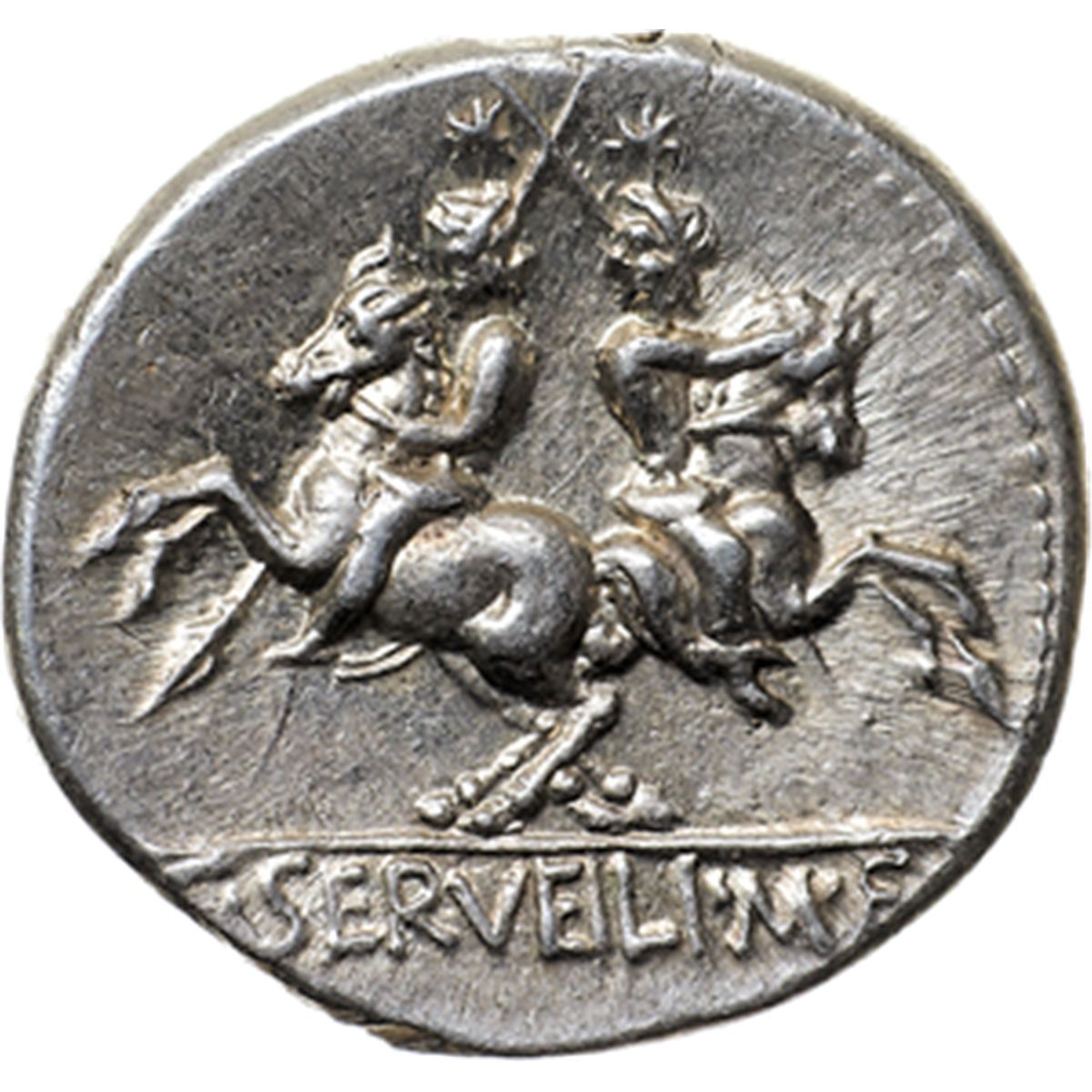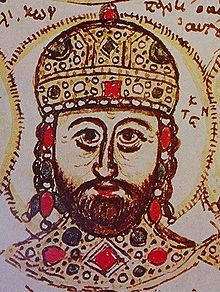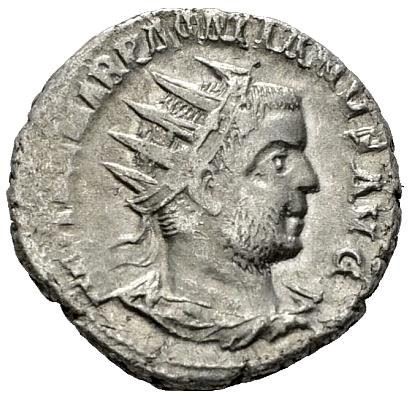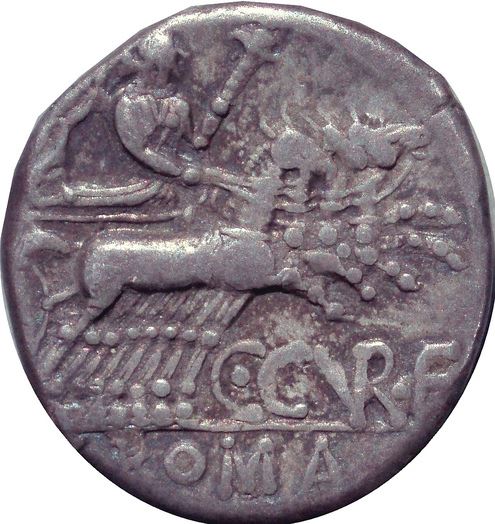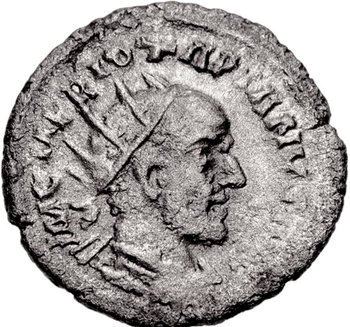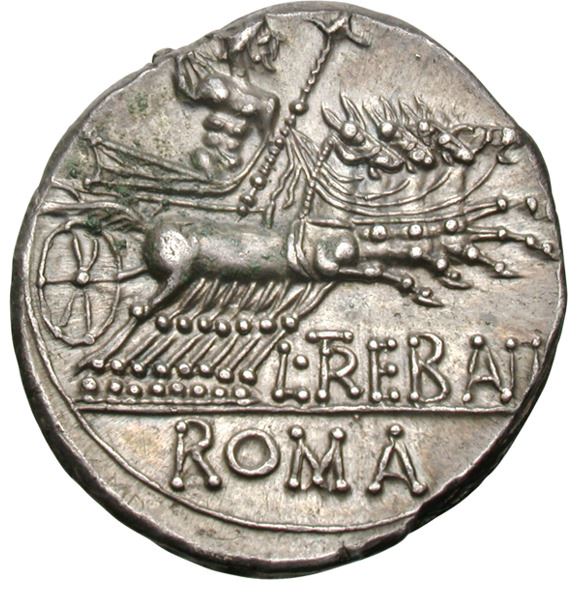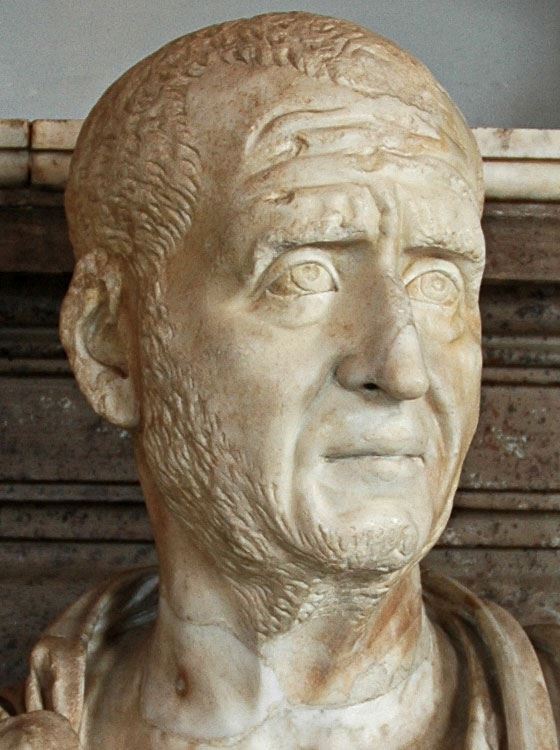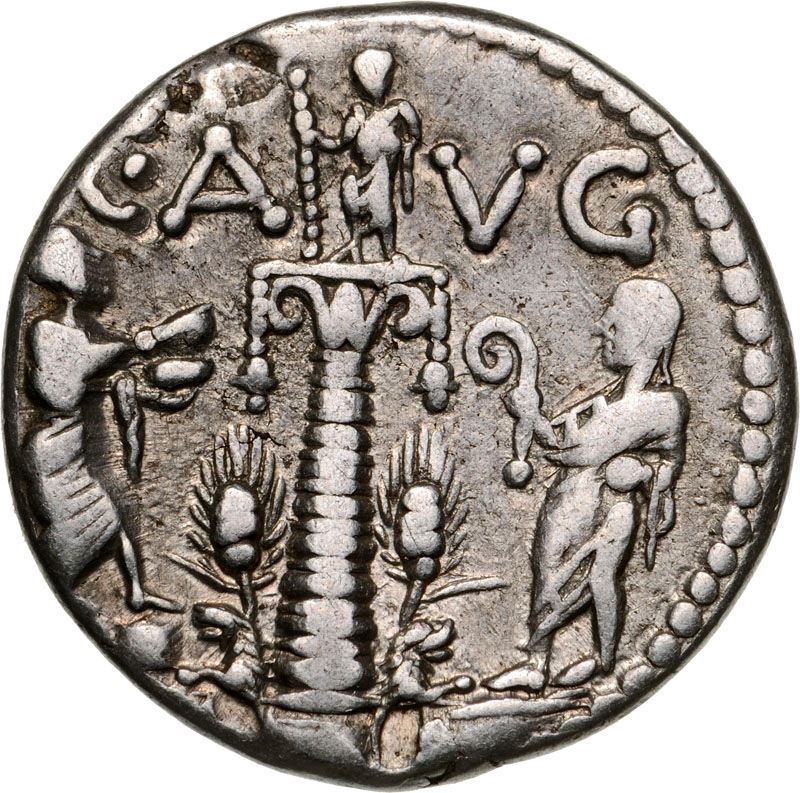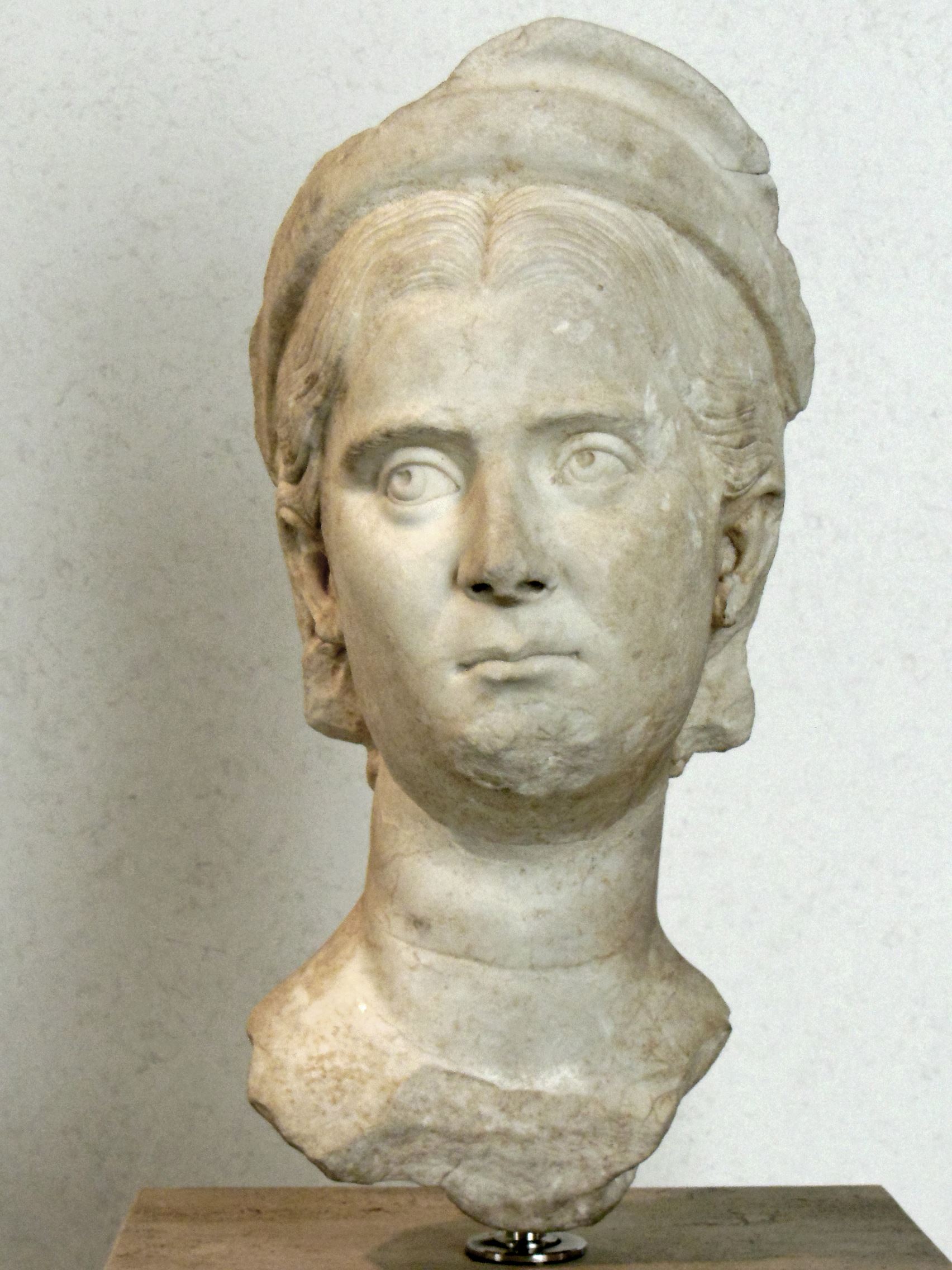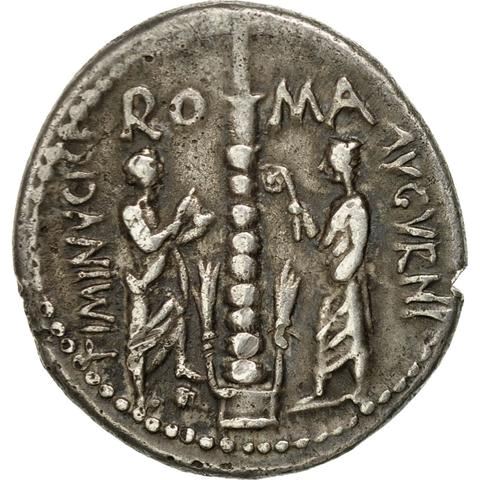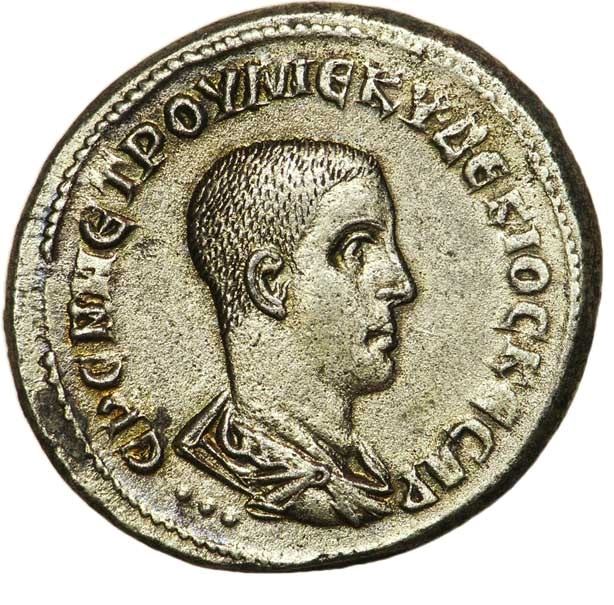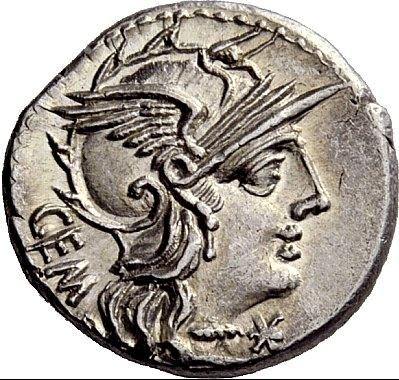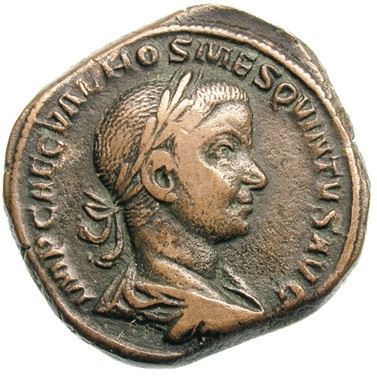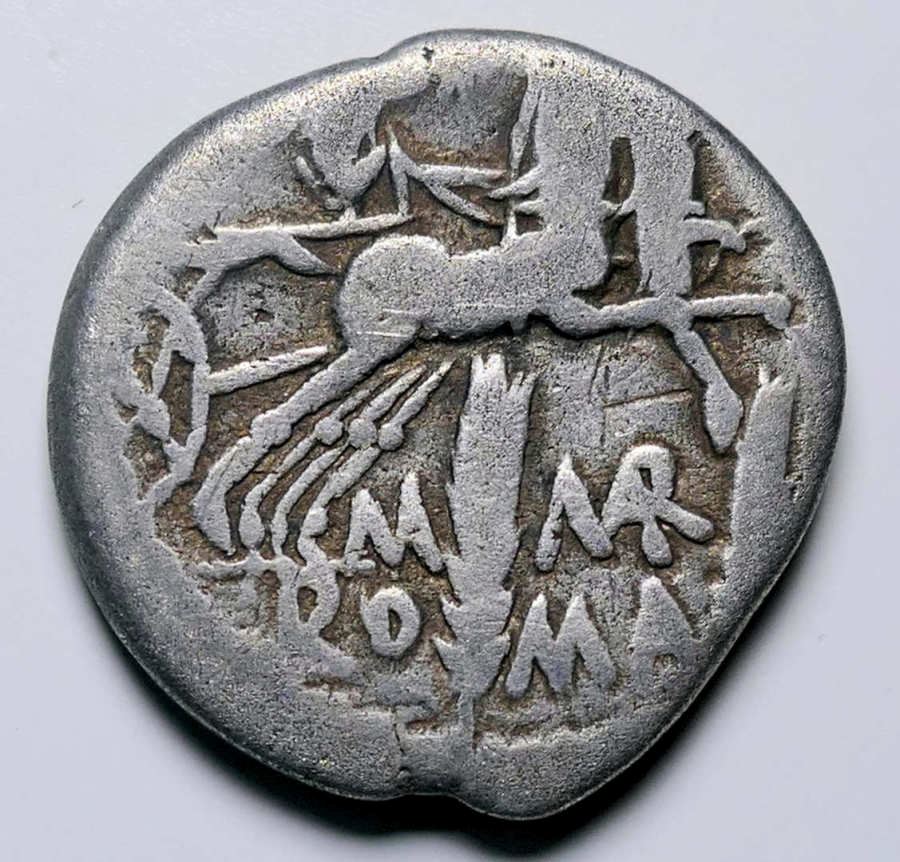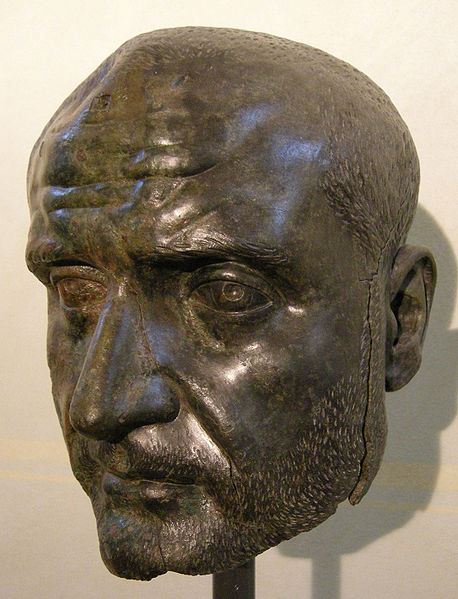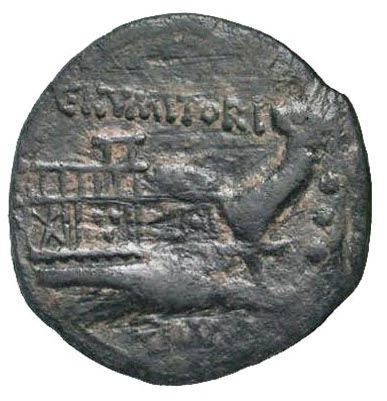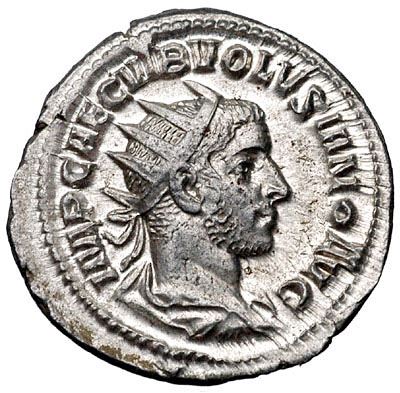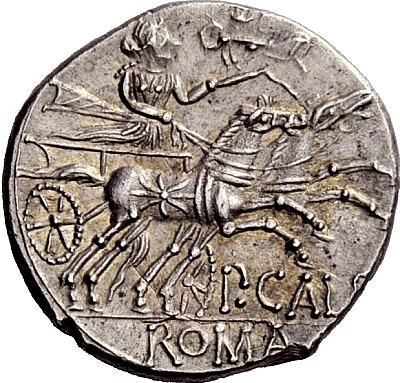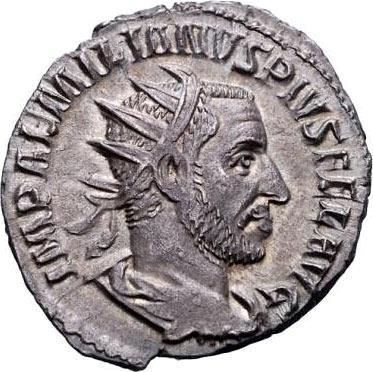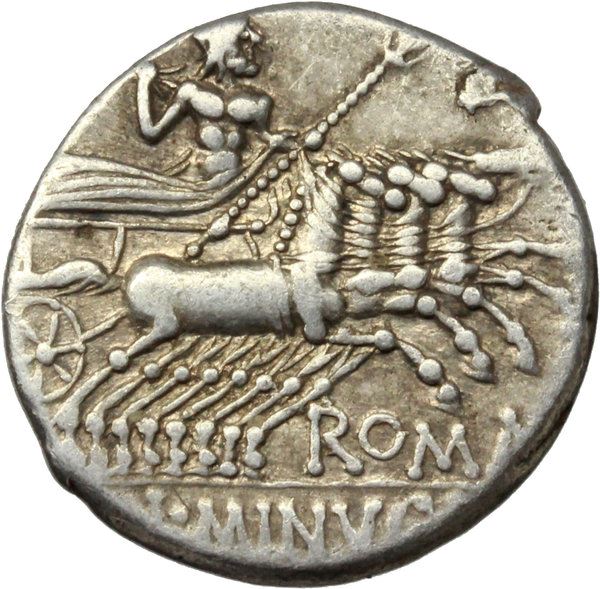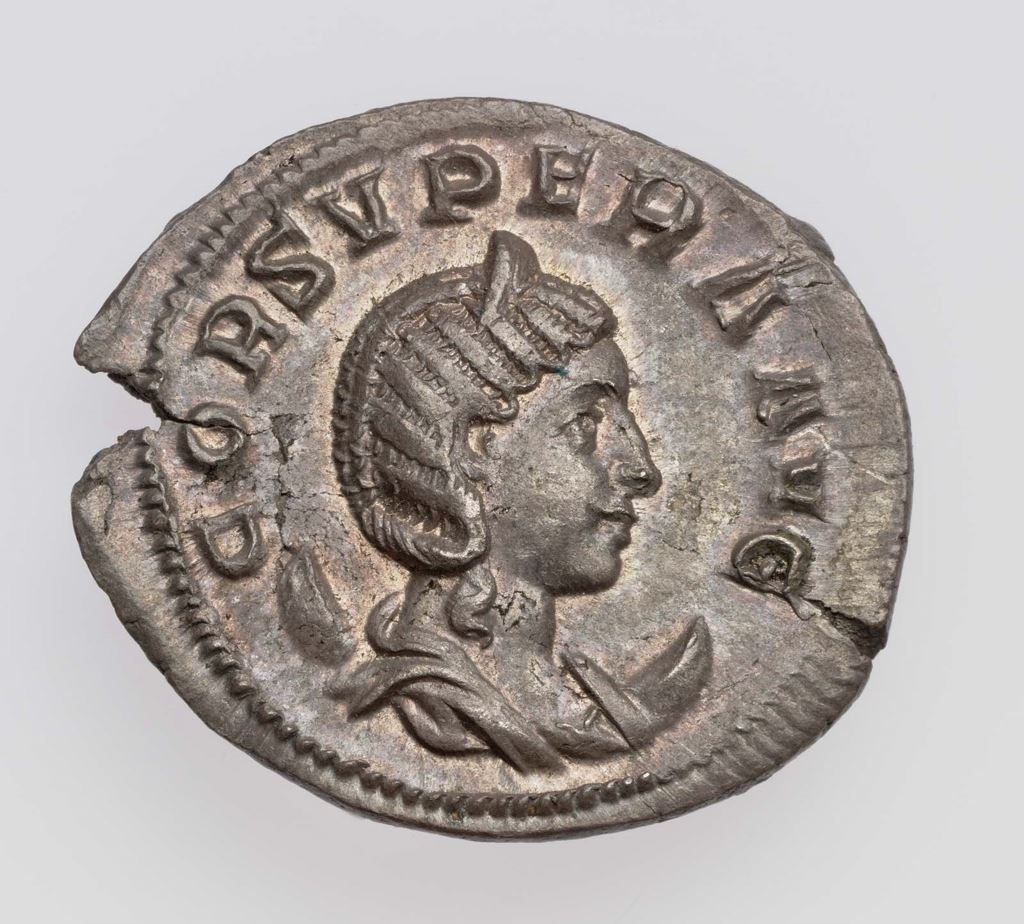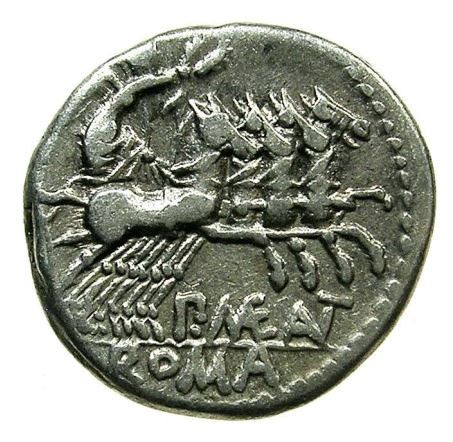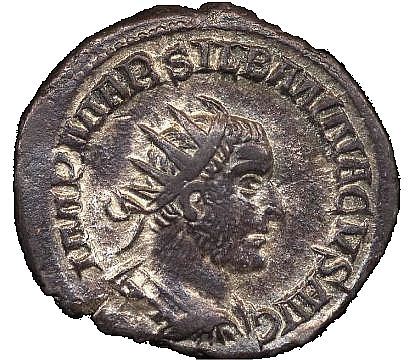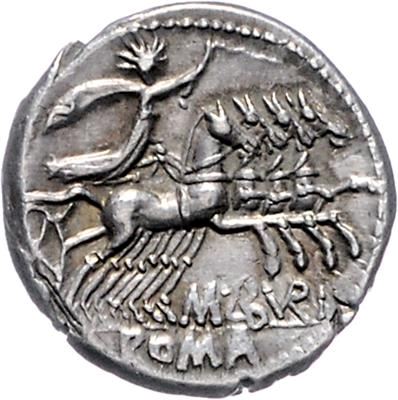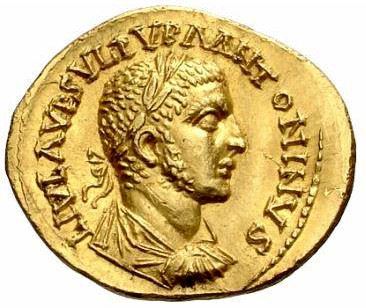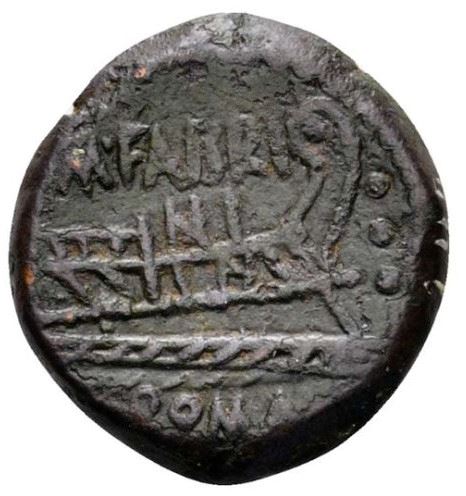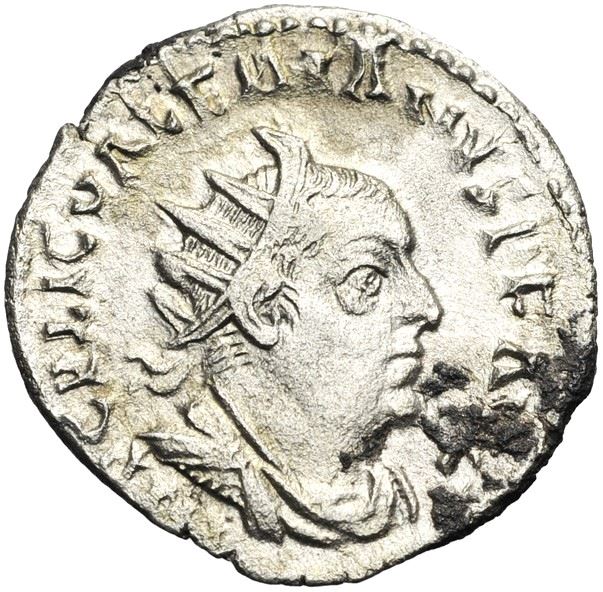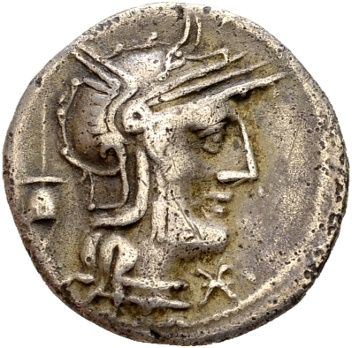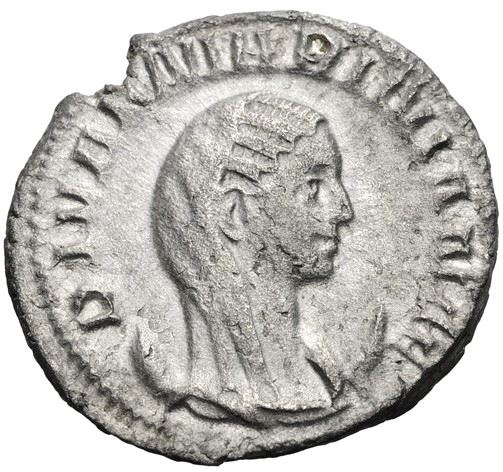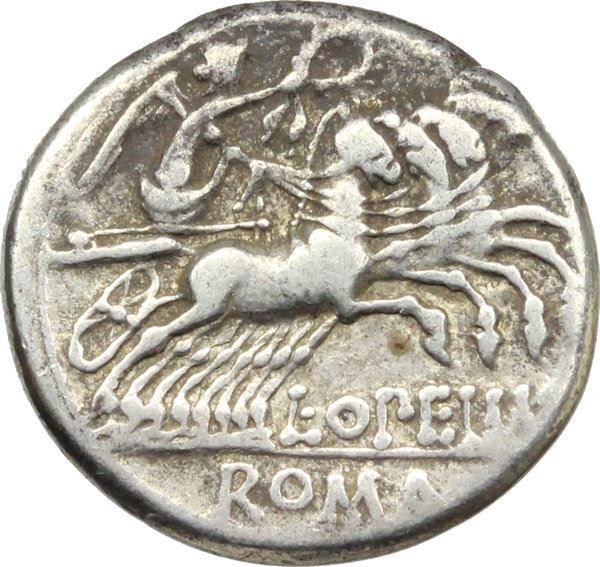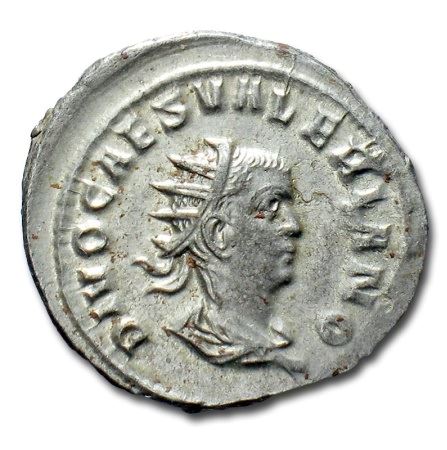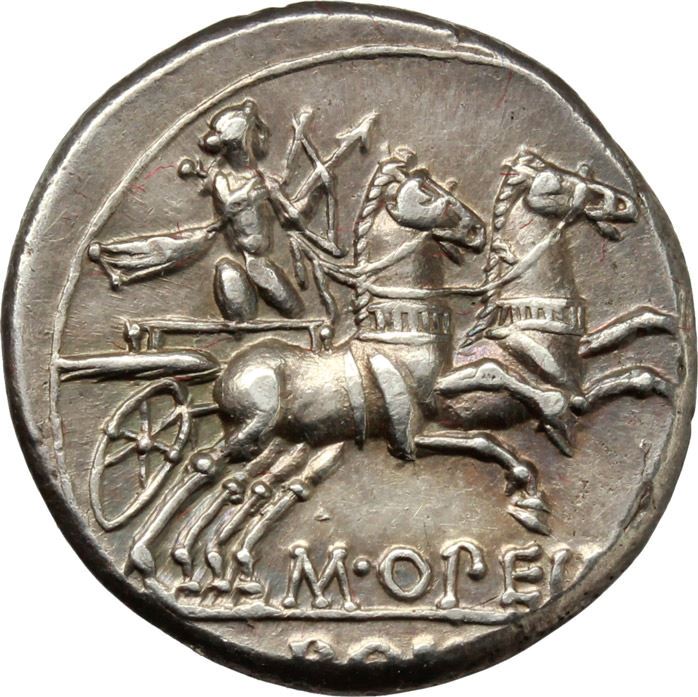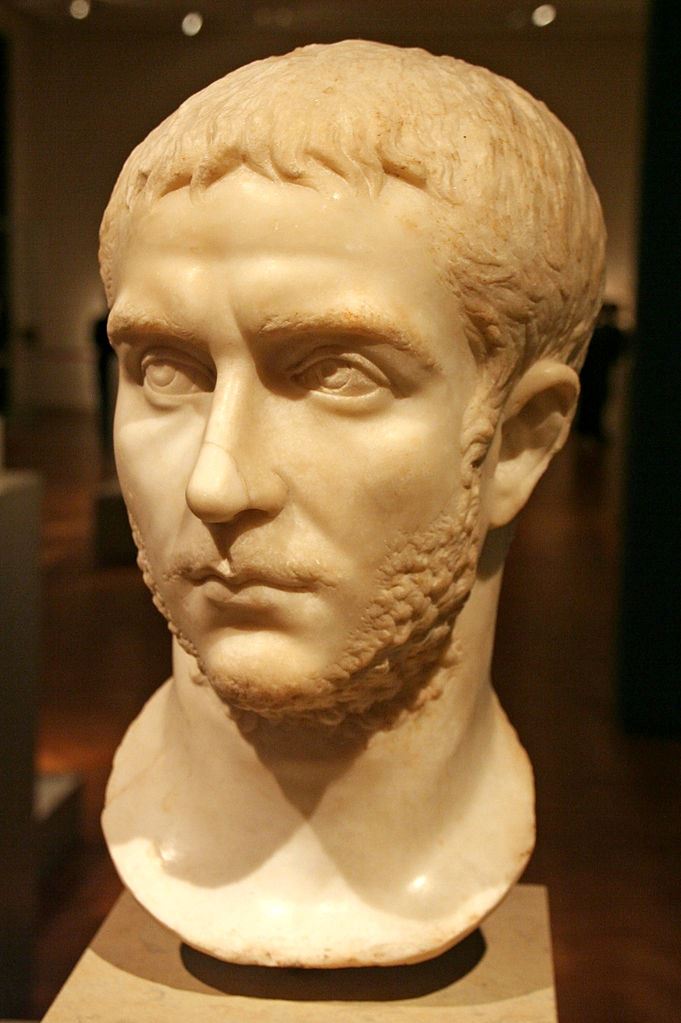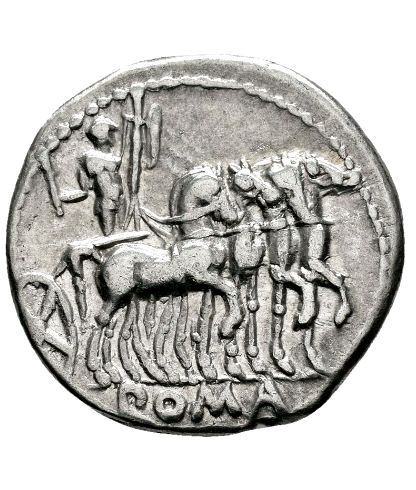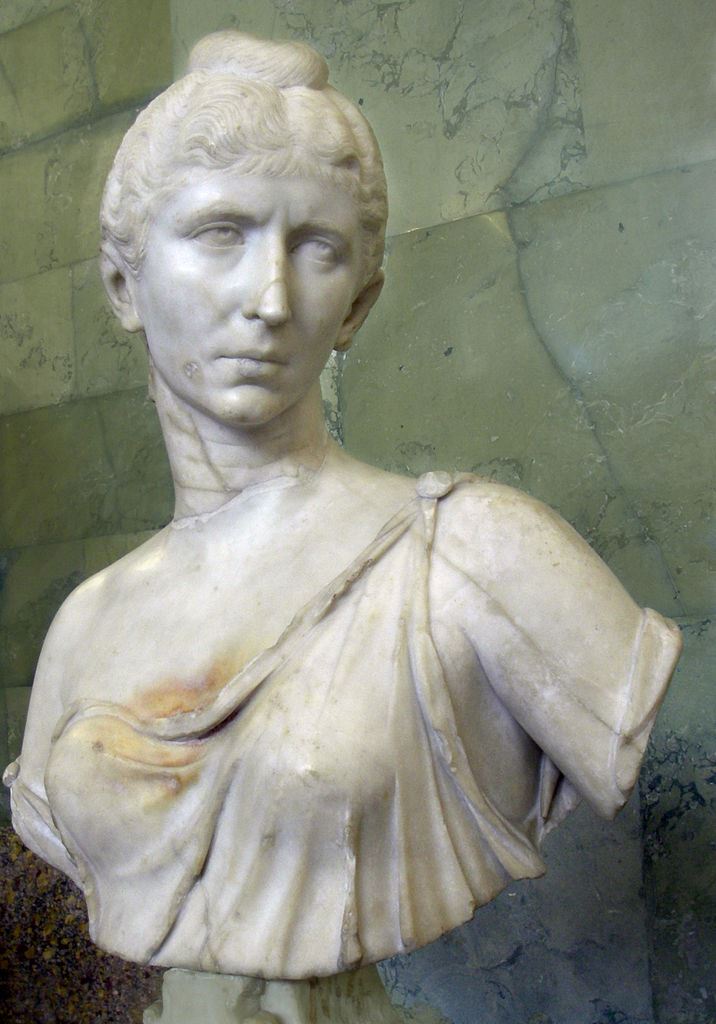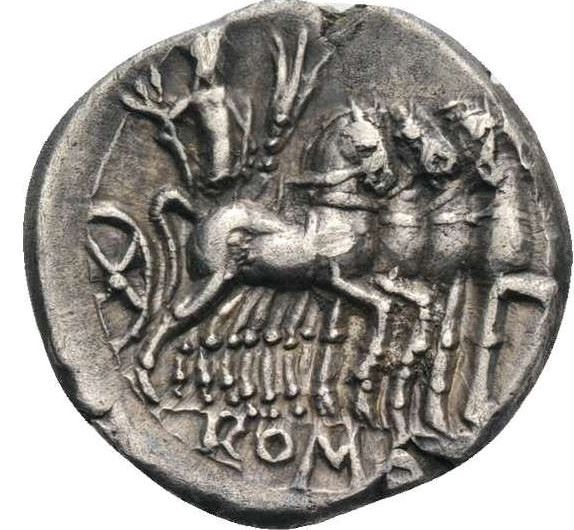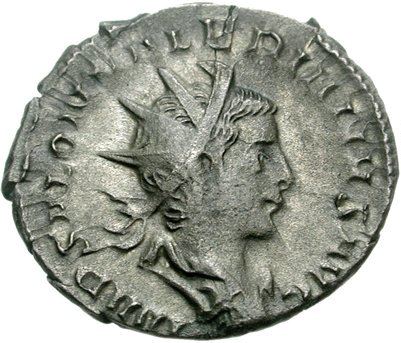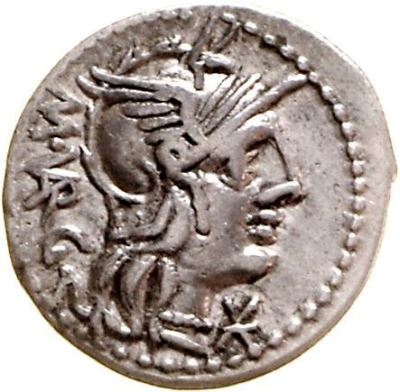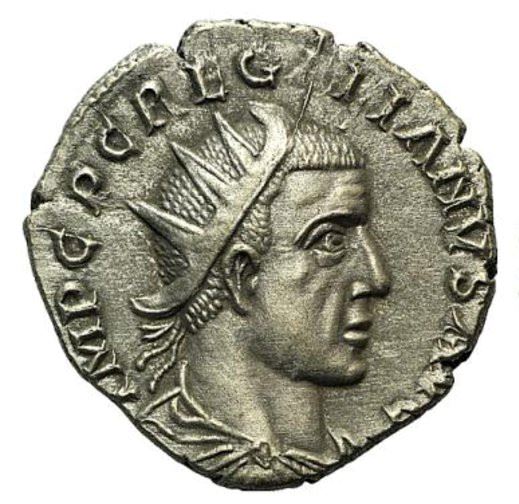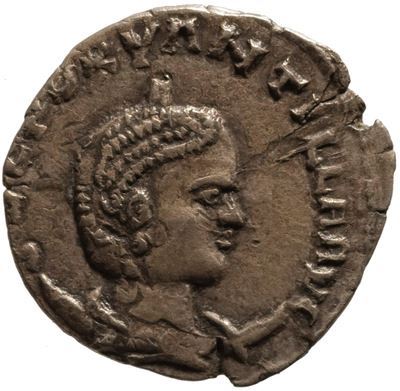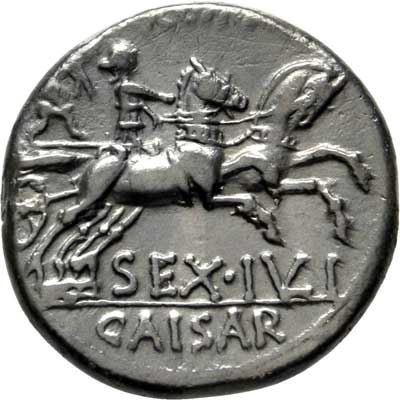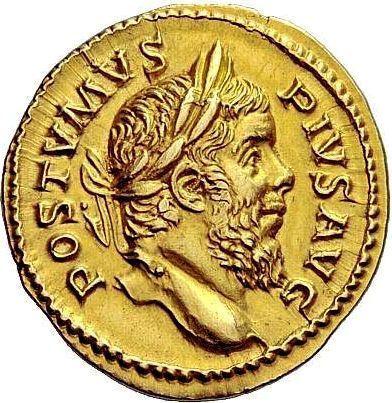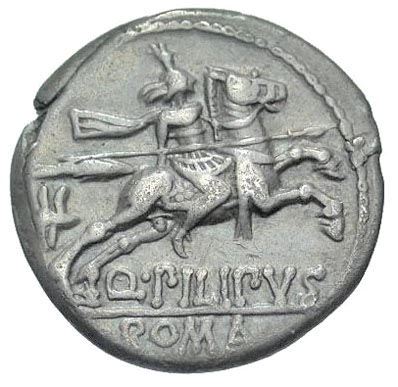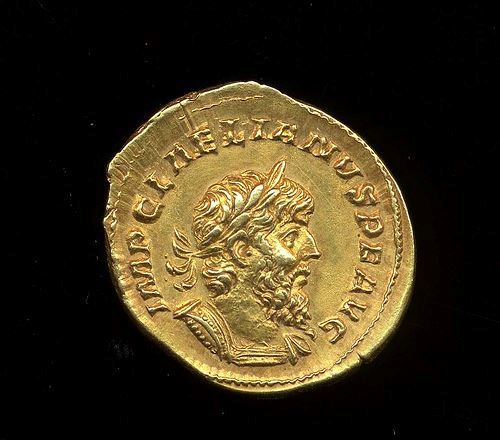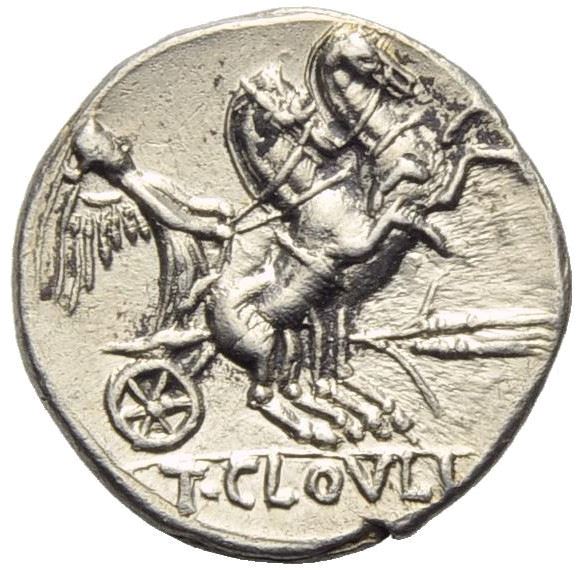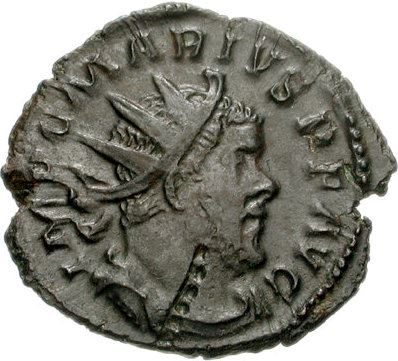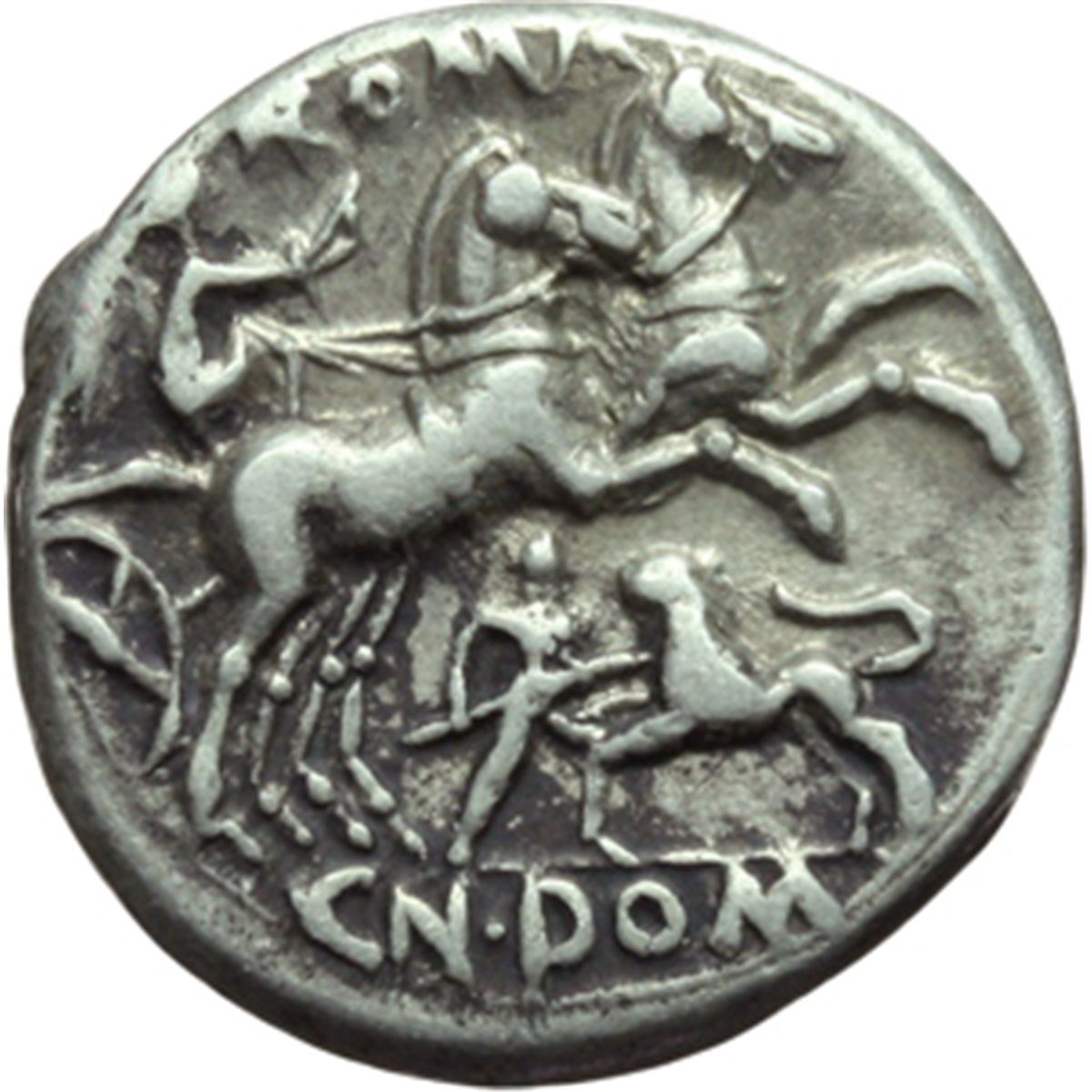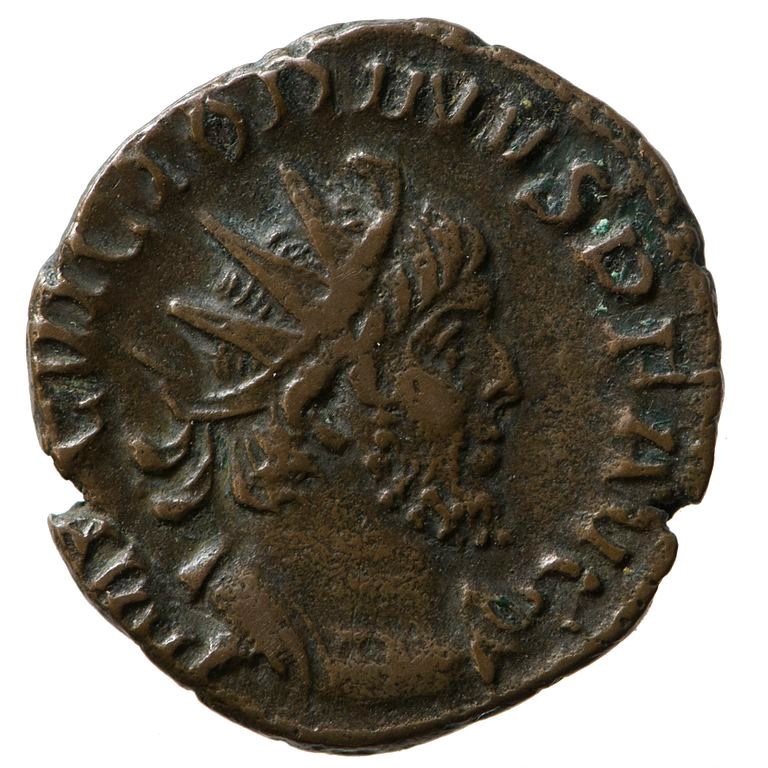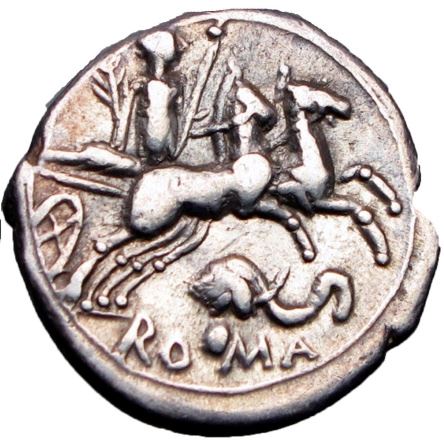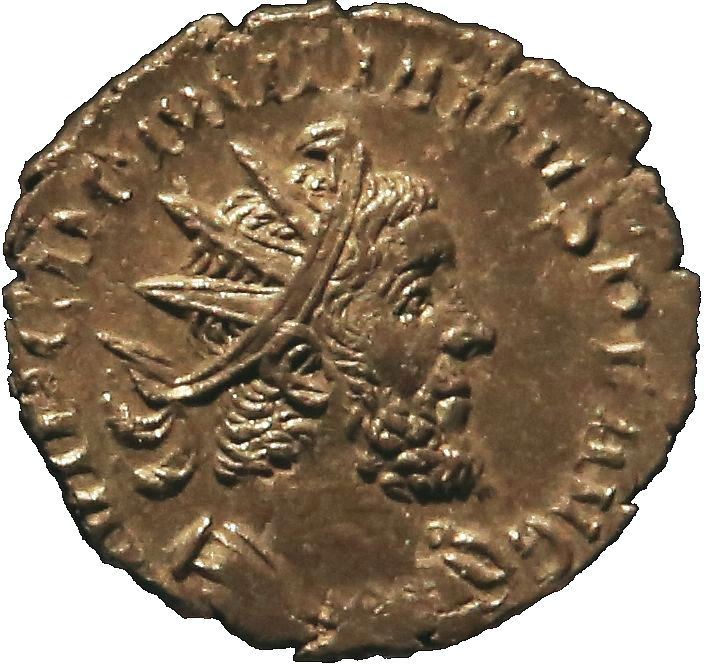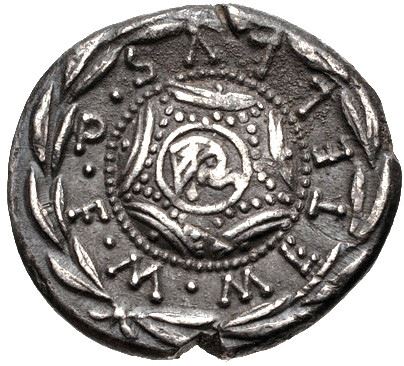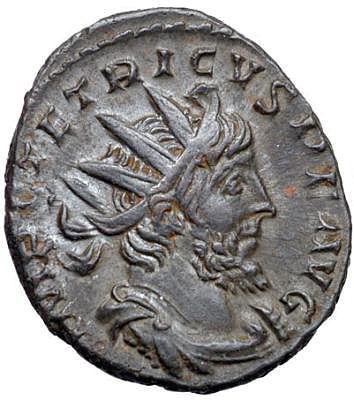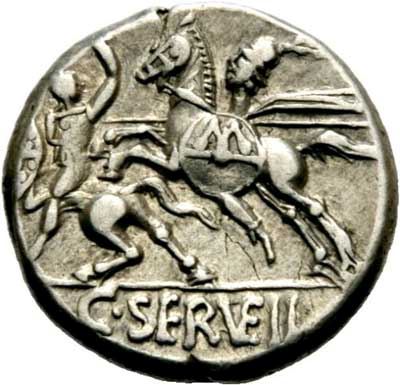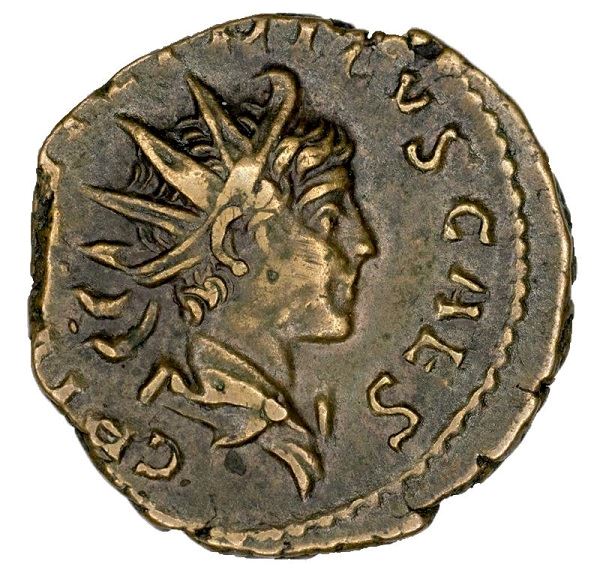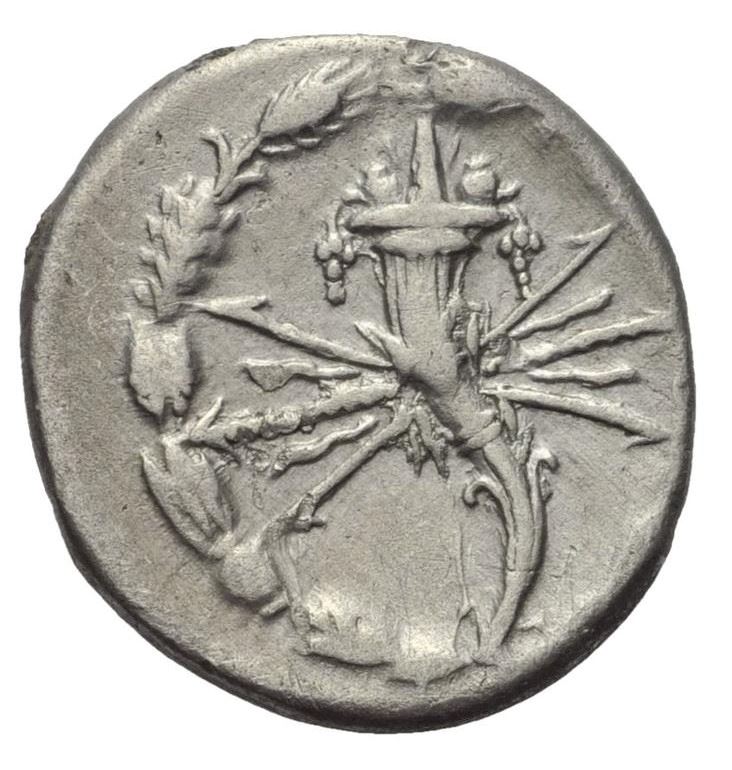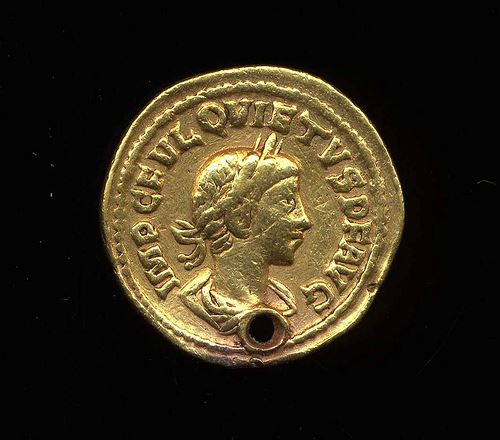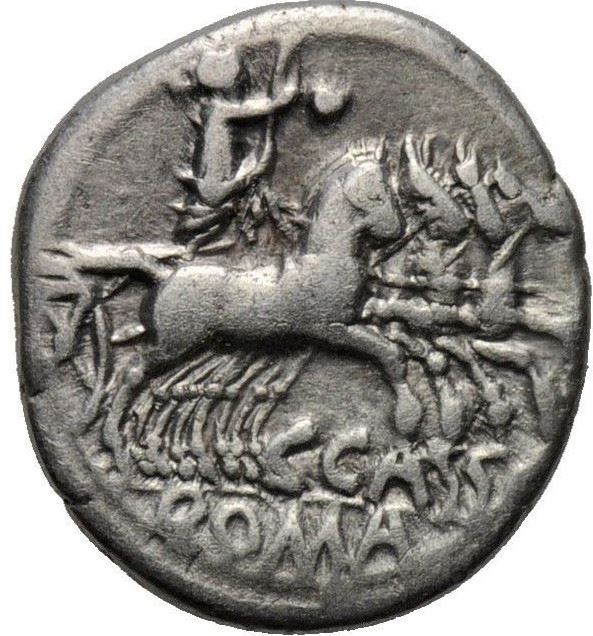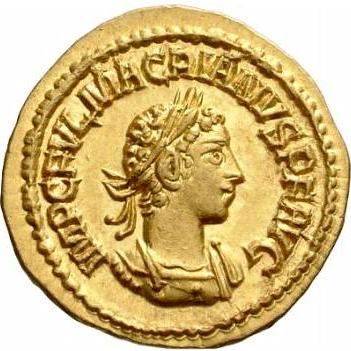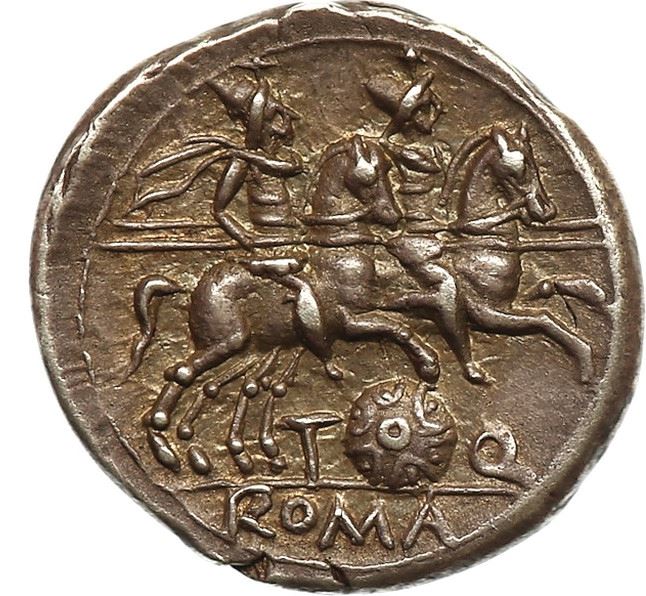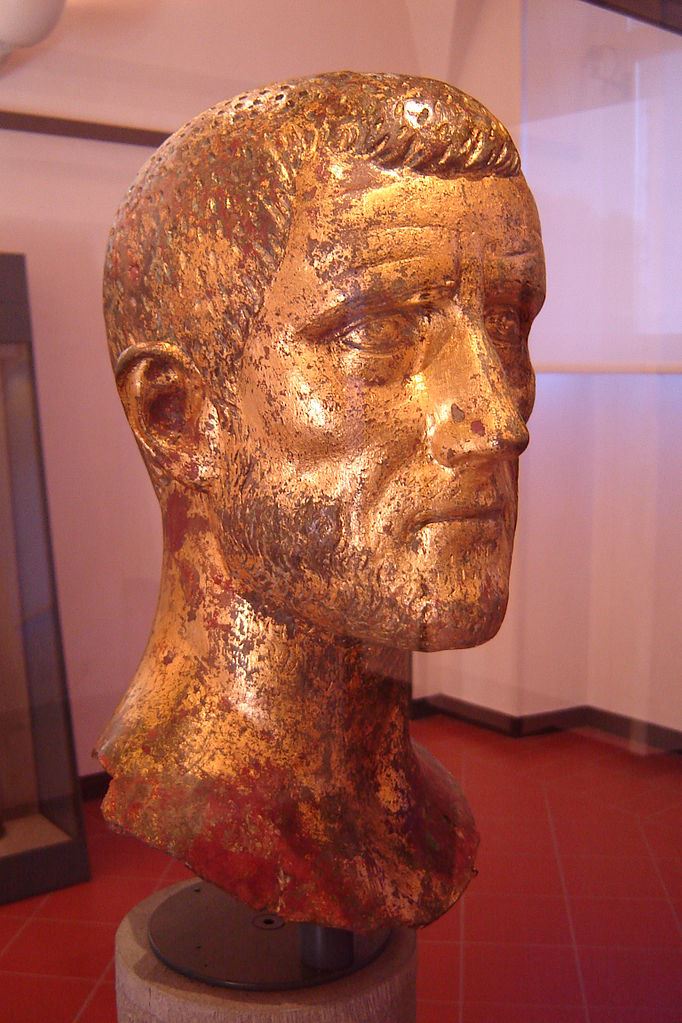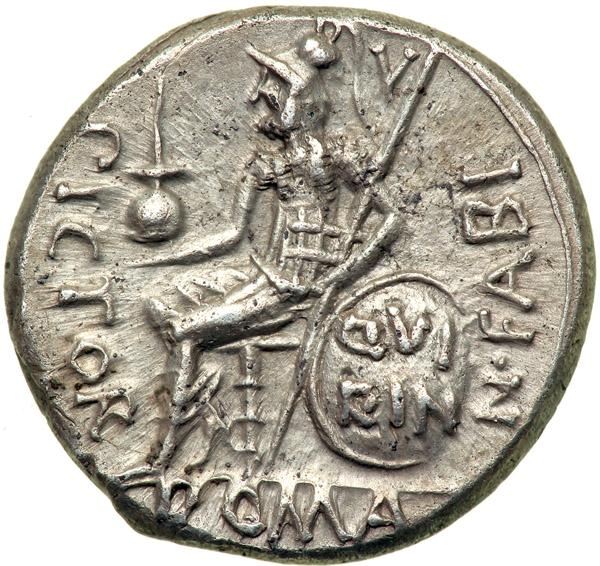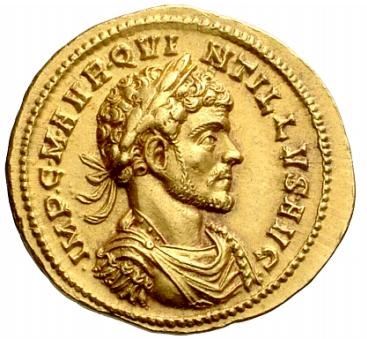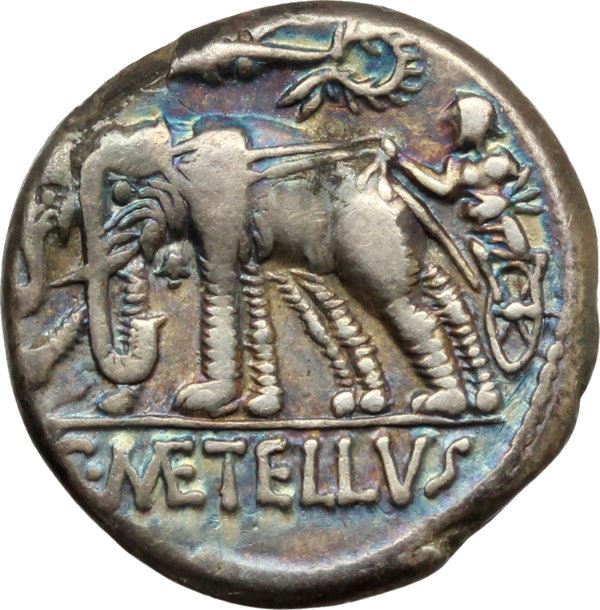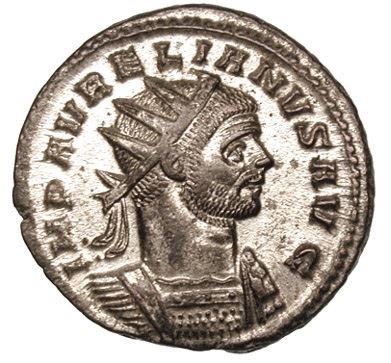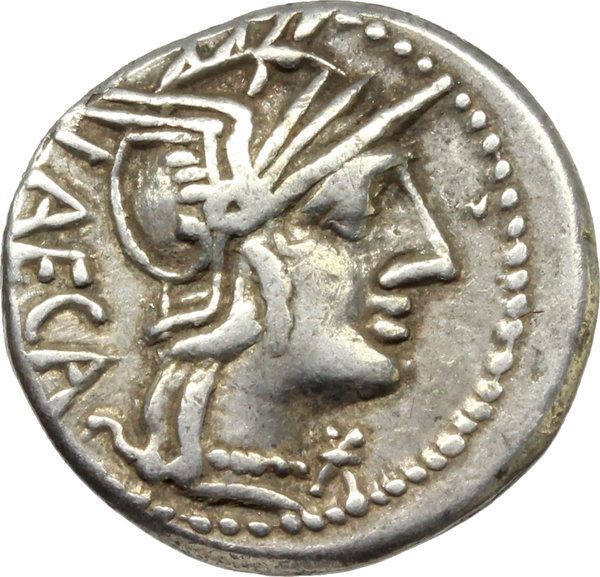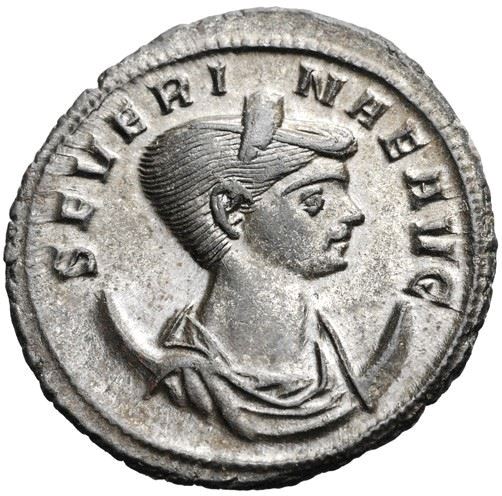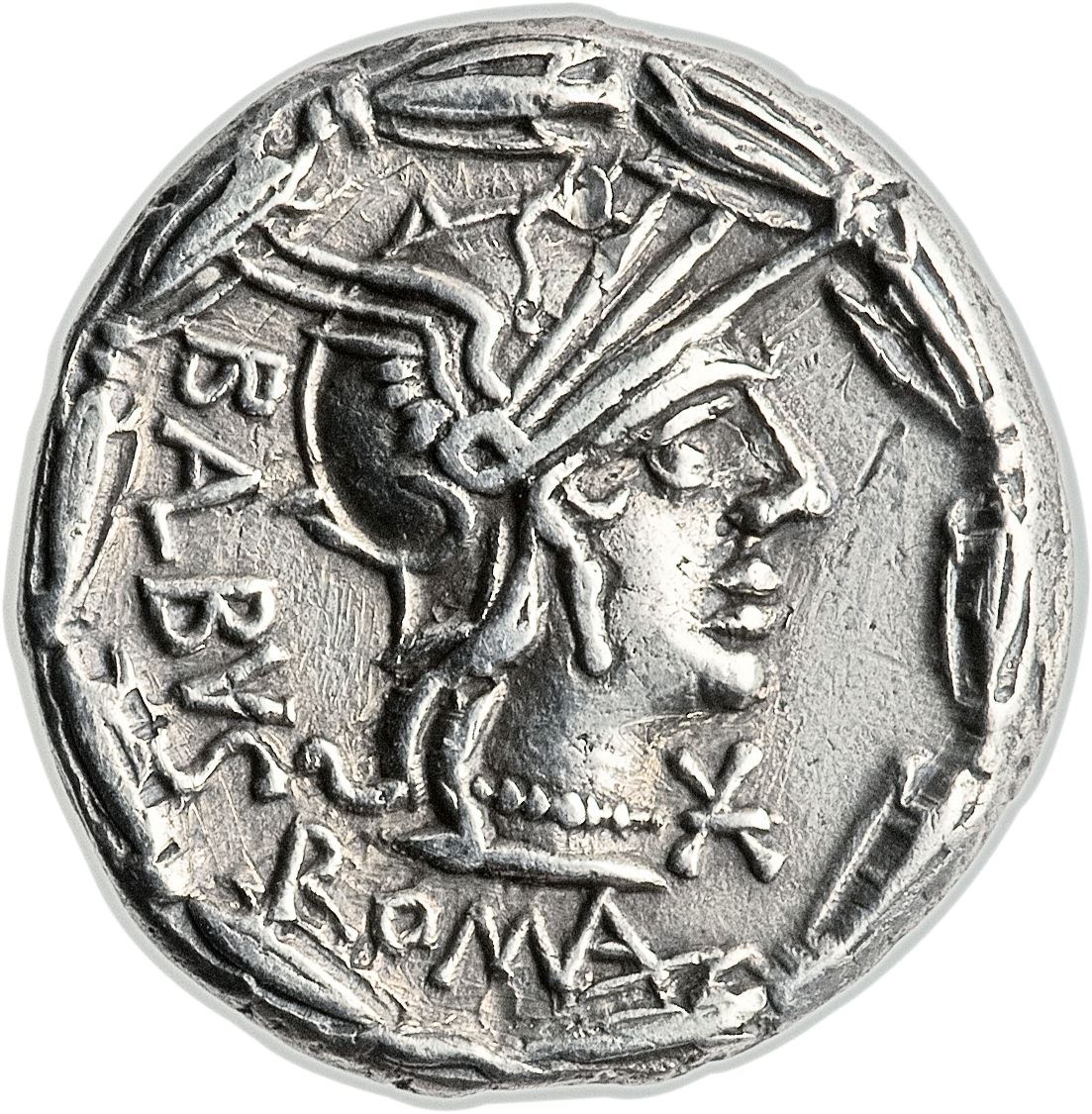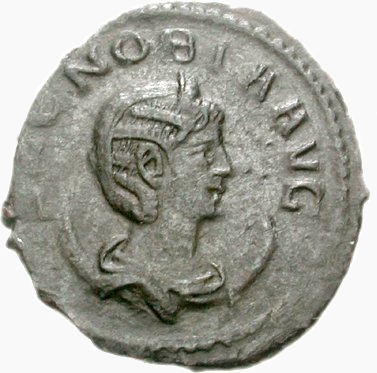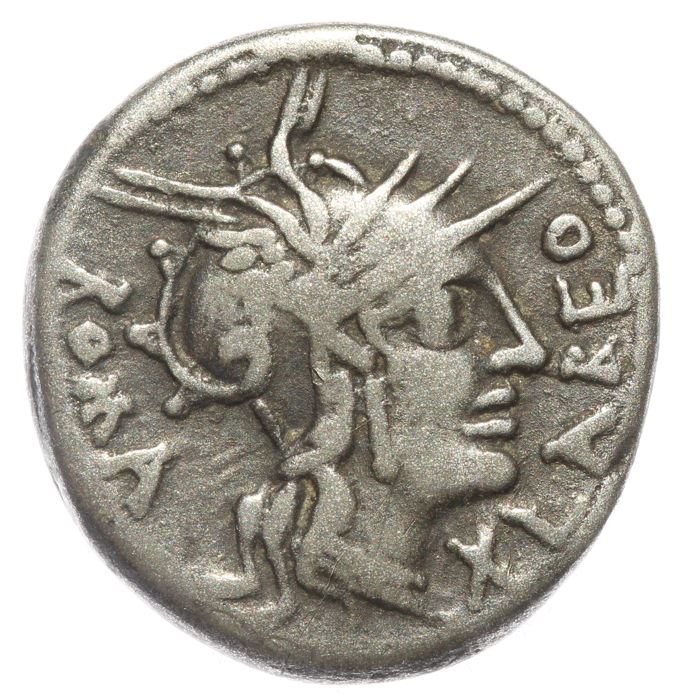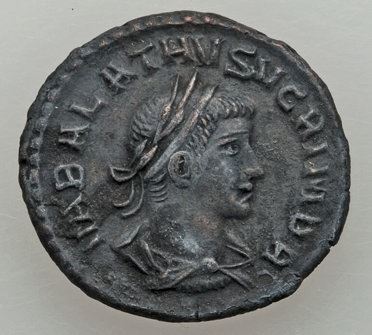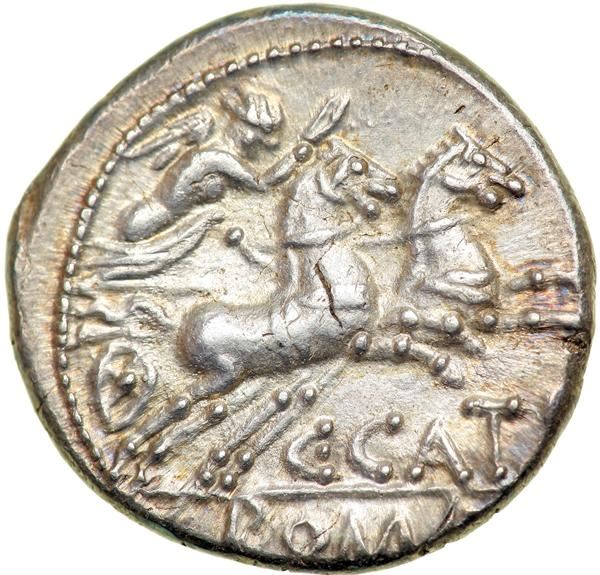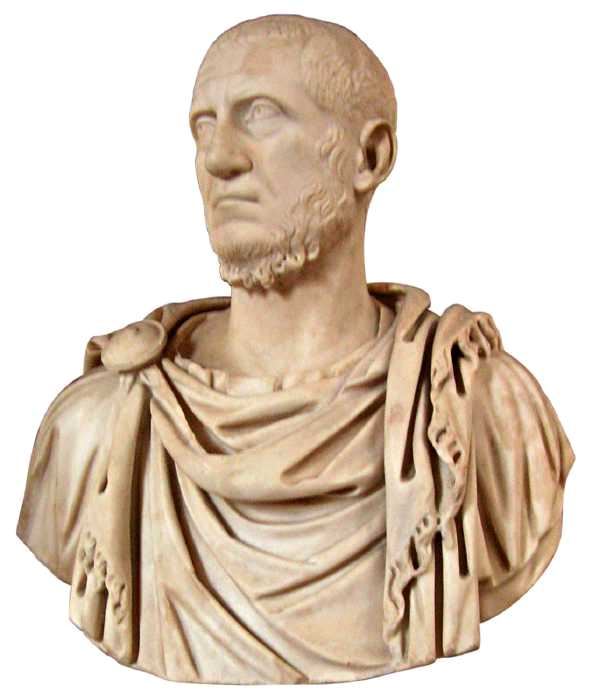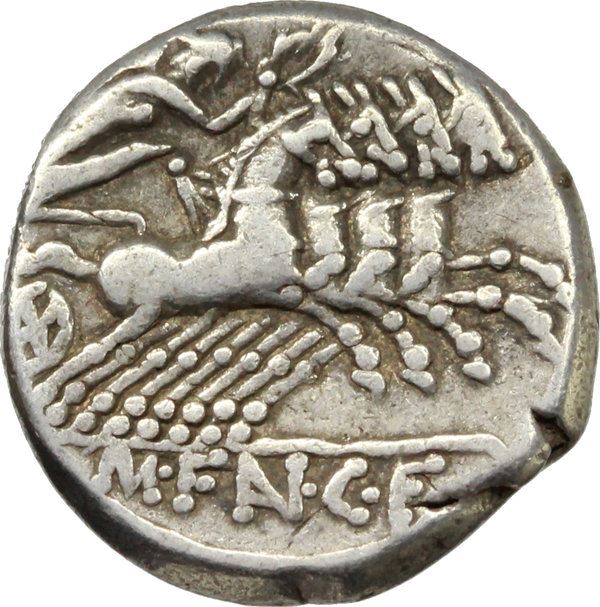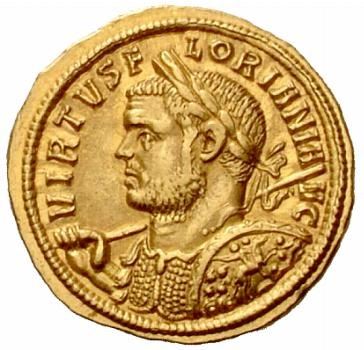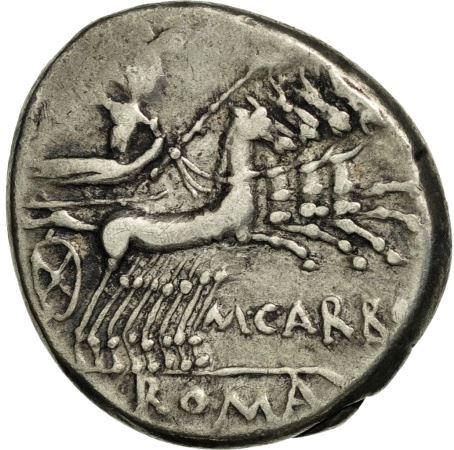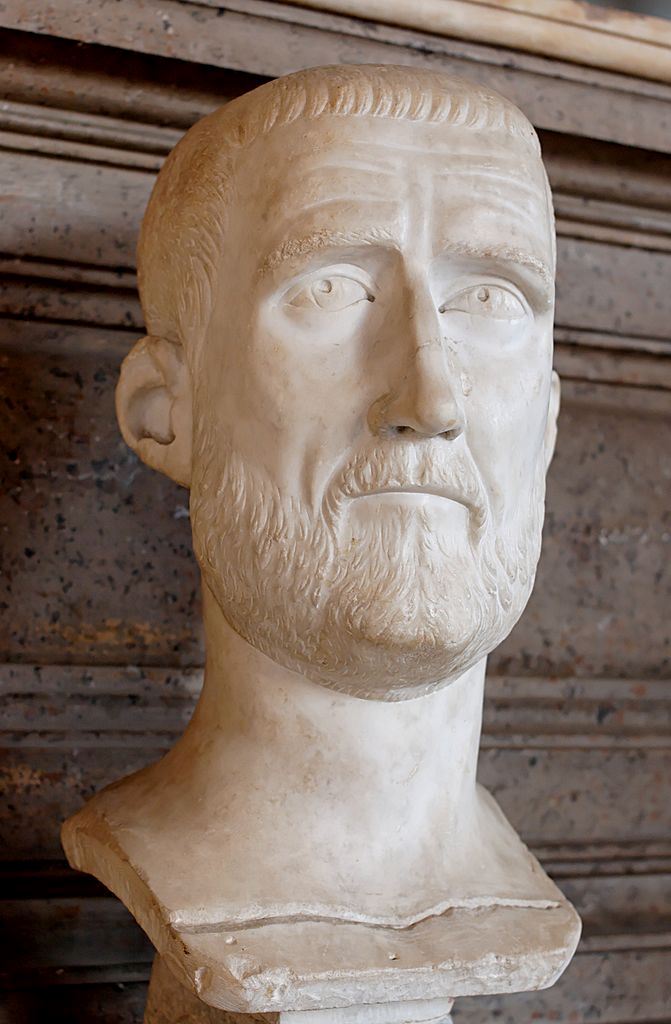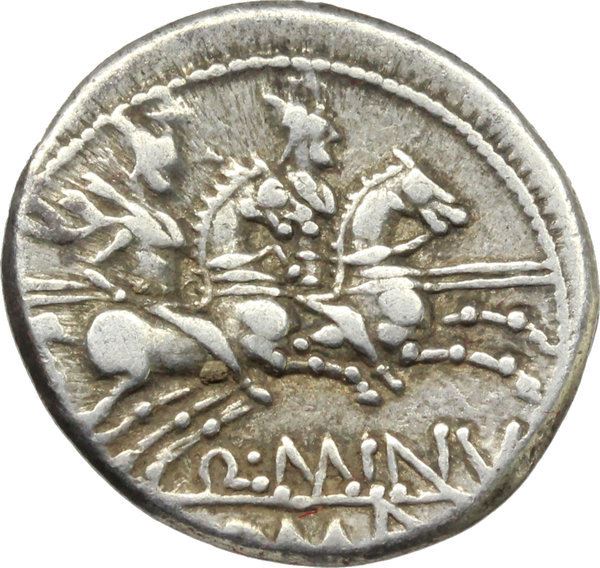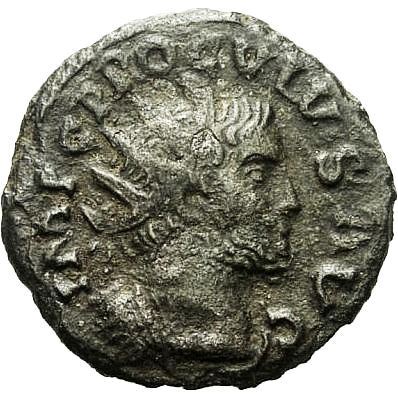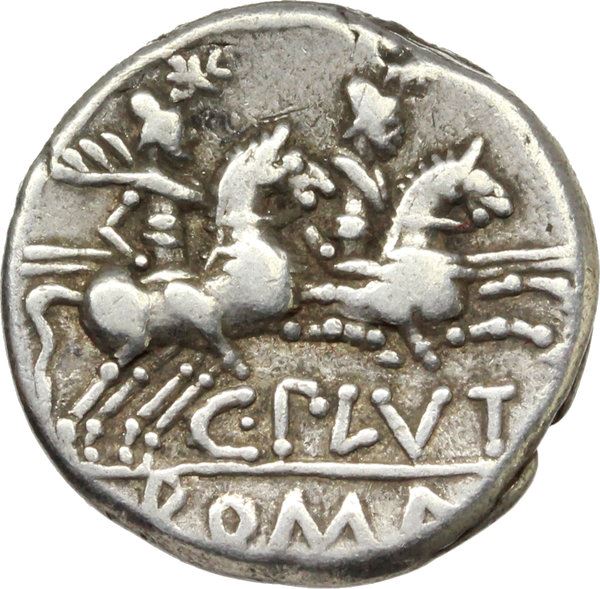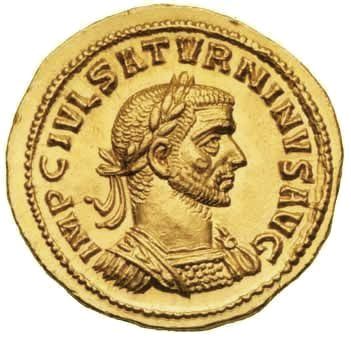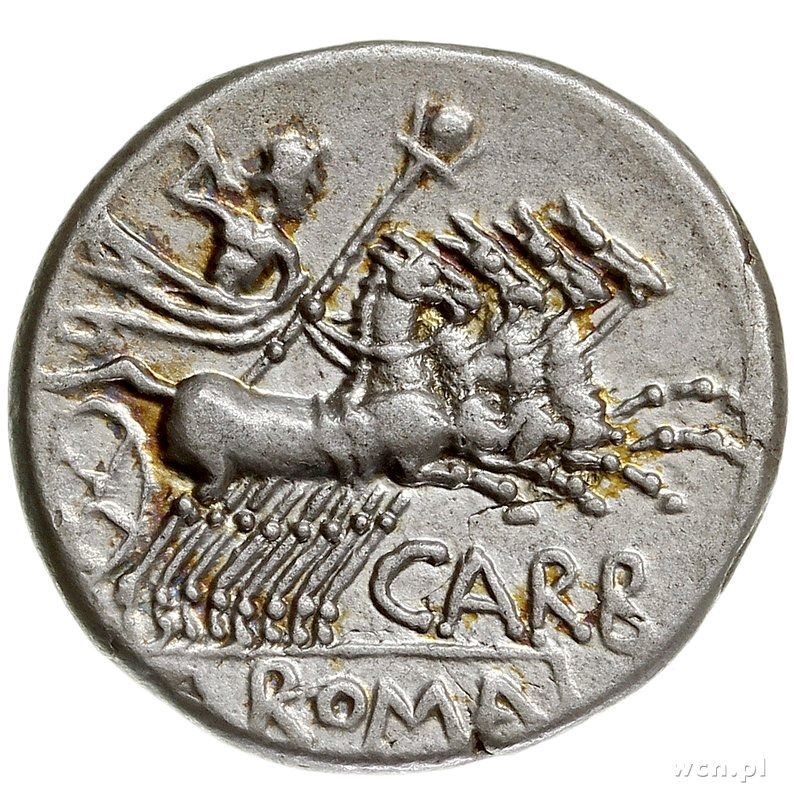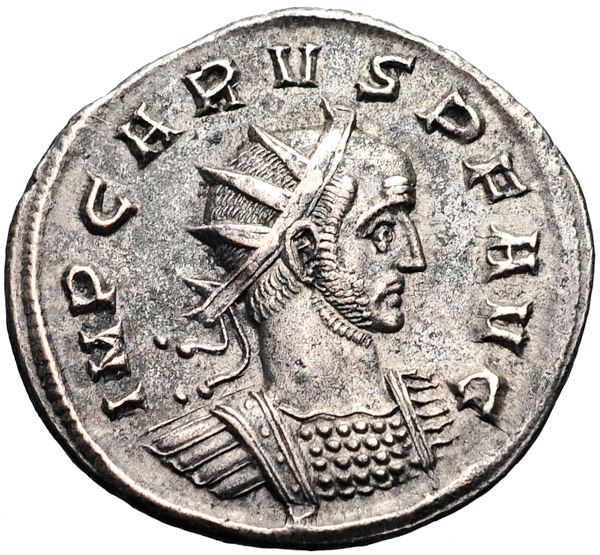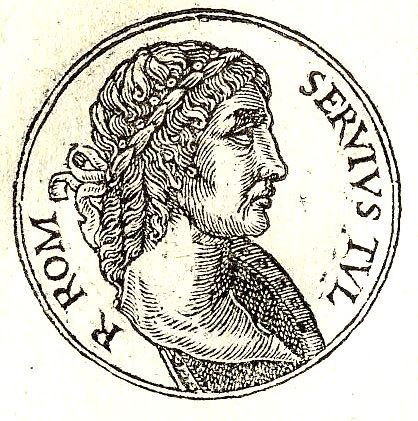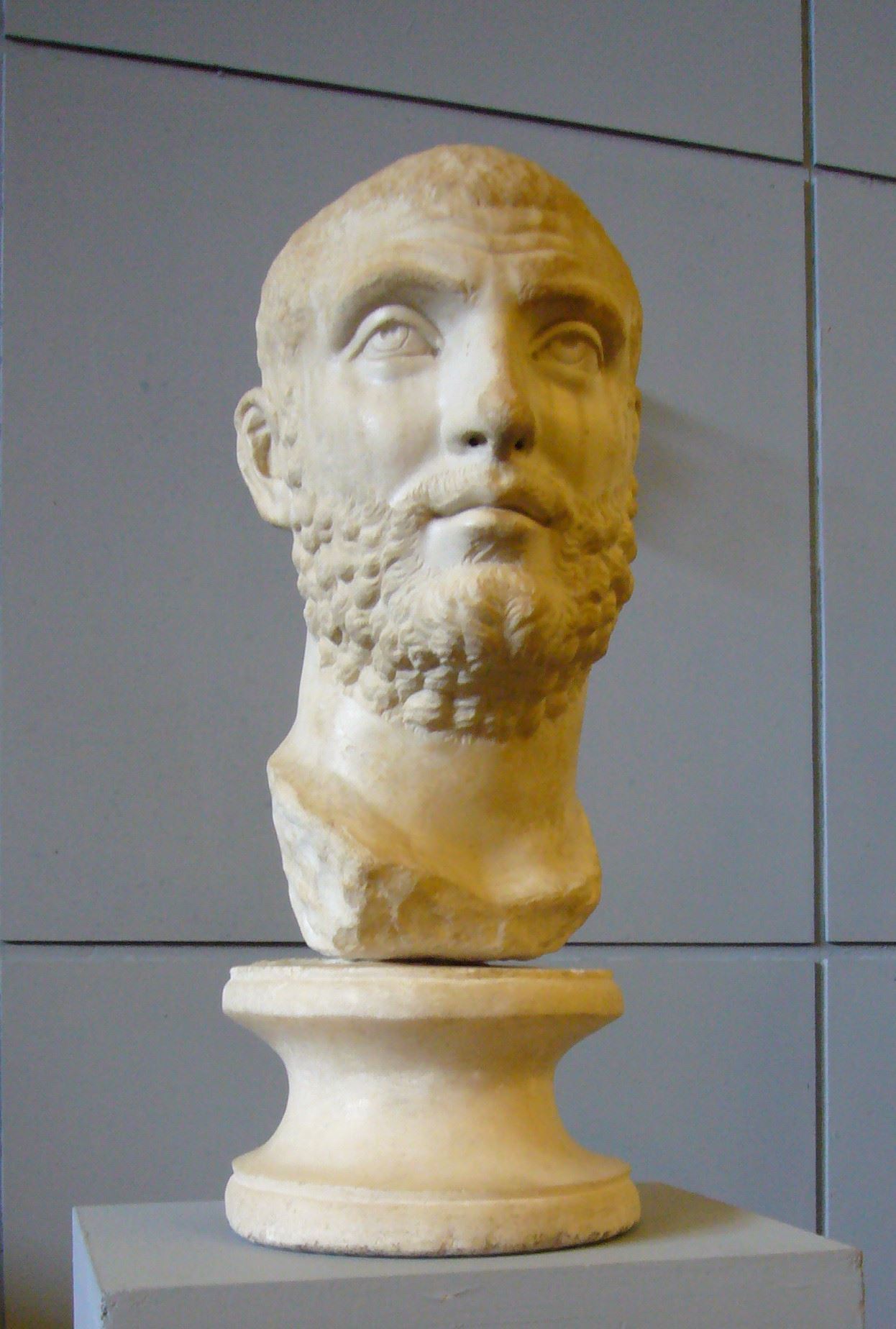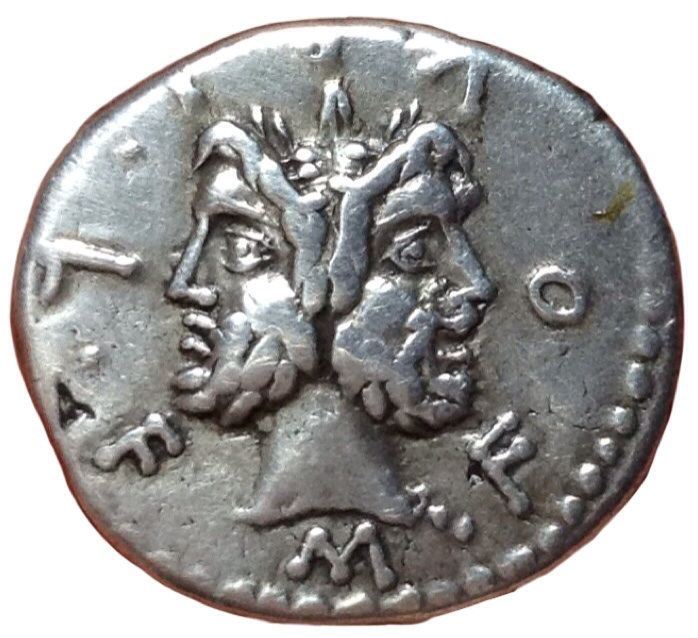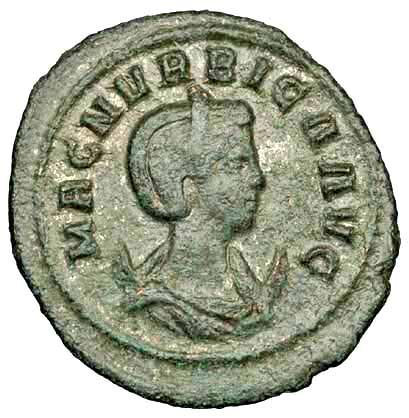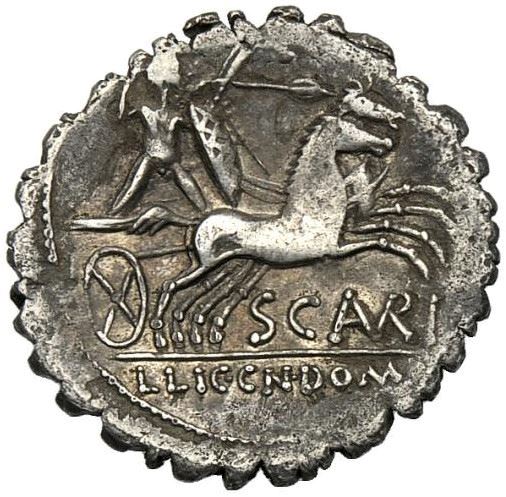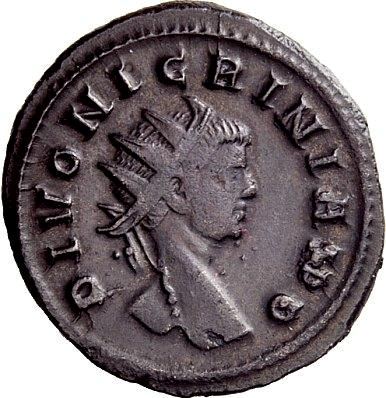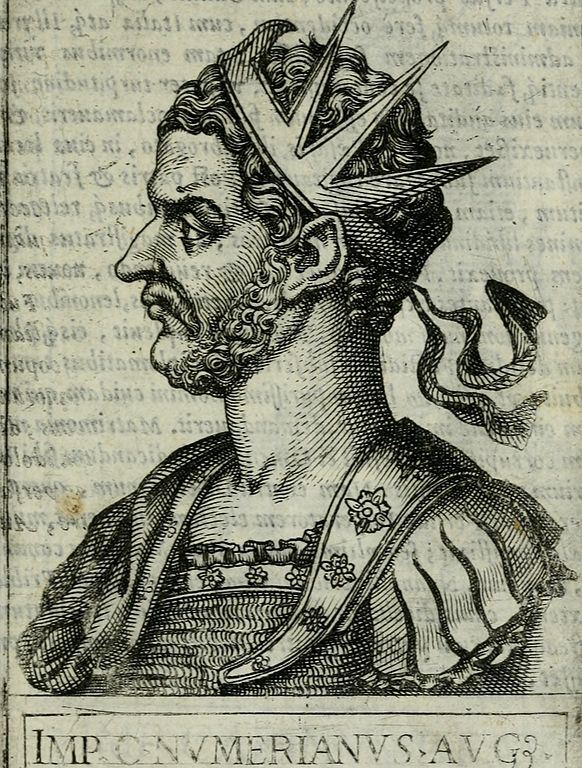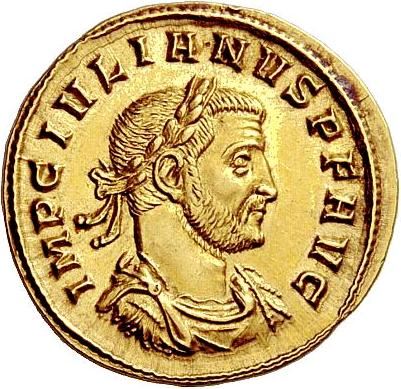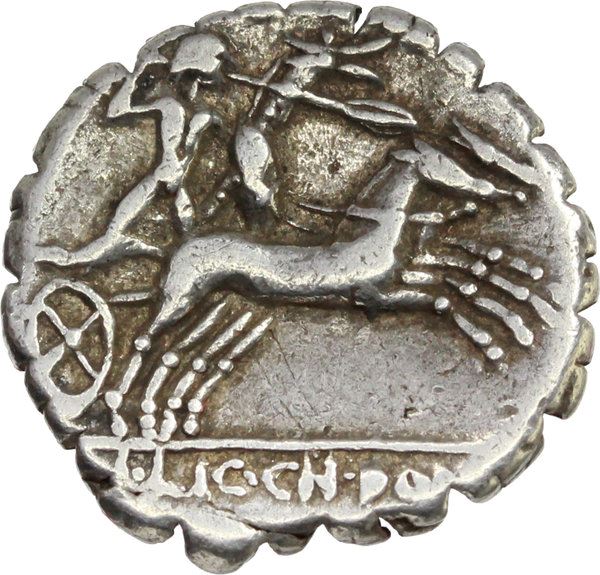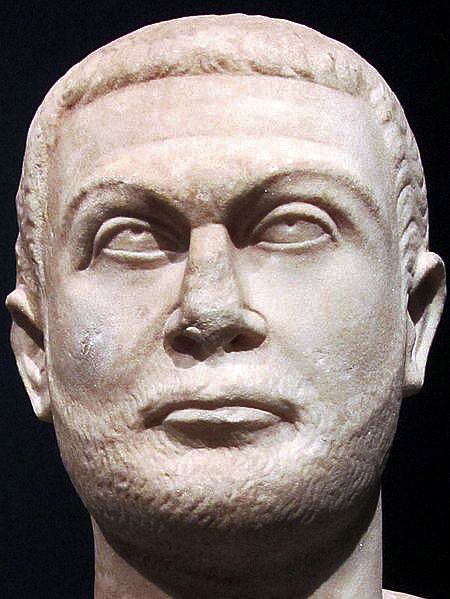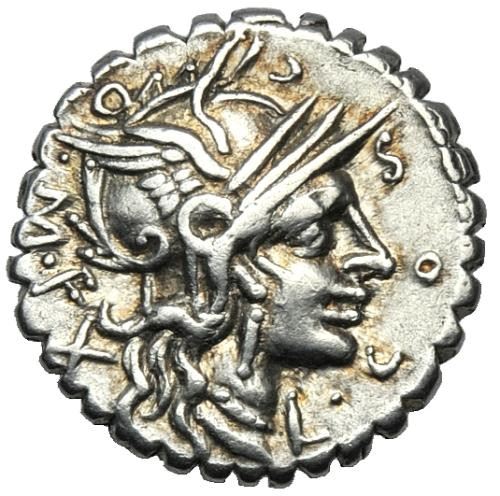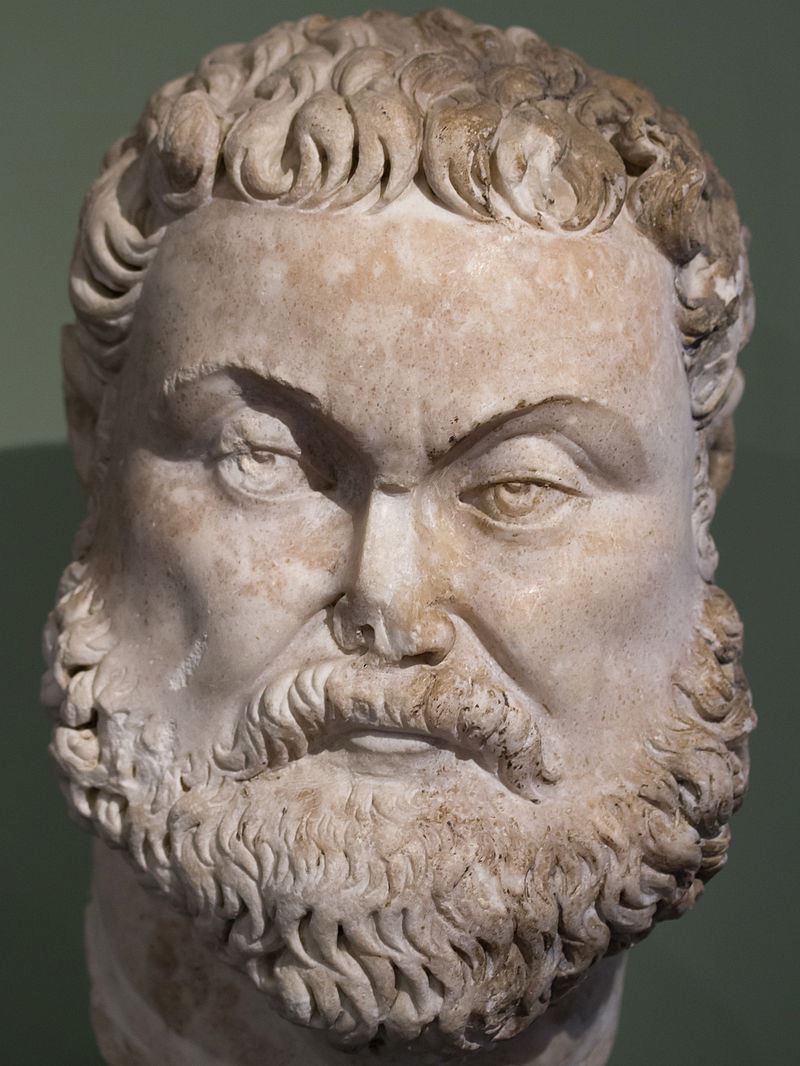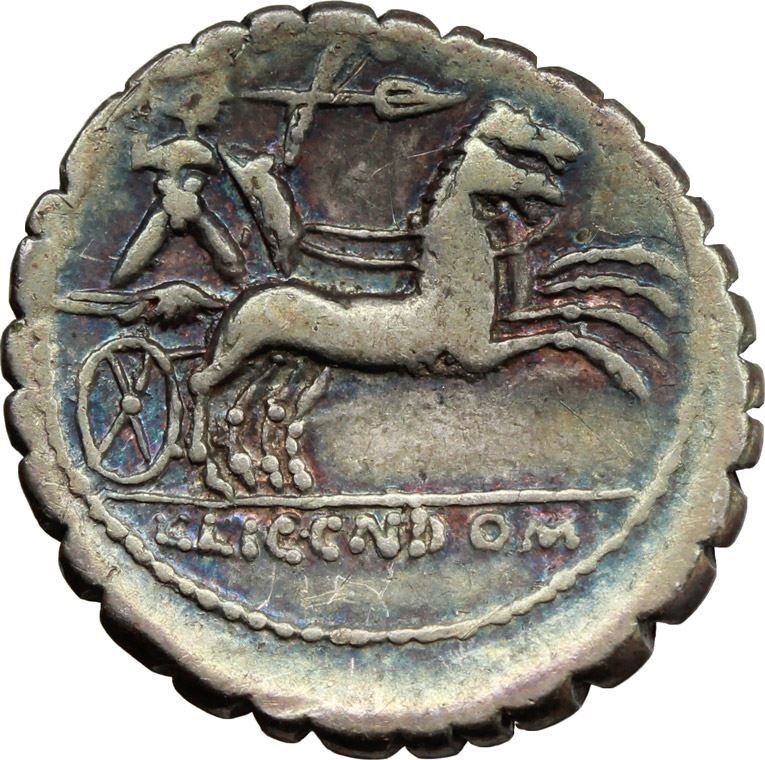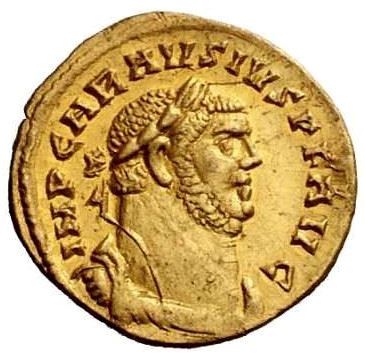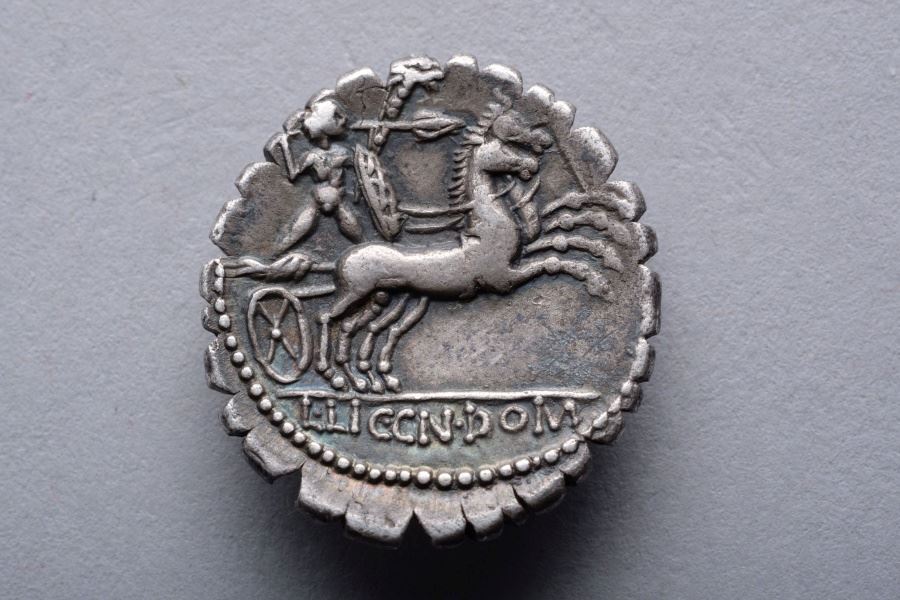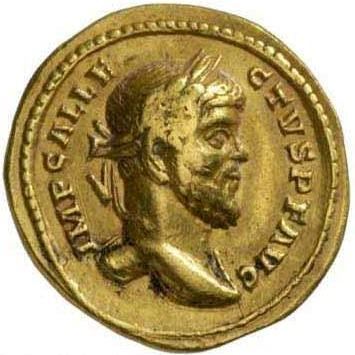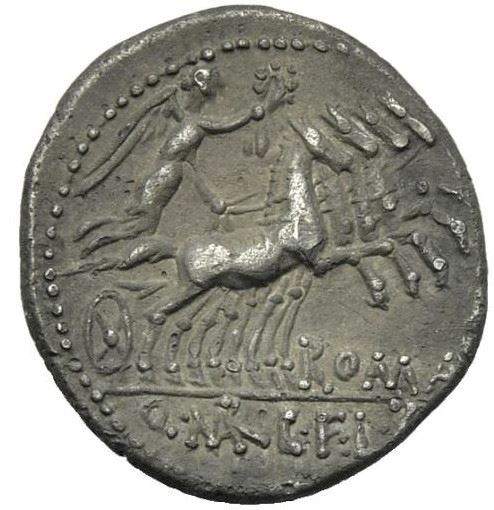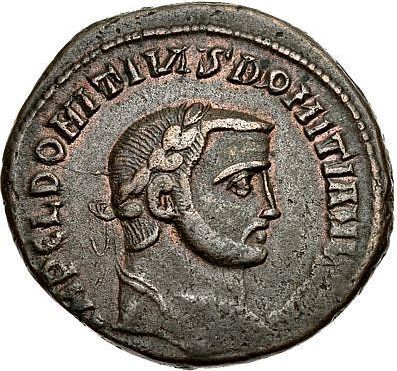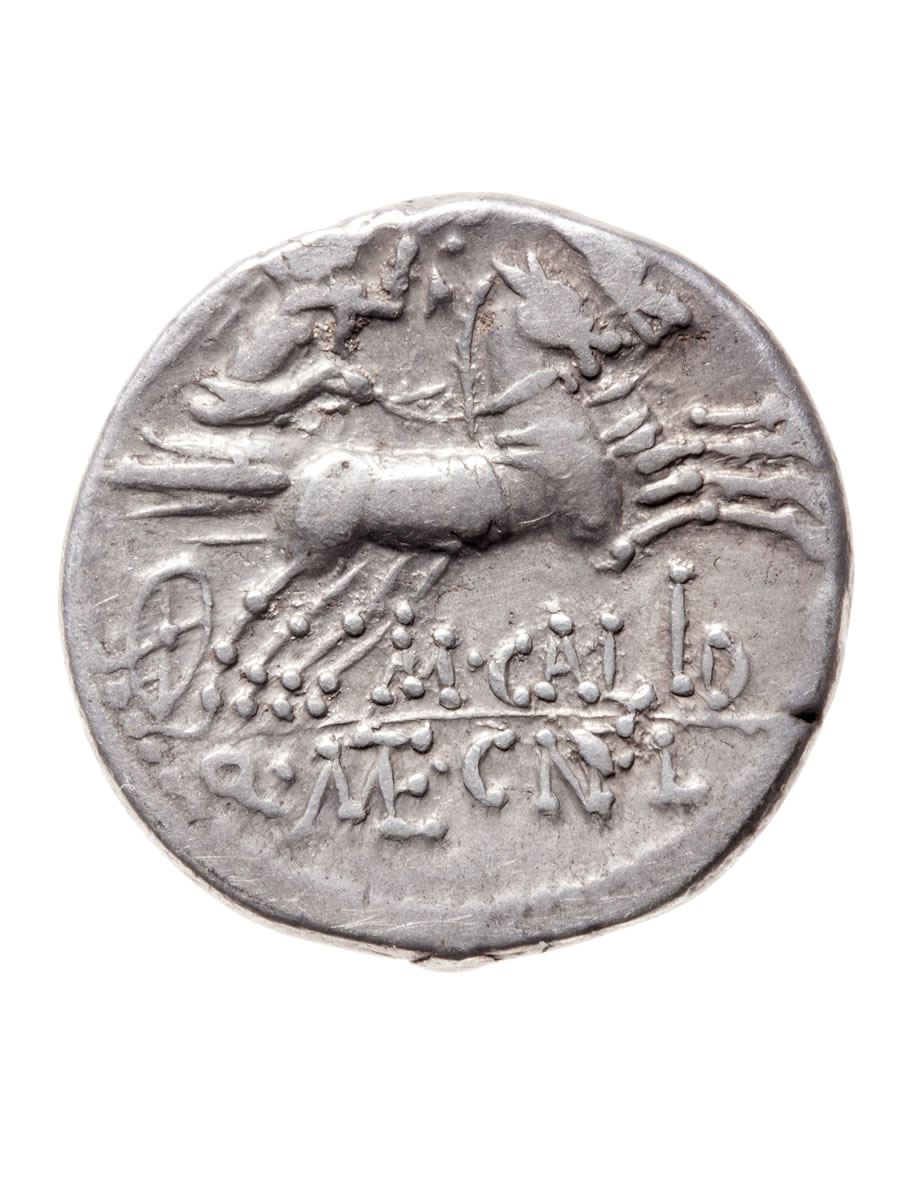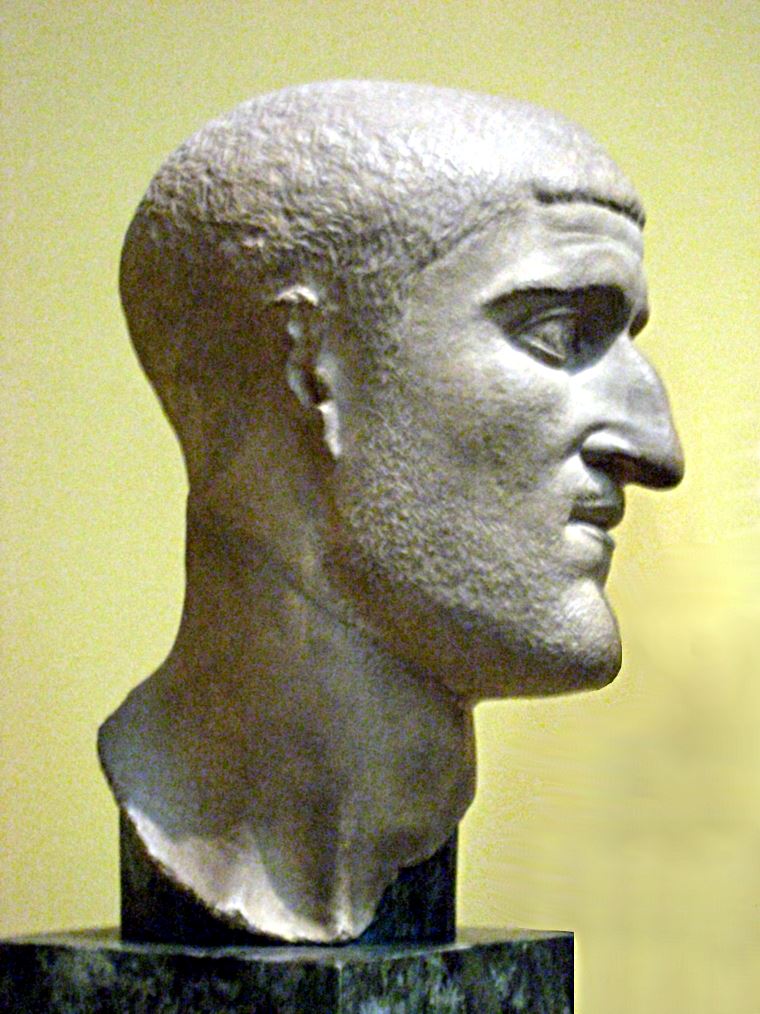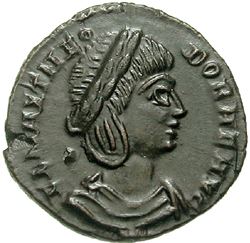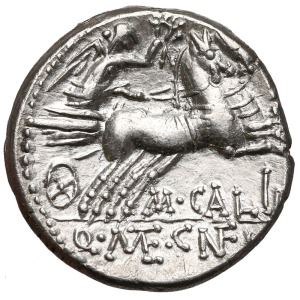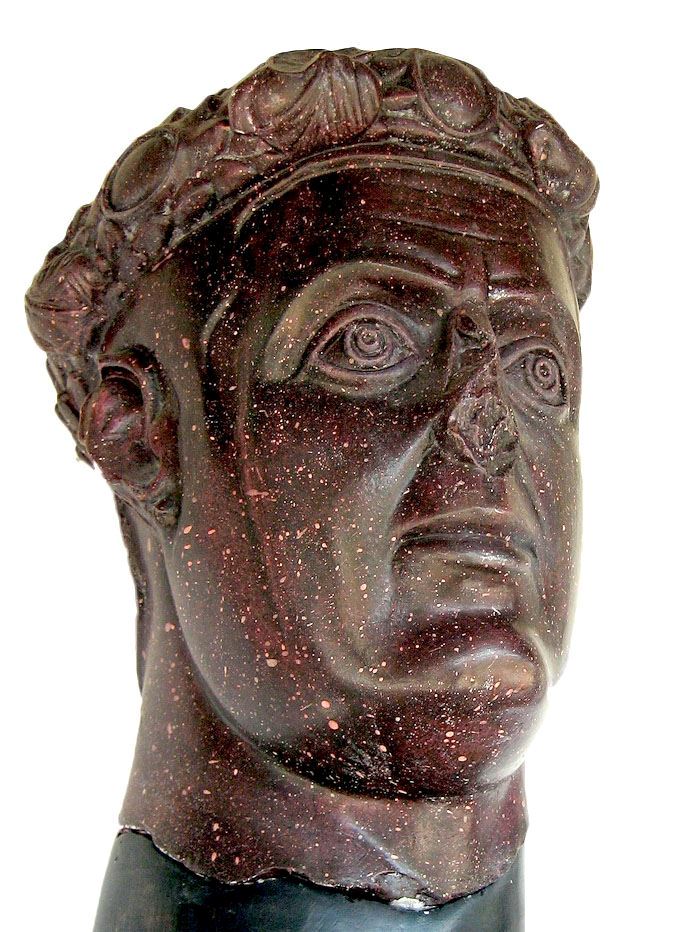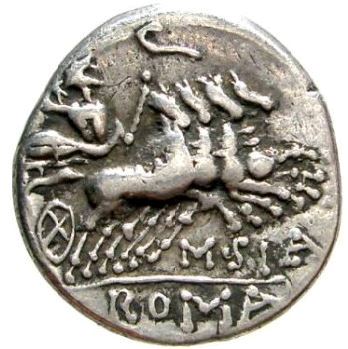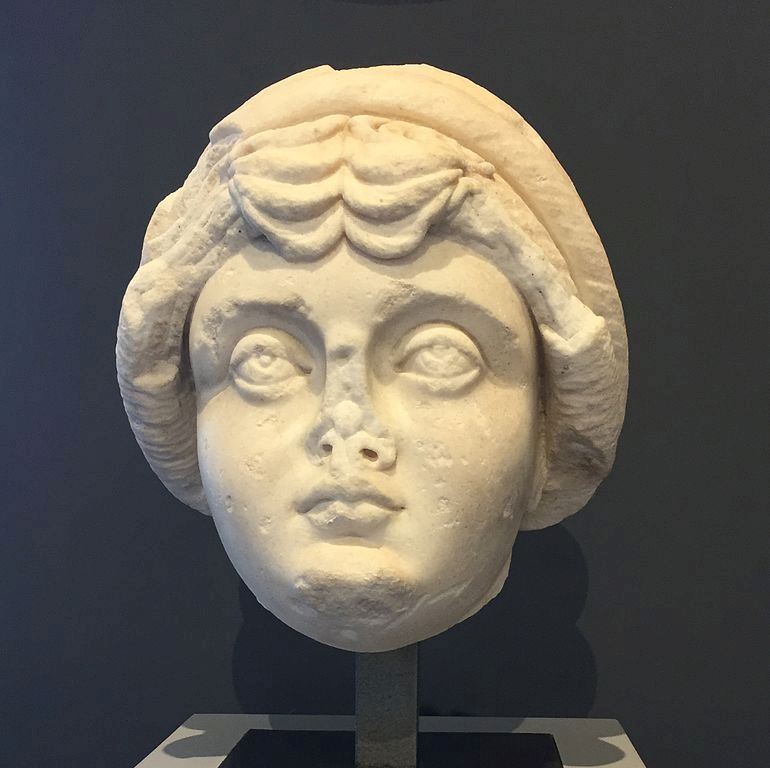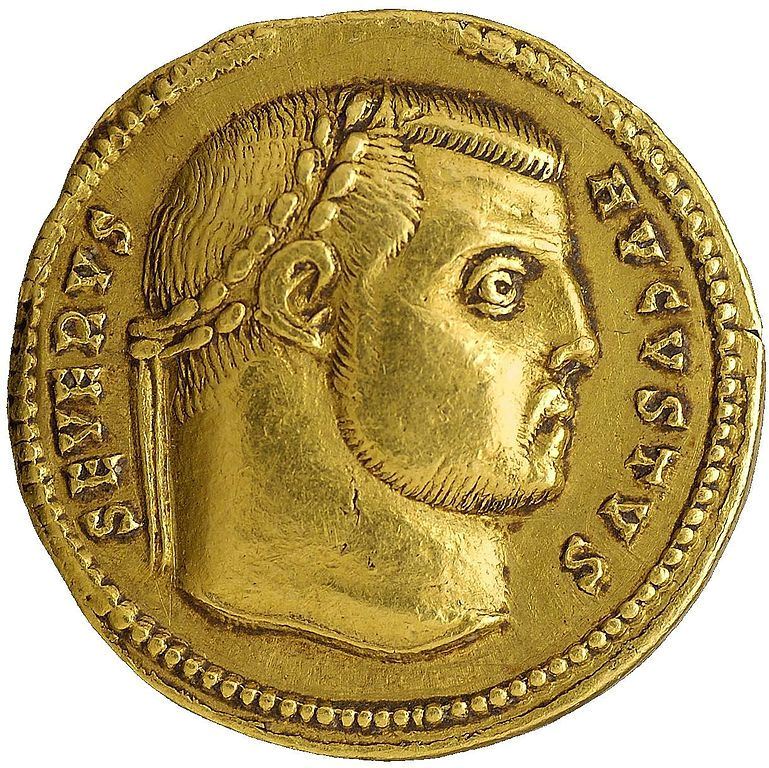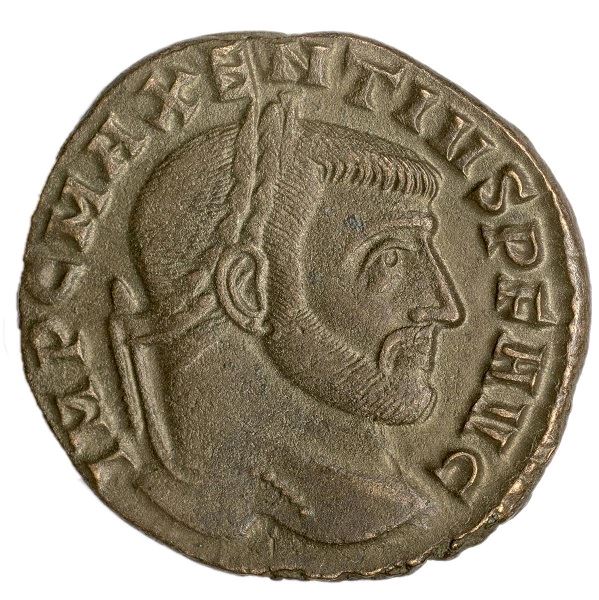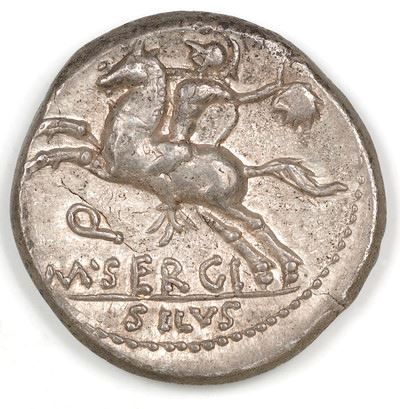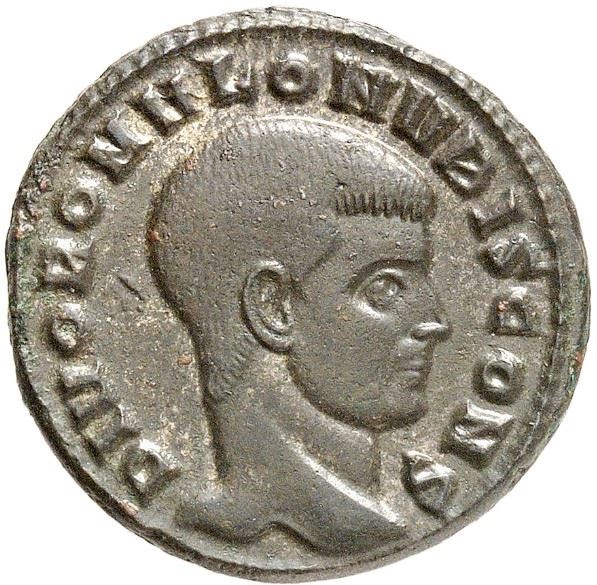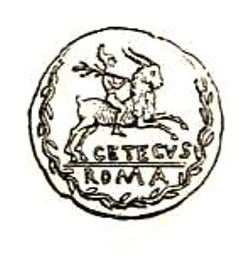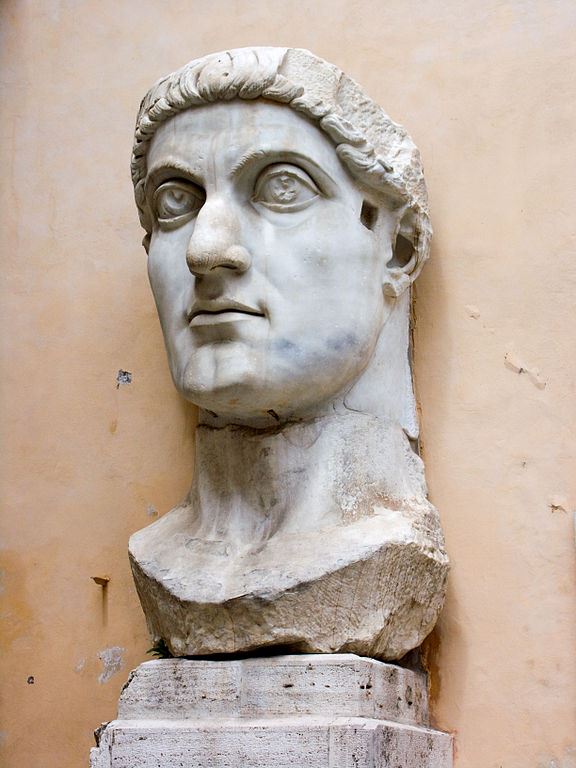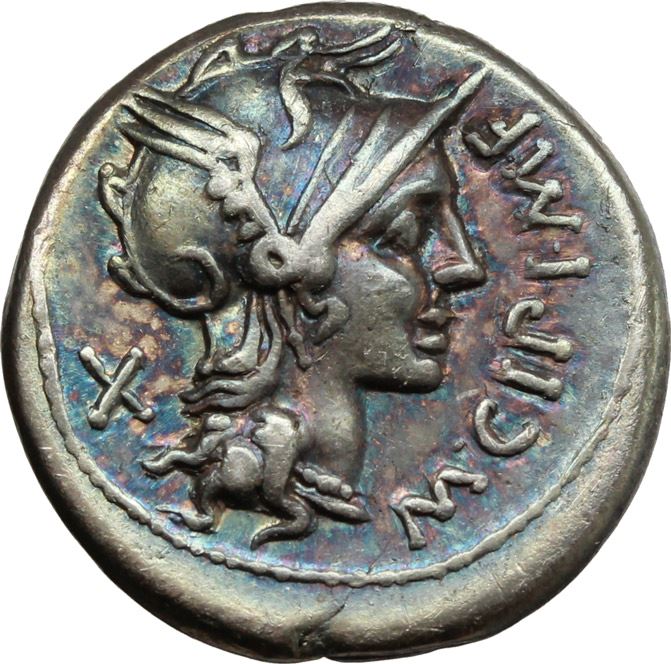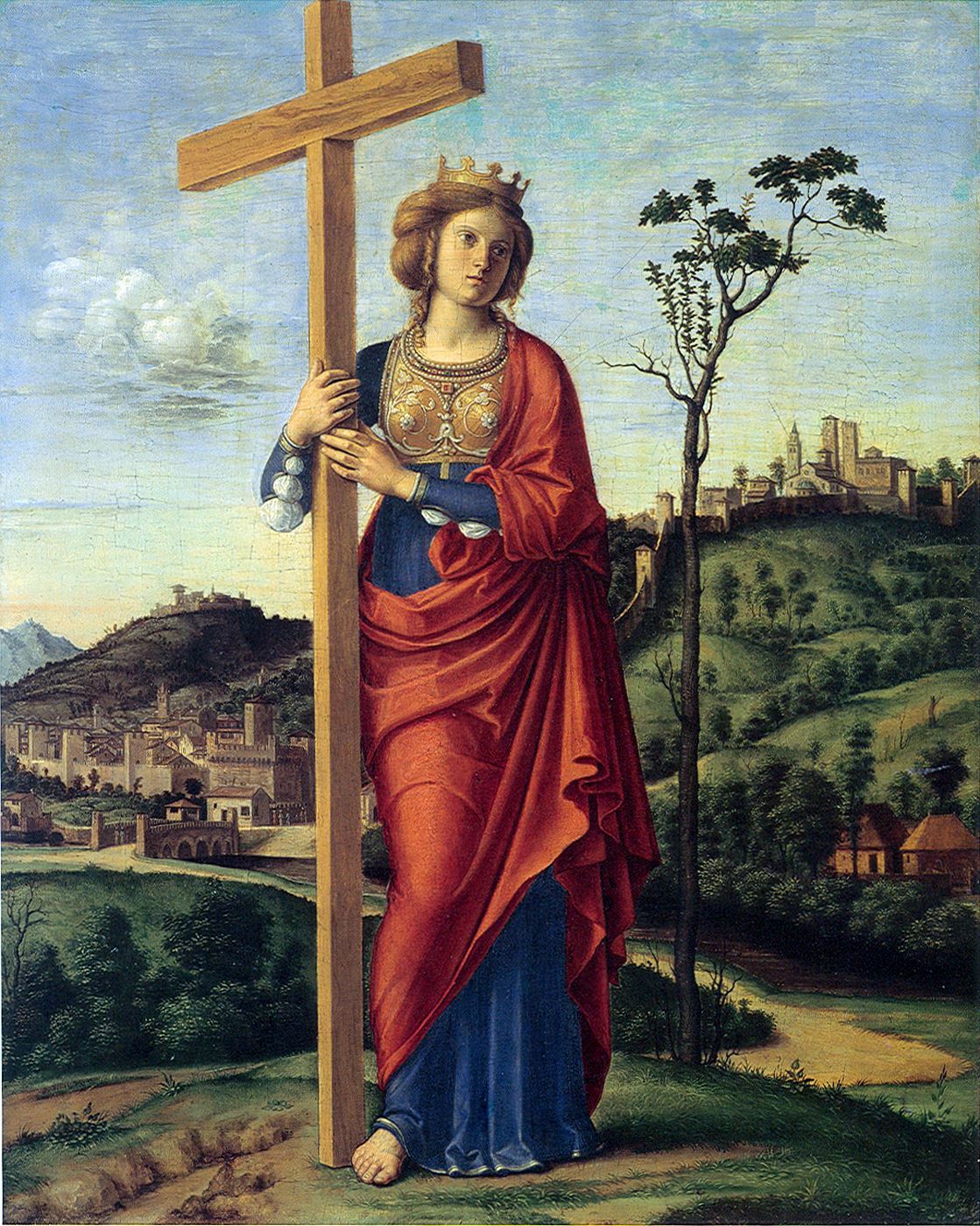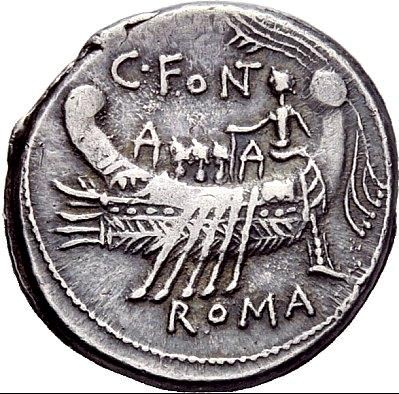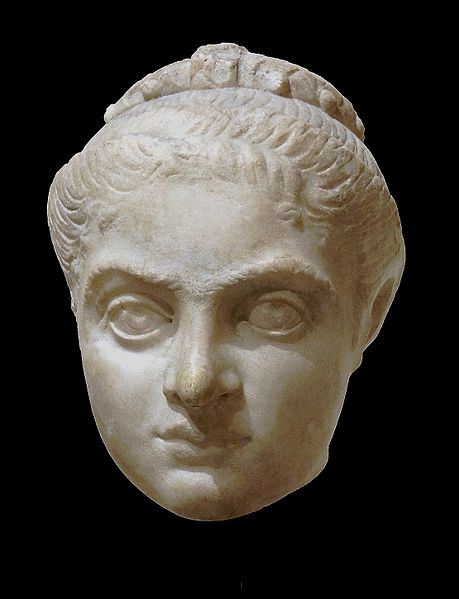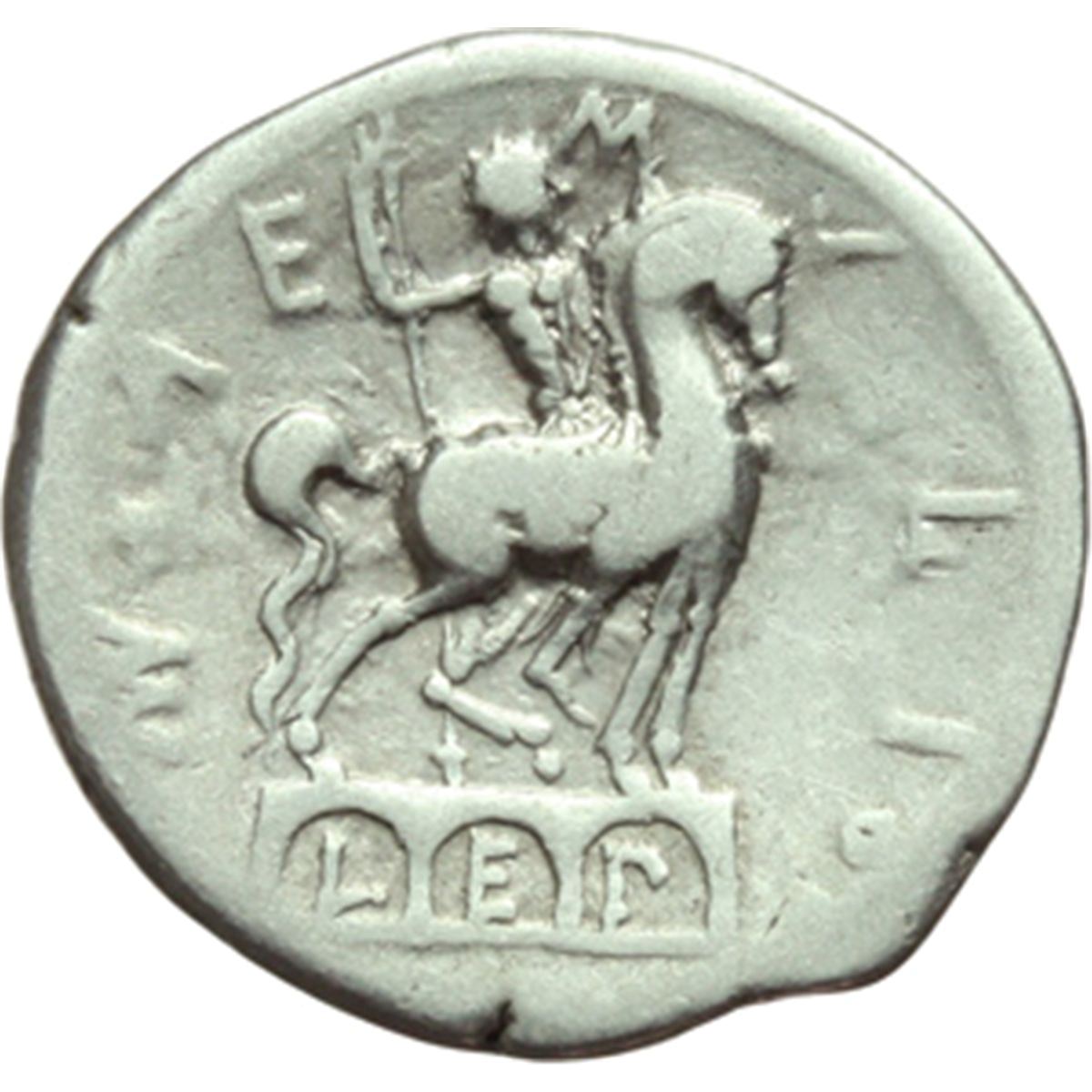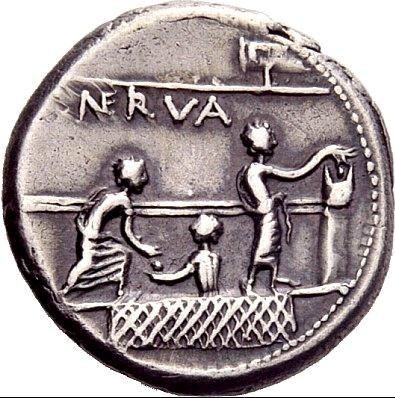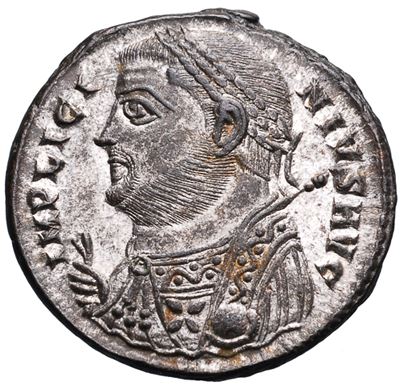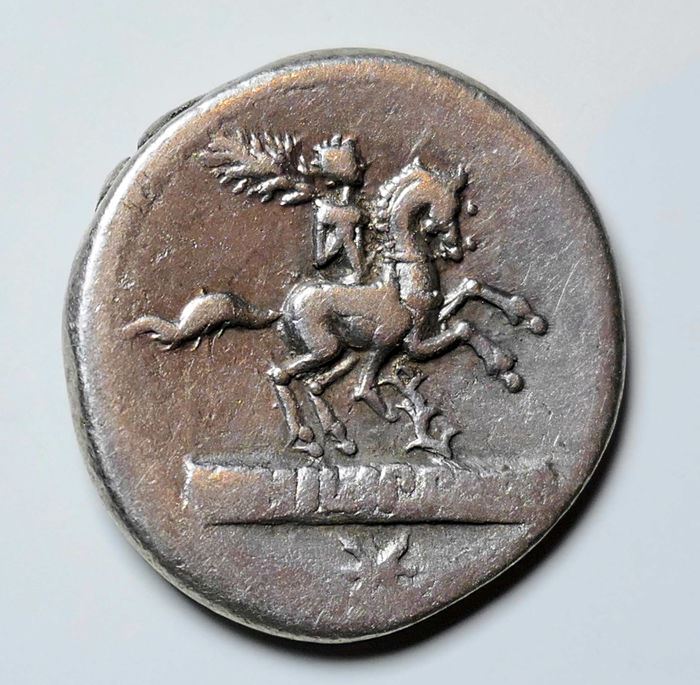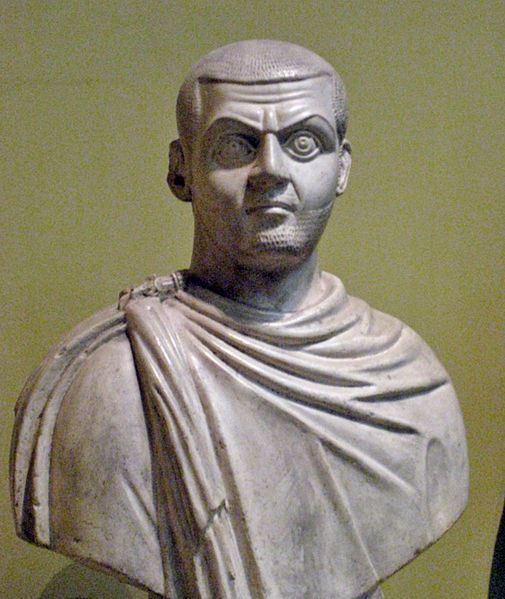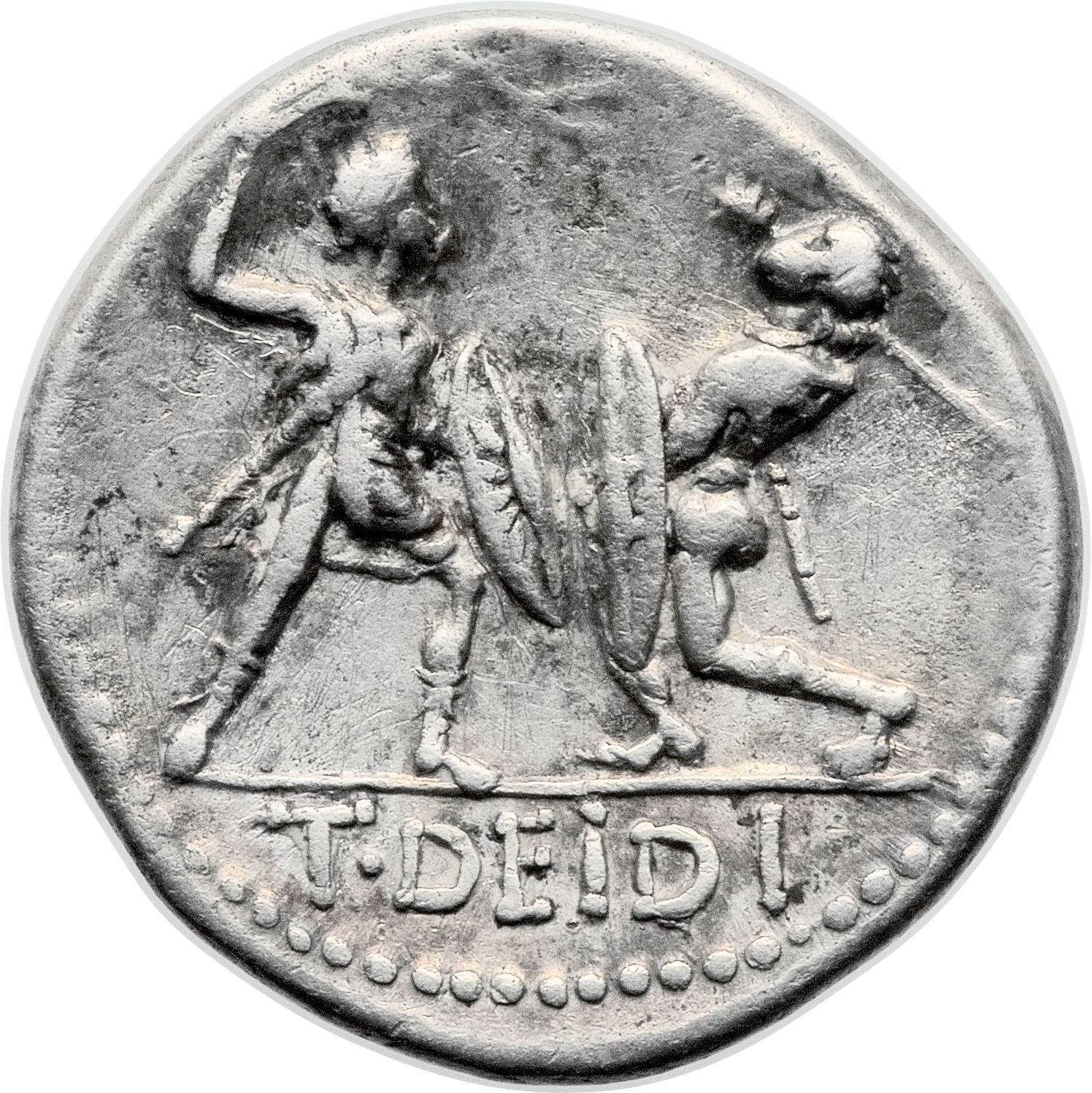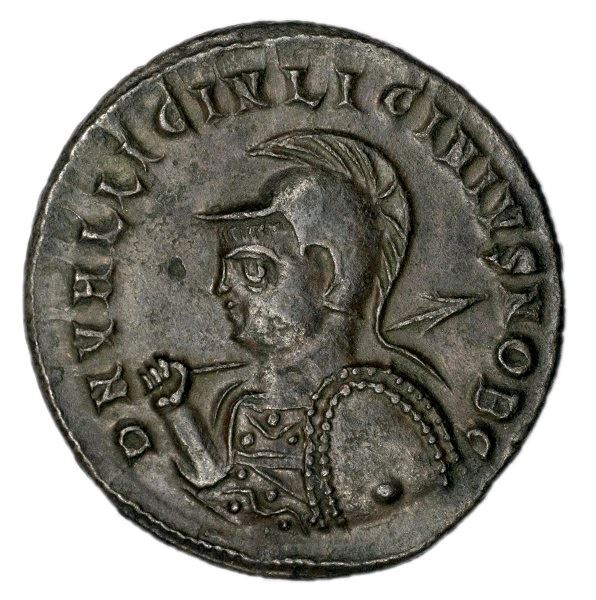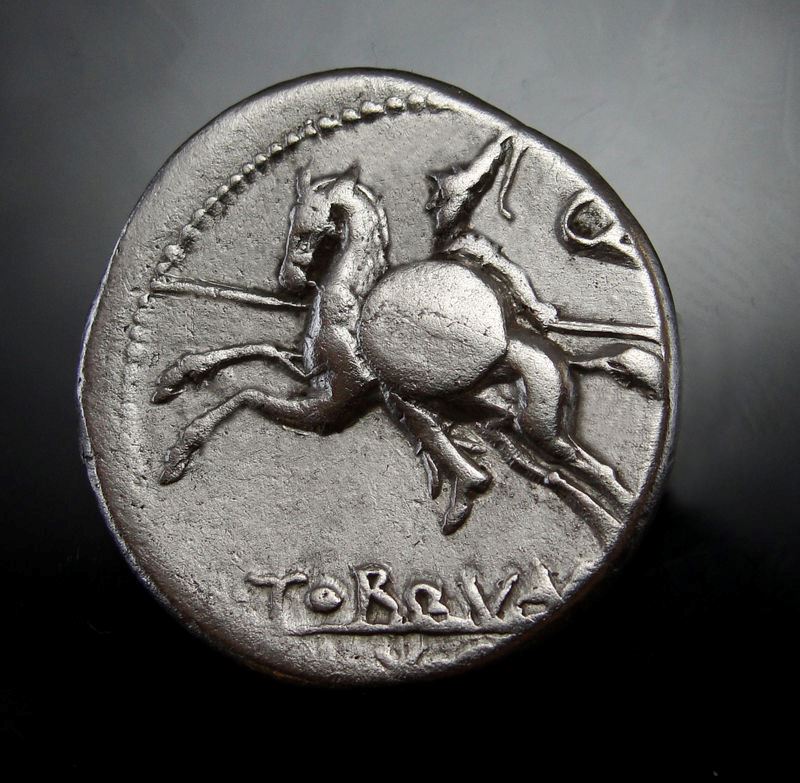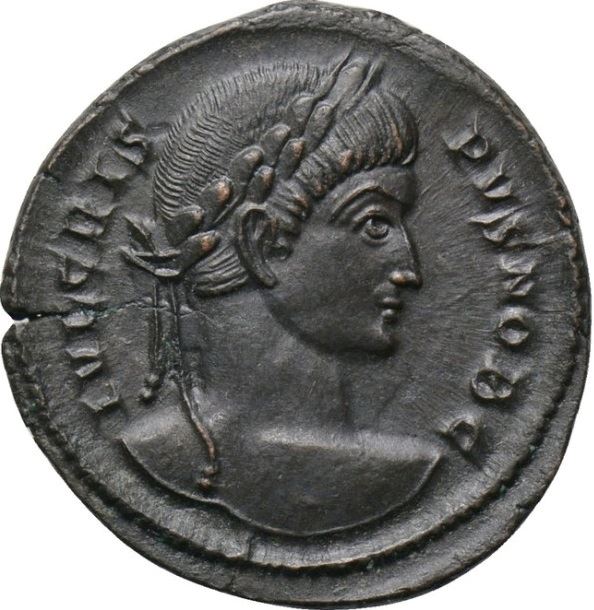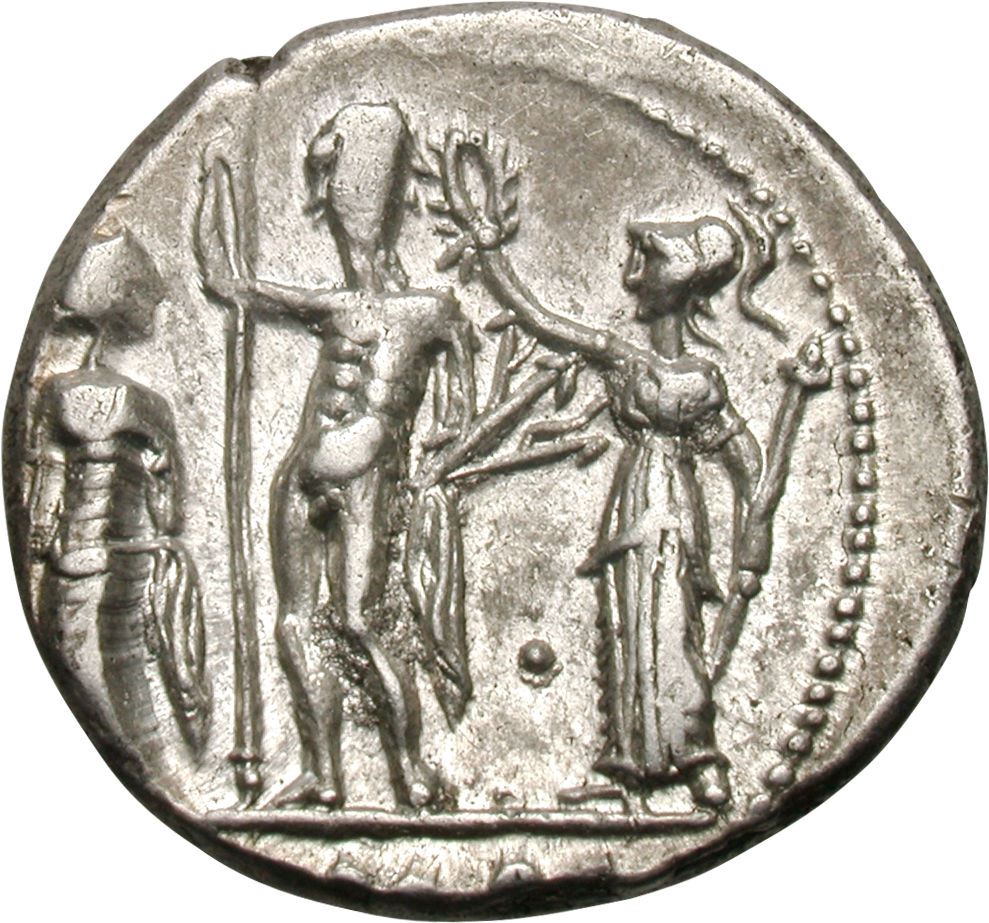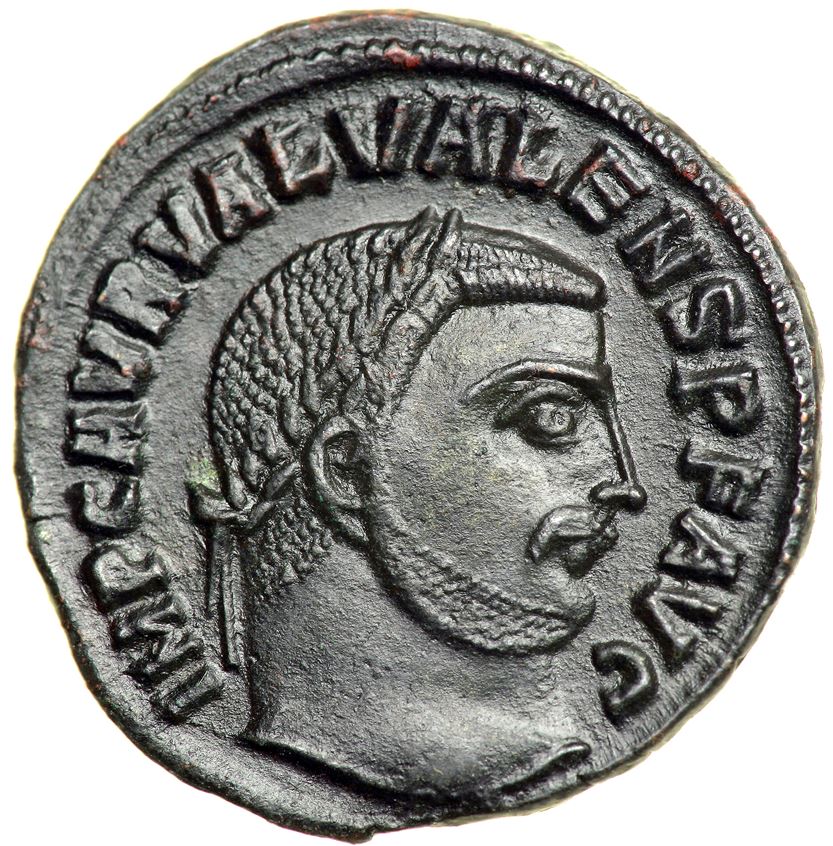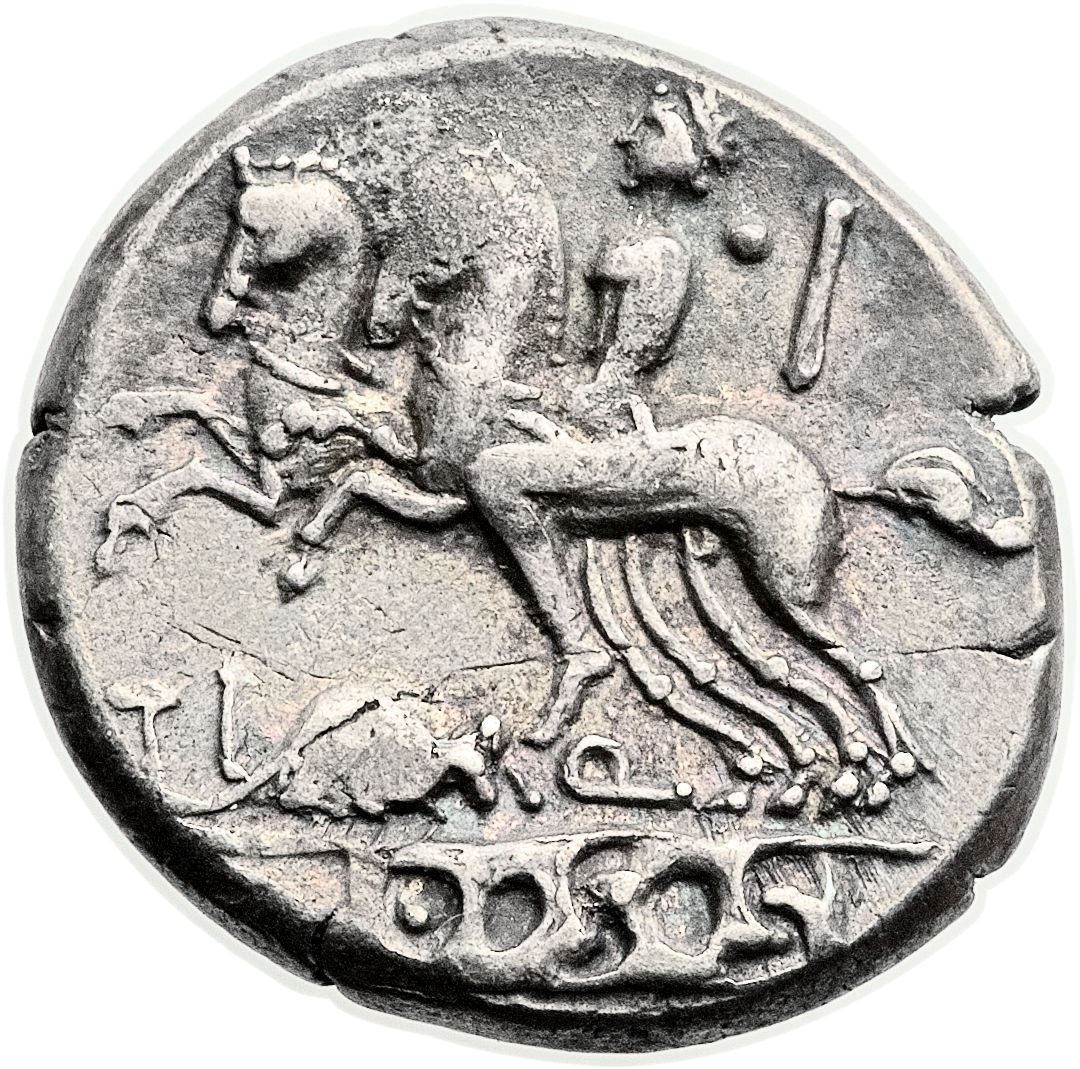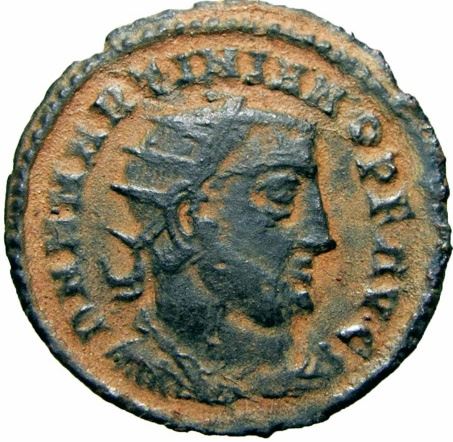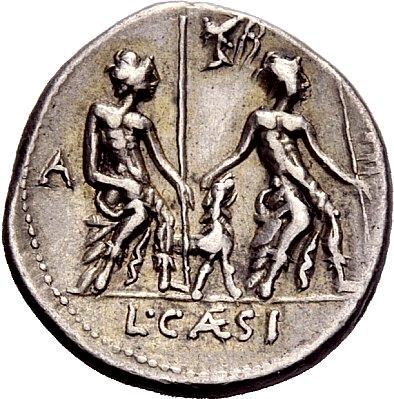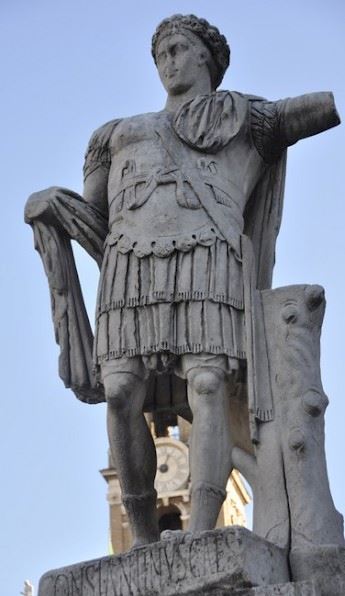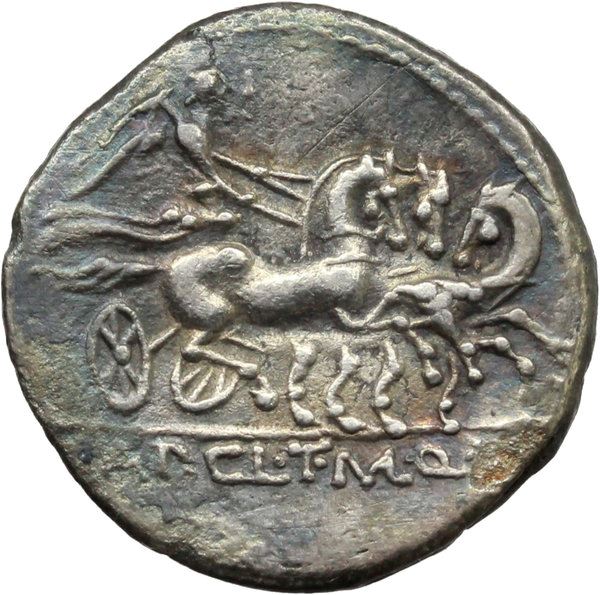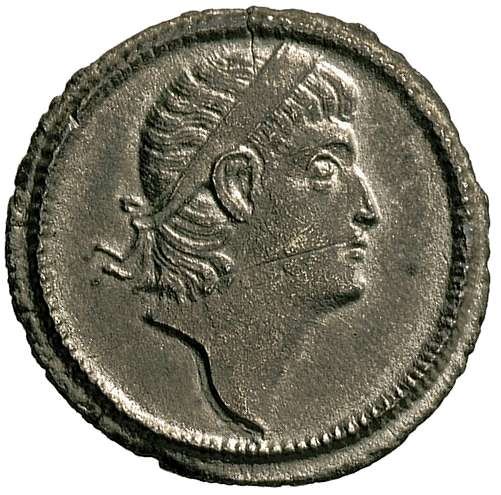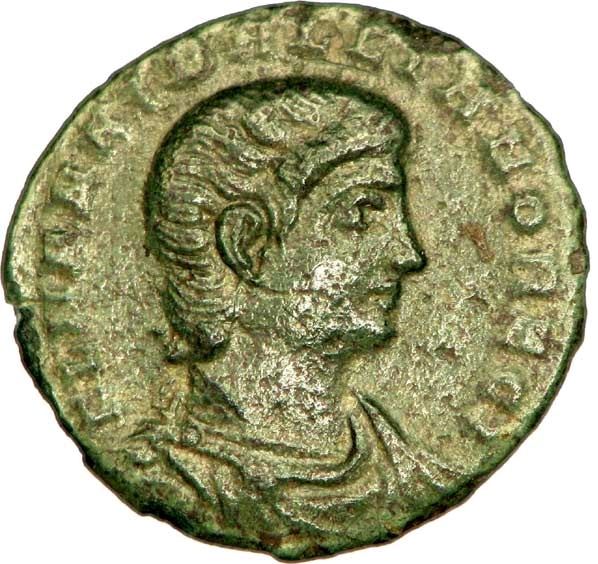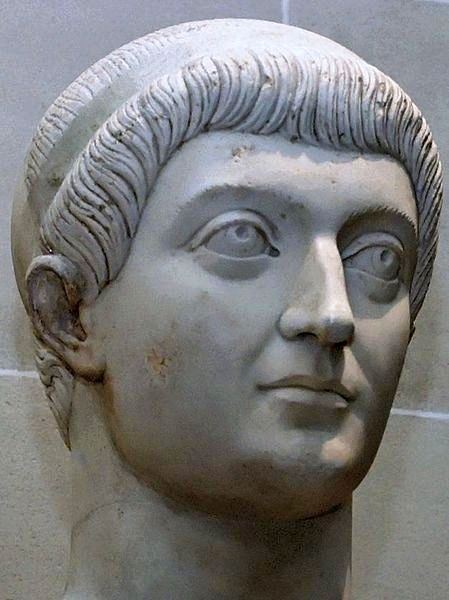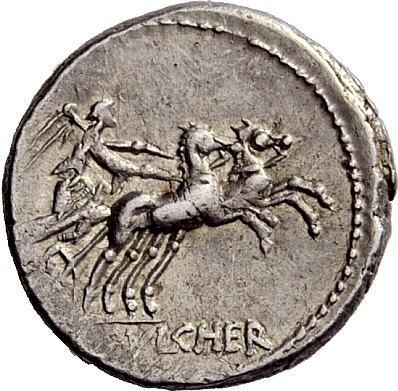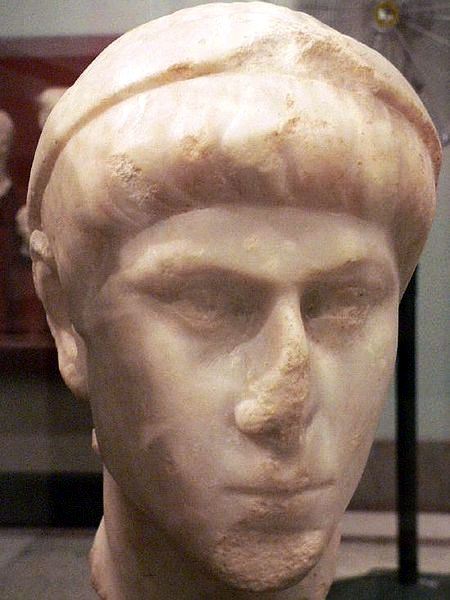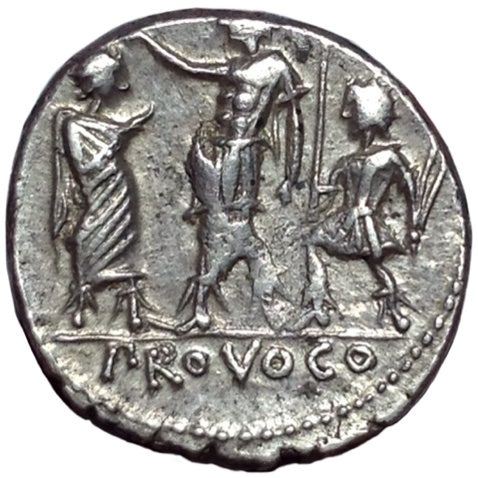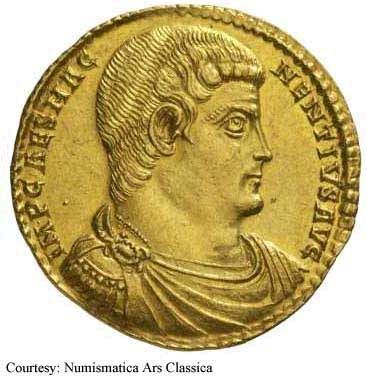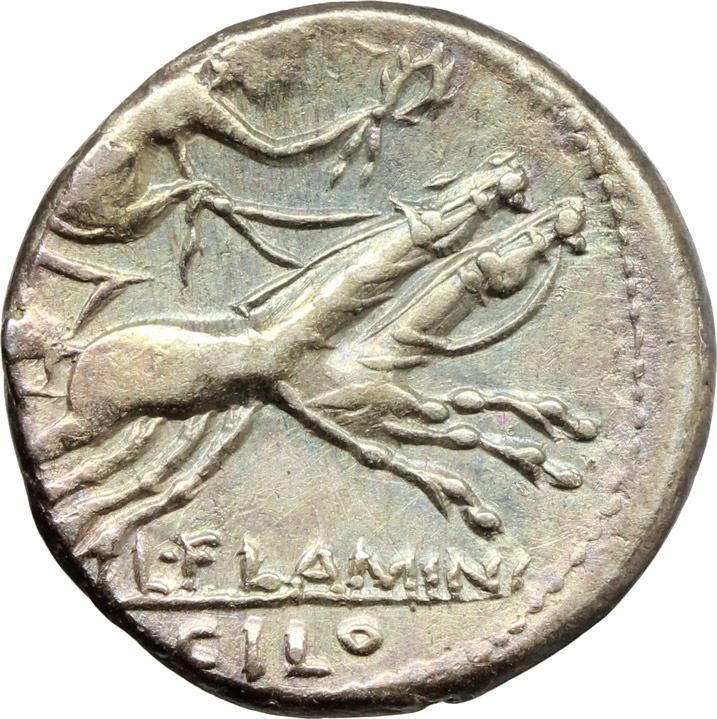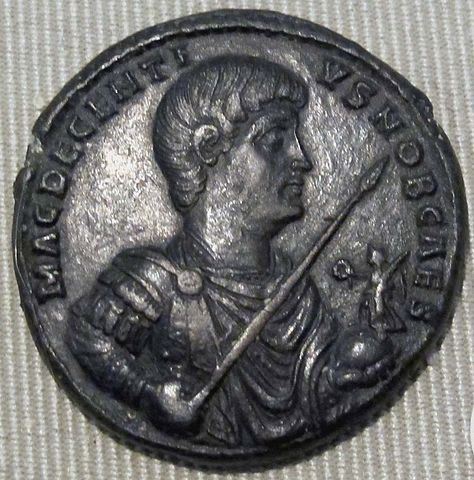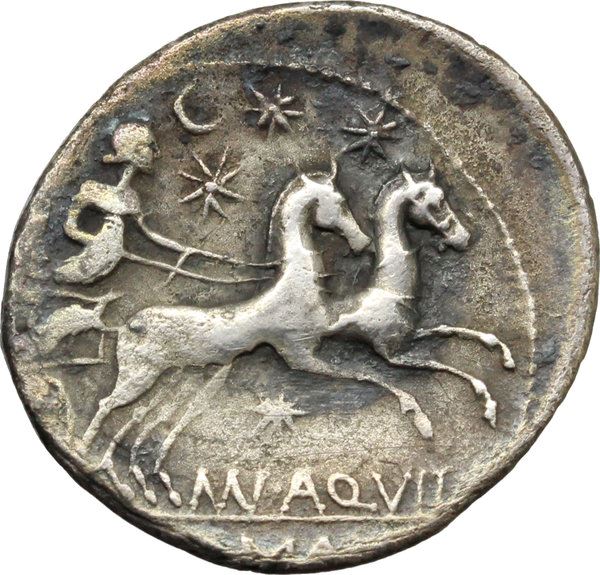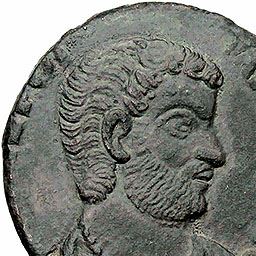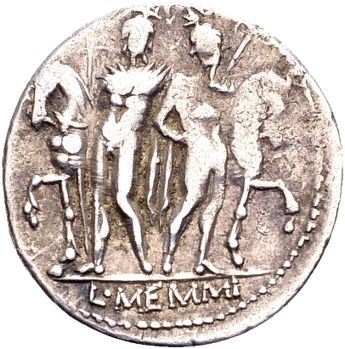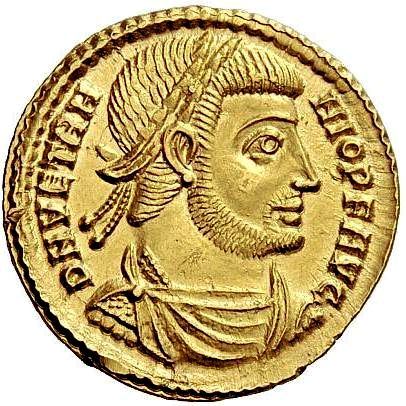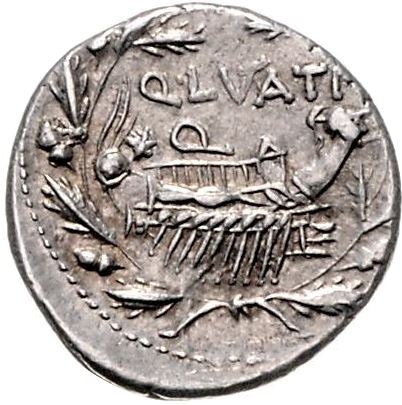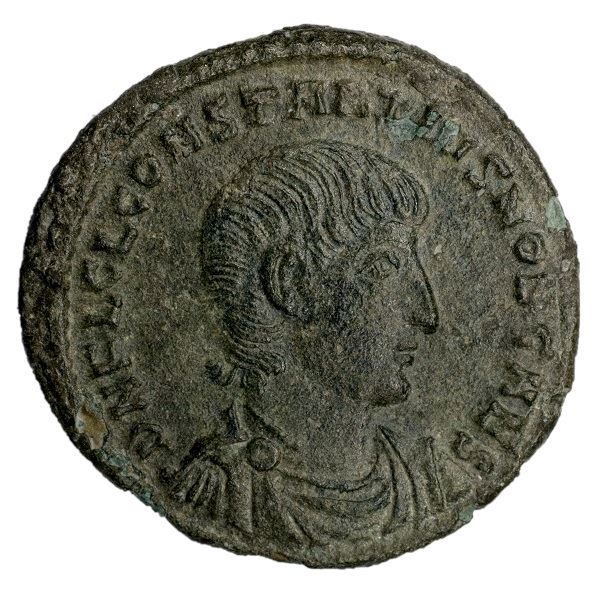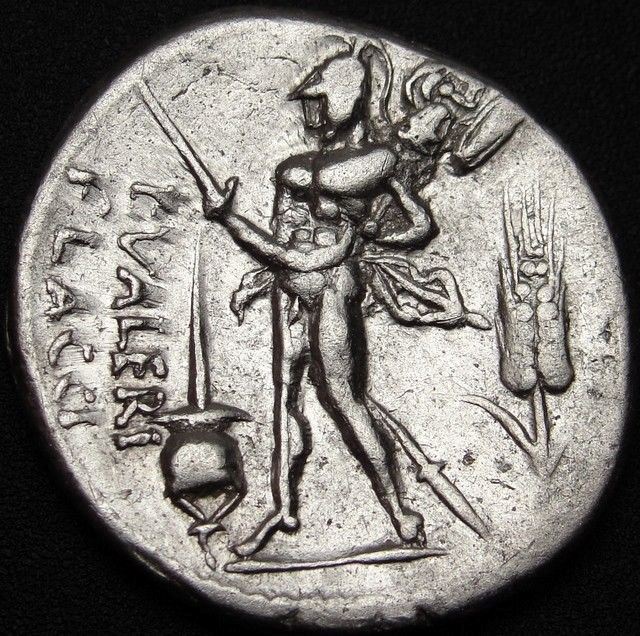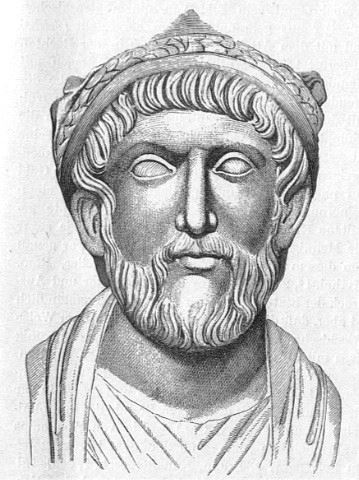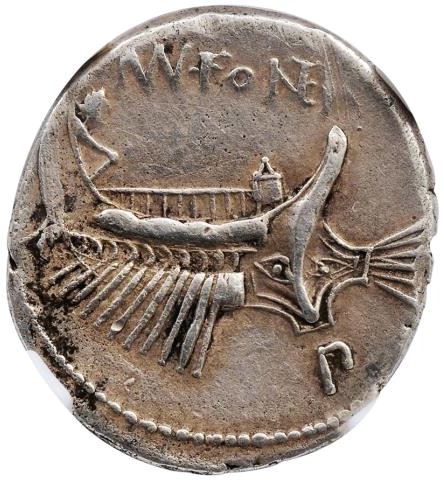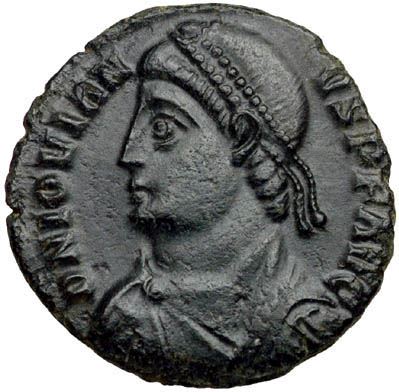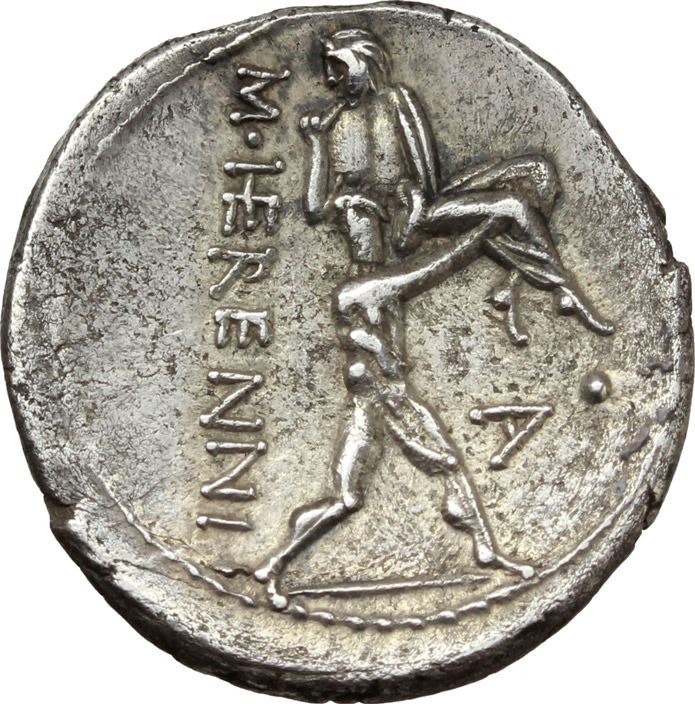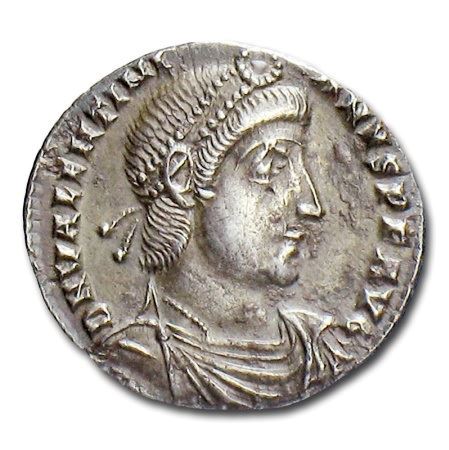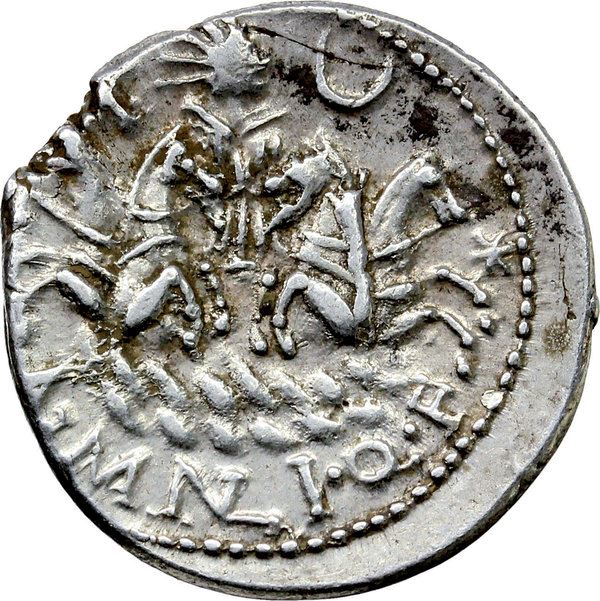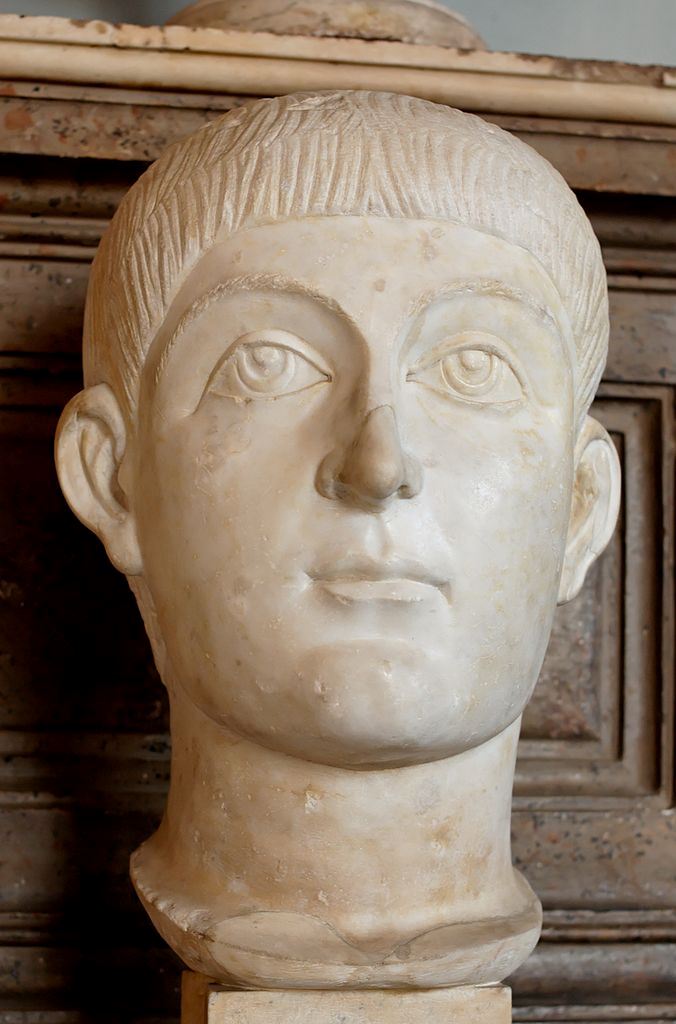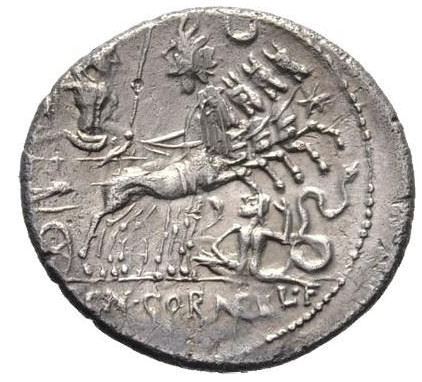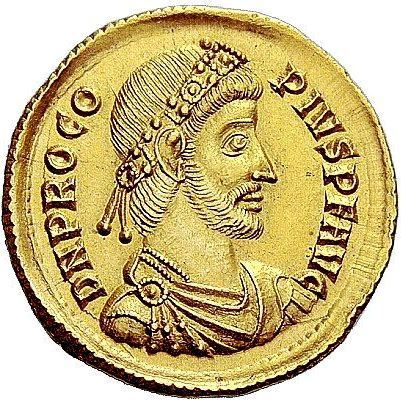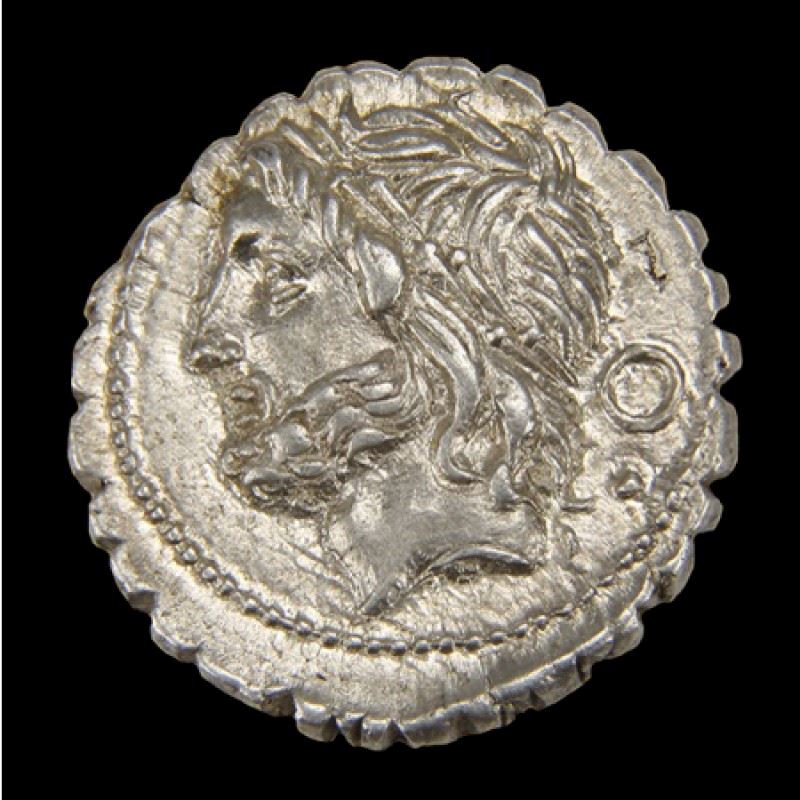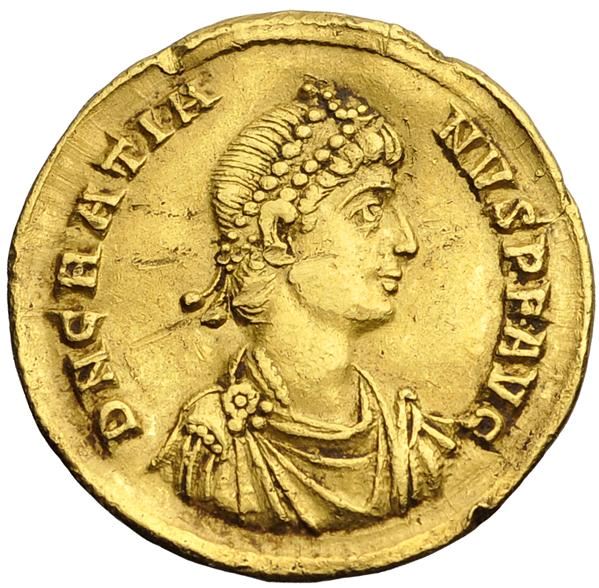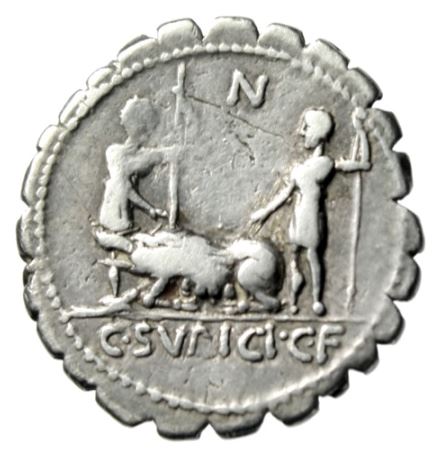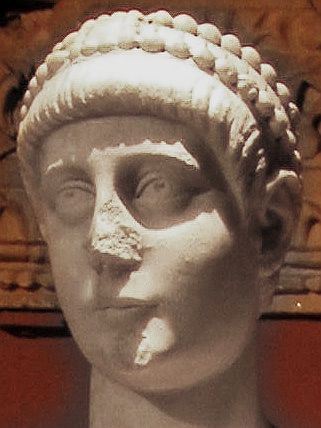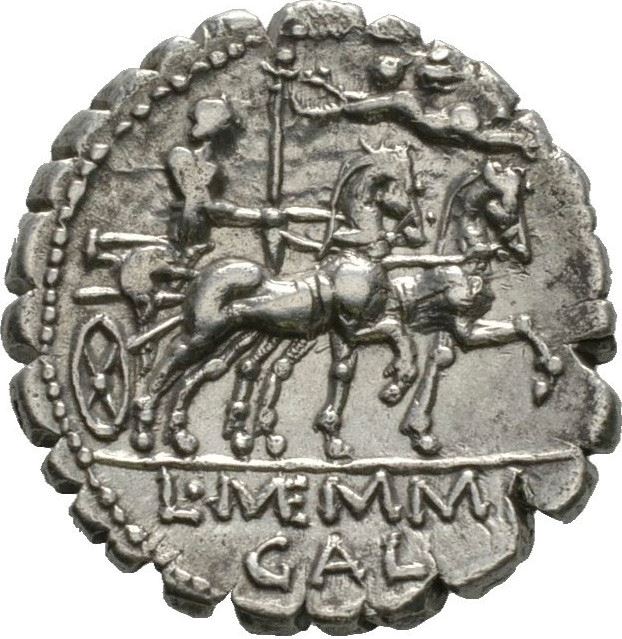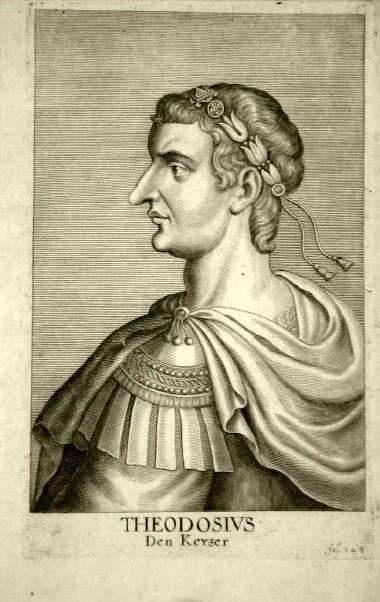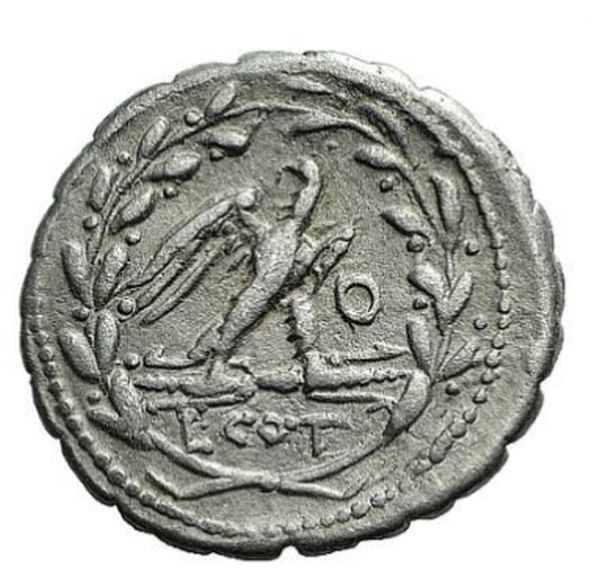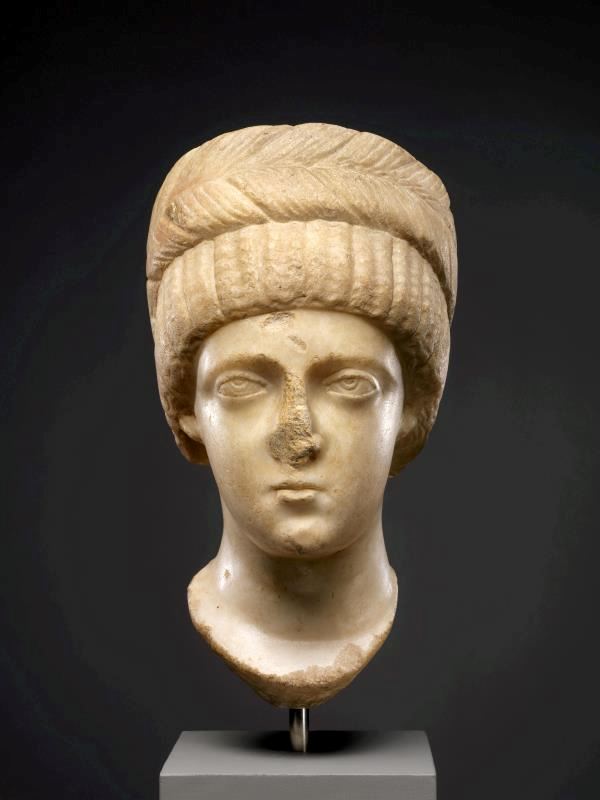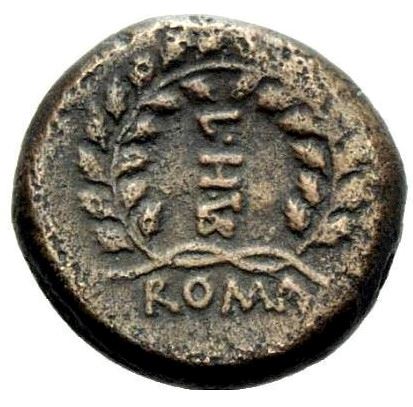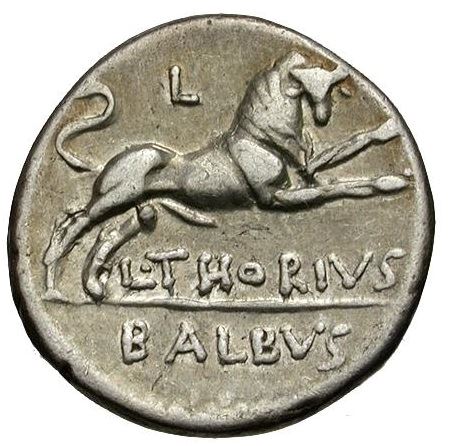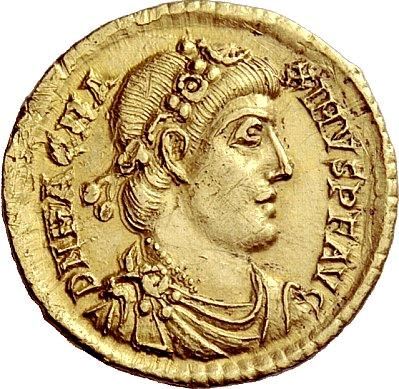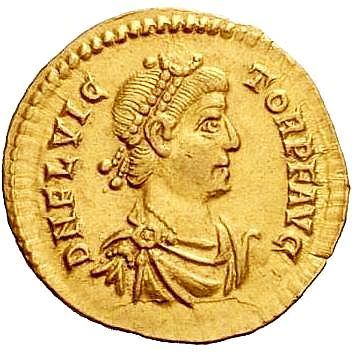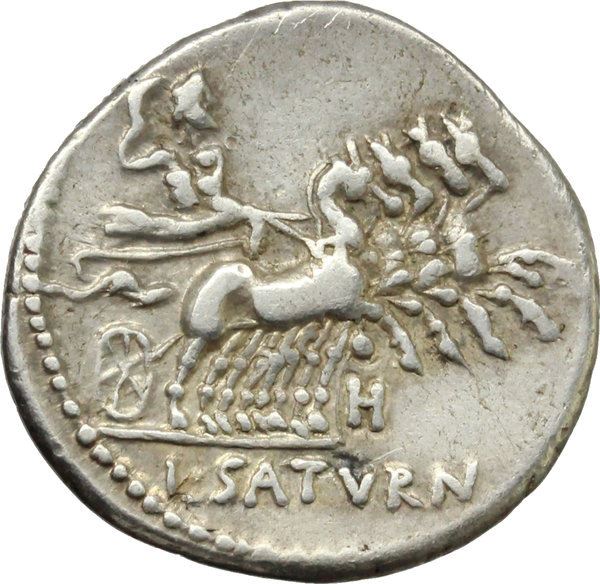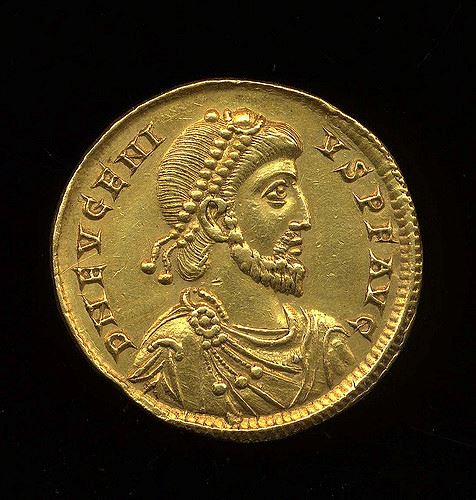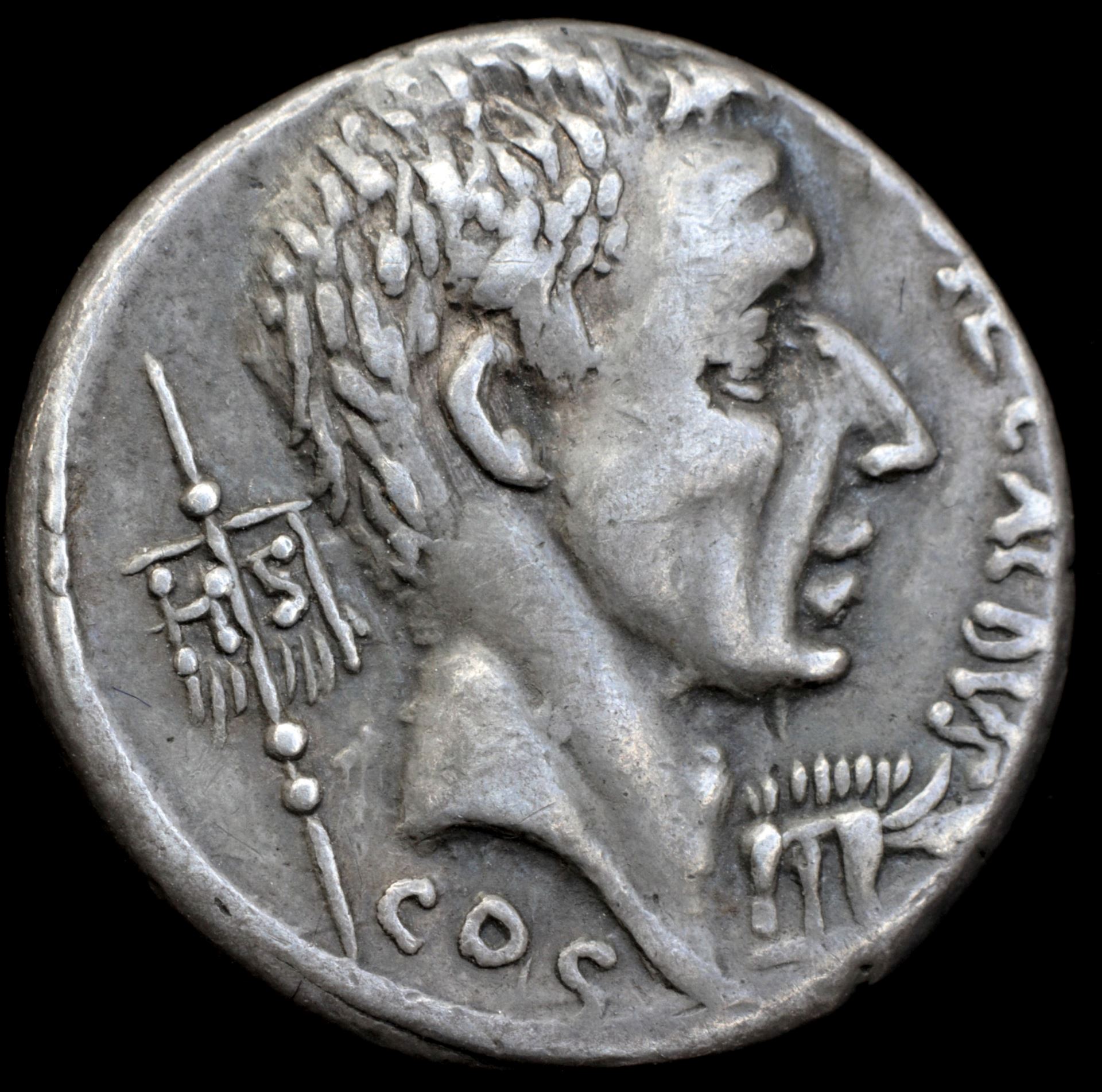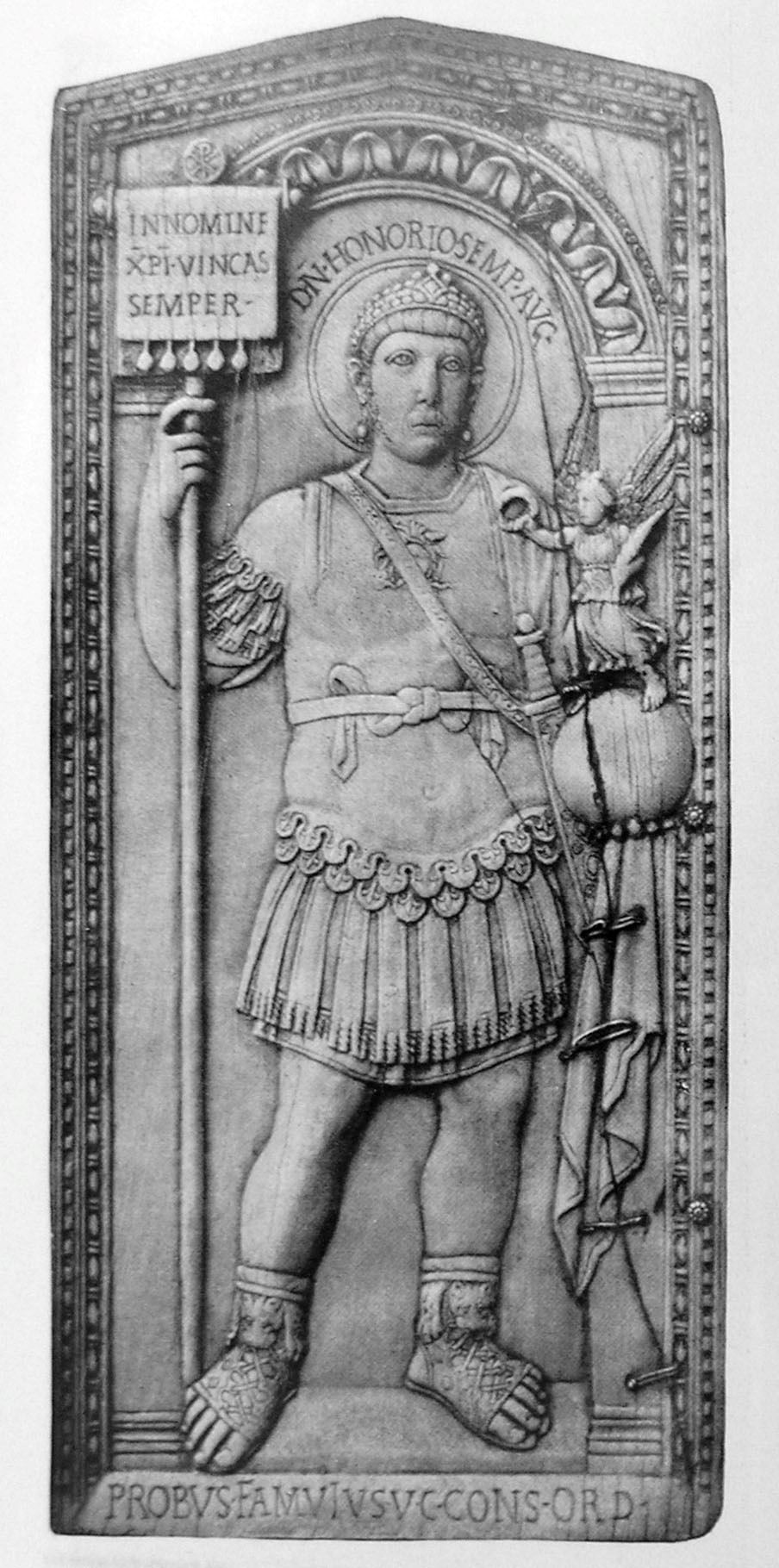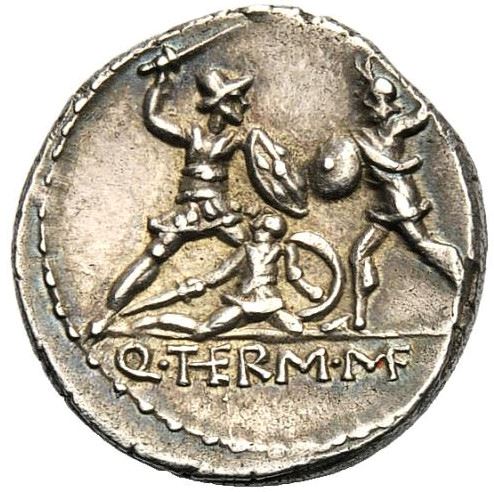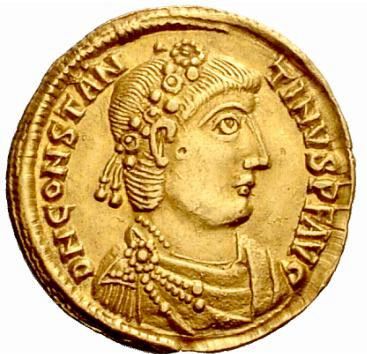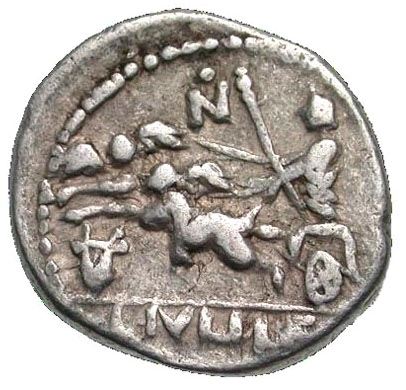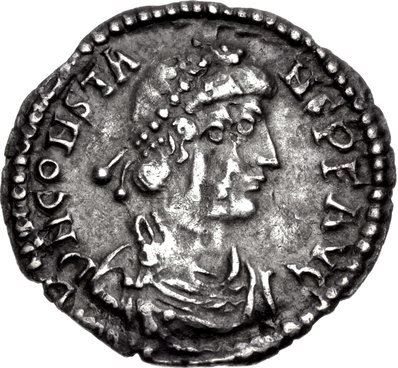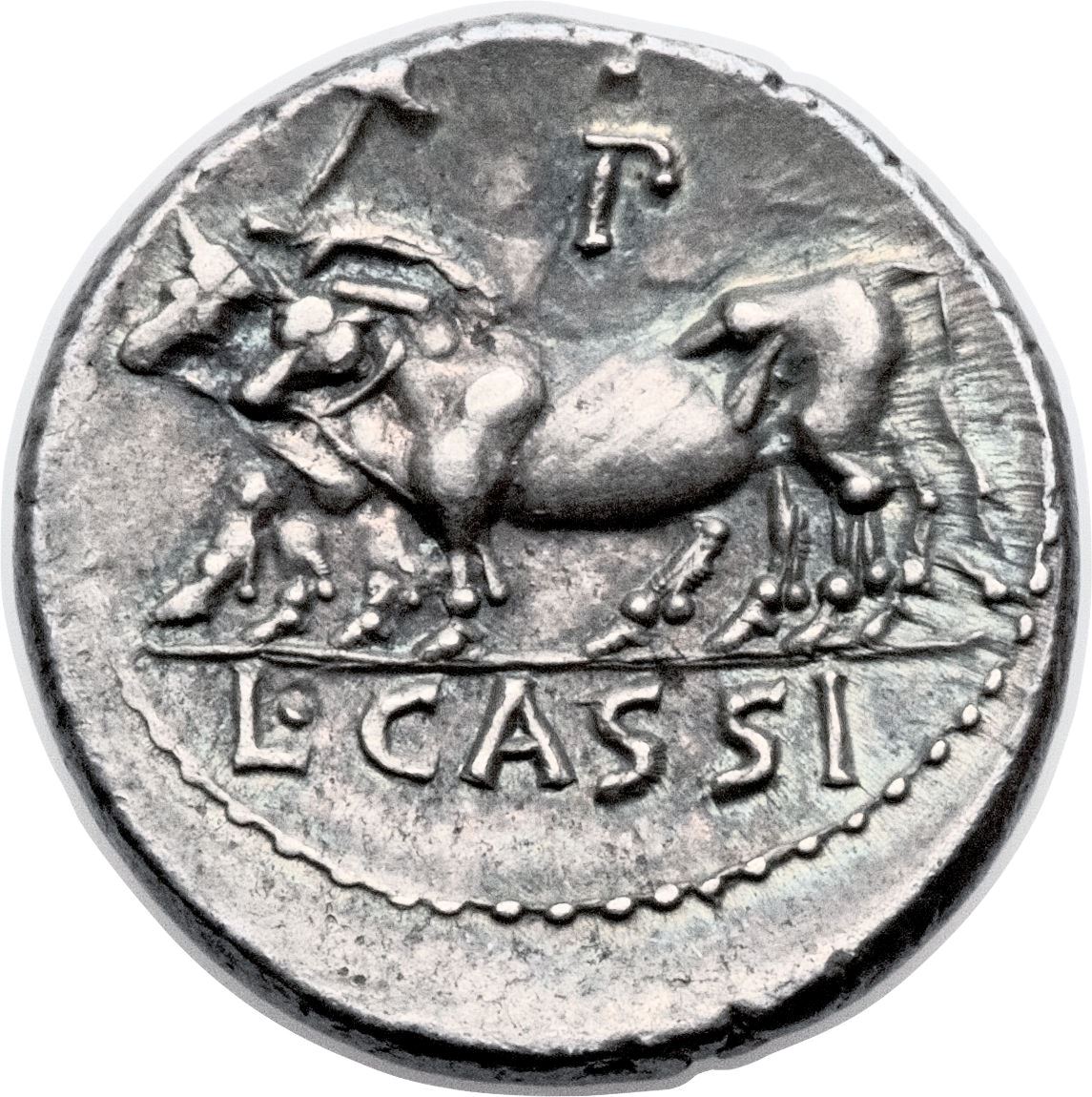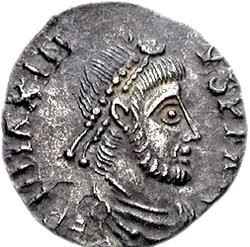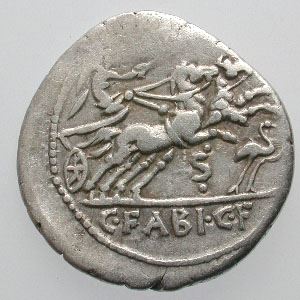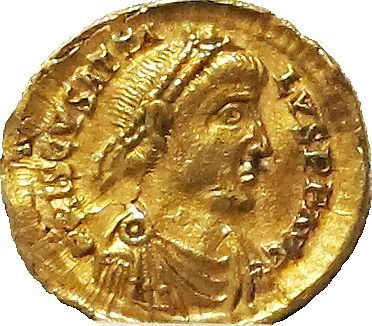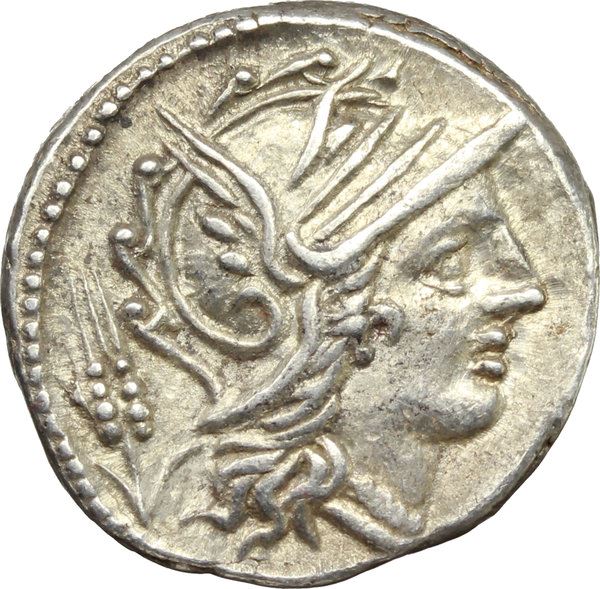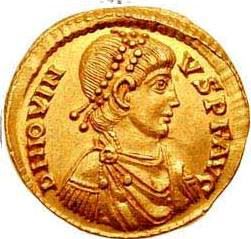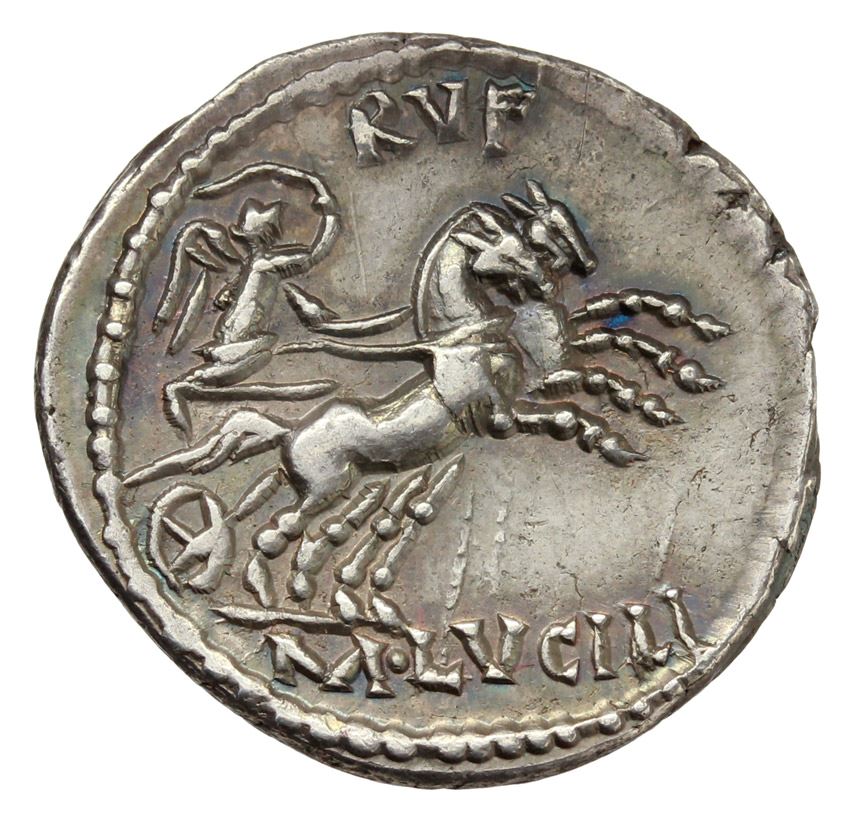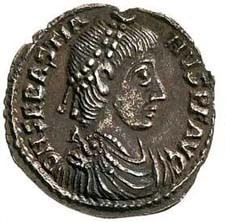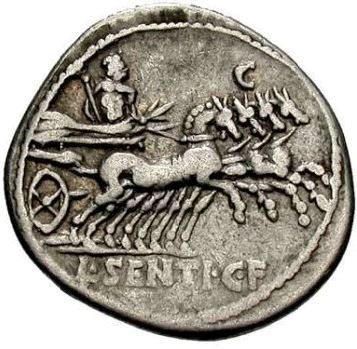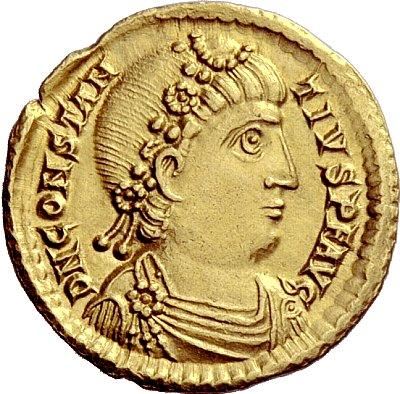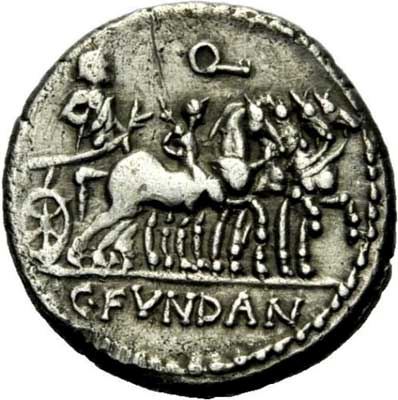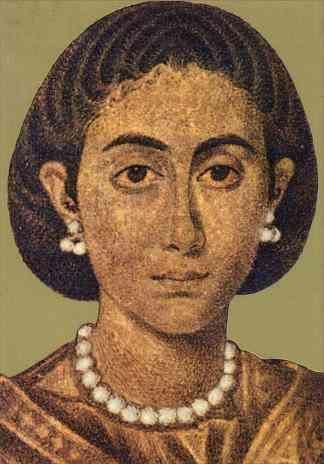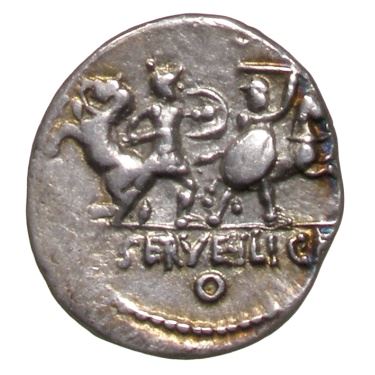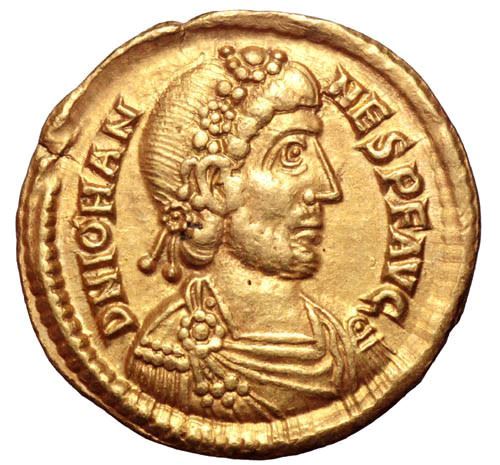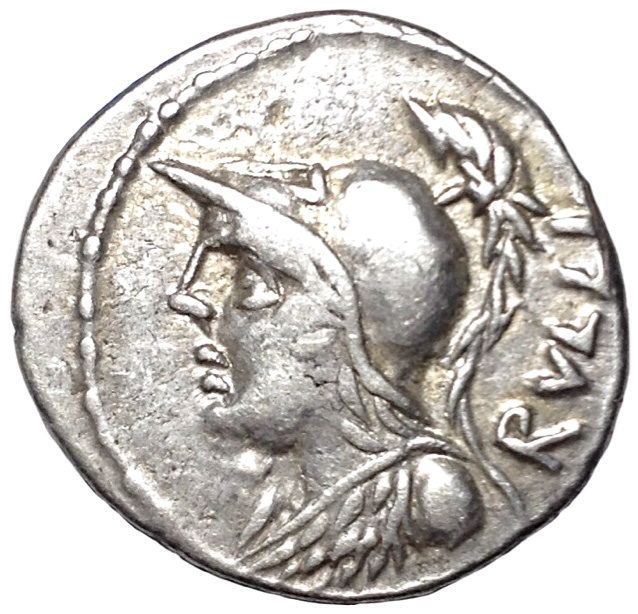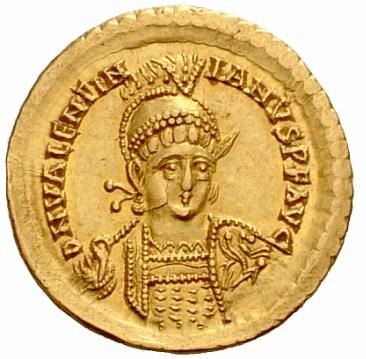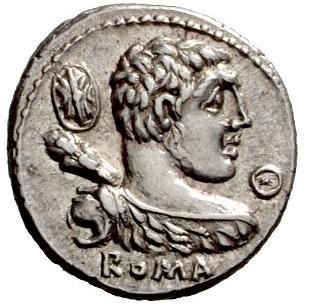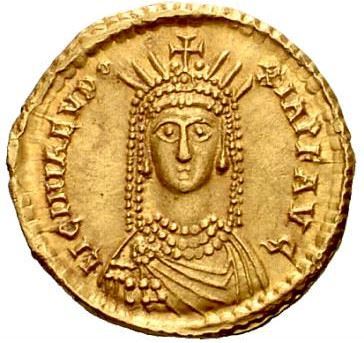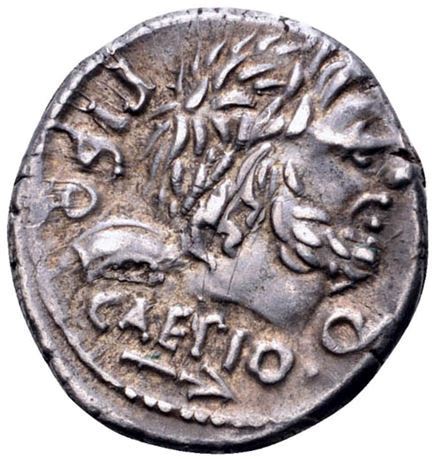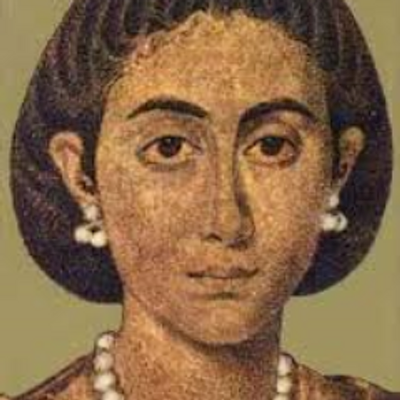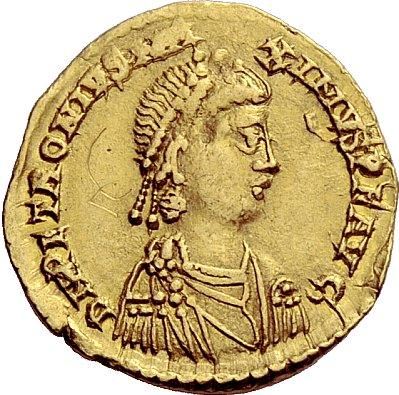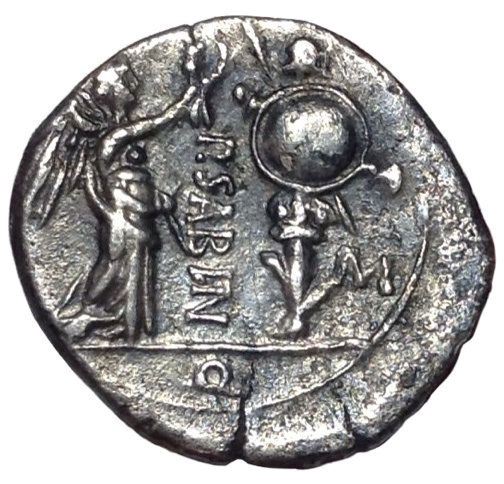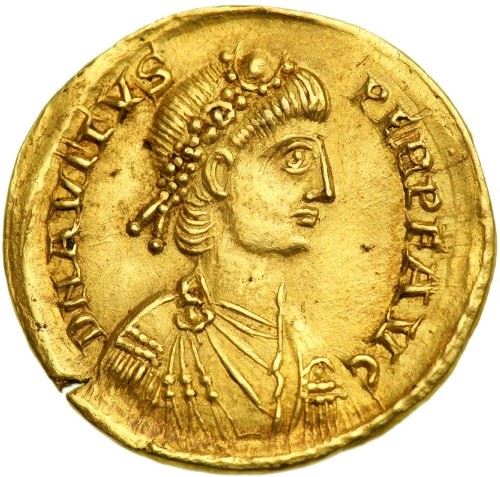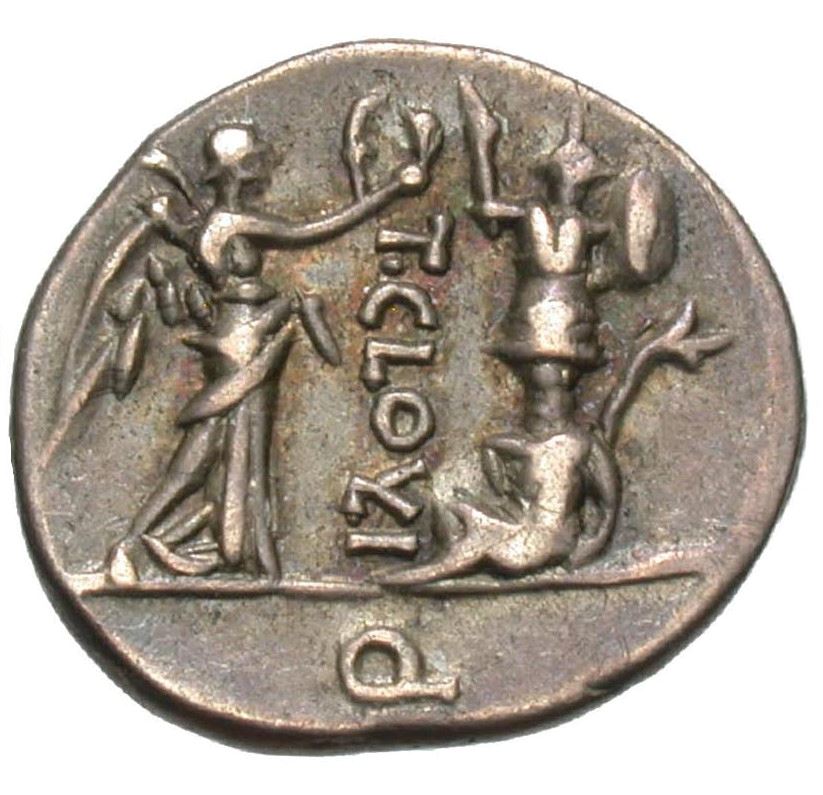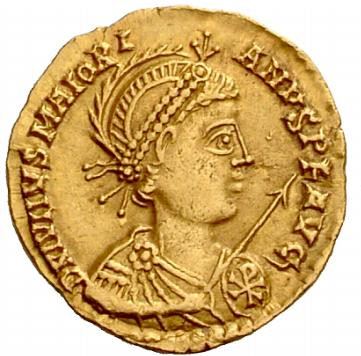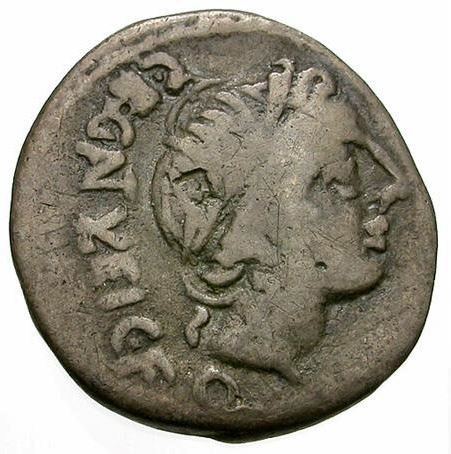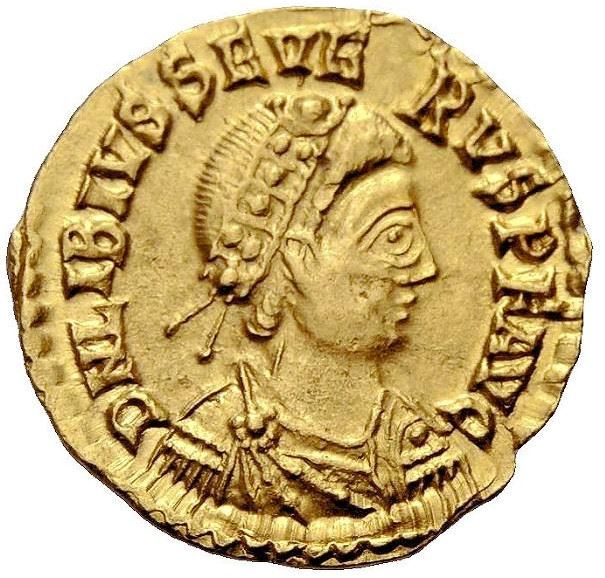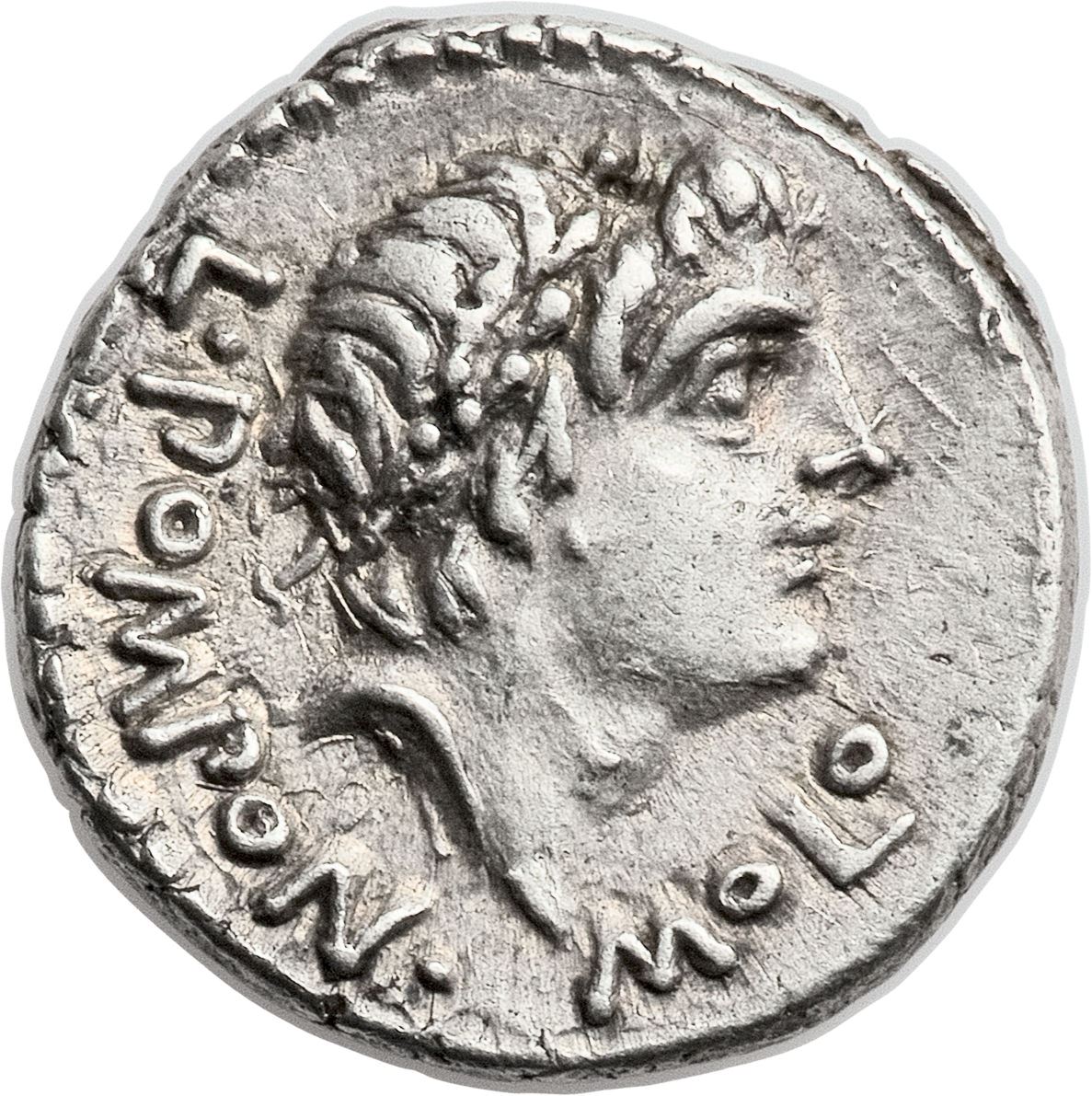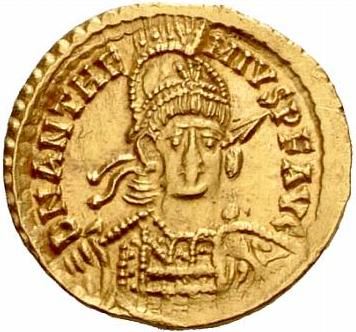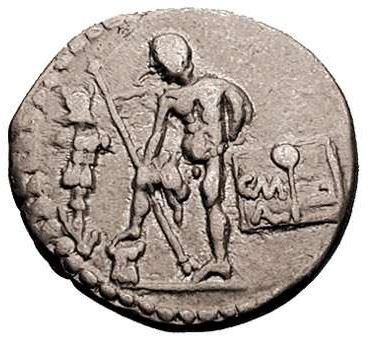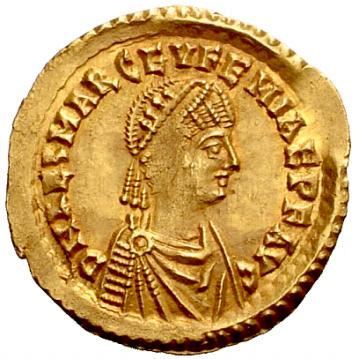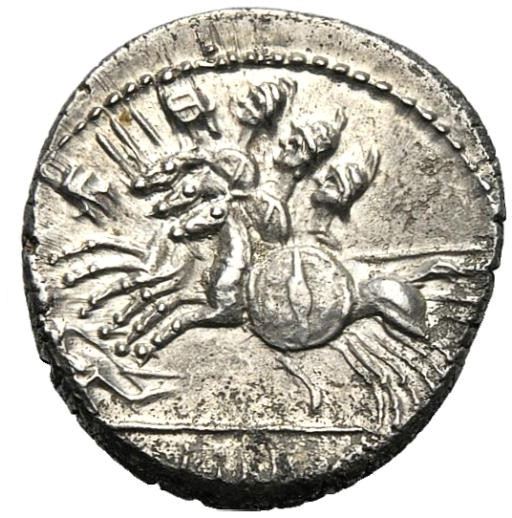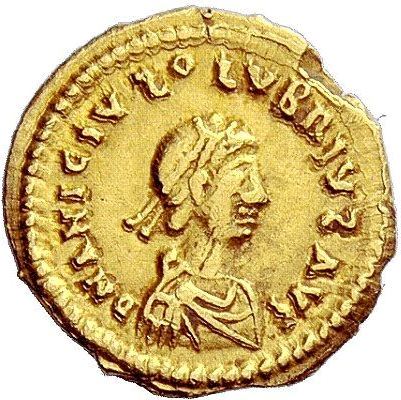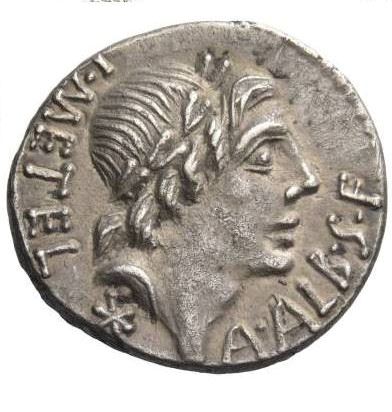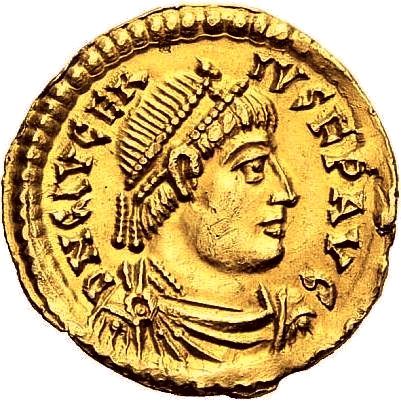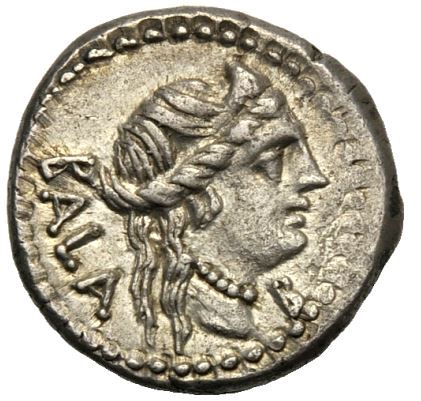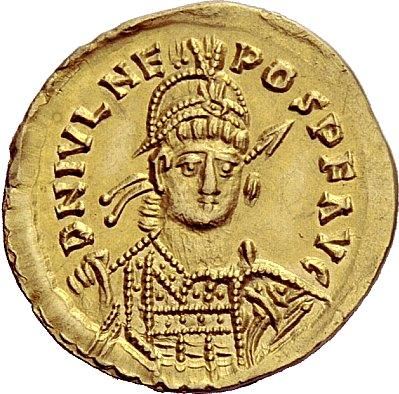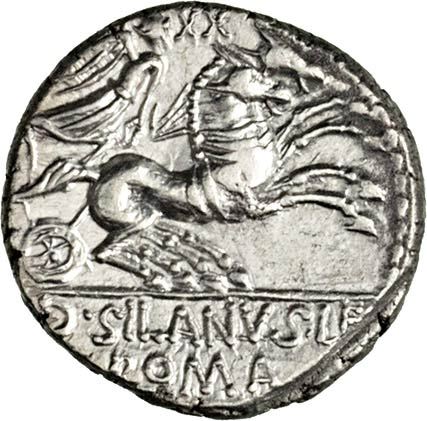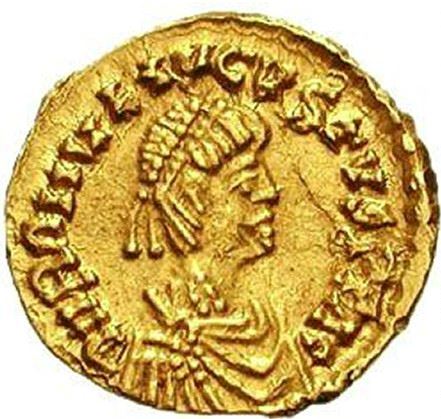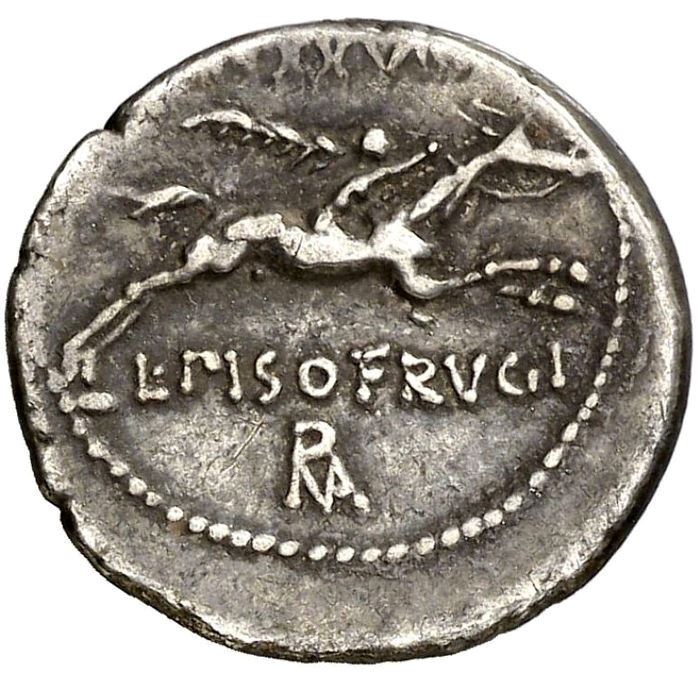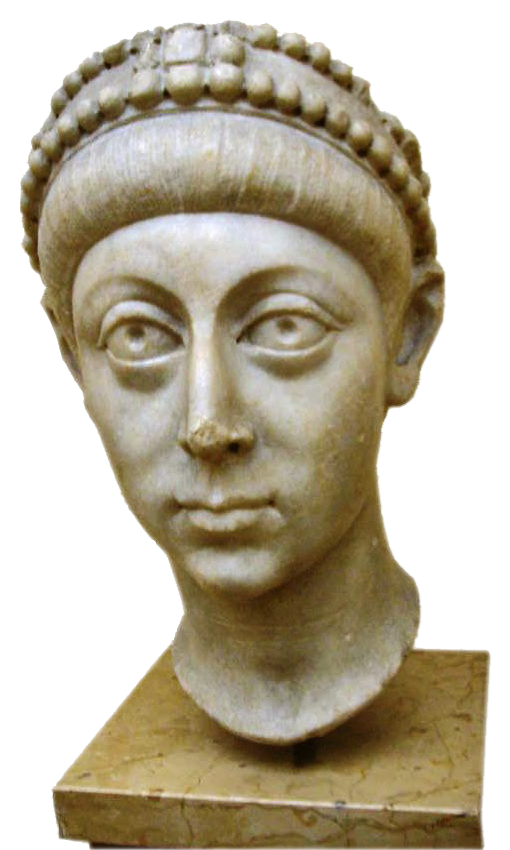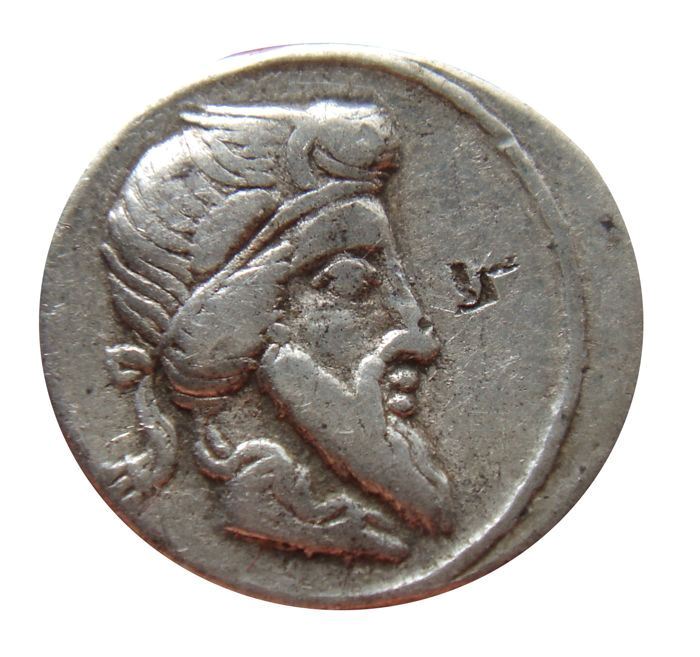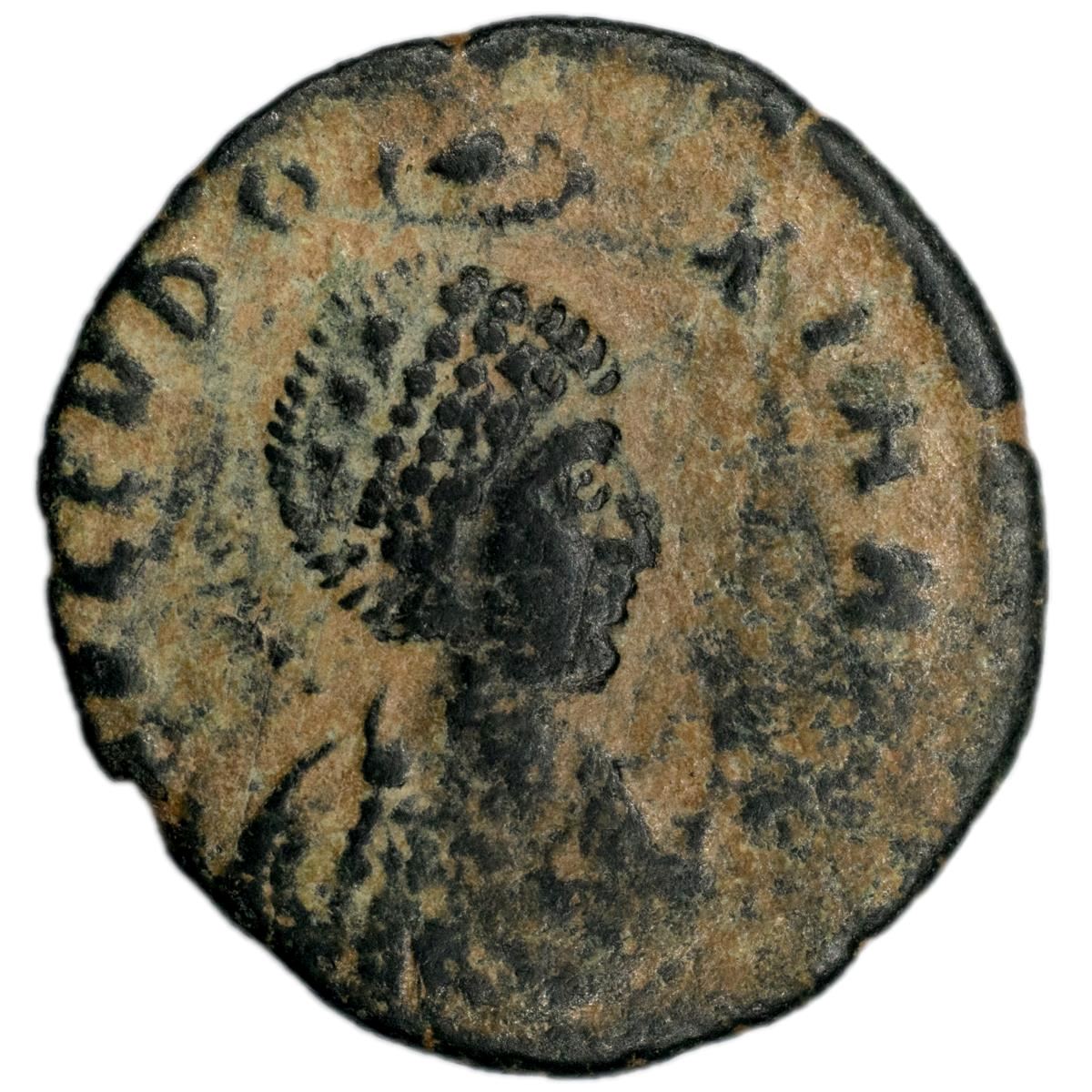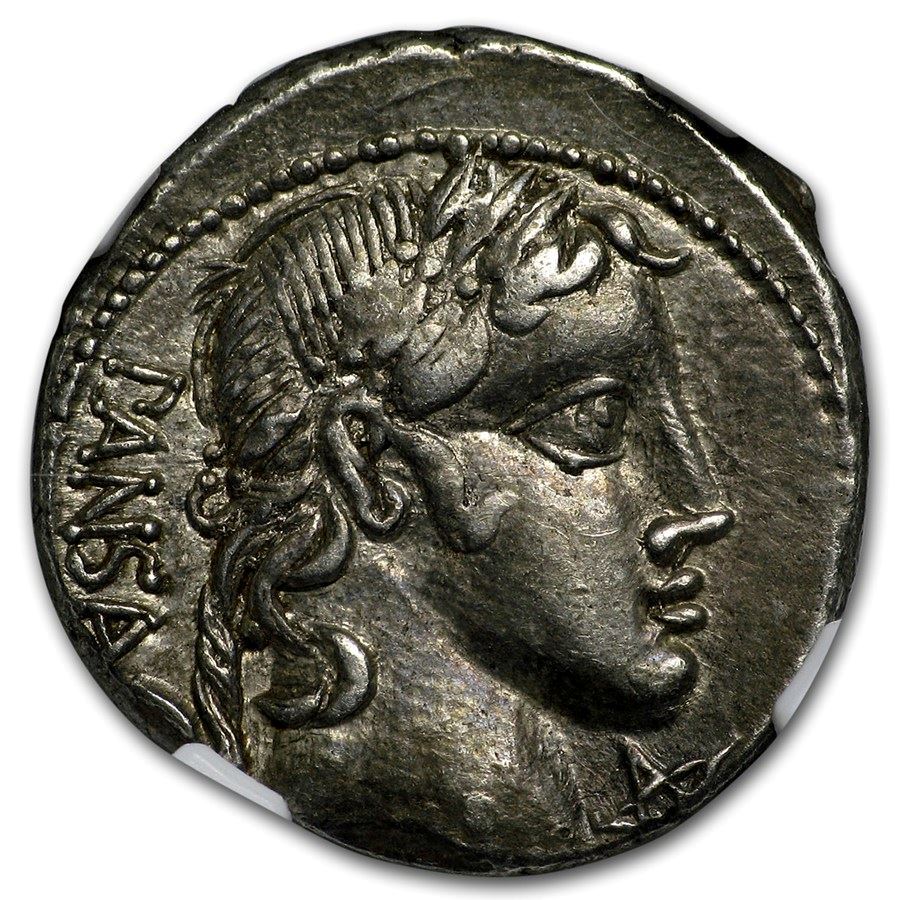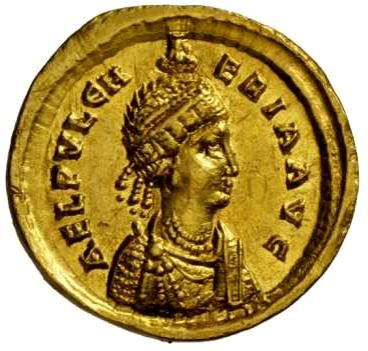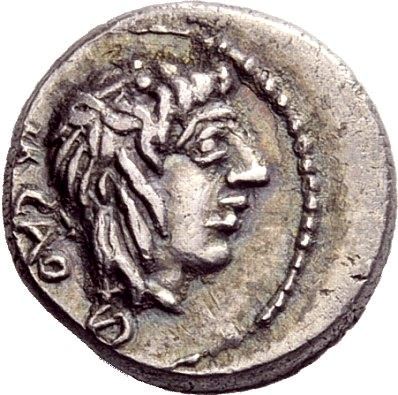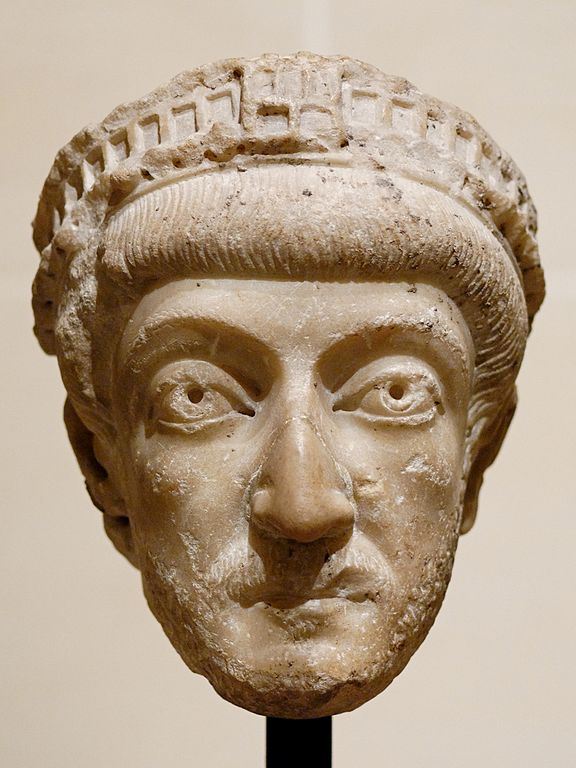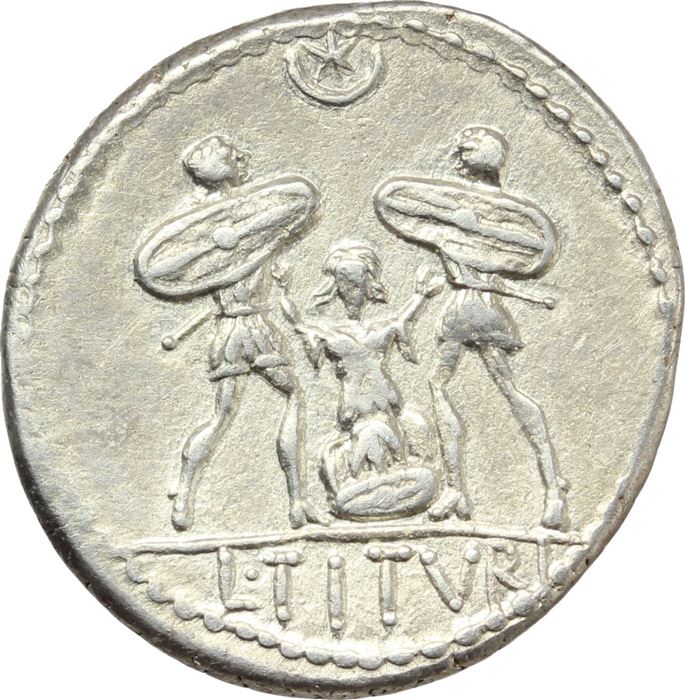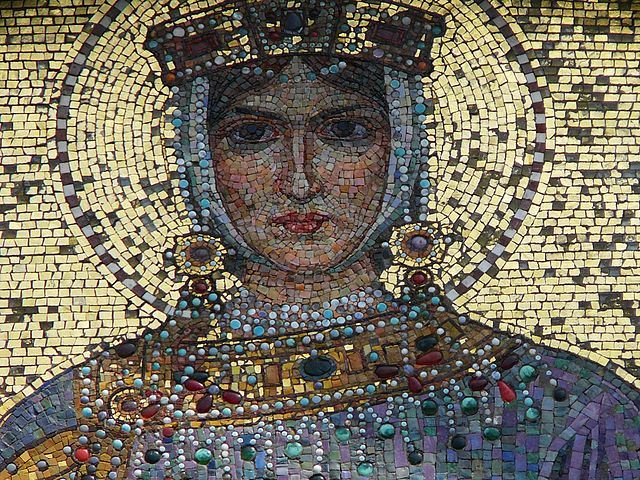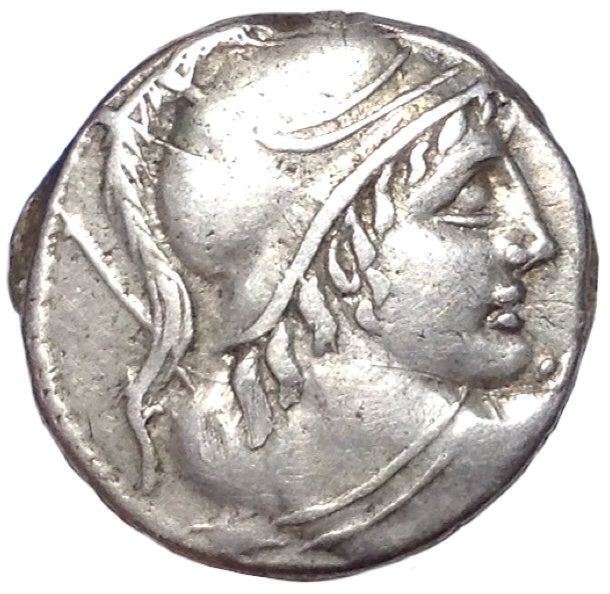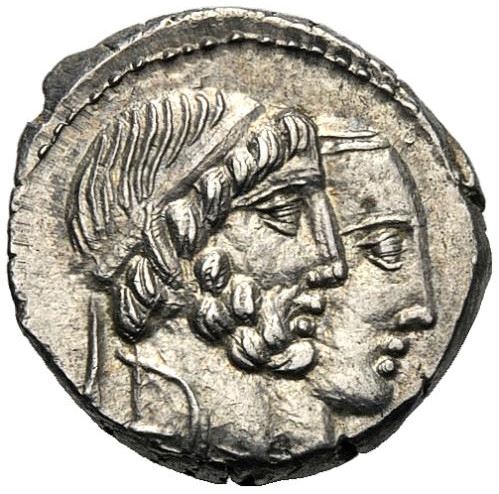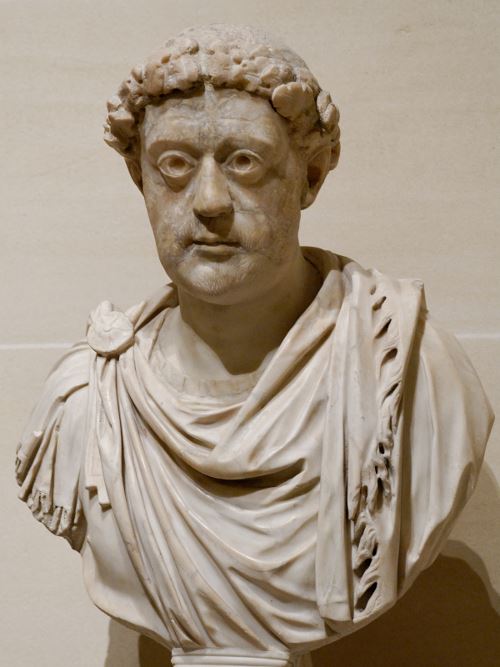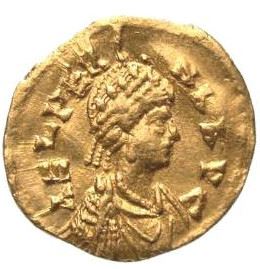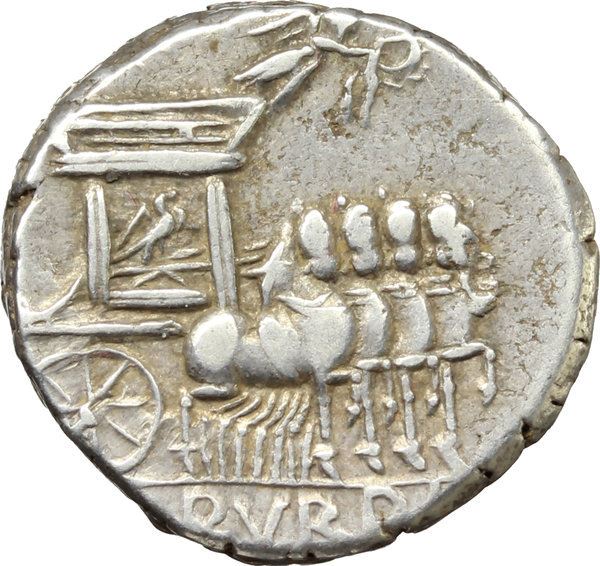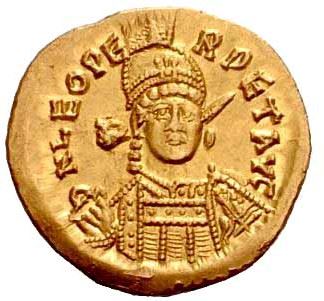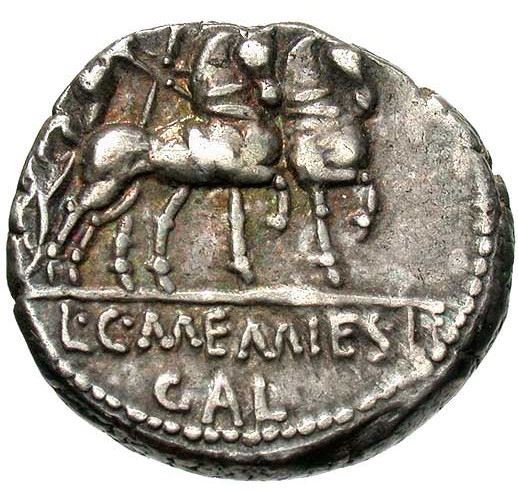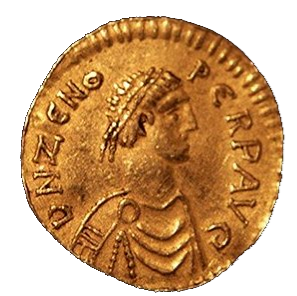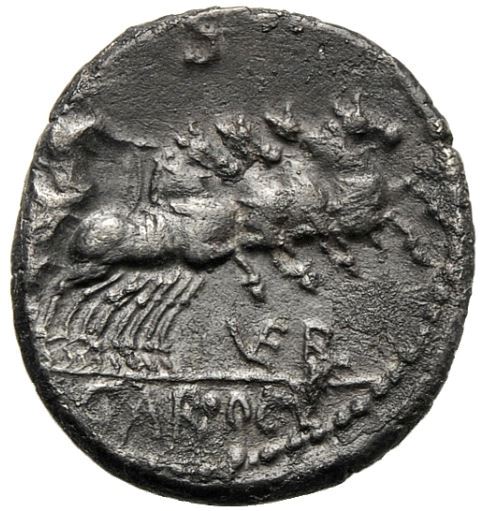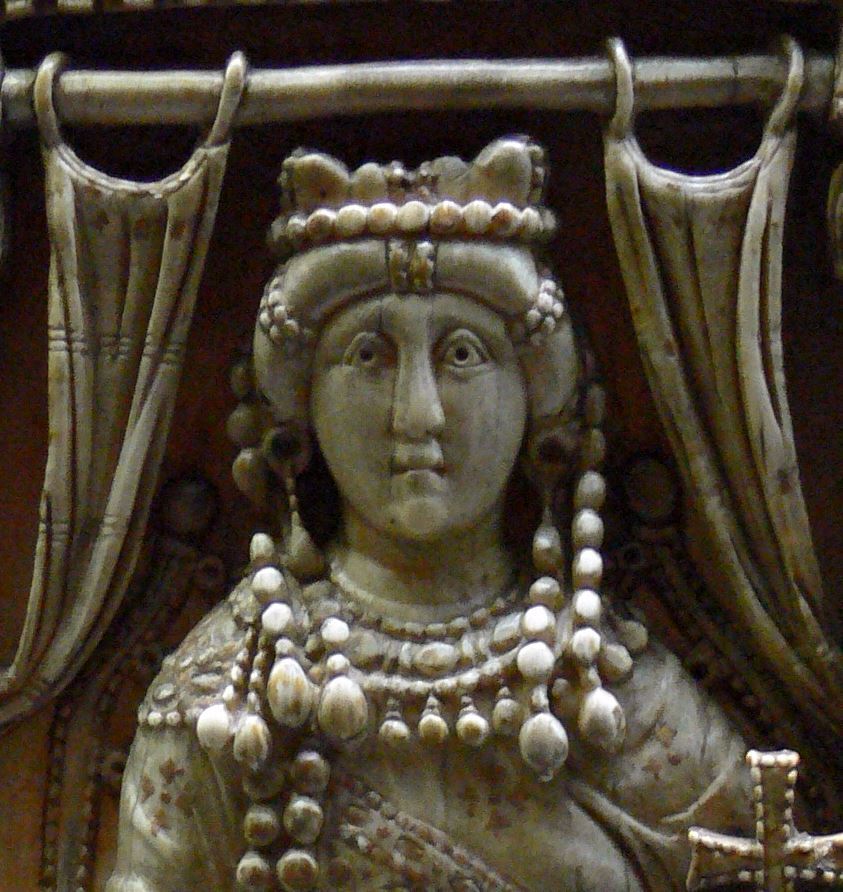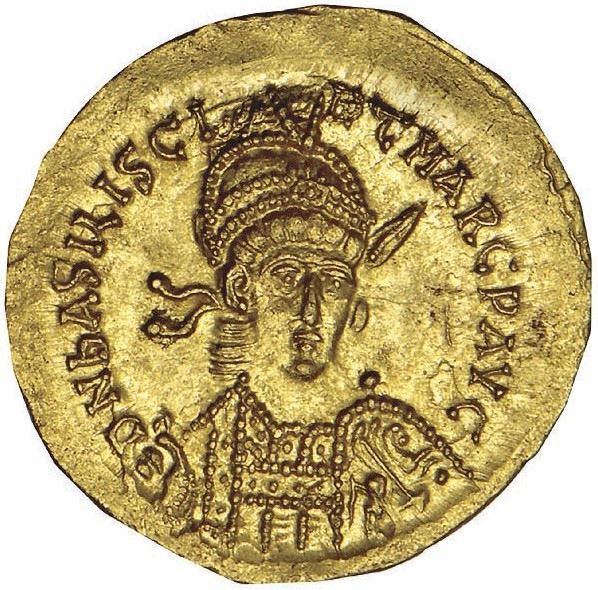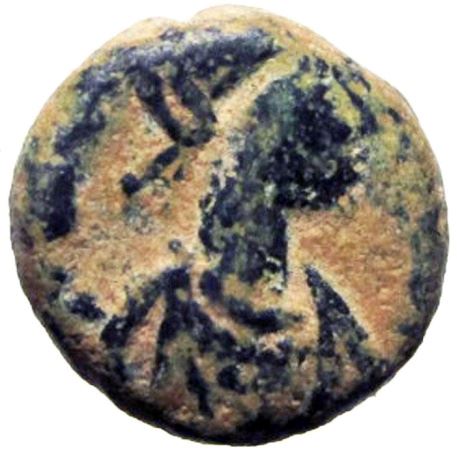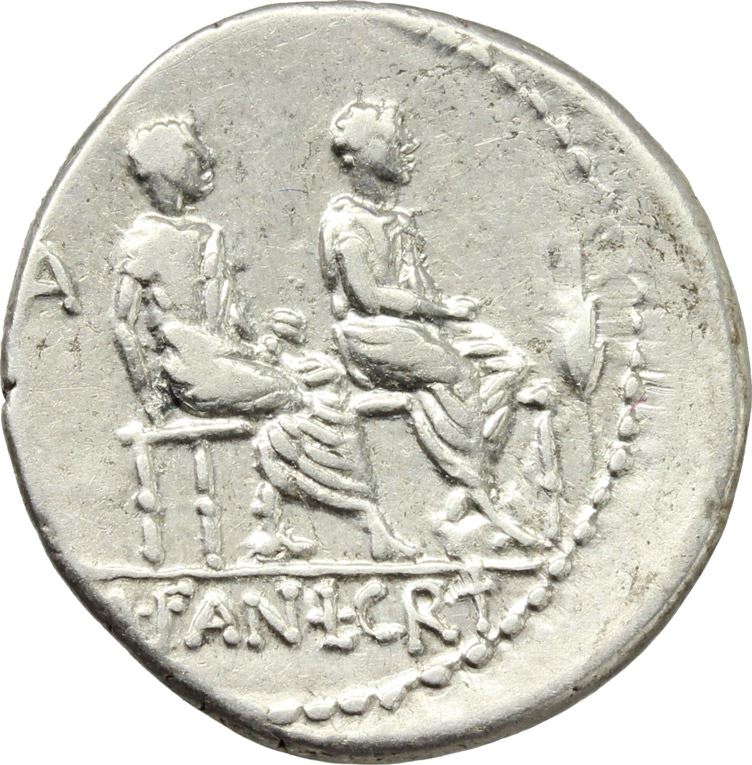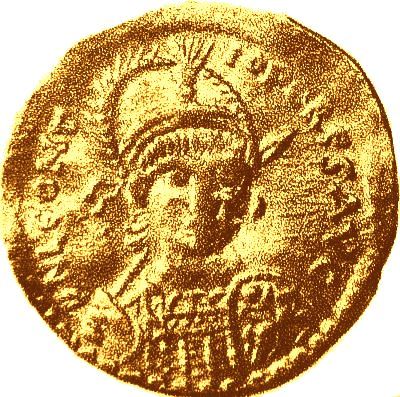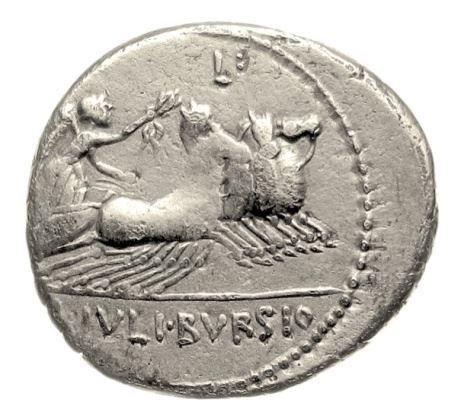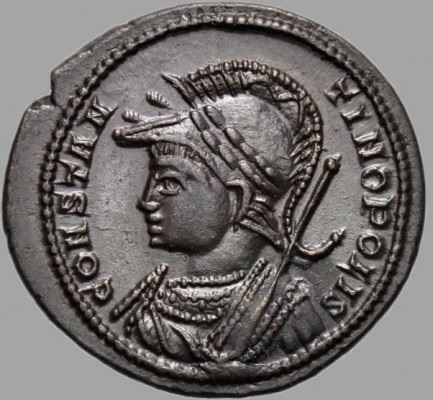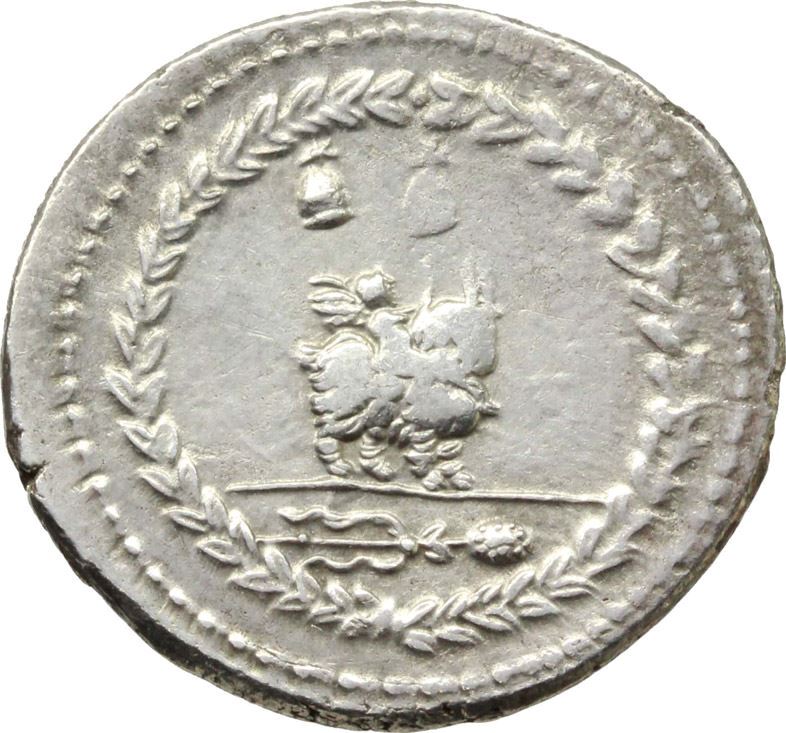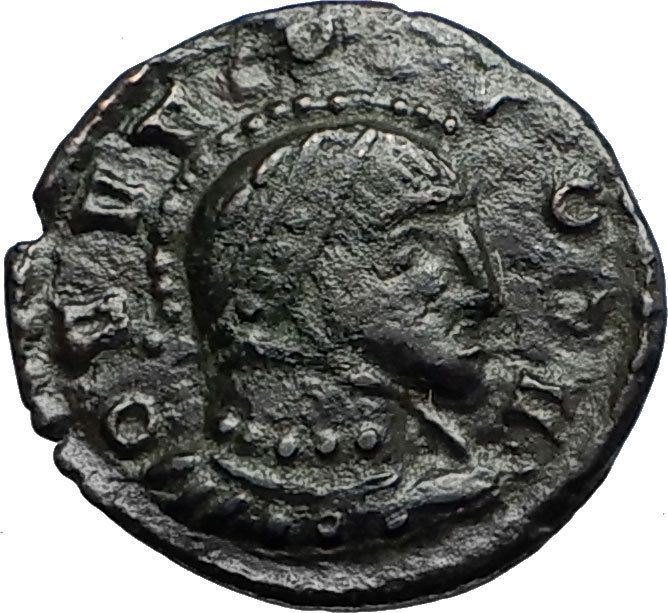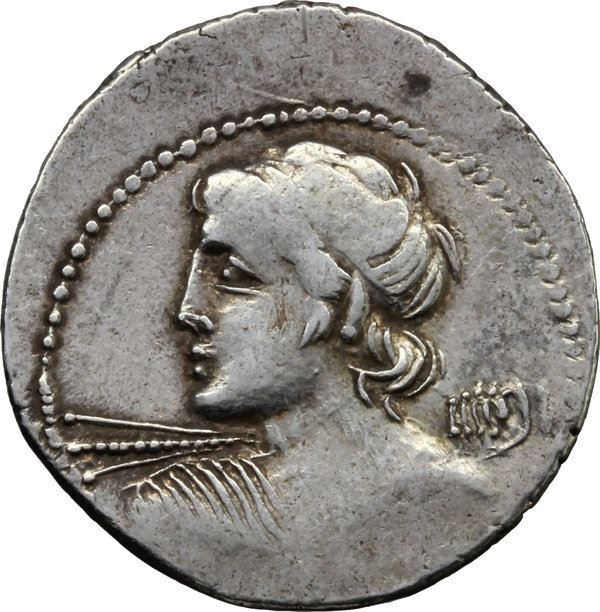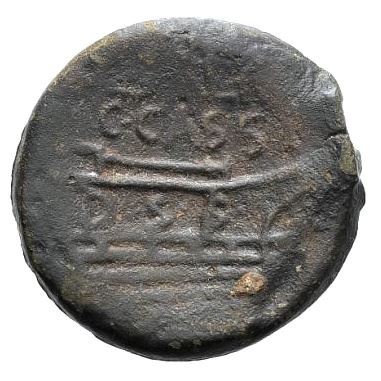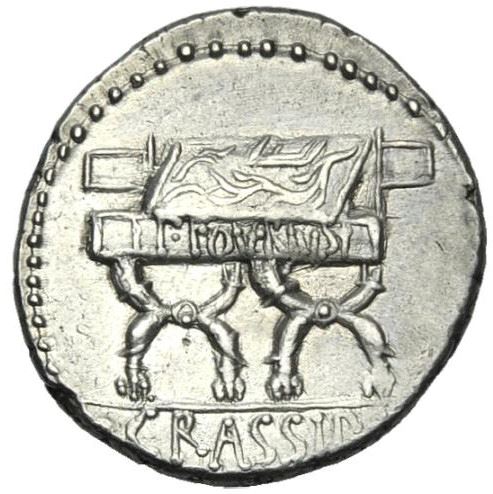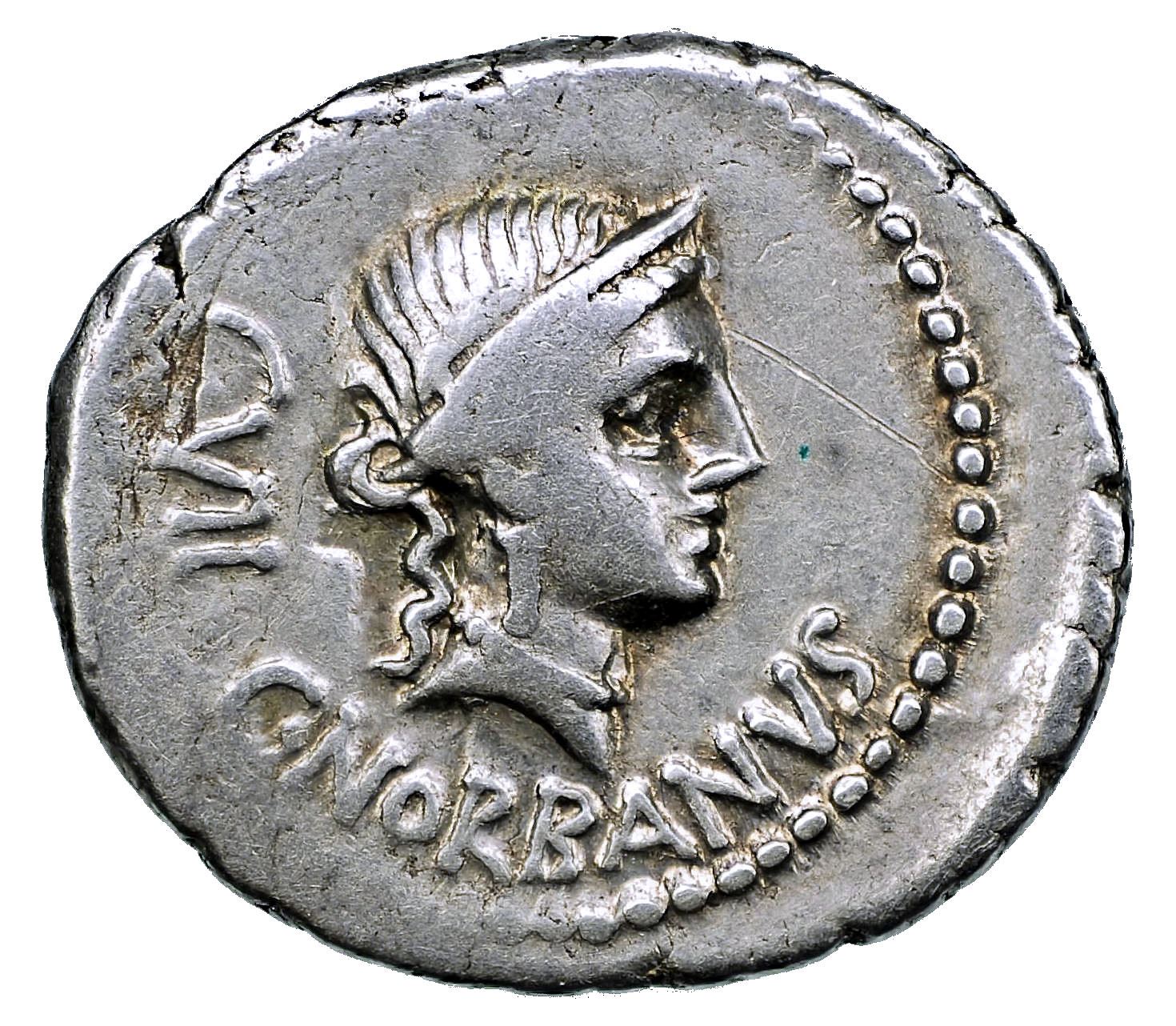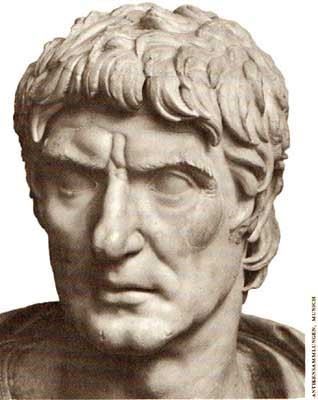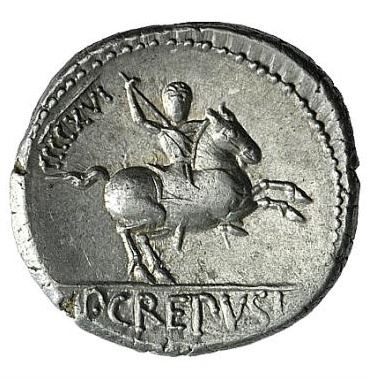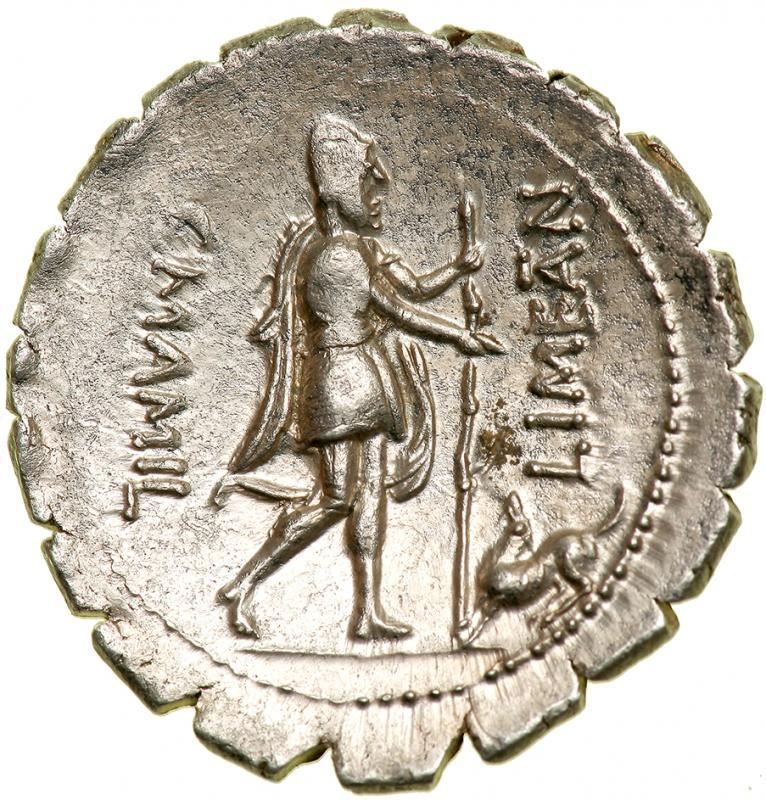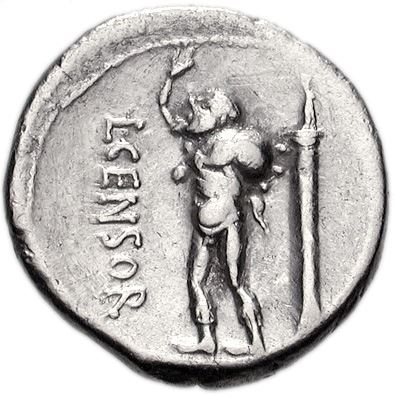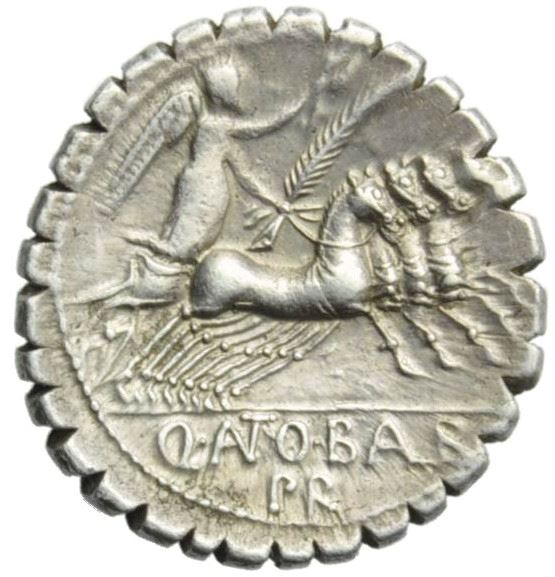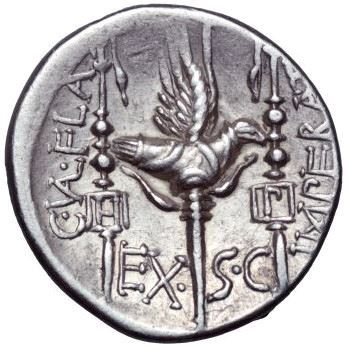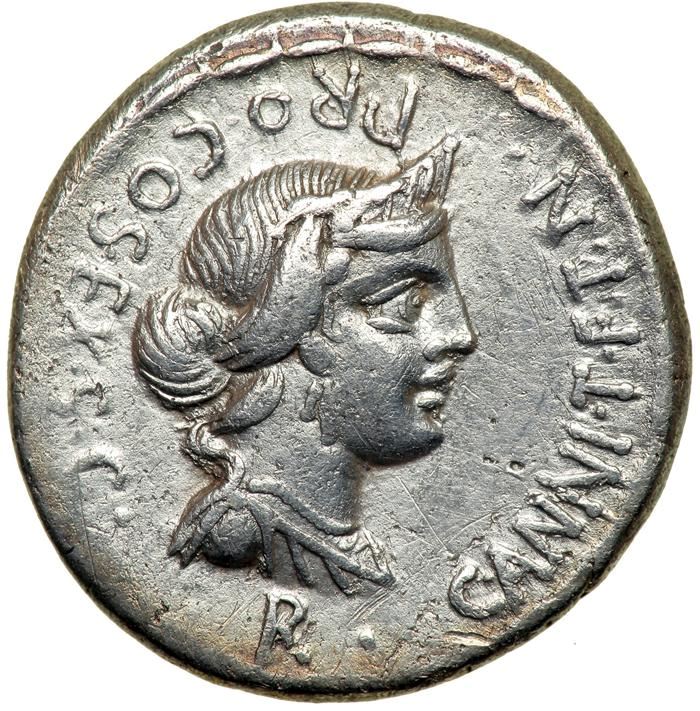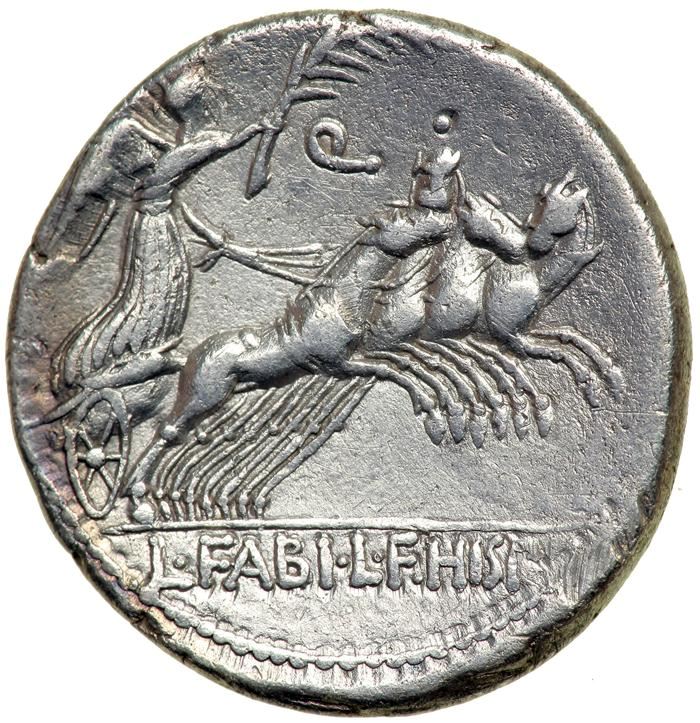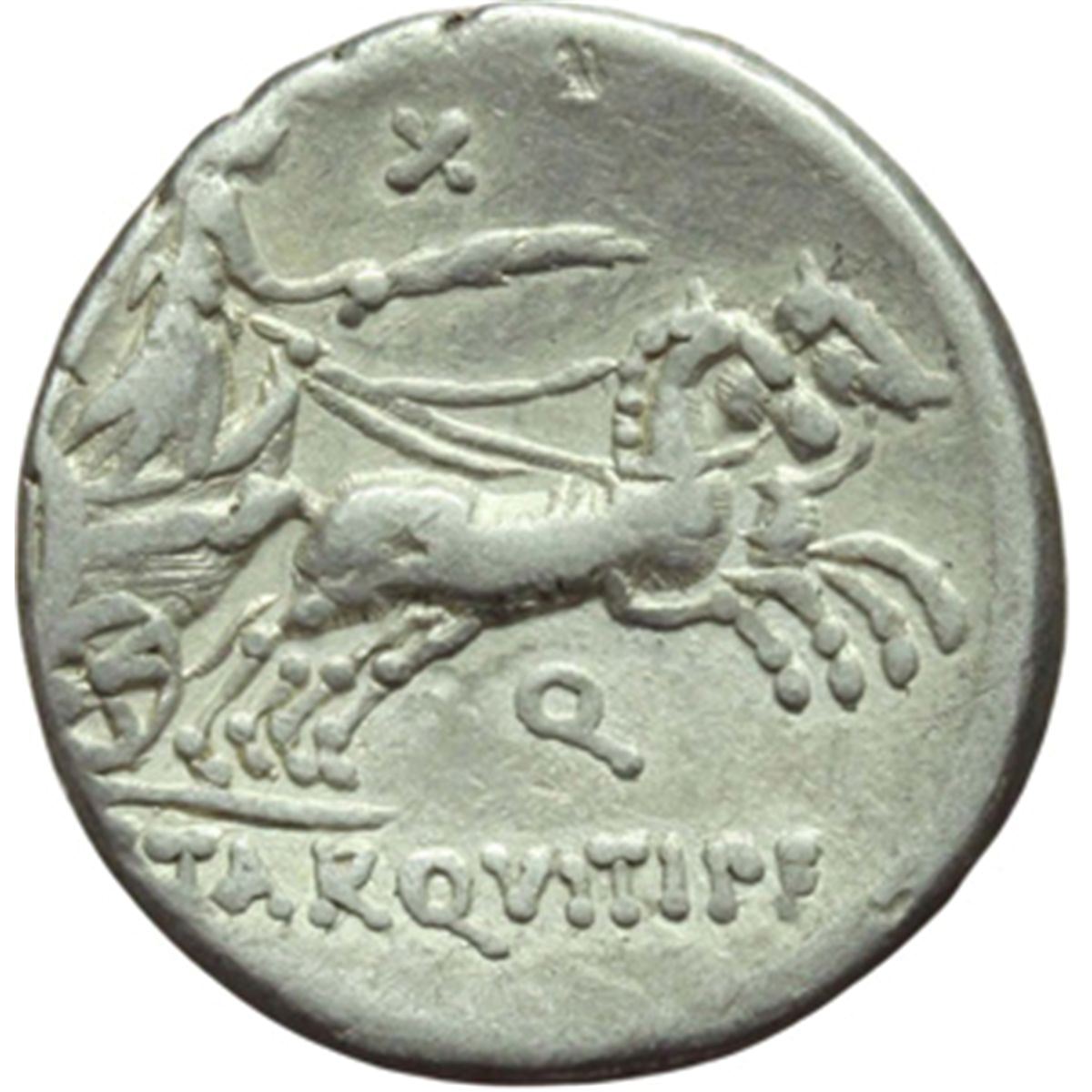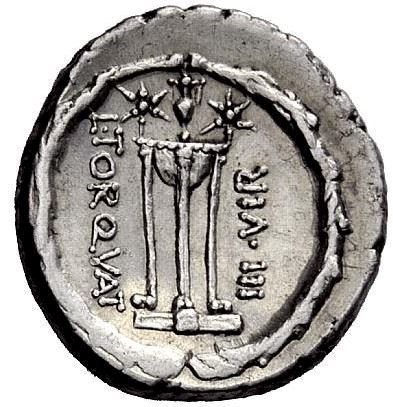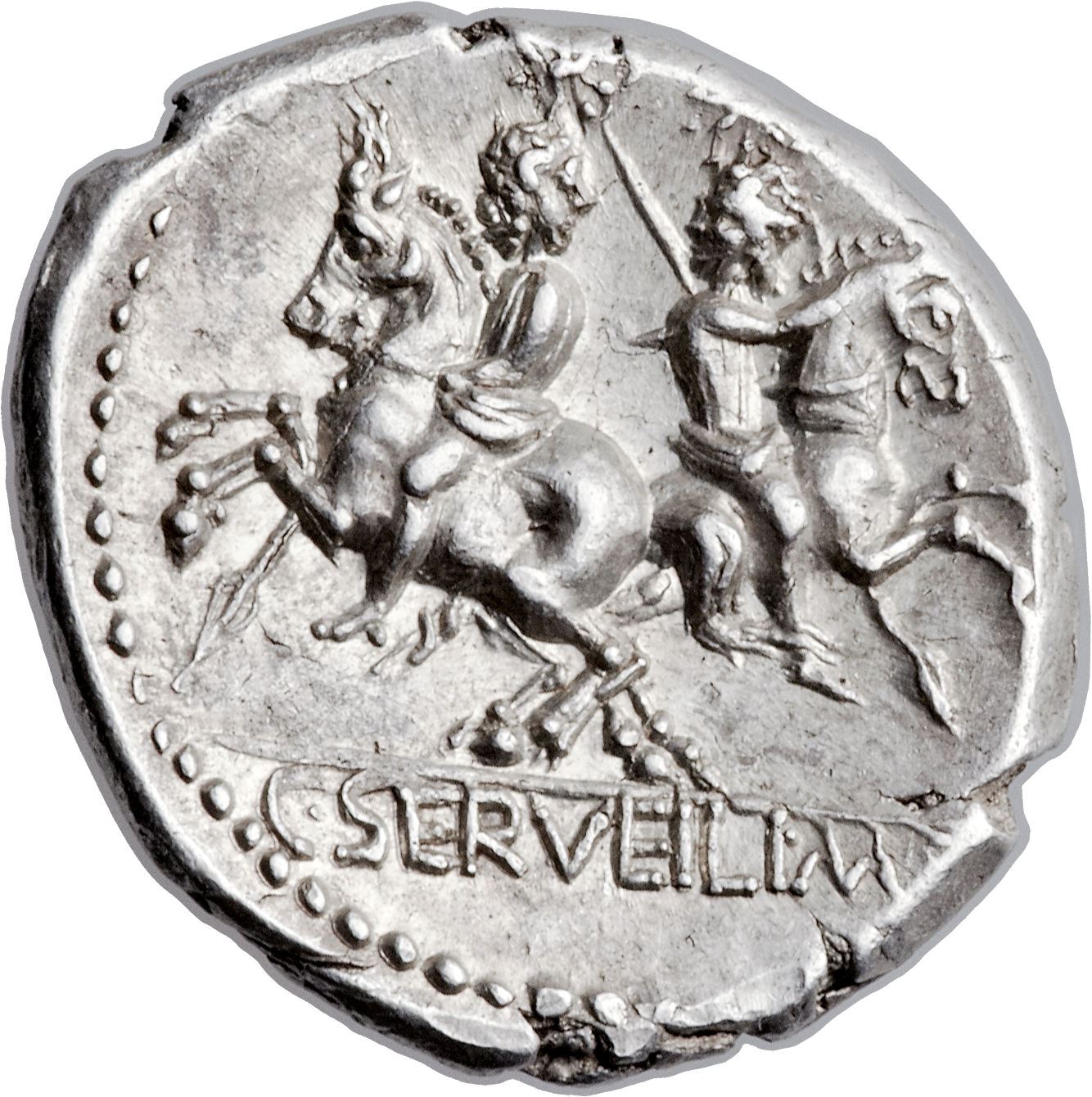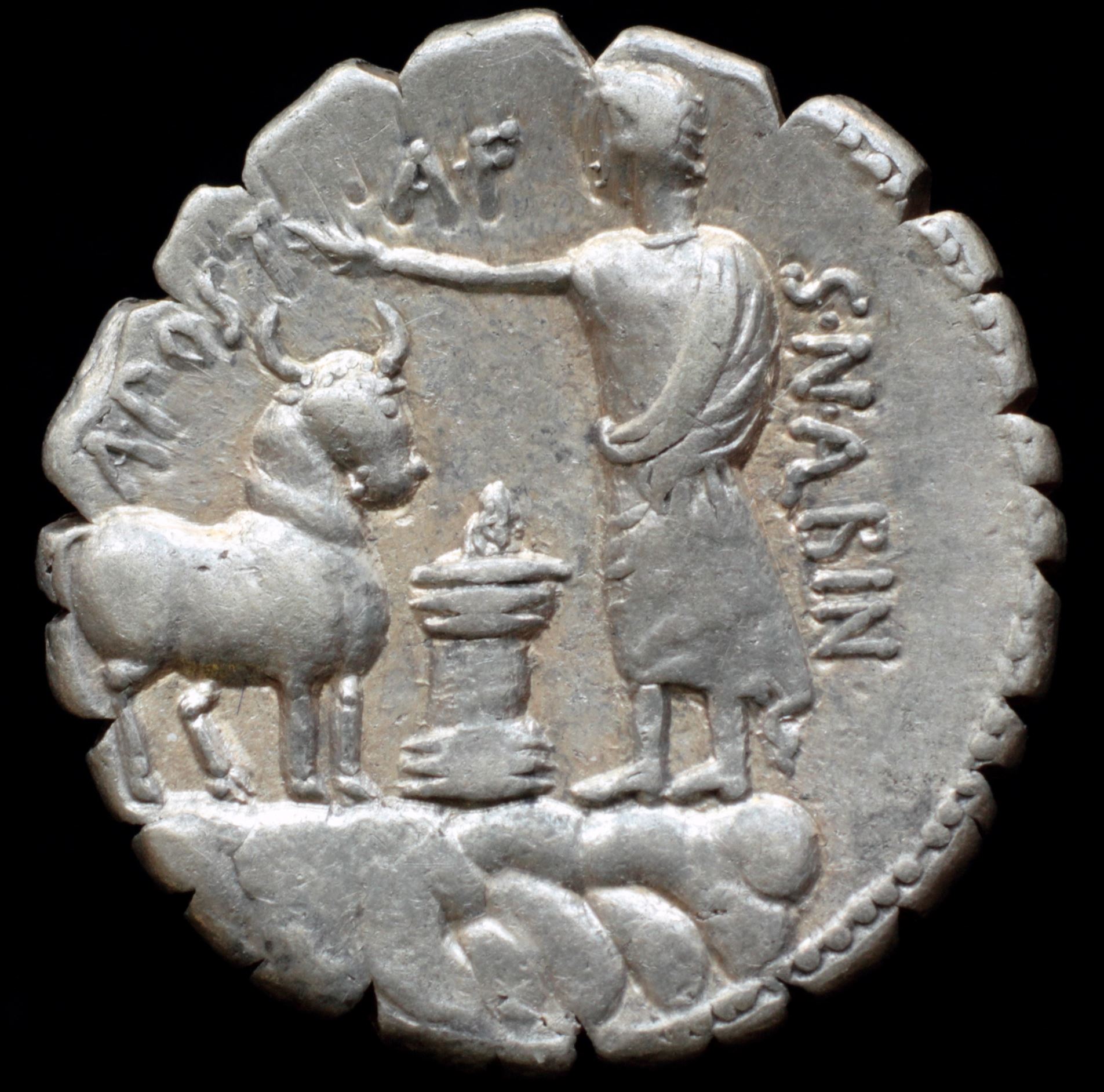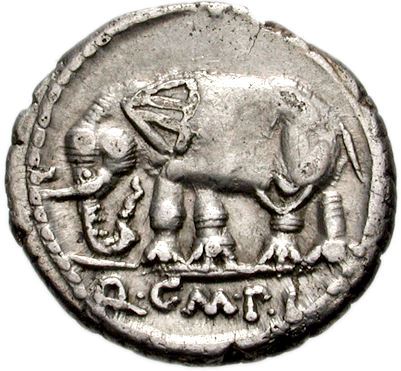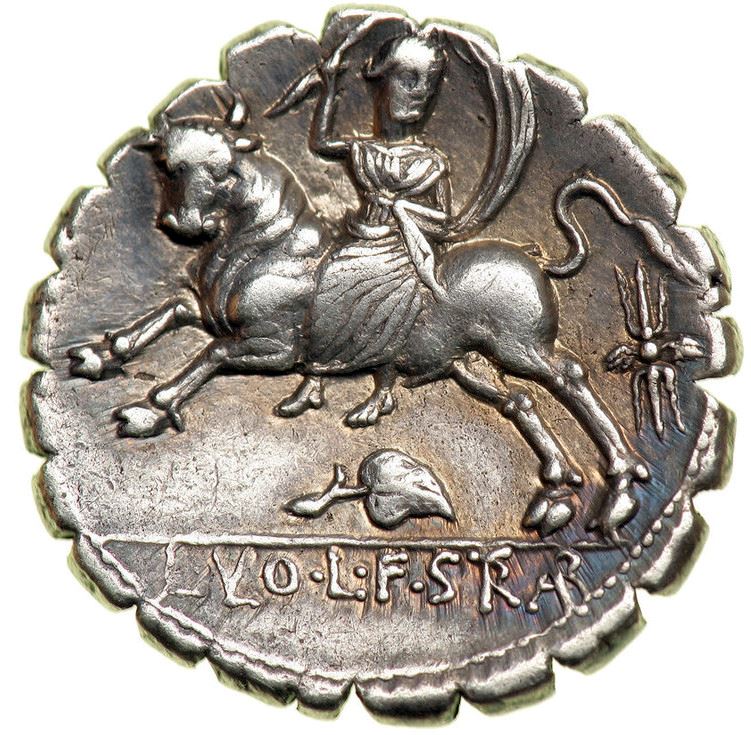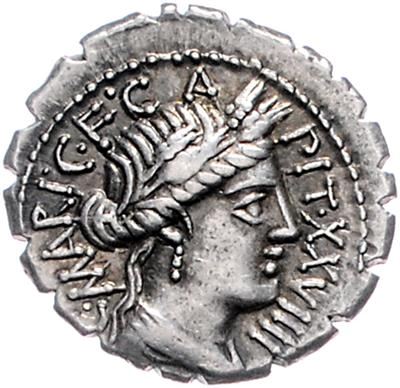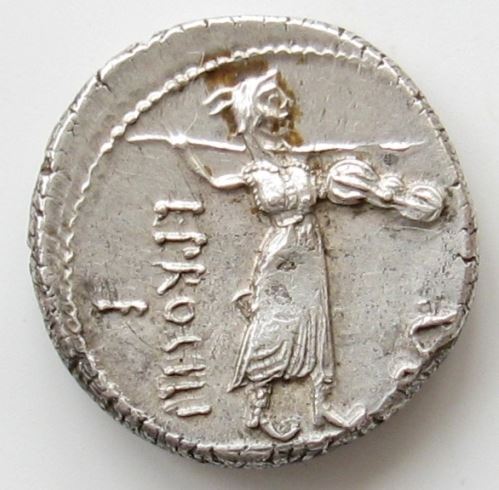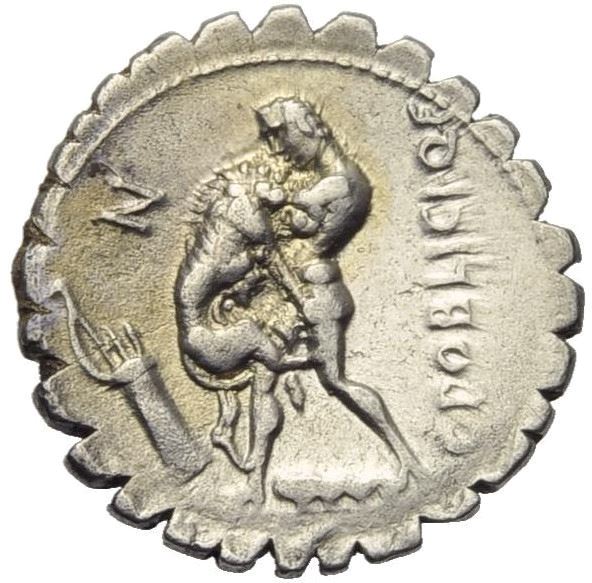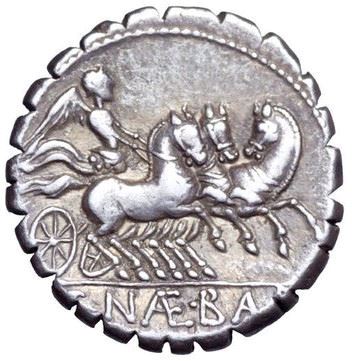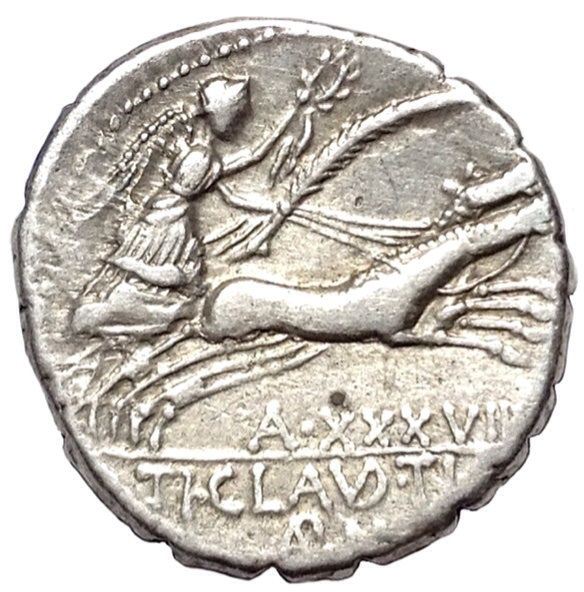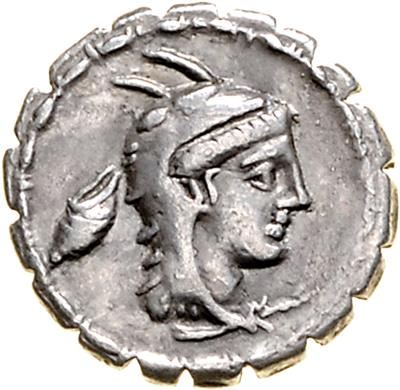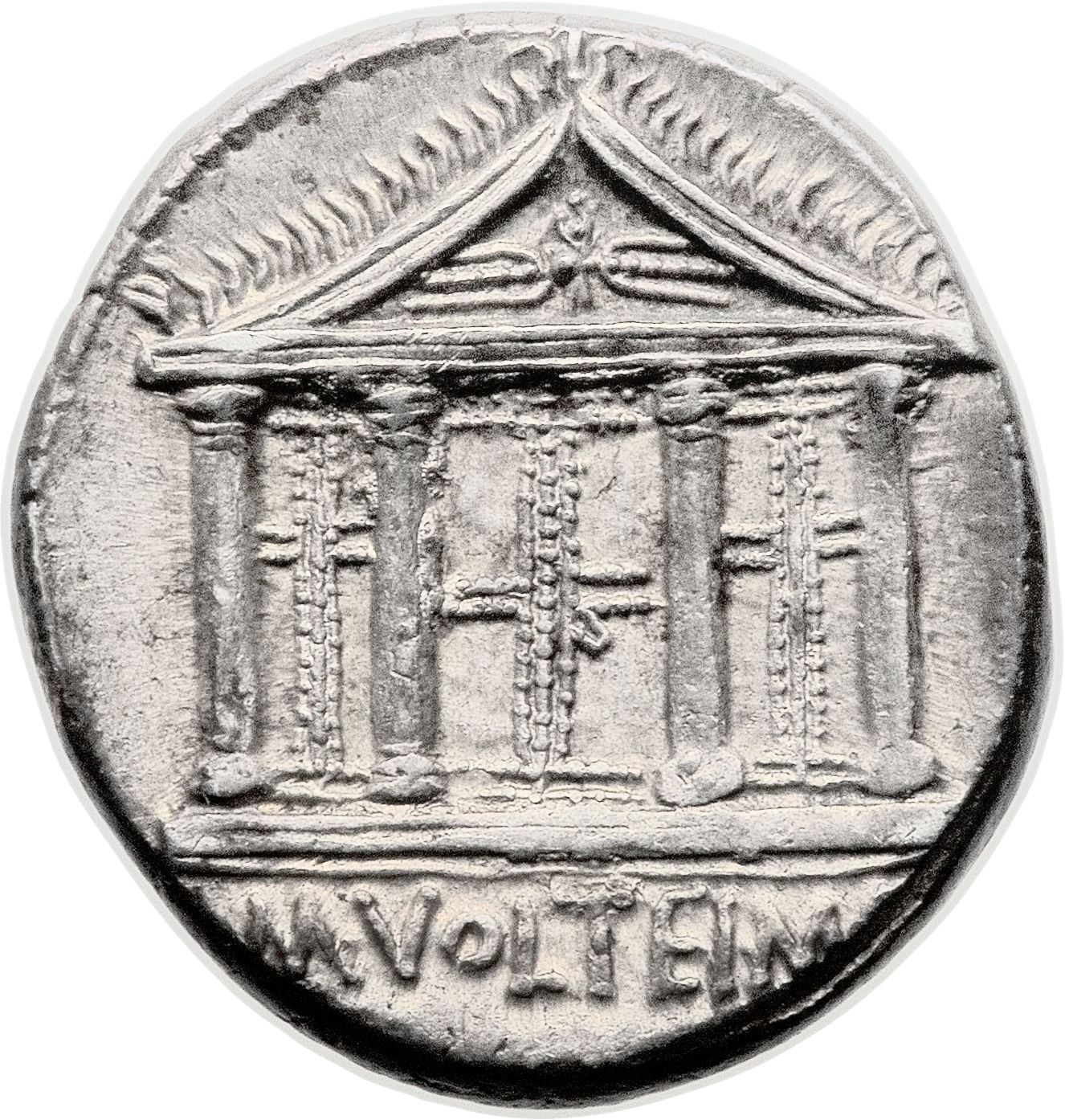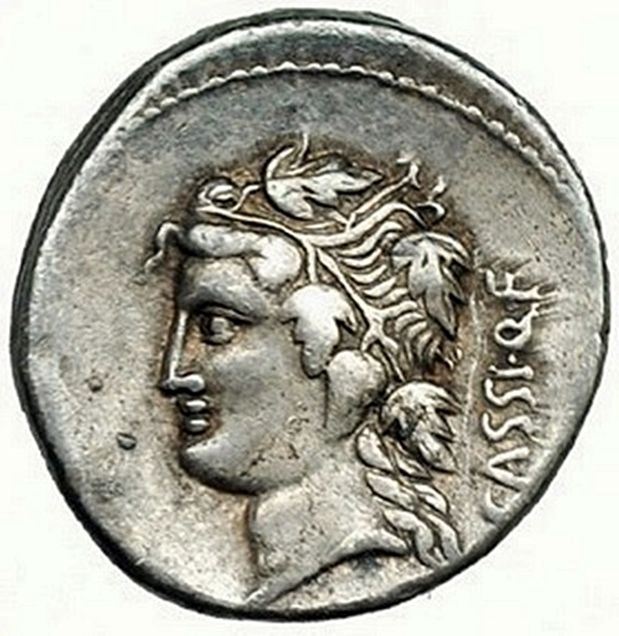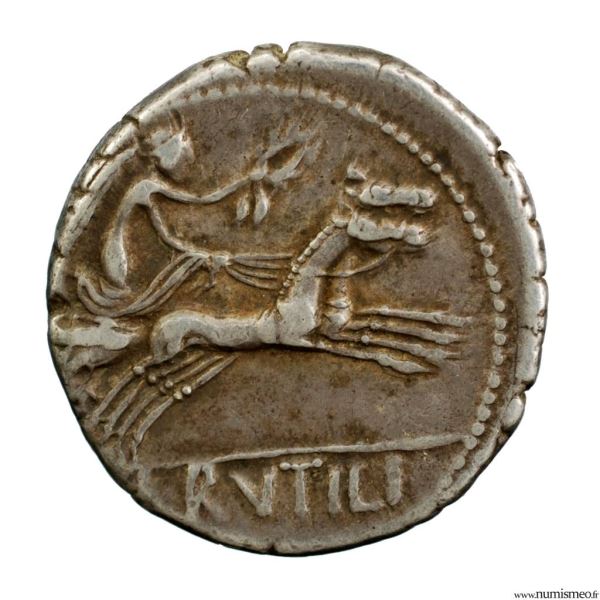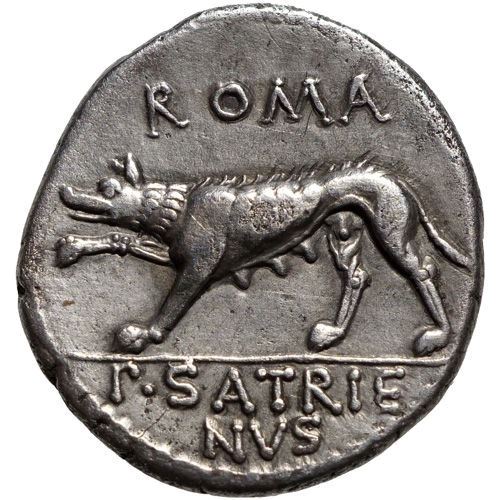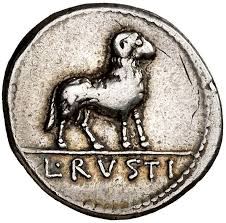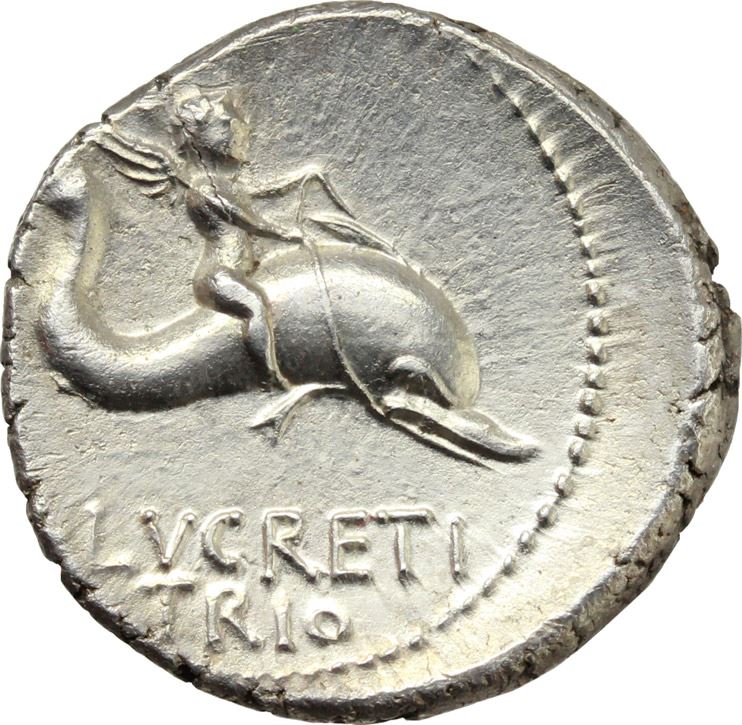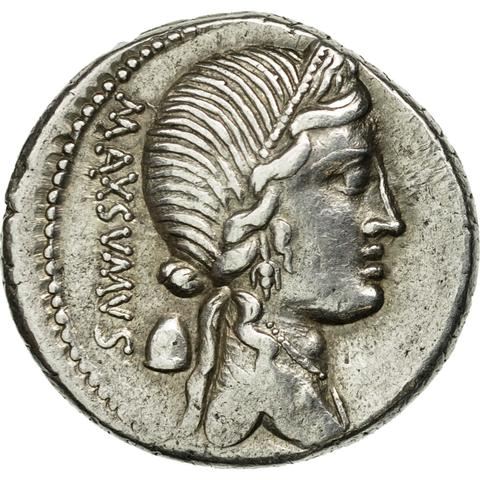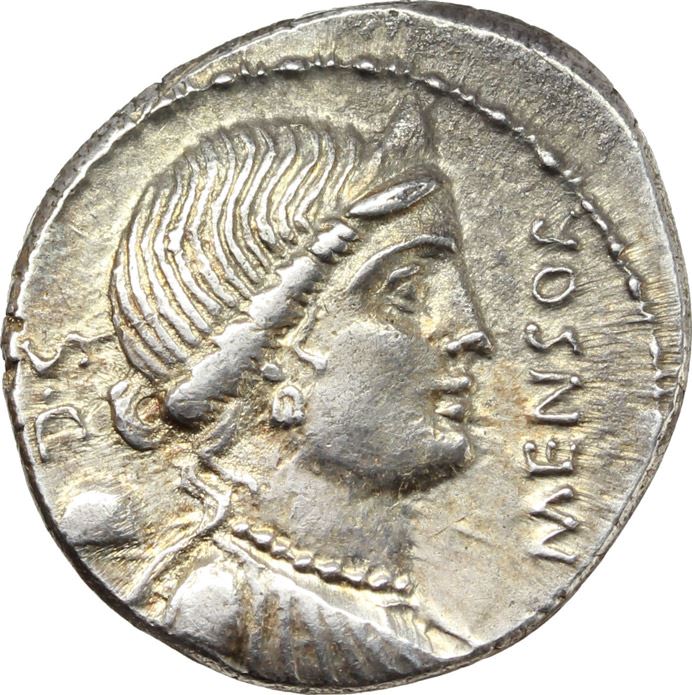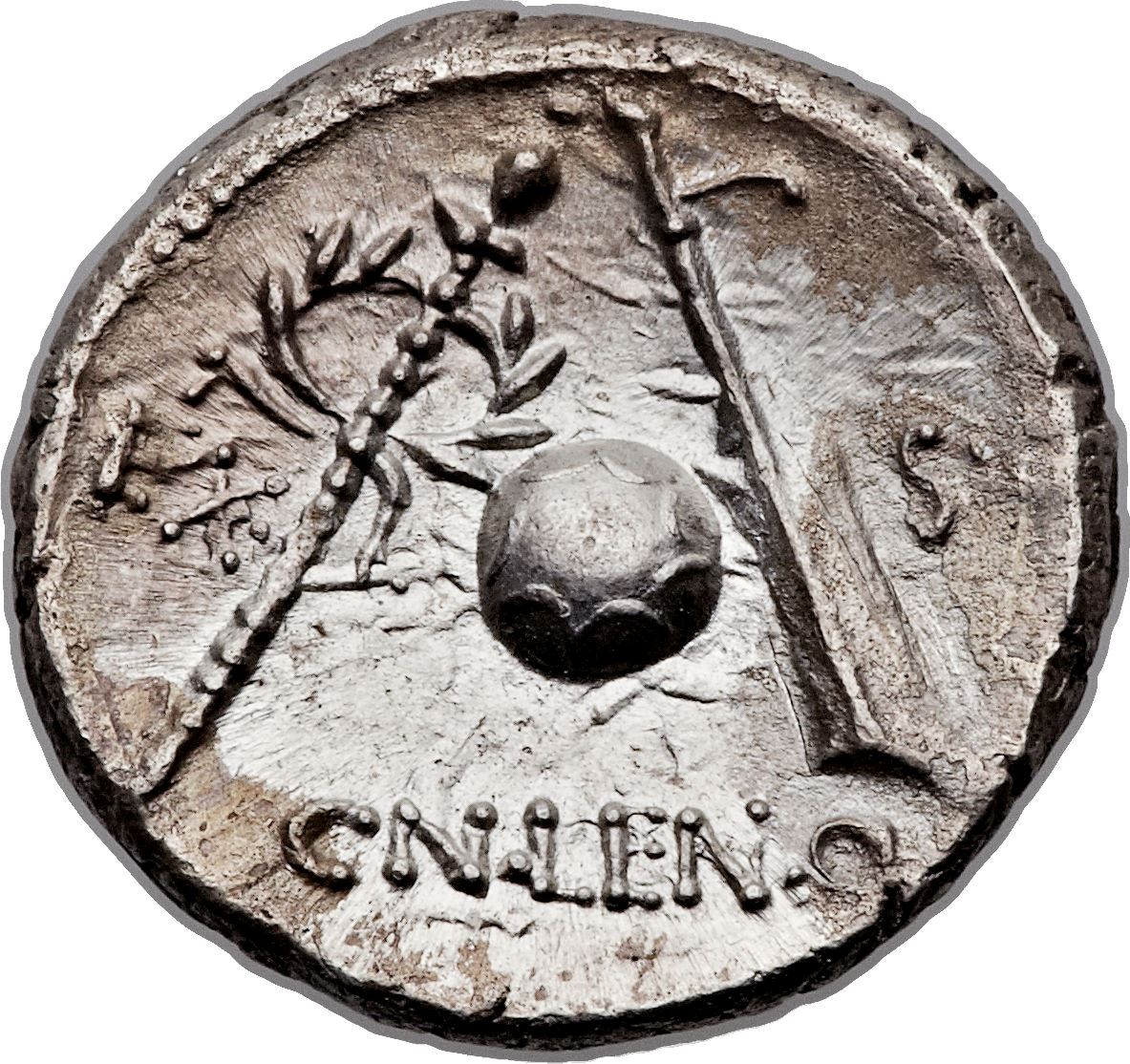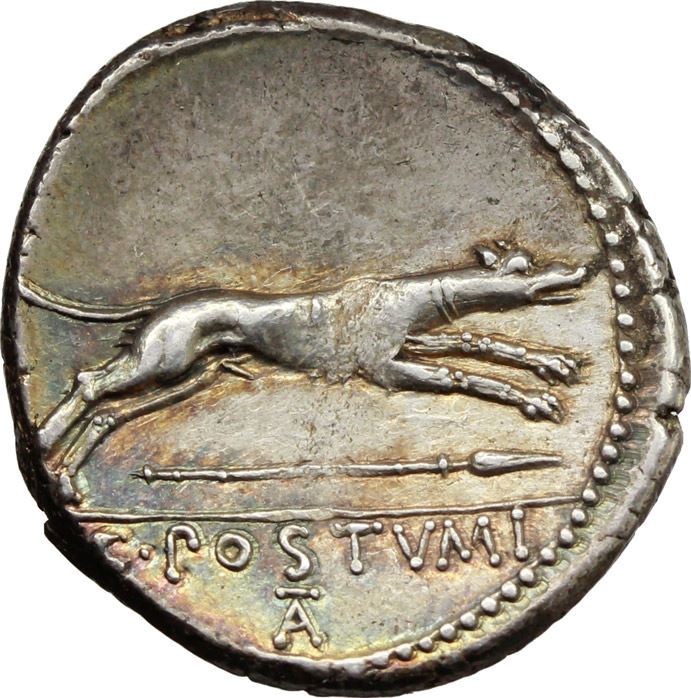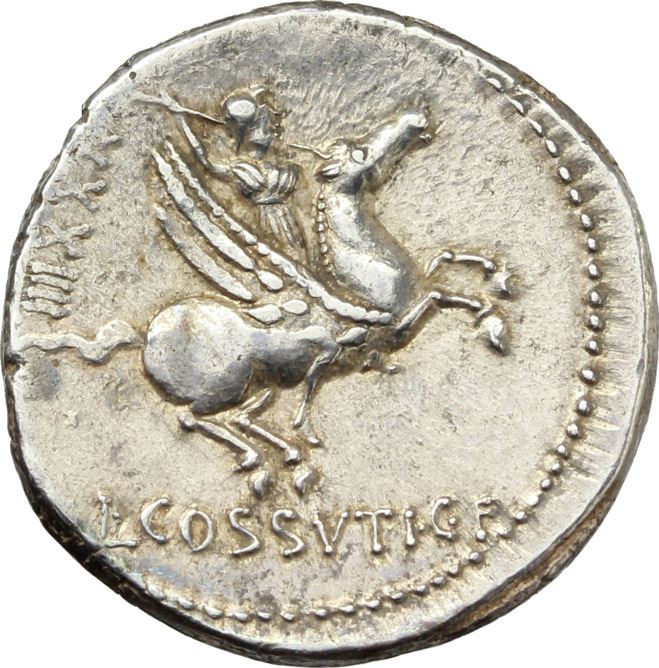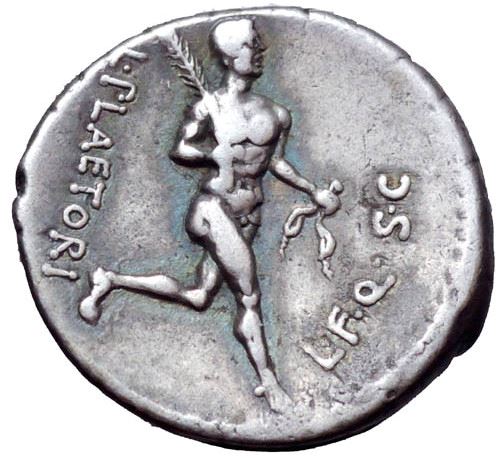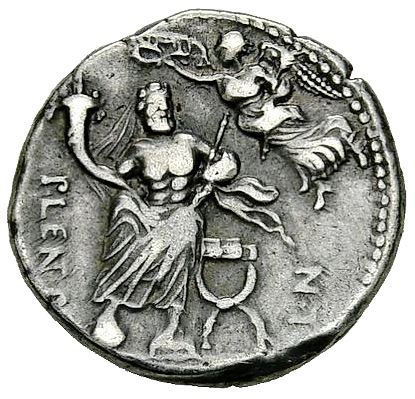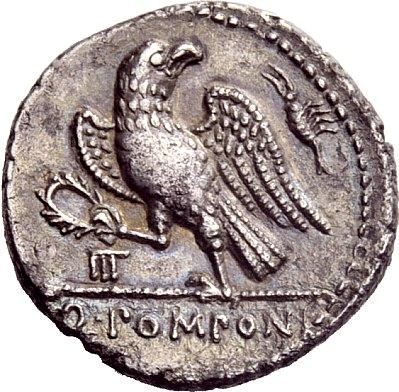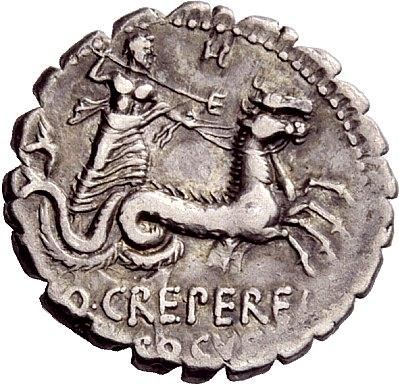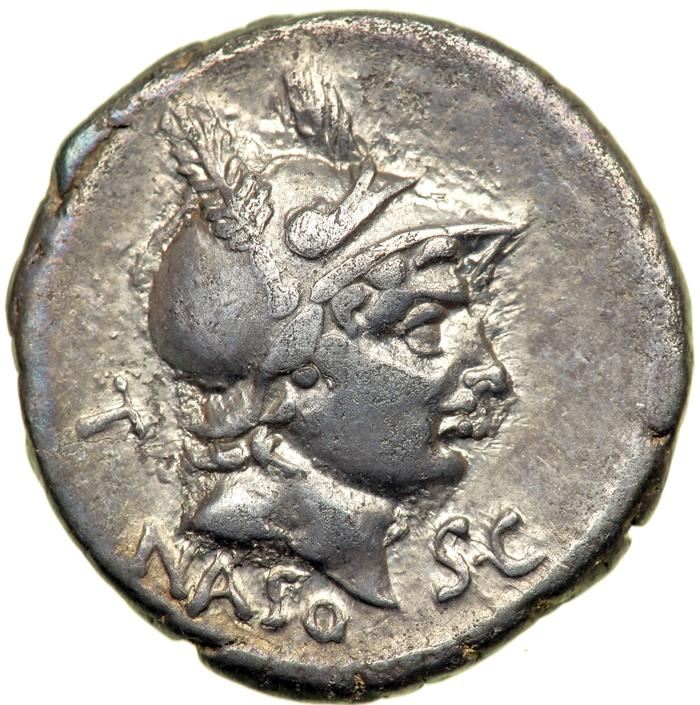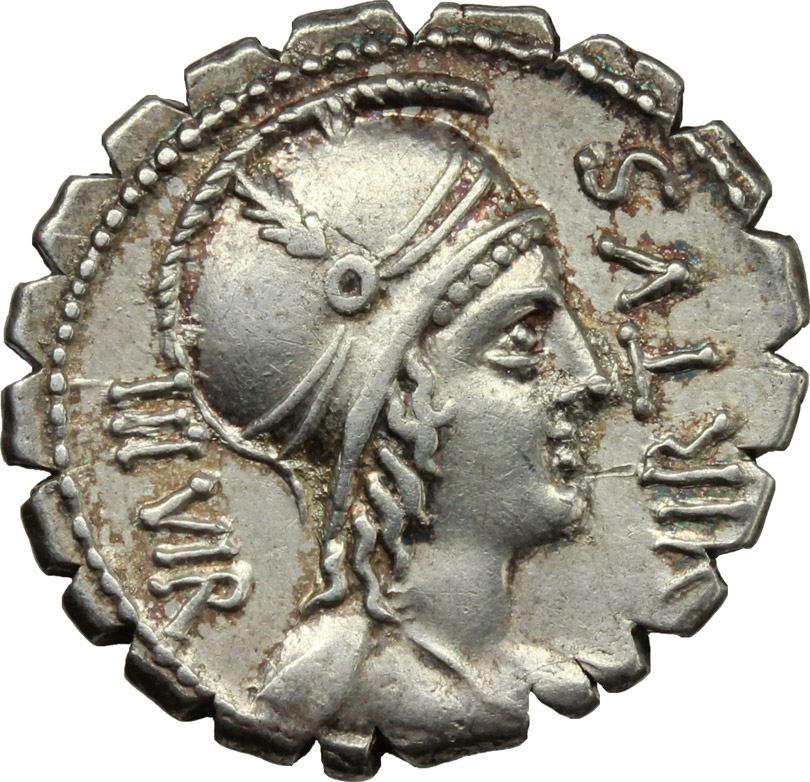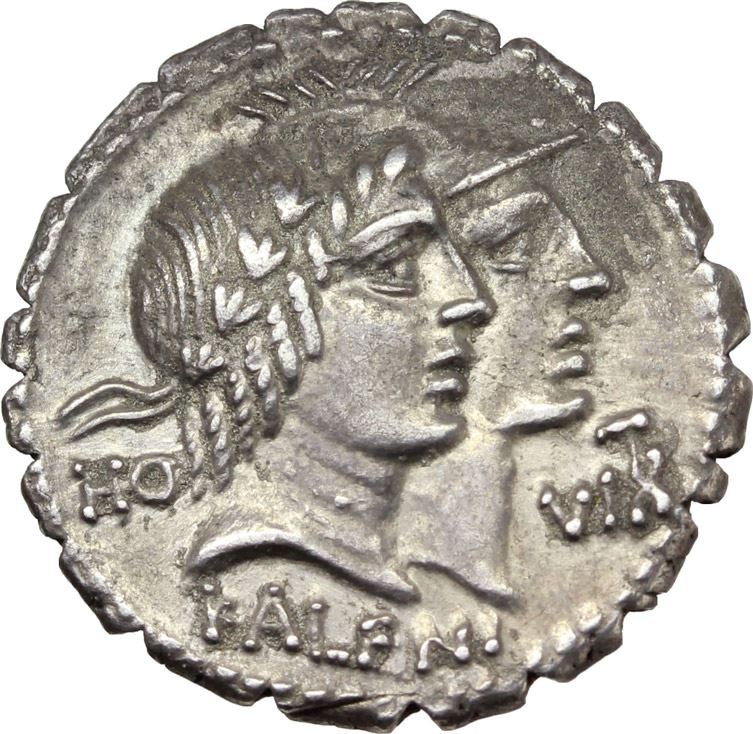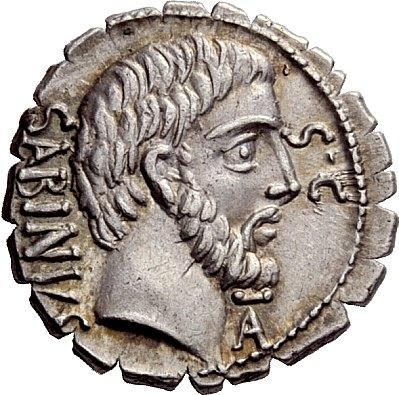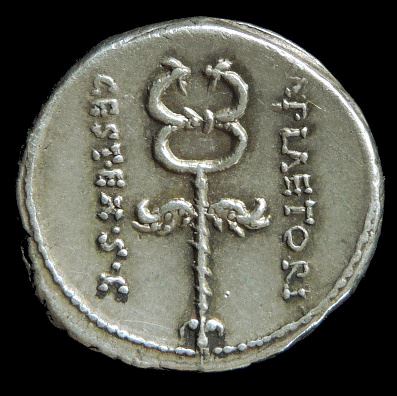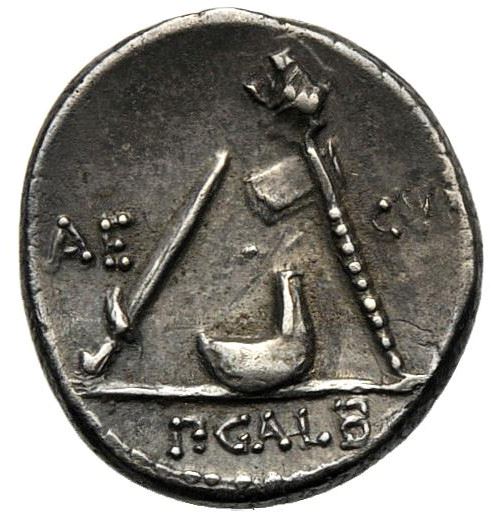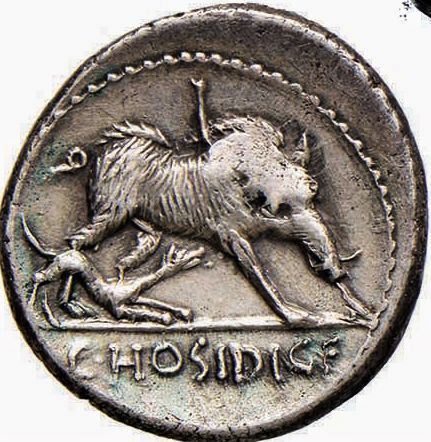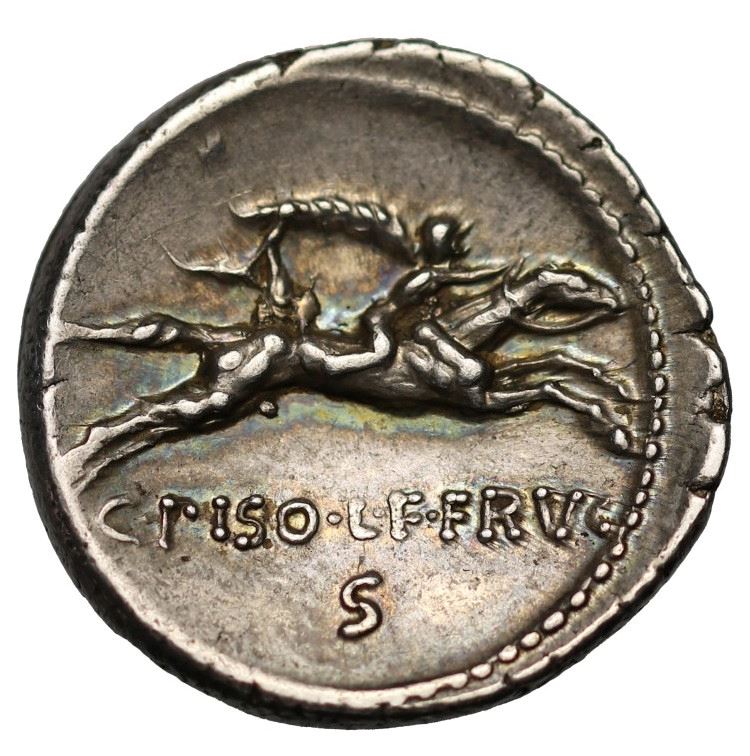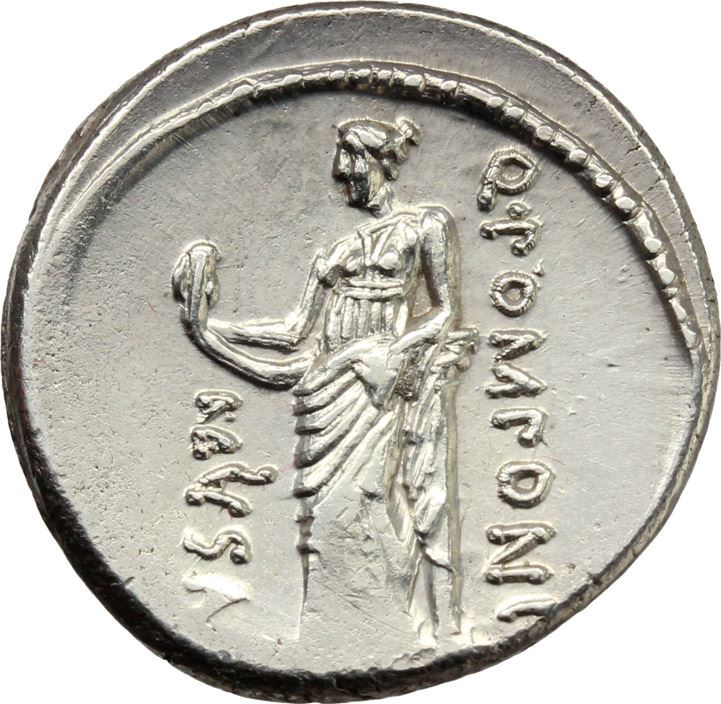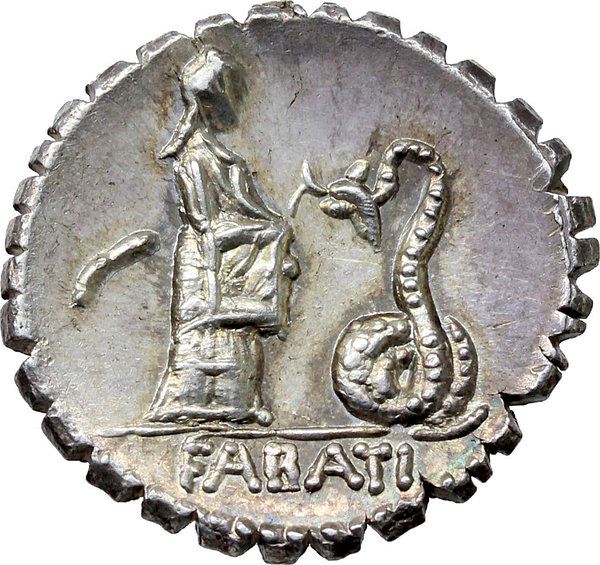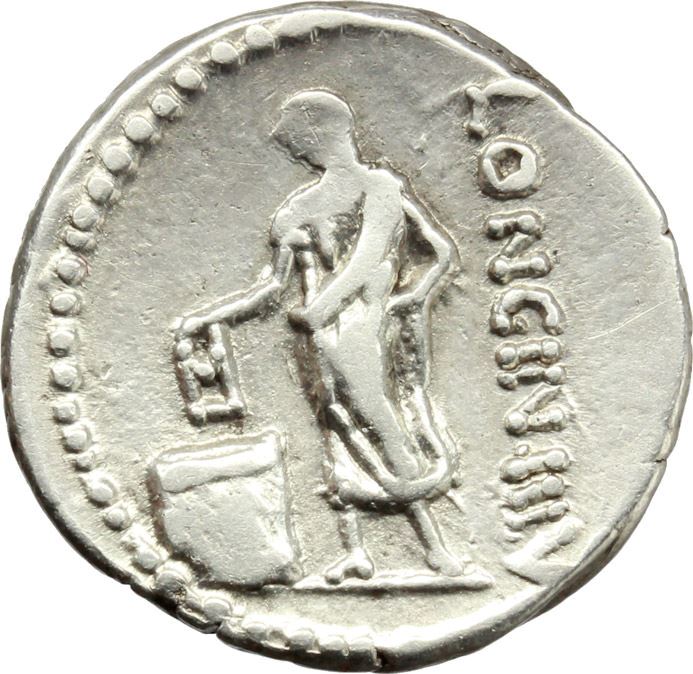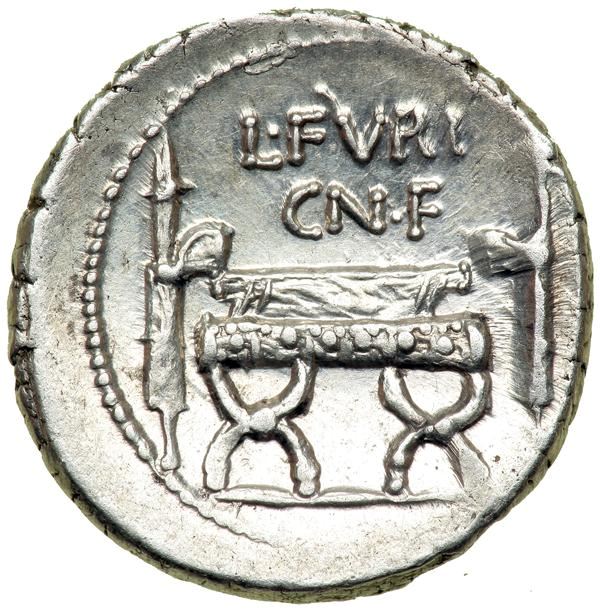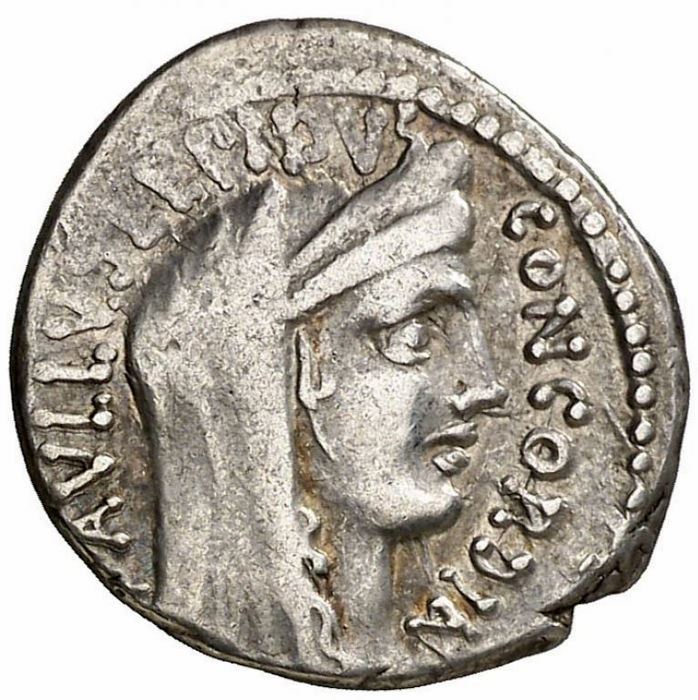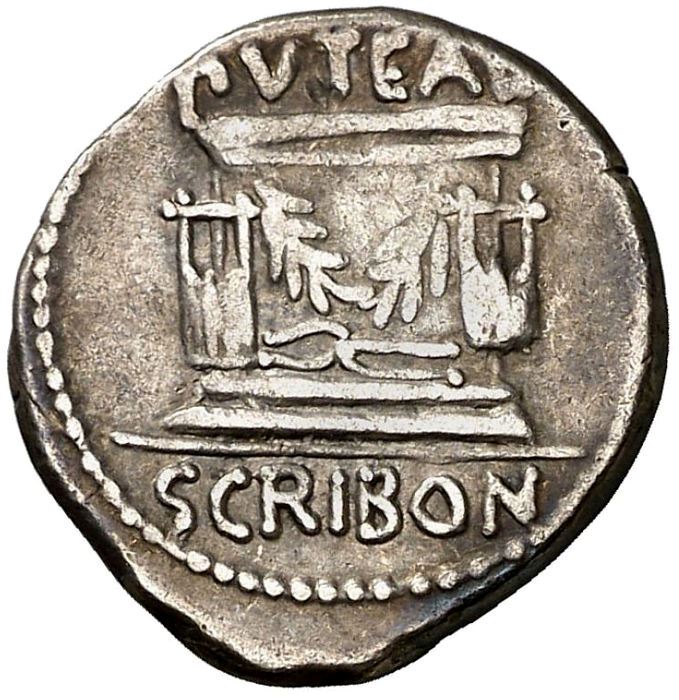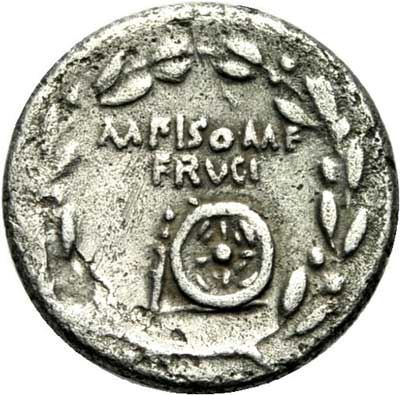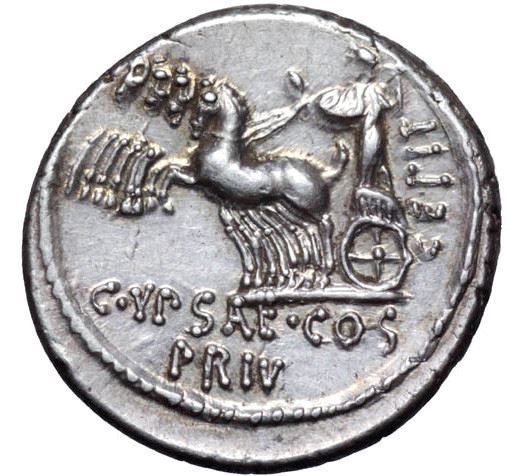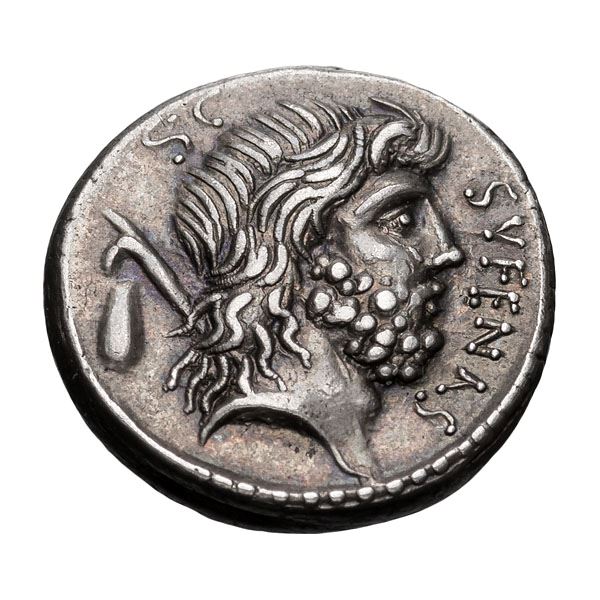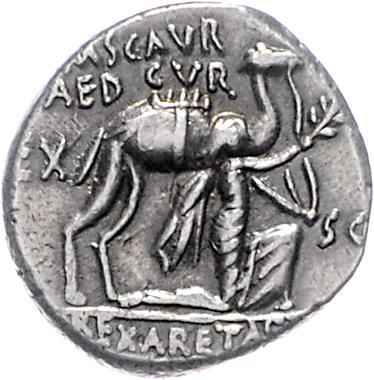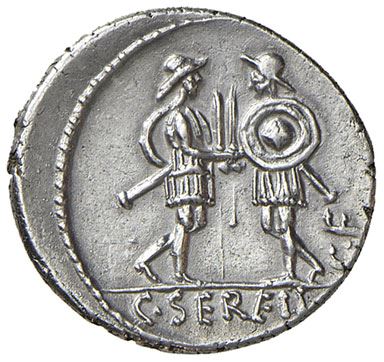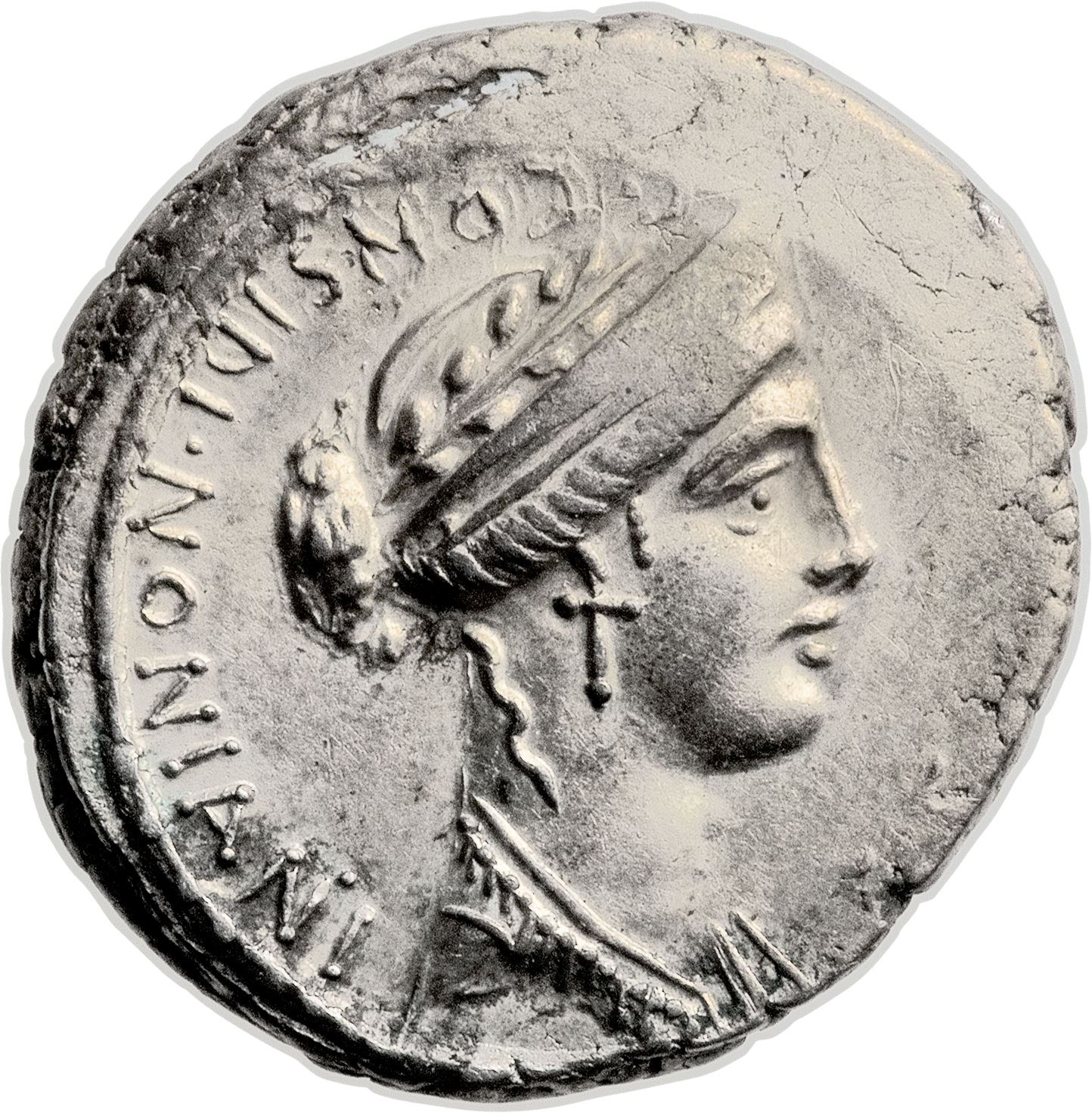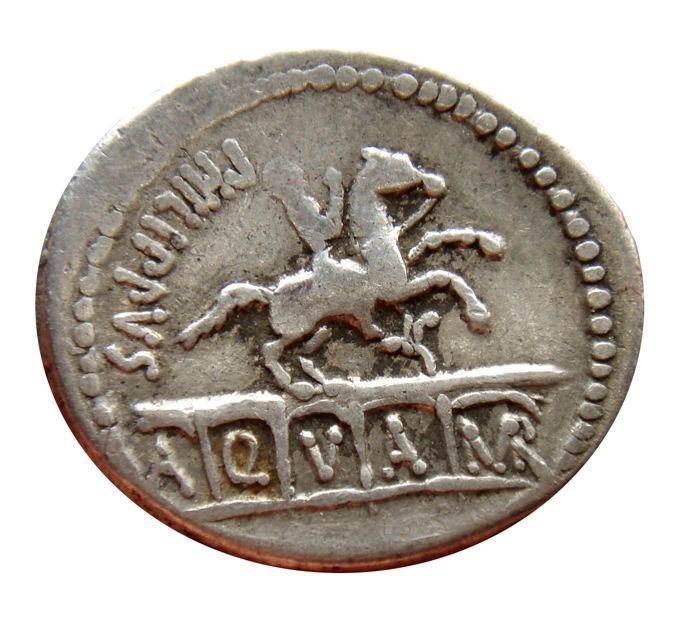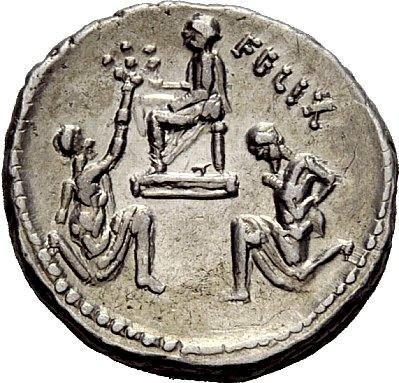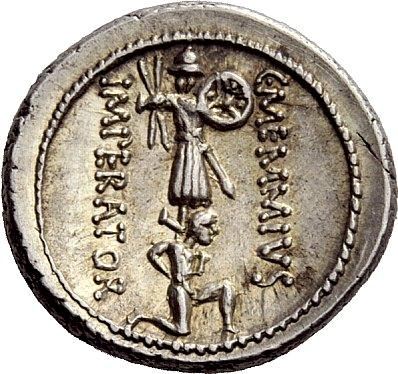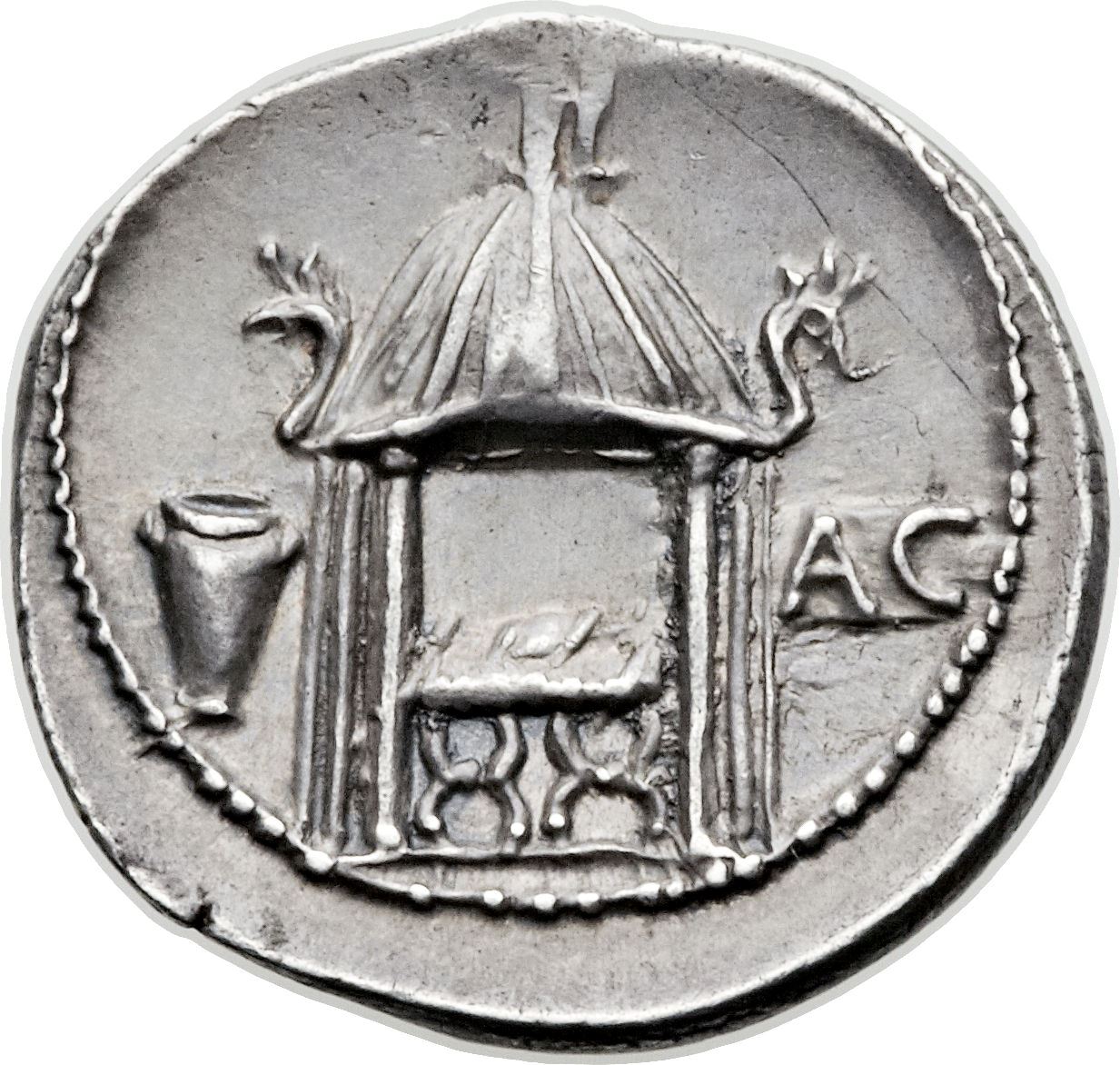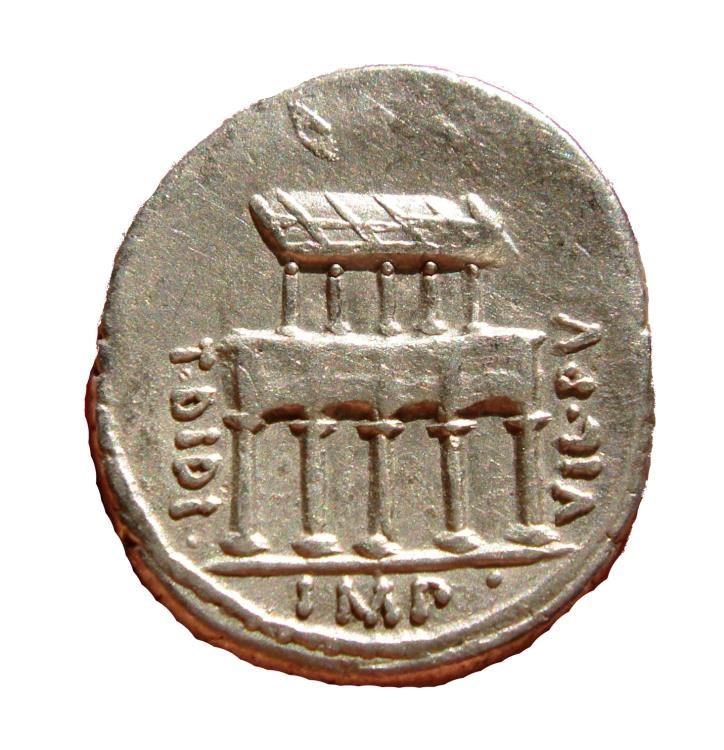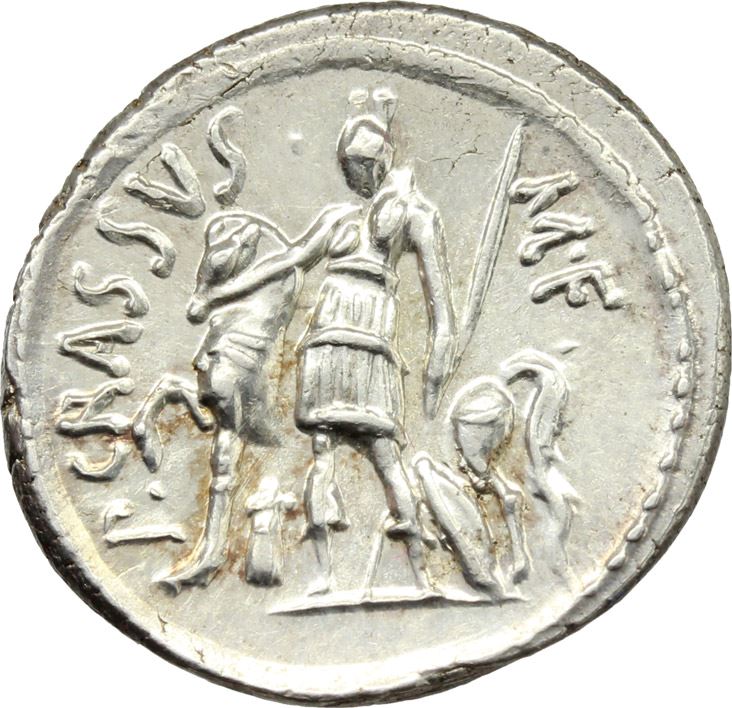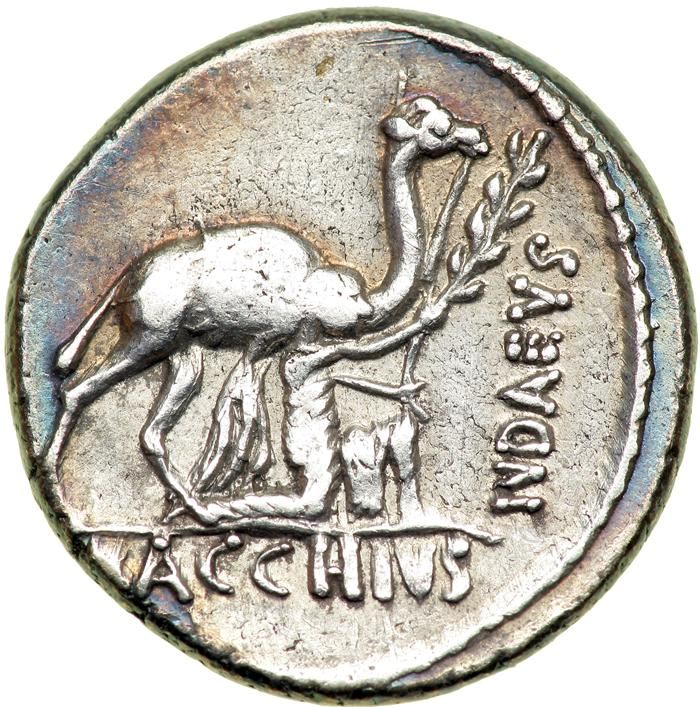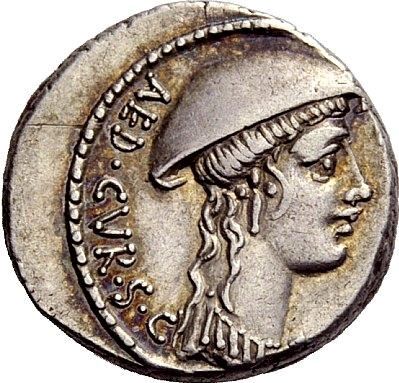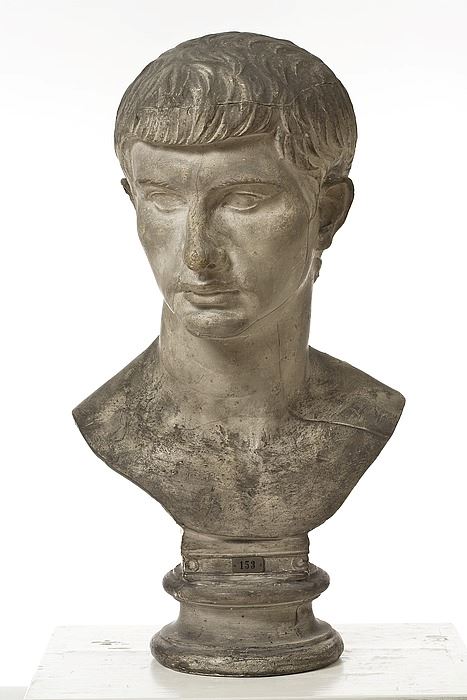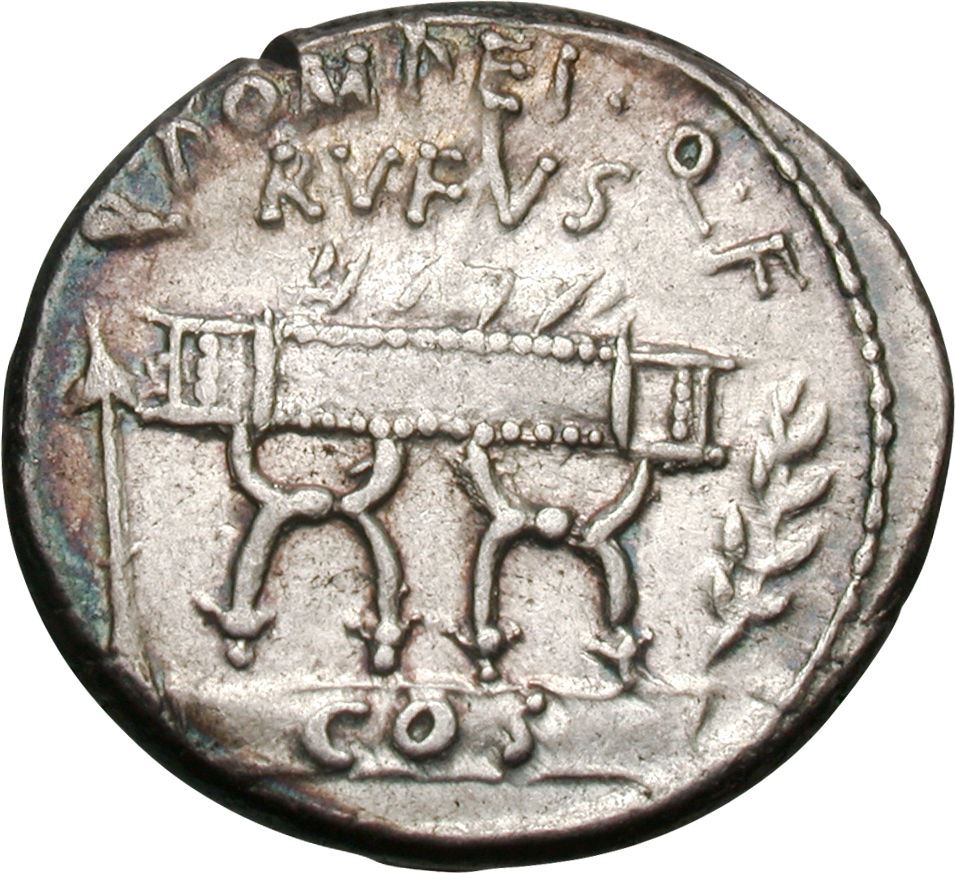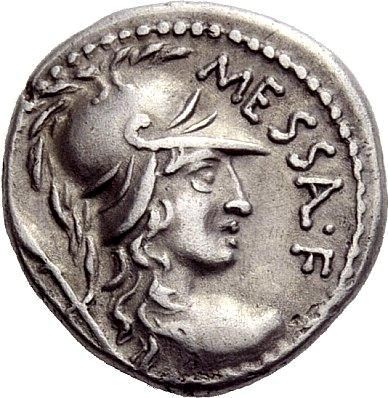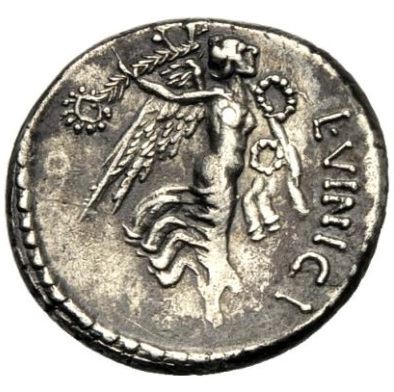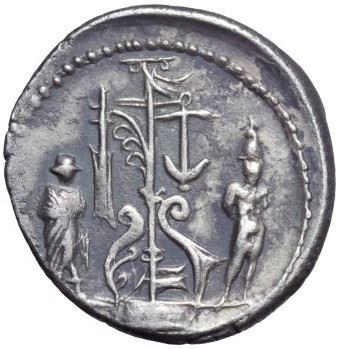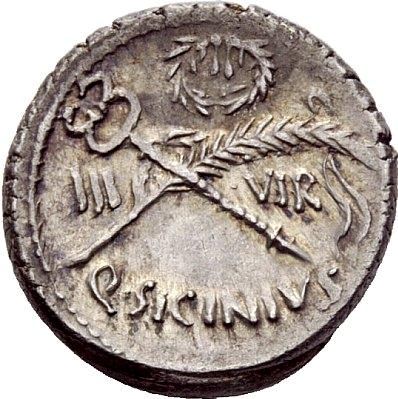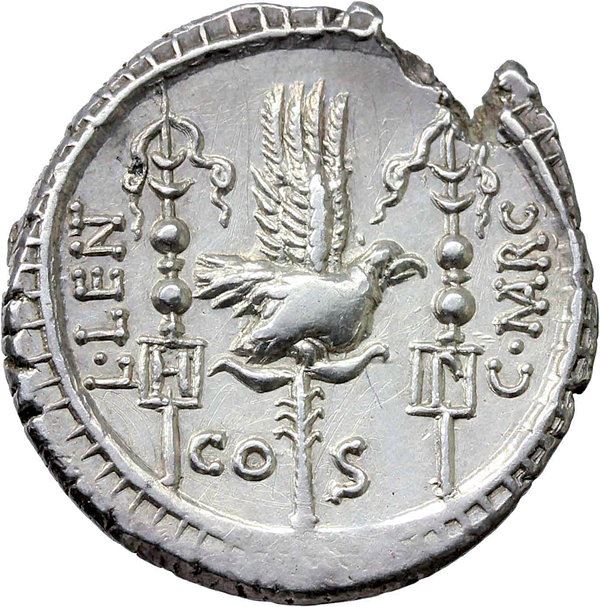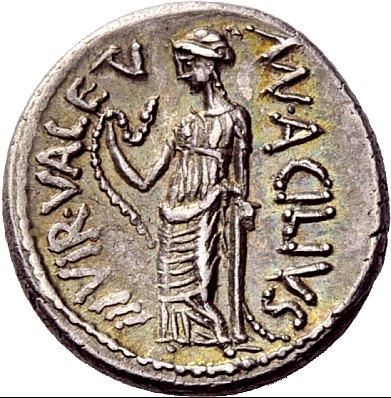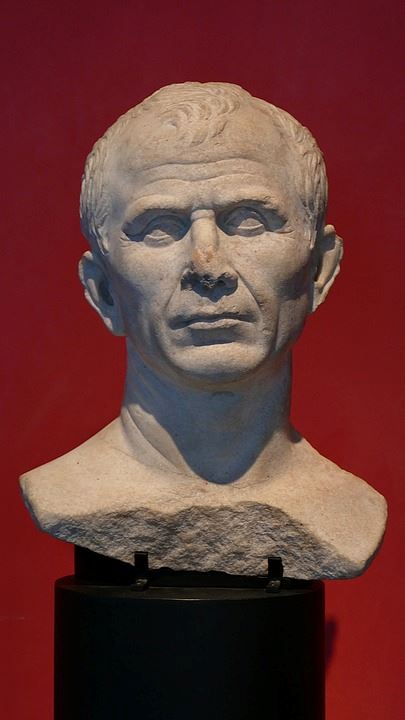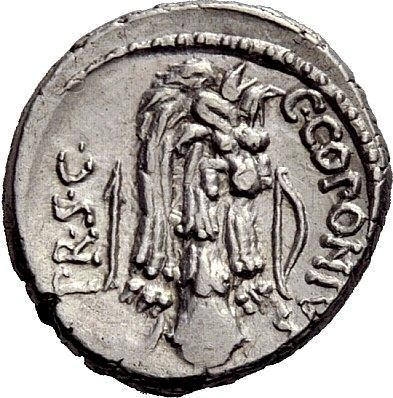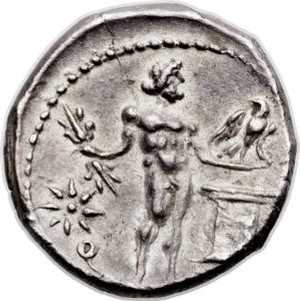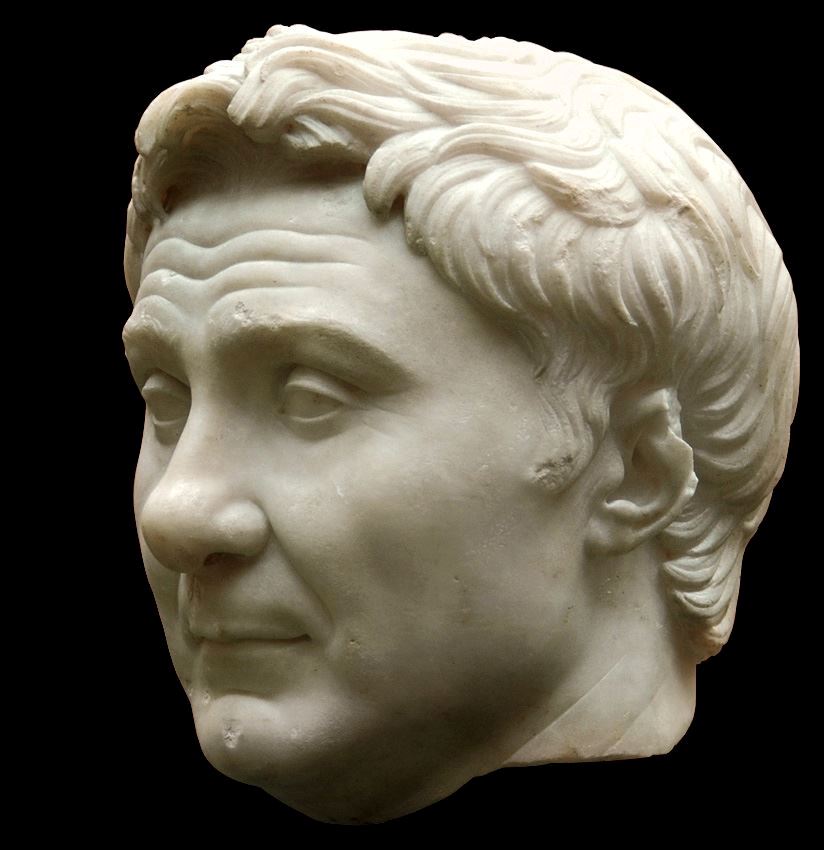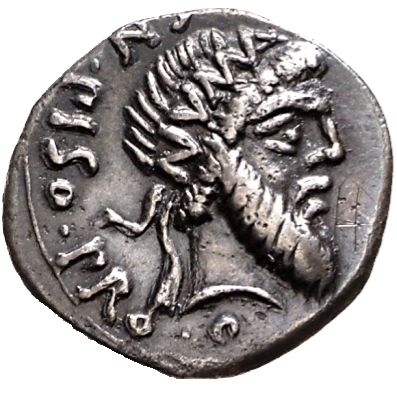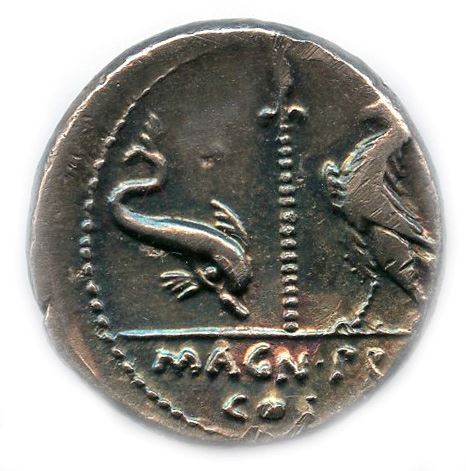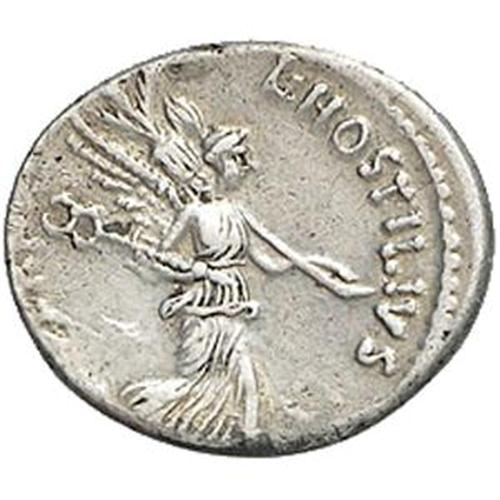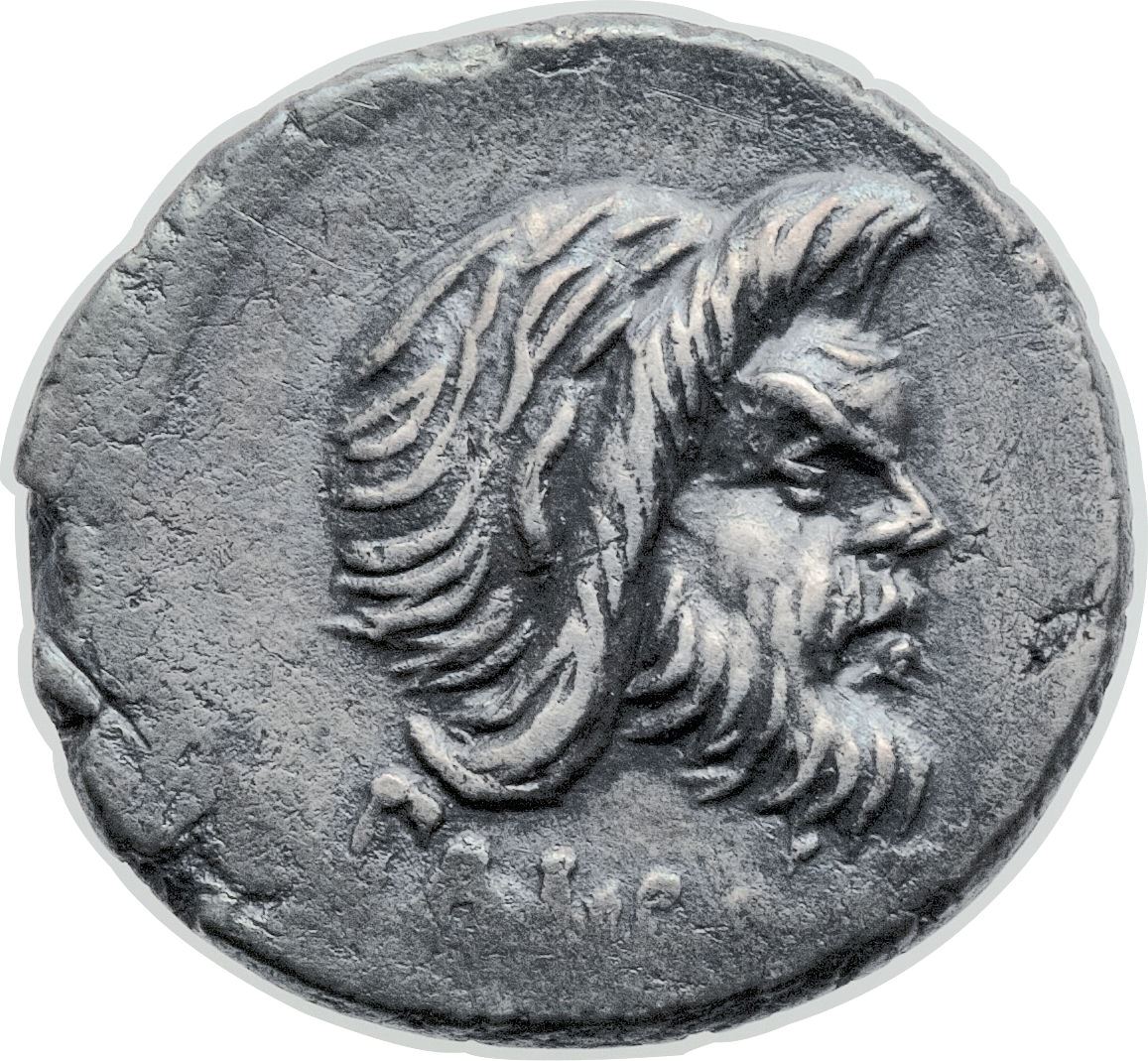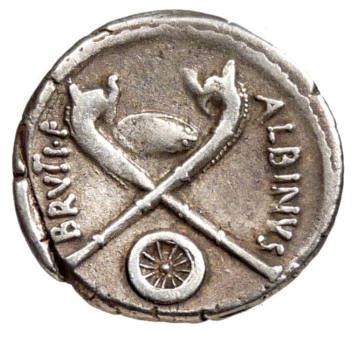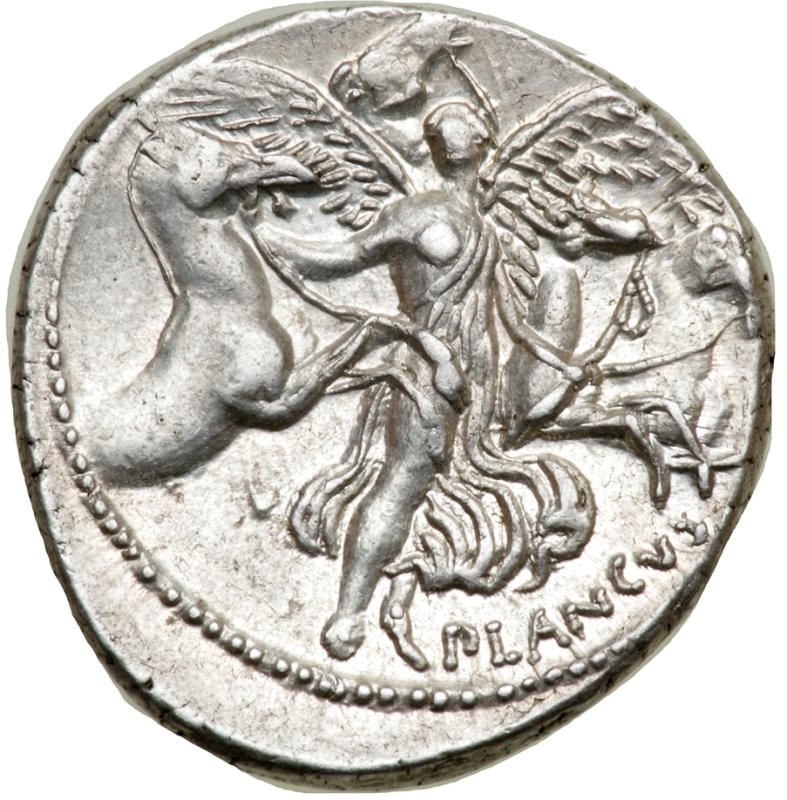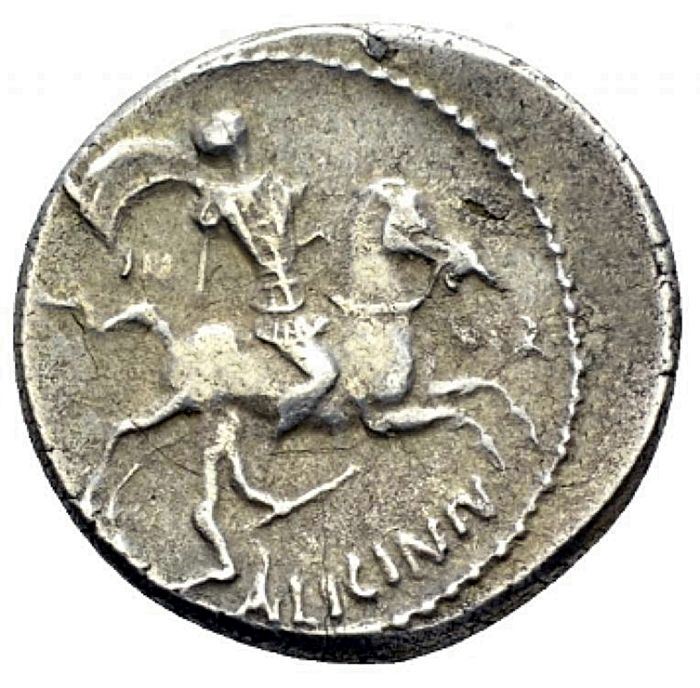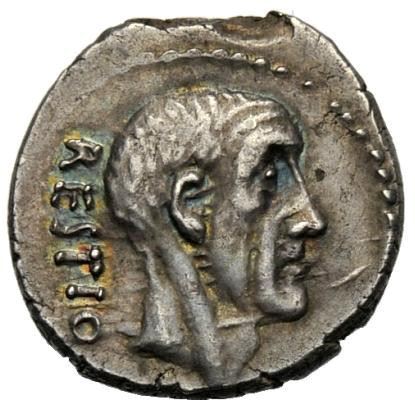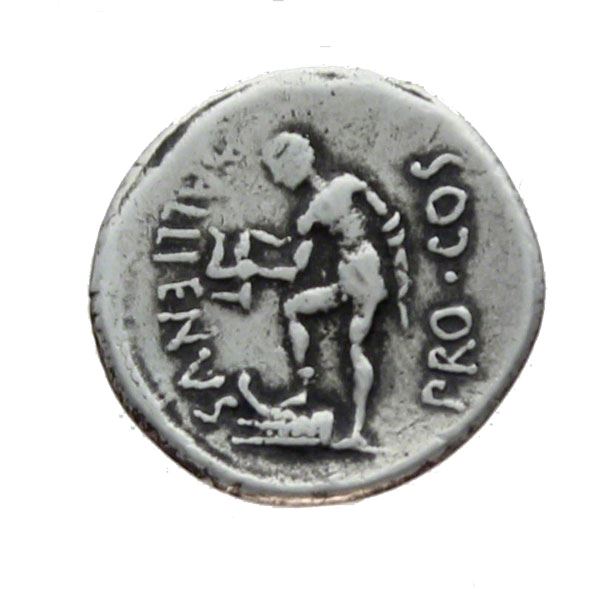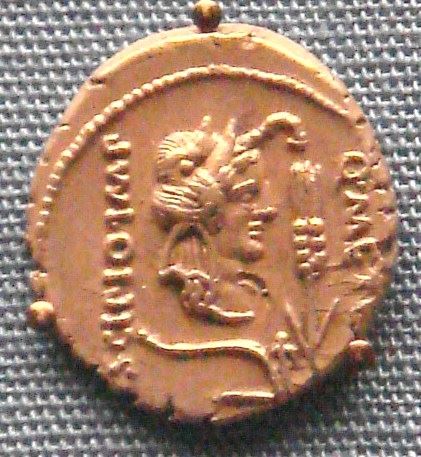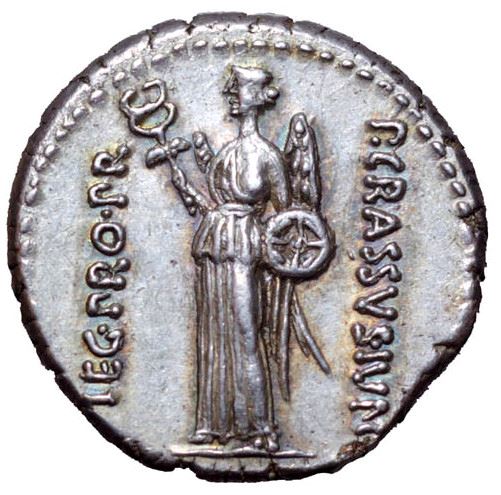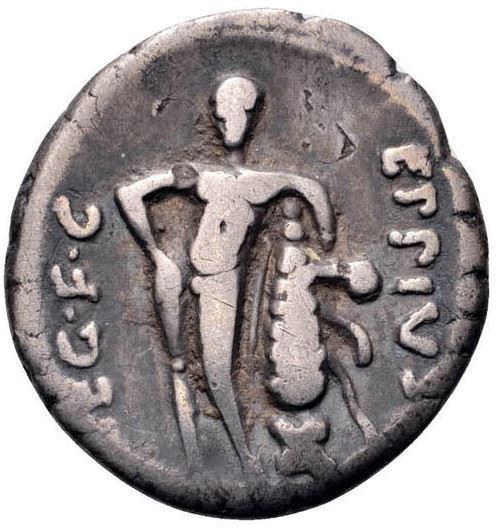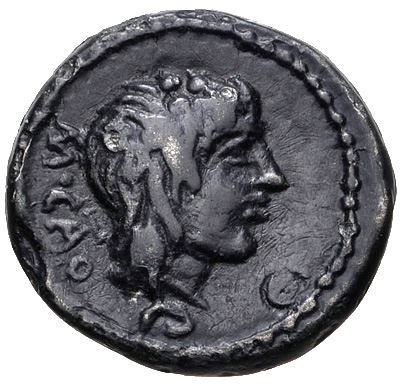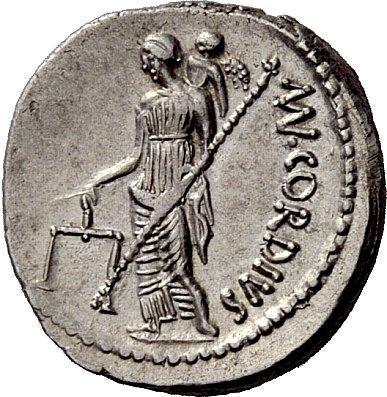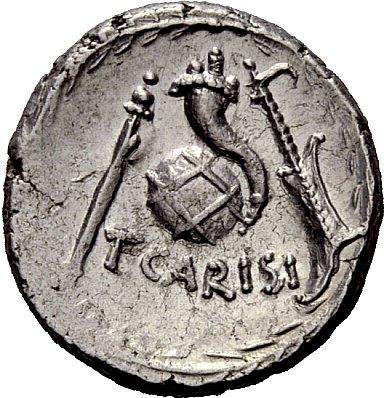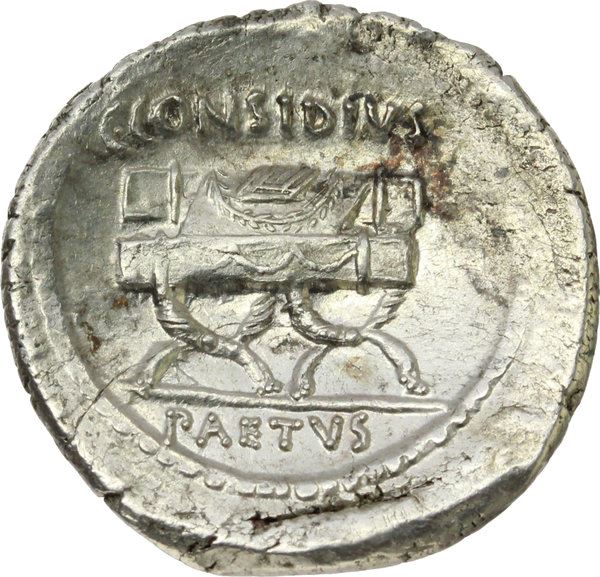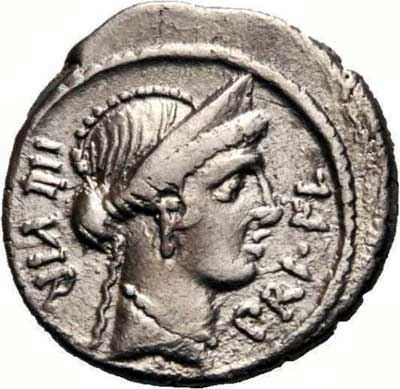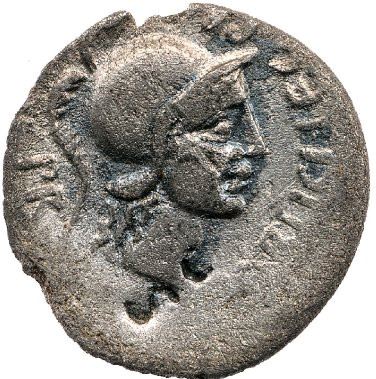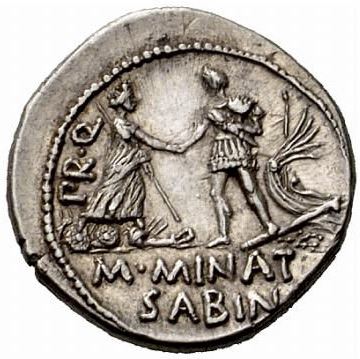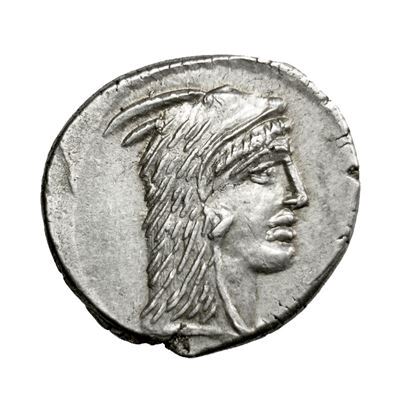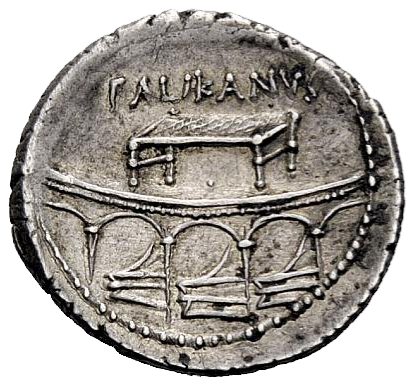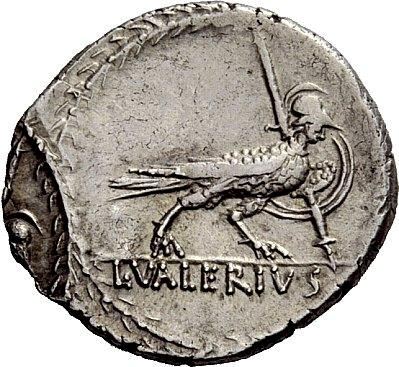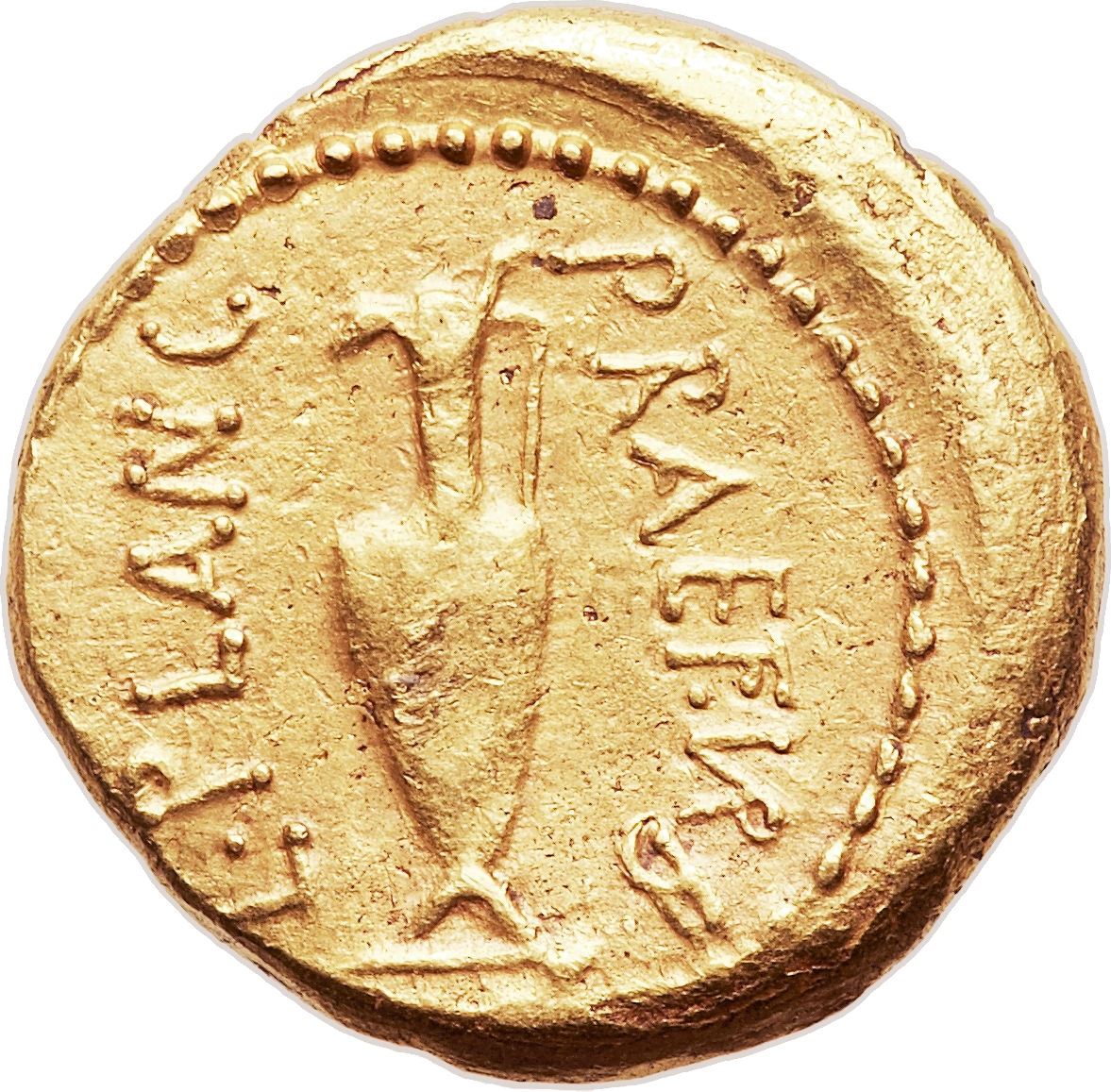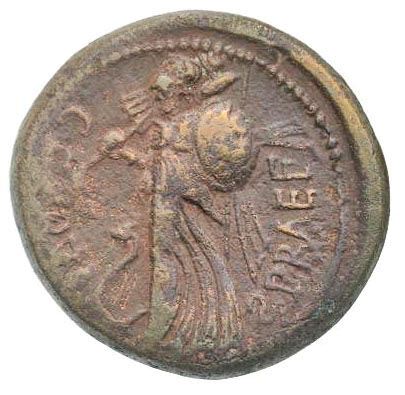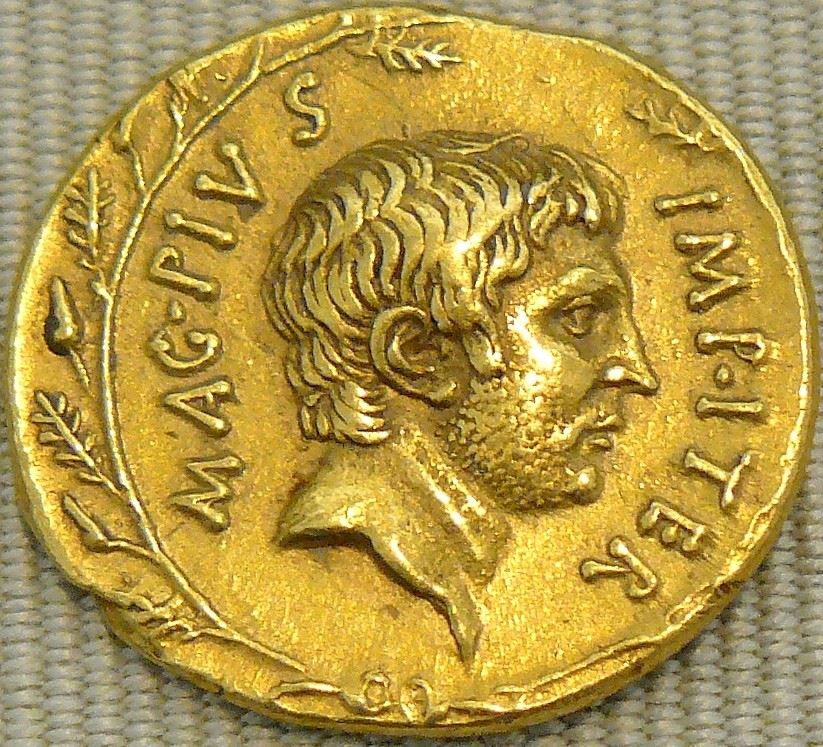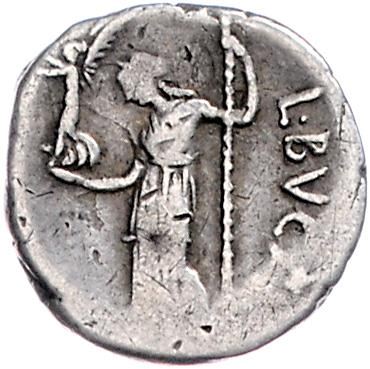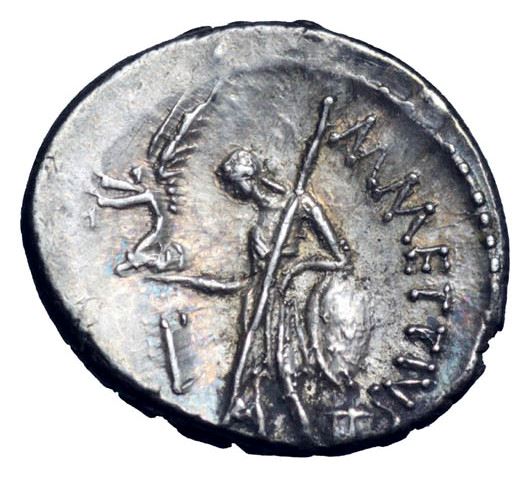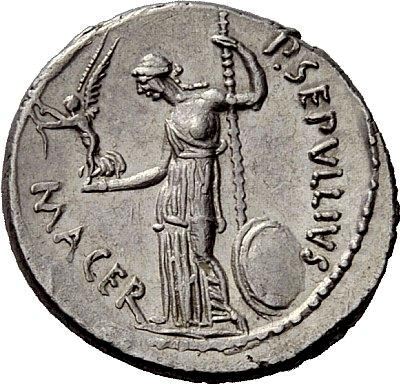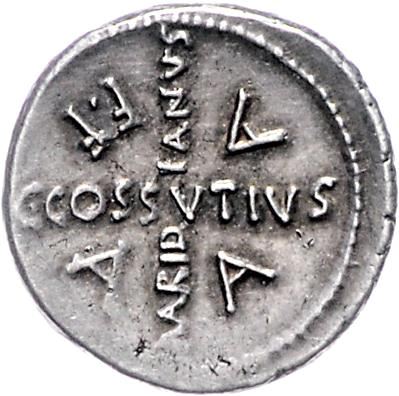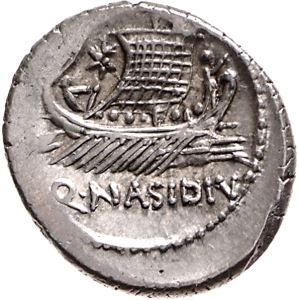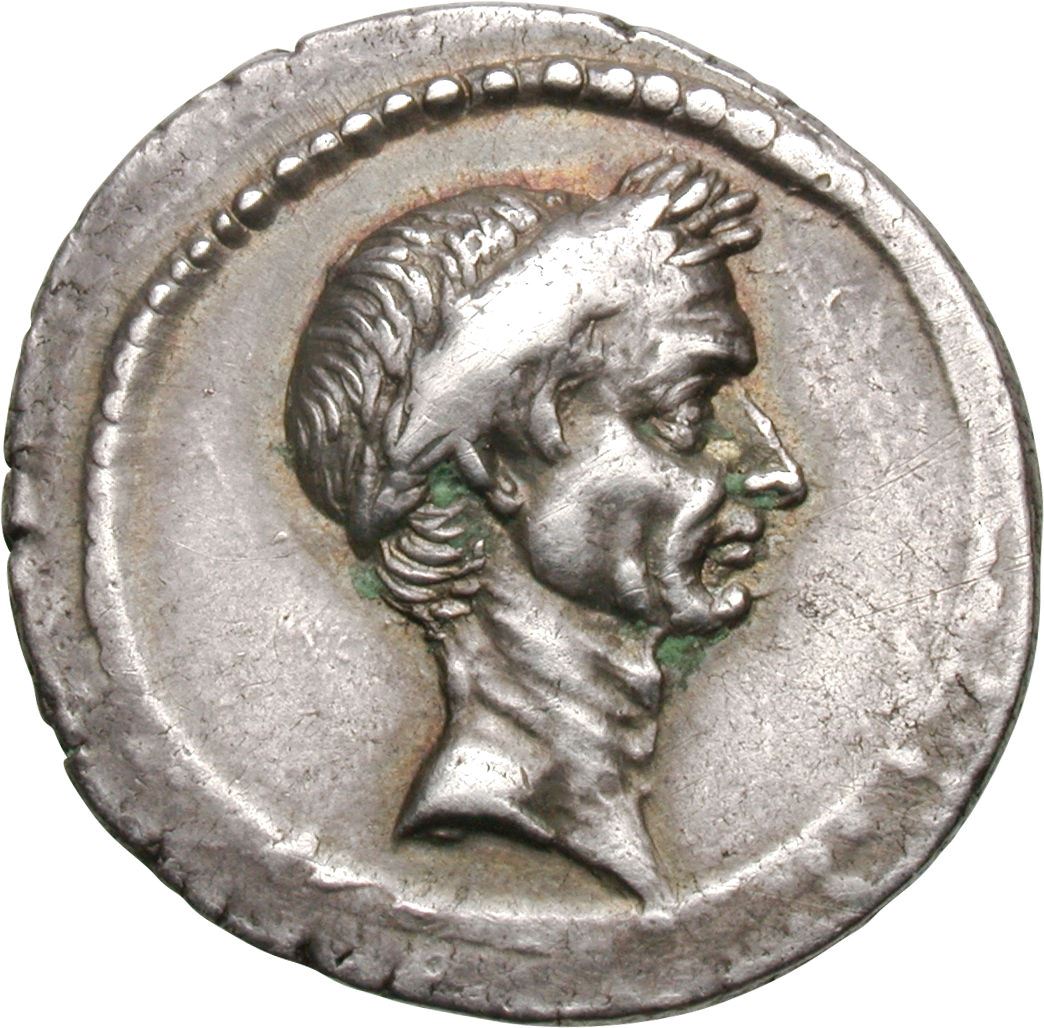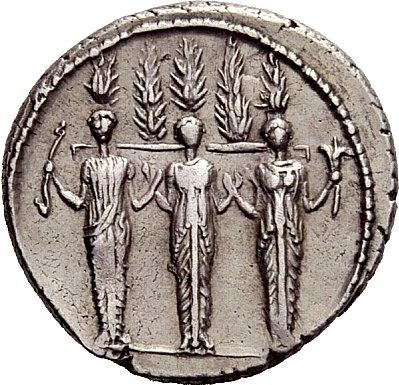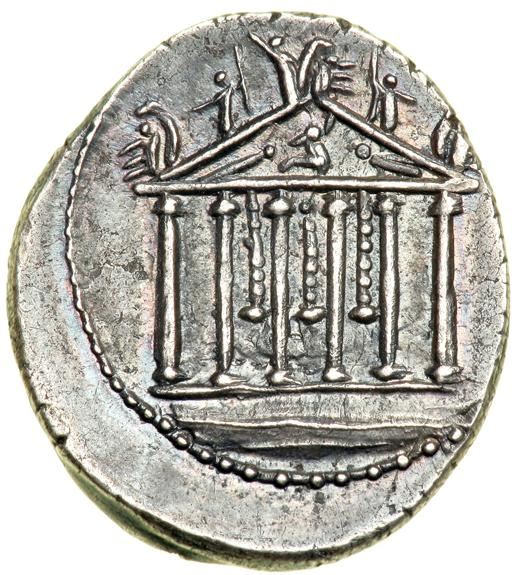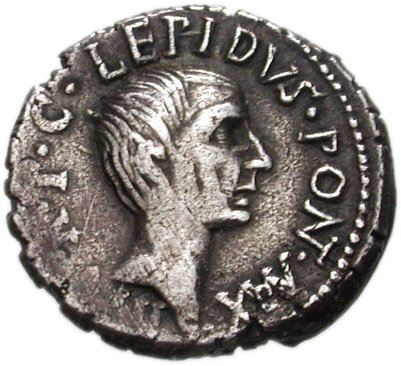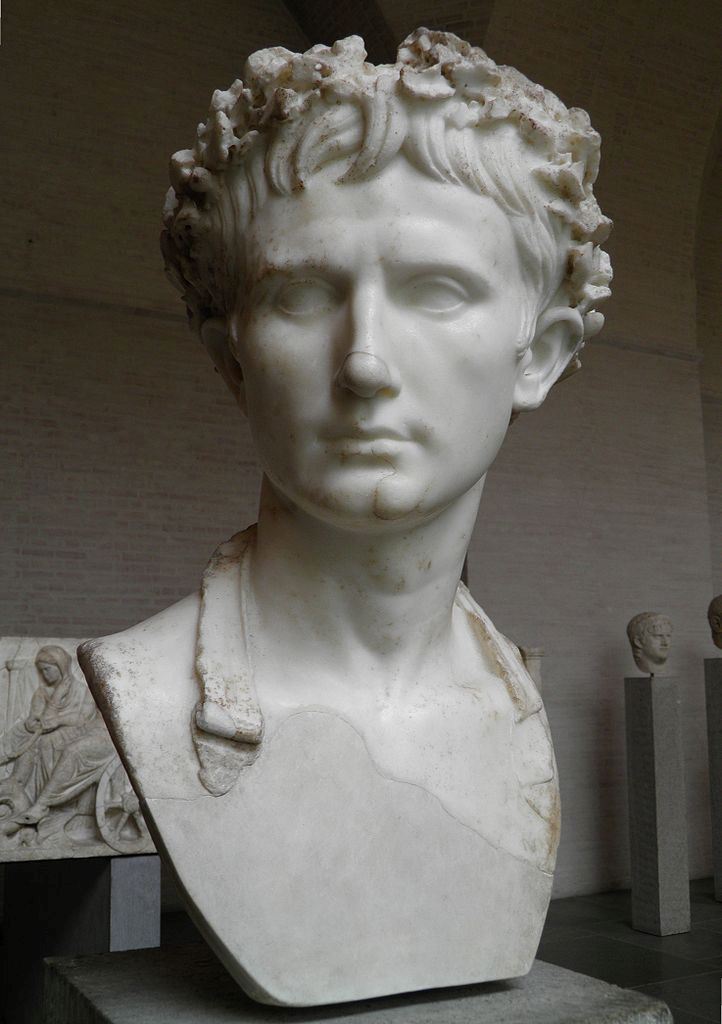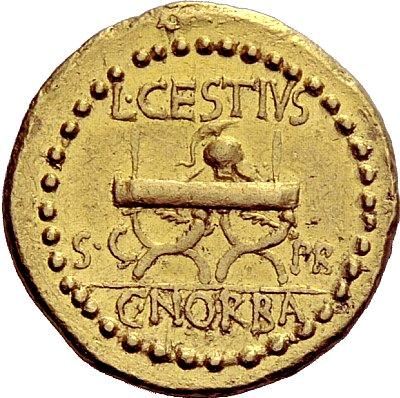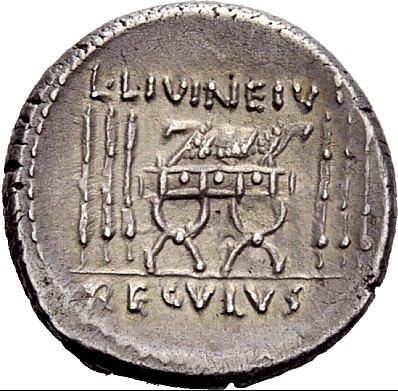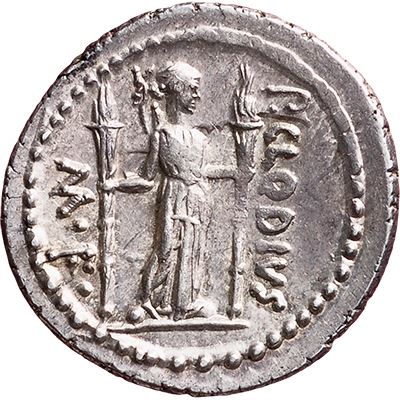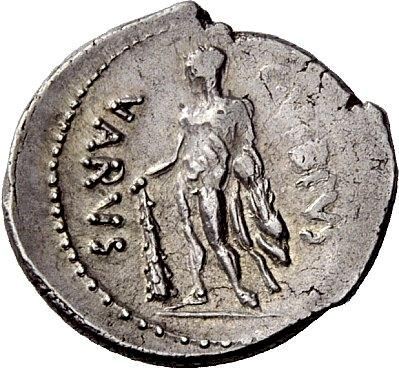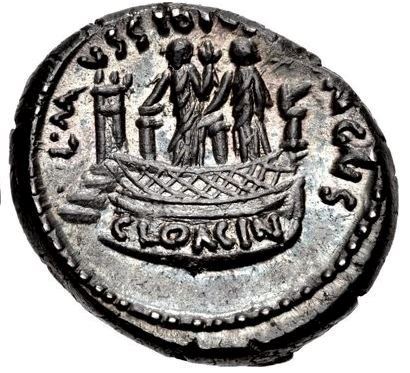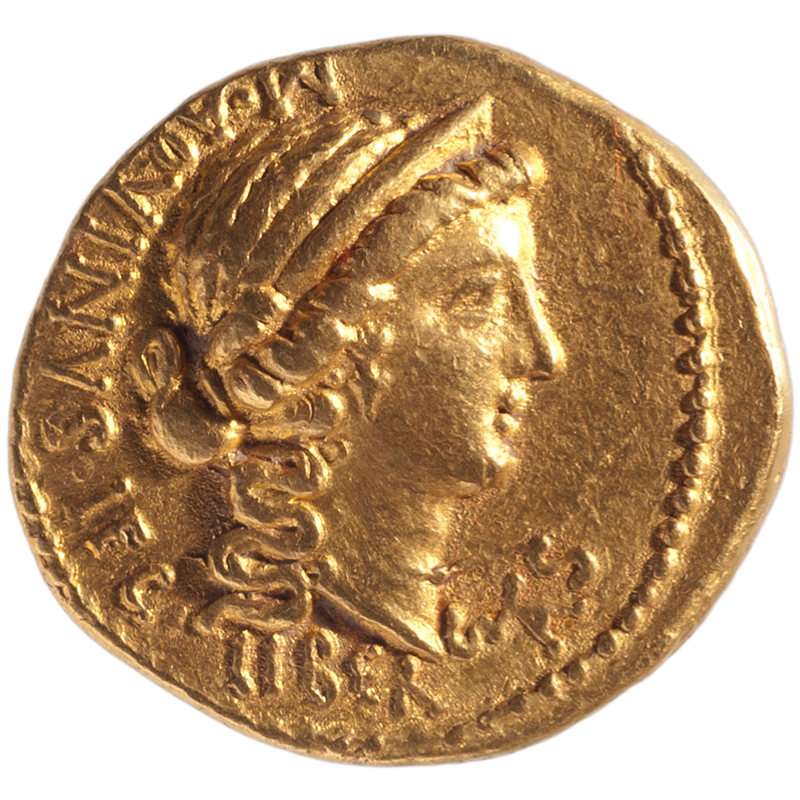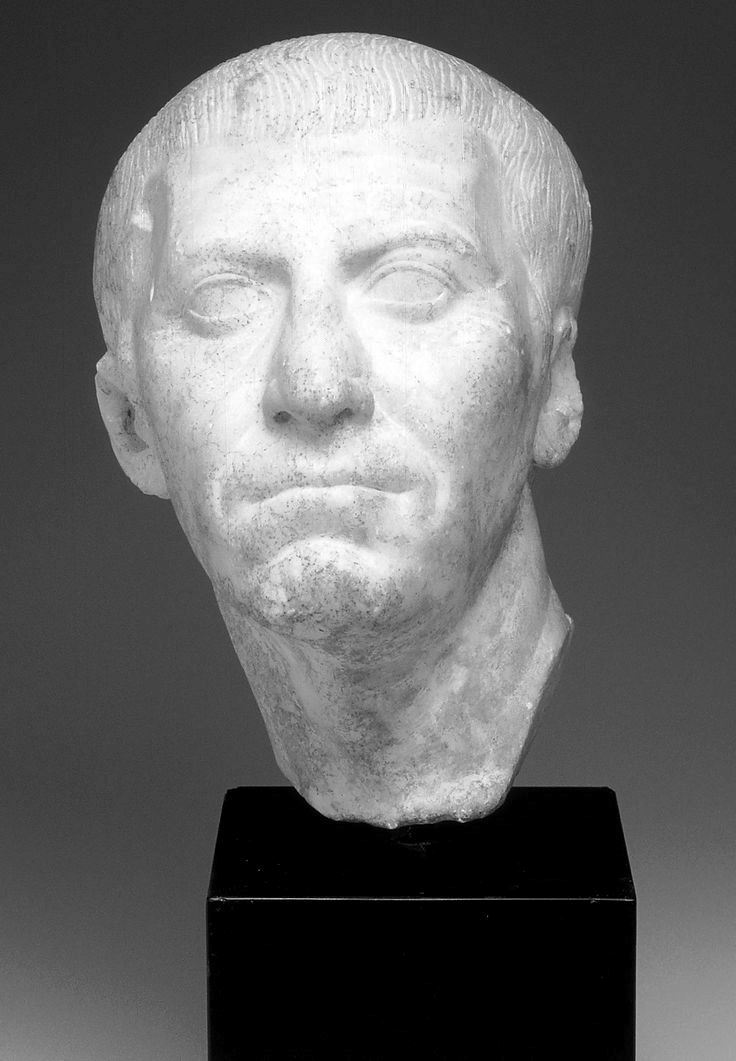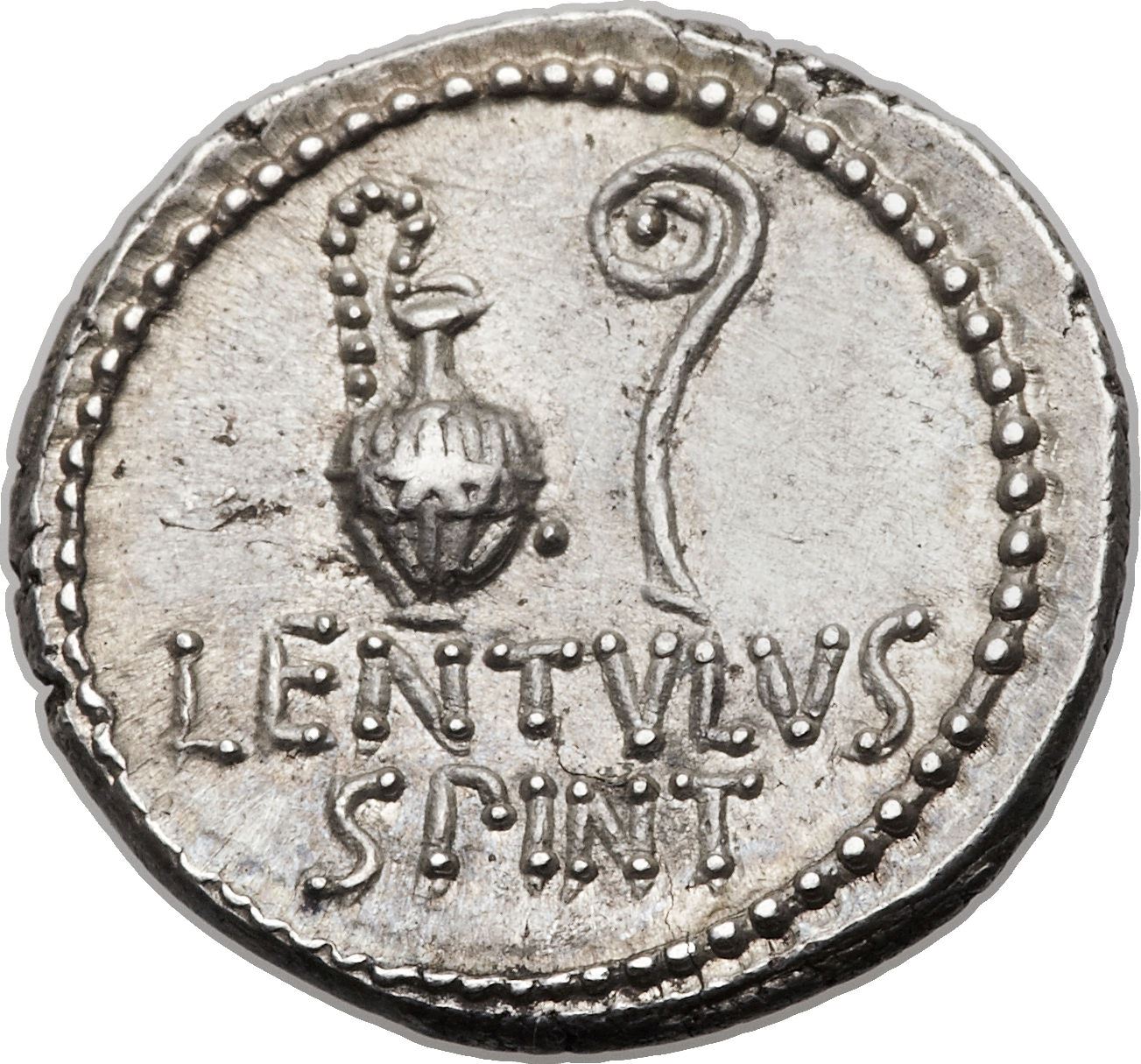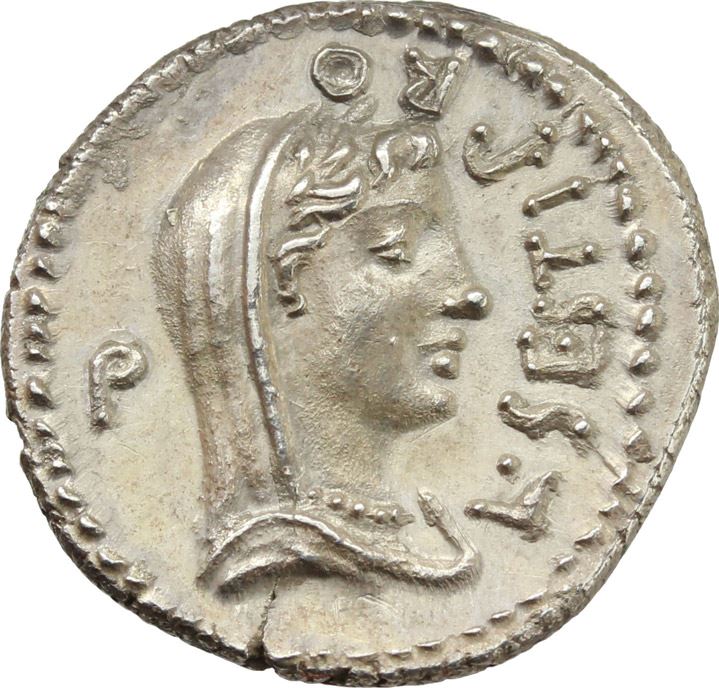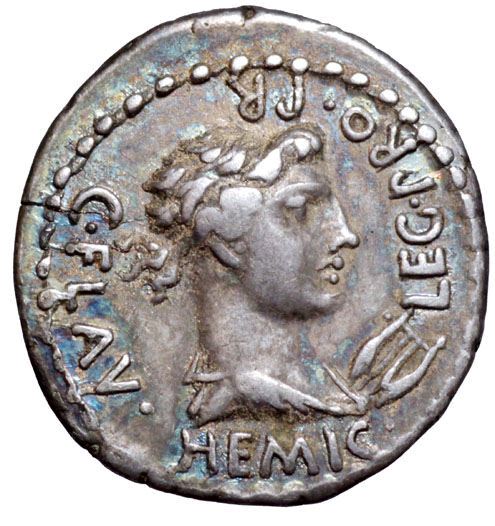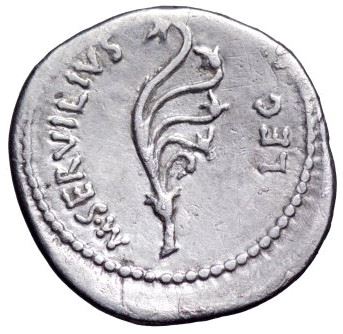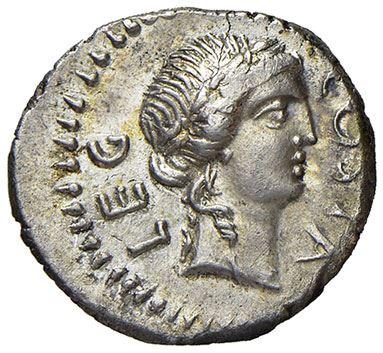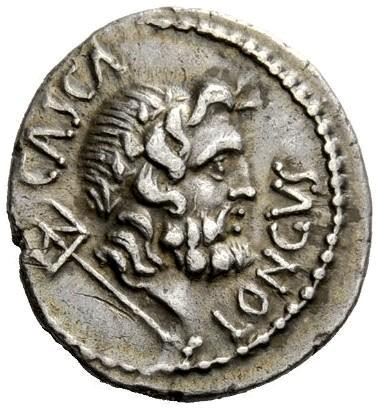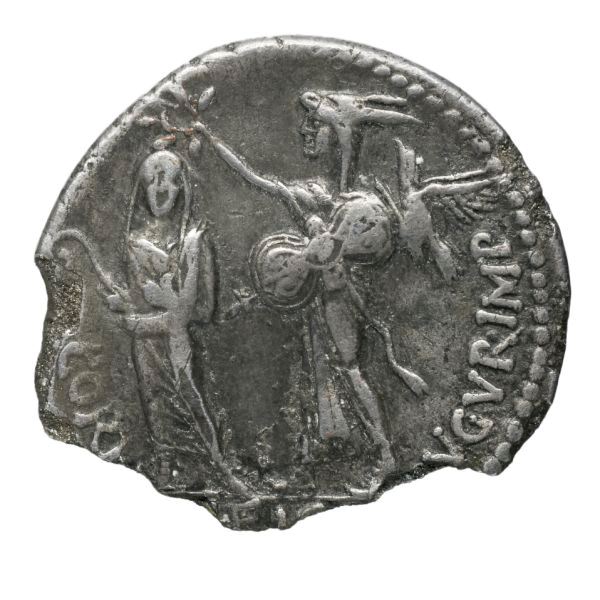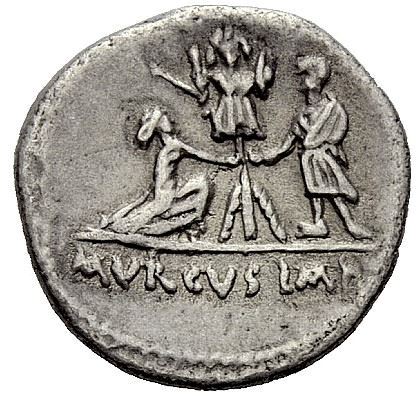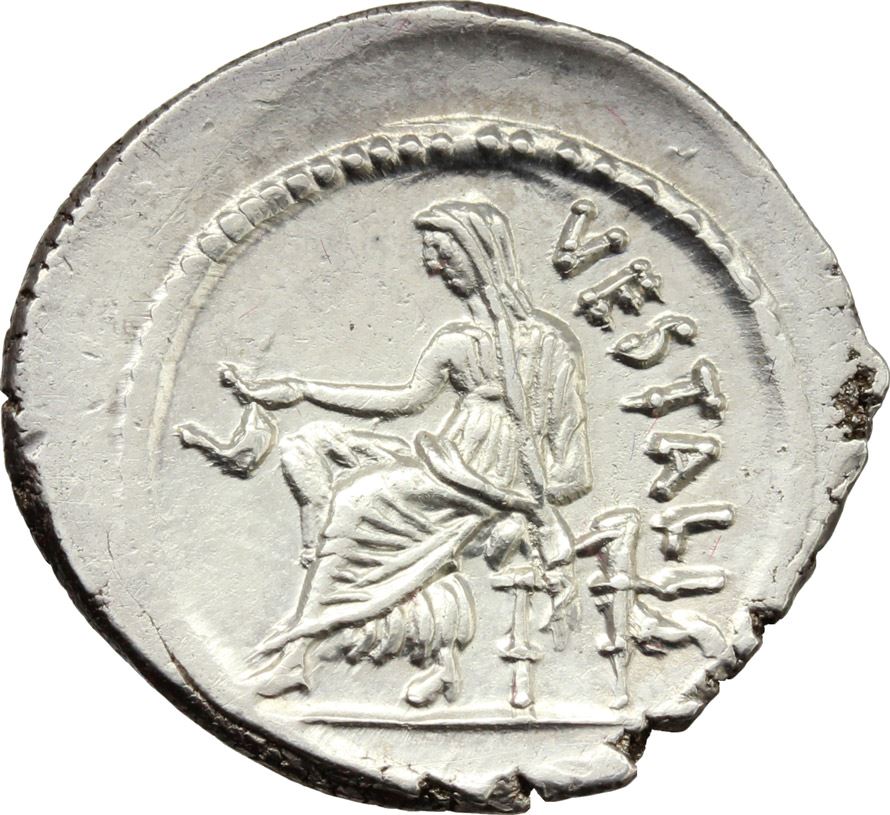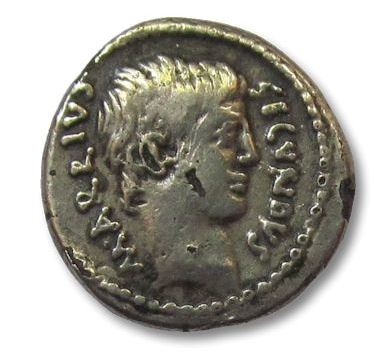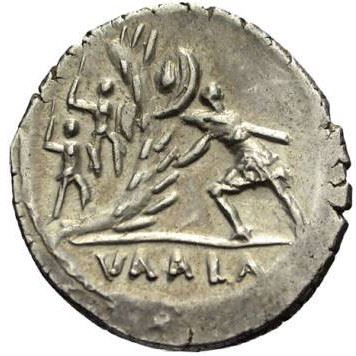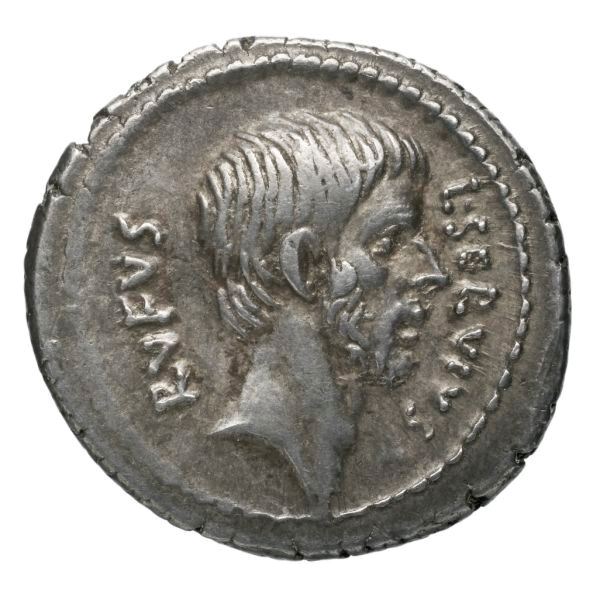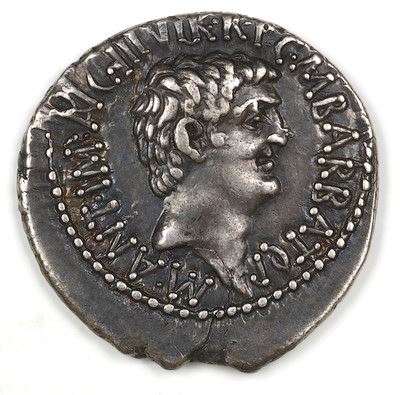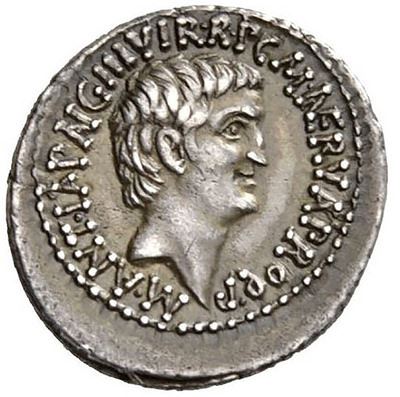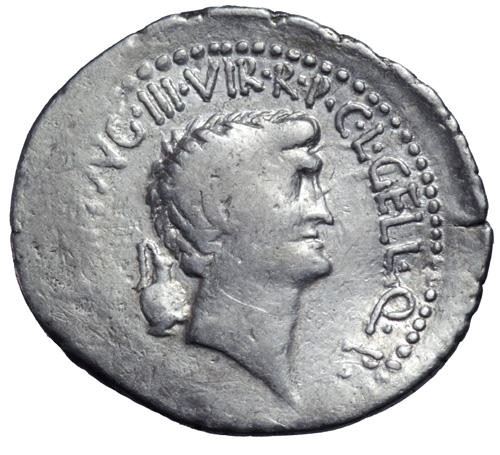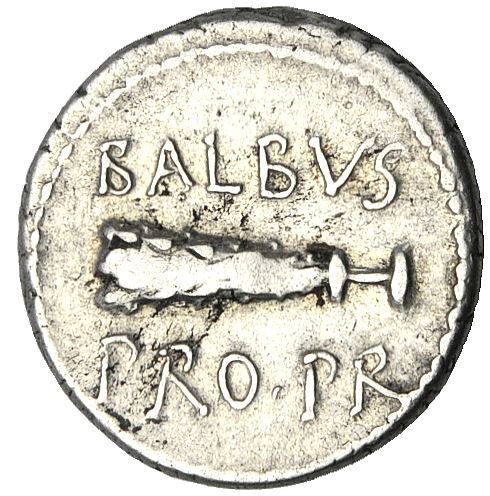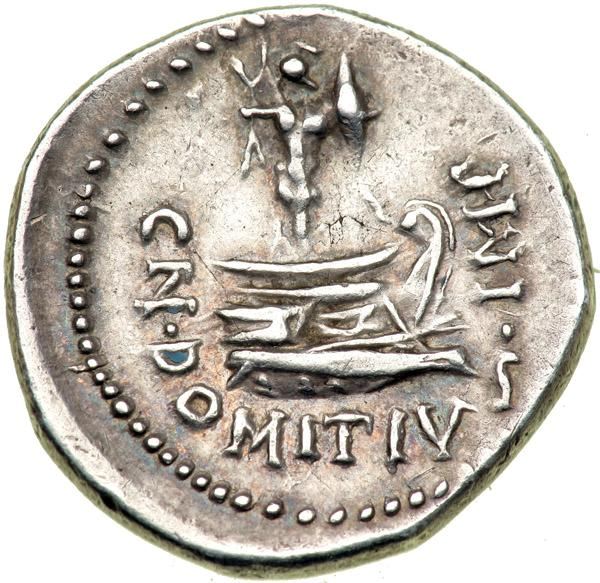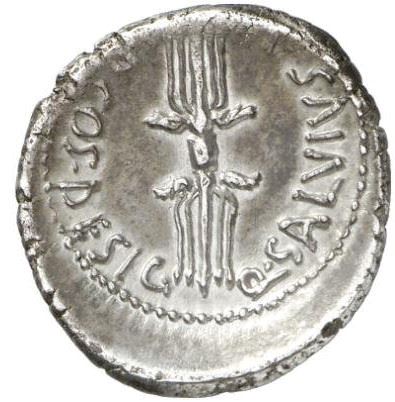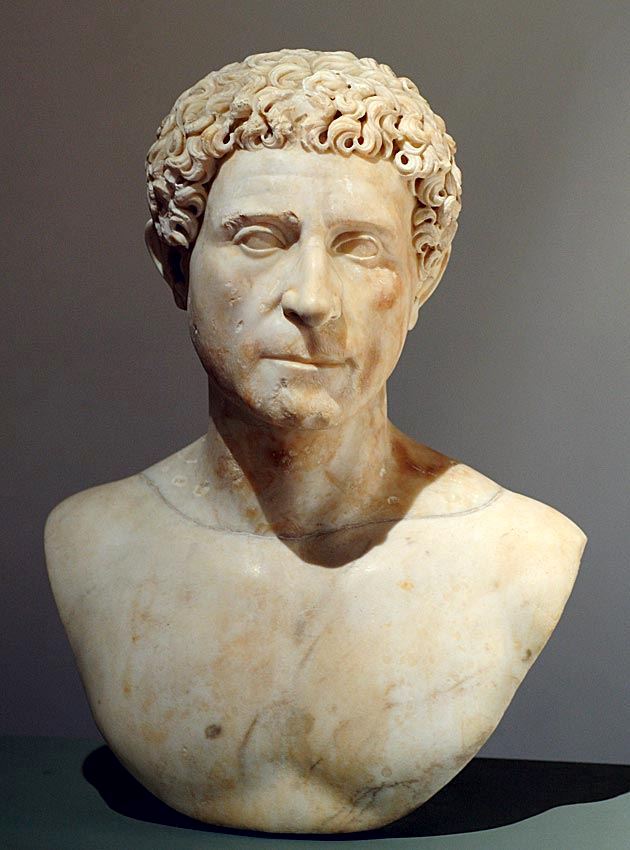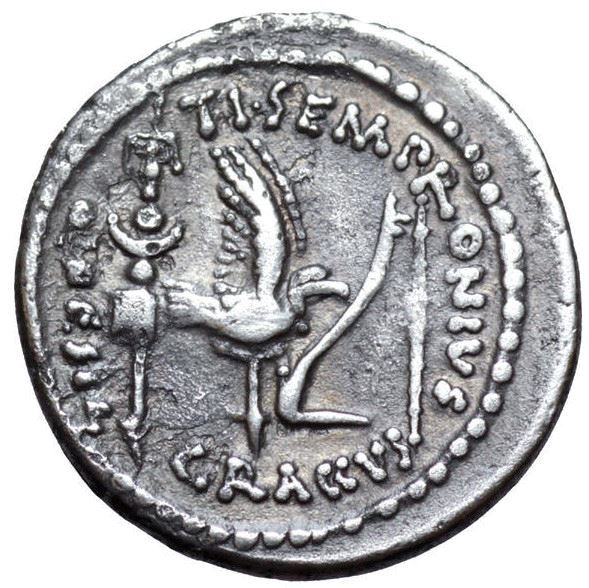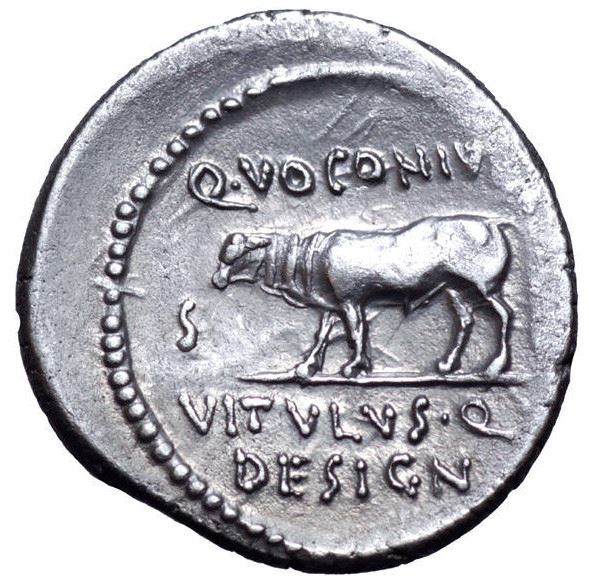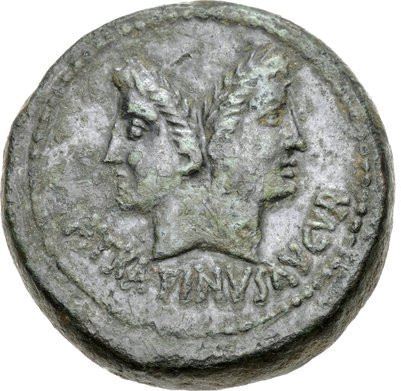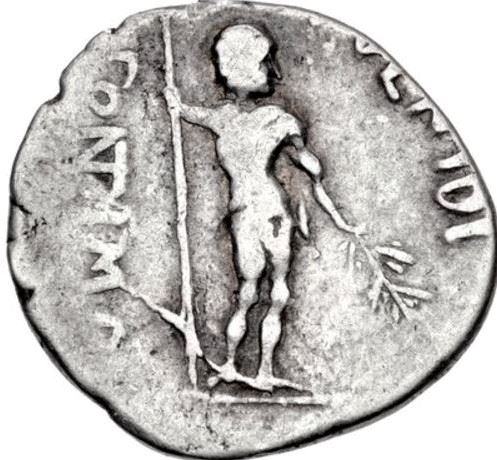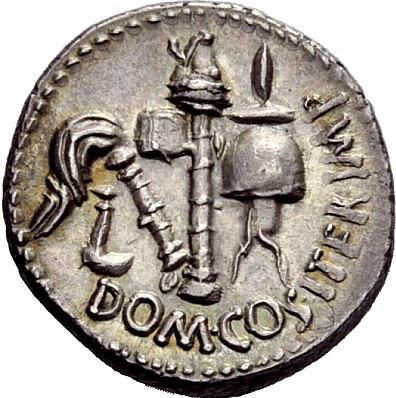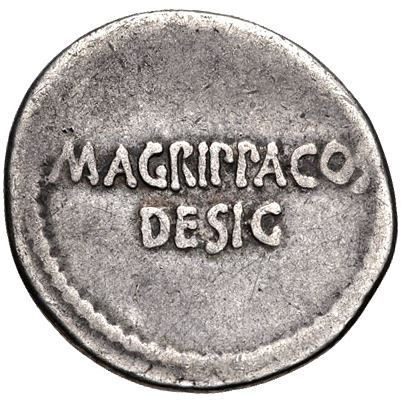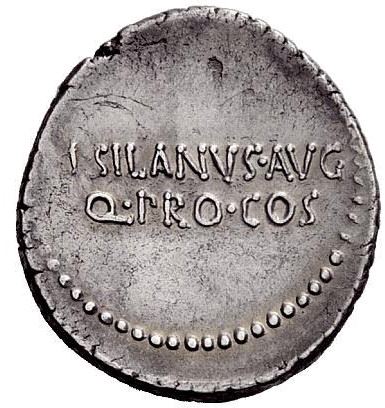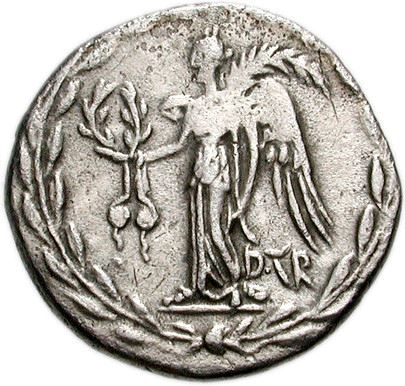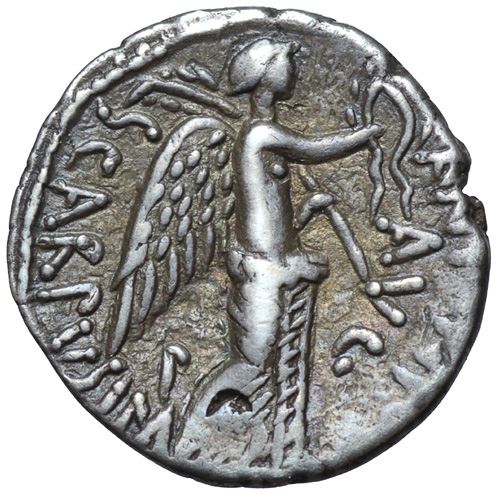Wasit was a city built in the last quarter of the 7th century AD by Al-Hajaj bin Yousif Al-Thaqafi, as an administrative centre for Iraq. Its name appears to originate from Syriac ܟܪܟܐ karḵa meaning "citadel" or "town".
It was built on the west bank of the Tigris following a flood which left the older city of Kashkar stranded on the east bank.
Wasit absorbed the population of Kashkar, which became a ghost city, only to suffer the same fate of abandonment in the 16th Century after a new flood.
It was built on the west bank of the Tigris following a flood which left the older city of Kashkar stranded on the east bank.
Wasit absorbed the population of Kashkar, which became a ghost city, only to suffer the same fate of abandonment in the 16th Century after a new flood.
Modern location: Ruins in south east of Kut in eastern Iraq
Abu Abdallah Muhammad ibn Abdallah al-Mansur (Arabic: أبو عبد الله محمد بن عبد الله المنصور), better known by his regnal name al-Mahdi (المهدي, "He who is guided by God"), was the third Abbasid Caliph who reigned from 775 to his death in 785. He succeeded his father, al-Mansur.
Al-Mahdi reigned for ten years. He imprisoned his most trusted vizier Ya'qub ibn Dawud, and in the year 167 ...
Al-Mahdi reigned for ten years. He imprisoned his most trusted vizier Ya'qub ibn Dawud, and in the year 167 ...
Gelon was a 5th-century BC ruler of Gela and Syracuse and first of the Deinomenid rulers.
Originally a priest, Gelon fought in a number of the conflicts on Sicily and earned a reputation as a formidable soldier - and became commander of the cavalry for Hippocrates, tyrant of Gela.
In 491 BC Gelon seized power in Gela with the help of the army - and in 485 BC he conquered Syr...
Originally a priest, Gelon fought in a number of the conflicts on Sicily and earned a reputation as a formidable soldier - and became commander of the cavalry for Hippocrates, tyrant of Gela.
In 491 BC Gelon seized power in Gela with the help of the army - and in 485 BC he conquered Syr...
Seleukos I was one of the Diadochi - 'successors' to Alexander III 'the Great'.
Having previously served as an infantry general under Alexander the Great, he eventually assumed the title of basileus and established the Seleucid Empire over much of the territory in the Near East which Alexander had conquered.
Seleucus founded a number of new cities during his reign, including ...
Having previously served as an infantry general under Alexander the Great, he eventually assumed the title of basileus and established the Seleucid Empire over much of the territory in the Near East which Alexander had conquered.
Seleucus founded a number of new cities during his reign, including ...
Augustus was was the founder of the Roman Principate and is considered the first Roman emperor, controlling the Roman Empire from 27 BC until his death in AD 14.
He was born Gaius Octavius, and when his maternal great-uncle Julius Caesar was assassinated in 44 BC, Octavius was named as his adopted son and heir.
Augustus restored the outward façade of the free Republic. In re...
He was born Gaius Octavius, and when his maternal great-uncle Julius Caesar was assassinated in 44 BC, Octavius was named as his adopted son and heir.
Augustus restored the outward façade of the free Republic. In re...
Kanishka I was the emperor of the Kushan dynasty in the second century (c. AD 127–150). He is famous for his military, political, and spiritual achievements.
A descendant of Kushan empire founder Kujula Kadphises, Kanishka came to rule an empire in Bactria extending from Turfan in the Tarim Basin to Pataliputra on the Gangetic plain.
The main capital of his empire was locat...
A descendant of Kushan empire founder Kujula Kadphises, Kanishka came to rule an empire in Bactria extending from Turfan in the Tarim Basin to Pataliputra on the Gangetic plain.
The main capital of his empire was locat...
Mithradates II was king of Parthian Empire from 121 to 91 BC.
He is regarded as the greatest of the Parthian kings, under whom the empire reached its greatest extent.
He is regarded as the greatest of the Parthian kings, under whom the empire reached its greatest extent.
Al-Walid ibn Abd al-Malik or Al-Walid I was an Umayyad Caliph who ruled from 705 until his death in 715. He was the son of Abd al-Malik ibn Marwan, the 5th Ummayad Caliph.
His reign saw the greatest expansion of the Caliphate, as successful campaigns were undertaken in Transoxiana in Central Asia, Sind, Hispania in far western Europe, and against the Byzantines. He poisoned the fourth S...
His reign saw the greatest expansion of the Caliphate, as successful campaigns were undertaken in Transoxiana in Central Asia, Sind, Hispania in far western Europe, and against the Byzantines. He poisoned the fourth S...
Azes I was an Indo-Scythian ruler who completed the domination of the Scythians in Gandhara.
Although Maues and his successors had conquered the areas of Gandhara, as well as the area of Mathura from 85 BCE forming the Northern Satraps, they were unsuccessful against the Indo-Greek kings remaining behind the Jhelum River in eastern Punjab.
Azes's most lasting legacy was the f...
Although Maues and his successors had conquered the areas of Gandhara, as well as the area of Mathura from 85 BCE forming the Northern Satraps, they were unsuccessful against the Indo-Greek kings remaining behind the Jhelum River in eastern Punjab.
Azes's most lasting legacy was the f...
Eukratides I was one of the most important Greco-Bactrian kings, descendants of dignitaries of Alexander the Great.
He uprooted the Euthydemid dynasty of Greco-Bactrian kings and replaced it with his own lineage. He fought against the Indo-Greek kings, the easternmost Hellenistic rulers in northwestern India, temporarily holding territory as far as the Indus, until he was finally defea...
He uprooted the Euthydemid dynasty of Greco-Bactrian kings and replaced it with his own lineage. He fought against the Indo-Greek kings, the easternmost Hellenistic rulers in northwestern India, temporarily holding territory as far as the Indus, until he was finally defea...
Shapur II was the tenth shah of the Sasanian Empire., and the longest-reigning monarch in Iranian history.
He reigned for his entire 70-year life from 309 to 379.
His reign saw the military resurgence of the country, and the expansion of its territory, which marked the start of the first Sasanian golden era.
Shapur later died in 379, although he had a son named Shapur III, h...
His reign saw the military resurgence of the country, and the expansion of its territory, which marked the start of the first Sasanian golden era.
Shapur later died in 379, although he had a son named Shapur III, h...
Autophradates was a satrap of Lydia under Artaxerxes II, from 391 B.C. until the late 350s.
Some coins with his portrait come from the cities Lampsacus and Cyme, which belonged to his satrapy. In an inscription from Lycia, which was in the sphere of his influence, he is called “Vātafradāta, the Persian satrap.”
Autophradates and Hecatomnos, satrap of Caria, were ordered to pu...
Some coins with his portrait come from the cities Lampsacus and Cyme, which belonged to his satrapy. In an inscription from Lycia, which was in the sphere of his influence, he is called “Vātafradāta, the Persian satrap.”
Autophradates and Hecatomnos, satrap of Caria, were ordered to pu...
Tissaphernes was a Persian soldier and statesman.
He was born in 445 BC and belonged to an important Persian family: he was the grandson of Hydarnes, an eminent Persian general, who was the commander of the Immortals during the time of king Xerxes' invasion of Greece.
In 414 BC, Tissaphernes was assigned by Darius II to suppress the rebellion of Pissuthnes, the Persian satra...
He was born in 445 BC and belonged to an important Persian family: he was the grandson of Hydarnes, an eminent Persian general, who was the commander of the Immortals during the time of king Xerxes' invasion of Greece.
In 414 BC, Tissaphernes was assigned by Darius II to suppress the rebellion of Pissuthnes, the Persian satra...
Alexander I was the ruler of the ancient Greek Kingdom of Macedon from c. 498 BC until his death in 454 BC.
Alexander I came to the throne during the era of the kingdom's vassalage at the hand of Achaemenid Persia, dating back to the time of his father, Amyntas I, although Macedon retained a broad scope of autonomy. He is, however, referred to as hyparchos by Herodotus, meaning subordi...
Alexander I came to the throne during the era of the kingdom's vassalage at the hand of Achaemenid Persia, dating back to the time of his father, Amyntas I, although Macedon retained a broad scope of autonomy. He is, however, referred to as hyparchos by Herodotus, meaning subordi...
Ptolemaios I - also known as Ptolemy of Lagus - was a Macedonian Greek general under Alexander the Great, one of the three Diadochi who succeeded to his empire.
Ptolemy became ruler of Egypt and founded a dynasty which ruled it for the next three centuries, turning Egypt into a Hellenistic kingdom and Alexandria into a center of Greek culture.
He assimilated some aspects of ...
Ptolemy became ruler of Egypt and founded a dynasty which ruled it for the next three centuries, turning Egypt into a Hellenistic kingdom and Alexandria into a center of Greek culture.
He assimilated some aspects of ...
Ariarathes I was the satrap of the Satrapy of Cappadocia under the Achaemenid Empire from 350 BC to 331 BC, and the King of Cappadocia from 331 BC until his death in 322 BC. He was the son of the Cappadocian satrap Ariamnes I.
Alexander the Great conquered Cappadocia during his route and installed a governor there, Ariarathes somehow assumed power as the first king of Cappadocians and e...
Alexander the Great conquered Cappadocia during his route and installed a governor there, Ariarathes somehow assumed power as the first king of Cappadocians and e...
The Achaean League was a Hellenistic-era confederation of Greek city states on the northern and central Peloponnese. The league was named after the region of Achaea in the northwestern Peloponnese, which formed its original core.
The first league was formed in the fifth century BC. The second Achaean League was established in 280 BC. As a rival of Antigonid Macedon and an ally of Rome, ...
The first league was formed in the fifth century BC. The second Achaean League was established in 280 BC. As a rival of Antigonid Macedon and an ally of Rome, ...
The Atrebates were a Belgic tribe of Gaul and Britain before the Roman conquests. In Britain, their territory comprised modern Hampshire, West Sussex and Berkshire.
After being defeated by Caesar in the Gallic Wars, he appointed a local noble King and the Atrebates were from then on recognized as a client kingdom of Rome.
Coins struck by the Atrebates in both Britain and Gaul...
After being defeated by Caesar in the Gallic Wars, he appointed a local noble King and the Atrebates were from then on recognized as a client kingdom of Rome.
Coins struck by the Atrebates in both Britain and Gaul...
The Aedui were a Gallic people of Gallia Lugdunensis, who inhabited the country between the Arar (Saône) and Liger (Loire), in today's France.
The Aedui, like other powerful tribes in the region had replaced their monarchy with a council of magistrates called grand-judges. The grand-judges were under the authority of the senate. The senate was made up of the descendants of ancient royal...
The Aedui, like other powerful tribes in the region had replaced their monarchy with a council of magistrates called grand-judges. The grand-judges were under the authority of the senate. The senate was made up of the descendants of ancient royal...
The Boii were a Gallic tribe of the later Iron Age, which was attested at various times in Italy, Pannonia, Bavaria, Bohemia, and Gallia Narbonensis.
They first appear in history in connection with the Gallic invasion of north Italy, 390 BC, when they made the Etruscan city of Felsina their new capital, Bononia (Bologna). After a series of wars they were decisively beaten by the Romans...
They first appear in history in connection with the Gallic invasion of north Italy, 390 BC, when they made the Etruscan city of Felsina their new capital, Bononia (Bologna). After a series of wars they were decisively beaten by the Romans...
Abdagases I was an Indo-Parthian king, a nephew of Gondophares evident from some of his coins, who ruled during the first decades of the 1st century AD. Though he never assumed the title of Gondophares, he was an important successor of his uncle, ruling his Indian conquests.
The bilingual coins of Abdagases I feature the kharoshti script where it can be read as "Gudaphara brathaputrasa ...
The bilingual coins of Abdagases I feature the kharoshti script where it can be read as "Gudaphara brathaputrasa ...
Demetrius I was a Greek king of Gandhara. He was the son of the Greco-Bactrian ruler Euthydemus I and succeeded him around 200 BC, after which he conquered extensive areas in what is now Afghanistan and Pakistan, thus creating an Indo-Greek Kingdom far from Hellenistic Greece.
He was never defeated in battle and was posthumously qualified as the Invincible (Aniketos) on the pedigree co...
He was never defeated in battle and was posthumously qualified as the Invincible (Aniketos) on the pedigree co...
Anastasius I was Byzantine emperor from 491 to 518. He was born at Dyrrachium, into a noble Illyrian family, and rose to become a very successful financial administrator under several emperors.
Following the death of Zeno in 491, there is strong evidence that many Roman citizens wanted both a Roman and an Orthodox Christian emperor. In the weeks following Zeno's death, crowds gathered i...
Following the death of Zeno in 491, there is strong evidence that many Roman citizens wanted both a Roman and an Orthodox Christian emperor. In the weeks following Zeno's death, crowds gathered i...
Valerius Gratus was the Roman Prefect of Iudaea province under Tiberius from 15 to 26 AD. He succeeded Annius Rufus and was replaced by Pontius Pilate. The government of Gratus is chiefly remarkable for the frequent changes he made in the appointment of the high-priesthood. He deposed Ananus, and substituted Ishmael ben Fabus, then Eleazar, son of Arianus, then Simon, son of Camith, and lastly Jos...
Rusudan, a member of the Bagrationi dynasty, ruled as Queen Regnant of Georgia in 1223–1245. She was known as a beautiful woman devoted to pleasure, whose hand was sought by her Muslim neighbors. In Muslim sources, such as Ata-Malik Juvayni, Rusudan was known as Qiz-Malik, from the Turkish qiz, "maiden", and the Arabic malik, "king".
In the autumn of 1225, Georgia was attacked by the Kh...
In the autumn of 1225, Georgia was attacked by the Kh...
The Ostrogoths were the eastern branch of the Germanic people called the Goths. They traced their origins to the Greutungi – a branch of the Goths who had migrated southward from the Baltic Sea and established a kingdom north of the Black Sea, during the 3rd and 4th centuries.
They were subjugated by the Huns in 370 AD, and little is heard of the Ostrogoths for about 80 years, after wh...
They were subjugated by the Huns in 370 AD, and little is heard of the Ostrogoths for about 80 years, after wh...
Alyattes was the fourth king of the Mermnad dynasty in Lydia, the son of Sadyattes and grandson of Ardys. He was succeeded by his son Croesus.
A battle between his forces and those of Cyaxares, king of Media, was interrupted by the solar eclipse on 28 May 585 BC. After this, a truce was agreed and Alyattes married his daughter Aryenis to Astyages, the son of Cyaxares. The alliance pres...
A battle between his forces and those of Cyaxares, king of Media, was interrupted by the solar eclipse on 28 May 585 BC. After this, a truce was agreed and Alyattes married his daughter Aryenis to Astyages, the son of Cyaxares. The alliance pres...
Artaxia I was the founder of the Artaxiad Dynasty whose members ruled the Kingdom of Armenia for nearly two centuries.
Artaxias was originally appointed strategos of Armenia by Seleucid King Antiochus the Great, but following his monarch's defeat by the Romans at the Battle of Magnesia in 190 BC, Artaxias and his co-strategos Zariadres revolted and, with Roman consent, began to reign au...
Artaxias was originally appointed strategos of Armenia by Seleucid King Antiochus the Great, but following his monarch's defeat by the Romans at the Battle of Magnesia in 190 BC, Artaxias and his co-strategos Zariadres revolted and, with Roman consent, began to reign au...
Rhoemetalces I was king of the Odrysian kingdom of Thrace from 12 BC to 12 AD, in succession to his nephew Rhescuporis I. He was a loyal ally to the first Roman Emperor Augustus.
Rhoemetalces I was a direct descendant of the Thracian King Cotys I, and the middle son of the earlier Thracian king Cotys IV. His younger brother was Rhescuporis II. When Cotys VII died about 48 BC Rhoemetalce...
Rhoemetalces I was a direct descendant of the Thracian King Cotys I, and the middle son of the earlier Thracian king Cotys IV. His younger brother was Rhescuporis II. When Cotys VII died about 48 BC Rhoemetalce...
Husam al-Din Yuluq Arslan was a turkmen ruler of Mardin from the Artuquid dynasty. He ruled from 1184 to 1201.
The Artuqid rulers viewed the state as the common property of the dynasty members. Three branches of the family ruled in the region: Sokmen Bey's descendants ruled the region around Hasankeyf between 1102 and 1231; Necmeddin Ilgazi's branch ruled from Mardin between 1106 and 11...
The Artuqid rulers viewed the state as the common property of the dynasty members. Three branches of the family ruled in the region: Sokmen Bey's descendants ruled the region around Hasankeyf between 1102 and 1231; Necmeddin Ilgazi's branch ruled from Mardin between 1106 and 11...
Amdan Bayyin Yuhaqbiz was a Hymiarite ruler of Saba & Ziridan circa 80-100 AD.
Phraates was ruler of the semi-independent Kingdom of Elymais from c. 70-90 AD. He was the son of either Orodes I or Orodes II.
Phraates is known only from his coins, the first of which bear Greek legends yet feature the king dressed in Parthian costume. Later series also feature Aramaic legends.
Phraates is known only from his coins, the first of which bear Greek legends yet feature the king dressed in Parthian costume. Later series also feature Aramaic legends.
Balakros was the son of Nicanor, one of Alexander the Great's bodyguards. He was appointed satrap of Cilicia after the Battle of Issus, 333 BC.
He fell in battle against the Pisidians in the lifetime of Alexander. It was probably this Balakros who married Phila, the daughter of Antipater, and subsequently the wife of Craterus.
He fell in battle against the Pisidians in the lifetime of Alexander. It was probably this Balakros who married Phila, the daughter of Antipater, and subsequently the wife of Craterus.
Alfred was King of Wessex from 871 to 899, and successfully defended his kingdom against Viking attempts at conquest,. By the time of his death had become the dominant ruler in England.
He is one of only two English monarchs to be given the epithet "the Great", the other being the Dane Cnut the Great. He was also the first king to style himself "King of the Anglo-Saxons", and is therefo...
He is one of only two English monarchs to be given the epithet "the Great", the other being the Dane Cnut the Great. He was also the first king to style himself "King of the Anglo-Saxons", and is therefo...
Genghis Khan or Temüjin Borjigin was the founder and first Great Khan of the Mongol Empire, which became the largest contiguous empire in history after his death. He came to power by uniting many of the nomadic tribes of Northeast Asia.
After founding the Empire and being proclaimed "Genghis Khan", he launched the Mongol invasions that conquered most of Eurasia. Campaigns initiated in h...
After founding the Empire and being proclaimed "Genghis Khan", he launched the Mongol invasions that conquered most of Eurasia. Campaigns initiated in h...
Bohemond III of Antioch was Prince of Antioch from 1163 to 1201. He was the elder son of Constance of Antioch and her first husband, Raymond of Poitiers. Bohemond ascended to the throne after the Antiochene noblemen dethroned his mother with the assistance of Thoros II, Lord of Armenian Cilicia.
He fell into captivity in the Battle of Artah in 1164, but the victorious Nur ad-Din, atabe...
He fell into captivity in the Battle of Artah in 1164, but the victorious Nur ad-Din, atabe...
Pietro Loredano was the 84th Doge of Venice. He reigned from 1567 to 1570. He came from an important family of Venice, the House of Loredan, from a branch with Leonardo Loredan, the 75th Doge. His mother, Isabella Barozzi came from one of the oldest Venetian families.
Loredan was at the age of 85 years when elected to the office after having been in a long conclave of two weeks and 76 b...
Loredan was at the age of 85 years when elected to the office after having been in a long conclave of two weeks and 76 b...
Fulk IV, called le Réchin, was the Count of Anjou from 1068 until his death. The nickname has no certain translation. Philologists have made numerous very different suggestions, including "quarreler", "rude", "sullen", "surly" and "heroic". He was noted to be "a man with many reprehensible, even scandalous, habits" by Orderic Vitalis.
When Geoffrey Martel died without direct heirs he le...
When Geoffrey Martel died without direct heirs he le...
The Marsic Confederation was an alliance of cities opposed to Rome during the Social War (from socii ("allies") of 91-88 BC.
The conflict developed out of dissatisfaction amongst the allied Italian peoples, who served in the Roman armies but did not enjoy equal compensation in terms of political rights and compensation in booty and land. The war was begun by the Picentes.
Th...
The conflict developed out of dissatisfaction amongst the allied Italian peoples, who served in the Roman armies but did not enjoy equal compensation in terms of political rights and compensation in booty and land. The war was begun by the Picentes.
Th...
Deiotarus of Galatia was a Chief Tetrarch of the Tolistobogii in western Galatia, Asia Minor, and a King of Galatia. He was considered one of the most adept of Celtic kings, ruling the three tribes of Celtic Galatia from his fortress in Blucium.
The name Deiotarus is generally translated as Galatian Celtic "Divine-bull"
Deiotarus was a faithful ally of the Romans and became...
The name Deiotarus is generally translated as Galatian Celtic "Divine-bull"
Deiotarus was a faithful ally of the Romans and became...
Phoenician king of Kition. He conquered near city Idalion.
Ptolemaeus of Commagene was the last satrap and first king of Commagene. He was of Orontid Armenian descent, being related to the king of Sophene Arsames I. His father was King Orontes IV of Armenia, son of Arsames I.
Ptolemaeus started out as Governor - Satrap - of Commagene under the Seleucid rulers Antiochus III, Seleucus IV, Antiochus IV, and Antiochus V Eupator. But when the Seleuc...
Ptolemaeus started out as Governor - Satrap - of Commagene under the Seleucid rulers Antiochus III, Seleucus IV, Antiochus IV, and Antiochus V Eupator. But when the Seleuc...
Zipoetes I was the second independent ruler of Bithynia, and the first to style himself as King. He succeeded his father Bas on the throne in about 326 BC and reigned for forty-eight years, waging successful wars with Lysimachus and Antiochus, the son of Seleucus I Nicator.
He founded a city which was called Zipoetium (after himself) at the foot of Mount Lypedron; the exact locations of...
He founded a city which was called Zipoetium (after himself) at the foot of Mount Lypedron; the exact locations of...
Philetaerus was the founder of the Attalid dynasty of Pergamon in Anatolia. After the death of Alexander the Great in 323 BC, Philetaerus became embroiled in the struggle for supremacy, called the Wars of the Diadochi. He served first under Antigonus. He then shifted his allegiance to Lysimachus, who, after Antigonus was killed at the Battle of Ipsus in 301 BC, made Philetaerus commander of Pergam...
Mithradate I was a Persian nobleman and the founder of the Kingdom of Pontus in Anatolia. He is said to have been of the same age as Demetrios Poliorketes, which means he was born in the mid-330s BCE.
In 302 or 301 BC, shortly after having executed Mithradates' father, Antigonus Monophthalmus became suspicious of the son who had inherited the family dominion of Cius, and planned to ki...
In 302 or 301 BC, shortly after having executed Mithradates' father, Antigonus Monophthalmus became suspicious of the son who had inherited the family dominion of Cius, and planned to ki...
Pharnaces was the king of the Bosporan Kingdom from 63 BC and until his death in 47 BC. He was the son of Mithridates VI of Pontus, and was therefore referred to as Pharnaces of Pontus although he never actually ruled that Kingdom as it was annexe by Rome following the death of his father.
Pharnaces II was raised as his father's successor and treated with distinction. However, we know l...
Pharnaces II was raised as his father's successor and treated with distinction. However, we know l...
Pyrrhus or Pyrrhos was a Greek general and statesman of the Hellenistic period. He was king of the Greek tribe of Molossians, of the royal Aeacid house, and later he became king of Epirus.
Pyrrhus was one of the strongest opponents of early Rome. His battles, though victories, caused him unacceptably heavy losses, from which the term 'Pyrrhic victory' was coined.
While he was...
Pyrrhus was one of the strongest opponents of early Rome. His battles, though victories, caused him unacceptably heavy losses, from which the term 'Pyrrhic victory' was coined.
While he was...
Darayan I and his successors were sub-kings of the Parthian Empire. Crescent emblem on top of stylized kyrbasia. Aramaic coin legend d’ryw mlk (𐡃𐡀𐡓𐡉𐡅 𐡌𐡋𐡊, "King Darius").
Al-Mansur or Abu Ja'far Abdallah ibn Muhammad al-Mansur ( Arabic: أبو جعفر عبدالله بن محمد المنصور) was the second Abbasid Caliph reigning from 754 AD to 775 AD.
Al-Mansur is generally regarded as the real founder of the Abbasid Caliphate, and during his reign, a committee, mostly made up of Syriac-speaking Christians, was set up in Baghdad with the purpose of translating extant Greek...
Al-Mansur is generally regarded as the real founder of the Abbasid Caliphate, and during his reign, a committee, mostly made up of Syriac-speaking Christians, was set up in Baghdad with the purpose of translating extant Greek...
The Boeotian League comprised eleven groups of sovereign cities and associated townships, each of which elected one Boeotarch and sixty delegates to the federal council at Thebes, and supplied a contingent of about 1000 infantry and 100 cavalry to the federal army.
All important questions of policy had to be submitted to the individual cities for ratification. Only citizens of property ...
All important questions of policy had to be submitted to the individual cities for ratification. Only citizens of property ...
Livia Drusilla was the wife of the Roman emperor Augustus throughout his reign, as well as his adviser.
Livia was first married to Tiberius Claudius Nero, who fought against the Triumvirate in the civil war. She, her husband and her son - the future emperor Tiberius. Were forced to flee Rome and later Italy as the war progressed.
After peace was established Livia returned to ...
Livia was first married to Tiberius Claudius Nero, who fought against the Triumvirate in the civil war. She, her husband and her son - the future emperor Tiberius. Were forced to flee Rome and later Italy as the war progressed.
After peace was established Livia returned to ...
Hekatomnos was a 4th-century ruler in Caria, who resided in Mylasa and established the Hecatomnid dynasty.
Technically speaking, Hekatomnos was a satrap (governor) under Persian rule, but he was also a locally founded powerful dynast who continued using both Greek language and promoting Greek culture.
He left three sons, Mausolus, Idrieus and Pixodarus, and two daughters, Art...
Technically speaking, Hekatomnos was a satrap (governor) under Persian rule, but he was also a locally founded powerful dynast who continued using both Greek language and promoting Greek culture.
He left three sons, Mausolus, Idrieus and Pixodarus, and two daughters, Art...
Antimachos I was a Baktrian King who is believed to have ruled from ca. 185-170 BC.
He was either defeated during his resistance to the usurper Eucratides, or his main territory was absorbed by the latter upon his death.
Antimachus I issued numerous silver coins on the Attic standard, with his own image in a flat Macedonian kausia hat, and on the reverse Poseidon with his tri...
He was either defeated during his resistance to the usurper Eucratides, or his main territory was absorbed by the latter upon his death.
Antimachus I issued numerous silver coins on the Attic standard, with his own image in a flat Macedonian kausia hat, and on the reverse Poseidon with his tri...
Khusro II was the last great king of the Sasanian Empire, reigning from 590 to 628.
He was the son of Hormizd IV (reigned 579–590) and the grandson of Khosrow I (reigned 531–579). He was the last king of Persia to have a lengthy reign before the Muslim conquest of Iran, which began five years after his death by execution. He lost his throne, then recovered it with Roman help, and, a dec...
He was the son of Hormizd IV (reigned 579–590) and the grandson of Khosrow I (reigned 531–579). He was the last king of Persia to have a lengthy reign before the Muslim conquest of Iran, which began five years after his death by execution. He lost his throne, then recovered it with Roman help, and, a dec...
Orodes II as the king of the Parthian Empire from 57 BC to 37 BC.
He was a son of Phraates III, whom he murdered in 57 BC, assisted by his brother Mithridates. He married a Greek Princess from the Kingdom of Commagene, called Laodice
Orodes' son Pacorus was himself later killed by Ventidius in 38 BC. Orodes, who was deeply afflicted by the death of his gallant son, appointed...
He was a son of Phraates III, whom he murdered in 57 BC, assisted by his brother Mithridates. He married a Greek Princess from the Kingdom of Commagene, called Laodice
Orodes' son Pacorus was himself later killed by Ventidius in 38 BC. Orodes, who was deeply afflicted by the death of his gallant son, appointed...
Pericles or Perikle was the name of the dynast or king of the Lycian city of Limyra during the 370s BC.
We have very little biographical information on Pericles. The name ‘Pericles’ is obviously unusual for a Lycian ruler. It can be attributed to the fact that his family maintained close ties with Athens, possibly with the Athenian Pericles himself. Perhaps some of his ancestors had ser...
We have very little biographical information on Pericles. The name ‘Pericles’ is obviously unusual for a Lycian ruler. It can be attributed to the fact that his family maintained close ties with Athens, possibly with the Athenian Pericles himself. Perhaps some of his ancestors had ser...
Antiochus I 'Soter' was a king of the Hellenistic Seleucid Empire. He succeeded his father Seleucus I Nicator in 281 BC and reigned until his death in 261 BC.
Antiochus I was half Persian, his mother Apama, daughter of Spitamenes, being one of the eastern princesses whom Alexander the Great had given as wives to his generals in 324 BC.
In 294 BC, Antiochus married his stepmot...
Antiochus I was half Persian, his mother Apama, daughter of Spitamenes, being one of the eastern princesses whom Alexander the Great had given as wives to his generals in 324 BC.
In 294 BC, Antiochus married his stepmot...
Perdikkas II was a king of Macedonia from about 448 BC to about 413 BC. He was the son of Alexander I.
After the death of Alexander I in 454, Macedonia began to fall apart. Macedonian tribes became almost completely autonomous, and were only loosely allied to the king. Perdikkas consequently spent much of his reign fighting internal pretenders and their allies, most often Athens.
<...
After the death of Alexander I in 454, Macedonia began to fall apart. Macedonian tribes became almost completely autonomous, and were only loosely allied to the king. Perdikkas consequently spent much of his reign fighting internal pretenders and their allies, most often Athens.
<...
Berenike I was Queen of Egypt by marriage to Ptolemy I Soter. She became the second second queen, after Eurydice, of the Ptolemaic dynasty of Egypt.
Berenice was originally from Eordeaea, and the daughter of princess Antigone of Macedon. Her maternal grandfather was a nobleman called Cassander who was the brother of Antipater, the regent for Alexander's empire.
After the deat...
Berenice was originally from Eordeaea, and the daughter of princess Antigone of Macedon. Her maternal grandfather was a nobleman called Cassander who was the brother of Antipater, the regent for Alexander's empire.
After the deat...
Hieron I was the son of Deinomenes, the brother of Gelon, and tyrant of Syracuse in Sicily from 478 to 467 BC.
During his reign, he greatly increased the power of Syracuse. He removed the inhabitants of Naxos and Catana to Leontini, peopled Catana (which he renamed Aetna) with Dorians, concluded an alliance with Acragas (Agrigentum) and supported the cause of the Locrians against Anaxil...
During his reign, he greatly increased the power of Syracuse. He removed the inhabitants of Naxos and Catana to Leontini, peopled Catana (which he renamed Aetna) with Dorians, concluded an alliance with Acragas (Agrigentum) and supported the cause of the Locrians against Anaxil...
Ariarathas II was satrap and king of Cappadocia, but fled into Armenia after the death of his uncle and adopted father Ariarathes I, ruler of Cappadocia, who had refused to submit to Eumenes, the Governor appointed by Perdiccas following the death of Alexander the Great.
After the death of Eumenes he recovered Cappadocia with the assistance of Ardoates, the Armenian king, and killed Am...
After the death of Eumenes he recovered Cappadocia with the assistance of Ardoates, the Armenian king, and killed Am...
The Cantii or Cantiaci were an Iron Age Celtic people living in Britain before the Roman conquest. They lived in the area now called Kent, in south-eastern England, and their capital was Durovernum Cantiacorum, now Canterbury.
Julius Caesar landed in Cantium in 55 and 54 BC, the first Roman expeditions to Britain - he writes that "Of all these (British tribes), by far the most civilise...
Julius Caesar landed in Cantium in 55 and 54 BC, the first Roman expeditions to Britain - he writes that "Of all these (British tribes), by far the most civilise...
The Allobroges were a Gallic tribe of ancient Gaul, located between the Rhône River and Lake Geneva in what later became Savoy, Dauphiné, and Vivarais. Their cities were in the areas of modern-day Annecy, Chambéry and Grenoble. Their capital was modern Vienne.
The first recorded reference to the Allobroges is from the Greek historian Polybius in 150-130 BC. He tells how they unsuccessfu...
The first recorded reference to the Allobroges is from the Greek historian Polybius in 150-130 BC. He tells how they unsuccessfu...
The Helvetii were a Gallic tribe or tribal confederation occupying most of the Swiss plateau at the time of their contact with the Roman Republic in the 1st century BC.
In 58 BC, they attempted to migrate to southern Gaul - an event serving as a catalyst for Caesar's conquest of Gaul. According to Caesar, the territory abandoned by the Helvetii had comprised 400 villages and 12 oppida ...
In 58 BC, they attempted to migrate to southern Gaul - an event serving as a catalyst for Caesar's conquest of Gaul. According to Caesar, the territory abandoned by the Helvetii had comprised 400 villages and 12 oppida ...
Lucius Cornelius Lentulus struck coins in 211 BC, where he also served as Praetor of Sicily.
He was brother of Gnaeus Cornelius Lentulus, the consul of 201 BC. After serving as Praetor, he succeeded Scipio Africanus as proconsul in Spain, though he was denied a triumph upon his return in 200 BC. He was rewarded by becoming consul in the following year. He died in 173 BC.
He...
He was brother of Gnaeus Cornelius Lentulus, the consul of 201 BC. After serving as Praetor, he succeeded Scipio Africanus as proconsul in Spain, though he was denied a triumph upon his return in 200 BC. He was rewarded by becoming consul in the following year. He died in 173 BC.
He...
Agathocles Dikaios was a Greco-Bactrian/ Indo-Greek king, who reigned between around 190 and 180 BC.
Agathocles might have been a son of Demetrius I, and might have served one of his sub-kings in charge of the Paropamisade between Bactria and India. In that case, he was a grandson of Euthydemus whom he qualified on his coins as Βασιλεὺς Θεός, Basileus Theos (Greek for "God-King").
Agathocles might have been a son of Demetrius I, and might have served one of his sub-kings in charge of the Paropamisade between Bactria and India. In that case, he was a grandson of Euthydemus whom he qualified on his coins as Βασιλεὺς Θεός, Basileus Theos (Greek for "God-King").
Flavius Iustinus Augustus was Byzantine emperor from 518 to 527. He rose through the ranks of the army and ultimately became Emperor, in spite of the fact he was illiterate and almost 70 years old at the time of accession.
His reign is noteworthy for the resolution of the Acacian Schism between the eastern and western branches of the Christian church. This temporary eastern deferral to ...
His reign is noteworthy for the resolution of the Acacian Schism between the eastern and western branches of the Christian church. This temporary eastern deferral to ...
Pontius Pilate was the fifth prefect of the Roman province of Judaea, serving under Emperor Tiberius from AD 26 to 36. He is best known today for the trial and crucifixion of Jesus. It is likely that Pontius Pilate made his base at Caesarea Maritima, a city that had replaced Jerusalem since AD 6 as the administrative capital and military headquarters of the province.
Pontius Pilate and ...
Pontius Pilate and ...
Azes II was an Indo-Scythian ruler, the last Scythian king in Gandhara, western Pakistan. His existence has been questioned — did he not exist artefacts attributed to his reign, such as coins, would likely be those Azes I.
After the death of Azes II, the rule of the Indo-Scythians in northwestern India and Pakistan finally crumbled with the conquest of the Kushans, one of the five tribe...
After the death of Azes II, the rule of the Indo-Scythians in northwestern India and Pakistan finally crumbled with the conquest of the Kushans, one of the five tribe...
The Vandals were a large East Germanic tribe or group of tribes which migrated from southern Scandinavia and settled in Silesia from around 120 BC. Expanding into Dacia during the Marcomannic Wars and to Pannonia during the Crisis of the Third Century, the Vandals were confined to Pannonia by the Goths around 330 AD, where they received permission to settle from Constantine the Great. Around 400, ...
Artavasdes I reigned as King of Armenia from 159 BC to 123 BC and was the son of Artaxias I and Satenik.
Artavasdes repelled several attempts by Parthians to invade Armenia but was eventually defeated by Mithridates, who annexed parts of Eastern Armenia and took his son, Tigranes the Great as hostage.
Artavasdes I can be identified with the Armenian king who, according to the...
Artavasdes repelled several attempts by Parthians to invade Armenia but was eventually defeated by Mithridates, who annexed parts of Eastern Armenia and took his son, Tigranes the Great as hostage.
Artavasdes I can be identified with the Armenian king who, according to the...
Kamnaskires-Orodes was ruler of the semi-independent Kingdom of Elymais from c. 100-120 AD. He was the son of Orodes II.
The drachmas of Kamnaskires-Orodes show Aramaic inscriptions. Le Rider suggests that the tetradrachms with Aramaic inscriptions were minted at the former Elymaean capital of Seleucia on the Hedyphon, perhaps mainly for internal circulation.
The drachmas of Kamnaskires-Orodes show Aramaic inscriptions. Le Rider suggests that the tetradrachms with Aramaic inscriptions were minted at the former Elymaean capital of Seleucia on the Hedyphon, perhaps mainly for internal circulation.
Rhoemetalces II was a Client Ruler in association with his mother Antonia Tryphaena of the Odrysian kingdom of Thrace under the Romans from 18 to 38. On coinage his royal title is in Greek:ΒΑΣΙΛΕΥΣ ΡΟΙΜΗΤΑΛΚΑΣ or of King Rhoemetalces.
Rhoemetalces II and Tryphaena succeeded his paternal great-uncle Rhescuporis II, who had usurped the throne from Rhoemetalces II's father Cotys VIII. The ...
Rhoemetalces II and Tryphaena succeeded his paternal great-uncle Rhescuporis II, who had usurped the throne from Rhoemetalces II's father Cotys VIII. The ...
Edward the Elder was King of the Anglo-Saxons from 899 until his death. He was the elder son of Alfred the Great and his wife Ealhswith. When Edward succeeded to the throne, he had to defeat a challenge from his cousin Æthelwold, who had a strong claim to the throne as the son of Alfred's elder brother and predecessor, Æthelred.
In 910 a Mercian and West Saxon army inflicted a decisive ...
In 910 a Mercian and West Saxon army inflicted a decisive ...
Ôz Beg Khan was the longest-reigning khan of the Golden Horde, under whose rule the state reached its zenith. He was succeeded by his son Jani Beg.
Khan Öz Beg urged the Mongol elite to convert to Islam, but at the same time, he preserved the lives of Christians and pagans such as Russians, Circassians, Alans, Finno-Ugric people, and Crimean Greeks as long as they continued to pay the j...
Khan Öz Beg urged the Mongol elite to convert to Islam, but at the same time, he preserved the lives of Christians and pagans such as Russians, Circassians, Alans, Finno-Ugric people, and Crimean Greeks as long as they continued to pay the j...
Bohemond IV was Count of Tripoli from 1187 to 1233, and Prince of Antioch from 1201 to 1216 and from 1219 to 1233. He was the younger son of Bohemond III of Antioch. The dying Raymond III of Tripoli offered his county to Bohemond's elder brother, Raymond, but their father sent Bohemond to Tripoli in late 1187.
After his father died in April 1201, Bohemond seized Antioch with the suppor...
After his father died in April 1201, Bohemond seized Antioch with the suppor...
Phoenician king of Kition, succesor of Azbaal.
Sames II was the second king of Commagene. Of Armenian descent, he was the son and successor of Ptolemaeus of Commagene.
Sames reigned as king between 130–109 BC. During his reign, Sames ordered the construction of the fortress at Samosata which is now submerged by water from the Atatürk Dam.
Sames died in 109 BC. His wife was Pythodoris, daughter of the Kings of Pontus, and ...
Sames reigned as king between 130–109 BC. During his reign, Sames ordered the construction of the fortress at Samosata which is now submerged by water from the Atatürk Dam.
Sames died in 109 BC. His wife was Pythodoris, daughter of the Kings of Pontus, and ...
Tiberius Julius Aspurgus Philoromaios was a Prince and Roman client king of the Bosporan Kingdom. The name Aspurgus is of Iranian origin, derived from aspa (horse) and aspabara (horseman). Aspurgus was of Greek and Iranian ancestry.
Little is known of Aspurgus’ reign; however, he seemed to have been a strong and capable ruler. Due to previous dynastic conflicts during the Roman Republic...
Little is known of Aspurgus’ reign; however, he seemed to have been a strong and capable ruler. Due to previous dynastic conflicts during the Roman Republic...
Reportedly, Croesus on the death of his father Alyattes faced a rival claimant to the throne in Pantaleon, son of Alyattes by a different mother. Croesus prevailed, and a number of the opposite faction were executed, and their property confiscated. As soon as his reign was secure, Croesus continued his sires' wars against the Asian Greeks, bringing all the Aeolian and Ionian Settlements on the coa...
Zipoetes II was a ruler of Bithynia from 278 BC to 276 BC. He was a son of Zipoetes I and a younger brother to Nicomedes I.
When Nicomedes tried to kill his three brothers, Zipoetes II was the only one to escape. He then raised an insurrection against Nicomedes and succeeded in maintaining himself, for some time, in the independent sovereignty of a considerable part of Bithynia.
When Nicomedes tried to kill his three brothers, Zipoetes II was the only one to escape. He then raised an insurrection against Nicomedes and succeeded in maintaining himself, for some time, in the independent sovereignty of a considerable part of Bithynia.
Brogitarius was king of Galatia between 63 BC and 50 BC, reigning concurrently with his father-in-law Deiotaros, who was also tetrarch of the Tolistobogii. By Deiotarus' daughter Adobogiona, Brogitarus was the father of Amyntas, tetrarch of the Trocmi and king of Galatia.
Cicero claims that Brogitarus obtained his elevation to the kingship of Galatia alongside Deiotarus by bribing P. Cl...
Cicero claims that Brogitarus obtained his elevation to the kingship of Galatia alongside Deiotarus by bribing P. Cl...
Eumenes I was dynast (ruler) of the city of Pergamon in Asia Minor from 263 BC until his death in 241 BC. He was the son of Eumenes, the brother of Philetaerus, the founder of the Attalid dynasty, and Satyra, daughter of Poseidonius. As he had no children, Philetaerus adopted Eumenes to become his heir.
Although nominally under Seleucid control, Pergamon under Philetaerus enjoyed consid...
Although nominally under Seleucid control, Pergamon under Philetaerus enjoyed consid...
Ariobarzanes was the second king of Pontus, succeeding his father Mithridates I Ctistes in 266 BC and died in an uncertain date between 258 and 240. He obtained possession of the city of Amastris in Paphlagonia, which was surrendered to him.
Ariobarzanes and his father sought the assistance of the Gauls, who had come into Asia Minor twelve years before the death of Mithridates, to expel...
Ariobarzanes and his father sought the assistance of the Gauls, who had come into Asia Minor twelve years before the death of Mithridates, to expel...
Mazaeus, Mazday or Mazaios (died 328 BC) was a Persian noble and satrap of Cilicia and later satrap of Babylon for the Achaemenid Empire, a satrapy which he retained under Alexander the Great.
Mazaeus was the second last Persian satrap (governor) of Cilicia. His successor in Cilicia was Arsames, who was ultimately expelled by Alexander the Great.
At the Battle of Gaugamela, M...
Mazaeus was the second last Persian satrap (governor) of Cilicia. His successor in Cilicia was Arsames, who was ultimately expelled by Alexander the Great.
At the Battle of Gaugamela, M...
Sub-king of the Parthian Empire. Coin legend wtprdt mlk (𐡅𐡕𐡐𐡓𐡃𐡕 𐡌𐡋𐡊, "King Wadfradad") in Aramaic script.
Harun al-Rashid (Arabic: هَارُون الرَشِيد) was the fifth Abbasid Caliph, and ruled from 786 to 809, during the peak of the Islamic Golden Age.
His time was marked by scientific, cultural, and religious prosperity. He established the legendary library Bayt al-Hikma ("House of Wisdom") in Baghdad, and during his rule the city flourished as a center of knowledge, culture and trade.
...
His time was marked by scientific, cultural, and religious prosperity. He established the legendary library Bayt al-Hikma ("House of Wisdom") in Baghdad, and during his rule the city flourished as a center of knowledge, culture and trade.
...
Dionysius was a Greek tyrant of Syracuse. He conquered several cities in Sicily and southern Italy, opposed Carthage's influence in Sicily and made Syracuse the most powerful of the Western Greek colonies. He was regarded by the ancients as an example of the worst kind of despot—cruel, suspicious and vindictive.
Dionysius began his working life as a clerk in a public office. Because of ...
Dionysius began his working life as a clerk in a public office. Because of ...
Ptolemaios II was the king of Ptolemaic Egypt from 283 to 246 BC. He was the son of the founder of the Ptolemaic kingdom Ptolemaios I Soter and Berenice, and was educated by Philitas of Cos. He had two half-brothers, Ptolemaios Keraunos and Meleager, who both became kings of Macedonia (in 281 BCE and 279 BCE respectively), and who both died in the Gallic invasion of 280–279 BCE. Ptolemaios was fir...
Marcus Vipsanius Agrippa was a Roman consul, statesman, general and architect. He was a close friend, son-in-law, and lieutenant to Augustus.
He was responsible for the construction of some of the most notable buildings in the history of Rome and for important military victories, most notably at the Battle of Actium in 31 BC against the forces of Marcus Antonius and Cleopatra VII Philop...
He was responsible for the construction of some of the most notable buildings in the history of Rome and for important military victories, most notably at the Battle of Actium in 31 BC against the forces of Marcus Antonius and Cleopatra VII Philop...
Archelaos I was a king of Macedon from 413 to 399 BC. He was a capable and beneficent ruler, known for the sweeping changes he made in state administration, the military, and commerce.
By the time that he died, Archelaus had succeeded in converting Macedon into a significantly stronger power. Thucydides credited Archelaus with doing more for his kingdom's military infrastructure than ...
By the time that he died, Archelaus had succeeded in converting Macedon into a significantly stronger power. Thucydides credited Archelaus with doing more for his kingdom's military infrastructure than ...
Antiochus II was a Greek king of the Hellenistic Seleucid Empire who reigned from 261 to 246 BC. He succeeded his father Antiochus I Soter in the winter of 262–61 BC. He was the younger son of Antiochus I and princess Stratonice, the daughter of Demetrius Poliorcetes.
He inherited a state of war with Ptolemaic Egypt, the "Second Syrian War", which was fought along the coasts of Asia Min...
He inherited a state of war with Ptolemaic Egypt, the "Second Syrian War", which was fought along the coasts of Asia Min...
Mithradates III was king of Parthian Empire from 57–54 BC.
Mithridates was a son of Phraates III, whom he murdered in 57 BC, with the assistance of his brother Orodes. Orodes became king of Parthia and made Mithridates king of Media, a Parthian client state.
On account of his cruelty, Orodes turned on his brother and deposed him. Mithridates was forced to flee from Media to R...
Mithridates was a son of Phraates III, whom he murdered in 57 BC, with the assistance of his brother Orodes. Orodes became king of Parthia and made Mithridates king of Media, a Parthian client state.
On account of his cruelty, Orodes turned on his brother and deposed him. Mithridates was forced to flee from Media to R...
The Vindelici were a Celtic people in antiquity consisting of several tribes. Their territory was known to the Romans as Vindelicia. Together with the neighbouring tribes, the Vindelici were subjugated by Tiberius in 15 BC.
Little of the language of the Vindelici has survived, although place names suggest that they most probably spoke a variety of Gaulish, like the neighbouring Boii and...
Little of the language of the Vindelici has survived, although place names suggest that they most probably spoke a variety of Gaulish, like the neighbouring Boii and...
Ariamnes II was a ruler and king of Cappadocia, who succeeded his father Ariarathes II. He is styled as the second of his name in our time, although his predecessor was a Satrap and not a king.
He was fond of his children, and shared his crown with his son Ariarathes III in his lifetime.
He was probably the first to obtain the independence of Cappadocia from the Seleucid Emp...
He was fond of his children, and shared his crown with his son Ariarathes III in his lifetime.
He was probably the first to obtain the independence of Cappadocia from the Seleucid Emp...
The Bretti or Brutti were an Italian tribe of Lucanian descent.
During the 2nd Punic War they allied themselves with Hannibal, and produced some interesting coinage. Following the defeat of Hannibal they were deprived of a great part of their territory, and the whole nation was reduced to a state bordering on servitude.
They were not admitted like the other nations of Ital...
During the 2nd Punic War they allied themselves with Hannibal, and produced some interesting coinage. Following the defeat of Hannibal they were deprived of a great part of their territory, and the whole nation was reduced to a state bordering on servitude.
They were not admitted like the other nations of Ital...
The Iceni or Eceni were a Brittonic tribe of eastern Britain during the Iron Age and early Roman era. Their territory included present-day Norfolk and parts of Suffolk and Cambridgeshire.
The Iceni were a significant power in eastern Britain during Claudius' conquest of Britain in AD 43, in which they allied with Rome. They remained nominally independent under king Prasutagus until his ...
The Iceni were a significant power in eastern Britain during Claudius' conquest of Britain in AD 43, in which they allied with Rome. They remained nominally independent under king Prasutagus until his ...
The Ambiani were a Belgic people of Celtic language, who were said to be able to muster 10,000 armed men, in 57 BC, the year of Julius Caesar's Belgic campaign.
Their country lay in the valley of the Samara (modern Somme); and their chief town Samarobriva, afterwards called Ambiani, is modern Amiens. They were among the people who took part in the great insurrection against the Romans, ...
Their country lay in the valley of the Samara (modern Somme); and their chief town Samarobriva, afterwards called Ambiani, is modern Amiens. They were among the people who took part in the great insurrection against the Romans, ...
P. Manlius Vulso was Praetor of Sicily in 210 BC, and struck (signed) coins in that respect.
He held the office of praetor in the middle of the Roman fight against Hannibal, which is called the Second Punic war (218-201 BC). He commanded two legions in order to defend Sardinia against the Carthaginians. Yet a Punic fleet led by Hamilcar ravaged at the end of the summer of 210 BC Olbia, ...
He held the office of praetor in the middle of the Roman fight against Hannibal, which is called the Second Punic war (218-201 BC). He commanded two legions in order to defend Sardinia against the Carthaginians. Yet a Punic fleet led by Hamilcar ravaged at the end of the summer of 210 BC Olbia, ...
Pantaleon was a Greek king who reigned some time between 190–180 BC in Bactria and India. He was a younger contemporary or successor of the Greco-Bactrian king Demetrius, and is sometimes believed to have been his brother and/or subking.
The scarcity of his coinage indicates a short reign. Known evidence suggests that he was replaced by his (probable) brother or son Agathocles, by whom ...
The scarcity of his coinage indicates a short reign. Known evidence suggests that he was replaced by his (probable) brother or son Agathocles, by whom ...
Flavius Petrus Sabbatius Iustinianus Augustus - traditionally known as Justinian the Great - was Byzantine emperor from 527 to 565. His reign was marked by the ambitious but only partly realized renovatio imperii, or "restoration of the Empire".
A still more resonant aspect of his legacy was the uniform rewriting of Roman law, the Corpus Juris Civilis, which is still the basis of...
A still more resonant aspect of his legacy was the uniform rewriting of Roman law, the Corpus Juris Civilis, which is still the basis of...
Galerius Antoninus was the natural son of Antoninus Pius and Faustina Senior. He died before his father had been made Caesar.
He is commemorated on a single provincial issue, which may or may not have been struck on Cyprus.
He is commemorated on a single provincial issue, which may or may not have been struck on Cyprus.
The Scordisci were a Celtic Iron Age tribe centered in the territory of present-day Serbia, at the confluence of the Savus, Dravus and Danube rivers. They were historically notable from the beginning of the third century BC until the turn of the common era.
They consolidated into a tribal state. At their zenith, their core territory stretched over regions comprising parts of present-day...
They consolidated into a tribal state. At their zenith, their core territory stretched over regions comprising parts of present-day...
Tigranes reigned as King of Armenia from 115 BC to 95 BC. He ascended to the throne when his brother, Artavasdes I, died without an heir.
According to Appian, Tigranes II was not the son of Artavasdes, but of Tigranes I.
According to Appian, Tigranes II was not the son of Artavasdes, but of Tigranes I.
Rhoemetalces III was a King of the Thracians. He was the son of the Monarch Rhescuporis II. He in association with his cousin-wife Pythodoris II were client rulers of the Odrysian kingdom of Thrace under the Romans from AD 38 to 46, in succession to Pythodoris’ mother Tryphaena and her brother Rhoemetalces II.
Rhoemetalces III was murdered in 46, by insurgents or on the orders of his wi...
Rhoemetalces III was murdered in 46, by insurgents or on the orders of his wi...
Henry II was the last crowned King of Jerusalem (after the fall of Acre in 1291, this title became empty) and also ruled as King of Cyprus. He was a Lusignan dynast. He was the second surviving son of Hugh III and succeeded his brother John I in May 1285; there was some suspicion that Henry had been involved in poisoning John. He was crowned at Santa Sophia, Nicosia, 24 June 1285.
Durin...
Durin...
Mithridates I was a king of Orontid Armenian descent who lived during the late 2nd century BC and early 1st century BC. Mithridates was a prince, the son, and successor of King of Commagene, Sames II Theosebes Dikaios.
Before his succession in 109 BC, he married the Syrian Greek Princess Laodice VII Thea as a part of a peace alliance. Mithridates embraced Greek culture. Laodice bore Mi...
Before his succession in 109 BC, he married the Syrian Greek Princess Laodice VII Thea as a part of a peace alliance. Mithridates embraced Greek culture. Laodice bore Mi...
Tiberius Julius Mithridates was a Roman Client King of the Bosporan Kingdom from 38 AD to 46 AD. He was the first son of Roman Client Monarchs Aspurgus and Gepaepyris. His younger brother was prince and future King Cotys I.
Little is known on the early life of Mithridates. When Aspurgus died in 38, Mithridates had become joint ruler with his mother, Gepaepyris. Sometime before 45, the R...
Little is known on the early life of Mithridates. When Aspurgus died in 38, Mithridates had become joint ruler with his mother, Gepaepyris. Sometime before 45, the R...
Nicomedes I was the eldest son of Zipoetes I, whom he succeeded on the throne in 278 BC. He commenced his reign by putting to death two of his brothers but the third, subsequently called Zipoetes II, raised an insurrection against him and succeeded in maintaining himself, for some time, in the independent sovereignty of a considerable part of Bithynia.
To defeat Zipoetes II, Nicomedes c...
To defeat Zipoetes II, Nicomedes c...
Castor was a king of Galatia, and the grandson of the first king of Galatia, Deiotaros.
Attalus I ruled Pergamon, an Ionian Greek polis, first as dynast, later as king, from 241 BC to 197 BC. He was the first cousin once removed and the adoptive son of Eumenes I, whom he succeeded, and was the first of the Attalid dynasty to assume the title of king in 238 BC.
Attalus won an important victory over the Galatians, newly arrived Celtic tribes from Thrace, who had been, for mo...
Attalus won an important victory over the Galatians, newly arrived Celtic tribes from Thrace, who had been, for mo...
Mithradates II was the third king of Pontus and son of Ariobarzanes, whom he succeeded on the throne. He was a minor when his father died, but the date of his accession cannot be determined. It seems probable that it must have taken place well before 240 BC, as Memnon tells us that he was a child at his father's death, and he had a daughter of marriageable age in 222 BC.
After Mithrada...
After Mithrada...
Sub-king of the Parthian Empire. Aramaic coin legend d’ryw mlk brh wtprdt mlk’ (𐡃𐡀𐡓𐡉𐡅 𐡌𐡋𐡊 𐡁𐡓𐡄 𐡅𐡕𐡐𐡓𐡃𐡕 𐡌𐡋𐡊, "King Darius, son of King Wadfradad").
Also known as Artaxares and Artaxerxes. Declared himself as Shahanshah after defeating Artabanus IV of Parthia at the Battle of Hormizdegan.
Died of natural causes in 242.
Died of natural causes in 242.
Amyntas was a King of Galatia and of several adjacent countries between 36 BC and 25 BC.
Amyntas seems to have first possessed Lycaonia, and to this he added the territory of Derbe by the murder of its prince, Antipater of Derbe, the friend of Cicero, as well as Isaura and Cappadocia by Roman favour.
Towards the end of his life, Amyntas conquered Hoinona and killed the ruler ...
Amyntas seems to have first possessed Lycaonia, and to this he added the territory of Derbe by the murder of its prince, Antipater of Derbe, the friend of Cicero, as well as Isaura and Cappadocia by Roman favour.
Towards the end of his life, Amyntas conquered Hoinona and killed the ruler ...
The Epirote League was an ancient Greek coalition, or koinon, of Epirote tribes. The coalition was established between 370 and 320 BC, which helped unify the three main tribes of Epirus. The political, economic, and cultural center of the Epirote League was the oracle of Dodona.
In 297 BC, Pyrrhus of Epirus became leader of the League. He would go on to his famous struggle against the ...
In 297 BC, Pyrrhus of Epirus became leader of the League. He would go on to his famous struggle against the ...
Mithrapata was dynast of Lycia in the early 4th century BC, at a time when this part of Anatolia was subject to the Persian, or Achaemenid, Empire.
Present-day knowledge of Lycia in the period of classical antiquity comes mostly from archaeology, in which this region is unusually rich. Believed to have been based at Antiphellus, Mithrapata is known to have competed for power with anothe...
Present-day knowledge of Lycia in the period of classical antiquity comes mostly from archaeology, in which this region is unusually rich. Believed to have been based at Antiphellus, Mithrapata is known to have competed for power with anothe...
Nero Claudius Drusus Germanicus was a Roman politician and military commander. He was a patrician Claudian on his legal father's side but his maternal grandmother was from a plebeian family.
He was the son of Livia Drusilla and the legal stepson of her second husband, the Emperor Augustus. He was also brother of the Emperor Tiberius, father to both the Emperor Claudius and general Germ...
He was the son of Livia Drusilla and the legal stepson of her second husband, the Emperor Augustus. He was also brother of the Emperor Tiberius, father to both the Emperor Claudius and general Germ...
Apollodotos I was an Indo-Greek king between either 180 BCE and 160 BCE or 174 and 165 BCE who ruled the western and southern parts of the Indo-Greek kingdom, from Taxila in Punjab to the areas of Sindh and possibly Gujarat.
Apollodotus was not the first to strike bilingual coins outside Bactria, but he was the first king who ruled in India only, and therefore the founder of the proper ...
Apollodotus was not the first to strike bilingual coins outside Bactria, but he was the first king who ruled in India only, and therefore the founder of the proper ...
Arsinoe I was Queen of Egypt by marriage to Ptolemy II Philadelphus. She was the second daughter and youngest child born to King Lysimachus and Nicaea of Macedon.
She bore Ptolemy II three children; Ptolemy III, Lysimachus of Egypt and a daughter called Berenice. At an unknown date after 279, a sister of Ptolemy II called Arsinoe II arrived in Egypt. She was the last wife of Lysimachus ...
She bore Ptolemy II three children; Ptolemy III, Lysimachus of Egypt and a daughter called Berenice. At an unknown date after 279, a sister of Ptolemy II called Arsinoe II arrived in Egypt. She was the last wife of Lysimachus ...
Aeropos II was king of Macedon for nearly 5 years - the first 4 as a guardian for Orestes, and the last alone.
He was succeeded by Archelaos II.
He was succeeded by Archelaos II.
Dionysios II was a Greek politician who ruled Syracuse, Sicily from 367 BC to 357 BC and again from 346 BC to 344 BC.
When his father died in 367 BC, Dionysius, who was under thirty years old and completely inexperienced in public affairs, inherited the supreme power and began ruling under the supervision of his uncle, Dion, whose disapproval of the young Dionysius's lavishly dissolute ...
When his father died in 367 BC, Dionysius, who was under thirty years old and completely inexperienced in public affairs, inherited the supreme power and began ruling under the supervision of his uncle, Dion, whose disapproval of the young Dionysius's lavishly dissolute ...
Seleucus II was a ruler of the Hellenistic Seleucid Empire, who reigned from 246 to 225 BC.
After the death of his father, Antiochus, he was proclaimed king by his mother, Laodice in Ephesos, while her partisans at Antioch murdered Berenice and her son, another Antiochus. This dynastic feud began the Third Syrian War. Ptolemy III, who was Berenice's brother and the ruler of Egypt, invad...
After the death of his father, Antiochus, he was proclaimed king by his mother, Laodice in Ephesos, while her partisans at Antioch murdered Berenice and her son, another Antiochus. This dynastic feud began the Third Syrian War. Ptolemy III, who was Berenice's brother and the ruler of Egypt, invad...
Ariarathes III son of Ariamnes, ruler of Cappadocia, and grandson of Ariarathes II was King of Cappadocia from 255-220 BC, in the beginning as co-ruler with his father Ariamnes II, later as sole rulers. He married Stratonice, a daughter of the Seleucid ruler Antiochus II.
About 250 BC he was the first ruler of Cappadocia to proclaim himself king (basileus). It is known that he sided wit...
About 250 BC he was the first ruler of Cappadocia to proclaim himself king (basileus). It is known that he sided wit...
The Dobunni were one of the Iron Age tribes living in the British Isles prior to the Roman invasion of Britain. There are seven known references to the tribe in Roman histories and inscriptions.
The tribe lived in the part of southwestern Britain that today broadly coincides with the English counties of Bristol, Gloucestershire and the north of Somerset, although at times their territor...
The tribe lived in the part of southwestern Britain that today broadly coincides with the English counties of Bristol, Gloucestershire and the north of Somerset, although at times their territor...
The Armoricani were a tribe living in the area now called Brittany and all along the coast up to Dieppe in Normandy. They inhabited the area in the Iron Age, though there is plenty of evidence of earlier settlement in that part of Gaul.
Strabo and Poseidonius describe the Armoricani as belonging to the Gaulish Belgae and according to Tacitus were ousted by the Germani cisrhenani.
...
Strabo and Poseidonius describe the Armoricani as belonging to the Gaulish Belgae and according to Tacitus were ousted by the Germani cisrhenani.
...
The Eravasci were a Celtic people who inhabited Transdanubia. Most of what we know about them comes from archaeology and Roman literature.
They moved in from the north in about the third or fourth centuries BC. The Eravasci worked with iron, created jewelry and pottery, and minted their own coins out of silver. Most Celtic societies at this time were barter economies, therefore making t...
They moved in from the north in about the third or fourth centuries BC. The Eravasci worked with iron, created jewelry and pottery, and minted their own coins out of silver. Most Celtic societies at this time were barter economies, therefore making t...
C. Aurunculeius was Praetor of Sardinia for the year 209 BC, and struck coins in that respect and signed with AR.
Gens Aurunculeia was a plebian family of little importance - C. Arunculeius was the first to reach a major political office. None of the members were ever elected Consul. The only cognomen associated with the Aurunculeii is Cotta.
The nomen Aurunculeius is probabl...
Gens Aurunculeia was a plebian family of little importance - C. Arunculeius was the first to reach a major political office. None of the members were ever elected Consul. The only cognomen associated with the Aurunculeii is Cotta.
The nomen Aurunculeius is probabl...
Flavius Iustinus Iunior Augustus was Byzantine emperor from 565 to 574. He was the husband of Sophia, nephew of Justinian I and the Empress Theodora, and was therefore a member of the Justinian Dynasty.
Justin II's reign was marked by war with the Sassanid Empire and the loss of the greater part of Italy. Proud of character, and faced with an empty treasury, he discontinued Justinian's...
Justin II's reign was marked by war with the Sassanid Empire and the loss of the greater part of Italy. Proud of character, and faced with an empty treasury, he discontinued Justinian's...
Tigranes II - usually known as 'the Great' - was King of Armenia under whom the country became, for a short time, the strongest state to Rome's east. He was a member of the Artaxiad Royal House.
Under his reign, the Armenian kingdom expanded beyond its traditional boundaries, allowing Tigranes to claim the title Great King, and involving Armenia in many battles against opponents such as...
Under his reign, the Armenian kingdom expanded beyond its traditional boundaries, allowing Tigranes to claim the title Great King, and involving Armenia in many battles against opponents such as...
Vologases III was a Parthian Prince who claimed the throne of the Parthian Empire about 105, in the last days of Pacorus II of Parthia (80–105) and reigned over the eastern portion of the kingdom to 147. He was the son of Vologases II.
The period was one of civil war in the Parthian kingdom; for the early part of his reign Vologases III contended with Pacorus II's legitimate successors ...
The period was one of civil war in the Parthian kingdom; for the early part of his reign Vologases III contended with Pacorus II's legitimate successors ...
The Serdi were a Celtic tribe inhabiting Thrace. They were located around Serdika, now Sofia in Bulgaria, which reflects their ethnonym.
They would have established themselves in this area during the Celtic migrations at the end of the 4th century BC, though there is no evidence for their existence before the 1st century BC. Serdi are among traditional tribal names reported into the Rom...
They would have established themselves in this area during the Celtic migrations at the end of the 4th century BC, though there is no evidence for their existence before the 1st century BC. Serdi are among traditional tribal names reported into the Rom...
Æthelstan was King of the Anglo-Saxons from 924 to 927 and King of the English from 927 to 939 when he died. He was the son of King Edward the Elder and his first wife, Ecgwynn. Modern historians regard him as the first King of England and one of the greatest Anglo-Saxon kings. He never married, had no children, and was succeeded by his half-brother, Edmund.
Æthelstan centralised govern...
Æthelstan centralised govern...
Hugh IV was King of Cyprus from 31 March 1324 to his abdication, on 24 November 1358 and, nominally, King of Jerusalem, as Hugh II, until his death.
Hugh appears to have been content to rule Cyprus, as he prevented his son, Peter I, from going to Western Europe to recruit support for a new crusade to recover their Kingdom of Jerusalem. In 1344, he joined a league with Venice and the Kn...
Hugh appears to have been content to rule Cyprus, as he prevented his son, Peter I, from going to Western Europe to recruit support for a new crusade to recover their Kingdom of Jerusalem. In 1344, he joined a league with Venice and the Kn...
Antiochos I was the most famous king of Commagene. He was the son and probably the only child of King Mithridates I Callinicus and Queen Laodice VII Thea of Commagene. Antiochus was half Armenian, a distant member of the Orontid Dynasty and half Greek.
While the Roman Republic was annexing territories in Anatolia, Antiochos, through skilled diplomacy, was able to keep Commagene indepen...
While the Roman Republic was annexing territories in Anatolia, Antiochos, through skilled diplomacy, was able to keep Commagene indepen...
Tiberius Julius Cotys was king of the Bosporan Kingdom from 46 AD to 63 AD. He was the second son of Roman client rulers Aspurgus and Gepaepyris.
Little is known on the life of Cotys I. When Aspurgus died in 38, his brother became joint ruler with his mother. Sometime before 45, the Roman Emperor Claudius gave his brother the whole Bosporan Kingdom to rule. Claudius recognised and appoi...
Little is known on the life of Cotys I. When Aspurgus died in 38, his brother became joint ruler with his mother. Sometime before 45, the Roman Emperor Claudius gave his brother the whole Bosporan Kingdom to rule. Claudius recognised and appoi...
Ziaelas was the third king of Bithyniaand a son of Nicomedes I and Ditizele. After Nicomedes I died, his second wife Etazeta of Bithynia became ruler on behalf of her infant sons. The grown-up Ziaelas, excluded from the throne, had previously fled to Armenia and taken refuge at the court of King Arsames I in Sophene.
On his father's death he immediately endeavoured to regain his rights ...
On his father's death he immediately endeavoured to regain his rights ...
Eumenes II was a ruler of Pergamon, and a son of Attalus I Soter and queen Apollonis and a member of the Attalid dynasty of Pergamon. He followed in his father's footsteps upon becoming king and collaborated with the Romans to oppose first Macedonian, then Seleucid expansion towards the Aegean, leading to the defeat of Antiochus the Great at the Battle of Magnesia in 190 BC.
Following t...
Following t...
Mithradates III was the fourth King of Pontus, son of Mithridates II of Pontus and Laodice. Mithridates had two sisters: Laodice III, the first wife of the Seleucid King Antiochus III the Great, and Laodice of Pontus. He may have ruled in an uncertain period between 220 BC and 183 BC. Nothing is known of him since the years just cited, because the kingdom of Pontus disappears from history.
John Hyrcanus was a Hasmonean - or Maccabeean - leader and Jewish high priest from 134 BC until his death in 104 BC). In rabbinic literature he is often referred to as Yoḥanan Cohen Gadol (יוחנן כהן גדול), "John the High Priest".
Sub-king of the Parthian Empire. Son of previous king Darayan II. Killed by his brother Vahshir I.
Also known as Sapores or Sapor. Co-ruled with his father since 12 April 240. Died of natural causes in May 270.
Antigonus I Monophthalmus, the son of Philip from Elimeia, was a Macedonian nobleman, general, and satrap under Alexander the Great.
During his early life he served under Philip II, and he was a major figure in the Wars of the Diadochi after Alexander's death, declaring himself king in 306 BC and establishing the Antigonid dynasty.
During his early life he served under Philip II, and he was a major figure in the Wars of the Diadochi after Alexander's death, declaring himself king in 306 BC and establishing the Antigonid dynasty.
Vekhssere - also known as Wekhssere - was dynast of Lycia in the mid 5th century BC, at a time when this part of Anatolia was subject to the Persian, or Achaemenid, Empire.
Present-day knowledge of Lycia in the period of classical antiquity comes mostly from archaeology, in which this region is unusually rich.
Vekhssere I seems to have been based in Xanthos.
Present-day knowledge of Lycia in the period of classical antiquity comes mostly from archaeology, in which this region is unusually rich.
Vekhssere I seems to have been based in Xanthos.
Germanicus Julius Caesar was heir-designate of the Roman Empire under Tiberius and a prominent general known for his campaigns in Germania.
He was born at Rome into a prominent branch of the patrician gens Claudia, to Nero Claudius Drusus and his wife Antonia Minor.
He became famous and beloved when he commanded eight legions against the Germans and avenged the defeat of the ...
He was born at Rome into a prominent branch of the patrician gens Claudia, to Nero Claudius Drusus and his wife Antonia Minor.
He became famous and beloved when he commanded eight legions against the Germans and avenged the defeat of the ...
Arsinoe II was a Ptolemaic Queen and co-regent of Ancient Egypt. She was Queen of Thrace, Asia Minor and Macedonia by marriage to King Lysimachus, and queen and co-ruler of Egypt with her brother-husband Ptolemy II Philadelphus.
In Egypt, she is believed to have instigated the accusation and exile of her brother Ptolemy II's first wife, Arsinoë I. Arsinoë II then married her brother. As...
In Egypt, she is believed to have instigated the accusation and exile of her brother Ptolemy II's first wife, Arsinoë I. Arsinoë II then married her brother. As...
Amyntas II was son of Philip or Menelaus, the brothers of Perdiccas II.
He ruled for one year, between 395 BC and 394 BC.
He ruled for one year, between 395 BC and 394 BC.
Timoleon was a Greek statesman and general, who hailed from Corinth.
Because of the political problems facing Syracuse and the threat from Sparta, a group of Syracusans sent an appeal for help to Corinth which reached the city state in 344 BC. Timoleon was chosen by a unanimous vote to undertake the mission, and set sail for Sicily with seven ships, a few of the leading citizens of Cor...
Because of the political problems facing Syracuse and the threat from Sparta, a group of Syracusans sent an appeal for help to Corinth which reached the city state in 344 BC. Timoleon was chosen by a unanimous vote to undertake the mission, and set sail for Sicily with seven ships, a few of the leading citizens of Cor...
Seleucus III was a ruler of the Hellenistic Seleucid Kingdom, the eldest son of Seleucus II Callinicus and Laodice II.
His birth name was Alexander and he was named after his great uncle the Seleucid official Alexander. He changed his name to Seleucus after he succeeded his father as King.
After a brief reign of three years (225–223 BC), Seleucus was assassinated in Anatoli...
His birth name was Alexander and he was named after his great uncle the Seleucid official Alexander. He changed his name to Seleucus after he succeeded his father as King.
After a brief reign of three years (225–223 BC), Seleucus was assassinated in Anatoli...
Ariarathes IV was the king of Cappadocia in 220–163 BC. He was the son of Ariarathes III and his Greek Macedonian wife Stratonice.
He was a child at his accession, and reigned for about 57 years. He married Antiochis, the daughter of Antiochus III, and, in consequence of this alliance assisted Antiochus in his war against the Romans. After the defeat of Antiochus by the Romans in 190 ...
He was a child at his accession, and reigned for about 57 years. He married Antiochis, the daughter of Antiochus III, and, in consequence of this alliance assisted Antiochus in his war against the Romans. After the defeat of Antiochus by the Romans in 190 ...
The Thessalian League was a loose confederacy of feudal-like city-states and tribes in the Thessalian plain in Northern Greece. The seat of the Thessalian diet was Larissa.
At the end of Second Macedonian War in 196, Rome established Thessaly as a koinon, Federal League, and cultivated its development to make it part of hegemonic powers of central and northern Greece. Under Roman contro...
At the end of Second Macedonian War in 196, Rome established Thessaly as a koinon, Federal League, and cultivated its development to make it part of hegemonic powers of central and northern Greece. Under Roman contro...
The Catuvellauni were a Celtic tribe or state of southeastern Britain before the Roman conquest, attested by inscriptions into the 4th century.
Tasciovanus was the first king to mint coins at Verlamion, beginning ca 20 BC. He appears to have expanded his power at the expense of the Trinovantes to the east, as some of his coins, ca 15–10 BC, were minted in their capital Camulodunum (mode...
Tasciovanus was the first king to mint coins at Verlamion, beginning ca 20 BC. He appears to have expanded his power at the expense of the Trinovantes to the east, as some of his coins, ca 15–10 BC, were minted in their capital Camulodunum (mode...
The Arverni were a Celtic tribe, which was located in what is today the French Auvergne region, which derives its name from the Arverni.
As one of the most powerful tribes in ancient Gaul, the Arverni opposed the Romans on several occasions. One of their most important stronghold was Gergovia, near the present-day commune of Clermont-Ferrand.
In the aftermath of the Gallic Wa...
As one of the most powerful tribes in ancient Gaul, the Arverni opposed the Romans on several occasions. One of their most important stronghold was Gergovia, near the present-day commune of Clermont-Ferrand.
In the aftermath of the Gallic Wa...
The Cotini were a Gaulish tribe living during Roman times in the mountains approximately near the modern borders of the Czech Republic, Poland (Silesia), and Slovakia.
Tacitus described the Cotini as speaking a Gaulish language and working, to their degradation, in mining. Like their neighbours in the mountains, the Osi, they had to pay tribute to both the neighbouring Quadi and Sarmati...
Tacitus described the Cotini as speaking a Gaulish language and working, to their degradation, in mining. Like their neighbours in the mountains, the Osi, they had to pay tribute to both the neighbouring Quadi and Sarmati...
C. Terentius Varro struck coins as Praetor of Sicily c. 209-208 BC.
Gens Terentia was a plebeian Roman family. The name comes from the Sabine terenus ("soft"). The gens is mentioned from 462 BC, the year Gaius Terentillus Arsa became tribune of the plebs. The Terentii ascended to the status of Roman consul with Gaius Terentius Varro, who commanded at the time of the Battle of Cannae in ...
Gens Terentia was a plebeian Roman family. The name comes from the Sabine terenus ("soft"). The gens is mentioned from 462 BC, the year Gaius Terentillus Arsa became tribune of the plebs. The Terentii ascended to the status of Roman consul with Gaius Terentius Varro, who commanded at the time of the Battle of Cannae in ...
Demetrius II was a Greco-Bactrian/Indo-Greek king who ruled briefly during the 2nd century BC. Little is known about him and there are different views about how to date him. Earlier authors such as Tarn and Narain saw him as a son and sub-king of Demetrius I, but this view has now been abandoned.
Demetrius II issued only silver and mostly tetradrachms, another trait which he has in comm...
Demetrius II issued only silver and mostly tetradrachms, another trait which he has in comm...
Flavius Tiberius Constantinus Augustus was Byzantine emperor from 574 to 582. He was close friends with his predecessor Justin II, and was eventually adopted by him as his son and heir.
On 26 September 578, Tiberius was made Augustus by the rapidly-failing Justin. He used that opportunity to give away 7,200 pounds of gold, a practice that he continued annually throughout the four years ...
On 26 September 578, Tiberius was made Augustus by the rapidly-failing Justin. He used that opportunity to give away 7,200 pounds of gold, a practice that he continued annually throughout the four years ...
Tigranes the Younger was a son of Tigranes II "the Great" who struck an alliance with the Romans to usurp his father.
However, after Pompey the Great defeated his father the two struck a struck a deal and Tigranes the Younger was returned to Rome a prisoner.
However, after Pompey the Great defeated his father the two struck a struck a deal and Tigranes the Younger was returned to Rome a prisoner.
Edmund I was King of the English from 939 until his death. He was the son of Edward the Elder and his third wife Eadgifu of Kent, and a grandson of Alfred the Great. His father died when he was young, and was succeeded by his oldest son Æthelstan. Edmund came to the throne upon the death of his half-brother in 939, apparently with little opposition.
His reign was marked by almost const...
His reign was marked by almost const...
James II was the penultimate King of Cyprus, reigning from 1463 until his death in1473. He is known as Jaques II in French.
James was born in Nicosia as the illegitimate son of John II of Cyprus and Marietta de Patras. He was a great favourite of his father, and in 1456, at the age of 16, he was appointed to the archbishopric of Nicosia. After murdering Iacopo Urri, the Royal Chamberla...
James was born in Nicosia as the illegitimate son of John II of Cyprus and Marietta de Patras. He was a great favourite of his father, and in 1456, at the age of 16, he was appointed to the archbishopric of Nicosia. After murdering Iacopo Urri, the Royal Chamberla...
Mithridates II was king of Commagene from 38 BC and until his death in 20 BC. He wasone of the sons of King Antiochus I Theos of Commagene and Queen Isias Philostorgos of Commagene.
According to Plutarch, he was an ally of the Roman triumvir Mark Antony. In 31 BC, Mithridates personally led his forces to Actium in Greece in support of Antony in the war against Caesar Octavian, the futur...
According to Plutarch, he was an ally of the Roman triumvir Mark Antony. In 31 BC, Mithridates personally led his forces to Actium in Greece in support of Antony in the war against Caesar Octavian, the futur...
Tiberius Julius Rhescuporis was a prince and Roman Client King of the Bosporan Kingdom from 68 AD to 90 AD. He was the son and heir of the Roman Client King Cotys I and Roman Client Queen Eunice. He was of Greek, Iranian and Roman ancestry
Little is known of the life of Rhescuporis I. In 63 for unknown reasons, the Roman Emperor Nero disposed Cotys I, and his fate afterwards is unknown....
Little is known of the life of Rhescuporis I. In 63 for unknown reasons, the Roman Emperor Nero disposed Cotys I, and his fate afterwards is unknown....
Prusias I was a king of Bithynia, the son of Ziaelas of Bithynia. He was a vigorous and energetic leader; he fought a war against Byzantium (220 BC), seizing its Asiatic territory, a part of Mysia that had been in its possession for a long time.
He expanded the territories of Bithynia in a series of wars against Attalus I of Pergamum and Heraclea Pontica on the Black Sea, taking various...
He expanded the territories of Bithynia in a series of wars against Attalus I of Pergamum and Heraclea Pontica on the Black Sea, taking various...
Attalus II was a King of Pergamon and the founder of modern-day Turkish city Antalya. He was the second son of Attalus I Soter and queen Apollonis of Cyzicus, and ascended the throne first as co-ruler alongside his ailing brother Eumenes II in 160 BC, whose widow Stratonice of Pergamon he married in 158 BC upon Eumenes' death.
Attalus expanded his kingdom with the help of his good frien...
Attalus expanded his kingdom with the help of his good frien...
Pharnaces I was the fifth king of Pontus, and the son of King Mithradates III and his wife Laodice, whom he succeeded on the throne. He ruled c. 190 BC – c. 155 BC, but the precise year of his ascension is not known.
In 183 BC he attacked Sinope, after which the Rhodians sent an ambassador to Rome with a complaint but nothing came of it. Soon after he attacked Eumenes II of Pergamon and...
In 183 BC he attacked Sinope, after which the Rhodians sent an ambassador to Rome with a complaint but nothing came of it. Soon after he attacked Eumenes II of Pergamon and...
He was raised to the throne when Gordian III recovered Mesopotamia from the Persians. His rule and the Kingdom of Edessa both ended with Gordian's assassination and a Sassanid takeover in 244 A.D.
Judah Aristobulus I reigned c. 104 – 103 BC, and was the first ruler of the Hasmonean Dynasty to declare himself "king". He was the eldest of the five sons of John Hyrcanus, the previous leader.
Aristobulus was not only just the first king from the Hasmonean lineage, but the first of any Hebrew kings to claim both the high priesthood and the kingship title.
The Sadducees and...
Aristobulus was not only just the first king from the Hasmonean lineage, but the first of any Hebrew kings to claim both the high priesthood and the kingship title.
The Sadducees and...
Sub-king of the Parthian Empire. Son of Darayan II.
Also known as Oromastes. Son of previous king. Reigned only for 1 year.
Lysimachos was a Macedonian officer and diadochus (i.e. "successor") of Alexander the Great, who became a basileus in 306 BC, ruling Thrace, Asia Minor and Macedon.
During Alexander's Persian campaigns, in 328 BC he was one of his immediate bodyguards. After Alexander’s death in 323 BC, he was appointed to the government of Thrace as strategos.
In 306/305 BC, Lysimachus follo...
During Alexander's Persian campaigns, in 328 BC he was one of his immediate bodyguards. After Alexander’s death in 323 BC, he was appointed to the government of Thrace as strategos.
In 306/305 BC, Lysimachus follo...
Vipsania Agrippina, most commonly known as Agrippina Major was a distinguished and prominent Roman woman of the first century. She was the wife of the general and statesman Germanicus and a relative to the first Roman Emperors.
In fact, she was the second granddaughter of the Emperor Augustus, sister-in-law, stepdaughter and daughter-in-law of the Emperor Tiberius, mother of the Emperor...
In fact, she was the second granddaughter of the Emperor Augustus, sister-in-law, stepdaughter and daughter-in-law of the Emperor Tiberius, mother of the Emperor...
Kherei was a Dynast in Lycia from circa 440-410 BC. He was apparently the brother of the previous Dynast - Kheriga.
Kherei is presumably identical to the Kherei who is the hero on the tri-lingual Xanthos Stele, which is written in Greek and two Luwian languages; Lycian & Milyan.
All of this is very speculative, however, as is most of Lycian history.
Kherei is presumably identical to the Kherei who is the hero on the tri-lingual Xanthos Stele, which is written in Greek and two Luwian languages; Lycian & Milyan.
All of this is very speculative, however, as is most of Lycian history.
Ptolemaios III was the third king of the Ptolemaic dynasty in Egypt.
He was the eldest son of Ptolemy II Philadelphus and his first wife, Arsinoe I, and came to power in 246 BC upon the death of his father. He married Berenice of Cyrene in the year corresponding to 244/243 BC.
He was responsible for the first known example of a series of decrees published as bilingual inscrip...
He was the eldest son of Ptolemy II Philadelphus and his first wife, Arsinoe I, and came to power in 246 BC upon the death of his father. He married Berenice of Cyrene in the year corresponding to 244/243 BC.
He was responsible for the first known example of a series of decrees published as bilingual inscrip...
Amyntas III was king of the ancient Greek kingdom of Macedon in 393 BC, and again from 392 to 370 BC. He was the son of Arrhidaeus and grandson of Amyntas, one of the sons of Alexander I.
He came to the throne after the ten years of confusion which followed the death of Archelaus I. But he had many enemies at home; in 393 he was driven out by the Illyrians, but in the following year, wi...
He came to the throne after the ten years of confusion which followed the death of Archelaus I. But he had many enemies at home; in 393 he was driven out by the Illyrians, but in the following year, wi...
Agathocles was a Greek tyrant of Syracuse (317–289 BC) and king of Sicily (304–289 BC).
The son of a potter, he learned his father's trade, but afterwards entered the army along with his brother Antander. He was twice banished for attempting to overthrow the oligarchical party in Syracuse.
In 317 BC he returned with an army of mercenaries under a solemn oath to observe the de...
The son of a potter, he learned his father's trade, but afterwards entered the army along with his brother Antander. He was twice banished for attempting to overthrow the oligarchical party in Syracuse.
In 317 BC he returned with an army of mercenaries under a solemn oath to observe the de...
Antiochus III was a Hellenistic Greek king and the 6th ruler of the Seleucid Empire.
Rising to the throne at the age of eighteen in 222 BC, his early campaigns against the Ptolemaic Kingdom were unsuccessful, but in the following years Antiochus gained several military victories and substantially expanded the empire's territory. His traditional designation, the Great, reflects an epithe...
Rising to the throne at the age of eighteen in 222 BC, his early campaigns against the Ptolemaic Kingdom were unsuccessful, but in the following years Antiochus gained several military victories and substantially expanded the empire's territory. His traditional designation, the Great, reflects an epithe...
Ariarathes V as a son of the preceding king Ariarathes IV of Cappadocia and queen Antiochis. He was distinguished by his contemporaries for his excellence of his character and his cultivation of philosophy and the liberal arts and is considered by some historians to have been the greatest of the kings of Cappadocia. He was a strong philhellene; he was honoured with Athenian citizenship. He refound...
Aulerci is a generic name for some of the Celtic peoples of ancient Gaul, which included several Celtic tribes.
They joined Bellovesus' migrations towards Italy, together with the Aeduii, Ambarri, Arverni, Carnutes and Senones.
They joined Bellovesus' migrations towards Italy, together with the Aeduii, Ambarri, Arverni, Carnutes and Senones.
The Insubres or Insubri were a Gaulish population settled in Insubria, in what is now the Italian region of Lombardy. They were the founders of Mediolanum (Milan).
Though completely Gaulish at the time of Roman conquest, they were the result of the fusion of pre-existing Ligurian and Celtic population with Gaulish tribes.
After several other clashes, the Insubres made an all...
Though completely Gaulish at the time of Roman conquest, they were the result of the fusion of pre-existing Ligurian and Celtic population with Gaulish tribes.
After several other clashes, the Insubres made an all...
C. Aelius struck coins between 209-208 BC, possibly in an official role connected with Sicily.
Gens Aelia, occasionally written Ailia, or Ælia, was a plebeian family in Rome, which flourished from the fifth century BC until at least the third century AD, a period of nearly eight hundred years. The archaic spelling Ailia is found on coins, but must not be confused with Allia, which is a ...
Gens Aelia, occasionally written Ailia, or Ælia, was a plebeian family in Rome, which flourished from the fifth century BC until at least the third century AD, a period of nearly eight hundred years. The archaic spelling Ailia is found on coins, but must not be confused with Allia, which is a ...
Menandros I was an Indo-Greek King who ruled the eastern dominions of the divided Greek empire of Bactria and large parts of modern day India.
His capital is supposed to have been Sagala, a prosperous city in northern Punjab, Pakistan. He subsequently travelled across northern India and visited the Maurayan capital of Patna. Any plans of conquering the capital were put aside as Eucratid...
His capital is supposed to have been Sagala, a prosperous city in northern Punjab, Pakistan. He subsequently travelled across northern India and visited the Maurayan capital of Patna. Any plans of conquering the capital were put aside as Eucratid...
Flavius Mauricius Tiberius Augustus was Byzantine Emperor from 582 to 602. He was the son-in-law of his predecessor, Tiberius II.
His reign was troubled by financial difficulties and almost constant warfare; while he ended the war with Sasanian Persia with a victory and the cessation of two centuries of tribute, he fought extensively in the Balkans against the Avars and in Italy against...
His reign was troubled by financial difficulties and almost constant warfare; while he ended the war with Sasanian Persia with a victory and the cessation of two centuries of tribute, he fought extensively in the Balkans against the Avars and in Italy against...
Alexander Jannaeus was the second Hasmonean king of Judaea from 103 to 76 BC. A son of John Hyrcanus, he inherited the throne from his brother Aristobulus I, and married his brother's widow, Queen Salome Alexandra. From his conquests to expand the kingdom to a bloody civil war, Alexander's reign has been generalized as cruel and oppressive with never ending conflict.
The coinage of Alex...
The coinage of Alex...
The Phokian Confederation was a military alliance between ~22 small city states in the mountainous region of Phocis.
Due to the strategic location of Phokis - it controls the passage from Boeotia to Lokris and Thermopylai - the confederation was repeatedly under pressure from Boeotia, Thessaly and the Delphic Amphiktyony.
In 346 BC the Confederation was defeated in the so-cal...
Due to the strategic location of Phokis - it controls the passage from Boeotia to Lokris and Thermopylai - the confederation was repeatedly under pressure from Boeotia, Thessaly and the Delphic Amphiktyony.
In 346 BC the Confederation was defeated in the so-cal...
Artavasdes II was a King of the Kingdom of Armenia from 54 BC until 34 BC and a member of the Artaxiad Dynasty. He succeeded his father, Tigranes the Great, also known as Tigranes II.
Artavasdes II was an ally of Rome, but when Orodes II of Parthia invaded Armenia following his victory over the Roman general Marcus Licinius Crassus at the Battle of Carrhae in 53 BC, he was forced to joi...
Artavasdes II was an ally of Rome, but when Orodes II of Parthia invaded Armenia following his victory over the Roman general Marcus Licinius Crassus at the Battle of Carrhae in 53 BC, he was forced to joi...
Prusias II was the Greek king of Bithynia. He was the son and successor of Prusias I and Apama III. He became king when his father died in 189 BC. Prusias II joined with the king of Pergamon, Eumenes II in a war against King Pharnaces I of Pontus (181–179 BC). He later invaded the territories of Pergamon (156–154 BC), only to be defeated, with Pergamon insisting on heavy reparations, including 500...
Eadred was King of the English from 946 until his death. He was the son of Edward the Elder and his third wife Eadgifu of Kent, and a grandson of Alfred the Great.
Eadred came to the throne following the assassination of his older brother, Edmund I. The chief achievement of his reign was to bring the Kingdom of Northumbria under total English control, which occurred with the defeat and...
Eadred came to the throne following the assassination of his older brother, Edmund I. The chief achievement of his reign was to bring the Kingdom of Northumbria under total English control, which occurred with the defeat and...
Fulk V, also known as Fulk the Younger, was the Count of Anjou from 1109 to 1129 and the King of Jerusalem from 1131 to his death. During his reign, the Kingdom of Jerusalem reached its largest territorial extent.
He was originally an opponent of King Henry I of England and a supporter of King Louis VI of France, but in 1118 or 1119 he had allied with Henry when he arranged for his daug...
He was originally an opponent of King Henry I of England and a supporter of King Louis VI of France, but in 1118 or 1119 he had allied with Henry when he arranged for his daug...
Mithridates III was king of Commagene from 20 BC and until his death in 12 BC. He was the son and successor of King Mithridates II of Commagene and Queen Laodice. He was of Armenian and Greek descent.
Very little is known on his life and his reign. When he died in 12 BC, Antiochus III of Commagene became King.
Very little is known on his life and his reign. When he died in 12 BC, Antiochus III of Commagene became King.
Sauromates I was a prince and Roman client king of the Bosporan Kingdom. He was the son and heir of the Bosporan King Rhescuporis I by an unnamed wife, and was of Greek, Iranian and Roman ancestry.
Sauromates I continued his father’s legacy of rebuilding the Bosporan Kingdom. In 68, Rhescuporis I had restored the Bosporan Kingdom, previously a part of the Roman province of Moesia Inferi...
Sauromates I continued his father’s legacy of rebuilding the Bosporan Kingdom. In 68, Rhescuporis I had restored the Bosporan Kingdom, previously a part of the Roman province of Moesia Inferi...
Attalus III was the last Attalid king of Pergamon, ruling from 138 BC to 133 BC. He was the son of king Eumenes II and his queen Stratonice of Pergamon, and was the nephew of Attalus II, whom he succeeded.
According to Livy, Attalus III had little interest in ruling Pergamon, devoting his time to studying medicine, botany, gardening, and other pursuits. He had no male children or heirs ...
According to Livy, Attalus III had little interest in ruling Pergamon, devoting his time to studying medicine, botany, gardening, and other pursuits. He had no male children or heirs ...
Mithradates IV was a prince and sixth ruler of the Kingdom of Pontus. He is first mentioned in 179 BC in a treaty concluded by Pharnaces I with Eumenes II of Pergamon, in a manner which suggests that he shared some sovereign power.
The date of his accession to the Pontian throne is unknown, but he is recorded as the ruler of Pontus in 154 BC, when he is mentioned as sending an auxiliary...
The date of his accession to the Pontian throne is unknown, but he is recorded as the ruler of Pontus in 154 BC, when he is mentioned as sending an auxiliary...
Sub-king of the Parthian Empire. Son of previous king Vahshir I.
Brother of the previous king. Committed the persecution of Manichaeism, including the death of Mani. Died of disease/natural causes in September 274.
Berenike II was a ruling queen of Cyrene by birth, and a queen and co-regent of Egypt by marriage to her cousin Ptolemy III Euergetes, the third ruler of the Ptolemaic dynasty of Egypt.
In approximately 249 BC, her father died, making Berenice ruling queen of Cyrene. Soon after her father died, Berenice was married to Demetrius the Fair, a Macedonian prince.
After Demetrius c...
In approximately 249 BC, her father died, making Berenice ruling queen of Cyrene. Soon after her father died, Berenice was married to Demetrius the Fair, a Macedonian prince.
After Demetrius c...
Perdiccas III was king of the ancient kingdom of Macedonia from 368 BC to 359 BC, succeeding his brother Alexander II.
As the son of Amyntas III and Eurydice, he was a child when Alexander II was killed by Ptolemy of Aloros, who then ruled as regent. In 365 BC, Perdiccas killed Ptolemy and assumed government.
There is very little information about the reign of Perdiccas III. ...
As the son of Amyntas III and Eurydice, he was a child when Alexander II was killed by Ptolemy of Aloros, who then ruled as regent. In 365 BC, Perdiccas killed Ptolemy and assumed government.
There is very little information about the reign of Perdiccas III. ...
Hicetas was tyrant of Syracuse, during the interval between the reign of Agathocles and that of Pyrrhus.
We are told by Diodorus that he ruled nine years. The only events of his government that are recorded are a war with Phintias, tyrant of Agrigentum (modern Agrigento), in which he obtained a considerable victory, and one with the Carthaginians, by whom he was defeated at the river Te...
We are told by Diodorus that he ruled nine years. The only events of his government that are recorded are a war with Phintias, tyrant of Agrigentum (modern Agrigento), in which he obtained a considerable victory, and one with the Carthaginians, by whom he was defeated at the river Te...
Seleucus IV was king of the Hellenistic Seleucid Empire from 187 BC to 175 BC.
He was the second son and successor of Antiochus III the Great and Laodice III. Seleucus IV married his sister Laodice IV, by whom he had three children: two sons Antiochus, Demetrius I Soter and a daughter Laodice V.
He was compelled by financial necessities, created in part by the heavy war-inde...
He was the second son and successor of Antiochus III the Great and Laodice III. Seleucus IV married his sister Laodice IV, by whom he had three children: two sons Antiochus, Demetrius I Soter and a daughter Laodice V.
He was compelled by financial necessities, created in part by the heavy war-inde...
Ariarathes VI , was the youngest son of Ariarathes V of Cappadocia and Nysa of Cappadocia, and reigned around 14 years as the King of Cappadocia.
e was a child at his succession, and for this reason the power was kept by his mother, who acted as his regent. At some point his mother seems to have poisoned all of Ariarathes’ five brothers; but the infant king was saved by people loyal to ...
e was a child at his succession, and for this reason the power was kept by his mother, who acted as his regent. At some point his mother seems to have poisoned all of Ariarathes’ five brothers; but the infant king was saved by people loyal to ...
Evagoras was the king of Salamis (411–374 BC) in Cyprus, known especially from the work of Isocrates, who presents him as a model ruler.
He claimed descent from Teucer, the son of Telamon and half-brother of Ajax, and his family had long been rulers of Salamis, although during his childhood Salamis came under Phoenician control, which resulted in his exile. While in Cilicia, Evagoras ga...
He claimed descent from Teucer, the son of Telamon and half-brother of Ajax, and his family had long been rulers of Salamis, although during his childhood Salamis came under Phoenician control, which resulted in his exile. While in Cilicia, Evagoras ga...
The Durotriges were one of the Celtic tribes living in Britain prior to the Roman invasion. The tribe lived in modern Dorset, south Wiltshire, south Somerset and Devon east of the River Axe and the discovery of an Iron Age hoard in 2009 at Shalfleet, Isle of Wight gives evidence that they lived in the western half of the island.
The Durotriges were more a tribal confederation than a tri...
The Durotriges were more a tribal confederation than a tri...
The Bellovaci were among the most powerful and numerous of the Belgian tribes of north-eastern Gaul conquered by Julius Caesar in 57 BC. The name survives today in the French city of Beauvais, called by the Romans Caesaromagus.
The Bellovaci fought Caesar during the Gallic Wars. Bellovaci employed guerrilla warfare, in particular targeting Roman foragers. Meanwhile, Caesar's strategic p...
The Bellovaci fought Caesar during the Gallic Wars. Bellovaci employed guerrilla warfare, in particular targeting Roman foragers. Meanwhile, Caesar's strategic p...
Noricum is the Latin name for a Celtic kingdom, or federation of tribes, that included most of modern Austria and part of Slovenia.
Noricum was a major provider of weaponry for the Roman armies from the mid-Republic onwards. Roman swords were made of the best-quality steel then available from this region, the chalybs Noricus. The strength of iron is determined by its carbon content. Th...
Noricum was a major provider of weaponry for the Roman armies from the mid-Republic onwards. Roman swords were made of the best-quality steel then available from this region, the chalybs Noricus. The strength of iron is determined by its carbon content. Th...
Marcus Valerius Laevinus was a Roman consul and commander who rose to prominence during the Second Punic War and corresponding First Macedonian War. He struck coins c. 211-210 BC as governor of Sicily.
At the time, Mutines, a Carthaginian general, had been replaced as commander of the Numidian cavalry and betrayed Agrigentum to the Romans in revenge for the demotion. According to Livy, ...
At the time, Mutines, a Carthaginian general, had been replaced as commander of the Numidian cavalry and betrayed Agrigentum to the Romans in revenge for the demotion. According to Livy, ...
Agathokleia was an Indo-Greek queen who ruled in parts of northern India in the 2nd-century BC.
The traditional view is that Agathokleia was the widow of Menander I. In the civil wars after Menander's death, the Indo-Greek empire was divided, with Agathokleia and her young son Strato maintaining themselves in the eastern territories of Gandhara and Punjab.
The modern view sug...
The traditional view is that Agathokleia was the widow of Menander I. In the civil wars after Menander's death, the Indo-Greek empire was divided, with Agathokleia and her young son Strato maintaining themselves in the eastern territories of Gandhara and Punjab.
The modern view sug...
Flavius Phocas Augustus was Byzantine Emperor from 602 to 610. The early life of Phocas is largely unknown, however he rose to prominence in 602, as a leader in the revolt against Emperor Maurice. He captured Constantinople and overthrew Maurice on 23 November 602, and declared himself as Byzantine Emperor on the same day.
Phocas deeply distrusted the elite of Constantinople, and there...
Phocas deeply distrusted the elite of Constantinople, and there...
John Hyrcanus II was for a long time the Jewish High Priest in the 1st century BCE. He was also briefly King of Judea 67–66 BCE and then the ethnarch (ruler) of Judea probably 47–40 BCE.
Hyrcanus was the eldest son of Alexander Jannaeus, King and High Priest, and Alexandra Salome. After the death of Alexander in 76 BC, his widow succeeded to the rule of Judea and installed her elder son...
Hyrcanus was the eldest son of Alexander Jannaeus, King and High Priest, and Alexandra Salome. After the death of Alexander in 76 BC, his widow succeeded to the rule of Judea and installed her elder son...
Artaxias II was a Prince of the Kingdom of Armenia and member of the Artaxiad Dynasty who served as a Roman Client King of Armenia from 33 BC until 20 BC.
After ascending to the Armenian throne and regaining the country, with the support of Phraates IV, Artaxias II was successful in a military campaign against Artavasdes I of Media Atropatene, a former enemy of Artavasdes II. From this ...
After ascending to the Armenian throne and regaining the country, with the support of Phraates IV, Artaxias II was successful in a military campaign against Artavasdes I of Media Atropatene, a former enemy of Artavasdes II. From this ...
Eadwig was was King of the English from 955 until his premature death in 959. He was the elder son of King Edmund I and his Queen Ælfgifu of Shaftesbury, and became King in 955 aged 15 following the death of his uncle Eadred.
Eadwig's short reign was tarnished by disputes with nobles and men of the church, including Archbishops Dunstan and Oda. He died in 959, having ruled less than fou...
Eadwig's short reign was tarnished by disputes with nobles and men of the church, including Archbishops Dunstan and Oda. He died in 959, having ruled less than fou...
Antiochos III was king of Commagene from 12 BC to 17 AD. He was the son and successor of King Mithridates III of Commagene and Iotapa, and of mixed Armenian, Greek and Median descent--the last through his mother. His parents were first cousins.
Very little is known on his life and his reign as King. When Antiochus died in 17 AD, his death created major issues for the kingdom, which was ...
Very little is known on his life and his reign as King. When Antiochus died in 17 AD, his death created major issues for the kingdom, which was ...
Tiberius Julius Cotys II was a prince and Roman Client King of the Bosporan Kingdom. He was the son and heir of Sauromates I by an unnamed wife and was of Greek, Iranian and Roman ancestry. He was named in honor of his paternal great grandfather.
He reigned until his death in 132 and little is known on his reign. During his reign, the city of Chersonesus Taurica was under his direct con...
He reigned until his death in 132 and little is known on his reign. During his reign, the city of Chersonesus Taurica was under his direct con...
Nicomedes II was the king of Bithynia from 149 to c. 127 BC. He was the son and successor of Prusias II and Apame IV. He was so popular with the people that his father sent him to Rome to limit his influence. However, in Rome, he also gained favor from the Roman Senate, forcing Prusias to send an emissary named Menas with secret orders to assassinate him. But the emissary revealed the plot, and pe...
Eumenes III was a pretender to the throne of Pergamon. He led a revolt against the Pergamene regime and found success early on, seizing various cities near the coast of Anatolia, including the island of Samos, and killing the Roman consul Publius Licinius Crassus Dives Mucianus.
Eumenes’ revolt was met with staunch opposition, coming not only from the Romans but also from the surroundin...
Eumenes’ revolt was met with staunch opposition, coming not only from the Romans but also from the surroundin...
Mithradates V was the 7th king of Pontus, ruling from ~150 BC to ~120 BC. He was the son of the King Pharnaces I and Queen Nysa. His mother is believed to have died during childbirth, while giving birth to either him or his sister.
Mithradates V continued the alliance with the Roman Republic started by his predecessors. He supported them with some ships and a small auxiliary force durin...
Mithradates V continued the alliance with the Roman Republic started by his predecessors. He supported them with some ships and a small auxiliary force durin...
Gaius Caesar was consul in AD 1 and the grandson of Augustus, the first emperor of the Roman Empire. Although he was born to Marcus Vipsanius Agrippa and Julia the Elder, Augustus' only daughter, Gaius and his younger brother, Lucius Caesar were raised by their grandfather as his adopted sons and joint-heirs to the empire.
He would experience an accelerated political career befitting a ...
He would experience an accelerated political career befitting a ...
Salome Alexandra or Alexandra of Jerusalem, 141–67 BCE. The wife of Aristobulus I, and afterward of Alexander Jannaeus, she was the last queen of Judea, and the last ruler of ancient Judea to die as the ruler of an independent kingdom from 76 to 67 BCE.
Sub-king of the Parthian Empire.
Son of the previous king. Died of natural causes in 293.
Hieron II was the Tyrant of Syracuse from 270 to 215 BC, and claimed descent from Gelon. He was a former general of Pyrrhus of Epirus and an important figure of the First Punic War.
He rose to power on the departure of Pyrrhus from Sicily (275 BC), where the Syracusan army and citizens appointed him commander of the troops.
In 263 he concluded a treaty with Rome, by which he...
He rose to power on the departure of Pyrrhus from Sicily (275 BC), where the Syracusan army and citizens appointed him commander of the troops.
In 263 he concluded a treaty with Rome, by which he...
Mithradates VI was king of Pontus and Armenia Minor in northern Anatolia from about 120–63 BC. Mithridates is remembered as one of the Roman Republic’s most formidable and successful enemies, who engaged three of the prominent generals from the late Roman Republic in the Mithridatic Wars: Lucius Cornelius Sulla, Lucius Licinius Lucullus and Gnaeus Pompey Magnus. He is often considered the greates...
Philip II was the king of the Kingdom of Macedon from 359 BC until his assassination in 336 BC. He was a member of the Argead dynasty of Macedonian kings, and the father of Alexander the Great and Philip III.
He reformed the Ancient Macedonian army and established the Macedonian phalanx which was critical in securing victories on the battlefield. After defeating Athens and Thebes at the...
He reformed the Ancient Macedonian army and established the Macedonian phalanx which was critical in securing victories on the battlefield. After defeating Athens and Thebes at the...
Ptolemaois IV - son of Ptolemy III and Berenice II - was the fourth Pharaoh of Ptolemaic Egypt.
Ptolemy IV's reign was inaugurated by the murder of his mother,[2] and he was always under the dominion of favourites, male and female, who indulged his vices and conducted the government as they pleased.
He was devoted to orgiastic forms of religion and literary dilettantism. He ...
Ptolemy IV's reign was inaugurated by the murder of his mother,[2] and he was always under the dominion of favourites, male and female, who indulged his vices and conducted the government as they pleased.
He was devoted to orgiastic forms of religion and literary dilettantism. He ...
Ariarathes VII was king of Cappadocia from 116 BC to 101 BC. He was the first son of King Ariarathes VI and his wife Laodice.
In his first years he reigned under the regency of his mother Laodice, the eldest sister of the King Mithridates VI of Pontus. During this period the kingdom was seized by King Nicomedes III of Bithynia, who married Laodice.
Nicomedes III was soon exp...
In his first years he reigned under the regency of his mother Laodice, the eldest sister of the King Mithridates VI of Pontus. During this period the kingdom was seized by King Nicomedes III of Bithynia, who married Laodice.
Nicomedes III was soon exp...
The Bituriges were a tribe of Celtic Gaul with its capital at Bourges (Avaricum). Their name supposedly meant "kings of the world".
Early in the 1st century BC, they had been one of the main Gallic tribes, especially in terms of druids and their political influence. But they soon declined in power as the druids were an important target for Julius Caesar in his conquest of Gaul.
Early in the 1st century BC, they had been one of the main Gallic tribes, especially in terms of druids and their political influence. But they soon declined in power as the druids were an important target for Julius Caesar in his conquest of Gaul.
Aelius was one of the moneyers for the years 211-208 BC. He is not otherwise known.
Gens Aelia, occasionally written Ailia, or Ælia, was a plebeian family in Rome, which flourished from the fifth century BC until at least the third century AD, a period of nearly eight hundred years. The archaic spelling Ailia is found on coins, but must not be confused with Allia, which is a distinct ge...
Gens Aelia, occasionally written Ailia, or Ælia, was a plebeian family in Rome, which flourished from the fifth century BC until at least the third century AD, a period of nearly eight hundred years. The archaic spelling Ailia is found on coins, but must not be confused with Allia, which is a distinct ge...
Uvug or Uwug seems to have been a Lycian dynast. His coins are attributed to 470-440 BC. He may have been a local Dynast, rather than the master of all of Lycia.
Coins of Uwug seem to have sometimes been struck on a Carian weight standard.
Coins of Uwug seem to have sometimes been struck on a Carian weight standard.
Strato I was an Indo-Greek king who was the son of the Indo-Greek queen Agathokleia, who presumably acted as his regent during his early years after Strato's father, another Indo-Greek king, was killed.
Until recently, consensus was that he ruled between c. 130–110 BCE in Northern India and that his father was the great king Menander I. Menander ruled the entire Indo-Greek empire, but i...
Until recently, consensus was that he ruled between c. 130–110 BCE in Northern India and that his father was the great king Menander I. Menander ruled the entire Indo-Greek empire, but i...
Flavius Heracles Augustus was Byzantine emperor from 610 to 641. His rise to power began in 608, when he and his father, Heraclius the Elder, the viceroy of Africa, led a revolt against the unpopular usurper Phocas.
Heraclius's reign was marked by several military campaigns. He fought the Sasanid Empire from his ascension in 610, and avoided total defeat before driving the Persians from...
Heraclius's reign was marked by several military campaigns. He fought the Sasanid Empire from his ascension in 610, and avoided total defeat before driving the Persians from...
Tigranes III was a Prince of the Kingdom of Armenia and member of the Artaxiad Dynasty who served as a Roman Client King of Armenia from 20 BC until 10 BC. He was the second son born to Artavasdes II of Armenia by an unnamed mother, and the brother of his predecessor Artiaxias II.
Although he reigned for a substantial period of time, little is known on his reign. His kingship brought pe...
Although he reigned for a substantial period of time, little is known on his reign. His kingship brought pe...
Edgar was King of the English from 959 until his death in 975. He was the younger son of Edmund I and Ælfgifu of Shaftesbury, and came to the throne as a teenager, following the death of his older brother Eadwig.
As king, Edgar further consolidated the political unity achieved by his predecessors, with his reign being noted for its relative stability. His most trusted advisor was Dunsta...
As king, Edgar further consolidated the political unity achieved by his predecessors, with his reign being noted for its relative stability. His most trusted advisor was Dunsta...
Laodice IV was a Greek Princess, Head Priestess and Queen of the Seleucid Empire. She was married to three Seleucid kings - all her brothers.
In 196 BC, her eldest brother, crown prince Antiochus, was appointed by her father to succeed him. In that year Laodice was married to him. The marriage of Laodice IV and Antiochus was the first sibling marriage to occur in the Seleucid dynasty. I...
In 196 BC, her eldest brother, crown prince Antiochus, was appointed by her father to succeed him. In that year Laodice was married to him. The marriage of Laodice IV and Antiochus was the first sibling marriage to occur in the Seleucid dynasty. I...
Antiochos IV was the last king of Commagene, and reigned between 38–72 as a client king to the Roman Empire. His parents King Antiochus III of Commagene and Queen Iotapa were full-blooded siblings who had married each other. The younger Antiochos himself would marry his full-blooded sister Iotapa.
Antiochus appears to have been very young when his father died in 17. The Roman emperor Ti...
Antiochus appears to have been very young when his father died in 17. The Roman emperor Ti...
Tiberius Julius Rhoemetalces was a prince and Roman Client King of the Bosporan Kingdom. He was the son and heir of the Bosporan King Cotys II by an unnamed wife, and of Greek, Iranian and Roman ancestry.
When Cotys II died in 132, Rhoemetalces succeeded him. Rhoemetalces ruled as Bosporan King from 132 until his death in 153. He was a contemporary to the rule of the Roman Emperors Hadr...
When Cotys II died in 132, Rhoemetalces succeeded him. Rhoemetalces ruled as Bosporan King from 132 until his death in 153. He was a contemporary to the rule of the Roman Emperors Hadr...
Nicomedes III was the king of Bithynia, from c. 127 BC to c. 94 BC. He was the son and successor of Nicomedes II of Bithynia by an unnamed woman.
According to Granius Licinianus, Nicomedes III had a first wife called Aristonica and had Nicomedes with her. Aristonica died after nine days and he married Nysia, the daughter of Ariarathes VI of Cappadocia and, Laodice of Cappadocia, the sis...
According to Granius Licinianus, Nicomedes III had a first wife called Aristonica and had Nicomedes with her. Aristonica died after nine days and he married Nysia, the daughter of Ariarathes VI of Cappadocia and, Laodice of Cappadocia, the sis...
Lucius Caesar was the grandson of Augustus. The son of Marcus Vipsanius Agrippa and Julia the Elder, Augustus' only daughter, Lucius was adopted by his grandfather along with his older brother, Gaius Caesar.
As the emperor's adopted sons and joint-heirs to the Roman Empire, Lucius and Gaius had promising political and military careers. However, Lucius died of a sudden illness on 20 Aug...
As the emperor's adopted sons and joint-heirs to the Roman Empire, Lucius and Gaius had promising political and military careers. However, Lucius died of a sudden illness on 20 Aug...
Aristobulus II was the Jewish High Priest and King of Judea, 66 BC to 63 BC, from the Hasmonean Dynasty.
Aristobulus was the younger son of Alexander Jannaeus, King and High Priest, and Alexandra Salome. After the death of Alexander in 76 BC, his widow succeeded to the rule of Judea and installed her elder son Hyrcanus II as High Priest in 73 BC. When Salome died in 67 BC, Hyrcanus suc...
Aristobulus was the younger son of Alexander Jannaeus, King and High Priest, and Alexandra Salome. After the death of Alexander in 76 BC, his widow succeeded to the rule of Judea and installed her elder son Hyrcanus II as High Priest in 73 BC. When Salome died in 67 BC, Hyrcanus suc...
Sub-king of the Parthian Empire. Son of Ardakhshir II.
He was son and successor of Bahram II. He was appointed viceroy to the province of Sakastan after Bahram II's re-conquest of it sometime in the 280s.
Commonly known as Alexander the Great, Alexander III was a king (basileus) of the Ancient Greek kingdom of Macedon and a member of the Argead dynasty.
He was born in Pella in 356 BC and succeeded his father Philip II to the throne at the age of twenty. He spent most of his ruling years on an unprecedented military campaign through Asia and northeast Africa, and he had created one of th...
He was born in Pella in 356 BC and succeeded his father Philip II to the throne at the age of twenty. He spent most of his ruling years on an unprecedented military campaign through Asia and northeast Africa, and he had created one of th...
Tiberius Caesar Divi Augusti Filius Augustus was a Roman Emperor from 14 AD to 37 AD.
Tiberius was one of Rome's greatest generals; his conquests laid the foundations for the northern frontier. But he came to be remembered as a dark, reclusive, and sombre ruler who never really desired to be emperor; Pliny the Elder called him tristissimus hominum, "the gloomiest of men."
Aft...
Tiberius was one of Rome's greatest generals; his conquests laid the foundations for the northern frontier. But he came to be remembered as a dark, reclusive, and sombre ruler who never really desired to be emperor; Pliny the Elder called him tristissimus hominum, "the gloomiest of men."
Aft...
Arsinoe III was Queen of Egypt in 220 – 204 BC. She was a daughter of Ptolemy III and Berenice II. She was the first Ptolemaic queen to bear a child by her brother. Arsinoe and her spouse were loved and well respected by the Egyptian public.
Arsinoe took active part in the government of the country, at least in the measure that it was tolerated by the all-powerful minister Sosibius.
Arsinoe took active part in the government of the country, at least in the measure that it was tolerated by the all-powerful minister Sosibius.
Gelon II was the eldest son of Hieron II, Tyrant of Syracuse.
Gelon died shortly before his father Hieron, at the age of more than 50 years. Not much is known concerning him, but he appears to have inherited the quiet and prudent character of his father. Polybius records to his praise that he sacrificed all objects of personal ambition to the duty of obedience and reverence to his paren...
Gelon died shortly before his father Hieron, at the age of more than 50 years. Not much is known concerning him, but he appears to have inherited the quiet and prudent character of his father. Polybius records to his praise that he sacrificed all objects of personal ambition to the duty of obedience and reverence to his paren...
Antiochus IV was a Hellenistic Greek king of the Seleucid Empire from 175 BC until his death in 164 BC.
He was a son of King Antiochus III the Great. His original name was Mithradates (alternative form Mithridates); he assumed the name Antiochus after he ascended the throne.
Notable events during the reign of Antiochus IV include his near-conquest of Egypt, his persecution of...
He was a son of King Antiochus III the Great. His original name was Mithradates (alternative form Mithridates); he assumed the name Antiochus after he ascended the throne.
Notable events during the reign of Antiochus IV include his near-conquest of Egypt, his persecution of...
Ariarathes VIII was the second son of Ariarathes VI of Cappadocia and wife Laodice of Cappadocia.
He ascended to the throne when the Cappadocian nobleman rebelled against his maternal uncle, King Mithridates VI of Pontus and his son, the puppet King Ariarathes IX.
He was speedily driven out of the kingdom by Mithridates VI, and shortly afterwards died a natural death. By the ...
He ascended to the throne when the Cappadocian nobleman rebelled against his maternal uncle, King Mithridates VI of Pontus and his son, the puppet King Ariarathes IX.
He was speedily driven out of the kingdom by Mithridates VI, and shortly afterwards died a natural death. By the ...
The Cadurci were a Celtic people of Gaul before the Roman conquest in the 50s BC. The Cadurci were among the last Celtic tribes to resist the Roman invasion.
Their capital was called Cardurcorum by the Romans - modern Cahors. After the Gallic Wars,, romanization was rapid and profound : Cahors became a large Roman city, with many monuments whose remnants can be seen today.
T...
Their capital was called Cardurcorum by the Romans - modern Cahors. After the Gallic Wars,, romanization was rapid and profound : Cahors became a large Roman city, with many monuments whose remnants can be seen today.
T...
Q. Lutatius Catulus was one of the moneyers for the year 206-200 BC. He is otherwise unknown.
Gens Lutatia, occasionally written Luctatia, was a plebeian family of ancient Rome. The first of the gens to obtain the consulship was Gaius Lutatius Catulus in 242 BC, the final year of the First Punic War. Orosius mentions their burial place, the sepulchrum Lutatiorum, which lay beyond the Ti...
Gens Lutatia, occasionally written Luctatia, was a plebeian family of ancient Rome. The first of the gens to obtain the consulship was Gaius Lutatius Catulus in 242 BC, the final year of the First Punic War. Orosius mentions their burial place, the sepulchrum Lutatiorum, which lay beyond the Ti...
Heliokles II is thought to have been one of the later Indo-Greek kings and a relative of the Bactrian king Heliocles I. Bopearachchi and R. C. Senior seem to agree that he ruled ca 95–80 BC.
Heliocles II seems to have been engaged in a series of wars with Strato I in Gandhara and Punjab; the two share several mintmarks and Heliocles II overstruck many of his coins. During this period, a...
Heliocles II seems to have been engaged in a series of wars with Strato I in Gandhara and Punjab; the two share several mintmarks and Heliocles II overstruck many of his coins. During this period, a...
Constantine III was Byzantine emperor for 3 months in 641, making him the shortest reigning Byzantine emperor. He was the eldest son of the Byzantine Emperor Heraclius and his first wife Eudokia.
Constantine became senior Emperor when his father died in 641. He reigned together with his younger half-brother Heraklonas, the son of Martina. His supporters feared action against him on the ...
Constantine became senior Emperor when his father died in 641. He reigned together with his younger half-brother Heraklonas, the son of Martina. His supporters feared action against him on the ...
Herod I - often referred to as Herod the Great - was a Roman client king of Judea who ruled from 37–4 BC.
Herod's support from the Roman Empire was a major factor in enabling him to maintain his authority over Judea. There have been mixed interpretations concerning Herod's popularity during his reign. In The Jewish War, Josephus characterizes Herod's rule in generally favorable terms, a...
Herod's support from the Roman Empire was a major factor in enabling him to maintain his authority over Judea. There have been mixed interpretations concerning Herod's popularity during his reign. In The Jewish War, Josephus characterizes Herod's rule in generally favorable terms, a...
Rhoikos was a king of Amathus on Cyprus c. 360-350 BC.
Tigranes IV was a Prince of the Kingdom of Armenia and member of the Artaxiad Dynasty who served as a Roman Client King of Armenia from 10 BC until 5 BC. He married his half-sister Erato in Hellenistic/Oriental fashion, and they ruled together.
Although Tigranes IV and Erato were Roman Client Monarchs governing Armenia, they were both anti Roman and were not the choices of the Roman emp...
Although Tigranes IV and Erato were Roman Client Monarchs governing Armenia, they were both anti Roman and were not the choices of the Roman emp...
Edward was King of England from 975 until he was murdered in 978. Edward was the eldest son of King Edgar the Peaceful but was not his father's acknowledged heir.
On Edgar's death, the leadership of England was contested, with some supporting Edward's claim to be king and others supporting his younger half-brother Æthelred the Unready, recognized as a legitimate son of Edgar. Edward wa...
On Edgar's death, the leadership of England was contested, with some supporting Edward's claim to be king and others supporting his younger half-brother Æthelred the Unready, recognized as a legitimate son of Edgar. Edward wa...
Antipater was a Macedonian general and statesman under kings Philip II of Macedon and Alexander the Great, and father of King Kassander.
Nothing is known of his early career until 342 BC, when he was appointed by Philip to govern Macedon as his regent while the former left for three years of hard and successful campaigning against Thracian and Scythian tribes, which extended Macedonian ...
Nothing is known of his early career until 342 BC, when he was appointed by Philip to govern Macedon as his regent while the former left for three years of hard and successful campaigning against Thracian and Scythian tribes, which extended Macedonian ...
Tiberius Julius Eupator was a prince and Roman Client King of the Bosporan Kingdom. He was the son and heir of the Bosporan King Rhoemetalces by an unnamed wife and was of Greek, Iranian and Roman ancestry.
When Rhoemetalces died in 153, Eupator succeeded him. Eupator reigned as Bosporan King from 153 until his death in 174. On coinage his royal title is in Greek: ΒΑΣΙΛΕΩΣ ΕΥΠΑΤΟΡΟΣ or ...
When Rhoemetalces died in 153, Eupator succeeded him. Eupator reigned as Bosporan King from 153 until his death in 174. On coinage his royal title is in Greek: ΒΑΣΙΛΕΩΣ ΕΥΠΑΤΟΡΟΣ or ...
Nicomedes IV was the king of Bithynia from c. 94 BC to 74 BC. He was the first son and successor of Nicomedes III of Bithynia and Nysa.
His reign began at the death of his father. The first few years of his kingship were relatively peaceful, but soon King Mithridates VI of Pontus (the maternal grand-uncle of Nicomedes IV), one of Rome's greatest enemies during the late Republic, began h...
His reign began at the death of his father. The first few years of his kingship were relatively peaceful, but soon King Mithridates VI of Pontus (the maternal grand-uncle of Nicomedes IV), one of Rome's greatest enemies during the late Republic, began h...
Octavian divided rule of Cilicia between Amyntas of Galatia and the principality of Olba, which was ruled by Teucrid high priests. Ajax ruled Olba and its territories as high priest and toparch under Augustus and Tiberius, c. 10 - 15 A.D.
Perhaps this dynasty of high priests claimed decent from the Ajax or Teucer, heroes of the Trojan war.
Antigonus II Mattathias also known as Antigonus the Hasmonean (died 37 BC) was the last Hasmonean king of Judea. A puppet king installed by the Parthians, he was the son of King Aristobulus II of Judea.
In 37 BC Herod handed him over to the Romans for execution, after Antigonus's three-year reign during which he led the Jews' fierce struggle for independence against the Romans.
In 37 BC Herod handed him over to the Romans for execution, after Antigonus's three-year reign during which he led the Jews' fierce struggle for independence against the Romans.
Sub-king of the Parthian Empire. Son of previous king Nambed.
Also known as Narses or Narseus. He was the son of Shapur I . During the rule of his father, Narseh had served as the governor of Sakastan, Sindh and Turan. Prior to becoming shah of Iran, he held the title of "Great King of Armenia". Enthroned after seizing power from Bahram III in a rebellion led against him
Drusus Julius Caesar was the son of Emperor Tiberius, and heir to the Roman Empire following the death of his adoptive brother Germanicus in AD 19.
He was born at Rome to a prominent branch of the gens Claudia, the son of Tiberius and his first wife, Vipsania Agrippina. His name at birth was Nero Claudius Drusus after his paternal uncle, Drusus I the Elder.
Drusus died sudden...
He was born at Rome to a prominent branch of the gens Claudia, the son of Tiberius and his first wife, Vipsania Agrippina. His name at birth was Nero Claudius Drusus after his paternal uncle, Drusus I the Elder.
Drusus died sudden...
Zoilos II was an Indo-Greek king who ruled from Sagala in eastern Punjab. Bopearachchi dates his reign to c. 55–35 BC, a date approximately supported by R. C. Senior. The name is often Latinized as Zoilus. It is possible that some of his coins were issued by a separate king, Zoilos III.
Zoilos seems to have been one of the rulers who succeeded the last important Indo-Greek king Apollodo...
Zoilos seems to have been one of the rulers who succeeded the last important Indo-Greek king Apollodo...
Ptolemaios V was the fifth ruler of the Ptolemaic dynasty. He inherited the throne at the age of five, and under a series of regents, the kingdom was paralyzed. The Rosetta Stone was produced during his reign as an adult.
Ptolemy V came of age in approximately 196 or 197 BC with a ceremony known as an anacleteria, which was described in Polybius' Histories. Polybius writes that Ptolemy'...
Ptolemy V came of age in approximately 196 or 197 BC with a ceremony known as an anacleteria, which was described in Polybius' Histories. Polybius writes that Ptolemy'...
Philip III reigned as king of Macedonia from after 11 June 323 BC until his death. He was a son of Philip II by Philinna of Larissa, and thus an elder half-brother of Alexander the Great.
Originally named Arrhidaeus, Philip III was the closest living relative to Alexander III upon his death - but due to mental disabilities was unfit to rule. Followng a power struggle, it was decided tha...
Originally named Arrhidaeus, Philip III was the closest living relative to Alexander III upon his death - but due to mental disabilities was unfit to rule. Followng a power struggle, it was decided tha...
Antiochus V was ruler of the Greek Seleucid Empire from 163–161 BC.
He was only 9 years old when appointed king by the Romans, and the real power resided with his regent, Lysias. The true heir to the throne, Demetrius, was kept as a hostage in Rome following the peace treaty of Apamea.
Lysias and Demetrius did not scrap all the warships and war elephants promised in the peace...
He was only 9 years old when appointed king by the Romans, and the real power resided with his regent, Lysias. The true heir to the throne, Demetrius, was kept as a hostage in Rome following the peace treaty of Apamea.
Lysias and Demetrius did not scrap all the warships and war elephants promised in the peace...
Ariarathes IX was made king of Cappadocia by his father King Mithridates VI of Pontus after the assassination of Ariarathes VII.
Since he was only eight years old, he was put under the regency of the Cappadocian Gordius. Early in his reign, he was overthrown by a rebellion by the Cappadocian nobility, who replaced him with Ariarathes VIII, , whom Mithridates promptly expelled, restoring...
Since he was only eight years old, he was put under the regency of the Cappadocian Gordius. Early in his reign, he was overthrown by a rebellion by the Cappadocian nobility, who replaced him with Ariarathes VIII, , whom Mithridates promptly expelled, restoring...
A. Terentius Varro was one of the moneyers for the year 206-200 BC. He later served as Praetor in 184 BC.
Gens Terentia was a plebeian Roman family. The name comes from the Sabine terenus ("soft"). The gens is mentioned from 462 BC, the year Gaius Terentillus Arsa became tribune of the plebs. The Terentii ascended to the status of Roman consul with Gaius Terentius Varro, who commanded a...
Gens Terentia was a plebeian Roman family. The name comes from the Sabine terenus ("soft"). The gens is mentioned from 462 BC, the year Gaius Terentillus Arsa became tribune of the plebs. The Terentii ascended to the status of Roman consul with Gaius Terentius Varro, who commanded a...
Heraklonas was Byzantine emperor for a short time in 641, following the death of his father Heraclius. He ruled jointly with his half-brother, Constantine III.
After Constantine died of tuberculosis in April/May 641, Heraklonas became sole emperor, under the regency of his mother due to his young age, usually dated from April/May – September/October 641, when he was overthrown by Valen...
After Constantine died of tuberculosis in April/May 641, Heraklonas became sole emperor, under the regency of his mother due to his young age, usually dated from April/May – September/October 641, when he was overthrown by Valen...
Erato was a Princess of the Kingdom of Armenia and member of the Artaxiad Dynasty who served as a Roman Client King of Armenia from 10 BC until 5 BC. She married her half-sister Tigranes IV in Hellenistic/Oriental fashion, and they ruled together.
Although Tigranes IV and Erato were Roman Client Monarchs governing Armenia, they were both anti Roman and were not the choices of the Roman ...
Although Tigranes IV and Erato were Roman Client Monarchs governing Armenia, they were both anti Roman and were not the choices of the Roman ...
The Lokri Opuntii were a subdivision of the Locrians, a tribe which inhabited the coastal area around Opous, on the eastern coast of Central Greece. Their western counterparts were called the Lokri Epicnemidii.
The Locrians are mentioned by Homer, who describes them as following Ajax, the son of Oïleus, to the Trojan War in forty ships, and as inhabiting the towns of Kynos, Opus, Callia...
The Locrians are mentioned by Homer, who describes them as following Ajax, the son of Oïleus, to the Trojan War in forty ships, and as inhabiting the towns of Kynos, Opus, Callia...
Æthelred was King of the English from 978 to 1013 and again from 1014 until his death. His epithet does not derive from the modern word "unready", but rather from the Old English unræd (meaning "poorly advised"); it is a pun on his name, which means "well advised". He was the son of King Edgar and Queen Ælfthryth. He came to the throne at about the age of 12, following the assassination of his old...
Tiberius Julius Sauromates II was a prince and Roman Client King of the Bosporan Kingdom. He was the son and heir of the Bosporan King Eupator by an unnamed woman. Sauromates II was named in honor of Sauromates I, a paternal ancestor of his and a previous Bosporan King.
Little is known of the life and reign of Sauromates II. According to surviving coinage, he appeared to be a religiou...
Little is known of the life and reign of Sauromates II. According to surviving coinage, he appeared to be a religiou...
Darius of Pontus was a client king of Iranian and Greek Macedonian ancestry, ruling Pontus. He was appointed by Marcus Antonius.
Darius' reign must have lasted less that a year because Cassius Dio referred to Polemon as a king of Pontus when he was involved in Mark Antony's war against the Parthians in 36 BC.
Darius' reign must have lasted less that a year because Cassius Dio referred to Polemon as a king of Pontus when he was involved in Mark Antony's war against the Parthians in 36 BC.
Herod Archelaus, 23 BC – c. 18 AD, was ethnarch of Samaria, Judea, and Idumea (biblical Edom), including the cities Caesarea and Jaffa, for a period of nine years (circa 4 BC to 6 AD).
Archelaus was removed by Roman Emperor Augustus when Judaea province was formed under direct Roman rule, at the time of the Census of Quirinius.
He was the son of Herod the Great and Malthace...
Archelaus was removed by Roman Emperor Augustus when Judaea province was formed under direct Roman rule, at the time of the Census of Quirinius.
He was the son of Herod the Great and Malthace...
Sub-king of the Parthian Empire
Enthroned after abdicating the throne from his father.
Antonia Minor was the younger of two daughters of Marcus Antonius and Octavia Minor. She was a niece of the Emperor Augustus, sister-in-law of the Emperor Tiberius, paternal grandmother of the Emperor Caligula and Empress Agrippina the Younger, mother of the Emperor Claudius, and both maternal great-grandmother and paternal great-aunt of the Emperor Nero.
In 16 BC, she married the Roman...
In 16 BC, she married the Roman...
Cleopatra I was a princess of the Seleucid Empire, Queen of Ptolemaic Egypt by marriage to Ptolemy V of Egypt, and regent of Egypt during the minority of her son Ptolemy VI from 180 BC until 176 BC.
Upon her husband's death in 180 BC, she ruled on behalf of her young son, Ptolemy VI. She was the first Ptolemaic queen to be a sole ruler of Egypt. This can be concluded from date formulas ...
Upon her husband's death in 180 BC, she ruled on behalf of her young son, Ptolemy VI. She was the first Ptolemaic queen to be a sole ruler of Egypt. This can be concluded from date formulas ...
Alexander IV was the son of Alexander the Great (Alexander III) and Princess Roxana of Bactria.
Because Roxana was pregnant when her husband died and the sex of the baby was unknown, there was dissension in the army regarding the order of succession. The infantry supported Philip III, and the elite cavalry supported waiting in the hope that Roxana's unborn child would be male.
Because Roxana was pregnant when her husband died and the sex of the baby was unknown, there was dissension in the army regarding the order of succession. The infantry supported Philip III, and the elite cavalry supported waiting in the hope that Roxana's unborn child would be male.
Demetrius I was ruler of the Hellenistic Seleucid Empire between 161 and 150 BC.
He was sent to Rome as a hostage during the reign of his father Seleucus IV Philopator. When his father was murdered by his finance minister Heliodorus in 175 BC., his uncle Antiochus IV Epiphanes killed the usurper, but usurped the throne himself.
When Antiochus IV died in 163 BC, his 9-year-ol...
He was sent to Rome as a hostage during the reign of his father Seleucus IV Philopator. When his father was murdered by his finance minister Heliodorus in 175 BC., his uncle Antiochus IV Epiphanes killed the usurper, but usurped the throne himself.
When Antiochus IV died in 163 BC, his 9-year-ol...
Ariobarzanes I was the king of Cappadocia from 95 BC to c. 63 BC–62 BC.
Ariobarzanes I was originally put in place by the citizens vote of Cappadocia after the Roman Senate rejected the claims of Ariarathes IX of Cappadocia and was supported by the Roman consul Lucius Cornelius Sulla. He was in control on-and-off of a kingdom that was considered a Roman protectorate and he was removed t...
Ariobarzanes I was originally put in place by the citizens vote of Cappadocia after the Roman Senate rejected the claims of Ariarathes IX of Cappadocia and was supported by the Roman consul Lucius Cornelius Sulla. He was in control on-and-off of a kingdom that was considered a Roman protectorate and he was removed t...
The Carnutes, a powerful Gaulish people in the heart of independent Gaul, dwelt in an extensive territory between the Sequana (Seine) and the Liger (Loire) rivers.
The territory of the Carnutes had the reputation among Roman observers of being the political and religious center of the Gaulish nations. The great annual druidic assembly mentioned by Caesar took place in one or the other o...
The territory of the Carnutes had the reputation among Roman observers of being the political and religious center of the Gaulish nations. The great annual druidic assembly mentioned by Caesar took place in one or the other o...
Caecilius Metellus was one of the moneyers for the year 194-190 BC. He is otherwise unknown.
Gens Caecilia was a plebeian family at Rome. Members of this gens are mentioned in history as early as the fifth century BC, but the first of the Caecilii who obtained the consulship was Lucius Caecilius Metellus Denter, in 284 BC.
Like other Roman families in the later times of the ...
Gens Caecilia was a plebeian family at Rome. Members of this gens are mentioned in history as early as the fifth century BC, but the first of the Caecilii who obtained the consulship was Lucius Caecilius Metellus Denter, in 284 BC.
Like other Roman families in the later times of the ...
Constans II was emperor of the Byzantine Empire from 641 to 668. He was the last emperor to serve as consul, in 642. Constans is a diminutive nickname given to the Emperor, who had been baptized Herakleios and reigned officially as Constantine. The nickname established itself in Byzantine texts and has become standard in modern historiography.
Under Constans, the Byzantines completely w...
Under Constans, the Byzantines completely w...
The Magnetes were an ancient Greek tribe. In book 2 of the Iliad Homer includes them in the Greek Army that is besieging Troy, and identifies their homeland in Thessaly, in part of what is still known as Magnesia. They later also contributed to the Greek colonisation by founding two prosperous cities in Western Anatolia, Magnesia on the Maeander and Magnesia ad Sipylum.
Provincial coins...
Provincial coins...
Sweyn was was king of Denmark during 986–1014. He ruled as King of England for 41 days in 1013/1014.
The "Chronicle of John of Wallingford" (c. 1225–1250) records Sweyn's involvement in raids against England during 1002–1005, 1006–1007, and 1009–1012 to avenge the St. Brice's Day massacre of England's Danish inhabitants in November 1002. According to Ashley (1998), Sweyn's invasion was ...
The "Chronicle of John of Wallingford" (c. 1225–1250) records Sweyn's involvement in raids against England during 1002–1005, 1006–1007, and 1009–1012 to avenge the St. Brice's Day massacre of England's Danish inhabitants in November 1002. According to Ashley (1998), Sweyn's invasion was ...
Tiberius Julius Rhescuporis II was a prince and Roman Client King of the Bosporan Kingdom. He was the first-born son to Bosporan King Sauromates II by an unnamed woman and was of Greek, Iranian and Roman ancestry.
During his reign, Rhescuporis II co-ruled with his son Rhescuporis III from an unnamed wife. He was a contemporary to the rule of the Roman Emperors Caracalla, Macrinus, Elaga...
During his reign, Rhescuporis II co-ruled with his son Rhescuporis III from an unnamed wife. He was a contemporary to the rule of the Roman Emperors Caracalla, Macrinus, Elaga...
Arsaces was the second son and youngest child born to King Pharnaces II of Pontus. In 37 BC his brother Darius died and Arsaces succeeded his brother as King of Pontus.
Both Darius and Arsaces were mere client kings, put on the throne by Marcus Antonius with no real power.
His reign as king was short, as Arsaces died later in 37 BC or even perhaps in 36 BC. He was replaced by...
Both Darius and Arsaces were mere client kings, put on the throne by Marcus Antonius with no real power.
His reign as king was short, as Arsaces died later in 37 BC or even perhaps in 36 BC. He was replaced by...
Hermaeus Soter or Hermaios Soter (epithet means "the Saviour") was a Western Indo-Greek king of the Eucratid Dynasty, who ruled the territory of Paropamisade in the Hindu-Kush region, with his capital in Alexandria of the Caucasus (near today's Kabul, Afghanistan). Bopearachchi dates Hermaeus to c. 90–70 BCE and R. C. Senior to c. 95–80 BCE.
Hermaeus seems to have been successor of Phi...
Hermaeus seems to have been successor of Phi...
Sub-king of the Parthian Empire.
He was the brother of his predecessor, Shapur II, under whom he had served as governor-king of Nodardashiragan, where he fought alongside his brother against the Romans. Ardashir II was appointed as his brother's successor to rule interimly till the latter's son Shapur III reached adulthood.
Kassander was king of the Kingdom of Macedon from 305 BC until 297 BC, and de facto ruler of much of Greece from 317 BC until his death.
In his youth, Cassander was taught by the philosopher Aristotle at the Lyceum in Macedonia. He was educated alongside Alexander the Great in a group that included Hephaestion, Ptolemy and Lysimachus.
Cassander stood out amongst the Diadochi ...
In his youth, Cassander was taught by the philosopher Aristotle at the Lyceum in Macedonia. He was educated alongside Alexander the Great in a group that included Hephaestion, Ptolemy and Lysimachus.
Cassander stood out amongst the Diadochi ...
Ptolemaios VI 'Philometer' was king of Ptolemaic Egypt from 180 to 145 BC.
He ascended to the throne in 180 BC at the age of about 6, and ruled jointly with his mother, Cleopatra I, until her death in 176 BC, which is what 'Philometor' implies; "he who loves his mother".
In 173 BC he married his sister, Cleopatra II. He had at least four children with her: Ptolemy Eupator, Pt...
He ascended to the throne in 180 BC at the age of about 6, and ruled jointly with his mother, Cleopatra I, until her death in 176 BC, which is what 'Philometor' implies; "he who loves his mother".
In 173 BC he married his sister, Cleopatra II. He had at least four children with her: Ptolemy Eupator, Pt...
Gaius Julius Caesar Augustus Germanicus was Roman emperor from AD 37–41.
Caligula's biological father was Germanicus, and he was the great-nephew and adopted son of Emperor Tiberius. He earned the nickname "Caligula" from his father's soldiers while accompanying him during his campaigns in Germania.
He is described as a noble and moderate ruler during the first six months of...
Caligula's biological father was Germanicus, and he was the great-nephew and adopted son of Emperor Tiberius. He earned the nickname "Caligula" from his father's soldiers while accompanying him during his campaigns in Germania.
He is described as a noble and moderate ruler during the first six months of...
At various points in time during the classical era, coins which do not explicitly mention or feature a ruler, a city, or another authority were struck.
Many were struck during civil wars and other conflicts, where no clear authority had emerged victorious Others - like the coins of the mines - were meant to be used only in a particular area or within a particular context, and still oth...
Many were struck during civil wars and other conflicts, where no clear authority had emerged victorious Others - like the coins of the mines - were meant to be used only in a particular area or within a particular context, and still oth...
Alexander Balas was the ruler of the Greek Seleucid kingdom in 150–146 BC. Alexander defeated Demetrius Soter for the crown in 150 BC.
Alexander was a native of Smyrna of humble origin, but pretended to be the son of Antiochus IV Epiphanes and heir to the Seleucid throne.
Alexander's claims were recognized by the Roman Senate, Ptolemy Philometor of Egypt and others. He marrie...
Alexander was a native of Smyrna of humble origin, but pretended to be the son of Antiochus IV Epiphanes and heir to the Seleucid throne.
Alexander's claims were recognized by the Roman Senate, Ptolemy Philometor of Egypt and others. He marrie...
Ariobarzanes II was the king of Cappadocia from c. 63 BC or 62 BC to c. 51 BC. He was the son of King Ariobarzanes I.
Ariobarzanes II married Athenais Philostorgos II, one of the daughters of King Mithridates VI of Pontus. He was an ineffective ruler, requiring the aid of Gabinius in 57 BC to ward off his enemies.
He was successful in maintaining rule over Cappadocia for appr...
Ariobarzanes II married Athenais Philostorgos II, one of the daughters of King Mithridates VI of Pontus. He was an ineffective ruler, requiring the aid of Gabinius in 57 BC to ward off his enemies.
He was successful in maintaining rule over Cappadocia for appr...
The Cavares were a Gallic tribe, or a federation of tribes, located in the lower Rhone valley. Their strongholds were Avignon (Avennio), Orange (Arausio) and Cavaillon (Cabellio).
Cauares is believed to be a Gaulish ethnic name meaning "Heroes, Champions"; it is likely related to Old Irish caur "hero, champion warrior" and Welsh cawr, "giant, hero".
Cauares is believed to be a Gaulish ethnic name meaning "Heroes, Champions"; it is likely related to Old Irish caur "hero, champion warrior" and Welsh cawr, "giant, hero".
Baebius Tamphilus was one of the moneyers for the years 194-190 BC. He is either Cn. Baebius Tamphilus, Praetor in 168 BC, or his cousin M. Baebius Tamphilus, Consul in 181 BC.
Gens Baebia was a plebeian family in ancient Rome. The first member of the gens who obtained the consulship was Gnaeus Baebius Tamphilus, in 182 BC. During the later Republic, the Baebii were frequently connected...
Gens Baebia was a plebeian family in ancient Rome. The first member of the gens who obtained the consulship was Gnaeus Baebius Tamphilus, in 182 BC. During the later Republic, the Baebii were frequently connected...
Constantine IV was Byzantine Emperor from 668 to 685. His reign saw the first serious check to nearly 50 years of uninterrupted Islamic expansion.
After his father's assassination, the new emperor immediately faced a war with Caliph Muawiyah I. Chalcedon was conquered, then Carthage and Sicily in 669. Cyzicus in 670, and Smyrna and other coastal cities in 672, before sending a large fl...
After his father's assassination, the new emperor immediately faced a war with Caliph Muawiyah I. Chalcedon was conquered, then Carthage and Sicily in 669. Cyzicus in 670, and Smyrna and other coastal cities in 672, before sending a large fl...
Edmund was King of the English from 23 April to 30 November 1016. He was the son of King Æthelred the Unready and his first wife, Ælfgifu of York. He was not expected to be King of England; however, by 1014 two elder brothers had died, making him the oldest male heir. His father, Æthelred, was usurped by Sweyn Forkbeard in that same year, but Sweyn died shortly thereafter, paving the way for Æthel...
Tiberius Julius Rhescuporis III was a prince and Roman Client King of the Bosporan Kingdom. He was the son and heir of Bosporan King Rhescuporis II by an unnamed woman and was of Greek, Iranian and Roman ancestry. In 210/211 the paternal grandfather of Rhescuporis III, King Sauromates II died, Rhescuporis III succeeded with his father Rhescuporis II. Rhescuporis III co-ruled with his father as Bos...
Polemon I was the Roman Client King of Cilicia, Pontus, Colchis and the Bosporan Kingdom. He was appointed king by Marcus Antonius in 37 BC, alongside other client kings in the region.
According to Cassius Dio, in 36 BC Polemon took part in Mark Antony's campaign against Parthia. He was in a detachment led by Oppius Statianus which was attacked and slaughtered by the Parthians and the M...
According to Cassius Dio, in 36 BC Polemon took part in Mark Antony's campaign against Parthia. He was in a detachment led by Oppius Statianus which was attacked and slaughtered by the Parthians and the M...
Toward the end of the Peloponnesian war Lycophron established a tyranny at Pherae. On his death his son Jason became dictator and by around 374 B.C. extended his rule throughout Thessaly.
After Jason's assassination and that of his two successors Alexander ruled Pherae with great harshness until he was killed by his wife, Thebe, in 359 B.C., and Thessaly was conquered by the Thebans.
After Jason's assassination and that of his two successors Alexander ruled Pherae with great harshness until he was killed by his wife, Thebe, in 359 B.C., and Thessaly was conquered by the Thebans.
Sub-king of the Parthian Empire
He was the son of Shapur II and succeeded his uncle Ardashir II. He ultimately met the same fate as his predecessor, being killed by the nobility.
Tiberius Claudius Caesar Augustus Germanicus was Roman emperor from 41 to 54. Because he was afflicted with a limp and slight deafness due to sickness at a young age, his family ostracized him and excluded him from public office until his consulship, shared with his nephew Caligula in 37.
Claudius proved to be an able and efficient administrator. He was an ambitious builder, constructin...
Claudius proved to be an able and efficient administrator. He was an ambitious builder, constructin...
Ariobarzanes III was the king of Cappadocia from ca. 51 BC until 42 BC.
Of Persian and Greek ancestry, the Roman Senate agreed that he was to be the successor of his father, Ariobarzanes II. Cicero, Roman governor of Cilicia, noted that he was surrounded by enemies who included his mother, Athenais.
Originally highly supportive of Pompey despite the cost, he was maintained i...
Of Persian and Greek ancestry, the Roman Senate agreed that he was to be the successor of his father, Ariobarzanes II. Cicero, Roman governor of Cilicia, noted that he was surrounded by enemies who included his mother, Athenais.
Originally highly supportive of Pompey despite the cost, he was maintained i...
L. Plautius Hypsaeus was one of the moneyers between 194 and 190 BC.
Gens Plautia was a plebeian gens that probably came from Privernum. The first member of the gens Plautia to reach consular rank was Gaius Plautius Proculus, who became consul in 358 BCE and was magister equitum to the first plebeian dictator Gaius Marcius Rutilus.
The principal name used by the Gens Plautia ...
Gens Plautia was a plebeian gens that probably came from Privernum. The first member of the gens Plautia to reach consular rank was Gaius Plautius Proculus, who became consul in 358 BCE and was magister equitum to the first plebeian dictator Gaius Marcius Rutilus.
The principal name used by the Gens Plautia ...
Cleopatra II was a queen and co-ruler of Ptolemaic Egypt with her brother-husbands and her daughter between 175 BC until 116 BC, and sole ruler from 131 until 127 BC.
She was married to both of her brothers - Ptolemy VI and Ptolemy VIII - at various times, and in fact the whole period was one big incest-fueled carnage of marriages to step-daughter and murders on own children and step ch...
She was married to both of her brothers - Ptolemy VI and Ptolemy VIII - at various times, and in fact the whole period was one big incest-fueled carnage of marriages to step-daughter and murders on own children and step ch...
Demetrius II was one of the sons of Demetrius I Soter, brother of Antiochus VII Sidetes, and ruled the Seleucid Empire for two periods, separated by a number of years of captivity in Parthia.
In 147 BC, he overthrew Alexander I Balas and regained his fathers throne. However, Demetrius was not a popular king. The people of Syria had little respect for the young boy, who had come to pow...
In 147 BC, he overthrew Alexander I Balas and regained his fathers throne. However, Demetrius was not a popular king. The people of Syria had little respect for the young boy, who had come to pow...
The Leuci were a Gallic tribe, recorded to have lived in the southern part of what is now Lorraine. They are mentioned by Julius Caesar as a people supplying wheat to the Roman army in 58 BC, along with the Lingones and Sequani.
Hillforts in the region of the Leuci include some small ones in the Vosges, and Boviolles in the Ornain valley in the west of the territory. There is also a pos...
Hillforts in the region of the Leuci include some small ones in the Vosges, and Boviolles in the Ornain valley in the west of the territory. There is also a pos...
Justinian II was the last Byzantine Emperor of the Heraclian Dynasty, reigning from 685 to 695 and again from 705 to 711. He was an ambitious and passionate ruler who was keen to restore the Roman Empire to its former glories, but he responded poorly to any opposition to his will and lacked the finesse of his father, Constantine IV.
Consequently, he generated enormous opposition to his ...
Consequently, he generated enormous opposition to his ...
Cnut was King of Denmark, England and Norway; together often referred to as the North Sea Empire. Yet after the deaths of his heirs within a decade of his own, and the Norman conquest of England in 1066, this legacy was lost.
Cnut won the throne of England in 1016 in the wake of centuries of Viking activity in northwestern Europe. His latter accession to the Danish throne in 1018 brough...
Cnut won the throne of England in 1016 in the wake of centuries of Viking activity in northwestern Europe. His latter accession to the Danish throne in 1018 brough...
Tiberius Julius Cotys III was a prince and Roman Client King of the Bosporan Kingdom. He was the second born son of Bosporan King Sauromates II by an unnamed woman and was of Greek, Iranian and Roman ancestry.
His brother and nephew were the Bosporan Kings Rhescuporis II and Rhescuporis III. Cotys III was named in honor of Cotys II, a paternal ancestor of his and a previous Bosporan Kin...
His brother and nephew were the Bosporan Kings Rhescuporis II and Rhescuporis III. Cotys III was named in honor of Cotys II, a paternal ancestor of his and a previous Bosporan Kin...
Pythodorida was a Roman client queen of Pontus, the Bosporan Kingdom, Cilicia, and Cappadocia. She ruled Pontus from ~8 BC as the wife of King Polemon I.
Polemon I died in 8 BC, and Pythodorida became the sole Queen of Pontus until her death. Pythodorida was able to retain Colchis and Cilicia but not the Bosporan Kingdom which was granted to her first husband's stepson, Aspurgus. She th...
Polemon I died in 8 BC, and Pythodorida became the sole Queen of Pontus until her death. Pythodorida was able to retain Colchis and Cilicia but not the Bosporan Kingdom which was granted to her first husband's stepson, Aspurgus. She th...
Sub-king of the Parthian Empire. Son of previous king Manchihr I.
He was the son and successor of the previous king Shapur III.
Abbaetae Mysi were an Mysian people that occupied a district in western Phrygia, called Abbaitis, of which Ancyra and Synaiis were the chief cities. The coins were probably struck at Ancyra and the style belongs to the middle of the 2nd century B.C.
Ptolemaios VIII 'Physcon' was king of Ptolemaic Egypt no less than three times; from 69-164 BC with siblings Ptolemy VI & Cleopatra II, from 144-131 BC with sister-wife Cleopatra II and niece / step-daughter-wife Cleopatra III, and finally from 126-116 BC with sister-wife Cleopatra II and niece-wife Cleopatra III.
While his official epithet was Euergetes, he was popularly known as "Phys...
While his official epithet was Euergetes, he was popularly known as "Phys...
Tiberius Claudius Caesar Britannicus was the son of Roman emperor Claudius. For a time he was considered his father's heir, but that changed after his mother's downfall in 48, when it was revealed she had a bigamous wedding behind Claudius' back.
The next year, his father married Agrippina the Younger, Claudius' fourth and final marriage. Their marriage was followed by the adoption of A...
The next year, his father married Agrippina the Younger, Claudius' fourth and final marriage. Their marriage was followed by the adoption of A...
Demetrius I was a Macedonian Greek nobleman, military leader, and finally king of Macedon between 294–288 BC. He belonged to the Antigonid dynasty and was its first member to rule Macedonia. His father was Antigones I Monophthalmos.
Due to war and revolt, he was forced to leave Macedonia i 288 BC. In 286 BC, famine and pestilence destroyed most of his army, and he was forsaken by his tr...
Due to war and revolt, he was forced to leave Macedonia i 288 BC. In 286 BC, famine and pestilence destroyed most of his army, and he was forsaken by his tr...
Antiochus VI was the son of Alexander Balas, and the formal ruler of the Seleucid Empire from 145 BC and until 141 BC.
Antiochus VI did not actually rule. Either already in 145 or in early 144 BC he was nominated by the general Diodotus Tryphon as heir to the throne in opposition to Demetrius II, and remained the general's tool.
He died in 142 or 141 BC - some sources claim h...
Antiochus VI did not actually rule. Either already in 145 or in early 144 BC he was nominated by the general Diodotus Tryphon as heir to the throne in opposition to Demetrius II, and remained the general's tool.
He died in 142 or 141 BC - some sources claim h...
Ariarathes X was the king of Cappadocia from c. 42 BC to 36 BC.
His father was King Ariobarzanes II and his mother was Queen Athenais. He became king after his brother Ariobarzanes III Philoromaios was killed.
His rule did not last long as Marcus Antonius of Rome removed and executed him, replacing him with Sisines, who became king under the name Archelaus.
His father was King Ariobarzanes II and his mother was Queen Athenais. He became king after his brother Ariobarzanes III Philoromaios was killed.
His rule did not last long as Marcus Antonius of Rome removed and executed him, replacing him with Sisines, who became king under the name Archelaus.
The Lemovici were a Gaulish tribe of Central Europe who established themselves in Limousin and Poitou between 700 and 400 BC. Their capital was Durotincum (Villejoubert) and in the era of Roman occupation, it was Augustoritum (Limoges).
Lémovices stems from lemo « elm » and vices « who win » (« winners with elm »), their lances probably made out of elm.
In 52 BC, some 10,000 ...
Lémovices stems from lemo « elm » and vices « who win » (« winners with elm »), their lances probably made out of elm.
In 52 BC, some 10,000 ...
P. Maenius was one of the moneyers for the year 194-190 BC. He is not otherwise known.
Gens Maenia, occasionally written Mainia, was a plebeian family at ancient Rome. Members of this gens are first mentioned soon after the establishment of the Republic, and occur in history down to the second century BC. Several of them held the position of tribune of the plebs, from which they strenuo...
Gens Maenia, occasionally written Mainia, was a plebeian family at ancient Rome. Members of this gens are first mentioned soon after the establishment of the Republic, and occur in history down to the second century BC. Several of them held the position of tribune of the plebs, from which they strenuo...
Leontios was Byzantine emperor from 695 to 698. Little is known of his early life, other than that he was born in Isauria.
He was given the title of patrikios, and made Strategos of the Anatolic Theme under Emperor Justinian II. He led forces against the Umayyads during the early years of Justinian's reign, securing victory and forcing the Umayyad caliph to sue for peace.
In ...
He was given the title of patrikios, and made Strategos of the Anatolic Theme under Emperor Justinian II. He led forces against the Umayyads during the early years of Justinian's reign, securing victory and forcing the Umayyad caliph to sue for peace.
In ...
Harold was King of the English from 1035 to 1040. The son of Cnut the Great and Ælfgifu of Northampton, Harold was elected regent of England, following the death of his father in 1035. He was initially ruling England in place of his brother Harthacnut, who was stuck in Denmark due to a rebellion in Norway, which had ousted their brother Svein.
Although Harold had wished to be crowned k...
Although Harold had wished to be crowned k...
Tiberius Julius Sauromates III was a prince and Roman Client King of the Bosporan Kingdom. He was the first-born son to the Bosporan King Cotys III and his mother was an unnamed Sarmatian noble woman. He was of Greek, Iranian and Roman ancestry.
The father of Sauromates III, Cotys III succeeded his paternal uncle and cousin Rhescuporis II and Rhescuporis III in 227, after their deaths. ...
The father of Sauromates III, Cotys III succeeded his paternal uncle and cousin Rhescuporis II and Rhescuporis III in 227, after their deaths. ...
Marcus Antonius Polemon Pythodoros was a prince of the Bosporan, Pontus, Cilicia and Cappadocia. He served as a Roman Client King of Pontus, Colchis and Cilicia.
Polemon II was the second son and middle child of the Pontic Rulers Polemon Pythodoros and Pythodorida of Pontus. His eldest brother was Zenon, also known as Artaxias III, who was Roman Client King of Armenia and his youngest s...
Polemon II was the second son and middle child of the Pontic Rulers Polemon Pythodoros and Pythodorida of Pontus. His eldest brother was Zenon, also known as Artaxias III, who was Roman Client King of Armenia and his youngest s...
Sub-king of the Parthian Empire. Son of previous king Ardakhshir III.
He succeeded his brother Bahram IV after his assassination.
Julia Agrippina was a Roman Empress and one of the more prominent women in the Julio-Claudian dynasty. She was a great-granddaughter of the Emperor Augustus, great-niece and adoptive granddaughter of the Emperor Tiberius, sister of the Emperor Caligula, niece and fourth wife of the Emperor Claudius, and mother of the Emperor Nero.
Agrippina the Younger has been described by ancient sour...
Agrippina the Younger has been described by ancient sour...
Ptolemaios VII was an Egyptian king of the Ptolemaic period. His reign is controversial, and it is possible that he did not reign at all, but was only granted royal dignity posthumously.
His identity is unclear. According to one reconstruction, he was the son of Ptolemy VI Philometor and Cleopatra II of Egypt, he reigned briefly with his father in 145 BC, and for a short time after that...
His identity is unclear. According to one reconstruction, he was the son of Ptolemy VI Philometor and Cleopatra II of Egypt, he reigned briefly with his father in 145 BC, and for a short time after that...
Antigones II was a powerful ruler who solidified the position of the Antigonid dynasty in Macedon after a long period defined by anarchy and chaos. His father was Demetrius Poliorcetes, andhis mother was Phila, the daughter of Antipater.
Following the death of his father in 285 BC, Antigones warred with Lysimachus, Pyrrhus and against several internal rebellions, but managed to remain ...
Following the death of his father in 285 BC, Antigones warred with Lysimachus, Pyrrhus and against several internal rebellions, but managed to remain ...
Diodotus Tryphon was a king of the Hellenistic Seleucid Empire who initially acted as regent and tutor for the son of Alexander Balas.
Soon after the death of his charge, Antiochus VI, he convinced the army to elect him king, taking the titles of Basileus, as was tradition for Hellenistic kings, but also that of Autokrator. The term Autokrator is unique in the fact that it is not inclu...
Soon after the death of his charge, Antiochus VI, he convinced the army to elect him king, taking the titles of Basileus, as was tradition for Hellenistic kings, but also that of Autokrator. The term Autokrator is unique in the fact that it is not inclu...
Archelaus was a Roman client prince and the last king of Cappadocia, ruling from 36 BC to 17 AD.
After Archelaus assumed the Cappadocian throne, his royal title was in Greek: Ἀρχέλαος Φιλοπατρίς Κτίστης, Archelaus Philopatris Ktistes. Philopatris Ktistes, means in Greek lover and founder of his country. His royal title is known from surviving inscriptions; in particular from coinage. <...
After Archelaus assumed the Cappadocian throne, his royal title was in Greek: Ἀρχέλαος Φιλοπατρίς Κτίστης, Archelaus Philopatris Ktistes. Philopatris Ktistes, means in Greek lover and founder of his country. His royal title is known from surviving inscriptions; in particular from coinage. <...
The Lingones were a Celtic tribe that originally lived in Gaul in the area of the headwaters of the Seine and Marne rivers.
Some of the Lingones migrated across the Alps and settled near the mouth of the Po River in Cisalpine Gaul of northern Italy around 400 BC. These Lingones were part of a wave of Celtic tribes that included the Boii and Senones. The Lingones may have helped sack Ro...
Some of the Lingones migrated across the Alps and settled near the mouth of the Po River in Cisalpine Gaul of northern Italy around 400 BC. These Lingones were part of a wave of Celtic tribes that included the Boii and Senones. The Lingones may have helped sack Ro...
Q. Maenius was one of the moneyers for the year 189-180 BC. He later served as Praetor in 170 BC.
Gens Maenia, occasionally written Mainia, was a plebeian family at ancient Rome. Members of this gens are first mentioned soon after the establishment of the Republic, and occur in history down to the second century BC. Several of them held the position of tribune of the plebs, from which t...
Gens Maenia, occasionally written Mainia, was a plebeian family at ancient Rome. Members of this gens are first mentioned soon after the establishment of the Republic, and occur in history down to the second century BC. Several of them held the position of tribune of the plebs, from which t...
Demetrius II was the son of Antigones II, and reigned as king of Macedonia from the winter of 239 to 229 BC. He had already during his father's lifetime distinguished himself by defeating Alexander II of Epirus at Derdia and so saving Macedonia.
On his accession, Demetrius faced a coalition of enemies which included the two great leagues. Usually rivals, the Aetolian and Achaean Leagues...
On his accession, Demetrius faced a coalition of enemies which included the two great leagues. Usually rivals, the Aetolian and Achaean Leagues...
Tiberios III was Byzantine emperor from 698 to 21 August 705. Although his rule was considered generally successful, especially in containing the Arab threat to the east, he was overthrown by the former emperor Justinian II and subsequently executed.
Tiberius was a Germanic naval officer from the region of Pamphylia and originally named Apsimar. He participated in the failed campaign to...
Tiberius was a Germanic naval officer from the region of Pamphylia and originally named Apsimar. He participated in the failed campaign to...
Harthacnut, sometimes referred to as Cnut III, was King of Denmark from 1035 to 1042 and King of England from 1040 to 1042. He was the son of King Cnut the Great (who ruled Denmark, Norway, and England) and Emma of Normandy.
When Cnut died in 1035, Harthacnut struggled to retain his father's possessions. Magnus I took control of Norway, but Harthacnut succeeded as King of Denmark and be...
When Cnut died in 1035, Harthacnut struggled to retain his father's possessions. Magnus I took control of Norway, but Harthacnut succeeded as King of Denmark and be...
Tiberius Julius Rhescuporis IV was a prince and Roman Client King of the Bosporan Kingdom. He was the second born son to the Bosporan King Cotys III and his mother was an unnamed Sarmatian noble woman. He was of Greek, Iranian and Roman ancestry.
He had two brothers: one oldest called Sauromates III and a younger called Ininthimeus. Rhescuporis IV was named in honor of his paternal uncl...
He had two brothers: one oldest called Sauromates III and a younger called Ininthimeus. Rhescuporis IV was named in honor of his paternal uncl...
Sub-king of the Parthian Empire.
The son of Yazdegerd I, Bahram was exiled at an early age to the Lahkmid court in al-Hira, where he was raised under the tutelage of the Lakhmid kings. After the assassination of Yazdegerd I, Bahram hurried to the Sasanian capital of Ctesiphon with a Lakhmid army, and won the favour of the nobles and priests, according to a long-existing popular legend, after withstanding a trial against two lions.
Nero Claudius Caesar Augustus Germanicus was Roman emperor from 54 to 68. He was adopted by his great-uncle Claudius and became heir and successor.
Nero's mother was implicated in Claudius' death and Nero's nomination as emperor. She dominated Nero's early life and decisions until he had her murdered in 59 AD. His rule is usually associated with tyranny and extravagance, and most sourc...
Nero's mother was implicated in Claudius' death and Nero's nomination as emperor. She dominated Nero's early life and decisions until he had her murdered in 59 AD. His rule is usually associated with tyranny and extravagance, and most sourc...
Ptolemy IX was king of Egypt three times, from 116 BC to 110 BC, 109 BC to 107 BC and 88 BC to 81 BC, with intervening periods ruled by his brother, Ptolemy X Alexander I.
Ptolemy IX was chosen by his mother Cleopatra III to be her co-regent. He married his sister Cleopatra IV, but his mother pushed her out and replaced her with his younger sister Cleopatra Selene. Later, she claimed th...
Ptolemy IX was chosen by his mother Cleopatra III to be her co-regent. He married his sister Cleopatra IV, but his mother pushed her out and replaced her with his younger sister Cleopatra Selene. Later, she claimed th...
Antiochus VII was king of the Seleucid Empire from 138 to 129 BC. He was the last Seleucid king of any stature. He became King when he defeated the usurper Tryphon, and laid siege to Jerusalem in 132. During the siege he allowed a seven-day truce for the Jews to celebrate a religious festival, impressing the Jewish leadership.
Antiochus spent the final years of his life attempting to r...
Antiochus spent the final years of his life attempting to r...
The Mediomatrici were an ancient Celtic people of Gaul, who belong to the division of Belgae. Julius Caesar shows their position in a general way when he says that the Rhine flows along the territories of the Sequani, Mediomatrici, Triboci or Tribocci, and Treviri.
The name "Mediomatrici" has been explained as "the people between the Matrona (Marne) and the Matra."
It appears...
The name "Mediomatrici" has been explained as "the people between the Matrona (Marne) and the Matra."
It appears...
L. Furius Philus was one of the moneyers for the year 189-180 BC. He later served as Praetor in 171 BC.
Gens Furia, originally written Fusia, was one of the most ancient and noble patrician houses at Rome. Its members held the highest offices of the state throughout the period of the Roman Republic. The first of the Furii to attain the consulship was Sextus Furius Medullinus in 488 BC. ...
Gens Furia, originally written Fusia, was one of the most ancient and noble patrician houses at Rome. Its members held the highest offices of the state throughout the period of the Roman Republic. The first of the Furii to attain the consulship was Sextus Furius Medullinus in 488 BC. ...
Antogines III was king of Macedon from 229 BC to 221 BC. He was a half-cousin of his predecessor, Demetrius II Aetolicus.
When Demetrius II died in battle in 229 BC, his son and would-be successor, the later Philip V, was only nine years old. According to Plutarch, both the Macedonian army and nobility thought the political situation too volatile to wait for Philip V to mature enough to...
When Demetrius II died in battle in 229 BC, his son and would-be successor, the later Philip V, was only nine years old. According to Plutarch, both the Macedonian army and nobility thought the political situation too volatile to wait for Philip V to mature enough to...
Philippikos was Emperor of the Byzantine Empire from 711 to 713. Philippicus was originally named Bardanes, and is often referred to as Philippikos Bardanes.
Philippikos seized power when he successfully incited the Khazars to besiege Constantinople in opposition to Justinian II, who had returned to the throne no less harsh than he had left if when he was first ousted by Tiberios III. ...
Philippikos seized power when he successfully incited the Khazars to besiege Constantinople in opposition to Justinian II, who had returned to the throne no less harsh than he had left if when he was first ousted by Tiberios III. ...
Edward the Confessor was among the last Anglo-Saxon kings of England, ruling from 1042 to 1066. He is usually considered the last king of the House of Wessex.
Historians disagree about Edward's fairly long reign. His nickname reflects the traditional image of him as unworldly and pious. Confessor reflects his reputation as a saint who did not suffer martyrdom, as opposed to King Edward ...
Historians disagree about Edward's fairly long reign. His nickname reflects the traditional image of him as unworldly and pious. Confessor reflects his reputation as a saint who did not suffer martyrdom, as opposed to King Edward ...
Tiberius Julius Ininthimeus was a prince and Roman Client King of the Bosporan Kingdom. He was the youngest born son to the Bosporan King Cotys III and his mother was an unnamed Sarmatian noble woman. He was of Greek, Iranian and Roman ancestry. His two eldest brothers were princes Sauromates III and Rhescuporis IV. Ininthimeus most probably inherited his name from his maternal ancestry.
...
...
Sub-king of the Parthian Empire. Son of Manchihr II.
Son of the previous king Bahram V.
Servius Sulpicius Galba Caesar Augustus was Roman Emperor for seven months from 68 to 69.
Galba's primary concern during his brief reign was restoring state finances, and to this end he undertook a number of unpopular measures, the most dangerous was his refusal to pay the praetorians the reward promised in his name; Galba scorned the notion that soldiers should be "bribed" for their lo...
Galba's primary concern during his brief reign was restoring state finances, and to this end he undertook a number of unpopular measures, the most dangerous was his refusal to pay the praetorians the reward promised in his name; Galba scorned the notion that soldiers should be "bribed" for their lo...
Cleopatra III was a queen of Egypt 142–101 BC. She was also known as Cleopatra Euergetis while associated with her husband Ptolemy VIII or her son Ptolemy X.
Cleopatra III’s uncle Ptolemy VIII of Egypt ruled together with her parents from ca 170 to 164 BC at which point he expelled Cleopatra II and Ptolemy VI of Egypt. But he was soon forced to abdicate. After the death of her father Pt...
Cleopatra III’s uncle Ptolemy VIII of Egypt ruled together with her parents from ca 170 to 164 BC at which point he expelled Cleopatra II and Ptolemy VI of Egypt. But he was soon forced to abdicate. After the death of her father Pt...
Alexander II Zabinas ruled the Greek Seleucid kingdom from 129-123 BC.
Zabinas was a false Seleucid who claimed to be an adoptive son of Antiochus VII Sidetes, but in fact seems to have been the son of an Egyptian merchant named Protarchus. Antioch, Apamea, and several other cities, disgusted with the tyranny of Demetrius, acknowledged the authority of Alexander.
He was used...
Zabinas was a false Seleucid who claimed to be an adoptive son of Antiochus VII Sidetes, but in fact seems to have been the son of an Egyptian merchant named Protarchus. Antioch, Apamea, and several other cities, disgusted with the tyranny of Demetrius, acknowledged the authority of Alexander.
He was used...
The Meldi were a Celtic tribe inhabiting the area around modern Meaux. The name seems to have meant the 'Honey people'.
The meldi struck bronze coins.
The meldi struck bronze coins.
L. Autronius was one of the moneyers for the year 189-180 BC. He is otherwise unknown.
Gens Autronia was a plebeian family at Rome. Persons of this gens first came into notice in the last century of the Republic; the first member who obtained the consulship was Publius Autronius Paetus, in 65 BC.
The only surname of the Autronii was Paetus, a cognomen in many other gentes. It...
Gens Autronia was a plebeian family at Rome. Persons of this gens first came into notice in the last century of the Republic; the first member who obtained the consulship was Publius Autronius Paetus, in 65 BC.
The only surname of the Autronii was Paetus, a cognomen in many other gentes. It...
Philip V was King of the ancient kingdom of Macedonia from 221 to 179 BC. Philip's reign was principally marked by an unsuccessful struggle with the emerging power of the Roman Republic.
The son of Demetrius II and Chryseis, Philip was nine years old at his father's death in 229 BC. His cousin, Antigonus III Doson, administered the kingdom as regent until his death in 221 BC when Philip...
The son of Demetrius II and Chryseis, Philip was nine years old at his father's death in 229 BC. His cousin, Antigonus III Doson, administered the kingdom as regent until his death in 221 BC when Philip...
Anastasios II was the Byzantine Emperor from 713 to 715. He was originally named Artemius (Ἀρτέμιος) and had served as a bureaucrat and Imperial secretary (asekretis) for his predecessors. After the Opsician army in Thrace had overthrown Emperor Philippikos Bardanes, they acclaimed Artemius as Emperor.
Soon after his accession, Anastasius II imposed discipline on the army and executed t...
Soon after his accession, Anastasius II imposed discipline on the army and executed t...
Harold Godwinson was the last crowned Anglo-Saxon king of England. He reigned from 6 January 1066 until his death at the Battle of Hastings, fighting the Norman invaders led by William the Conqueror during the Norman conquest of England. His death marked the end of Anglo-Saxon rule over England.
Harold was a powerful earl and member of a prominent Anglo-Saxon family with ties to Cnut th...
Harold was a powerful earl and member of a prominent Anglo-Saxon family with ties to Cnut th...
Tiberius Julius Rhescuporis V was a prince and Roman Client King of the Bosporan Kingdom. He was the son and heir to the Bosporan King Ininthimeus and his mother was an unnamed woman and was of Greek, Iranian and Roman ancestry. He was a contemporary to the rule of the Roman Emperors Gordian III, Philip the Arab, Decius and the period Crisis of the Third Century which occurred in the Roman Empire....
Sub-king of the Parthian Empire. Son of previous king Manchihr III.
He was the son and successor of Yazdegerd II. His reign was marked by the rebellion of his younger brother Peroz I, who with the aid of one the Seven Great Houses of Iran, the House of Mihran, and the eastern neighbours of the Sasanians, the Hephthalites, had him captured and executed.
Lucius Clodius Macer was a legatus of the Roman Empire in Africa in the time of Nero. He revolted in May 68, cutting off the food supply of Rome.
Macer raised a legion Legio I Macriana liberatrix in addition to the Legio III Augusta that he already commanded, raising suspicion that Macer also harbored imperial ambitions, and in October 68 Galba had him killed by the procurator Trebonius...
Macer raised a legion Legio I Macriana liberatrix in addition to the Legio III Augusta that he already commanded, raising suspicion that Macer also harbored imperial ambitions, and in October 68 Galba had him killed by the procurator Trebonius...
Ptolemy X was King of Egypt from 110 BC to 109 BC and 107 BC till 88 BC. He was the son of Ptolemy VIII Physcon and Cleopatra III. In 110 BC he became King with his mother as co-regent, after his mother had deposed his brother Ptolemy IX Lathyros. However, in 109 BC he was deposed by Ptolemy IX. In 107 BC he became King again, and again with his mother as co-regent.
In 101 BC he had hi...
In 101 BC he had hi...
Cleopatra Thea was the ruler of the Seleucid Empire from 125 BC after the death of Demetrius II Nicator, and until 121 or 120 BC, some of the time in co-regency with her son Antiochus VIII Grypus
She grew up in Egypt as the daughter of Ptolemy VI and Cleopatra II. In 150 BC she married Alexander Balas, but was later remarried to Demetrius II. He was defeated and captured by the Parthia...
She grew up in Egypt as the daughter of Ptolemy VI and Cleopatra II. In 150 BC she married Alexander Balas, but was later remarried to Demetrius II. He was defeated and captured by the Parthia...
The Morini (from the Gaulish morinos "seaman") were a Belgic tribe of northern Gaul. They became an established part of the Roman empire with the coastal parts of the present-day départment of Pas-de-Calais in northernmost France, bordering on the English Channel. A generation after their entry into the Roman Empire the writer Vergil described them poetically as the remotest of people.
...
...
Gnaeus Domitius Ahenobarbus, son of the Gnaeus Domitius Ahenobarbus who had been consul in 192 BC, was one of the moneyers for the year 189-180 BC. He was the father of Gnaeus Domitius Ahenobarbus, who was consul in 122 BC.
He served as pontifex in 172 BC, when still a young man, and in 169 BC was sent with two others as commissioners into Macedonia. In 167 BC he was one of the ten comm...
He served as pontifex in 172 BC, when still a young man, and in 169 BC was sent with two others as commissioners into Macedonia. In 167 BC he was one of the ten comm...
Perseus was the last king (Basileus) of the Antigonid dynasty, who ruled the successor state in Macedon created upon the death of Alexander the Great. He also has the distinction of being the last of the line, after losing the Battle of Pydna on 22 June 168 BC; subsequently Macedon came under Roman rule.
He was the son of king Philip V of Macedon and a concubine, probably Polycratia of ...
He was the son of king Philip V of Macedon and a concubine, probably Polycratia of ...
Theodosios III was Byzantine Emperor from 715 to 25 March 717. He was a financial officer and tax collector in the southern portion of the theme of Opsikion, before he was chosen as emperor by rebellious troops.
He did not readily accept this choice and, according to the chronicler Theophanes the Confessor, even attempted to hide in the forests near Adramyttium. Eventually he was found ...
He did not readily accept this choice and, according to the chronicler Theophanes the Confessor, even attempted to hide in the forests near Adramyttium. Eventually he was found ...
Edgar II was the last male member of the royal house of Cerdic of Wessex. He was elected King of England by the Witenagemot in 1066, following Harold II's defeat at Hastings, but was never crowned.
When William I approached London, the noblemen who elected him quickly abandoned his cause and submitted to the invader. As the Normans closed in on London, Edgar's key supporters in the city...
When William I approached London, the noblemen who elected him quickly abandoned his cause and submitted to the invader. As the Normans closed in on London, Edgar's key supporters in the city...
Tiberius Julius Pharsanzes was a prince and Roman Client King of the Bosporan Kingdom. He was the first-born son to the Bosporan King Rhescuporis V and his mother was an unnamed woman. He was of Greek, Iranian and Roman ancestry. His younger brothers were princes Synges and Teiranes.
Between 253–254, Pharsanzes co-ruled with his father Rhescuporis V. His royal title on coins is in Greek...
Between 253–254, Pharsanzes co-ruled with his father Rhescuporis V. His royal title on coins is in Greek...
Sub-king of the Parthian Empire. The last of Bazarangids.
He was the son of Yazdegerd II and brother of Hormizd III. During his reign, he successfully quelled a rebellion in Caucasian Albania in the west, and put an end to the Kidarites in the east. He was, however, less successful in handling the Hephthalites, who had taken the Kidarites' place. This eventually resulted in a disastrous defeat near Balkh, where Peroz was killed.
Marcus Salvius Otho Caesar Augustus was Roman Emperor for three months, from 15 January to 16 April 69. He was the second emperor of the Year of the Four Emperors.
Otho was the governor of Lusitania, and when in 68 AD his neighbor the future Emperor Galba revolted, Otho accompanied him to Rome. Galba was childless and old, and Otho aspired to succeed him.
However, Galba named...
Otho was the governor of Lusitania, and when in 68 AD his neighbor the future Emperor Galba revolted, Otho accompanied him to Rome. Galba was childless and old, and Otho aspired to succeed him.
However, Galba named...
Berenike III ruled as queen of Egypt from 81 to 80 BC, and possibly from 101 to 88 BC jointly with her uncle/husband Ptolemy X Alexander I.
She was born in 120 BC, the daughter of Ptolemy IX Lathyros and Cleopatra Selene. She married Ptolemy X Alexander I in 101 BC, after he took the throne from Lathyros and had his mother (and her grandmother) Cleopatra III killed.
When Lath...
She was born in 120 BC, the daughter of Ptolemy IX Lathyros and Cleopatra Selene. She married Ptolemy X Alexander I in 101 BC, after he took the throne from Lathyros and had his mother (and her grandmother) Cleopatra III killed.
When Lath...
Seleucus V was the eldest son of Demetrius II Nicator and Cleopatra Thea, and ruled the Seleucid Empire for a short time in 126 BC.
Two different motives are given as reason for this deed: according to one ve...
Two different motives are given as reason for this deed: according to one ve...
The Nervii were one of the most powerful Celtic tribes living in northern Gaul at the time of its conquest by Rome.
Their territory corresponds to the central part of modern Belgium, including Brussels, and stretched southwards into French Hainault. During their 1st century BC Roman military campaign, Caesar's contacts among the Remi stated that the Nervii were the most warlike of the B...
Their territory corresponds to the central part of modern Belgium, including Brussels, and stretched southwards into French Hainault. During their 1st century BC Roman military campaign, Caesar's contacts among the Remi stated that the Nervii were the most warlike of the B...
Q. Marius was one of the moneyers for the year 189-180 BC. He is not otherwise known.
The gens Maria was a plebeian family of Rome. Its most celebrated member was Gaius Marius, one of the greatest generals of antiquity, and seven times consul. As a nomen, Marius is probably derived from the Oscan praenomen Marius, in which case the family may be of Sabine or Sabellic background, althoug...
The gens Maria was a plebeian family of Rome. Its most celebrated member was Gaius Marius, one of the greatest generals of antiquity, and seven times consul. As a nomen, Marius is probably derived from the Oscan praenomen Marius, in which case the family may be of Sabine or Sabellic background, althoug...
Following the defeat of Perseus in the 3rd Macedonian War against the Roman Republic, the Macedonian Kingdom was formally abolished and replaced by four allied republics instead.
Lucius Aemilius Paullus designated the four capitals; Amphipolis, Thessalonica, Pella, and Pelagonia. Intermarriage between people of different cantons and the possession of houses or land in more than one can...
Lucius Aemilius Paullus designated the four capitals; Amphipolis, Thessalonica, Pella, and Pelagonia. Intermarriage between people of different cantons and the possession of houses or land in more than one can...
Leo III was Byzantine Emperor from 717 until his death in 741. He put an end to the Twenty Years' Anarchy, a period of great instability in the Byzantine Empire between 695 and 717, marked by the rapid succession of several emperors to the throne.
Leo, whose original name was Konon, was born in Germanikeia in the Syrian province of Commagene. He was appointed commander (stratēgos) of th...
Leo, whose original name was Konon, was born in Germanikeia in the Syrian province of Commagene. He was appointed commander (stratēgos) of th...
William I was the first Norman King of England, reigning from 1066 until his death in 1087. A descendant of Rollo, he was Duke of Normandy from 1035 onward. After a long struggle to establish his power, by 1060 his hold on Normandy was secure, and he launched the Norman conquest of England six years later.
William's final years were marked by difficulties in his continental domains, tro...
William's final years were marked by difficulties in his continental domains, tro...
Tiberius Julius Synges was a prince and Roman Client King of the Bosporan Kingdom. He was the second born son to the Bosporan King Rhescuporis V and his mother was an unnamed woman.
Synges succeeded his eldest brother Pharsanzes who co-ruled with their father, Rhescuporis V. Pharsanzes died in 254 and Synges succeeded as second co-ruler with their father in 258 and ruled with his father...
Synges succeeded his eldest brother Pharsanzes who co-ruled with their father, Rhescuporis V. Pharsanzes died in 254 and Synges succeeded as second co-ruler with their father in 258 and ruled with his father...
Shapur was an Iranian prince, who was the penultimate King of Persis from 207–210 CE to 211/2 CE. He was succeeded by his younger brother Ardashir I, who founded the Sasanian Empire.
He was the brother and successor of Peroz I (r. 459–484), who had been defeated and killed by a Hephthalite army near Balkh.
Aulus Vitellius Germanicus Augustus was Roman Emperor for eight months, from 16 April to 22 December AD 69.
Vitellius was proclaimed emperor following the quick succession of the previous emperors Galba and Otho, in a year of civil war known as the Year of the Four Emperors.
His claim to the throne was soon challenged by legions stationed in the eastern provinces, who proclai...
Vitellius was proclaimed emperor following the quick succession of the previous emperors Galba and Otho, in a year of civil war known as the Year of the Four Emperors.
His claim to the throne was soon challenged by legions stationed in the eastern provinces, who proclai...
Ptolemy XI was a member of the Ptolemaic dynasty who ruled Egypt for a few days in 80 BC.
His uncle Ptolemy IX Lathryos died in 81 BC or 80 BC, leaving only his sole legitimate daughter as his heir, and so Cleopatra Berenice (= Berenice III) ruled alone for a time. However, Rome's Sulla wanted a pro-Roman ruler on the throne, and sent the young son of Ptolemy X to Egypt, displaying Ptol...
His uncle Ptolemy IX Lathryos died in 81 BC or 80 BC, leaving only his sole legitimate daughter as his heir, and so Cleopatra Berenice (= Berenice III) ruled alone for a time. However, Rome's Sulla wanted a pro-Roman ruler on the throne, and sent the young son of Ptolemy X to Egypt, displaying Ptol...
Antiochus VIII was ruler of the Seleucid Empire between 125 BC and 96 BC, initially alongside his mother, Cleopatra Thea.
He was crowned as a teenager in 125 BC after his mother Cleopatra Thea had killed his elder brother Seleucus V. After Antiochus defeated Alexander Zabinas in 123 BC, his mother tried to poison him with wine, but the suspicious king forced her to drink the cup herself...
He was crowned as a teenager in 125 BC after his mother Cleopatra Thea had killed his elder brother Seleucus V. After Antiochus defeated Alexander Zabinas in 123 BC, his mother tried to poison him with wine, but the suspicious king forced her to drink the cup herself...
The Nitiobroges were a Gallic tribe. By the middle of the first century BC, the they were located along the northern bank of the Garunna (the modern Garonne) in southern-central Gaul.
In common with other Celts in the south-west of France, the Nitiobroges seem to have arrived relatively late, perhaps around the start of the third century BC. They edged out the native Aquitanians in part...
In common with other Celts in the south-west of France, the Nitiobroges seem to have arrived relatively late, perhaps around the start of the third century BC. They edged out the native Aquitanians in part...
L. Mamilius was one of the moneyers for the year 189-180 BC. He is otherwise unknown.
Gens Mamilia was a plebeian family at Rome during the period of the Republic. The gens was originally one of the most distinguished families of Tusculum, and indeed in the whole of Latium. It is first mentioned in the time of the Tarquins; and it was to a member of this family, Octavius Mamilius, that ...
Gens Mamilia was a plebeian family at Rome during the period of the Republic. The gens was originally one of the most distinguished families of Tusculum, and indeed in the whole of Latium. It is first mentioned in the time of the Tarquins; and it was to a member of this family, Octavius Mamilius, that ...
Constantine V was Byzantine emperor from 741 to 775. He was the son of his predecessor, Leo II.
Constantine V continued his father's iconoclast policies, and in 754 convened a synod in Hieria. The council approved of Constantine's religious policy and secured the election of a new Iconoclast patriarch, but refused to follow in all of Constantine's views. Nevertheless, the synod was foll...
Constantine V continued his father's iconoclast policies, and in 754 convened a synod in Hieria. The council approved of Constantine's religious policy and secured the election of a new Iconoclast patriarch, but refused to follow in all of Constantine's views. Nevertheless, the synod was foll...
William II, the third son of William the Conqueror, was King of England from 1087 until 1100, with powers over Normandy, and influence in Scotland. He was less successful in extending control into Wales.
William was a figure of complex temperament, capable of both bellicosity and flamboyance. He did not marry, nor did he produce any offspring, legitimate or otherwise, which has led to s...
William was a figure of complex temperament, capable of both bellicosity and flamboyance. He did not marry, nor did he produce any offspring, legitimate or otherwise, which has led to s...
Tiberius Julius Teiranes was a prince and Roman Client King of the Bosporan Kingdom. He was the third born son to the Bosporan King Rhescuporis V and his mother was an unnamed woman. He was of Greek, Iranian and Roman ancestry.
Teiranes succeeded his second brother Synges, who died around 276 as the third co-ruler with their father Rhescuporis V. Later in 276, Teiranes’ father died and ...
Teiranes succeeded his second brother Synges, who died around 276 as the third co-ruler with their father Rhescuporis V. Later in 276, Teiranes’ father died and ...
A son of Peroz I, he was crowned by the nobles to replace his deposed and unpopular uncle Balash.
Inheriting a declining empire where the authority and status of the Sasanian kings had largely ended, Kavad tried to reorganize his empire by introducing many reforms whose implementation was completed by his son and successor Khosrow I. They were made possible by Kavad's use of the Mazdak...
Inheriting a declining empire where the authority and status of the Sasanian kings had largely ended, Kavad tried to reorganize his empire by introducing many reforms whose implementation was completed by his son and successor Khosrow I. They were made possible by Kavad's use of the Mazdak...
Vespasian was Roman emperor from AD 69 to AD 79.
Vespasian was an accomplished general, and subjugated Judea during the Jewish rebellion of 66. While Vespasian was besieging Jerusalem, emperor Nero committed suicide and plunged Rome into a year of civil war. After Galba and Otho perished in quick succession, Vitellius became the third emperor in April 69. The Roman legions of Roman Egyp...
Vespasian was an accomplished general, and subjugated Judea during the Jewish rebellion of 66. While Vespasian was besieging Jerusalem, emperor Nero committed suicide and plunged Rome into a year of civil war. After Galba and Otho perished in quick succession, Vitellius became the third emperor in April 69. The Roman legions of Roman Egyp...
Ptolemy XII Auletes was an Egyptian king of Macedonian descent. Auletes means pipes-player, referring to the king's love of playing the pipes. Ptolemy XII was also known as Neos Dionysos Theos Philopator Theos Philadelphos, which roughly means 'New Dionysus, God Beloved of his Father, God Beloved of his Brother'.
He reigned during the late Hellenistic period preceding the Roman conques...
He reigned during the late Hellenistic period preceding the Roman conques...
Antiochus IX was the son of Antiochus VII Sidetes and Cleopatra Thea, and ruler of the Seleucid Empire from 116–96 BC. He ruled alongside his brother Antiochus VIII Grypus.
According to the description given by Diodorus, Antiochus IX resembled Antiochus IV in character and certainly resembled him in hostility to the Jews. The circumstances were different, however. The relative strength ...
According to the description given by Diodorus, Antiochus IX resembled Antiochus IV in character and certainly resembled him in hostility to the Jews. The circumstances were different, however. The relative strength ...
The Osismii were a Gaulish tribe on the western Armorican peninsula. They were first described as the Ostimioi by the Greek geographer and traveller Pytheas in the fourth century BC.
Their name (Ostimioi) means "the farthest" or "those at the end of the world". Their territory corresponded broadly to the modern French département of Finistère, whose name reflects the same meaning in Lat...
Their name (Ostimioi) means "the farthest" or "those at the end of the world". Their territory corresponded broadly to the modern French département of Finistère, whose name reflects the same meaning in Lat...
M. Titiniuswas one of the moneyers for the years 189-180 BC. He is otherwise unknown. The moneyer may also be M. Titinus Curvus, in which case he served as Praetor in 178 BC.
Gens Titinia was a plebian gens . No mention is made of it until the decemviri period, but it never became an important gens, and none of its members reached the consulate.
Gens Titinia was a plebian gens . No mention is made of it until the decemviri period, but it never became an important gens, and none of its members reached the consulate.
Artabasdos was a Byzantine general of Armenian descent who seized the throne from June 741 or 742 until November 743. His reign constitutes a usurpation against Constantine V, who had retained control of several themes in Asia Minor.
Artabasdos abandoned his predecessor's religious policy of Iconoclasm and restored Orthodoxy with some support, including that of Pope Zacharias. Soon afte...
Artabasdos abandoned his predecessor's religious policy of Iconoclasm and restored Orthodoxy with some support, including that of Pope Zacharias. Soon afte...
Henry I was King of England from 1100 to his death in 1135. He was the fourth son of William the Conqueror and was educated in Latin and the liberal arts. He was present when William II died in a hunting accident in 1100, and he seized the English throne, promising at his coronation to correct many of William's less popular policies.
Considered by contemporaries to be a harsh but effect...
Considered by contemporaries to be a harsh but effect...
Tiberius Julius Sauromates IV was a prince and Roman Client King of the Bosporan Kingdom. He was the first-born son to the Bosporan King Teiranes and an unnamed mother. His younger brother was prince Theothorses and was of Greek, Iranian and Roman ancestry.
In 276 the paternal grandfather of Sauromates IV, King Rhescuporis V died and Teiranes succeeded him. Sauromates IV was raised to c...
In 276 the paternal grandfather of Sauromates IV, King Rhescuporis V died and Teiranes succeeded him. Sauromates IV was raised to c...
He was a son of Peroz I and younger brother of Kavad I. Jamasp was installed on the Sasanian throne upon the deposition of the latter by the nobility and clergy.
Flavia Domitilla Major was the wife of the Roman Emperor Vespasian.
She was born in Sabratha to Italian colonists who had moved there during the reign of Augustus. Her father was a humble quaestor’s clerk. Before her marriage, she was a formal mistress to an African knight.
Vespasian married her around 38 AD. She was the mother of Domitilla the Younger and of the emperors Ti...
She was born in Sabratha to Italian colonists who had moved there during the reign of Augustus. Her father was a humble quaestor’s clerk. Before her marriage, she was a formal mistress to an African knight.
Vespasian married her around 38 AD. She was the mother of Domitilla the Younger and of the emperors Ti...
Cleopatra V was a Ptolemaic Queen of Egypt. She is the only surely attested wife of Ptolemy XII.
Cleopatra may have been an illegitimate daughter of Ptolemy IX but more likely the daughter of Ptolemy X Alexander.
t is unclear how long Cleopatra V lived. References to her in the sources vanish around the time Cleopatra VII was born (69 BC): her name begins to disappear from mo...
Cleopatra may have been an illegitimate daughter of Ptolemy IX but more likely the daughter of Ptolemy X Alexander.
t is unclear how long Cleopatra V lived. References to her in the sources vanish around the time Cleopatra VII was born (69 BC): her name begins to disappear from mo...
Seleucus VI was the oldest son of Antiochus VIII Grypus and his wife Tryphaena, and ruled the Seleucid Empire from 96-95 BC.
In 96 BC, he defeated his half-uncle Antiochus IX Cyzicenus in revenge for his father's death. However, the score was evened the next year (95 BC) by Antiochus X Eusebes, the son of Antiochus Cyzicenus, and Seleucus was forced to flee from Syria to Mopsuestia in C...
In 96 BC, he defeated his half-uncle Antiochus IX Cyzicenus in revenge for his father's death. However, the score was evened the next year (95 BC) by Antiochus X Eusebes, the son of Antiochus Cyzicenus, and Seleucus was forced to flee from Syria to Mopsuestia in C...
The Parisii were Celtic Iron Age people who lived on the banks of the river Seine (in Latin, Sequana) in Gaul from the middle of the third century BC until the Roman era. With the Suessiones, the Parisii participated in the general rising of Vercingetorix against Julius Caesar in 52 BC.
The tribe's chief city (or oppidum), which the Parisii colonized in about 250 BC, was later the site ...
The tribe's chief city (or oppidum), which the Parisii colonized in about 250 BC, was later the site ...
S. Furius was one of the moneyers for the year 189-180 BC. He is not otherwise known.
Gens Furia, originally written Fusia, was one of the most ancient and noble patrician houses at Rome. Its members held the highest offices of the state throughout the period of the Roman Republic. The first of the Furii to attain the consulship was Sextus Furius Medullinus in 488 BC. The cognomina ...
Gens Furia, originally written Fusia, was one of the most ancient and noble patrician houses at Rome. Its members held the highest offices of the state throughout the period of the Roman Republic. The first of the Furii to attain the consulship was Sextus Furius Medullinus in 488 BC. The cognomina ...
Leo IV was Byzantine Emperor from 775 to 780 AD. He was born to Emperor Constantine V and Empress Tzitzak in 750. He was elevated to caesar the next year, in 751. When Constantine V died in September 775, while campaigning against the Bulgarians, Leo IV became senior emperor on 14 September 775.
Leo was by this point suffering from tuberculosis, which, combined with the infancy of his ...
Leo was by this point suffering from tuberculosis, which, combined with the infancy of his ...
Stephen was King of the English from 1135 to his death in 1154, as well as Count of Boulogne from 1125 until 1147 and Duke of Normandy from 1135 until 1144.
Stephen's reign was marked by the Anarchy, a civil war with his cousin and rival, the Empress Matilda. he early years of Stephen's reign were largely successful, despite a series of attacks on his possessions in England and Norman...
Stephen's reign was marked by the Anarchy, a civil war with his cousin and rival, the Empress Matilda. he early years of Stephen's reign were largely successful, despite a series of attacks on his possessions in England and Norman...
Tiberius Julius Theothorses was a prince and Roman Client King of the Bosporan Kingdom. He was the second-born son to the Bosporan King Teiranes and his mother was an unnamed woman. He was of Greek, Iranian and Roman ancestry. His elder brother was prince Sauromates IV, who co-ruled briefly with his father before his death in 276.
In 278, during his father's reign, Theothorses was eleva...
In 278, during his father's reign, Theothorses was eleva...
Khosrow I was known for his character, virtues and knowledge. During his ambitious reign, he continued his father's project of making major reforms in the social, military, and economic aspects of the empire, increasing the welfare and the revenues, establishing a professional army, and founding or rebuilding many cities, palaces, and infrastructures. He was interested in literature and philosophy...
Titus Flāvius Caesar Vespasiānus Augustus was Roman emperor from 79 to 81. He succeeded his father Vespasian upon his death, becoming the first Emperor to come to the throne after his own biological father.
As emperor, he is best known for completing the Colosseum and for his generosity in relieving the suffering caused by two disasters, the eruption of Mount Vesuvius in AD 79 and a fir...
As emperor, he is best known for completing the Colosseum and for his generosity in relieving the suffering caused by two disasters, the eruption of Mount Vesuvius in AD 79 and a fir...
Cleopatra VII Philopator was the last active ruler of the Ptolemaic Kingdom of Egypt, briefly survived as pharaoh by her son Caesarion, the son of Julius Caesar.
She originally ruled jointly with her father Ptolemy XII, and later with her brothers Ptolemy XIII and Ptolemy XIV.
As sole ruler, she had an affair with Julius Caesar which strengthened her grip on the throne. Afte...
She originally ruled jointly with her father Ptolemy XII, and later with her brothers Ptolemy XIII and Ptolemy XIV.
As sole ruler, she had an affair with Julius Caesar which strengthened her grip on the throne. Afte...
Antiochus X was king of the Seleucid Empire from 95-92 BC, alongside a number of other claimants to the throne.
Beginning his reign in 95 BC, his first achievement was to defeat his double half-cousin/second cousin Seleucus VI Epiphanes, and avenging the recent death of his father Antiochus IX Cyzicenus.
After that, he ruled Antioch and its surroundings, fighting endlessly a...
Beginning his reign in 95 BC, his first achievement was to defeat his double half-cousin/second cousin Seleucus VI Epiphanes, and avenging the recent death of his father Antiochus IX Cyzicenus.
After that, he ruled Antioch and its surroundings, fighting endlessly a...
The Redoned were an ancient tribe of Gaul. Their capital was Condate (modern Rennes).
After the bloody fight on the Sambre (57 BCE) Julius Caesar sent Publius Licinius Crassus with a single legion into the country of the Veneti, Riedones, and other Celtic tribes between the Seine River and the Loire, all of whom submitted.
Caesar enumerates the Riedones among the maritime sta...
After the bloody fight on the Sambre (57 BCE) Julius Caesar sent Publius Licinius Crassus with a single legion into the country of the Veneti, Riedones, and other Celtic tribes between the Seine River and the Loire, all of whom submitted.
Caesar enumerates the Riedones among the maritime sta...
Sextus Quinctilius was one of the moneyers for the year 189-180 BC. He is not otherwise known.
Quinctilia, also written Quintilia, was a patrician family at Rome, dating from the earliest period of Roman history, and continuing well into imperial times. Despite its great antiquity, the gens never attained much historical importance. The only member who obtained the consulship under the ...
Quinctilia, also written Quintilia, was a patrician family at Rome, dating from the earliest period of Roman history, and continuing well into imperial times. Despite its great antiquity, the gens never attained much historical importance. The only member who obtained the consulship under the ...
Constantine VI was Byzantine Emperor from 780 to 797. The only child of Emperor Leo IV, Constantine was named co-emperor with him at the age of five in 776 and succeeded him as sole Emperor in 780, aged nine. His mother Irene exercised control over him as regent until 790, assisted by her chief minister Staurakios.
Though the regency lost power when Constantine reached maturity in 790, ...
Though the regency lost power when Constantine reached maturity in 790, ...
Matilda was the claimant to the English throne during the civil war known as the Anarchy. The daughter of King Henry I of England, was Holy Roman empress before being made heir to the English throne following the death of her brother in 1120. She was remarried to Geoffrey of Anjou.
Henry I died in 1135, but Matilda and Geoffrey faced opposition from the Norman barons and were unable to ...
Henry I died in 1135, but Matilda and Geoffrey faced opposition from the Norman barons and were unable to ...
Tiberius Julius Rhescuporis VI was the last ruler of the Bosporan Kingdom, a client realm of the Roman Empire. He ruled from 303 until his death in 342, and was a contemporary to the Tetrarchy and the Constantinian dynasty in Rome. Little is known of his life and reign.
In 303, Rhescuporis VI became co-ruler with his father, Theothorses. When Theothorses died around 308/309, Rhescuporis...
In 303, Rhescuporis VI became co-ruler with his father, Theothorses. When Theothorses died around 308/309, Rhescuporis...
He was the son and successor of Khosrow I and his mother was a Khazar princess. During his reign, Hormizd IV had the high aristocracy and Zoroastrian priesthood slaughtered, whilst supporting the landed gentry (the dehqan). His reign was marked by constant warfare: to the west, he fought a long and indecisive war with the Byzantine Empire, which had been ongoing since the reign of his father; and ...
Titus Flavius Caesar Domitianus Augustus was Roman emperor from 81 to 96.
He was the younger brother of Titus and son of Vespasian, his two predecessors on the throne, and the last member of the Flavian dynasty.
During his reign, his authoritarian rule put him at sharp odds with the senate, whose powers he drastically curtailed.
Domitian's reign came to an end in ...
He was the younger brother of Titus and son of Vespasian, his two predecessors on the throne, and the last member of the Flavian dynasty.
During his reign, his authoritarian rule put him at sharp odds with the senate, whose powers he drastically curtailed.
Domitian's reign came to an end in ...
Ptolemy XIII was one of the last members of the Ptolemaic dynasty. He succeeded his father in the spring of 51 BC as co-ruler of Egypt by his marriage to his older sister Cleopatra VII.
In the spring of 48 BC, Ptolemy XIII and his regent Pothinus attempted to depose Cleopatra VII due to her increasing status as Queen. Her face appeared on minted coins, for example, while Ptolemy XIII's ...
In the spring of 48 BC, Ptolemy XIII and his regent Pothinus attempted to depose Cleopatra VII due to her increasing status as Queen. Her face appeared on minted coins, for example, while Ptolemy XIII's ...
Demetrius III was the son of Antiochus VIII Grypus and his wife Tryphaena, and ruled the Seleucid Empire for a very short time in 95 BC.
By the assistance of Ptolemy IX of Egypt, he recovered part of Syria in 95 BC, and held his court at Damascus, from where he tried to enlarge his domain. To the south he defeated the Maccabean king Alexander Jannaeus in battle, following a request for...
By the assistance of Ptolemy IX of Egypt, he recovered part of Syria in 95 BC, and held his court at Damascus, from where he tried to enlarge his domain. To the south he defeated the Maccabean king Alexander Jannaeus in battle, following a request for...
The Remi were a Belgic people of north-eastern Gaul (Gallia Belgica). The Remi were known to be a rather overweight tribe because of their vast supply of food available on the Champagne Plain. In fact, being obese was an honor in the Remi tribe.
During the Gallic Wars in the mid-1st century BC, they allied themselves under the leadership of Iccius and Andecombogius with Julius Caesar. T...
During the Gallic Wars in the mid-1st century BC, they allied themselves under the leadership of Iccius and Andecombogius with Julius Caesar. T...
Cn. Calpurnius was one of the moneyers for the year 189-180 BC. He is not otherwise known.
Gens Calpurnia was a plebeian family at Rome, which first appears in history during the third century BC. The first of the gens to obtain the consulship was Gaius Calpurnius Piso in 180 BC, but from this time their consulships were very frequent, and the family of the Pisones became one of the mos...
Gens Calpurnia was a plebeian family at Rome, which first appears in history during the third century BC. The first of the gens to obtain the consulship was Gaius Calpurnius Piso in 180 BC, but from this time their consulships were very frequent, and the family of the Pisones became one of the mos...
Irene was Byzantine empress consort by marriage to Leo IV from 775 to 780, Byzantine regent during the minority of her son Constantine VI from 780 until 790, and finally ruling Byzantine (Eastern Roman) empress from 797 to 802. She is best known for ending Iconoclasm.
Although it is often asserted that, as monarch, Irene called herself "basileus" (βασιλεύς), 'emperor', rather than "basi...
Although it is often asserted that, as monarch, Irene called herself "basileus" (βασιλεύς), 'emperor', rather than "basi...
Henry II ruled as King of the English from 1154 to 1189. He was also Duke of Normandy and Aquitaine, Count of Anjou, Maine, and Nantes, and Lord of Ireland; at various times, he also partially controlled Wales, Scotland and Brittany.
Henry was an energetic and sometimes ruthless ruler, driven by a desire to restore the lands and privileges of his grandfather Henry I. During the early ye...
Henry was an energetic and sometimes ruthless ruler, driven by a desire to restore the lands and privileges of his grandfather Henry I. During the early ye...
Tiberius Julius Rhadamsades was a prince and Roman Client King of the Bosporan Kingdom. He was the second born son to the Bosporan King Theothorses and an unnamed woman. He was of Greek, Iranian and Roman ancestry. His eldest brother was prince Rhescuporis VI.
Around 308/309, Rhadamsades succeeded his father and became co-ruler with his older brother Rhescuporis VI. He ruled as Bosporan...
Around 308/309, Rhadamsades succeeded his father and became co-ruler with his older brother Rhescuporis VI. He ruled as Bosporan...
Son of general Bahram Gushnasp and hailing from the noble House of Mihran, Bahram began his career as the governor of Ray, and was promoted to the army chief (spahbed) of the northwestern portions of the empire after capturing the Byzantine stronghold of Dara, fighting in the war of 572–591. After a massive Hephthalite-Turkic invasion of the eastern Sasanian domains in 588, he was appointed as the...
Domitia Longina was an Empress of Rome and wife to the Roman Emperor Domitian. She was the youngest daughter of the general and consul Gnaeus Domitius Corbulo.
Domitia divorced her first husband Lucius Aelius Lamia in order to marry Domitian in 71. The marriage produced only one son, whose early death is believed to have been the cause of temporary rift between Domitia and her husband i...
Domitia divorced her first husband Lucius Aelius Lamia in order to marry Domitian in 71. The marriage produced only one son, whose early death is believed to have been the cause of temporary rift between Domitia and her husband i...
Arsinoe IV was the fourth of six children and the youngest daughter of Ptolemy XII Auletes, and queen and co-ruler of Egypt with Ptolemy XIII from 48 BC – 47 BC, making her one of the last members of the Ptolemaic dynasty of ancient Egypt. Arsinoë IV was the half-sister of Cleopatra VII and also a sibling of Ptolemy XIII.
Following the turmoil created by the civil war of her brother Pto...
Following the turmoil created by the civil war of her brother Pto...
Antiochus XI was a son of Antiochus VIII Grypus and his wife Tryphaena.
Antiochus XI was a brother of Seleucus VI Epiphanes and a minor participant in the civil wars which clouded the last years of the once glorious Seleucids, now reduced to local dynasties in Syria.
Following the defeat of his brother in 95 BC by Antiochus X Eusebes, Antiochus XI and yet another brother, Ph...
Antiochus XI was a brother of Seleucus VI Epiphanes and a minor participant in the civil wars which clouded the last years of the once glorious Seleucids, now reduced to local dynasties in Syria.
Following the defeat of his brother in 95 BC by Antiochus X Eusebes, Antiochus XI and yet another brother, Ph...
L. Coelius was one of the moneyers for the year 189-180 BC. He laterserved as Legatus in 170-169.
Gens Caelia, also written Coelia was a plebeian family at Rome. The nomen is usually written Caelius in manuscripts, while Coelius or Coilius is regularly found on coins. The name is frequently confused with the more common Caecilius. Although the Caelii asserted their great antiquity, the ...
Gens Caelia, also written Coelia was a plebeian family at Rome. The nomen is usually written Caelius in manuscripts, while Coelius or Coilius is regularly found on coins. The name is frequently confused with the more common Caecilius. Although the Caelii asserted their great antiquity, the ...
Nikephoros I was Byzantine Emperor from 802 to 811, when he was killed in the Battle of Pliska. He is sometimes called "the Logothete" due to his previous position as Minister of Finance (Genikos Logothetes).
Nikephoros embarked on a general reorganization of the Roman Empire, creating new themes in the Balkans and strengthening the frontiers. Needing large sums to increase his military...
Nikephoros embarked on a general reorganization of the Roman Empire, creating new themes in the Balkans and strengthening the frontiers. Needing large sums to increase his military...
RIchard I was King of the English from 1189 until his death in 1199. He also ruled as Duke of Normandy, Aquitaine and Gascony, Lord of Cyprus, Count of Poitiers, Anjou, Maine, and Nantes, and was overlord of Brittany at various times during the same period. He was the third of five sons of King Henry II of England and Duchess Eleanor of Aquitaine.
He was known as Richard Cœur de Lion or...
He was known as Richard Cœur de Lion or...
He was a Parthian dynast of the Ispahbudhan house, and maternal uncle of Khosrow II. Vistahm helped Khosrow regain his throne after the rebellion of another Parthian noble Bahram Chobin, of House of Mihran, but later led a revolt himself, and ruled independently over a region which encompassed the entire Iranian East until he was defeated by Khosrow and his allies.
Julia Flavia was the daughter and only child to Roman Emperor Titus from his second marriage to the well-connected Marcia Furnilla.
When growing up, Titus offered her in marriage to his brother Domitian, but he refused because of his infatuation with Domitia Longina. Later she married her second paternal cousin Titus Flavius Sabinus, brother to consul Titus Flavius Clemens, who married ...
When growing up, Titus offered her in marriage to his brother Domitian, but he refused because of his infatuation with Domitia Longina. Later she married her second paternal cousin Titus Flavius Sabinus, brother to consul Titus Flavius Clemens, who married ...
Ptolemy XIV was a son of Ptolemy XII of Egypt and one of the last members of the Ptolemaic dynasty of Egypt.
Following the death of his older brother Ptolemy XIII in 47 BC, he was proclaimed Pharaoh and co-ruler by their older sister and remaining Pharaoh, Cleopatra VII of Egypt.
He and Cleopatra were married, but Cleopatra continued to act as lover of Roman dictator Julius ...
Following the death of his older brother Ptolemy XIII in 47 BC, he was proclaimed Pharaoh and co-ruler by their older sister and remaining Pharaoh, Cleopatra VII of Egypt.
He and Cleopatra were married, but Cleopatra continued to act as lover of Roman dictator Julius ...
Philip I Philadelphus was the fourth son of Antiochus VIII Grypus and his wife Tryphaena.
Philip I took the diadem in 95 BC together with his brother (probably twin) Antiochus XI Epiphanes, after the eldest son Seleucus VI Epiphanes was killed by their cousin Antiochus X Eusebes. He established himself in Antiochia after 92 BC and survived attacks from younger brother Demetrius III Euc...
Philip I took the diadem in 95 BC together with his brother (probably twin) Antiochus XI Epiphanes, after the eldest son Seleucus VI Epiphanes was killed by their cousin Antiochus X Eusebes. He established himself in Antiochia after 92 BC and survived attacks from younger brother Demetrius III Euc...
The Senones were an ancient Celtic Gallic culture, which joined Bellovesus' migrations towards Italy, together with the Aeduii, Ambarri, Arverni, Aulerci, and the Carnutes.
Here, they drove out the Umbrians settled on the east coast of Italy and founded the town of Sena Gallica (Senigallia), which became their capital.
In 391 BCE, under the chieftain Brennus, they invaded E...
Here, they drove out the Umbrians settled on the east coast of Italy and founded the town of Sena Gallica (Senigallia), which became their capital.
In 391 BCE, under the chieftain Brennus, they invaded E...
L. Furius Purpureo was one of the moneyers for the year 179-170 BC. He is apparently not the same persion as the Furius Purpurio who struck coins a decade later.
gens Furia, originally written Fusia, was one of the most ancient and noble patrician houses at Rome. Its members held the highest offices of the state throughout the period of the Roman Republic. The first of the Furii to atta...
gens Furia, originally written Fusia, was one of the most ancient and noble patrician houses at Rome. Its members held the highest offices of the state throughout the period of the Roman Republic. The first of the Furii to atta...
Staurakios was Byzantine Emperor from 26 July to 2 October 811. He was born some time after 778 AD, to Nikephoros I and an unknown woman. Nikephoros seized the throne of the Byzantine Empire from Irene of Athens in 802, and elevated Staurakios to co-emperor in December 803.
After Nikephoros fell in the Battle of Pliska on 26 July 811, Staurakios was declared emperor, despite his severe ...
After Nikephoros fell in the Battle of Pliska on 26 July 811, Staurakios was declared emperor, despite his severe ...
John was King of England from 1199 until his death in 1216. He was the youngest of five sons of Henry II and Duchess Eleanor of Aquitaine, was at first not expected to inherit significant lands. He was proclaimed king of England in 1199 after the death of his elder brother, Richard I.
Contemporary chroniclers were mostly critical of John's performance as king, and his reign has since be...
Contemporary chroniclers were mostly critical of John's performance as king, and his reign has since be...
He was the son of Khosrow II whom he succeeded after having him overthrown in a coup d'état. Kavad's reign is seen as a turning point in Sasanian history, and has been argued by some scholars as playing a key role in the fall of the Sasanian Empire.
Marcus Cocceius Nerva Caesar Augustus was Roman Emperor from 96 to 98.
On 18 September 96, Domitian was assassinated in a palace conspiracy involving members of the Praetorian Guard and several of his freedmen. On the same day, Nerva was declared emperor by the Roman Senate. He became Emperor at the age of sixty-five, after a lifetime of imperial service under Nero and the rulers of th...
On 18 September 96, Domitian was assassinated in a palace conspiracy involving members of the Praetorian Guard and several of his freedmen. On the same day, Nerva was declared emperor by the Roman Senate. He became Emperor at the age of sixty-five, after a lifetime of imperial service under Nero and the rulers of th...
Ptolemy XV, better known by the nicknames Caesarion (Little Caesar), was the last Pharaoh of Egypt. He was the final member of the Ptolemaic dynasty of Egypt, who reigned jointly with his mother Cleopatra VII of Egypt, from September 2, 44 BC.
He held the position of sole ruler between the death of Cleopatra, on August 12, 30 BC, up to August 23, 30 BC, the time his death was ordered b...
He held the position of sole ruler between the death of Cleopatra, on August 12, 30 BC, up to August 23, 30 BC, the time his death was ordered b...
Antiochus XII ruled the Seleucid Empire from 87-84 BC. He was the fifth son of Antiochus VIII Grypus and Tryphaena to take up the diadem.
He succeeded his brother Demetrius III Eucaerus as separatist ruler of the southern parts of the last remaining Seleucid realms, basically Damascus and its surroundings.
Antiochus initially gained support from Ptolemaic forces and was the...
He succeeded his brother Demetrius III Eucaerus as separatist ruler of the southern parts of the last remaining Seleucid realms, basically Damascus and its surroundings.
Antiochus initially gained support from Ptolemaic forces and was the...
The Sequani were a Gallic people who occupied the upper river basin of the Arar (Saône), the valley of the Doubs and the Jura Mountains, their territory corresponding to Franche-Comté and part of Burgundy.
Before the arrival of Julius Caesar in Gaul, the Sequani had taken the side of the Arverni against their rivals the Aedui and hired the Suebi under Ariovistus to cross the Rhine and h...
Before the arrival of Julius Caesar in Gaul, the Sequani had taken the side of the Arverni against their rivals the Aedui and hired the Suebi under Ariovistus to cross the Rhine and h...
P. Juventius Thalna was one of the moneyers for the years 179-170 BC. He was later Praetor in 149 BC.
Gens Juventia, occasionally written Jubentia, was an ancient plebeian family at Rome. After centuries of obscurity, the gens emerges into history with the appearance of Titus Juventius, a military tribune, in the beginning of the second century BC. The first of the Juventii to obtain th...
Gens Juventia, occasionally written Jubentia, was an ancient plebeian family at Rome. After centuries of obscurity, the gens emerges into history with the appearance of Titus Juventius, a military tribune, in the beginning of the second century BC. The first of the Juventii to obtain th...
Michael I was Byzantine Emperor from 811 to 813. He was the son of the patrician Theophylact Rhangabe, the admiral of the Aegean fleet. He married Prokopia, the daughter of the future Emperor Nikephoros I, and received the high court dignity of kouropalatēs after his father-in-law's accession in 802.
Michael survived Nikephoros' disastrous campaign against Krum of Bulgaria, and was cons...
Michael survived Nikephoros' disastrous campaign against Krum of Bulgaria, and was cons...
Louis was King of France from 1223 to 1226, and also claimed to be King of England from 1216 to 1217. He was the only surviving son of King Philip II of France by his first wife, Isabelle of Hainaut, from whom he inherited the County of Artois.
During the First Barons' War of 1215–17 against King John of England, his military prowess earned him the epithet the Lion. After his victory at...
During the First Barons' War of 1215–17 against King John of England, his military prowess earned him the epithet the Lion. After his victory at...
Ardashir was the son of king Kavad II and Anzoy, who was a princess from the Byzantine Empire, which made Ardashir less popular among the Iranians, who had recently been in a long and devastating war against the Byzantines. In 628, a devastating plague spread through western Iran, which claimed the lives of half of the population, including Kavad II himself.
Marcus Ulpius Trajanus was Roman emperor from 98 to 117 AD.
Trajan is remembered as a successful soldier-emperor who presided over the greatest military expansion in Roman history, leading the empire to attain its maximum territorial extent by the time of his death. He is also known for his philanthropic rule, overseeing extensive public building programs and implementing social welfare...
Trajan is remembered as a successful soldier-emperor who presided over the greatest military expansion in Roman history, leading the empire to attain its maximum territorial extent by the time of his death. He is also known for his philanthropic rule, overseeing extensive public building programs and implementing social welfare...
Seleucud VII Philometor ruled the sad remains of the Seleucid Empire from 83-69 BC.
In reality, he was probably nothing more than a local dynast with complicated family ties. Seleucus was unknown until recently, but from coins issued by him and his mother, Ptolemaic princess Cleopatra Selene, it is presumed that he was her son by king Antiochus X Eusebes, and a brother of later king Ant...
In reality, he was probably nothing more than a local dynast with complicated family ties. Seleucus was unknown until recently, but from coins issued by him and his mother, Ptolemaic princess Cleopatra Selene, it is presumed that he was her son by king Antiochus X Eusebes, and a brother of later king Ant...
The Suessiones were a Belgic tribe of western Gallia Belgica in the 1st century BC, inhabiting the region between the Oise and the Marne, around the present-day city of Soissons.
Caesar describes the Belgae as going to Britain looking for booty: "The inland part of Britain is inhabited by tribes declared in their own tradition to be indigenous to the island, the maritime part by tribes ...
Caesar describes the Belgae as going to Britain looking for booty: "The inland part of Britain is inhabited by tribes declared in their own tradition to be indigenous to the island, the maritime part by tribes ...
Matienus was one of the moneyers for the years 179-170 BC. He is not otherwise known.
Gens Matiena was a plebeian family at Rome. Members of this gens first appear in history in the time of the Second Punic War. Chase classifies the nomen Matienus as part of a group of Latin gentilicia that appear to be derived from other nomina, although the ultimate origin of the name is not apparent.
Gens Matiena was a plebeian family at Rome. Members of this gens first appear in history in the time of the Second Punic War. Chase classifies the nomen Matienus as part of a group of Latin gentilicia that appear to be derived from other nomina, although the ultimate origin of the name is not apparent.
Leo V was Emperor of the Byzantine Empire from 813 to 820. A senior general, he forced his predecessor, Michael I Rangabe, to abdicate and assumed the throne.
With the iconodule policy of his predecessors associated with defeats at the hands of Bulgarians and Arabs, Leo V reinstituted Iconoclasm after deposing patriarch Nikephoros and convoking a synod at Constantinople in 815. The Empe...
With the iconodule policy of his predecessors associated with defeats at the hands of Bulgarians and Arabs, Leo V reinstituted Iconoclasm after deposing patriarch Nikephoros and convoking a synod at Constantinople in 815. The Empe...
Henry III was King of England, Lord of Ireland, and Duke of Aquitaine from 1216 until his death in 1272. The son of King John and Isabella of Angoulême, Henry assumed the throne when he was only nine in the middle of the First Barons' War.
Henry ruled England personally, rather than governing through senior ministers. He travelled less than previous monarchs, investing heavily in a hand...
Henry ruled England personally, rather than governing through senior ministers. He travelled less than previous monarchs, investing heavily in a hand...
He usurped the throne from Ardashir III, and was killed by Iranian nobles after forty days. Before usurping the Sasanian throne he was a general (spahbed) under Khosrow II. He is furthermore noted for his important role during the climactic Byzantine–Sasanian War of 602–628, and the events that followed afterwards.
Pompeia Plotina Claudia Phoebe Piso was a Roman Empress and the wife of Roman Emperor Trajan.
In 100, Trajan awarded her with title of Augusta, but she did not accept the title until 105. She did not appear on coinage until 112. Plotina was the matchmaker between Hadrian and his future wife Vibia Sabina.
Plotina was renowned for her interest in philosophy, and her virtue, dig...
In 100, Trajan awarded her with title of Augusta, but she did not accept the title until 105. She did not appear on coinage until 112. Plotina was the matchmaker between Hadrian and his future wife Vibia Sabina.
Plotina was renowned for her interest in philosophy, and her virtue, dig...
C. Cluvius Saxula was moneyer between 169 BC and 158 BC. He was perhaps son of the C. Cluvius Saxula who was Praetor Peregrinus in 173 BC.
Gens Cluvia was a Roman family during the later Republic, and early imperial times. C. Cluvius Saxula senior was the first of the family to achieve prominence.
The Cluvii do not appear to have been divided into distinct families. Individua...
Gens Cluvia was a Roman family during the later Republic, and early imperial times. C. Cluvius Saxula senior was the first of the family to achieve prominence.
The Cluvii do not appear to have been divided into distinct families. Individua...
Antiochus XIII Asiaticus was one of the last rulers of the sad remains of the Seleucid Empire, which he ruled from 69-64 BC as a client king under Pompeius Magnus.
He was son of king Antiochus X and Cleopatra Selene. Some time after Tigranes had conquered Syria (83 BC), she traveled to Rome to have her sons recognized as kings of Egypt, but to no avail.
Selene was eventually...
He was son of king Antiochus X and Cleopatra Selene. Some time after Tigranes had conquered Syria (83 BC), she traveled to Rome to have her sons recognized as kings of Egypt, but to no avail.
Selene was eventually...
The Sotiates were a pre-Roman tribe of the Aquitani, settled in what today is southwestern France. Their capital was the city of Sotium, present-day Sos.
They struck silver coins with highly stylized imagery.
They struck silver coins with highly stylized imagery.
Michael II reigned as Byzantine Emperor from 25 December 820 to his death on 2 October 829, the first ruler of the Phrygian or Amorian dynasty.
Born in Amorium, Michael was a soldier, rising to high rank along with his colleague Leo V the Armenian. He helped Leo overthrow and take the place of Emperor Michael I Rangabe. However, after they fell out Leo sentenced Michael to death. Micha...
Born in Amorium, Michael was a soldier, rising to high rank along with his colleague Leo V the Armenian. He helped Leo overthrow and take the place of Emperor Michael I Rangabe. However, after they fell out Leo sentenced Michael to death. Micha...
Edward I 'Longshanks' was King of England from 1272 to 1307. Before his accession to the throne, he was commonly referred to as The Lord Edward. The eldest son of Henry III, Edward was involved early in the political intrigues of his father's reign, which included an outright rebellion by the English barons.
He spent much of his reign reforming royal administration and common law. Throu...
He spent much of his reign reforming royal administration and common law. Throu...
He was a Sasanian rival claimant who briefly ruled a part of Khorasan for a few months in 630. In some sources he has been described as a son of Kavad II, whilst other state that he was a son of Khosrow II.
Ulpia Marciana was the beloved elder sister of Roman Emperor Trajan.
After 105, her brother awarded her with the title of Augusta. She was the first sister of a Roman Emperor to receive this title. Marciana did not accept this at first, but her sister-in-law, the Empress Pompeia Plotina, insisted that she take the title.
Marciana would often travel with her brother and assis...
After 105, her brother awarded her with the title of Augusta. She was the first sister of a Roman Emperor to receive this title. Marciana did not accept this at first, but her sister-in-law, the Empress Pompeia Plotina, insisted that she take the title.
Marciana would often travel with her brother and assis...
Philip II Philoromaeus was the son of the Seleucid king Philip I Philadelphus, and briefly ruled the renains of the Seleucid Empire after the death of his second cousin Antiochus XIII Asiaticus.
No coins of Philip II are known, which is unusual for Seleucid rulers. Seleucus V Philometor is the only other king for whom this is the case. This may indicate that Philip did not rule in any o...
No coins of Philip II are known, which is unusual for Seleucid rulers. Seleucus V Philometor is the only other king for whom this is the case. This may indicate that Philip did not rule in any o...
A. Caecilius A.f. was one of the moneyers for the years 169-158 BC. He is not otherwise known.
Gens Caecilia was a plebeian family at Rome. Members of this gens are mentioned in history as early as the fifth century BC, but the first of the Caecilii who obtained the consulship was Lucius Caecilius Metellus Denter, in 284 BC.
Like other Roman families in the later times of th...
Gens Caecilia was a plebeian family at Rome. Members of this gens are mentioned in history as early as the fifth century BC, but the first of the Caecilii who obtained the consulship was Lucius Caecilius Metellus Denter, in 284 BC.
Like other Roman families in the later times of th...
Theophilos was the Byzantine Emperor from 829 until his death in 842. He was the second emperor of the Amorian dynasty and the last emperor to support iconoclasm.
Theophilos personally led the armies in his lifelong war against the Arabs, beginning in 831. In 837 Theophilos led a vast army of 70,000 men towards Mesopotamia and captured Melitene and Arsamosata. Theophilos returned to Con...
Theophilos personally led the armies in his lifelong war against the Arabs, beginning in 831. In 837 Theophilos led a vast army of 70,000 men towards Mesopotamia and captured Melitene and Arsamosata. Theophilos returned to Con...
Edward II was King of England from 1307 until he was deposed in January 1327. The fourth son of Edward I, Edward became the heir apparent to the throne following the death of his older brother Alphonso. Beginning in 1300, Edward accompanied his father on campaigns to pacify Scotland, and in 1306 he was knighted in a grand ceremony at Westminster Abbey. Edward succeeded to the throne in 1307, follo...
Salonia Matidia was the daughter and only child of Ulpia Marciana and wealthy praetor Gaius Salonius Matidius Patruinus.
Her maternal uncle was the Roman emperor Trajan who had no children and treated her like his daughter. She often traveled with her uncle and assisted him with decision-making. On August 29, 112, she received the title of Augusta upon the death and divinization of Marc...
Her maternal uncle was the Roman emperor Trajan who had no children and treated her like his daughter. She often traveled with her uncle and assisted him with decision-making. On August 29, 112, she received the title of Augusta upon the death and divinization of Marc...
The Treveri or Treviri were a Belgic tribe who inhabited the lower valley of the Moselle from around 150 BC.
Although early adopters of Roman material culture, the Treveri had a chequered relationship with Roman power. Their leader Indutiomarus led them in revolt against Julius Caesar during the Gallic Wars; much later, they played a key role in the Gaulish revolt during the Year of the...
Although early adopters of Roman material culture, the Treveri had a chequered relationship with Roman power. Their leader Indutiomarus led them in revolt against Julius Caesar during the Gallic Wars; much later, they played a key role in the Gaulish revolt during the Year of the...
Paetus was one of the moneyers for the year 169-158 BC. He is not otherwise known, but is assumed to belong to Gens Aemiilia.
Gens Aemilia, originally written Aimilia, was one of the greatest patrician families at Rome. The gens was of great antiquity, and claimed descent from Numa Pompilius, the second King of Rome. The Aemilii were almost certainly one of the gentes maiores, the most ...
Gens Aemilia, originally written Aimilia, was one of the greatest patrician families at Rome. The gens was of great antiquity, and claimed descent from Numa Pompilius, the second King of Rome. The Aemilii were almost certainly one of the gentes maiores, the most ...
Michael III was Byzantine Emperor from 842 to 867. HeI was the third and traditionally last member of the Amorian (or Phrygian) dynasty.
Michael was the youngest child of the emperor Theophilos and his empress Theodora. Already crowned co-ruler by his father in his infancy in 840, Michael had just turned two years old when his father died and Michael succeeded him as sole emperor on Jan...
Michael was the youngest child of the emperor Theophilos and his empress Theodora. Already crowned co-ruler by his father in his infancy in 840, Michael had just turned two years old when his father died and Michael succeeded him as sole emperor on Jan...
Edward III was King of England and Lord of Ireland from January 1327 until his death in 1377; he is noted for his military success and for restoring royal authority after the disastrous and unorthodox reign of his father, Edward II.
Edward was crowned at age fourteen after his father was deposed by his mother, Isabella of France, and her lover Roger Mortimer. At age seventeen he led a s...
Edward was crowned at age fourteen after his father was deposed by his mother, Isabella of France, and her lover Roger Mortimer. At age seventeen he led a s...
Publius Aelius Hadrianus Augustus was Roman emperor from 117 to 138. His predecessor, Trajan, was a maternal cousin of Hadrian's father.
Trajan did not designate an heir officially, but according to his wife Pompeia Plotina, he named Hadrian emperor immediately before his death.
Hadrian is regarded as the third of the Five Good Emperors, and is known for constructing Hadrian'...
Trajan did not designate an heir officially, but according to his wife Pompeia Plotina, he named Hadrian emperor immediately before his death.
Hadrian is regarded as the third of the Five Good Emperors, and is known for constructing Hadrian'...
The Vangiones appear first in history as an ancient Germanic tribe of unknown provenance. They threw in their lot with Ariovistus in his bid of 58 BC to invade Gaul through the Doubs river valley and lost to Julius Caesar in a battle probably near Belfort.
After some Celts evacuated the region in fear of the Suebi, the Vangiones, who had made a Roman peace, were allowed to settle among ...
After some Celts evacuated the region in fear of the Suebi, the Vangiones, who had made a Roman peace, were allowed to settle among ...
L. Cornelius Cinna was one of the moneyers for the year 169-158 BC. He is perhaps identical to the L. Cornelius Cinna who was Consul in 127 BC.
Gens Cornelia was one of the greatest patrician houses at Rome. For more than seven hundred years, from the early decades of the Republic to the third century AD, the Cornelii produced more eminent statesmen and generals than any other gens. Nea...
Gens Cornelia was one of the greatest patrician houses at Rome. For more than seven hundred years, from the early decades of the Republic to the third century AD, the Cornelii produced more eminent statesmen and generals than any other gens. Nea...
Basil I was a Byzantine Emperor who reigned from 867 to 886. Born a simple peasant in the theme of Macedonia, he rose in the Imperial court, and usurped the Imperial throne from Emperor Michael III.
Despite his humble origins, Basil showed great ability in running the affairs of state, leading to a revival of Imperial power and a renaissance of Byzantine art. It is remarkable that Basil...
Despite his humble origins, Basil showed great ability in running the affairs of state, leading to a revival of Imperial power and a renaissance of Byzantine art. It is remarkable that Basil...
Richard II was King of England from 1377 until he was deposed in 1399. Richard, a son of Edward the Black Prince, was born in Bordeaux during the reign of his grandfather, Edward III.
During Richard's first years as king, government was in the hands of a series of councils. Most of the aristocracy preferred this to a regency led by the king's uncle, John of Gaunt, yet Gaunt remained hig...
During Richard's first years as king, government was in the hands of a series of councils. Most of the aristocracy preferred this to a regency led by the king's uncle, John of Gaunt, yet Gaunt remained hig...
Vibia Sabina was a Roman Empress, wife and second cousin, once removed, to Roman Emperor Hadrian. In 128, she was awarded the title of Augusta.
She married Hadrian in 100. She is rumored to have had an affair with Suetonius, a historian who was also Hadrian's secretary, in the year 119, which resulted in his dismissal as the Emperor's secretary.
Meanwhile, her husband was tho...
She married Hadrian in 100. She is rumored to have had an affair with Suetonius, a historian who was also Hadrian's secretary, in the year 119, which resulted in his dismissal as the Emperor's secretary.
Meanwhile, her husband was tho...
n pre-Roman Gaul the Belgic tribe of the Veliocasses or Velocasses controlled a large area in the lower Seine valley, which retains a trace of their name, as the Vexin.
According to Julius Caesar' Commentary on the Gallic Wars the Veliocasses participated in the tribal coalition of the Belgae that resisted the Romans in 57 BCE. In 52 they raised 3000 men to support Vercingetorix, and fo...
According to Julius Caesar' Commentary on the Gallic Wars the Veliocasses participated in the tribal coalition of the Belgae that resisted the Romans in 57 BCE. In 52 they raised 3000 men to support Vercingetorix, and fo...
Saxula was one of the moneyers for the year 169-158 BC. He was perhaps a younger brother of the moneyer C. Cluvius Saxula, but is otherwise unknown.
Gens Cluvia was a Roman family during the later Republic, and early imperial times. C. Cluvius Saxula senior was the first of the family to achieve prominence. he Cluvii do not appear to have been divided into distinct families. Individual ...
Gens Cluvia was a Roman family during the later Republic, and early imperial times. C. Cluvius Saxula senior was the first of the family to achieve prominence. he Cluvii do not appear to have been divided into distinct families. Individual ...
Leo VI was Byzantine Emperor from 886 to 912. The second ruler of the Macedonian dynasty. He was very well-read, leading to his epithet; the Wise.
During his reign, the renaissance of letters, begun by his predecessor Basil I, continued; but the Empire also saw several military defeats in the Balkans against Bulgaria and against the Arabs in Sicily and the Aegean.
Leo VI cau...
During his reign, the renaissance of letters, begun by his predecessor Basil I, continued; but the Empire also saw several military defeats in the Balkans against Bulgaria and against the Arabs in Sicily and the Aegean.
Leo VI cau...
Henry IV was King of England and Lord of Ireland from 1399 to 1413, and asserted the claim of his grandfather, Edward III, to the Kingdom of France. Henry was born at Bolingbroke Castle in Lincolnshire. His father, John of Gaunt, was the fourth son–third to survive to adulthood–of Edward III and enjoyed a position of considerable influence during much of the reign of Henry's cousin Richard II, who...
Lucius Aelius Caesar was briefly Caesar and heir to the emperor Hadrian, and the father of Emperor Lucius Verus.
Although Lucius had no military experience, he had served as a senator, and had powerful political connections; however, he was in poor health. In 136 he was adopted by Hadrian and named heir to the throne - much to the surprise of everyone.
To strengthen his posi...
Although Lucius had no military experience, he had served as a senator, and had powerful political connections; however, he was in poor health. In 136 he was adopted by Hadrian and named heir to the throne - much to the surprise of everyone.
To strengthen his posi...
The Veneti were a seafaring Celtic people who lived in the Brittany peninsula (France), which in Roman times formed part of an area called Armorica. They gave their name to the modern city of Vannes.
The Veneti built their ships of oak with large transoms fixed by iron nails of a thumb's thickness. They navigated and powered their ships through the use of leather sails. This made their ...
The Veneti built their ships of oak with large transoms fixed by iron nails of a thumb's thickness. They navigated and powered their ships through the use of leather sails. This made their ...
A. Terentius Varro was one of the moneyers for the year 169-158 BC. He also served as commissioner to L. Mummius, Consul in 146 BC.
Gens Terentia was a plebeian Roman family. The name comes from the Sabine terenus ("soft"). The gens is mentioned from 462 BC, the year Gaius Terentillus Arsa became tribune of the plebs. The Terentii ascended to the status of Roman consul with Gaius Terent...
Gens Terentia was a plebeian Roman family. The name comes from the Sabine terenus ("soft"). The gens is mentioned from 462 BC, the year Gaius Terentillus Arsa became tribune of the plebs. The Terentii ascended to the status of Roman consul with Gaius Terent...
Alexandros or Alexander ruled as Emperor of the Byzantine Empire in 912–913. He was the third son of Emperor Basil I and Eudokia Ingerina, and the younger brother og Leo VI.
He was the first Byzantine emperor to use the term "autocrator" on coinage to celebrate the ending of his thirty-three years as co-emperor. Alexander promptly dismissed most of Leo's advisers and appointees, includi...
He was the first Byzantine emperor to use the term "autocrator" on coinage to celebrate the ending of his thirty-three years as co-emperor. Alexander promptly dismissed most of Leo's advisers and appointees, includi...
Henry V was King of England from 1413 until his early death in 1422. He was the second English monarch of the House of Lancaster. Despite his relatively short reign, Henry's outstanding military successes in the Hundred Years' War against France made England one of the strongest military powers in Europe.
In 1415, Henry embarked on war with France in the ongoing Hundred Years' War (1337...
In 1415, Henry embarked on war with France in the ongoing Hundred Years' War (1337...
Titus Aelius Hadrianus Antoninus Augustus Pius was Roman Emperor from 138 to 161. He was one of the Five Good Emperors in the Nerva–Antonine dynasty and the Aurelii.
He acquired the name Pius after his accession to the throne, either because he compelled the Senate to deify his adoptive father Hadrian, or because he had saved senators sentenced to death by Hadrian in his later years. <...
He acquired the name Pius after his accession to the throne, either because he compelled the Senate to deify his adoptive father Hadrian, or because he had saved senators sentenced to death by Hadrian in his later years. <...
The Volcae were a tribal confederation constituted before the raid of combined Gauls that invaded Macedonia c. 270 BC and fought the assembled Greeks at the Battle of Thermopylae in 279 BC.
Tribes known by the name Volcae were found simultaneously in southern Gaul, Moravia, the Ebro valley of the Iberian Peninsula, and Galatia in Anatolia.
The Volcae Tectosages in Gaul struc...
Tribes known by the name Volcae were found simultaneously in southern Gaul, Moravia, the Ebro valley of the Iberian Peninsula, and Galatia in Anatolia.
The Volcae Tectosages in Gaul struc...
L. Licinius Murena was one of the moneyers for the years 169-158 BC. He later served as commissioner to L. Mummius, Consul in 146 BC, and may have served as Praetor.
Gens Licinia was a celebrated plebeian family at Rome, which appears from the earliest days of the Republic until imperial times, and which eventually obtained the imperial dignity. The first of the gens to obtain the consu...
Gens Licinia was a celebrated plebeian family at Rome, which appears from the earliest days of the Republic until imperial times, and which eventually obtained the imperial dignity. The first of the gens to obtain the consu...
Constantine VII was the fourth Emperor of the Macedonian dynasty of the Byzantine Empire, reigning from 913 to 959. He was the son of the emperor Leo VI and his fourth wife, Zoe Karbonopsina, and the nephew of his predecessor, the emperor Alexander.
Most of his reign was dominated by co-regents: from 913 until 919 he was under the regency of his mother, while from 920 until 945 he share...
Most of his reign was dominated by co-regents: from 913 until 919 he was under the regency of his mother, while from 920 until 945 he share...
Henry VI was King of England from 1422 to 1461 and again from 1470 to 1471, and disputed King of France from 1422 to 1453. The only child of Henry V, he succeeded to the English throne at the age of nine months upon his father's death, and succeeded to the French throne on the death of his maternal grandfather Charles VI shortly afterwards.
His early reign, when several people were ruli...
His early reign, when several people were ruli...
Annia Galeria Faustina was a Roman empress and wife of the Roman emperor Antoninus Pius.
As a private citizen, she married Antoninus Pius between 110 and 115, and Faustina and Antoninus had a very happy marriage. Faustina bore Antoninus four children, two sons and two daughters. After Antoninus Pius' accession to the principate, the couple never left Italy.
Faustina's persona...
As a private citizen, she married Antoninus Pius between 110 and 115, and Faustina and Antoninus had a very happy marriage. Faustina bore Antoninus four children, two sons and two daughters. After Antoninus Pius' accession to the principate, the couple never left Italy.
Faustina's persona...
Furius Purpurio was a moneyer between 169 BC and 158 BC. He is evidently not the same as the L. Furius Purpurio who was consul in 196 BC.
His denarii feature a murex shell, a punning allusion to the moneyer’s name. The shells, found mainly around the southern Mediterranean coastline, were left to decompose and the purple ink which resulted was used to make purple dye. This dye was highl...
His denarii feature a murex shell, a punning allusion to the moneyer’s name. The shells, found mainly around the southern Mediterranean coastline, were left to decompose and the purple ink which resulted was used to make purple dye. This dye was highl...
Romanos I was an Armenian who became a Byzantine naval commander and reigned as Byzantine Emperor from 920 until his deposition on December 16, 944. He ruled alongside his son in law, Constantine VII.
Romanos I Lekapenos attempted to strengthen the Byzantine Empire by seeking peace everywhere that it was possible. He was active as a legislator, promulgating a series of laws to protect s...
Romanos I Lekapenos attempted to strengthen the Byzantine Empire by seeking peace everywhere that it was possible. He was active as a legislator, promulgating a series of laws to protect s...
Edward IV was the King of England from 4 March 1461 to 3 October 1470, and again from 11 April 1471 until his death in 1483. He was the first Yorkist King of England, and came to the throne after deposing Henry VI.
Most of England's leading families had remained loyal to Henry VI or remained uncommitted in the recent conflict. The new regime, therefore, relied heavily on the support of ...
Most of England's leading families had remained loyal to Henry VI or remained uncommitted in the recent conflict. The new regime, therefore, relied heavily on the support of ...
Marcus Aurelius Antoninus Augustus was Emperor of Rome from 161 to 180. He ruled with Lucius Verus as co-emperor from 161 until Verus' death in 169.
Marcus Aurelius was the last of the so-called Five Good Emperors. He was a practitioner of Stoicism, and his untitled writing, commonly known as Meditations, is a significant source of the modern understanding of ancient Stoic philosophy. ...
Marcus Aurelius was the last of the so-called Five Good Emperors. He was a practitioner of Stoicism, and his untitled writing, commonly known as Meditations, is a significant source of the modern understanding of ancient Stoic philosophy. ...
The gens Opeimia, also written Opimia, was a plebeian family in Rome.
The nomen Opimius is derived from the versatile Latin adjective opimus, which may be translated as "best, highest" or "fat, abundant, fruitful".
The chief praenomina of the Opimii seem to have been Quintus and Lucius, but the family also used Gaius and Marcus.
The first of the Opimii to obtain th...
The nomen Opimius is derived from the versatile Latin adjective opimus, which may be translated as "best, highest" or "fat, abundant, fruitful".
The chief praenomina of the Opimii seem to have been Quintus and Lucius, but the family also used Gaius and Marcus.
The first of the Opimii to obtain th...
Romanos II was Byzantine Emperor from 959, when he succeeded his father Constantine VII, and until his sudden death in 963.
Romanos purged his father's courtiers of his enemies and replaced them with friends. To appease his bespelling wife, he excused his mother, Empress Helena, from court and forced his five sisters into convents. Nevertheless, many of Romanos' appointees were able men...
Romanos purged his father's courtiers of his enemies and replaced them with friends. To appease his bespelling wife, he excused his mother, Empress Helena, from court and forced his five sisters into convents. Nevertheless, many of Romanos' appointees were able men...
Edward V succeeded his father, Edward IV, as King of England and Lord of Ireland upon the latter's death on 9 April 1483. He was never crowned, and his brief reign was dominated by the influence of his uncle and Lord Protector, the Duke of Gloucester, who deposed him to reign as Richard III on 26 June 1483.
Edward and his younger brother Richard of Shrewsbury, Duke of York, were the Pri...
Edward and his younger brother Richard of Shrewsbury, Duke of York, were the Pri...
Annia Galeria Faustina Minor was a daughter of Roman Emperor Antoninus Pius and Roman Empress Faustina the Elder. She was a Roman Empress and wife to her maternal cousin Roman Emperor Marcus Aurelius.
Not much has survived about her life, but the Augustan History mentions adultery with sailors, gladiators, and men of rank; however, Faustina and Aurelius seem to have been very close and...
Not much has survived about her life, but the Augustan History mentions adultery with sailors, gladiators, and men of rank; however, Faustina and Aurelius seem to have been very close and...
P. Cornelius P.f. Blasio was one of the moneyers for the years 169-158 BC. He is presumable identical to the P. Cornelius P.f. Blasio who was later Praetor in the 140s BC.
Gens Cornelia was one of the greatest patrician houses at Rome. For more than seven hundred years, from the early decades of the Republic to the third century AD, the Cornelii produced more eminent statesmen and genera...
Nikephoros II was Byzantine Emperor from 963 to 969. His brilliant military exploits contributed to the resurgence of the Byzantine Empire during the 10th century.
Nikephoros' popularity was largely based on his conquests. Due to the resources he allocated to his army, Nikephoros was compelled to exercise a rigid economic policy in other departments. He retrenched court largess and curt...
Nikephoros' popularity was largely based on his conquests. Due to the resources he allocated to his army, Nikephoros was compelled to exercise a rigid economic policy in other departments. He retrenched court largess and curt...
Richard III was King of England from 1483 until his death at the Battle of Bosworth Field in 1485. He was the last king of the House of York and the last of the Plantagenet dynasty. His defeat at Bosworth Field, the last decisive battle of the Wars of the Roses, marked the end of the Middle Ages in England.
There were two major rebellions against Richard during his reign. The first, in ...
There were two major rebellions against Richard during his reign. The first, in ...
Lucius Aurelius Verus Augustus was the co-emperor of Rome with his adoptive brother Marcus Aurelius from 161 until his own death in 169.
Lucius Verus was the first-born son to Avidia Plautia and Lucius Aelius Caesar, the first adopted son and heir of Roman Emperor Hadrian.
When his father died in early 138, Hadrian chose Antoninus Pius as his successor, on the condition that ...
Lucius Verus was the first-born son to Avidia Plautia and Lucius Aelius Caesar, the first adopted son and heir of Roman Emperor Hadrian.
When his father died in early 138, Hadrian chose Antoninus Pius as his successor, on the condition that ...
Valerius was one of the moneyers for the year 169-158 BC. He is unknown except for his Gens.
Gens Gens Valeria was a patrician family at Rome, prominent from the very beginning of the Republic to the latest period of the Empire. Publius Valerius Poplicola was one of the consuls in 509 BC, the year that saw the overthrow of the Tarquins, and the members of his family were among the most ...
Gens Gens Valeria was a patrician family at Rome, prominent from the very beginning of the Republic to the latest period of the Empire. Publius Valerius Poplicola was one of the consuls in 509 BC, the year that saw the overthrow of the Tarquins, and the members of his family were among the most ...
John I was the senior Byzantine Emperor from 11 December 969 to 10 January 976. An intuitive and successful general, he strengthened the Empire and expanded its borders during his short reign.
Contemporary sources describe Tzimiskes as a rather short but well-built man, with reddish blonde hair and beard and blue eyes who was attractive to women. He seems to have joined the army at an e...
Contemporary sources describe Tzimiskes as a rather short but well-built man, with reddish blonde hair and beard and blue eyes who was attractive to women. He seems to have joined the army at an e...
Henry VII was the King of England and Lord of Ireland from his seizure of the crown on 22 August 1485 to his death on 21 April 1509. He was the first monarch of the House of Tudor.
Henry attained the throne when his forces defeated King Richard III at the Battle of Bosworth Field, the culmination of the Wars of the Roses. He was the last king of England to win his throne on the field of...
Henry attained the throne when his forces defeated King Richard III at the Battle of Bosworth Field, the culmination of the Wars of the Roses. He was the last king of England to win his throne on the field of...
Annia Aurelia Galeria Lucilla was the daughter of Roman Emperor Marcus Aurelius and Roman Empress Faustina the Younger and an elder sister to future Roman Emperor Commodus.
In 161 Lucilla's father arranged a marriage for her with his co-ruler Lucius Verus. Verus, 18 years her senior, became her husband three years later in Ephesus in 164, and she received the title of Augusta and becam...
In 161 Lucilla's father arranged a marriage for her with his co-ruler Lucius Verus. Verus, 18 years her senior, became her husband three years later in Ephesus in 164, and she received the title of Augusta and becam...
Papirius Turdus was one of the moneyers for the period 169-158 BC. He is likely the son of the Tribunis Plebis in 177 BC, C. Papirius Turdus.
Gens Papiria was an ancient patrician family at Rome. According to tradition, the Papirii had already achieved prominence in the time of the kings, and the first Rex Sacrorum was a member of this gens. Lucius Papirius Mugillanus was the first of t...
Gens Papiria was an ancient patrician family at Rome. According to tradition, the Papirii had already achieved prominence in the time of the kings, and the first Rex Sacrorum was a member of this gens. Lucius Papirius Mugillanus was the first of t...
Basil II was Byzantine Emperor from 10 January 976 to 15 December 1025. He was the second longest reigning emperor after his brother Constantine VIII whom he named co-emperor in 962, but outlived him by 3 years.
The early years of his long reign were dominated by civil war against powerful generals from the Anatolian aristocracy. Following their submission, Basil oversaw the stabilizat...
The early years of his long reign were dominated by civil war against powerful generals from the Anatolian aristocracy. Following their submission, Basil oversaw the stabilizat...
Henry VIII was King of England from 1509 until his death. Henry was the second Tudor monarch, succeeding his father, Henry VII. He is best known for his six marriages, in particular his efforts to have his first marriage, to Catherine of Aragon, annulled. His disagreement with the Pope on the question of such an annulment led Henry to initiate the English Reformation, separating the Church of Engl...
Lucius Aelius Aurelius Commodus ruled as co-emperor with his father Marcus Aurelius from 177 to 180, and as sole emperor from 180 to 192.
Although he considered his twelve-year-reign a new “golden age,” his lack of concern for political matters, life of leisure, and extreme paranoia brought about a reign of terror.
Commodus was extremely proud of his physical prowess. He tho...
Although he considered his twelve-year-reign a new “golden age,” his lack of concern for political matters, life of leisure, and extreme paranoia brought about a reign of terror.
Commodus was extremely proud of his physical prowess. He tho...
Sex. Atilius Saranus was one of the moneyers for the year 155 BC. He served as Consul in 136 BC.
Gens Atilia, sometimes written Atillia, was a family at Rome, which had both patrician and plebeian branches. The first member of this gens who obtained the consulship was Marcus Atilius Regulus, in 335 BC. The Atilii continued to hold the highest offices of the state throughout the history ...
Gens Atilia, sometimes written Atillia, was a family at Rome, which had both patrician and plebeian branches. The first member of this gens who obtained the consulship was Marcus Atilius Regulus, in 335 BC. The Atilii continued to hold the highest offices of the state throughout the history ...
Constantine VIII was the Byzantine Emperor from 15 December 1025 until his death in 1028. He was the son of the Emperor Romanos II and Theophano and the younger brother of the eminent Basil II, who died childless and thus left the rule of the Byzantine Empire in his hands.
Basil died childless on 15 December 1025 and Constantine became sole emperor as Constantine VIII. He was sixty-five...
Basil died childless on 15 December 1025 and Constantine became sole emperor as Constantine VIII. He was sixty-five...
Edward VI was King of England and Ireland from 28 January 1547 until his death. He was crowned on 20 February at the age of nine. Edward was the son of Henry VIII and Jane Seymour, and England's first monarch to be raised as a Protestant. During his reign, the realm was governed by a regency council because he never reached his majority.
Edward's reign was marked by economic problems an...
Edward's reign was marked by economic problems an...
Bruttia Crispina was Roman Empress from 178 to 191 as the consort of Roman Emperor Commodus.
As Augusta, Crispina was extensively honoured with public images during the last two years of her father-in-law's reign and the initial years of her husband's reign.
She did not seem to have any significant political influence over her husband during his bizarre reign.
Afte...
As Augusta, Crispina was extensively honoured with public images during the last two years of her father-in-law's reign and the initial years of her husband's reign.
She did not seem to have any significant political influence over her husband during his bizarre reign.
Afte...
C. Scribonius C.f. was one of the moneyers for the year 154 BC. He may be a son of the Praetor for 193 BC, C. Scribonius, and served as Praefectus Socium (Magistrate of the Allies) in 181 BC.
Gens Scribonia is first mentioned at the time of the second Punic war, but the first member of it who obtained the consulship was C. Scribonius Curio in b. c. 76. The principal families in the gen...
Gens Scribonia is first mentioned at the time of the second Punic war, but the first member of it who obtained the consulship was C. Scribonius Curio in b. c. 76. The principal families in the gen...
Zoe reigned as Byzantine Empress alongside her sister Theodora from April 19 to June 11, 1042. She was also enthroned as the empress consort to a series of co-rulers beginning with Romanos III in 1028 until her death in 1050 while married to Constantine IX.
Zoë was fifty when she first married, yet despite her age, she married twice more. Ironically, the most capable of her husbands was...
Zoë was fifty when she first married, yet despite her age, she married twice more. Ironically, the most capable of her husbands was...
Janeknown, also as Lady Jane Dudley and as "the Nine Days' Queen", was an English noblewoman and de facto Queen of England and Ireland from 10 July until 19 July 1553.
Jane was the great-granddaughter of Henry VII through his younger daughter Mary, and was a first cousin once removed of Edward VI. She had an excellent humanist education and a reputation as one of the most learned young ...
Jane was the great-granddaughter of Henry VII through his younger daughter Mary, and was a first cousin once removed of Edward VI. She had an excellent humanist education and a reputation as one of the most learned young ...
Publius Helvius Pertinax Augustus was Roman Emperor for the first three months of 193.
As the successor to the assassinated Commodus, he was the first to serve as emperor during the tumultuous Year of the Five Emperors.
He attempted to institute several reform measures, and one of those reforms - the restoration of discipline among the Praetorian Guards - led to conflict that...
As the successor to the assassinated Commodus, he was the first to serve as emperor during the tumultuous Year of the Five Emperors.
He attempted to institute several reform measures, and one of those reforms - the restoration of discipline among the Praetorian Guards - led to conflict that...
C. Juventius P.f. Thalna was one of the moneyers for the year 154 BC. He is not otherwise known.
Gens Juventia, occasionally written Jubentia, was an ancient plebeian family at Rome. After centuries of obscurity, the gens emerges into history with the appearance of Titus Juventius, a military tribune, in the beginning of the second century BC. The first of the Juventii to obtain the con...
Gens Juventia, occasionally written Jubentia, was an ancient plebeian family at Rome. After centuries of obscurity, the gens emerges into history with the appearance of Titus Juventius, a military tribune, in the beginning of the second century BC. The first of the Juventii to obtain the con...
Romanos III was Byzantine emperor from 15 November 1028 until his death in 1034. He was a Byzantine noble and senior official in Constantinople when, at the age of 60, he was forced to divorce his wife by Constantine VIII and marry the emperor's sister. Three days later the emperor died and Romanos inherited the throne.
The new emperor showed great eagerness to make his mark as a ruler,...
The new emperor showed great eagerness to make his mark as a ruler,...
Mary I was the Queen of England and Ireland from July 1553 until her death in 1558. Mary was the only child of Henry VIII by his first wife, Catherine of Aragon, to survive to adulthood.
Her younger half-brother Edward VI succeeded their father in 1547 at the age of nine. he attempted to remove Mary from the line of succession because he supposed (correctly) that she would reverse the ...
Her younger half-brother Edward VI succeeded their father in 1547 at the age of nine. he attempted to remove Mary from the line of succession because he supposed (correctly) that she would reverse the ...
Marcus Didius Severus Julianus Augustus was Roman emperor for nine weeks during the year 193.
Julianus ascended the throne after buying it from the Praetorian Guard, who had assassinated his predecessor Pertinax. The population would not stand for this travesty, and this discontent lead to civil war between 193 and 197.
Within weeks of buying the throne, the general Septimius...
Julianus ascended the throne after buying it from the Praetorian Guard, who had assassinated his predecessor Pertinax. The population would not stand for this travesty, and this discontent lead to civil war between 193 and 197.
Within weeks of buying the throne, the general Septimius...
C. Maianius was moneyer for the year 153 BC. He is not otherwise known.
Gens Maiania is a family of uncertain rank of which no mention is made by ancient writers.
Maianius may simply be a variant spelling of the Gens Maenius, although this is disputed.
Gens Maiania is a family of uncertain rank of which no mention is made by ancient writers.
Maianius may simply be a variant spelling of the Gens Maenius, although this is disputed.
Michael IV was Byzantine Emperor from 11 April 1034 to his death on 10 December 1041. He owed his elevation to his lover Empress Zoe, daughter of Emperor Constantine VIII and wife of Romanos III Argyros.
Michael IV was handsome, clever, and generous, but he was uneducated and suffered from epileptic fits. This meant he was initially very reliant upon someone to direct the government in ...
Michael IV was handsome, clever, and generous, but he was uneducated and suffered from epileptic fits. This meant he was initially very reliant upon someone to direct the government in ...
Philip as King of Spain(1556–98), King of Portugal (1581–98), King of Naples and Sicily (both from 1554), and jure uxoris King of England and Ireland during his marriage to Queen Mary I from 1554–58.
A devout Catholic, Philip saw himself as the defender of Catholic Europe against the Ottoman Empire and the Protestant Reformation. He sent a large armada to conquer Protestant England in 1...
A devout Catholic, Philip saw himself as the defender of Catholic Europe against the Ottoman Empire and the Protestant Reformation. He sent a large armada to conquer Protestant England in 1...
Manlia Scantilla was briefly Roman Empress as wife to the Roman Emperor Didius Julianus.
Manlia Scantilla married the general Didius Julianus before his succession. Around 153, she bore Julianus a daughter and only child Didia Clara, who was known for her beauty.
Her husband became emperor on 28 March 193. On that day, Scantilla and her daughter were awarded the title of Augu...
Manlia Scantilla married the general Didius Julianus before his succession. Around 153, she bore Julianus a daughter and only child Didia Clara, who was known for her beauty.
Her husband became emperor on 28 March 193. On that day, Scantilla and her daughter were awarded the title of Augu...
L. Saufeius was one of the moneyers for the year 152 BC. He is not otherwise known.
The gens Saufeia originally came from Praeneste in Italy. During the latter half of the third century BC a branch of the family settled in Rome, became Roman citizens and held senatorial positions during the Gracchan era. Among the listed officials (praetores, censores, aediles, quaestores) one Lucius Sa...
The gens Saufeia originally came from Praeneste in Italy. During the latter half of the third century BC a branch of the family settled in Rome, became Roman citizens and held senatorial positions during the Gracchan era. Among the listed officials (praetores, censores, aediles, quaestores) one Lucius Sa...
MIchael V was Byzantine emperor for four months in 1041–1042, the nephew and successor of Michael IV and the adoptive son of his wife, the Empress Zoe.
Determined to rule on his own, Michael V came into conflict with his uncle John the Orphanotrophos, whom he almost immediately banished to a monastery. Michael now reversed his uncle's decisions, recalling the nobles and courtiers who h...
Determined to rule on his own, Michael V came into conflict with his uncle John the Orphanotrophos, whom he almost immediately banished to a monastery. Michael now reversed his uncle's decisions, recalling the nobles and courtiers who h...
Elizabeth I was Queen of England and Ireland from 17 November 1558 until her death on 24 March 1603. Sometimes called The Virgin Queen, Gloriana or Good Queen Bess, Elizabeth was the last of the five monarchs of the House of Tudor.
In government, Elizabeth was more moderate than her father and half-siblings had been. In religion, she was relatively tolerant and avoided systematic persec...
In government, Elizabeth was more moderate than her father and half-siblings had been. In religion, she was relatively tolerant and avoided systematic persec...
Didia Clara was the daughter and only child to the Roman Emperor Didius Julianus and Empress Manlia Scantilla.
Didia Clara was reputedly one of the most beautiful women in Rome, but virtually nothing is known about her life or her personality. In her younger years, she was betrothed to a paternal cousin; but in 193 she married Sextus Cornelius Repentinus, who served as prefect of Rome d...
Didia Clara was reputedly one of the most beautiful women in Rome, but virtually nothing is known about her life or her personality. In her younger years, she was betrothed to a paternal cousin; but in 193 she married Sextus Cornelius Repentinus, who served as prefect of Rome d...
P. Cornelius P.f. Sulla was one of the moneyers for the year 151 BC. He is not otherwise known.
Gens Cornelia was one of the greatest patrician houses at Rome. For more than seven hundred years, from the early decades of the Republic to the third century AD, the Cornelii produced more eminent statesmen and generals than any other gens. Nearly a third of all the consuls under the Republi...
Gens Cornelia was one of the greatest patrician houses at Rome. For more than seven hundred years, from the early decades of the Republic to the third century AD, the Cornelii produced more eminent statesmen and generals than any other gens. Nearly a third of all the consuls under the Republi...
Theodora was a Byzantine Empress born into the Macedonian dynasty that had ruled the Byzantine Empire for almost two hundred years. She was co-empress with her sister Zoë for two months in 1042 and sole empress regnant from 11 January 1055 to 31 August 1056.
Theodora became gravely ill with an intestinal disorder in late August 1056 and died a few days later, on 31 August 1056, aged 75 ...
Theodora became gravely ill with an intestinal disorder in late August 1056 and died a few days later, on 31 August 1056, aged 75 ...
James was King of Scotland as James VI from 24 July 1567 and King of England and Ireland as James I from the union of the Scottish and English crowns on 24 March 1603 until his death in 1625. The kingdoms of Scotland and England were individual sovereign states, with their own parliaments, judiciaries, and laws, though both were ruled by James in personal union.
In the early years of Ja...
In the early years of Ja...
Gaius Pescennius Niger Augustus was Roman Emperor from 193 to 194 during the Year of the Five Emperors.
Commodus made Niger imperial legate of Syria in 191, and he was still serving in Syria when news of Pertinax' murder broke. Niger was proclaimed Emperor by the eastern legions by the end of April 193. He took the additional cognomen Justus, or "the Just".
In the ensuing ci...
Commodus made Niger imperial legate of Syria in 191, and he was still serving in Syria when news of Pertinax' murder broke. Niger was proclaimed Emperor by the eastern legions by the end of April 193. He took the additional cognomen Justus, or "the Just".
In the ensuing ci...
Decimius Flavus C.n. was one of the moneyers for the year 150 BC. He is not otherwise known, but is perhaps a grandson of thePraetor for 184, C. Decimus Flavus.
Gens Decimia was a plebeian family at Rome. Members of this gens are first mentioned towards the end of the third century BC. The Decimii appear to have been originally a Samnite family of Bovianum; at least, the first of the na...
Gens Decimia was a plebeian family at Rome. Members of this gens are first mentioned towards the end of the third century BC. The Decimii appear to have been originally a Samnite family of Bovianum; at least, the first of the na...
Constantine IX reigned as Byzantine emperor from June 11, 1042 to January 11, 1055. He had been chosen by the Empress Zoe as a husband and co-emperor in 1042, although he had been exiled for conspiring against her previous husband, Emperor Michael IV the Paphlagonian. They ruled together until Zoe died in 1050.
Constantine continued the purge instituted by Zoe and Theodora, removing the...
Constantine continued the purge instituted by Zoe and Theodora, removing the...
Charles I was monarch of the three kingdoms of England, Scotland, and Ireland from 27 March 1625 until his execution in 1649.
After his succession, Charles quarrelled with the Parliament of England, which sought to curb his royal prerogative. Charles believed in the divine right of kings and thought he could govern according to his own conscience. Many of his subjects opposed his polici...
After his succession, Charles quarrelled with the Parliament of England, which sought to curb his royal prerogative. Charles believed in the divine right of kings and thought he could govern according to his own conscience. Many of his subjects opposed his polici...
Decimus Clodius Septimius Albinus Augustus was a Roman usurper.
After Pertinax was assassinated in 193, the imperial throne was sold to Didius Julianus. Immediately afterwards, Pescennius Niger was proclaimed Emperor by the legions in Syria; Septimius Severus by the troops in Illyricum and Pannonia, and Albinus by the armies in Britain and Gaul.
In the civil war that followed...
After Pertinax was assassinated in 193, the imperial throne was sold to Didius Julianus. Immediately afterwards, Pescennius Niger was proclaimed Emperor by the legions in Syria; Septimius Severus by the troops in Illyricum and Pannonia, and Albinus by the armies in Britain and Gaul.
In the civil war that followed...
Pinarius Natta was one of the moneyers for the year 149 BC. He is not otherwise known, but could be a brother of the moneyer for 155 BC with the same name.
Gens Pinaria was one of the most ancient patrician families at Rome. According to tradition, the gens originated long before the founding of the city. The Pinarii are mentioned under the kings, and members of this gens attained the h...
Gens Pinaria was one of the most ancient patrician families at Rome. According to tradition, the gens originated long before the founding of the city. The Pinarii are mentioned under the kings, and members of this gens attained the h...
Michael VI reigned as Byzantine emperor from 1056 to 1057. Originally an elderly patrician and a member of the court bureaucracy who had served as military finance minister , Michael Bringas was chosen by the empress Theodora as her successor shortly before her death on August 31, 1056.
Although Michael managed to survive a conspiracy organized by Theodosios, a nephew of the former em...
Although Michael managed to survive a conspiracy organized by Theodosios, a nephew of the former em...
Oliver Cromwell was an English military and political leader. He served as Lord Protector of the Commonwealth of England, Scotland, and Ireland from 1653 until his death, acting simultaneously as head of state and head of government of the new republic.
Cromwell was one of the signatories of King Charles I's death warrant in 1649, and he dominated the short-lived Commonwealth of England...
Cromwell was one of the signatories of King Charles I's death warrant in 1649, and he dominated the short-lived Commonwealth of England...
Lucius Septimius Severus Augustus was Roman emperor from 193 to 211. He was born in Leptis Magna in the Roman province of Africa, and advanced through the cursus honorum under the reigns of Marcus Aurelius and Commodus.
Severus seized power after the death of Emperor Pertinax in 193 during the Year of the Five Emperors. After deposing and killing the incumbent emperor Didius Julianus, S...
Severus seized power after the death of Emperor Pertinax in 193 during the Year of the Five Emperors. After deposing and killing the incumbent emperor Didius Julianus, S...
L. Iteius was one of the moneyers for the year 149 BC. He is not otherwise known, and neither is his Gens.
Isaac I was Byzantine Emperor from 1057 to 1059, the first reigning member of the Komnenos dynasty. During his brief reign he attempted to restore the depleted finances of the empire and the former strict organization of the government.
Isaac became emperor following a revolt against his predecessor, Michael VI. The first act of the new emperor was to reward his noble partisans with ap...
Isaac became emperor following a revolt against his predecessor, Michael VI. The first act of the new emperor was to reward his noble partisans with ap...
Richard Cromwell
- Lord Protector of the Commonwealth of England from 3 September 1658 to 7 May 1659
Richard Cromwell became the second Lord Protector of England, Scotland and Ireland, and was one of only two commoners to become the English head of state, the other being his father, Oliver Cromwell, from whom he inherited the post.
On his father's death Richard became Lord Protector, but he lacked authority. He attempted to mediate between the army and civil society, and allowed a Parl...
On his father's death Richard became Lord Protector, but he lacked authority. He attempted to mediate between the army and civil society, and allowed a Parl...
Iulia Domna was Empress consort of the Roman Empire, being wife to the Roman Emperor Lucius Septimius Severus and mother of Emperors Geta and Caracalla.
Julia was famous for her prodigious learning as well as her extraordinary political influence, and is remembered for being a patron of the arts, music, and philosophy, using her title and influence to spread the previously persecuted Ph...
Julia was famous for her prodigious learning as well as her extraordinary political influence, and is remembered for being a patron of the arts, music, and philosophy, using her title and influence to spread the previously persecuted Ph...
C. Junius C.f. was one of the moneyers for the year 149 BC. He is not otherwise known.
Gens Junia was one of the most celebrated families in Rome. The gens may originally have been patrician. The family was already prominent in the last days of the Roman monarchy.
Lucius Junius Brutus was the nephew of Lucius Tarquinius Superbus, the seventh and last King of Rome, and on the...
Gens Junia was one of the most celebrated families in Rome. The gens may originally have been patrician. The family was already prominent in the last days of the Roman monarchy.
Lucius Junius Brutus was the nephew of Lucius Tarquinius Superbus, the seventh and last King of Rome, and on the...
Constantine X was emperor of the Byzantine Empire from 24 November 1059 to 22 May 1067.
The new emperor quickly included two of his young sons with the throne, appointed his brother John Doukas as kaisar (Caesar), and embarked on a policy favorable to the interests of the court bureaucracy and the church. Severely undercutting the training and financial support for the armed forces, Con...
The new emperor quickly included two of his young sons with the throne, appointed his brother John Doukas as kaisar (Caesar), and embarked on a policy favorable to the interests of the court bureaucracy and the church. Severely undercutting the training and financial support for the armed forces, Con...
Charles II was king of England, Scotland and Ireland. He was king of Scotland from 1649 until his deposition in 1651, and king of England, Scotland and Ireland from the restoration of the monarchy in 1660 until his death in 1685.
The major foreign policy issue of his early reign was the Second Anglo-Dutch War. In 1670, he entered into the Treaty of Dover, an alliance with his first cous...
The major foreign policy issue of his early reign was the Second Anglo-Dutch War. In 1670, he entered into the Treaty of Dover, an alliance with his first cous...
Marcus Aurelius Severus Antoninus Augustus, was Roman emperor from AD 198 to 217.
He was the eldest son of Septimius Severus and Julia Domna, and reigned jointly with his father from 198 until Severus' death in 211. Caracalla then ruled jointly with his younger brother Geta, until he had Geta murdered later that year.
Caracalla's reign was marked by domestic instability and e...
He was the eldest son of Septimius Severus and Julia Domna, and reigned jointly with his father from 198 until Severus' death in 211. Caracalla then ruled jointly with his younger brother Geta, until he had Geta murdered later that year.
Caracalla's reign was marked by domestic instability and e...
Q. Caecilius Metellus Macedonicus struck coins during the years 155-149 BC.
He was a Praetor in 148 BC, Consul in 143 BC, Proconsul of Hispania Citerior in 142 BC and Censor in 131 BC. He was the oldest son of Quintus Caecilius Metellus and grandson of Lucius Caecilius Metellus. Metellus was elected Censor in 131 BC, boldly pledging to halt the growing degradation of Roman custom. In a ...
He was a Praetor in 148 BC, Consul in 143 BC, Proconsul of Hispania Citerior in 142 BC and Censor in 131 BC. He was the oldest son of Quintus Caecilius Metellus and grandson of Lucius Caecilius Metellus. Metellus was elected Censor in 131 BC, boldly pledging to halt the growing degradation of Roman custom. In a ...
Michael VII was Byzantine emperor from 1071 to 1078. He was associated with his father on the throne late in 1059, together with or shortly before his newly born brother Konstantios Doukas.
When Constantine X died in 1067, Michael VII was 17 years old and should have been able to rule by himself. He exhibited little interest in politics, however, and his mother Eudokia and uncle John D...
When Constantine X died in 1067, Michael VII was 17 years old and should have been able to rule by himself. He exhibited little interest in politics, however, and his mother Eudokia and uncle John D...
James II was King of England and Ireland as James II and King of Scotland as James VII, from 6 February 1685 until he was deposed in the Glorious Revolution of 1688. He was the last Roman Catholic monarch of England, Scotland and Ireland.
James is best known for his struggles with the English Parliament and his attempts to create religious liberty for English Roman Catholics and Protest...
James is best known for his struggles with the English Parliament and his attempts to create religious liberty for English Roman Catholics and Protest...
Publia Fulvia Plautilla was the only wife of the Roman emperor Caracalla, who was her paternal second cousin. This was a politically arranged marriage, meant to strengthen the position of Plautilla's father, the Praetorian Prefect Gaius Fulvius Plautianus.
Plautilla and Caracalla had a very unhappy marriage. At first, they barely tolerated each other but later, they would not even be se...
Plautilla and Caracalla had a very unhappy marriage. At first, they barely tolerated each other but later, they would not even be se...
This moneyer is probably identical to Marcus Atilius Serranus, who was praetor in Hispania Ulterior in 152 BC
He defeated the Lusitani, and took their principal city, Oxthracae.
He defeated the Lusitani, and took their principal city, Oxthracae.
Romanos IV was a member of the Byzantine military aristocracy who, after his marriage to the widowed empress Eudokia Makrembolitissa, was crowned Byzantine emperor and reigned from 1068 to 1071.
During his reign he was determined to halt the decline of the Byzantine military and to stop Turkish incursions into the Byzantine Empire. However, it was soon evident that while Romanos posses...
During his reign he was determined to halt the decline of the Byzantine military and to stop Turkish incursions into the Byzantine Empire. However, it was soon evident that while Romanos posses...
Mary II was Queen of England, Scotland, and Ireland, co-reigning with her husband and first cousin, King William III, from 1689 until her death in 1694.
William and Mary, both Protestants, became king and queen regnant following the Glorious Revolution, which resulted in the adoption of the English Bill of Rights and the deposition of her Roman Catholic father, James II. Mary wielded le...
William and Mary, both Protestants, became king and queen regnant following the Glorious Revolution, which resulted in the adoption of the English Bill of Rights and the deposition of her Roman Catholic father, James II. Mary wielded le...
Geta was Roman emperor alongside his father Septimius Severus and his older brother Caracalla from 209, and until 211 when he was murdered by Caracalla.
Following Geta's assassination, Caracalla ordered his brother's name to be removed from all inscriptions. The now sole emperor also took the opportunity to get rid of his political enemies, on grounds of conspiracy. Cassius Dio stated ...
Following Geta's assassination, Caracalla ordered his brother's name to be removed from all inscriptions. The now sole emperor also took the opportunity to get rid of his political enemies, on grounds of conspiracy. Cassius Dio stated ...
Q. Marcus Libo was one of the moneyers for the year 148 BC. He is otherwise unknown.
Gens Marcia, occasionally written Martia, was one of the oldest and noblest houses at ancient Rome. They claimed descent from the second and fourth Roman Kings, and the first of the Marcii appearing in the history of the Republic would seem to have been patrician; but all of the families of the Marcii k...
Gens Marcia, occasionally written Martia, was one of the oldest and noblest houses at ancient Rome. They claimed descent from the second and fourth Roman Kings, and the first of the Marcii appearing in the history of the Republic would seem to have been patrician; but all of the families of the Marcii k...
Nikephoros III was Byzantine emperor from 1078 to 1081. He was born in c. 1002, and became a general during the reign of Constantine X. He backed Isaac I Komnenos in his successful attempt to seize the throne, serving a prominent role during the Battle of Petroe. In 1078, he revolted against Emperor Michael VII, claiming the throne for himself, with the support of the Seljuk Turks.
Afte...
Afte...
William III also widely known as William of Orange, was sovereign Prince of Orange from birth, Stadtholder of Holland, Zeeland, Utrecht, Gelderland and Overijssel in the Dutch Republic from 1672 and King of England, Ireland and Scotland from 1689 until his death in 1702.
A Protestant, William participated in several wars against the powerful Catholic king of France, Louis XIV, in coalit...
A Protestant, William participated in several wars against the powerful Catholic king of France, Louis XIV, in coalit...
Marcus Opellius Severus Macrinus Augustus was Roman Emperor from April 217 to 8 June 218.
He was appointed Praetorian Prefect by Caracalla, after having served for decades as a skilled lawyer and bureaucrat. When it was prophesied that he would depose and succeed the emperor, Macrinus - fearing for his safety - resolved to have Caracalla murdered before he was condemned.
In t...
He was appointed Praetorian Prefect by Caracalla, after having served for decades as a skilled lawyer and bureaucrat. When it was prophesied that he would depose and succeed the emperor, Macrinus - fearing for his safety - resolved to have Caracalla murdered before he was condemned.
In t...
L. Sempronius Pitio was one of the moneyers for the year 148 BC. He is not otherwise known.
Gens Sempronia was a Roman family of great antiquity, which included both patrician and plebeian branches.
The first of the Sempronii to obtain the consulship was Aulus Sempronius Atratinus, in 497 BC, the twelfth year of the Republic.
The patrician Sempronii frequently ob...
Gens Sempronia was a Roman family of great antiquity, which included both patrician and plebeian branches.
The first of the Sempronii to obtain the consulship was Aulus Sempronius Atratinus, in 497 BC, the twelfth year of the Republic.
The patrician Sempronii frequently ob...
Alexios I was Byzantine emperor from 1081 to 1118. Although he was not the founder of the Komnenian dynasty, it was during his reign that the Komnenos family came to full power. Inheriting a collapsing empire and faced with constant warfare during his reign against both the Seljuq Turks in Asia Minor and the Normans in the western Balkans, Alexios was able to curb the Byzantine decline and begin t...
Anne was the Queen of England, Scotland and Ireland between 8 March 1702 and 1 May 1707. On 1 May 1707, under the Acts of Union, two of her realms, the kingdoms of England and Scotland, united as a single sovereign state known as Great Britain. She continued to reign as Queen of Great Britain and Ireland until her death in 1714.
During her reign, Anne favoured moderate Tory politicians,...
During her reign, Anne favoured moderate Tory politicians,...
Marcus Opellius Antoninus Diadumenianus Augustus was the son of the Roman Emperor Macrinus, and served his father briefly as Caesar (May 217–218) and as Augustus (in 218).
The name stems from him being born with a caul that formed a 'diadem'.
Diadumenian had little time to enjoy his position or to learn anything from its opportunities because the legions of Syria revolted and...
The name stems from him being born with a caul that formed a 'diadem'.
Diadumenian had little time to enjoy his position or to learn anything from its opportunities because the legions of Syria revolted and...
C. Terentius Lucanus was one of the moneyers for the year 147 BC.
Gens Terentia was a plebeian Roman family. The name comes from the Sabine terenus ("soft"). The gens is mentioned from 462 BC, the year Gaius Terentillus Arsa became tribune of the plebs. The Terentii ascended to the status of Roman consul with Gaius Terentius Varro, who commanded at the time of the Battle of Cannae in 21...
Gens Terentia was a plebeian Roman family. The name comes from the Sabine terenus ("soft"). The gens is mentioned from 462 BC, the year Gaius Terentillus Arsa became tribune of the plebs. The Terentii ascended to the status of Roman consul with Gaius Terentius Varro, who commanded at the time of the Battle of Cannae in 21...
John II was Byzantine Emperor from 1118 to 1143. Also known as "John the Beautiful" or "John the Good", he was the eldest son of Emperor Alexios I Komnenos and Irene Doukaina and the second emperor to rule during the Komnenian restoration of the Byzantine Empire.
John has been assessed as the greatest of the Komnenian emperors. In the course of his twenty-five year reign, he made allian...
John has been assessed as the greatest of the Komnenian emperors. In the course of his twenty-five year reign, he made allian...
Elagabalus was Roman emperor from 218 to 222. A member of the Severan dynasty, he was the second son of Julia Soaemias and Sextus Varius Marcellus. He was called Elagabalus only after his death.
Elagabalus showed a disregard for Roman religious traditions and sexual taboos. He replaced the traditional head of the Roman pantheon, Jupiter, with the deity Elagabalus, of whom he had been hi...
Elagabalus showed a disregard for Roman religious traditions and sexual taboos. He replaced the traditional head of the Roman pantheon, Jupiter, with the deity Elagabalus, of whom he had been hi...
L. Cupiennius was one of the moneyers for the year 147 BC. He is not otherwise known.
Cupiennia was a plebeian family at Rome. Members of this gens are first mentioned toward the end of the Republic. None of them achieved any great importance.
Gaius Cupiennius, a friend of Cicero, who wrote him a letter in 44 BC, reminding him of the friendship that had existed between him an...
Cupiennia was a plebeian family at Rome. Members of this gens are first mentioned toward the end of the Republic. None of them achieved any great importance.
Gaius Cupiennius, a friend of Cicero, who wrote him a letter in 44 BC, reminding him of the friendship that had existed between him an...
Manuel I was Byzantine Emperor from 1143 to 1180, and reigned over a crucial turning point in the history of Byzantium and the Mediterranean. His reign saw the last flowering of the Komnenian restoration, during which the Byzantine Empire had seen a resurgence of its military and economic power, and had enjoyed a cultural revival.
Eager to restore his empire to its past glories as the ...
Eager to restore his empire to its past glories as the ...
Julia Maesa was a Roman citizen and daughter of Gaius Julius Bassianus, priest of the sun god Heliogabalus, the patron god of Emesa (modern Homs) in the Roman province of Syria.
As the grandmother of both the Roman emperors Elagabalus and Alexander Severus, she figured prominently in the ascension of each to the title at the age of fourteen. She was also the maternal aunt of the empero...
As the grandmother of both the Roman emperors Elagabalus and Alexander Severus, she figured prominently in the ascension of each to the title at the age of fourteen. She was also the maternal aunt of the empero...
C. Antestius was a moneyer for the year 146 BC. He is not otherwise known, but many of his coins feature a puppy or dog on the design.
Gens Antestia, or Antistia, was a plebeian family at Rome. The first of the gens to achieve prominence was Sextus Antistius, tribune of the plebs in 422 BC.
The oldest families of the Antistii used the praenomina Sextus, Lucius, and Marcus. In...
Gens Antestia, or Antistia, was a plebeian family at Rome. The first of the gens to achieve prominence was Sextus Antistius, tribune of the plebs in 422 BC.
The oldest families of the Antistii used the praenomina Sextus, Lucius, and Marcus. In...
Alexios II was Byzantine emperor from 1180 to 1183. He was the son of Emperor Manuel I Komnenos and Maria, daughter of Raymond of Poitiers, prince of Antioch.
On Manuel's death in 1180, Maria, who became a nun under the name Xene, took the position of regent She excluded her young son from power, entrusting it instead to Alexios the prōtosebastos (a cousin of Alexios II), who was popul...
On Manuel's death in 1180, Maria, who became a nun under the name Xene, took the position of regent She excluded her young son from power, entrusting it instead to Alexios the prōtosebastos (a cousin of Alexios II), who was popul...
Julia Soaemias Bassiana was a Syrian noblewoman and the mother of Roman emperor Elagabalus.
In 217, her cousin the Roman emperor Caracalla was killed and Macrinus ascended to the imperial throne. Together with her mother, Julia plotted to replace Macrinus with her second son, Bassianus. To legitimise this plot, they spread the rumour that the thirteen-year-old boy was Caracalla's illegi...
In 217, her cousin the Roman emperor Caracalla was killed and Macrinus ascended to the imperial throne. Together with her mother, Julia plotted to replace Macrinus with her second son, Bassianus. To legitimise this plot, they spread the rumour that the thirteen-year-old boy was Caracalla's illegi...
Marcus Junius D. f. D. n. Silanus was a member of the Junii Silani, a noble Roman family, who held the consulship in 109 BC.
He was a moneyer in 145 BC, and is probably identical with the tribune of the people Marcus Junius D. f., who introduced in 124 or 123 BC a law against exploitative Roman governors (lex Iunia)
In 109 BC Silanus was elected consul, as the fist member of ...
He was a moneyer in 145 BC, and is probably identical with the tribune of the people Marcus Junius D. f., who introduced in 124 or 123 BC a law against exploitative Roman governors (lex Iunia)
In 109 BC Silanus was elected consul, as the fist member of ...
Andronikos I was Byzantine Emperor from 1183 to 1185. He was the son of Isaac Komnenos and the grandson of the emperor Alexios I.
The reign of Andronikos was characterized by his harsh measures. He resolved to suppress many abuses but above all things to check feudalism and limit the power of the nobles, who were rivals for his throne. The people, who felt the severity of his laws, at t...
The reign of Andronikos was characterized by his harsh measures. He resolved to suppress many abuses but above all things to check feudalism and limit the power of the nobles, who were rivals for his throne. The people, who felt the severity of his laws, at t...
Julia Cornelia Paula was Empress of Rome from 219-220.
In early 219, Julia Maesa, eldest sister of Roman Empress Julia Domna, arranged for Cornelia Paula to marry her grandson, the new emperor Elagabalus. Their wedding was lavishly celebrated in Rome. Cornelia Paula became Elagabalus' first wife and was given the honorific title of Augusta and the family name "Julia".
In late...
In early 219, Julia Maesa, eldest sister of Roman Empress Julia Domna, arranged for Cornelia Paula to marry her grandson, the new emperor Elagabalus. Their wedding was lavishly celebrated in Rome. Cornelia Paula became Elagabalus' first wife and was given the honorific title of Augusta and the family name "Julia".
In late...
T. Annius Rufus was one of the moneyers for the year 144 BC. He later served as Consul in 128 BC.
Gens Annia was a plebeian family of considerable antiquity at Rome. The first person of this name whom Livy mentions is the Latin praetor Lucius Annius of Setia, a Roman colony in 340 BC. By the time of the Second Punic War, the Annii were obtaining minor magistracies at Rome, and in 153 BC...
Gens Annia was a plebeian family of considerable antiquity at Rome. The first person of this name whom Livy mentions is the Latin praetor Lucius Annius of Setia, a Roman colony in 340 BC. By the time of the Second Punic War, the Annii were obtaining minor magistracies at Rome, and in 153 BC...
Isaac II was Byzantine Emperor from 1185 to 1195, and again from 1203 to 1204. While preparing for yet another offensive against Bulgaria in 1195, Alexios Angelos, the Emperor's older brother, taking advantage of Isaac's absence from camp on a hunting expedition, proclaimed himself emperor and was readily recognised by the soldiers as Emperor Alexios III. Isaac was blinded and imprisoned in Consta...
Iulia Aquilia Severa was the second and fourth wife of Emperor Elagabalus.
Severa was a Vestal Virgin and, as such, her marriage to Elagabalus in late 220 was the cause of enormous controversy — traditionally, the punishment for breaking the thirty-year vow of celibacy was death by being buried alive.
Both marriages were quickly revoked, probably on the urging of Julia Maesa....
Severa was a Vestal Virgin and, as such, her marriage to Elagabalus in late 220 was the cause of enormous controversy — traditionally, the punishment for breaking the thirty-year vow of celibacy was death by being buried alive.
Both marriages were quickly revoked, probably on the urging of Julia Maesa....
C. Curiatius Trigeminus was one of the moneyers for the year 142 BC. According to Crawford, he is probably the father of the C. Curiatius Trigeminus who was moneyer in 135 BC. He probably served as Tribunis Plebis in 138 BC, and died while in office.
Gens Curiatia was a distinguished family at Rome, with both patrician and plebeian branches. Members of this gens are mentioned in connec...
Gens Curiatia was a distinguished family at Rome, with both patrician and plebeian branches. Members of this gens are mentioned in connec...
Alexios III was Byzantine Emperor from March 1195 to July 17/18, 1203. A member of the extended imperial family, Alexios came to throne after deposing, blinding, and imprisoning his younger brother Isaac II Angelos.
The most significant event of his reign was the attack of the Fourth Crusade on Constantinople in 1203, on behalf of Alexios IV Angelos. Alexios III took over the defense of...
The most significant event of his reign was the attack of the Fourth Crusade on Constantinople in 1203, on behalf of Alexios IV Angelos. Alexios III took over the defense of...
Annia Aurelia Faustina was an Anatolian Roman noblewoman. She was briefly married to the Roman emperor Elagabalus in 221 and thus a Roman empress. She was Elagabalus' third wife.
The reason for their marriage is believed to be her ties to the Nerva-Antonine dynasty. Elagabalus gave her the title of Augusta. In the end of 221, Elagabalus divorced her and returned to Julia Aquilia Severa,...
The reason for their marriage is believed to be her ties to the Nerva-Antonine dynasty. Elagabalus gave her the title of Augusta. In the end of 221, Elagabalus divorced her and returned to Julia Aquilia Severa,...
L. Julius was one of the moneyers for the year 141 BC. He is often mistaken for his namesake the moneyer L. Julius, who struck coins on 101 BC.
Gens Julia or Iulia was one of the most ancient patrician families at Ancient Rome. Members of the gens attained the highest dignities of the state in the earliest times of the Republic.
The first of the family to obtain the consulsh...
Gens Julia or Iulia was one of the most ancient patrician families at Ancient Rome. Members of the gens attained the highest dignities of the state in the earliest times of the Republic.
The first of the family to obtain the consulsh...
Alexios IV was Byzantine Emperor from August 1203 to January 1204. He was the son of Emperor Isaac II Angelus and his first wife, an unknown Palaiologina.
On 18 July 1203 the Crusaders launched an assault on the city, and Alexios III immediately fled into Thrace. The next morning the citizens had released Isaac II from prison and proclaimed him emperor. The Crusaders could not accept th...
On 18 July 1203 the Crusaders launched an assault on the city, and Alexios III immediately fled into Thrace. The next morning the citizens had released Isaac II from prison and proclaimed him emperor. The Crusaders could not accept th...
Marcus Aurelius Severus Alexander Augustus was Roman Emperor from 222 to 235 and the last emperor of the Severan dynasty.
As emperor, Alexander's peace time reign was prosperous. However, Rome was militarily confronted with the rising Sassanid Empire and growing incursions from the tribes of Germania.
He succeeded his cousin Elagabalus in 222, and was ultimately assassinated h...
As emperor, Alexander's peace time reign was prosperous. However, Rome was militarily confronted with the rising Sassanid Empire and growing incursions from the tribes of Germania.
He succeeded his cousin Elagabalus in 222, and was ultimately assassinated h...
L. Atilius Nomentanus was one of the moneyers for the year 141 BC. He later served on the staff of Q. Mucius Scaevola, Praetor in Asia in 120 BC.
Gens Atilia, sometimes written Atillia, was a family at Rome, which had both patrician and plebeian branches. The first member of this gens who obtained the consulship was Marcus Atilius Regulus, in 335 BC. The Atilii continued to hold the hig...
Gens Atilia, sometimes written Atillia, was a family at Rome, which had both patrician and plebeian branches. The first member of this gens who obtained the consulship was Marcus Atilius Regulus, in 335 BC. The Atilii continued to hold the hig...
Alexios V was Byzantine emperor from 5 February to 12 April 1204 during the second and final siege of Constantinople by the participants of the Fourth Crusade.
He achieved power through a palace coup, killing his predecessors in the process. Though he made vigorous attempts to defend Constantinople from the crusader army, his military efforts proved ineffective. His actions won the supp...
He achieved power through a palace coup, killing his predecessors in the process. Though he made vigorous attempts to defend Constantinople from the crusader army, his military efforts proved ineffective. His actions won the supp...
Julia Avita Mamaea was a Roman regent.
When Elagabalus and his mother Julia Soaemias proved incompetent rulers, imperial favor fell on Alexander, Julia's son. He became emperor in 222, following Elagabalus' murder by the Praetorian Guard.
Julia and her mother became regents in the name of Alexander, then 14 years old. He never managed to escape her maternal domination, but a...
When Elagabalus and his mother Julia Soaemias proved incompetent rulers, imperial favor fell on Alexander, Julia's son. He became emperor in 222, following Elagabalus' murder by the Praetorian Guard.
Julia and her mother became regents in the name of Alexander, then 14 years old. He never managed to escape her maternal domination, but a...
C. Titinius was one of the moneyers for the year 141 BC. He is not otherwise known.
Gens Titinia was a plebian gens . No mention is made of it until the decemviri period, but it never became an important gens, and none of its members reached the consulate.
Gens Titinia was a plebian gens . No mention is made of it until the decemviri period, but it never became an important gens, and none of its members reached the consulate.
Theodore I was the first Emperor of Nicaea, the rump state founded by the aristocracy that fled after Constantinople was occupied during the Fourth Crusade.
At first Theodore did not claim the imperial title, perhaps because there was no Patriarch of Constantinople to crown him Emperor. In addition, his own control over the Anatolian domains of the Byzantine Empire was challenged, by Da...
At first Theodore did not claim the imperial title, perhaps because there was no Patriarch of Constantinople to crown him Emperor. In addition, his own control over the Anatolian domains of the Byzantine Empire was challenged, by Da...
Seia Herennia Sallustia Barbia Orbiana Augusta was an Empress of the Roman Empire and briefly the wife of Emperor Severus Alexander. She was known for her beauty, which was captured in multiple works of art.
In August 225, at about the age of 16 years, she wed Roman Emperor Severus Alexander in an arrangement organized by the emperor's mother, Julia Mamaea.
After Orbiana wa...
In August 225, at about the age of 16 years, she wed Roman Emperor Severus Alexander in an arrangement organized by the emperor's mother, Julia Mamaea.
After Orbiana wa...
M. Aufidius Rusticus was one of the moneyers for the year 140 BC. He is not otherwise known.
Gens Aufidia was a plebeian family at Rome, which is not known until the later times of the Republic. The first member to obtain the consulship was Gnaeus Aufidius Orestes, in 71 BC.
In Republican times, the Aufidii used the praenomina Gnaeus, Titus, Marcus, and Sextus. Lucius and Gai...
Gens Aufidia was a plebeian family at Rome, which is not known until the later times of the Republic. The first member to obtain the consulship was Gnaeus Aufidius Orestes, in 71 BC.
In Republican times, the Aufidii used the praenomina Gnaeus, Titus, Marcus, and Sextus. Lucius and Gai...
John III was Emperor of Nicaea from 1222 to 1254. He was succeeded by his son, known as Theodore II Laskaris.
A successful soldier from a military family, John was chosen in about 1216 by Emperor Theodore I Laskaris as the second husband for his daughter Irene Laskarina and as heir to the throne, following the death of her first husband, Andronikos Palaiologos. This arrangement excluded...
A successful soldier from a military family, John was chosen in about 1216 by Emperor Theodore I Laskaris as the second husband for his daughter Irene Laskarina and as heir to the throne, following the death of her first husband, Andronikos Palaiologos. This arrangement excluded...
Gaius Julius Verus Maximinus Augustus, also known as Maximinus Thrax, was Roman Emperor from 235 to 238.
He rose to power when his legion - Legio IV 'Italica' - killed Emperor Alexander Severus and his mother in 235 and elected the stern general emperor.
Maximinus was a provincial of low birth, and was seen by the Senate as a barbarian, not even a true Roman, despite Caracall...
He rose to power when his legion - Legio IV 'Italica' - killed Emperor Alexander Severus and his mother in 235 and elected the stern general emperor.
Maximinus was a provincial of low birth, and was seen by the Senate as a barbarian, not even a true Roman, despite Caracall...
C. Valerius C.f. Flaccus was one of the moneyers for the year 140 BC. He is not othwewise known.
Gens Gens Valeria was a patrician family at Rome, prominent from the very beginning of the Republic to the latest period of the Empire. Publius Valerius Poplicola was one of the consuls in 509 BC, the year that saw the overthrow of the Tarquins, and the members of his family were among the m...
Gens Gens Valeria was a patrician family at Rome, prominent from the very beginning of the Republic to the latest period of the Empire. Publius Valerius Poplicola was one of the consuls in 509 BC, the year that saw the overthrow of the Tarquins, and the members of his family were among the m...
Theodore II was Emperor of Nicaea from 1254 to 1258. He was the only son of Emperor John III Doukas Vatatzes and Eirene Laskarina, the daughter of Emperor Theodore I Laskaris and Anna Angelina, a daughter of Emperor Alexios III Angelos and Euphrosyne Doukaina Kamaterina. He suffered from epilipsy.
The succession of Theodore was exploited by the Bulgarians, who invaded Thrace under the l...
The succession of Theodore was exploited by the Bulgarians, who invaded Thrace under the l...
Caecilia Paulina was a Roman Empress and consort to Emperor Maximinus Thrax, who ruled in 235–238.
Almost nothing is known about her life, as ancient writers rarely mentioned her by name. Her husband never set foot in Rome, thus it is likely that neither did she, at least in her time married to the Emperor.
Paulina had one son, Gaius Julius Verus Maximus, appointed Caesar in ...
Almost nothing is known about her life, as ancient writers rarely mentioned her by name. Her husband never set foot in Rome, thus it is likely that neither did she, at least in her time married to the Emperor.
Paulina had one son, Gaius Julius Verus Maximus, appointed Caesar in ...
M. Aurelius L.f. Cotta was one of the moneyers for the year 139 BC. He is not otherwise known.
Gens Aurelia was a plebeian family at Rome, which flourished from the third century BC to the latest period of the Empire. The first of the Aurelian gens to obtained the consulship was Gaius Aurelius Cotta in 252 BC. From then to the end of the Republic, the Aurelii supplied many distinguished...
Gens Aurelia was a plebeian family at Rome, which flourished from the third century BC to the latest period of the Empire. The first of the Aurelian gens to obtained the consulship was Gaius Aurelius Cotta in 252 BC. From then to the end of the Republic, the Aurelii supplied many distinguished...
John IV was emperor of Nicaea from August 18, 1258, to December 25, 1261. This empire was one of the Greek states formed from the remaining fragments of the Byzantine Empire, after the capture of Constantinople by Roman Catholics during the Fourth Crusade in 1204.
John IV was only seven years old when he inherited the throne on the death of his father. The young monarch was the last me...
John IV was only seven years old when he inherited the throne on the death of his father. The young monarch was the last me...
Gaius Julius Verus Maximus was the son of the Roman Emperor Maximinus Thrax and his wife, Caecilia Paulina.
Maximinus appointed his son Maximus caesar around 236, but he held little real power. Both were murdered by the Praetorian Guard in May 238, during the Siege of Aquileia in the Year of the Six Emperors.
In contrast to almost all other 3rd century rulers, Maximus is more...
Maximinus appointed his son Maximus caesar around 236, but he held little real power. Both were murdered by the Praetorian Guard in May 238, during the Siege of Aquileia in the Year of the Six Emperors.
In contrast to almost all other 3rd century rulers, Maximus is more...
A. Spurilius was one of the moneyers for the year 139 BC. He is not otherwise known, and could also be called Spurius or Spurinna.
In fact, the entire Gens Spurilia is only known from coins - and from a single mention of a tribune in some editions of Livy.
In fact, the entire Gens Spurilia is only known from coins - and from a single mention of a tribune in some editions of Livy.
Michael VIII reigned as Byzantine Emperor 1259–1282. He was the founder of the Palaiologan dynasty that would rule the Byzantine Empire until the Fall of Constantinople in 1453.
Michael came to power following a coup against the influential bureaucrat George Mouzalon, seizing from him the guardianship of the eight-year-old Emperor John IV. Michael was given the titles of megas doux and ...
Michael came to power following a coup against the influential bureaucrat George Mouzalon, seizing from him the guardianship of the eight-year-old Emperor John IV. Michael was given the titles of megas doux and ...
Marcus Antonius Gordianus Sempronianus Romanus Africanus was Roman Emperor for one month with his son Gordian II in 238, the Year of the Six Emperors.
During the reign of Alexander Severus, Gordian became governor of the province of Africa Proconsularis. When Maximinus Thrax killed Alexander Severus and assumed the throne, a tax revolt broke out in Africa - and Gordian was forced to ass...
During the reign of Alexander Severus, Gordian became governor of the province of Africa Proconsularis. When Maximinus Thrax killed Alexander Severus and assumed the throne, a tax revolt broke out in Africa - and Gordian was forced to ass...
C. Renius was one of the moneyers for the year 138 BC. He is not otherwise known.
In fact, the entire Gens Renia is completely unknown except for these coins. During the Empire, a Rennius family which could be descended from this gens appears, but they are likewise almost unknown.
A single inscription indicates that they may have originated from the city of Lanuvium.
In fact, the entire Gens Renia is completely unknown except for these coins. During the Empire, a Rennius family which could be descended from this gens appears, but they are likewise almost unknown.
A single inscription indicates that they may have originated from the city of Lanuvium.
Andronikos II was Byzantine emperor from 11 December 1282 to 23 or 24 May 1328. He was the eldest surviving son of Michael VIII Palaiologos.
During his reign the value of the Byzantine hyperpyron depreciated precipitously, while the state treasury accumulated less than one seventh the revenue (in nominal coins) that it had previously. Seeking to increase revenue and reduce expenses, And...
During his reign the value of the Byzantine hyperpyron depreciated precipitously, while the state treasury accumulated less than one seventh the revenue (in nominal coins) that it had previously. Seeking to increase revenue and reduce expenses, And...
Marcus Antonius Gordianus Sempronianus Romanus Africanus Augustus was Roman Emperor for one month with his father Gordian I in 238, the Year of the Six Emperors.
During the reign of Alexander Severus, Gordian's father became governor of the province of Africa Proconsularis. When Maximinus Thrax killed Alexander Severus and assumed the throne, a tax revolt broke out in Africa - and the G...
During the reign of Alexander Severus, Gordian's father became governor of the province of Africa Proconsularis. When Maximinus Thrax killed Alexander Severus and assumed the throne, a tax revolt broke out in Africa - and the G...
Gnaeus Gellius was one of the moneyers for the year 138 BC.
He was the author of a history of Rome from the earliest epoch, extending at least to the year 145 BC, as indicated by Censorinus.
He described the Rape of the Sabines in his second book; the reign of Titus Tatius in the third; and in the 33rd, dealing with the Second Punic War, the death of Postumius Albinus and the...
He was the author of a history of Rome from the earliest epoch, extending at least to the year 145 BC, as indicated by Censorinus.
He described the Rape of the Sabines in his second book; the reign of Titus Tatius in the third; and in the 33rd, dealing with the Second Punic War, the death of Postumius Albinus and the...
Andronikos III was Byzantine emperor from 1328 to 1341. He was proclaimed co-emperor in his youth and in 1321 he rebelled in opposition to his grandfather, Andronikos II. He was formally crowned co-emperor in February 1325, before ousting his grandfather outright and becoming sole emperor in 1328.
His reign included the last failed attempts to hold back the Ottoman Turks in Bithynia and...
His reign included the last failed attempts to hold back the Ottoman Turks in Bithynia and...
Decimus Caelius Calvinus Balbinus Pius Augustus was Roman Emperor with Pupienus for three months in 238, the Year of the Six Emperors.
Not much is known about Balbinus before his elevation to emperor. When the Gordians were proclaimed Emperors in Africa, the Senate appointed a committee of twenty men, including Balbinus, to co-ordinate operations against Maximinus Thrax. On the news of ...
Not much is known about Balbinus before his elevation to emperor. When the Gordians were proclaimed Emperors in Africa, the Senate appointed a committee of twenty men, including Balbinus, to co-ordinate operations against Maximinus Thrax. On the news of ...
P. Aelius Paetus was one of the moneyers for the year 138 BC. He is not otherwise known, but is perhaps the son of the consul for 167 BC, Q. Aelius P.f. Q.n. Paetus.
Gens Aelia was a plebeian family in Rome, which flourished from the fifth century BC until at least the third century AD, a period of nearly eight hundred years.
The archaic spelling Ailia is found on coins, but...
Gens Aelia was a plebeian family in Rome, which flourished from the fifth century BC until at least the third century AD, a period of nearly eight hundred years.
The archaic spelling Ailia is found on coins, but...
John V was a Byzantine emperor, who succeeded his father in 1341 at age of eight. His long reign was marked by the gradual dissolution of imperial power amid numerous civil wars and the continuing ascendancy of the Ottoman Turks.
He reigned three times - from 1341 to 1376, from 1379 to 1390, and finally from 1390 to 1391.
In 1390, John ordered the strengthening of the Golden...
He reigned three times - from 1341 to 1376, from 1379 to 1390, and finally from 1390 to 1391.
In 1390, John ordered the strengthening of the Golden...
Marcus Clodius Pupienus Maximus Augustus was Roman Emperor with Balbinus for three months in 238, during the Year of the Six Emperors.
When the Gordians were proclaimed Emperors in Africa, the Senate appointed a committee of twenty men to co-ordinate operations against Maximinus until the arrival of the Gordians. On the news of the Gordians' defeat and deaths, the Senate voted for two m...
When the Gordians were proclaimed Emperors in Africa, the Senate appointed a committee of twenty men to co-ordinate operations against Maximinus until the arrival of the Gordians. On the news of the Gordians' defeat and deaths, the Senate voted for two m...
Ti. Veturius Gracchi was one of the moneyers for the year 137 BC. He is not otherwise known.
Gens Veturia, originally Vetusia, was an ancient patrician family of the Roman Republic. According to tradition, the armourer Mamurius Veturius lived in the time of Numa Pompilius, and made the sacred ancilia. The Veturii occur regularly in the consular fasti of the early Republic, with Gaius Ve...
Gens Veturia, originally Vetusia, was an ancient patrician family of the Roman Republic. According to tradition, the armourer Mamurius Veturius lived in the time of Numa Pompilius, and made the sacred ancilia. The Veturii occur regularly in the consular fasti of the early Republic, with Gaius Ve...
John VI was a Greek nobleman, statesman, and general. He served as Grand Domestic under Andronikos III Palaiologos and regent for John V Palaiologos before reigning as Byzantine emperor in his own right from 1347 to 1354.
During John's reign, the empire—already fragmented, impoverished, and weakened—continued to be assailed on every side. The Genovese, disregarding the terms of the trea...
During John's reign, the empire—already fragmented, impoverished, and weakened—continued to be assailed on every side. The Genovese, disregarding the terms of the trea...
Marcus Antonius Gordianus Pius Augustus was Roman Emperor from 238 AD to 244 AD.
At the age of 13, he became the youngest sole legal Roman emperor throughout the existence of the united Roman Empire. Due to Gordian's age the imperial government was surrendered to the Senate.
In 241, Gordian was married to Furia Sabinia Tranquillina, daughter of the newly appointed praetorian...
At the age of 13, he became the youngest sole legal Roman emperor throughout the existence of the united Roman Empire. Due to Gordian's age the imperial government was surrendered to the Senate.
In 241, Gordian was married to Furia Sabinia Tranquillina, daughter of the newly appointed praetorian...
Sex. Pompeius was one of the moneyers for the year 137 BC. He is probably identical to Sextus Pompeius, Praetor in 119 BC and the father of Cn. Pompeius Strabo, which is to say that he was the grandfather of Pompey the Great.
Gens Pompeia was a plebeian family at ancient Rome, first appearing in history during the second century BC, and frequently occupying the highest offices of the Ro...
Gens Pompeia was a plebeian family at ancient Rome, first appearing in history during the second century BC, and frequently occupying the highest offices of the Ro...
Andronikos IV was the eldest son of Emperor John V Palaiologos. Appointed co-emperor since 1352, he had a troubled relationship with his father: he launched a failed rebellion in 1373, usurped the throne in 1376–1379, and remained engaged in a bitter struggle with John V until his death in 1385. This civil war depleted Byzantium's scarce resources and greatly facilitated the Ottoman conquest of th...
Furia Sabinia Tranquillina was the Empress of Rome and wife of Emperor Gordian III.
In 241 her father was appointed the head of the Praetorian Guard by the Roman Emperor Gordian III. In May that year, Tranquillina had married Gordian.
She became a Roman Empress and received the honorific title of Augusta. Her marriage to Gordian was an admission by the young emperor of both...
In 241 her father was appointed the head of the Praetorian Guard by the Roman Emperor Gordian III. In May that year, Tranquillina had married Gordian.
She became a Roman Empress and received the honorific title of Augusta. Her marriage to Gordian was an admission by the young emperor of both...
M. Baebius Q.f. Tampilus was one of the moneyers for the year 137 BC. He is not otherwise known.
Gens Baebia was a plebeian family in ancient Rome. The first member of the gens who obtained the consulship was Gnaeus Baebius Tamphilus, in 182 BC.
During the later Republic, the Baebii were frequently connected with the patrician family of the Aemilii.
The cognomina ...
Gens Baebia was a plebeian family in ancient Rome. The first member of the gens who obtained the consulship was Gnaeus Baebius Tamphilus, in 182 BC.
During the later Republic, the Baebii were frequently connected with the patrician family of the Aemilii.
The cognomina ...
John VII was Byzantine Emperor for five months in 1390. While he was Emperor, there is evidence showing he used the name Andronikos, after his father, although when he was regent during his brother's absence in the West, he governed in his birth name.
When his father Andronikos IV usurped the throne from his father John V in 1376, John VII was associated as co-emperor the following year...
When his father Andronikos IV usurped the throne from his father John V in 1376, John VII was associated as co-emperor the following year...
Marcus Iulius Philippus Augustus, also known commonly by his nickname Philip the Arab, was Roman Emperor from 244 to 249.
He was born in Arabia Petraea, in a city situated in modern-day Syria, and went on to become a major figure in the Roman Empire.
He achieved power after the death of Gordian III, and quickly negotiated a peace with the Sassanid Empire. During his reign, Ro...
He was born in Arabia Petraea, in a city situated in modern-day Syria, and went on to become a major figure in the Roman Empire.
He achieved power after the death of Gordian III, and quickly negotiated a peace with the Sassanid Empire. During his reign, Ro...
Cnaeus Lucretius Trio was one of the moneyers for the year 136 BC. He may be an ancestor of Lucius Lucretius Trio.
Gens Lucretia was a prominent family of the Roman Republic. Originally patrician, the gens later included a number of plebeian families. The Lucretii were one of the most ancient gentes, and the wife of Numa Pompilius, the second King of Rome, was named Lucretia. The first ...
Gens Lucretia was a prominent family of the Roman Republic. Originally patrician, the gens later included a number of plebeian families. The Lucretii were one of the most ancient gentes, and the wife of Numa Pompilius, the second King of Rome, was named Lucretia. The first ...
Manuel II was Byzantine Emperor from 1391 to 1425. Shortly before his death he was tonsured a monk and received the name Matthew. He was the second son of Emperor John V Palaiologos and his wife Helena.
Manuel II stood on friendly terms with the victor in the Ottoman civil war, Mehmed I (1402–1421), but his attempts to meddle in the next contested succession led to a new assault on Cons...
Manuel II stood on friendly terms with the victor in the Ottoman civil war, Mehmed I (1402–1421), but his attempts to meddle in the next contested succession led to a new assault on Cons...
Marcia Otacilia Severa was the Empress of Rome and wife of Emperor Marcus Julius Philippus or Philip I Arabs, who reigned over the Roman Empire from 244 to 249.
Severa and Philip are generally considered as the first Christian imperial couple, because during their reign the persecutions of Christians had ceased and the couple had become tolerant towards Christianity but their beliefs ha...
Severa and Philip are generally considered as the first Christian imperial couple, because during their reign the persecutions of Christians had ceased and the couple had become tolerant towards Christianity but their beliefs ha...
L. Antestius Gragulus was one of the moneyers for the year 136 BC. He is otherwise unknown.
Gens Antestia, or Antistia, was a plebeian family at Rome. The first of the gens to achieve prominence was Sextus Antistius, tribune of the plebs in 422 BC.
The oldest families of the Antistii used the praenomina Sextus, Lucius, and Marcus. In the later Republic, members of the gens a...
Gens Antestia, or Antistia, was a plebeian family at Rome. The first of the gens to achieve prominence was Sextus Antistius, tribune of the plebs in 422 BC.
The oldest families of the Antistii used the praenomina Sextus, Lucius, and Marcus. In the later Republic, members of the gens a...
John VIII was the penultimate reigning Byzantine Emperor, ruling from 1425 to 1448. He as the eldest son of Manuel II Palaiologos and Helena.
John VIII Palaiologos named his brother Constantine XI, who had served as regent in Constantinople in 1437–1439, as his successor. Despite the machinations of his younger brother Demetrios Palaiologos his mother Helena was able to secure Constanti...
John VIII Palaiologos named his brother Constantine XI, who had served as regent in Constantinople in 1437–1439, as his successor. Despite the machinations of his younger brother Demetrios Palaiologos his mother Helena was able to secure Constanti...
Marcus Julius Philippus Severus, also known as Philippus II, Philip II and Philip the Younger, was the son and heir of the Roman Emperor Philip the Arab by his wife Roman Empress Marcia Otacilia Severa.
When his father became emperor in 244, the younger Philip was appointed Caesar. In 247 he became consul, and was later elevated by his father to the rank of Augustus and co-ruler.
...
When his father became emperor in 244, the younger Philip was appointed Caesar. In 247 he became consul, and was later elevated by his father to the rank of Augustus and co-ruler.
...
C. Serveilius M.f. C.n. was one of the moneyers for the year 136 BC. He is not otherwise known.
Gens Servilia was a patrician family at Rome. The gens was celebrated during the early ages of the Republic, and the names of few gentes appear more frequently at this period in the consular Fasti. It continued to produce men of influence in the state down to the latest times of the Republic,...
Gens Servilia was a patrician family at Rome. The gens was celebrated during the early ages of the Republic, and the names of few gentes appear more frequently at this period in the consular Fasti. It continued to produce men of influence in the state down to the latest times of the Republic,...
Constantine XI was the last reigning Byzantine Emperor, ruling as a member of the Palaiologos dynasty from 1449 to his death in battle at the fall of Constantinople in 1453.
Previously serving as regent for his brother John VIII 1437–1439, Constantine succeeded his brother, who died in Constantinople of natural causes in 1448, as Emperor following a short dispute with his younger brothe...
Previously serving as regent for his brother John VIII 1437–1439, Constantine succeeded his brother, who died in Constantinople of natural causes in 1448, as Emperor following a short dispute with his younger brothe...
Tiberius Claudius Marinus Pacatianus was a usurper in the Danube area of the Roman Empire during the time of Philip I Arabs.
He is known from coins, and from mentions in Zosimus and Zonaras, who say that he was an officer in one of the Danube legions. According to Zosimus, the revolts of Pacatianus in Moesia and Iotapianus in Syria prompted Philip to offer to the Roman Senate to step do...
He is known from coins, and from mentions in Zosimus and Zonaras, who say that he was an officer in one of the Danube legions. According to Zosimus, the revolts of Pacatianus in Moesia and Iotapianus in Syria prompted Philip to offer to the Roman Senate to step do...
C. Curiatius Trigeminus filius was one of the moneyers for the year 135 BC. He is probably the son of C. Curiatius Trigeminus, moneyer for 142 BC.
Gens Curiatia was a distinguished family at Rome, with both patrician and plebeian branches. Members of this gens are mentioned in connection with the reign of Tullus Hostilius, the third King of Rome, during the seventh century BC. The first...
Gens Curiatia was a distinguished family at Rome, with both patrician and plebeian branches. Members of this gens are mentioned in connection with the reign of Tullus Hostilius, the third King of Rome, during the seventh century BC. The first...
Marcus F. Ru. Jotapianus was a usurper in the eastern provinces of the Roman Empire during the reign of Emperor Philip the Arab, around 249. He is known from his rare coins and from accounts in Aurelius Victor, Zosimus, and Polemius Silvius.
He led a rebellion started in Syria, towards the end of Philip's rule, against the increase in taxation ordered by the rector Orientis Priscus, Phi...
He led a rebellion started in Syria, towards the end of Philip's rule, against the increase in taxation ordered by the rector Orientis Priscus, Phi...
L. Trebanius was one of the moneyers for the year 135 BC. He is not otherwise known.
Gens Trebania is completely unknown, except for coins by this moneyer.
Gens Trebania is completely unknown, except for coins by this moneyer.
Caesar Gaius Messius Quintus Traianus Decius Augustus was Roman Emperor from 249 to 251.
Around 245, Emperor Philip I entrusted Decius with an important command on the Danube. By the end of 248 or 249, Decius was sent to quell the revolt of Pacatianus and his troops in Moesia and Pannonia - and after the collapse of the revolt, Decius reluctantly let the troops proclaim him Emperor. ...
Around 245, Emperor Philip I entrusted Decius with an important command on the Danube. By the end of 248 or 249, Decius was sent to quell the revolt of Pacatianus and his troops in Moesia and Pannonia - and after the collapse of the revolt, Decius reluctantly let the troops proclaim him Emperor. ...
C. Minucius C.f. Augurinus was one of the moneyers for the year 135 BC. He is not otherwise known.
Gens Minucia was a Roman family, which flourished from the earliest days of the Republic until imperial times. The gens was apparently of patrician origin, but was better known by its plebeian branches. The first of the Minucii to hold the consulship was Marcus Minucius Augurinus, elected ...
Gens Minucia was a Roman family, which flourished from the earliest days of the Republic until imperial times. The gens was apparently of patrician origin, but was better known by its plebeian branches. The first of the Minucii to hold the consulship was Marcus Minucius Augurinus, elected ...
Annia Cupressenia Herennia Etruscilla was an Augusta and later regent of the Roman Empire, married to Emperor Decius, and mother of Emperors Herennius Etruscus and Hostilian.
As with most third-century Roman Empresses, very little is known about her. She was probably of senatorial family. It is assumed that her ancestors settled in Etrurian lands.
Herennia married Decius prob...
As with most third-century Roman Empresses, very little is known about her. She was probably of senatorial family. It is assumed that her ancestors settled in Etrurian lands.
Herennia married Decius prob...
Ti. Minucius C.f. Augurinus was one of the moneyers for the year 134 BC. He is not otherwise known.
Gens Minucia was a Roman family, which flourished from the earliest days of the Republic until imperial times. The gens was apparently of patrician origin, but was better known by its plebeian branches. The first of the Minucii to hold the consulship was Marcus Minucius Augurinus, elected...
Gens Minucia was a Roman family, which flourished from the earliest days of the Republic until imperial times. The gens was apparently of patrician origin, but was better known by its plebeian branches. The first of the Minucii to hold the consulship was Marcus Minucius Augurinus, elected...
Quintus Herennius Etruscus Messius Decius Augustus was Roman emperor in 251, in a joint rule with his father Decius. Emperor Hostilian was his younger brother.
Herennius was made emperor in early 251, and accompanied his father on an expedition against king Cniva of the Goths, to punish him for several raids. Hostilian remained in Rome and the empress Herennia Etruscilla was named regen...
Herennius was made emperor in early 251, and accompanied his father on an expedition against king Cniva of the Goths, to punish him for several raids. Hostilian remained in Rome and the empress Herennia Etruscilla was named regen...
Caius Aburius Geminus was one of the moneyers for the year 134 BC. He is not otherwise known.
The gens Aburia was a plebeian family at Rome during the latter centuries of the Republic, and the 1st century of the Empire. The first member of this gens to achieve prominence was Marcus Aburius, praetor peregrinus in 176 BC.
The Aburii are known to have used the praenomina Marcus,...
The gens Aburia was a plebeian family at Rome during the latter centuries of the Republic, and the 1st century of the Empire. The first member of this gens to achieve prominence was Marcus Aburius, praetor peregrinus in 176 BC.
The Aburii are known to have used the praenomina Marcus,...
Gaius Valens Hostilianus Messius Quintus Augustus was Roman emperor in 251.
He was born in Sirmium sometime after 230, as the son of the future emperor Decius by his wife Herennia Etruscilla. He was the younger brother of emperor Herennius Etruscus.
Following his father's accession to the throne, Hostilian received the treatment of an imperial prince, but was always kept in t...
He was born in Sirmium sometime after 230, as the son of the future emperor Decius by his wife Herennia Etruscilla. He was the younger brother of emperor Herennius Etruscus.
Following his father's accession to the throne, Hostilian received the treatment of an imperial prince, but was always kept in t...
M. Marcius Mn.f. was one of the moneyers for the year 134 BC. He is not otherwise known.
Gens Marcia, occasionally written Martia, was one of the oldest and noblest houses at ancient Rome. They claimed descent from the second and fourth Roman Kings, and the first of the Marcii appearing in the history of the Republic would seem to have been patrician; but all of the families of the Marc...
Gens Marcia, occasionally written Martia, was one of the oldest and noblest houses at ancient Rome. They claimed descent from the second and fourth Roman Kings, and the first of the Marcii appearing in the history of the Republic would seem to have been patrician; but all of the families of the Marc...
Gaius Vibius Afinius Trebonianus Gallus Augustus was Roman Emperor from 251 to 253, in a joint rule with his son Volusianus.
His early career was a typical cursus honorum. In 250 he was nominated governor of Moesia Superior, an appointment that showed the confidence of Emperor Trajan Decius in him.
In June 251, Decius and his co-emperor and son Herennius Etruscus died in the ...
His early career was a typical cursus honorum. In 250 he was nominated governor of Moesia Superior, an appointment that showed the confidence of Emperor Trajan Decius in him.
In June 251, Decius and his co-emperor and son Herennius Etruscus died in the ...
C. Numitorius C.f. Lem was one of the moneyers for the year 133 BC. He is also known from a senate inquiry.
Gens Numitoria was an ancient but minor plebeian family at Rome. The first member of this gens to appear in history was Lucius Numitorius, elected tribune of the plebs in 472 BC. Although Numitorii are found down to the final century of the Republic, none of them ever held any of...
Gens Numitoria was an ancient but minor plebeian family at Rome. The first member of this gens to appear in history was Lucius Numitorius, elected tribune of the plebs in 472 BC. Although Numitorii are found down to the final century of the Republic, none of them ever held any of...
Gaius Vibius Volusianus Augustus was a Roman Emperor from 251 to 253. He was son to emperor Trebonianus Gallus by his wife Afinia Gemina Baebiana.
The death of Decius in early June 251 led to Trebonianus Gallus' elevation to the throne. Gallus adopted Decius' son Hostilian and made him co-ruler. Volusianus was named Caesar and Princeps Juventutis. Later in 251 Hostilian died of the plag...
The death of Decius in early June 251 led to Trebonianus Gallus' elevation to the throne. Gallus adopted Decius' son Hostilian and made him co-ruler. Volusianus was named Caesar and Princeps Juventutis. Later in 251 Hostilian died of the plag...
P. Calpurnius was one of the moneyers for the year 133 BC. According to Crawford, he is perhaps the father of P. Calpurnius Lanarius, Legatus in 81 BC.
Gens Calpurnia was a plebeian family at Rome, which first appears in history during the third century BC. The first of the gens to obtain the consulship was Gaius Calpurnius Piso in 180 BC, but from this time their consulships were very ...
Gens Calpurnia was a plebeian family at Rome, which first appears in history during the third century BC. The first of the gens to obtain the consulship was Gaius Calpurnius Piso in 180 BC, but from this time their consulships were very ...
Aemilianus, also known as Aemilian, was Roman Emperor for three months in 253.
Commander of the Moesian troops, he obtained an important victory against the invading Goths and was, for this reason, acclaimed Emperor by his army. He then moved quickly to Italy, where he defeated Emperor Trebonianus Gallus, only to be killed by his own men when another general, Valerian, proclaimed himsel...
Commander of the Moesian troops, he obtained an important victory against the invading Goths and was, for this reason, acclaimed Emperor by his army. He then moved quickly to Italy, where he defeated Emperor Trebonianus Gallus, only to be killed by his own men when another general, Valerian, proclaimed himsel...
Lucius Minucius was one of the moneyers for the year 133 BC. He is not otherwise known.
Gens Minucia was a Roman family, which flourished from the earliest days of the Republic until imperial times. The gens was apparently of patrician origin, but was better known by its plebeian branches.
The first of the Minucii to hold the consulship was Marcus Minucius Augurinus, elected...
Gens Minucia was a Roman family, which flourished from the earliest days of the Republic until imperial times. The gens was apparently of patrician origin, but was better known by its plebeian branches.
The first of the Minucii to hold the consulship was Marcus Minucius Augurinus, elected...
Gaia Cornelia Supera was probably the Empress of Rome and wife of Emperor Aemilianus.
Nothing is known about her life, except through numismatic evidences. Her full name on the coins is C[AIA] CORNEL[IA] SVPERA AVG[VSTA], or alternatively CORNEL[IA] SVPERA AVG[VSTA] or COR[NELIA] SVPERA AV[GVSTA]. Her coins are extremely rare.
Her name and monuments were condemned after Valer...
Nothing is known about her life, except through numismatic evidences. Her full name on the coins is C[AIA] CORNEL[IA] SVPERA AVG[VSTA], or alternatively CORNEL[IA] SVPERA AVG[VSTA] or COR[NELIA] SVPERA AV[GVSTA]. Her coins are extremely rare.
Her name and monuments were condemned after Valer...
P. Maenius M.f. Antias was one of the moneyers for the year 132 BC. He is not otherwise known.
Gens Maenia, occasionally written Mainia, was a plebeian family at ancient Rome. Members of this gens are first mentioned soon after the establishment of the Republic, and occur in history down to the second century BC. Several of them held the position of tribune of the plebs, from which they...
Gens Maenia, occasionally written Mainia, was a plebeian family at ancient Rome. Members of this gens are first mentioned soon after the establishment of the Republic, and occur in history down to the second century BC. Several of them held the position of tribune of the plebs, from which they...
Silbannacus is a mysterious figure believed to have been a usurper in the Roman Empire during the time of Philip I (244-249), or between the fall of Aemilianus and the rise to power of Valerian (253).
Silbannacus is known only from a two coins, an antoninianus reputedly found in Lorraine and a second coin, which - according to the style - was struck in Rome, and since the shortened lege...
Silbannacus is known only from a two coins, an antoninianus reputedly found in Lorraine and a second coin, which - according to the style - was struck in Rome, and since the shortened lege...
Marcus Aburius M.f. Geminus was one of the moneyers for the year 132 BC.
The gens Aburia was a plebeian family at Rome during the latter centuries of the Republic, and the 1st century of the Empire. The first member of this gens to achieve prominence was Marcus Aburius, praetor peregrinus in 176 BC.
The gens Aburia was a plebeian family at Rome during the latter centuries of the Republic, and the 1st century of the Empire. The first member of this gens to achieve prominence was Marcus Aburius, praetor peregrinus in 176 BC.
Lucius Julius Aurelius Sulpicius Severus Uranius Antoninus was a usurper who reigned in Syria around 253-254 AD.
We know almost nothing about Uranius Antoninus, except that he was originally a priest called Sampsiceramus, and that he struck silver and gold coinage in the Imperial style and bronze coinage in the local style, with greek legends.
All his coins are very rare. <...
We know almost nothing about Uranius Antoninus, except that he was originally a priest called Sampsiceramus, and that he struck silver and gold coinage in the Imperial style and bronze coinage in the local style, with greek legends.
All his coins are very rare. <...
M. Fabrinius was one of the moneyers for the year 132 BC. He is not otherwise known.
Gens Fabrinia is only known from this moneyer, who only struck bronze issues.
Gens Fabrinia is only known from this moneyer, who only struck bronze issues.
Publius Licinius Valerianus Augustus, also known as Valerian the Elder, was Roman Emperor from 253 to 260 AD.
Early in his reign, affairs in Europe went from bad to worse, and the whole West fell into disorder. In the East, Antioch had fallen into the hands of a Sassanid vassal and Armenia was occupied by Shapur I. Valerian headed East to face the Persian threat.
He was taken...
Early in his reign, affairs in Europe went from bad to worse, and the whole West fell into disorder. In the East, Antioch had fallen into the hands of a Sassanid vassal and Armenia was occupied by Shapur I. Valerian headed East to face the Persian threat.
He was taken...
L. Postumius L.f. Albinus was one of the moneyers for the year 131 BC. He is not otherwise known.
Gens Postumia was one of the most ancient patrician gentes at Rome. Its members frequently held the highest office of the state, from the banishment of the kings to the downfall of the Republic. The first of the Postumii who obtained the consulship was Publius Postumius Tubertus in 505 BC, ...
Gens Postumia was one of the most ancient patrician gentes at Rome. Its members frequently held the highest office of the state, from the banishment of the kings to the downfall of the Republic. The first of the Postumii who obtained the consulship was Publius Postumius Tubertus in 505 BC, ...
Egnatia Mariniana was probably the wife of Roman Emperor Valerian and mother of Emperor Gallienus.
Several coins bearing the legend DIVAE MARINIANAE date back to the beginning of the reign of Valerian and Gallienus.
Given the practice of deifying the wives who died before their husbands' assumption of the Principate, it is possible that Mariniana died before Valerian took po...
Several coins bearing the legend DIVAE MARINIANAE date back to the beginning of the reign of Valerian and Gallienus.
Given the practice of deifying the wives who died before their husbands' assumption of the Principate, it is possible that Mariniana died before Valerian took po...
L. Opeimius Q.f. was one of the moneyers for the year 131 BC. He later served as Consul in 121 BC.
The gens Opimia, also written Opeimia, was a plebeian family at Rome. Members of this gens are first mentioned during the time of the Samnite Wars, and they are mentioned in Roman historians from then down to the end of the Republic. The first of the Opimii to obtain the consulship was Qui...
The gens Opimia, also written Opeimia, was a plebeian family at Rome. Members of this gens are first mentioned during the time of the Samnite Wars, and they are mentioned in Roman historians from then down to the end of the Republic. The first of the Opimii to obtain the consulship was Qui...
Publius Licinius Cornelius Valerianus was the eldest son of Roman Emperor Gallienus and Empress Cornelia Salonina.
Shortly after his acclamation as Emperor, Valerian I made Gallienus his co-Emperor and his grandson, Valerian II, Caesar. He was placed in the care of one Ingenuus, who seems to have held an extraordinary command as governor of the Illyrian provinces.
In 257, V...
Shortly after his acclamation as Emperor, Valerian I made Gallienus his co-Emperor and his grandson, Valerian II, Caesar. He was placed in the care of one Ingenuus, who seems to have held an extraordinary command as governor of the Illyrian provinces.
In 257, V...
M. Opeimius Q.f. was one of the moneyers for the year 131 BC. He is otherwise unknown.
The gens Opimia, also written Opeimia, was a plebeian family at Rome. Members of this gens are first mentioned during the time of the Samnite Wars, and they are mentioned in Roman historians from then down to the end of the Republic. The first of the Opimii to obtain the consulship was Quintus Opimius...
The gens Opimia, also written Opeimia, was a plebeian family at Rome. Members of this gens are first mentioned during the time of the Samnite Wars, and they are mentioned in Roman historians from then down to the end of the Republic. The first of the Opimii to obtain the consulship was Quintus Opimius...
Publius Licinius Egnatius Gallienus Augustus was Roman Emperor with his father Valerian from 253 to 260 and alone from 260 to 268.
He ruled during the Crisis of the Third Century that nearly caused the collapse of the empire. While he won a number of military victories, he was unable to prevent the secession of the important provinces of Palmyra and Gaul
He was murdered by c...
He ruled during the Crisis of the Third Century that nearly caused the collapse of the empire. While he won a number of military victories, he was unable to prevent the secession of the important provinces of Palmyra and Gaul
He was murdered by c...
M. Acilius M.f. was one of the moneyers for the year 130 BC. He is not otherwise known.
Gens Acilia was a plebeian family at Ancient Rome, that flourished from the middle of the third century BC until at least the fifth century AD, a period of seven hundred years.
The first of the gens to achieve prominence was Gaius Acilius Glabrio, who was quaestor in 203 and tribune of the...
Gens Acilia was a plebeian family at Ancient Rome, that flourished from the middle of the third century BC until at least the fifth century AD, a period of seven hundred years.
The first of the gens to achieve prominence was Gaius Acilius Glabrio, who was quaestor in 203 and tribune of the...
Julia Cornelia Salonina was an Augusta of the Roman Empire, married to Roman Emperor Gallienus and mother of Valerian II, Saloninus, and Marinianus.
Her name is reported on coins with Latin legend as Cornelia Salonina; however, from the Greek coinage come the names Iulia Cornelia Salonina, Publia Licinia Cornelia Salonina, and Salonina Chrysogona ("begotten of gold").
Her fat...
Her name is reported on coins with Latin legend as Cornelia Salonina; however, from the Greek coinage come the names Iulia Cornelia Salonina, Publia Licinia Cornelia Salonina, and Salonina Chrysogona ("begotten of gold").
Her fat...
Q. Caecilius Metellus was one of the moneyers for the year 130 BC.
He was the eldest son of Quintus Caecilius Metellus Macedonicus, the Roman consul of 143 BC, and a member of the plebeian gens Caecilia. It is suspected that he served under his father in Hispania Citerior during 143-142 BC. By 126 BC, he had been elected to the office of Praetor. He was then elected to the consulship in...
He was the eldest son of Quintus Caecilius Metellus Macedonicus, the Roman consul of 143 BC, and a member of the plebeian gens Caecilia. It is suspected that he served under his father in Hispania Citerior during 143-142 BC. By 126 BC, he had been elected to the office of Praetor. He was then elected to the consulship in...
Publius Licinius Cornelius Saloninus Valerianus was Roman Emperor in 260.
Following his brother Valerian II's death in 258, Saloninus was appointed Caesar by his father and sent to Gaul to make sure his father's authority was respected there.
Unfortunately, this endeavour failed spectacularly and the general Postumus was declared emperor by his troops as the first so-called ...
Following his brother Valerian II's death in 258, Saloninus was appointed Caesar by his father and sent to Gaul to make sure his father's authority was respected there.
Unfortunately, this endeavour failed spectacularly and the general Postumus was declared emperor by his troops as the first so-called ...
M. Vargunteius was one of the moneyers for the year 130 BC. He is not otherwise known.
Not only is M. Vargunteius unknown - the entire gens is not mentioned anywhere outside coin issues. A gens could be as small as a single family, or could include hundreds of individuals. In theory, each gens functioned as a state within a state, governed by its own elders and assemblies, following its...
Not only is M. Vargunteius unknown - the entire gens is not mentioned anywhere outside coin issues. A gens could be as small as a single family, or could include hundreds of individuals. In theory, each gens functioned as a state within a state, governed by its own elders and assemblies, following its...
P. C. Regalianus was a Dacian general who turned against the Roman Empire and became himself emperor for a brief period, being murdered by the hands who raised him to power.
The main source of information is the unreliable and for the most part fabricated Historia Augusta, and other sources call him Trebellianus, Aurelius Victor, or Regillianus.
After the defeat and capture ...
The main source of information is the unreliable and for the most part fabricated Historia Augusta, and other sources call him Trebellianus, Aurelius Victor, or Regillianus.
After the defeat and capture ...
Sulpicia Dryantilla was the wife of Regalianus, Roman usurper against Gallienus.
Regalianus gave her the title of Augusta to legitimize his claim. Virtually nothing is known of her except that she was the daughter of Claudia Ammiana Dryantilla and Sulpicius Pollio, an accomplished senator and officer under Caracalla.
She most likely died in 260 along with her husband, when h...
Regalianus gave her the title of Augusta to legitimize his claim. Virtually nothing is known of her except that she was the daughter of Claudia Ammiana Dryantilla and Sulpicius Pollio, an accomplished senator and officer under Caracalla.
She most likely died in 260 along with her husband, when h...
Sex. Julius Caesar was one of the moneyers for the year 129 BC. He later served as Praetor in 123 BC.
Gens Julia or Iulia was one of the most ancient patrician families at Ancient Rome. Members of the gens attained the highest dignities of the state in the earliest times of the Republic.
The first of the family to obtain the consulship was Gaius Julius Iulus in 489 BC. The g...
Gens Julia or Iulia was one of the most ancient patrician families at Ancient Rome. Members of the gens attained the highest dignities of the state in the earliest times of the Republic.
The first of the family to obtain the consulship was Gaius Julius Iulus in 489 BC. The g...
Marcus Cassianius Latinius Postumus was a Roman commander of provincial origin who ruled as emperor in the west.
The Roman army in Gaul threw off its allegiance to Gallienus around the year 260, and Postumus assumed the title and powers of emperor in the provinces of Gaul, Germania, Britannia and Hispania, thereby founding what scholars have dubbed the Gallic Empire.
Followin...
The Roman army in Gaul threw off its allegiance to Gallienus around the year 260, and Postumus assumed the title and powers of emperor in the provinces of Gaul, Germania, Britannia and Hispania, thereby founding what scholars have dubbed the Gallic Empire.
Followin...
Q. Marcius Q.n. Philippus was one of the moneyers for the year 129 BC. He is not otherwise known.
Gens Marcia, occasionally written Martia, was one of the oldest and noblest houses at ancient Rome. They claimed descent from the second and fourth Roman Kings, and the first of the Marcii appearing in the history of the Republic would seem to have been patrician; but all of the families of...
Gens Marcia, occasionally written Martia, was one of the oldest and noblest houses at ancient Rome. They claimed descent from the second and fourth Roman Kings, and the first of the Marcii appearing in the history of the Republic would seem to have been patrician; but all of the families of...
Ulpius Cornelius Laelianus was a usurper against Postumus, the emperor of the Gallic Empire.
Laelianus declared himself emperor at Moguntiacum in February/March 269, after repulsing a Germanic invasion.
His rebellion lasted only about two months before he was executed, reputedly by his own soldiers, or by Postumus' troops after the siege of Moguntiacum, which was also fatal ...
Laelianus declared himself emperor at Moguntiacum in February/March 269, after repulsing a Germanic invasion.
His rebellion lasted only about two months before he was executed, reputedly by his own soldiers, or by Postumus' troops after the siege of Moguntiacum, which was also fatal ...
T. Cloulius (or Cloelius) was one of the moneyers for the year 128 BC. He is not otherwise known.
Gens Cloelia, originally Cluilia, and occasionally written Clouilia or Cloulia was a patrician family at Rome. The gens was prominent throughout the period of the Republic. The first of the Cloelii to hold the consulship was Quintus Cloelius Siculus, in 498 BC.
The Cluilii were o...
Gens Cloelia, originally Cluilia, and occasionally written Clouilia or Cloulia was a patrician family at Rome. The gens was prominent throughout the period of the Republic. The first of the Cloelii to hold the consulship was Quintus Cloelius Siculus, in 498 BC.
The Cluilii were o...
Marcus Aurelius Marius was briefly emperor of the Gallic Empire in 269 following the death of Postumus.
According to tradition, he was a blacksmith by trade, and rose through the ranks of the Roman army to become an officer. He was present with the army that revolted at Moguntiacum (Mainz) after the emperor Postumus refused to allow it to sack the city.
After murdering the em...
According to tradition, he was a blacksmith by trade, and rose through the ranks of the Roman army to become an officer. He was present with the army that revolted at Moguntiacum (Mainz) after the emperor Postumus refused to allow it to sack the city.
After murdering the em...
Cnaeus Domitius Calvinus or Ahenobarbus was one of the moneyers for the year 128 BC.
Domitia was a plebeian family at Rome. The first of the gens to achieve prominence was Gnaeus Domitius Calvinus, consul in 332 BC. His son, Gnaeus Domitius Calvinus Maximus, was consul in 283, and the first plebeian censor. The family produced several distinguished generals, and towards the end of the R...
Domitia was a plebeian family at Rome. The first of the gens to achieve prominence was Gnaeus Domitius Calvinus, consul in 332 BC. His son, Gnaeus Domitius Calvinus Maximus, was consul in 283, and the first plebeian censor. The family produced several distinguished generals, and towards the end of the R...
Marcus Piavonius Victorinus emperor in the Gallic provinces from 268 to 270 or 269 to 271, following the brief reign of Marius.
Hailing from Gaul, Victorinus was born to a family of great wealth, and was a soldier under Postumus. He showed considerable ability and rose swiftly to become co-consul with Postumus in 268.
After engineering the death of Marius, Victorinus was decl...
Hailing from Gaul, Victorinus was born to a family of great wealth, and was a soldier under Postumus. He showed considerable ability and rose swiftly to become co-consul with Postumus in 268.
After engineering the death of Marius, Victorinus was decl...
Lucius Caecilius Metellus Diadematus was one of the moneyers for the year 128 BC. He was the second son of Roman politician and general Quintus Caecilius Metellus Macedonicus, and served as Consuil in 117 BC.
During his consulship in 117 BC he supported the development of roads in Italy and he probably built Via Caecilia. A year later he was Proconsul of Cisalpine Gaul. In 115 BC Diadem...
During his consulship in 117 BC he supported the development of roads in Italy and he probably built Via Caecilia. A year later he was Proconsul of Cisalpine Gaul. In 115 BC Diadem...
Domitianus was probably a Roman soldier of the mid-third century AD who was acclaimed emperor, probably in northern Gaul in late 270 or early 271 AD, and struck coins to advertise his elevation.
Given that his reign lasted for, at best, only a few weeks after his acclamation and he does not seem to have secured significant military or political support Domitianus is more properly categ...
Given that his reign lasted for, at best, only a few weeks after his acclamation and he does not seem to have secured significant military or political support Domitianus is more properly categ...
M. Caecilius Metellus was one of the moneyers for the year 127 BC. According to Crawford, he is presumably identical to the M. Caecilius Metellus who was Consul in 115 BC.
From 114 BC to 111 BC he was Proconsul of Corsica and Sardinia. He was sent to Sardinia to suppress an insurrection on the island, which he succeeded in doing and obtained a Triumph in consequence in Quintilis (July) ...
From 114 BC to 111 BC he was Proconsul of Corsica and Sardinia. He was sent to Sardinia to suppress an insurrection on the island, which he succeeded in doing and obtained a Triumph in consequence in Quintilis (July) ...
Gaius Pius Esuvius Tetricus was Emperor of the Gallic Empire (Imperium Galliarum), reigning 271-274, succeeding the murdered Victorinus and ending with his surrender on the battlefield to the Roman emperor Aurelian.
Tetricus, who ruled with his son, Tetricus II, was the last of the Gallic emperors.
According to literary sources, after being displayed as trophies at Aurelian'...
Tetricus, who ruled with his son, Tetricus II, was the last of the Gallic emperors.
According to literary sources, after being displayed as trophies at Aurelian'...
C. Servilius Vatia was one of the moneyers for the year 127 BC. He is otherwise unknown.
Gens Servilia was a patrician family at Rome. The gens was celebrated during the early ages of the Republic, and the names of few gentes appear more frequently at this period in the consular Fasti. It continued to produce men of influence in the state down to the latest times of the Republic, an...
Gens Servilia was a patrician family at Rome. The gens was celebrated during the early ages of the Republic, and the names of few gentes appear more frequently at this period in the consular Fasti. It continued to produce men of influence in the state down to the latest times of the Republic, an...
Caius Pius Esuvius Tetricus was the son of Tetricus I, Emperor of the Gallic Empire (270-274).
In 273, he was raised to the rank of Caesar, with the title of princeps iuventutis, and in January 274 he started his first consulship, together with his father.
After the defeat and deposition of his father in the autumn of 274, he appeared as a prisoner in Aurelian's triumph, but ...
In 273, he was raised to the rank of Caesar, with the title of princeps iuventutis, and in January 274 he started his first consulship, together with his father.
After the defeat and deposition of his father in the autumn of 274, he appeared as a prisoner in Aurelian's triumph, but ...
Q. Fabius Maximus was one of the moneyers for the year 127 BC. He is presumably identical to the Consul for 115 BC. A restored issue was also struck for him between 82-80 BC.
Gens Fabia was one of the most ancient patrician families at Rome. The gens played a prominent part in history soon after the establishment of the Republic, and three brothers were invested with seven successive co...
Gens Fabia was one of the most ancient patrician families at Rome. The gens played a prominent part in history soon after the establishment of the Republic, and three brothers were invested with seven successive co...
Titus Fulvius Junius Quietus was a Roman usurper. He was the son of Fulvius Macrianus, also known as Macrianus Major, and the brother of fellow usurper Macrianus Minor.
Quietus, his father and his brother were in Mesopotamia in 260, when the Roman army was defeated, and Valerian was captured. With help from his father, Quietus gained the imperial office together with his brother Macria...
Quietus, his father and his brother were in Mesopotamia in 260, when the Roman army was defeated, and Valerian was captured. With help from his father, Quietus gained the imperial office together with his brother Macria...
C. Cassius C.f. Longinus was one of the moneyers for the year 126 BC. He is otherwise unknown.
Gens Cassia was a Roman family of great antiquity. The gens was originally patrician, but all of the members who appear in later times were plebeians. The first of the Cassii to obtain the consulship was Spurius Cassius Viscellinus, in 502 BC. He was the proposer of the first agrarian law, and...
Gens Cassia was a Roman family of great antiquity. The gens was originally patrician, but all of the members who appear in later times were plebeians. The first of the Cassii to obtain the consulship was Spurius Cassius Viscellinus, in 502 BC. He was the proposer of the first agrarian law, and...
Titus Fulvius Iunius Macrianus was a Roman usurper. He was the son of Fulvius Macrianus, also known as Macrianus Major, and the brother of fellow usurper Quietus.
Macrianus, his father and his brother were in Mesopotamia in 260, when the Roman army was defeated, and Valerian was captured. With help from his father, Macrianus gained the imperial office together with his brother Quietus. ...
Macrianus, his father and his brother were in Mesopotamia in 260, when the Roman army was defeated, and Valerian was captured. With help from his father, Macrianus gained the imperial office together with his brother Quietus. ...
T. Quinctius Flamininus was one of the moneyers for the year 126 BC. He is not otherwise known. He is referred to as Flaminius in Crawford, but most modern sources use Flamininus.
Gens Quinctia, sometimes written Quintia, was a patrician family at Rome. Throughout the history of the Republic, its members often held the highest offices of the state, and it produced some men of importance...
Gens Quinctia, sometimes written Quintia, was a patrician family at Rome. Throughout the history of the Republic, its members often held the highest offices of the state, and it produced some men of importance...
Marcus Aurelius Valerius Claudius Augustus, commonly known as Claudius II Gothicus, was Roman emperor from 268 to 270.
During his reign he fought successfully against the Alemanni and scored a victory against the Goths at the Battle of Naissus, which earned him the epithet 'Gothicus' - Conqueror of the Goths.
He died after succumbing to the Plague of Cyprian that ravaged the ...
During his reign he fought successfully against the Alemanni and scored a victory against the Goths at the Battle of Naissus, which earned him the epithet 'Gothicus' - Conqueror of the Goths.
He died after succumbing to the Plague of Cyprian that ravaged the ...
N. Fabius Pictor was one of the moneyers for the year 126 BC. He is not otherwise known.
Gens Fabia was one of the most ancient patrcian familiies in Rome. They played a prominent part in history soon after the Republic was established, and three brothers held seven consecutive consulships from 485 to 479 BC, thereby cementing the excellent reputation of the family. According to legend,...
Gens Fabia was one of the most ancient patrcian familiies in Rome. They played a prominent part in history soon after the Republic was established, and three brothers held seven consecutive consulships from 485 to 479 BC, thereby cementing the excellent reputation of the family. According to legend,...
Marcus Aurelius Claudius Quintillus Augustus was Roman Emperor for a few months in 270.
Originating from a low-born family, Quintillus came to prominence with the accession of his brother Claudius II Gothicus to the imperial throne in 268. He was declared emperor either by the Senate or by his brother’s soldiers upon the latter's death in 270.
The few records of Quintillus' r...
Originating from a low-born family, Quintillus came to prominence with the accession of his brother Claudius II Gothicus to the imperial throne in 268. He was declared emperor either by the Senate or by his brother’s soldiers upon the latter's death in 270.
The few records of Quintillus' r...
Caius Caecilius Metellus Caprarius was one of the moneyers for the year 125 BC. He served under Scipio Aemilianus in Numantia around 133 BC, and was praetor in 117 BC, before being elected Consul in 113 BC.
Gens Caecilia was a plebeian family at Rome. Members of this gens are mentioned in history as early as the fifth century BC, but the first of the Caecilii who obtained the consulship...
Gens Caecilia was a plebeian family at Rome. Members of this gens are mentioned in history as early as the fifth century BC, but the first of the Caecilii who obtained the consulship...
Lucius Domitius Aurelianus Augustus was Roman Emperor from 270 to 275. Born in humble circumstances, he rose through the military ranks to become emperor.
During his reign, he defeated the Alamanni after a devastating war. He also defeated the Goths, Vandals, Juthungi, Sarmatians, and Carpi, and he restored the Empire's eastern provinces after his conquest of the Palmyrene Empire in 273...
During his reign, he defeated the Alamanni after a devastating war. He also defeated the Goths, Vandals, Juthungi, Sarmatians, and Carpi, and he restored the Empire's eastern provinces after his conquest of the Palmyrene Empire in 273...
M. Porcius Laeca was one of the moneyers for the year 125 BC. He is not otherwise known.
Gens Porcia, rarely written Portia, was a plebeian family at Ancient Rome. Its members first appear in history during the third century BC. The first of the gens to achieve the consulship was Marcus Porcius Cato in 195 BC, and from then until imperial times, the Porcii regularly occupied the highest...
Gens Porcia, rarely written Portia, was a plebeian family at Ancient Rome. Its members first appear in history during the third century BC. The first of the gens to achieve the consulship was Marcus Porcius Cato in 195 BC, and from then until imperial times, the Porcii regularly occupied the highest...
Ulpia Severina was a Roman Empress, the wife of the emperor Aurelian.
Very little is known about her, as there are no literary sources mentioning her existence. Almost everything known about her, including her name, is gathered from coins and inscriptions.
There is considerable numismatic evidence for Ulpia Severina ruling in her own right between the death of Aurelian and th...
Very little is known about her, as there are no literary sources mentioning her existence. Almost everything known about her, including her name, is gathered from coins and inscriptions.
There is considerable numismatic evidence for Ulpia Severina ruling in her own right between the death of Aurelian and th...
Mn. Acilius Balbus was one of the moneyers for the year 125 BC. He was later consul in 114 BC.
The gens Acilia was a plebeian family at Ancient Rome, that flourished from the middle of the third century BC until at least the fifth century AD, a period of seven hundred years. The first of the gens to achieve prominence was Gaius Acilius Glabrio, who was quaestor in 203 and tribune of the...
The gens Acilia was a plebeian family at Ancient Rome, that flourished from the middle of the third century BC until at least the fifth century AD, a period of seven hundred years. The first of the gens to achieve prominence was Gaius Acilius Glabrio, who was quaestor in 203 and tribune of the...
Septimia Zenobia was queen of the Syria-based Palmyrene Empire. She was born to a noble Palmyrene family and married the ruler of the city, Odaenathus. After Odaenathus' assassination, Zenobia became the regent of her son Vaballathus and held de facto power throughout his reign.
In 270, Zenobia launched an invasion which brought most of the Roman East under her sway and culminated with ...
In 270, Zenobia launched an invasion which brought most of the Roman East under her sway and culminated with ...
Q. Fabius Labeo was one fo the moneyers for the year 124 BC. He is not otherwise known.
Gens Fabia was one of the most ancient patrcian familiies in Rome. They played a prominent part in history soon after the Republic was established, and three brothers held seven consecutive consulships from 485 to 479 BC, thereby cementing the excellent reputation of the family.
According ...
Gens Fabia was one of the most ancient patrcian familiies in Rome. They played a prominent part in history soon after the Republic was established, and three brothers held seven consecutive consulships from 485 to 479 BC, thereby cementing the excellent reputation of the family.
According ...
Lucius Julius Aurelius Septimius Vaballathus Athenodorus was king of the Palmyrene Empire centered at Palmyra, Syria, who came to power as a child, ruling with his regent, his mother Queen Zenobia.
Initially the Roman Emperor Aurelian recognized Vaballathus' rule, and early coins issued by Zenobia under Vaballathus's name, also acknowledge Aurelian as emperor.
Zenobia, howeve...
Initially the Roman Emperor Aurelian recognized Vaballathus' rule, and early coins issued by Zenobia under Vaballathus's name, also acknowledge Aurelian as emperor.
Zenobia, howeve...
Caius Porcius Cato was one of the moneyers for the year 123 BC. He later served as Consul in 113 BC.
As Praetor, he assigned to the province of Macedonia and campaigned unsuccessfully against the Scordisci. He was accused of extortion in Macedonia, and was sentenced to pay a fine. He sought refuge at Tarraco in Spain, and became a citizen of that town.
Gens Porcia, rarely wri...
As Praetor, he assigned to the province of Macedonia and campaigned unsuccessfully against the Scordisci. He was accused of extortion in Macedonia, and was sentenced to pay a fine. He sought refuge at Tarraco in Spain, and became a citizen of that town.
Gens Porcia, rarely wri...
Marcus Claudius Tacitus Augustus was Roman Emperor from 275 to 276.
He circulated copies of the historian Gaius Cornelius Tacitus' work, which was barely read at the time, and so we perhaps have him to thank for the partial survival of Tacitus' work. His claimed descent from the historian is most likely a fabrication, however.
In the course of his long life he discharged the...
He circulated copies of the historian Gaius Cornelius Tacitus' work, which was barely read at the time, and so we perhaps have him to thank for the partial survival of Tacitus' work. His claimed descent from the historian is most likely a fabrication, however.
In the course of his long life he discharged the...
Marcus Fannius C.f. was one of the moneyers for the year 123 BC. According to Crawford, he is perhaps the son of C. Fannius, the Consul for 122 BC, or C. Fannius, Praetor in 118 BC.
Gens Fannia was a plebeian family at Rome. No members of this gens are mentioned in Roman history prior to the second century BC, and the first who obtained the consulship was Gaius Fannius Strabo, in BC 161...
Gens Fannia was a plebeian family at Rome. No members of this gens are mentioned in Roman history prior to the second century BC, and the first who obtained the consulship was Gaius Fannius Strabo, in BC 161...
Marcus Annius Florianus Augustus was Roman Emperor for a few months in 276.
He was reportedly a maternal half-brother to the Emperor Tacitus - and as the appointed Praetorian Prefect in Tacitus's army in his campaign against the Goths, he was chosen by the army in the West to succeed Tacitus in 276, without the consensus of the Roman Senate.
The army in the East elected Probu...
He was reportedly a maternal half-brother to the Emperor Tacitus - and as the appointed Praetorian Prefect in Tacitus's army in his campaign against the Goths, he was chosen by the army in the West to succeed Tacitus in 276, without the consensus of the Roman Senate.
The army in the East elected Probu...
M. Papirius Carbo was one of the moneyers for the year 122 BC. He may have served as Praetor in SIcily.
Gens Papiria was an ancient patrician family at Rome. According to tradition, the Papirii had already achieved prominence in the time of the kings, and the first Rex Sacrorum was a member of this gens. Lucius Papirius Mugillanus was the first of the Papirii to obtain the consulship in...
Gens Papiria was an ancient patrician family at Rome. According to tradition, the Papirii had already achieved prominence in the time of the kings, and the first Rex Sacrorum was a member of this gens. Lucius Papirius Mugillanus was the first of the Papirii to obtain the consulship in...
Marcus Aurelius Probus Augustus was Roman Emperor from 276 to 282.
During his reign, the Rhine and Danube frontier was strengthened after successful wars against several Germanic tribes such as the Goths, Alamanni, Longiones, Franks, Burgundians, and Vandals.
According to Joannes Zonaras, in 282 the commander of the Praetorian Guard Marcus Aurelius Carus was proclaimed, more ...
During his reign, the Rhine and Danube frontier was strengthened after successful wars against several Germanic tribes such as the Goths, Alamanni, Longiones, Franks, Burgundians, and Vandals.
According to Joannes Zonaras, in 282 the commander of the Praetorian Guard Marcus Aurelius Carus was proclaimed, more ...
Q. Minucius Rufus was one of the moneyers for the year 122 BC. He later served as Legatus in 110 BC.
Gens Minucia was a Roman family, which flourished from the earliest days of the Republic until imperial times. The gens was apparently of patrician origin, but was better known by its plebeian branches. The first of the Minucii to hold the consulship was Marcus Minucius Augurinus, electe...
Gens Minucia was a Roman family, which flourished from the earliest days of the Republic until imperial times. The gens was apparently of patrician origin, but was better known by its plebeian branches. The first of the Minucii to hold the consulship was Marcus Minucius Augurinus, electe...
Proculus was a Roman usurper, one of the "minor pretenders". According to Historia Augusta, he took the purple against Emperor Probus in 280, although this is now disputed.
Proculus was an ambitious soldier, who had commanded more than one legion as tribune; when in 280 he was asked by the people of Lugdunum (Lyon) who had started a rebellion against Emperor Probus to take the purple, h...
Proculus was an ambitious soldier, who had commanded more than one legion as tribune; when in 280 he was asked by the people of Lugdunum (Lyon) who had started a rebellion against Emperor Probus to take the purple, h...
C. Plautius C.f. was one of the moneyers for the year 121 BC. He is not otherwise known.
Gens Plautia, sometimes written Plotia, was a plebeian family at ancient Rome. Members of this gens first appear in history in the middle of the fourth century BC, when Gaius Plautius Proculus obtained the consulship soon after that magistracy was opened to the plebeian order by the lex Licinia Sext...
Gens Plautia, sometimes written Plotia, was a plebeian family at ancient Rome. Members of this gens first appear in history in the middle of the fourth century BC, when Gaius Plautius Proculus obtained the consulship soon after that magistracy was opened to the plebeian order by the lex Licinia Sext...
C Julius Saturninus was a Roman usurper against Emperor Probus. He was appointed governor of Syria by Probus in 279 AD, and the two were friends and allies.
However, after Probus had left Syria for the Rhine in 280, unruly soldiers and the people of Alexandria forced a reluctant Saturninus to accept imperial office. He fled from Alexandria to escape the pressure but changed his mind i...
However, after Probus had left Syria for the Rhine in 280, unruly soldiers and the people of Alexandria forced a reluctant Saturninus to accept imperial office. He fled from Alexandria to escape the pressure but changed his mind i...
Cn. Papirius Carbo was moneyer for the year 121 BC. He is otherwise unknown.
Gens Papiria was an ancient patrician family at Rome. According to tradition, the Papirii had already achieved prominence in the time of the kings, and the first Rex Sacrorum was a member of this gens. Lucius Papirius Mugillanus was the first of the Papirii to obtain the consulship in 444 BC. The patrician memb...
Gens Papiria was an ancient patrician family at Rome. According to tradition, the Papirii had already achieved prominence in the time of the kings, and the first Rex Sacrorum was a member of this gens. Lucius Papirius Mugillanus was the first of the Papirii to obtain the consulship in 444 BC. The patrician memb...
Marcus Aurelius Carus Augustus was Roman Emperor from 282 to 283. During his short reign, Carus fought the Germanic tribes and Sarmatians along the Danube frontier with success. He brought stability in the empire and died in 283 aged 61.
During his campaign against the Sassanid Empire, he sacked their capital Ctesiphon, but died shortly thereafter. Some sources claim that he died after ...
During his campaign against the Sassanid Empire, he sacked their capital Ctesiphon, but died shortly thereafter. Some sources claim that he died after ...
M Tullius was moneyer in 120 BC, but is not otherwise known. He is perhaps the father of M Tullius Decula, one of the consuls for the year 81 BC.
Gens Tullia was an Ancient Roman family, who claimed descent from Servius Tullius, an early king of Rome.
Not all those who have the nomen are related by blood; Cicero did not believe that he was descended from Servius Tullius, thou...
Gens Tullia was an Ancient Roman family, who claimed descent from Servius Tullius, an early king of Rome.
Not all those who have the nomen are related by blood; Cicero did not believe that he was descended from Servius Tullius, thou...
Marcus Aurelius Carinus Augustus was Roman Emperor from 283 to 285. The elder son of emperor Carus, he was first appointed Caesar and in the beginning of 283 co-emperor of the western portion of the empire by his father.
He fought with success against the Germanic Quadi tribes, but soon returned to Rome, where he celebrated the annual ludi Romani on a scale of unexampled magnificence. <...
He fought with success against the Germanic Quadi tribes, but soon returned to Rome, where he celebrated the annual ludi Romani on a scale of unexampled magnificence. <...
M. Furius L.f. Philus was one of the moneyers for the year 119 BC. He is not otherwise known, but it probably the son of the Consul for 136 BC, L. Furius Philus.
Gens Furia, originally written Fusia, was one of the most ancient and noble patrician houses at Rome. Its members held the highest offices of the state throughout the period of the Roman Republic. The first of the Furii to atta...
Gens Furia, originally written Fusia, was one of the most ancient and noble patrician houses at Rome. Its members held the highest offices of the state throughout the period of the Roman Republic. The first of the Furii to atta...
Magnia Urbica was wife of the emperor Carus, until recently mistakenly thought to be the wife of her own son Carinus.
While both Carinus and Numerian were killed in 284 CE it is unclear what her own fate may have been or even if she predeceased them.
She was granted the honorifics Augusta, and Mater castrorum, senatus ac patriae, "Mother of the (Military) camp, Senate and Fa...
While both Carinus and Numerian were killed in 284 CE it is unclear what her own fate may have been or even if she predeceased them.
She was granted the honorifics Augusta, and Mater castrorum, senatus ac patriae, "Mother of the (Military) camp, Senate and Fa...
M. Aurelius M.f. Scaurus was one of the moneyers for the year 118 BC. He struck a joint issue with his colleagues for the year, L. Licinius Crassus and Cn. Domitius Ahenobarbus, and may have served as Quaestor at a later date, but is otherwise unknown.
Gens Aurelia was a plebeian family at Rome, which flourished from the third century BC to the latest period of the Empire. The first of ...
Gens Aurelia was a plebeian family at Rome, which flourished from the third century BC to the latest period of the Empire. The first of ...
Marcus Aurelius Nigrinianus was probably the son of Roman Emperor Carinus and an heir to the throne, and grandson of the Roman Emperor Carus who founded his royal family.
Not much is known about him. It has been proposed that he was actually the son of Aurelia Paulina, Carinus' sister and thus the Emperor's nephew.
Nigrinian died in infancy in late 284 or early 285. After his...
Not much is known about him. It has been proposed that he was actually the son of Aurelia Paulina, Carinus' sister and thus the Emperor's nephew.
Nigrinian died in infancy in late 284 or early 285. After his...
Lucius Licinius Crassus was Duovir Colonia Deducenda in Narbo for the year 118 BC, and struck an issue jointly with his colleagues for the year. He served as Consul in 95 BC.
He was considered the greatest orator of his day, most notably by his pupil Cicero. Crassus is also famous as one of the main characters in Cicero's work De Oratore, a dramatic dialogue on the art of oratory set ju...
He was considered the greatest orator of his day, most notably by his pupil Cicero. Crassus is also famous as one of the main characters in Cicero's work De Oratore, a dramatic dialogue on the art of oratory set ju...
Marcus Aurelius Numerius Numerianus Augustus was Roman Emperor from 283 to 284 with his older brother Carinus.
They were sons of Carus, a general raised to the office of praetorian prefect under Emperor Probus in 282. When Carus died in 283, the two brothers became Augusti.
Their reign was short; in 284 Numerian was found dead in his coach while travelling to Rome to consoli...
They were sons of Carus, a general raised to the office of praetorian prefect under Emperor Probus in 282. When Carus died in 283, the two brothers became Augusti.
Their reign was short; in 284 Numerian was found dead in his coach while travelling to Rome to consoli...
Cnaeus Domitius Ahenobarbuswas Duovir Colonia Deducenda in Narbo for the year 118 BC, and struck a joint issue with his colleagues for the year, L. Licinius Crassus and M. Aurelius Scaurus.
He was elected consul in 96 BC and censor in 92 BC with Lucius Licinius Crassus the orator, with whom he was frequently at variance. They took joint action, however, in suppressing the recently esta...
He was elected consul in 96 BC and censor in 92 BC with Lucius Licinius Crassus the orator, with whom he was frequently at variance. They took joint action, however, in suppressing the recently esta...
Marcus Aurelius Sabinus Julianus, known as Julian of Pannonia, was a Roman usurper against Emperor Carinus or Maximian.
It is possible that up to four usurpers with a similar name rebelled in a time-frame of a decade, but at least one of them is known by numismatic evidence.
Julianus was a corrector in northern Italy. Soon after the news of the death of Emperor Carus or Nume...
It is possible that up to four usurpers with a similar name rebelled in a time-frame of a decade, but at least one of them is known by numismatic evidence.
Julianus was a corrector in northern Italy. Soon after the news of the death of Emperor Carus or Nume...
Lucius Cosconius M.f.. was colonian moneyer in Narbo in 118 BC. He is otherwise unknown.
Gens Cosconia was a plebeian family at Rome. Members of this gens are first mentioned in the Second Punic War, but none ever obtained the honours of the consulship; the first who held a curule office was Marcus Cosconius, praetor in 135 BC.
The praenomina associated with the Cosconii are ...
Gens Cosconia was a plebeian family at Rome. Members of this gens are first mentioned in the Second Punic War, but none ever obtained the honours of the consulship; the first who held a curule office was Marcus Cosconius, praetor in 135 BC.
The praenomina associated with the Cosconii are ...
Gaius Aurelius Valerius Diocletianus Augustus, born Diocles, was Roman emperor from 284 to 305.
Born to a family of low status in the Roman province of Dalmatia, Diocletian rose through the ranks of the military to become cavalry commander to the Emperor Carus. After the deaths of Carus and his son Numerian on campaign in Persia, Diocletian was proclaimed emperor. The title was also cl...
Born to a family of low status in the Roman province of Dalmatia, Diocletian rose through the ranks of the military to become cavalry commander to the Emperor Carus. After the deaths of Carus and his son Numerian on campaign in Persia, Diocletian was proclaimed emperor. The title was also cl...
C. Publicius Malleolus C.f. was Curatores denariorum flandorum in Narbo for the year 118 BC.
The cognomen 'Malleolus' means hammer, and was associated with Gens Publicia.
The cognomen 'Malleolus' means hammer, and was associated with Gens Publicia.
Marcus Aurelius Valerius Maximianus Herculius Augustus was Roman Emperor from 286 to 305.
He was Caesar from 285 to 286, then Augustus from 286 to 305. He shared the latter title with his co-emperor and superior, Diocletian, whose political brain complemented Maximian's military brawn.
In late 306, Maximian took the title of Augustus again and aided his son Maxentius' rebell...
He was Caesar from 285 to 286, then Augustus from 286 to 305. He shared the latter title with his co-emperor and superior, Diocletian, whose political brain complemented Maximian's military brawn.
In late 306, Maximian took the title of Augustus again and aided his son Maxentius' rebell...
L. Pomponius Cn.f. was colonial moneyer in Narbo in 118 BC. He is not otherwise known.
Gens Pomponia was a plebeian family at Rome. Its members appear throughout the history of the Roman Republic, and into imperial times. The first of the gens to achieve prominence was Marcus Pomponius, tribune of the plebs in 449 BC; the first who obtained the consulship was Manius Pomponius Matho in 2...
Gens Pomponia was a plebeian family at Rome. Its members appear throughout the history of the Roman Republic, and into imperial times. The first of the gens to achieve prominence was Marcus Pomponius, tribune of the plebs in 449 BC; the first who obtained the consulship was Manius Pomponius Matho in 2...
Marcus Aurelius Mausaeus Valerius Carausius was a military commander of the Roman Empire in the 3rd century, who usurped power in 286.
He declared himself emperor in Britain and northern Gaul (Imperium Britanniarum), only 13 years after the Gallic Empire was ended in 273.
He held power for seven years, fashioning the name "Emperor of the North" for himself, before being assas...
He declared himself emperor in Britain and northern Gaul (Imperium Britanniarum), only 13 years after the Gallic Empire was ended in 273.
He held power for seven years, fashioning the name "Emperor of the North" for himself, before being assas...
L. Porcius Licinus was one of the Curatores denariorum flandorum in Narbo for the year 118 BC. He is not otherwise known, but is presumably the grandson or great grandson of the L Porcius Licinius who was Consul in 184 BC.
Gens Porcia was a plebeian family whose members first appear in history during the third century BC. The first of the gens to achieve the consulship was Marcus Porciu...
Gens Porcia was a plebeian family whose members first appear in history during the third century BC. The first of the gens to achieve the consulship was Marcus Porciu...
Allectus was a Roman-Britannic usurper-emperor in Britain and northern Gaul from 293 to 296.
Allectus was treasurer to Carausius, a Menapian officer in the Roman navy who had seized power in Britain and northern Gaul in 286. In 293 Carausius was isolated. Allectus assassinated Carausius and assumed command himself.
Allectus was defeated by an expeditionay force led by Constan...
Allectus was treasurer to Carausius, a Menapian officer in the Roman navy who had seized power in Britain and northern Gaul in 286. In 293 Carausius was isolated. Allectus assassinated Carausius and assumed command himself.
Allectus was defeated by an expeditionay force led by Constan...
Q. Marcius was one of the moneyers for the years 118-117 BC. He is not otherwise known.
Gens Marcia, occasionally written Martia, was one of the oldest and noblest houses at ancient Rome. They claimed descent from the second and fourth Roman Kings, and the first of the Marcii appearing in the history of the Republic would seem to have been patrician; but all of the families of the Marci...
Gens Marcia, occasionally written Martia, was one of the oldest and noblest houses at ancient Rome. They claimed descent from the second and fourth Roman Kings, and the first of the Marcii appearing in the history of the Republic would seem to have been patrician; but all of the families of the Marci...
Lucius Domitius Domitianus was a Roman usurper against Diocletian, who seized power for a short time in Aegyptus.
He revolted against Diocletian in 297 AD, but died in December of the same year, when Diocletian went to Aegyptus to quell the revolt.
Numismatic and papyrological evidence support Domitianus' claim for the purple. It is possible that the rebellion was sparked by ...
He revolted against Diocletian in 297 AD, but died in December of the same year, when Diocletian went to Aegyptus to quell the revolt.
Numismatic and papyrological evidence support Domitianus' claim for the purple. It is possible that the rebellion was sparked by ...
M. Calidius was one of the moneyers for the years 117 & 116 BC. He struck coins jointly with his colleagues for the year, but is not otherwise known.
Gens Calidia or Callidia was a Roman family during the final century of the Republic. The first of the gens to achieve prominence was Quintus Calidius, tribune of the plebs in 99 and praetor in 79 BC.
The nomen Calidius is proba...
Gens Calidia or Callidia was a Roman family during the final century of the Republic. The first of the gens to achieve prominence was Quintus Calidius, tribune of the plebs in 99 and praetor in 79 BC.
The nomen Calidius is proba...
Marcus Flavius Valerius Constantius Herculius Augustus, commonly known as Constantius Chlorus, was Caesar from 293 to 305, and Augustus in the west from 305 to 306.
He was the father of Constantine the Great and founder of the Constantinian dynasty.
As Caesar, he defeated the usurper Allectus in Britain and campaigned extensively along the Rhine frontier, defeating the Alaman...
He was the father of Constantine the Great and founder of the Constantinian dynasty.
As Caesar, he defeated the usurper Allectus in Britain and campaigned extensively along the Rhine frontier, defeating the Alaman...
Cn. Fulvius was one of the moneyers for the years 117 & 116 BC. He struck coins jointly with his colleagues for the year, but is not otherwise known.
Gens Fulvia, originally Foulvia, was one of the most illustrious plebeian families at Rome. By the end of the fourth century BC, they had joined the nobiles through the patronage of the Fabii, who supported the successful candidacy of Luci...
Gens Fulvia, originally Foulvia, was one of the most illustrious plebeian families at Rome. By the end of the fourth century BC, they had joined the nobiles through the patronage of the Fabii, who supported the successful candidacy of Luci...
Flavia Maximiana Theodora was a Roman Empress, and the second wife of Constantius Chlorus.
The couple married in 293 AD, after Constantius set aside his first wife, Helena, who was the mother of future emperor Constantine the Great.
Although the marriage was political in nature, Theodora and Constantius had six children together; Flavius Dalmatius, Julius Constantius, Hanniba...
The couple married in 293 AD, after Constantius set aside his first wife, Helena, who was the mother of future emperor Constantine the Great.
Although the marriage was political in nature, Theodora and Constantius had six children together; Flavius Dalmatius, Julius Constantius, Hanniba...
Quintus Caecilius Metellus Numidicus was the leader of the conservative faction of the Roman Senate and a bitter enemy of Gaius Marius. He was moneyer in 117-116 BC, and struck coins jointly with his colleagues, Cn. Fulvius and M. Calidius.
He served as consul for 109 BC, and was the chief commander in the Jugurthine War in Numidia until Marius displaced him. He later became a censor, e...
He served as consul for 109 BC, and was the chief commander in the Jugurthine War in Numidia until Marius displaced him. He later became a censor, e...
Gaius Galerius Valerius Maximianus Augustus was Roman Emperor from 305 to 311.
He served with distinction as a soldier under Emperors Aurelian and Probus, and in 293 at the establishment of the Tetrarchy, was designated Caesar along with Constantius Chlorus, receiving in marriage Diocletian's daughter Galeria Valeria.
Galerius was promoted to Augustus in 305, and laboured for...
He served with distinction as a soldier under Emperors Aurelian and Probus, and in 293 at the establishment of the Tetrarchy, was designated Caesar along with Constantius Chlorus, receiving in marriage Diocletian's daughter Galeria Valeria.
Galerius was promoted to Augustus in 305, and laboured for...
Cn. Domitius Cn.f. Cn.n. Ahenobarbus was one of the moneyers for the year 116-115 BC. He struck coins jointly with his colleagues for the year, M. Junius Silanus and Q. Curtius, but is not otherwise known.
Gens Domitia was a plebeian family at Rome. The first of the gens to achieve prominence was Gnaeus Domitius Calvinus, consul in 332 BC. His son, Gnaeus Domitius Calvinus Maximus, was ...
Gens Domitia was a plebeian family at Rome. The first of the gens to achieve prominence was Gnaeus Domitius Calvinus, consul in 332 BC. His son, Gnaeus Domitius Calvinus Maximus, was ...
Galeria Valeria was the daughter of Roman Emperor Diocletian and wife of his co-emperor Galerius.
Galeria was raised to the title of Augusta and Mater Castrorum in November 308. She adopted her husband's illegitimate son, Candidianus, as her own.
When Galerius died in 311, Licinius was entrusted with the care of Valeria and her mother Prisca. The two women, however, fled fro...
Galeria was raised to the title of Augusta and Mater Castrorum in November 308. She adopted her husband's illegitimate son, Candidianus, as her own.
When Galerius died in 311, Licinius was entrusted with the care of Valeria and her mother Prisca. The two women, however, fled fro...
Q. Curtius was one of the moneyers for the year 116-115 BC. He struck coins jointly with his colleagues for the year, M. Junius Silanus and Cn. Domitius Cn.f. Cn.n. Ahenobarbus, but is not otherwise known.
Gens Curtia was an ancient but minor noble family at Rome, with both patrician and plebeian branches. The only member of the gens invested with the consulship under the Republic was G...
Gens Curtia was an ancient but minor noble family at Rome, with both patrician and plebeian branches. The only member of the gens invested with the consulship under the Republic was G...
Flavius Valerius Severus Augustus was a Western Roman Emperor from 306 to 307.
Severus was of humble birth, born in Northern Illyria around the middle of the third century AD. He rose to become a senior officer in the Roman army, and as an old friend of Galerius, that emperor ordered that Severus be appointed Caesar of the Western Roman Empire.
On the death of Constantius I ...
Severus was of humble birth, born in Northern Illyria around the middle of the third century AD. He rose to become a senior officer in the Roman army, and as an old friend of Galerius, that emperor ordered that Severus be appointed Caesar of the Western Roman Empire.
On the death of Constantius I ...
M. Junius Silanus was one of the moneyers for the year 116-115 BC. He struck coins jointly with his colleagues for the year, Q. Curtius and Cn. Domitius Cn.f. Cn.n. Ahenobarbus, but is not otherwise known.
Gens Junia was one of the most celebrated families in Rome. The gens may originally have been patrician. The family was already prominent in the last days of the Roman monarchy. Luci...
Gens Junia was one of the most celebrated families in Rome. The gens may originally have been patrician. The family was already prominent in the last days of the Roman monarchy. Luci...
Marcus Aurelius Valerius Maxentius Augustus was Roman Emperor from 306 to 312. He was the son of former Emperor Maximian and the son-in-law of Emperor Galerius.
When Constantius Chlorus died in 306, his son Constantine was crowned emperor and subsequently accepted by Galerius into the tetrarchy as Caesar. This set the precedent for Maxentius' accession later in the same year.
...
When Constantius Chlorus died in 306, his son Constantine was crowned emperor and subsequently accepted by Galerius into the tetrarchy as Caesar. This set the precedent for Maxentius' accession later in the same year.
...
M. Sergius Silus was one of the moneyers for the year 116 BC. He was a Quaestor, as indicated by the Q on his coins.
His grandfather was Marcus Sergius, a Roman general during the Second Punic War (218 to 201 BC). He is famed in prosthetics circles as the first documented user of a prosthetic hand. The metal hand was constructed to allow him to hold his shield in battle.
His grandfather was Marcus Sergius, a Roman general during the Second Punic War (218 to 201 BC). He is famed in prosthetics circles as the first documented user of a prosthetic hand. The metal hand was constructed to allow him to hold his shield in battle.
Valerius Romulus, also Marcus Aurelius Romulus, was the son of the Caesar and later usurper Maxentius and of Valeria Maximilla, daughter of Emperor Galerius.
He was consul with his father in 308 and 309; the fact that Maxentius was the only consul for year 310 suggests that Valerius died in 309.
He was buried in a tomb along the Via Appia. After his death, his status was rai...
He was consul with his father in 308 and 309; the fact that Maxentius was the only consul for year 310 suggests that Valerius died in 309.
He was buried in a tomb along the Via Appia. After his death, his status was rai...
Cethegus was one of the moneyers for the year 115-114 BC. According to Crwford, he is perhaps the father of the notorious political boss of the 70s, P. Cethegus.
Cethegus is a cognomen whose original meaning and significance have been lost. The Cornelii Cethegi first appear in the latter half of the third century BC, and were described by Quintus Horatius Flaccus as cinctuti Cethegi, fo...
Cethegus is a cognomen whose original meaning and significance have been lost. The Cornelii Cethegi first appear in the latter half of the third century BC, and were described by Quintus Horatius Flaccus as cinctuti Cethegi, fo...
Flavius Valerius Aurelius Constantinus Augustus was Roman Emperor from 306 to 337 AD. He was the son of Constantius I 'Chlorus'.
After his father's death in 306 AD, Constantine was proclaimed emperor and emerged victorious in a series of civil wars against the emperors Maxentius and Licinius to become sole ruler of both west and east by 324 AD.
As emperor, Constantine enacte...
After his father's death in 306 AD, Constantine was proclaimed emperor and emerged victorious in a series of civil wars against the emperors Maxentius and Licinius to become sole ruler of both west and east by 324 AD.
As emperor, Constantine enacte...
M. Cipius M.f. was one of the moneyers for the year 115-114 BC. He is not otherwise known.
Gens Cipia was a plebeian family of little importance.
The proverb non omnibus dormio - "I don't always sleep" - is said to refer to a story about a Cipius who would pretend to be asleep so that his wife could commit adultery in peace.
Gens Cipia was a plebeian family of little importance.
The proverb non omnibus dormio - "I don't always sleep" - is said to refer to a story about a Cipius who would pretend to be asleep so that his wife could commit adultery in peace.
Flavia Iulia Helena Augusta was an Empress of the Roman Empire, and mother of Emperor Constantine the Great.
Born in Drepana, Bithynia in Asia Minor, she became the consort of the future Roman Emperor Constantius Chlorus and the mother of the future Emperor Constantine the Great. She ranks as an important figure in the history of Christianity and of the world due to her major influence...
Born in Drepana, Bithynia in Asia Minor, she became the consort of the future Roman Emperor Constantius Chlorus and the mother of the future Emperor Constantine the Great. She ranks as an important figure in the history of Christianity and of the world due to her major influence...
C. Fonteius was one of the moneyers for the year 114-113 BC. He or his brother served as Legatus in 91 BC.
Gens Fonteia was a plebeian family at Rome. Members of this gens are first mentioned toward the end of the third century BC; Titus Fonteius was a legate of Publius Cornelius Scipio during the Second Punic War. The first of the Fonteii to obtain the consulship was Gaius Fonteius Cap...
Gens Fonteia was a plebeian family at Rome. Members of this gens are first mentioned toward the end of the third century BC; Titus Fonteius was a legate of Publius Cornelius Scipio during the Second Punic War. The first of the Fonteii to obtain the consulship was Gaius Fonteius Cap...
Flavia Maxima Fausta was a Roman Empress, daughter of the Roman Emperor Maximianus.
In 307, her father Maximianus married her to Constantine I, who set aside his wife Minervina in her favour. Empress Fausta was held in high esteem by Constantine, and proof of his favour was that in 324 she was proclaimed Augusta; previously she held the title of Nobilissima Femina.
However ...
In 307, her father Maximianus married her to Constantine I, who set aside his wife Minervina in her favour. Empress Fausta was held in high esteem by Constantine, and proof of his favour was that in 324 she was proclaimed Augusta; previously she held the title of Nobilissima Femina.
However ...
Mn. Aemilius Lepidus was one of he moneyers for the year 114-113 BC. According to Crawford, he is probably the father of the consul from 66 BC, Mn. Aemilius Mn.f. Lepius, and perhaps the son of the son of the consul from 126 BC. M. Aemilius Lepidus.
Gens Aemilia, originally written Aimilia, was one of the greatest patrician families at Rome. The gens was of great antiquity, and claimed ...
Gens Aemilia, originally written Aimilia, was one of the greatest patrician families at Rome. The gens was of great antiquity, and claimed ...
Lucius Domitius Alexander was vicarius of Africa when Emperor Maxentius ordered him to send his son as hostage to Rome. Alexander refused and proclaimed himself emperor in 308.
Apart from the provinces in north Africa (Algeria, Tunisia and western Libya), Domitius Alexander also controlled Sardinia. At the time of his accession, he was already at an advanced age. There is evidence in an...
Apart from the provinces in north Africa (Algeria, Tunisia and western Libya), Domitius Alexander also controlled Sardinia. At the time of his accession, he was already at an advanced age. There is evidence in an...
Publius Licinius Nerva was one of the moneyers for the year 113-112 BC.
As Praetor he served as Governor of Sicily in 104 BC, at the outbreak of the Second Servile War. Having failed to put down a slave revolt which then rapidly escalated into the Second Servile War he was replaced at the end of his term by Lucius Licinius Lucullus.
Gens Licinia was a celebrated plebeian fam...
As Praetor he served as Governor of Sicily in 104 BC, at the outbreak of the Second Servile War. Having failed to put down a slave revolt which then rapidly escalated into the Second Servile War he was replaced at the end of his term by Lucius Licinius Lucullus.
Gens Licinia was a celebrated plebeian fam...
Gaius Valerius Licinianus Licinius Augustus was a Roman emperor from 308 to 324. Born to a Dacian peasant family, Licinius was a close friend and ally of emperor Galerius.
For most of his reign he was the colleague and rival of Constantine I, with whom he co-authored the Edict of Milan that granted official toleration to Christians in the Roman Empire.
In 324, he was finally ...
For most of his reign he was the colleague and rival of Constantine I, with whom he co-authored the Edict of Milan that granted official toleration to Christians in the Roman Empire.
In 324, he was finally ...
Lucius Marcius Philippus was one of the moneyers for the year 113-112 BC, a Roman orator, and one of the most important politicians of the late Roman Republic.
As Consul in 91 BC, he strongly opposed Drusus' reforms - which was instrumental to the outbreak of the disastrous bellum Italicum, the Social War.
Personalitywise, he seems to have been more of an individualist and su...
As Consul in 91 BC, he strongly opposed Drusus' reforms - which was instrumental to the outbreak of the disastrous bellum Italicum, the Social War.
Personalitywise, he seems to have been more of an individualist and su...
Gaius Valerius Galerius Maximinus Daia Augustus, also known as Maximinus Daia or Maximinus Daza, was Roman Emperor from 308 to 313.
Maximinus was born of Dacian peasant stock to the sister of the emperor Galerius. He rose to high distinction after joining the army.
In 305, his maternal uncle Galerius became the eastern Augustus and adopted Maximinus, raising him to the rank o...
Maximinus was born of Dacian peasant stock to the sister of the emperor Galerius. He rose to high distinction after joining the army.
In 305, his maternal uncle Galerius became the eastern Augustus and adopted Maximinus, raising him to the rank o...
Titus Didius was a general and politician of the Roman Republic, who served as a moneyer in 113-112 BC. He was Consul in 98 BC.
After his term as consul, Didius was assigned to govern the province of Hispania Citerior, where he served from 97 BC to 93 BC. Nearly his entire proconsular term in Spain was spent at war with the Celtiberi. In the four years Didius governed Spain he achieved ...
After his term as consul, Didius was assigned to govern the province of Hispania Citerior, where he served from 97 BC to 93 BC. Nearly his entire proconsular term in Spain was spent at war with the Celtiberi. In the four years Didius governed Spain he achieved ...
Valerius Licinianus Licinius was the son of Roman emperor Licinius. He nominally served as Caesar in the eastern empire from 317 to 324 AD while his father was Augustus.
After his father's defeat by Constantine at the Battle of Chrysopolis, Licinius the elder was initially spared and placed in captivity at Thessalonica. However, within a year Constantine seems to have regretted his leni...
After his father's defeat by Constantine at the Battle of Chrysopolis, Licinius the elder was initially spared and placed in captivity at Thessalonica. However, within a year Constantine seems to have regretted his leni...
L. Manlius Torquatus was quaestor in 113-112 BC, and struck coins in that respect. He is not otherwise known.
Gens Manlia was one of the oldest and noblest patrician houses at Rome, from the earliest days of the Republic until imperial times. The first of the gens to obtain the consulship was Gnaeus Manlius Cincinnatus, consul in 480 BC, and for nearly five centuries its members frequen...
Gens Manlia was one of the oldest and noblest patrician houses at Rome, from the earliest days of the Republic until imperial times. The first of the gens to obtain the consulship was Gnaeus Manlius Cincinnatus, consul in 480 BC, and for nearly five centuries its members frequen...
Flavius Julius Crispus was a Caesar of the Roman Empire. He was the first-born son of Constantine I and Minervina. He was well liked by his father and the army, and was the most likely successor to the imperial reins.
However, in 326 Crispus was suddenly tried by a local court in Istria and executed - at his fathers orders, no less.
Ancient hisorians claim that his step-moth...
However, in 326 Crispus was suddenly tried by a local court in Istria and executed - at his fathers orders, no less.
Ancient hisorians claim that his step-moth...
Cn. Cornelius Blasio was one of the moneyers for the year 112-111 BC. He is not otherwise known.
Gens Cornelia was one of the greatest patrician houses at Rome. For more than seven hundred years, from the early decades of the Republic to the third century AD, the Cornelii produced more eminent statesmen and generals than any other gens. Nearly a third of all the consuls under the Republ...
Gens Cornelia was one of the greatest patrician houses at Rome. For more than seven hundred years, from the early decades of the Republic to the third century AD, the Cornelii produced more eminent statesmen and generals than any other gens. Nearly a third of all the consuls under the Republ...
Aurelius Valerius Valens was Roman Emperor from late 316 to March 1, 317. Valens had previously been dux limitis (duke of the frontier) in Dacia.
Valens was named emperor by Licinius during the first civil war between himself and Constantine I. After losing the Battle of Cibalae, Constantine forced Licinius to depose Valens.
The peace treaty was finalized at Serdica on 1 Marc...
Valens was named emperor by Licinius during the first civil war between himself and Constantine I. After losing the Battle of Cibalae, Constantine forced Licinius to depose Valens.
The peace treaty was finalized at Serdica on 1 Marc...
Ti. Quinctius or Quinctilius was one of the moneyers for the year 112-111 BC. He is not otherwise known.
Gens Quinctia, sometimes written Quintia, was a patrician family at Rome. Throughout the history of the Republic, its members often held the highest offices of the state, and it produced some men of importance even during the imperial period. For the first forty years after the expul...
Gens Quinctia, sometimes written Quintia, was a patrician family at Rome. Throughout the history of the Republic, its members often held the highest offices of the state, and it produced some men of importance even during the imperial period. For the first forty years after the expul...
Sextus Marcius Martinianus was Roman Emperor from July to 18 September 324. He was appointed co-emperor by Licinius.
In 324, as the second civil war between Licinius and Constantine I was at its height, the situation for Licinius was not promising. He decided to replace Constantine (in name only) as western Augustus. As his replacement he named Martinian co-emperor, as he had previously...
In 324, as the second civil war between Licinius and Constantine I was at its height, the situation for Licinius was not promising. He decided to replace Constantine (in name only) as western Augustus. As his replacement he named Martinian co-emperor, as he had previously...
L. Caesius or Caesilius was one of the moneyers for the year 112-111 BC. He is not otherwise known.
Caesia was a plebeian family at Rome during the late Republic, and through imperial times. The first member of the gens to achieve prominence was Marcus Caesius, praetor in 75 BC. Under the Empire, the gens was distinguished for its literary achievements.
Gens Caecilia was a pl...
Caesia was a plebeian family at Rome during the late Republic, and through imperial times. The first member of the gens to achieve prominence was Marcus Caesius, praetor in 75 BC. Under the Empire, the gens was distinguished for its literary achievements.
Gens Caecilia was a pl...
Flavius Claudius Constantinus Augustus was Roman Emperor from 337 to 340.
Constantine II was the eldest son of Constantine the Great and Fausta, after the death of his half-brother Crispus.
Following the death of his father in 337, Constantine II initially became emperor jointly with his brothers Constantius II and Constans, with the Empire divided between them and their cou...
Constantine II was the eldest son of Constantine the Great and Fausta, after the death of his half-brother Crispus.
Following the death of his father in 337, Constantine II initially became emperor jointly with his brothers Constantius II and Constans, with the Empire divided between them and their cou...
Ap. Claudius Pulcher was one of the moneyers for the year 111-110 BC. He struck coins jointly with his colleageus for the year, T. Manlius Macinus and Q. Urbinius.
He was a supporter of Lucius Cornelius Sulla and served as praetor in 88 BC. He was exiled in that year by Gaius Marius while Sulla was away in the east. He returned to Rome after Lucius Cornelius Cinna died in 84 BC, and ser...
He was a supporter of Lucius Cornelius Sulla and served as praetor in 88 BC. He was exiled in that year by Gaius Marius while Sulla was away in the east. He returned to Rome after Lucius Cornelius Cinna died in 84 BC, and ser...
Flavius Dalmatius was a Caesar of the Roman Empire, and member of the Constantinian dynasty.
Dalmatius was the nephew of Constantine I. His father, also named Flavius Dalmatius, was the half-brother of Constantine and served as censor. He was the brother of Hannibalianus.
On 18 September 335, he was raised to the rank of Caesar, with the control of Thracia, Achaea and Macedon...
Dalmatius was the nephew of Constantine I. His father, also named Flavius Dalmatius, was the half-brother of Constantine and served as censor. He was the brother of Hannibalianus.
On 18 September 335, he was raised to the rank of Caesar, with the control of Thracia, Achaea and Macedon...
T. Manlius Macinus was one of the moneyers for the year 111-110 BC. He struck coins jointly with his colleageus for the year, Ap. Claudius Pulcher, and Q. Urbinius. He later served as Tribunis Plebis in 107 BC.
Gens Manlia was one of the oldest and noblest patrician houses at Rome, from the earliest days of the Republic until imperial times. The first of the gens to obtain the consulshi...
Gens Manlia was one of the oldest and noblest patrician houses at Rome, from the earliest days of the Republic until imperial times. The first of the gens to obtain the consulshi...
Flavius Hannibalianus was a member of the Constantinian dynasty.
Hannibalianus was the son of Flavius Dalmatius, and the nephew of Constantine I. He married Constantia, Constantine's eldest daughter.
In 337, Hannibalianus was made Rex Regum et Ponticarum Gentium, "King of the Kings and of the Pontic People". It was probably Constantine's intention to put Hannibalianus on the ...
Hannibalianus was the son of Flavius Dalmatius, and the nephew of Constantine I. He married Constantia, Constantine's eldest daughter.
In 337, Hannibalianus was made Rex Regum et Ponticarum Gentium, "King of the Kings and of the Pontic People". It was probably Constantine's intention to put Hannibalianus on the ...
Q. Urbinius or Urbanus was one of the moneyers for the year 111-110 BC. He struck coins jointly with his colleageus for the year, Ap. Claudius Pulcher, and T. Manlius Macinus. He is otherwise unknown.
Flavius Iulius Constans Augustus was Roman Emperor from 337 to 350. He was the third and youngest son of Constantine the Great and Fausta, his father's second wife.
With Constantine’s death in 337, Constans and his two brothers, Constantine II and Constantius II, divided the Roman world between themselves and disposed of virtually all relatives who could possibly have a claim to the thr...
With Constantine’s death in 337, Constans and his two brothers, Constantine II and Constantius II, divided the Roman world between themselves and disposed of virtually all relatives who could possibly have a claim to the thr...
Caius Claudius Pulcher was one of the moneyers for the year 110-109 BC. He later served as Consul in 92 BC.
In 100 BC he was one of those took up arms against Saturninus. In 99 BC he was curule aedile, and in the games celebrated by him elephants were for the first time exhibited in the circus, and painting employed in the scenic decorations. In 85 BC he was praetor in Sicily, and, by d...
In 100 BC he was one of those took up arms against Saturninus. In 99 BC he was curule aedile, and in the games celebrated by him elephants were for the first time exhibited in the circus, and painting employed in the scenic decorations. In 85 BC he was praetor in Sicily, and, by d...
Flavius Julius Constantius Augustus was Roman Emperor from 337 to 361. As the second son of Constantine I and Fausta, he ascended to the throne with his brothers Constantine II and Constans upon their father's death.
His brother Constans was overthrown and assassinated in 350 by the usurper Magnentius. Constantius II then defeated Magnentius to become the sole ruler of the Empire.
...
His brother Constans was overthrown and assassinated in 350 by the usurper Magnentius. Constantius II then defeated Magnentius to become the sole ruler of the Empire.
...
Publius Porcius Laeca was one of the moneyers for the year 110-109 BC. He later served as Tribunis Plebis in the 90s BC.
Gens Porcia, rarely written Portia, was a plebeian family at Ancient Rome. Its members first appear in history during the third century BC. The first of the gens to achieve the consulship was Marcus Porcius Cato in 195 BC, and from then until imperial times, the Porci...
Gens Porcia, rarely written Portia, was a plebeian family at Ancient Rome. Its members first appear in history during the third century BC. The first of the gens to achieve the consulship was Marcus Porcius Cato in 195 BC, and from then until imperial times, the Porci...
Flavius Magnus Magnentius Augustus was a usurper of the Roman Empire from 350 to 353.
Born in Samarobriva (Amiens), Gaul, Magnentius was the commander of the Imperial guard units. When the army grew dissatisfied with the behavior of Roman Emperor Constans, it elevated Magnentius. Constans was abandoned by all except a handful of retainers, and he was slain shortly afterwards by a troop ...
Born in Samarobriva (Amiens), Gaul, Magnentius was the commander of the Imperial guard units. When the army grew dissatisfied with the behavior of Roman Emperor Constans, it elevated Magnentius. Constans was abandoned by all except a handful of retainers, and he was slain shortly afterwards by a troop ...
L. Flaminius Chilo was one of the moneyers for the year 109-108 BC. He is not otherwise known.
Gens Flaminia was a plebeian family of little importance. During the first five centuries of Rome, no mention is made of any member of the Flaminia gens.
The name Flaminius is evidently a derivative of flamen, and seems to have originally denoted a servant of a flamen. Chilo is foun...
Gens Flaminia was a plebeian family of little importance. During the first five centuries of Rome, no mention is made of any member of the Flaminia gens.
The name Flaminius is evidently a derivative of flamen, and seems to have originally denoted a servant of a flamen. Chilo is foun...
Magnus Decentius was a usurper of the Western Roman Empire against emperor Constantius II. Decentius was possibly the cousin or brother of Magnentius, who had revolted against Constantius on 18 January 350.
Magnentius elevated Decentius to the rank of Caesar that winter, to oversee the defence of Gaul and the Rhine frontier. He was appointed consul ordinarius in 352.
When Mag...
Magnentius elevated Decentius to the rank of Caesar that winter, to oversee the defence of Gaul and the Rhine frontier. He was appointed consul ordinarius in 352.
When Mag...
Manius Aquillius was one of the moneyers for the year 109-108 BC. He was a loyal supporter of Gaius Marius, and was trusted with command of an army against the Cimbri during the election for Marius' 4th consulship.
As a reward for his loyal services, Gaius Marius ran with Aquillius under a joint ticket for the consulship of 101 BC. After the consulship, with Rome struggling with famine...
As a reward for his loyal services, Gaius Marius ran with Aquillius under a joint ticket for the consulship of 101 BC. After the consulship, with Rome struggling with famine...
Julius Nepotianus, sometimes known in English as Nepotian, was a member of the Constantinian dynasty who reigned as a short-lived usurper of the Roman Empire.
Nepotianus was the son of Eutropia, half-sister of Emperor Constantine I, and of Virius Nepotianus. On his mother's side, he was the grandson of Emperor Constantius Chlorus and Flavia Maximiana Theodora.
After the revol...
Nepotianus was the son of Eutropia, half-sister of Emperor Constantine I, and of Virius Nepotianus. On his mother's side, he was the grandson of Emperor Constantius Chlorus and Flavia Maximiana Theodora.
After the revol...
L. Memmius was one of the moneyers for the year 109-108 BC. He is known to have visited Egypt as a senator in 112 BC.
Gens Memmia was a plebeian family at Rome. The first member of the gens to achieve prominence was Gaius Memmius Gallus, praetor in 173 BC. From the period of the Jugurthine War to the age of Augustus they contributed numerous tribunes to the Republic.
The poet...
Gens Memmia was a plebeian family at Rome. The first member of the gens to achieve prominence was Gaius Memmius Gallus, praetor in 173 BC. From the period of the Jugurthine War to the age of Augustus they contributed numerous tribunes to the Republic.
The poet...
Flavius Vetranio Augustus was a Roman soldier and statesman, a native of the province of Moesia (in modern Serbia). He was briefly Augustus of the Roman Empire between the 1. March – 25. December 350.
He was asked by Constantina, the sister of Roman Emperor Constantius II, to proclaim himself Emperor. Her brother Constans had been killed by Magnentius earlier that year and she probably...
He was asked by Constantina, the sister of Roman Emperor Constantius II, to proclaim himself Emperor. Her brother Constans had been killed by Magnentius earlier that year and she probably...
Q. Lutatius Cerco was a Quaestor in 108 or 109 BC, and struck coins in this respect. He is not known to have progressed any further in his career.
Gens Lutatia, occasionally written Luctatia, was a plebeian family of ancient Rome. The first of the gens to obtain the consulship was Gaius Lutatius Catulus in 242 BC, the final year of the First Punic War. Orosius mentions their burial plac...
Gens Lutatia, occasionally written Luctatia, was a plebeian family of ancient Rome. The first of the gens to obtain the consulship was Gaius Lutatius Catulus in 242 BC, the final year of the First Punic War. Orosius mentions their burial plac...
Flavius Claudius Constantius Gallus , commonly known as Constantius Gallus, was a member of the Constantinian dynasty and Caesar of the Roman Empire from 351 to 354.
Gallus was a half-first cousin to the sons of Constantine the Great; Constans, Constantine II & Constantius II. In 350, Magnentius had rebelled, killed the emperor Constans, and proclaimed himself emperor. Constantius II p...
Gallus was a half-first cousin to the sons of Constantine the Great; Constans, Constantine II & Constantius II. In 350, Magnentius had rebelled, killed the emperor Constans, and proclaimed himself emperor. Constantius II p...
Lucius Valerius Flaccus was one of the moneyers for the year 107-108 BC. He later served as Consul in 100 BC, and as princeps senatus (leader of the senate) during the 80s.
He is noted for his peace initiatives, which failed, and for sponsoring the Lex Valeria that created the dictatorship of Sulla.
Gens Gens Valeria was a patrician family at Rome, prominent from the very beg...
He is noted for his peace initiatives, which failed, and for sponsoring the Lex Valeria that created the dictatorship of Sulla.
Gens Gens Valeria was a patrician family at Rome, prominent from the very beg...
Flavius Claudius Iulianus Augustus, also known as Julian the Apostate, was Roman Emperor from 361 to 363.
Julian became Caesar over the western provinces by order of Constantius II in 355, and campaigned successfully against the Alamanni and Franks. In 360 he was proclaimed Augustus by his soldiers, sparking a civil war between Julian and Constantius. Before the two could face each othe...
Julian became Caesar over the western provinces by order of Constantius II in 355, and campaigned successfully against the Alamanni and Franks. In 360 he was proclaimed Augustus by his soldiers, sparking a civil war between Julian and Constantius. Before the two could face each othe...
Mn. Fonteius was one of the moneyers for the year 108-107 BC. He is not otherwise known.
Gens Fonteia was a plebeian family at Rome. Members of this gens are first mentioned toward the end of the third century BC; Titus Fonteius was a legate of Publius Cornelius Scipio during the Second Punic War. The first of the Fonteii to obtain the consulship was Gaius Fonteius Capito, consul suffec...
Gens Fonteia was a plebeian family at Rome. Members of this gens are first mentioned toward the end of the third century BC; Titus Fonteius was a legate of Publius Cornelius Scipio during the Second Punic War. The first of the Fonteii to obtain the consulship was Gaius Fonteius Capito, consul suffec...
Flavius Iovianus Augustus was Roman Emperor from 363 to 364.
Upon the death of emperor Julian the Apostate during his campaign against the Sassanid Empire, Jovian was hastily declared emperor by his soldiers. He sought peace with the Persians on humiliating terms and reestablished Christianity as the state church.
His reign lasted only eight months; After making peace with ...
Upon the death of emperor Julian the Apostate during his campaign against the Sassanid Empire, Jovian was hastily declared emperor by his soldiers. He sought peace with the Persians on humiliating terms and reestablished Christianity as the state church.
His reign lasted only eight months; After making peace with ...
M. Herennius M.f. was one of the moneyers for the year 108-197 BC. He is presumably identical to the Consul for 93 BC.
Gens Herennia was a plebeian family at Rome. Members of this gens are first mentioned among the Italian nobility during the Samnite Wars, and they appear in the Roman Fasti beginning in 93 BC. In Imperial times they held a number of provincial offices and military comma...
Gens Herennia was a plebeian family at Rome. Members of this gens are first mentioned among the Italian nobility during the Samnite Wars, and they appear in the Roman Fasti beginning in 93 BC. In Imperial times they held a number of provincial offices and military comma...
Flavius Valentinianus Augustus, also known as Valentinian the Great, was Roman emperor from 364 to 375. Upon becoming emperor he made his brother Valens co-emperor, giving him rule of the east while Valentinian retained the west.
Valentinian fought successfully against the Alamanni, Quadi, and Sarmatians. His brilliant general Count Theodosius defeated a revolt in Africa and the Great C...
Valentinian fought successfully against the Alamanni, Quadi, and Sarmatians. His brilliant general Count Theodosius defeated a revolt in Africa and the Great C...
A. Manlius Q.f. was a moneyer who struck coins between 118 BC and 107 BC. He later served as Legatus in 107-105 BC.
Gens Manlia was one of the oldest and noblest patrician houses at Rome, from the earliest days of the Republic until imperial times. The first of the gens to obtain the consulship was Gnaeus Manlius Cincinnatus, consul in 480 BC, and for nearly five centuries its members f...
Gens Manlia was one of the oldest and noblest patrician houses at Rome, from the earliest days of the Republic until imperial times. The first of the gens to obtain the consulship was Gnaeus Manlius Cincinnatus, consul in 480 BC, and for nearly five centuries its members f...
Flavius Julius Valens Augustus was Eastern Roman Emperor from 364 to 378.
He was given the eastern half of the empire by his brother Valentinian I after the latter's accession to the throne.
He was a careful administrator, but very suspicious of plots and without any military merit whatsoever.
In 378, Valens fought the combined forces of the Visigoths at Adrianop...
He was given the eastern half of the empire by his brother Valentinian I after the latter's accession to the throne.
He was a careful administrator, but very suspicious of plots and without any military merit whatsoever.
In 378, Valens fought the combined forces of the Visigoths at Adrianop...
C. Cornelius L.f. Sisenna was a moneyer who struck coins between 118 BC and 107 BC. His coins are quite rare.
Gens Cornelia was one of the greatest patrician houses at Rome. For more than seven hundred years, from the early decades of the Republic to the third century AD, the Cornelii produced more eminent statesmen and generals than any other gens. Nearly a third of all the consuls und...
Gens Cornelia was one of the greatest patrician houses at Rome. For more than seven hundred years, from the early decades of the Republic to the third century AD, the Cornelii produced more eminent statesmen and generals than any other gens. Nearly a third of all the consuls und...
Procopius was a member of the Constantinian dynasty and a usurper against Valentinian I and Valens in 365-366 AD.
According to Zosimus, Julian had given Procopius an imperial robe. When Jovian was acclaimed Emperor, Procopius gave him the robe and asked to be allowed to retire to private life. Jovian accepted.
After Jovian's death, Valentinian I and Valens tried to arrest Pro...
According to Zosimus, Julian had given Procopius an imperial robe. When Jovian was acclaimed Emperor, Procopius gave him the robe and asked to be allowed to retire to private life. Jovian accepted.
After Jovian's death, Valentinian I and Valens tried to arrest Pro...
Lucius Cornelius Scipio Asiaticus was one of the moneyers for the year 106 BC. He was later consul in 83 BC.
He was a great-grandson of Lucius Cornelius Scipio Asiaticus, consul in 190 BC, who was victor of the Battle of Magnesia (189 BC).
This Scipio is first mentioned in 100 BC, when he took up arms with the other members of the senate against Lucius Appuleius Saturninus. ...
He was a great-grandson of Lucius Cornelius Scipio Asiaticus, consul in 190 BC, who was victor of the Battle of Magnesia (189 BC).
This Scipio is first mentioned in 100 BC, when he took up arms with the other members of the senate against Lucius Appuleius Saturninus. ...
Flavius Gratianus Augustus was Roman emperor from 367 to 383.
He was the son of Emperor Valentinian I by Marina Severa, and was born at Sirmium. He ruled alongside his father from 367 to 375, alongside his brother Valentinian II from 375 to 379, and finally alongside Theodosius I from 379 to 383, as Augustus in the west.
By using foreign bodyguards, and appearing in public in...
He was the son of Emperor Valentinian I by Marina Severa, and was born at Sirmium. He ruled alongside his father from 367 to 375, alongside his brother Valentinian II from 375 to 379, and finally alongside Theodosius I from 379 to 383, as Augustus in the west.
By using foreign bodyguards, and appearing in public in...
C. Sulpicius C.f. Galba was one of the moneyers for the year 106 BC.
The gens Sulpicia was one of the most ancient patrician families at Rome, and produced a succession of distinguished men, from the foundation of the Republic to the imperial period. The first member of the gens who obtained the consulship was Servius Sulpicius Camerinus Cornutus, in 500 BC, only nine years after the ex...
The gens Sulpicia was one of the most ancient patrician families at Rome, and produced a succession of distinguished men, from the foundation of the Republic to the imperial period. The first member of the gens who obtained the consulship was Servius Sulpicius Camerinus Cornutus, in 500 BC, only nine years after the ex...
Flavius Valentinianus Augustus was Roman Emperor from AD 375 to 392.
Valentinian himself seems to have exercised no real authority, and was a figurehead for various powerful interests: his mother, his co-emperors, and powerful generals.
He was thoroughly dominated by the Frankish general Arbogast. When Valentinian formally dismissed Arbogast, the latter ignored the order, pub...
Valentinian himself seems to have exercised no real authority, and was a figurehead for various powerful interests: his mother, his co-emperors, and powerful generals.
He was thoroughly dominated by the Frankish general Arbogast. When Valentinian formally dismissed Arbogast, the latter ignored the order, pub...
L. Memmius Galeria was one of the moneyers for the year 106 BC. He is not otherwise known.
Flavius Theodosius Augustus, also known as Theodosius the Great, was Roman Emperor from AD 379 to AD 395.
Theodosius was the last emperor to rule over both the eastern and the western halves of the Roman Empire. He issued decrees that effectively made Orthodox Nicene Christianity the official state church of the Roman Empire. He neither prevented nor punished the destruction of prominen...
Theodosius was the last emperor to rule over both the eastern and the western halves of the Roman Empire. He issued decrees that effectively made Orthodox Nicene Christianity the official state church of the Roman Empire. He neither prevented nor punished the destruction of prominen...
Lucius Aurelius Cotta was one of the moneyers for the year 105 BC. He is not otherwise known.
Gens Aurelia was a plebeian family at Rome, which flourished from the third century BC to the latest period of the Empire. The first of the Aurelian gens to obtained the consulship was Gaius Aurelius Cotta in 252 BC. From then to the end of the Republic, the Aurelii supplied many distinguished ...
Gens Aurelia was a plebeian family at Rome, which flourished from the third century BC to the latest period of the Empire. The first of the Aurelian gens to obtained the consulship was Gaius Aurelius Cotta in 252 BC. From then to the end of the Republic, the Aurelii supplied many distinguished ...
Aelia Flavia Flaccilla was Roman empress and first wife of the Roman Emperor Theodosius I. She was of Hispanian Roman descent.
During her marriage to Theodosius, she gave birth to two sons — future Emperors Arcadius and Honorius — and a daughter, Aelia Pulcheria. She was titled Augusta, as her coinage shows.
She died early in 386, aged 30.
During her marriage to Theodosius, she gave birth to two sons — future Emperors Arcadius and Honorius — and a daughter, Aelia Pulcheria. She was titled Augusta, as her coinage shows.
She died early in 386, aged 30.
L. Hostilius Tubulus was one of the moneyers for the year 105 BC. He is not otherwise known.
Gens Hostilia was an ancient family at Rome, which traced its origin to the time of Romulus. The most famous member of the gens was Tullus Hostilius, the third King of Rome; however, all of the Hostilii known from the time of the Republic were plebeians. Several of the Hostilii were distinguishe...
Gens Hostilia was an ancient family at Rome, which traced its origin to the time of Romulus. The most famous member of the gens was Tullus Hostilius, the third King of Rome; however, all of the Hostilii known from the time of the Republic were plebeians. Several of the Hostilii were distinguishe...
L Thorius Balbus was a moneyer who hailed from Lanuvium, where there was a cult of Juno Sospita. Cicero describes him as a man who lived in such a manner that there was no pleasure, no matter how rare, that he did not enjoy. He was possibly the son of M. Aclius Balbus (168 BC).
Gens Thoria was a Roman family which used as a badge the bull (taurus) due to the similarity between the words...
Gens Thoria was a Roman family which used as a badge the bull (taurus) due to the similarity between the words...
Flavius Magnus Maximus Augustus was Western Roman Emperor from 383 to 388.
In 383, as commander of Britain, he usurped the throne against emperor Gratian, and by negotiation with emperor Theodosius I, he was made emperor in Britannia and Gaul the next year while Gratian's brother Valentinian II retained Italy, Pannonia, Hispania, and Africa.
In 387, Maximus' ambitions led hi...
In 383, as commander of Britain, he usurped the throne against emperor Gratian, and by negotiation with emperor Theodosius I, he was made emperor in Britannia and Gaul the next year while Gratian's brother Valentinian II retained Italy, Pannonia, Hispania, and Africa.
In 387, Maximus' ambitions led hi...
Flavius Victor Augustus was the son of Magnus Maximus. He was proclaimed an Augustus by his father and ruled nominally from 384 to his death in 388.
Originally considered a usurper, Maximus and Victor gained recognition of their legitimacy for their co-reign by Theodosius in 386. In 387, Maximus campaigned in Italy against Valentinian II. Victor was left behind in Trier. His father defe...
Originally considered a usurper, Maximus and Victor gained recognition of their legitimacy for their co-reign by Theodosius in 386. In 387, Maximus campaigned in Italy against Valentinian II. Victor was left behind in Trier. His father defe...
Lucius Appuleius Saturninus was a Roman populist and tribune. He struck coins as Quaestor in 104 BC. He is most notable for introducing a series of legislative reforms, alongside his associate Gaius Servilius Glaucia and with the consent of the famous Gaius Marius, during the last years of the second century BC.
In 100 BC, an Optimate candidate, Gaius Memmius, who seemed to have a good ...
In 100 BC, an Optimate candidate, Gaius Memmius, who seemed to have a good ...
Flavius Eugenius was a usurper in the Western Roman Empire against Emperor Theodosius I. Though himself a Christian, he was the last Emperor to support Roman polytheism.
A former teacher of grammar and rhetoric, as well as magister scrinorum, Eugenius was an acquaintance of the Frankish magister militum and of the de facto ruler of the Western Roman Empire, Arbogast.
Followin...
A former teacher of grammar and rhetoric, as well as magister scrinorum, Eugenius was an acquaintance of the Frankish magister militum and of the de facto ruler of the Western Roman Empire, Arbogast.
Followin...
Caius Coelius Caldus was one of the moneyers for the year 104 BC.
He was a consul in 94 BC alongside his colleague Lucius Domitius Ahenobarbus. During Sulla's second civil war he tried in conjunction with Gaius Carrinas and Brutus to help Gaius Marius the Younger by preventing Pompey from joining his forces to Sulla, but failed.
His grandson and namesake struck coins bearing ...
He was a consul in 94 BC alongside his colleague Lucius Domitius Ahenobarbus. During Sulla's second civil war he tried in conjunction with Gaius Carrinas and Brutus to help Gaius Marius the Younger by preventing Pompey from joining his forces to Sulla, but failed.
His grandson and namesake struck coins bearing ...
Flavius Honorius Augustus was Western Roman Emperor from 393 to 423.
He was the younger son of emperor Theodosius I and his first wife Aelia Flaccilla, and brother of Arcadius, who was the Eastern Emperor from 395 until his death in 408.
Even by the standards of the rapidly declining Western Empire, Honorius's reign was precarious and chaotic. His reign was supported by his ...
He was the younger son of emperor Theodosius I and his first wife Aelia Flaccilla, and brother of Arcadius, who was the Eastern Emperor from 395 until his death in 408.
Even by the standards of the rapidly declining Western Empire, Honorius's reign was precarious and chaotic. His reign was supported by his ...
Q. Minucius M.f. Thermus was one of the moneyers for the year 103 BC. He probably had a long-standing alliance with Pompey.
Gens Minucia was a Roman family, which flourished from the earliest days of the Republic until imperial times. The gens was apparently of patrician origin, but was better known by its plebeian branches. The first of the Minucii to hold the consulship was Marcus Min...
Gens Minucia was a Roman family, which flourished from the earliest days of the Republic until imperial times. The gens was apparently of patrician origin, but was better known by its plebeian branches. The first of the Minucii to hold the consulship was Marcus Min...
Flavius Claudius Constantinus - known as Constantine III - was a Roman general who declared himself Western Roman Emperor in Britannia in 407 and established himself in Gaul.
Recognised by the Emperor Honorius in 409, Constantine suffered a collapse of support and military setbacks that led to his abdication in 411. He was captured and executed shortly afterwards.
Coins of Co...
Recognised by the Emperor Honorius in 409, Constantine suffered a collapse of support and military setbacks that led to his abdication in 411. He was captured and executed shortly afterwards.
Coins of Co...
Lucius Julius Caesar was one of the moneyers for the year 103 BC. He was elected consul in 90 BC. He was involved in the downfall of the plebeian tribune Lucius Appuleius Saturninus in 100 BC.
During his consulship, he defeated the Samnites, after suffering losses at Aesernia, Accerae, and Teanum. Lucius proposed legislation (one of the Leges Juliae or "Julian laws") granting Roman citi...
During his consulship, he defeated the Samnites, after suffering losses at Aesernia, Accerae, and Teanum. Lucius proposed legislation (one of the Leges Juliae or "Julian laws") granting Roman citi...
Constans II was the eldest son of the Western Roman Emperor Constantine III and was appointed co-emperor by him from 409 to 411.
Whether Constans II was a usurper is open to debate: he was crowned after Constantine III had been recognised as co-emperor by Honorius. However, this recognition would not have included the right to extend the imperial power to Constantine's family.
...
Whether Constans II was a usurper is open to debate: he was crowned after Constantine III had been recognised as co-emperor by Honorius. However, this recognition would not have included the right to extend the imperial power to Constantine's family.
...
L. Cassius Caeicianus was one of the moneyers for the year 102 BC. He served as praetor in 84 BC.
Gens Cassia was a Roman family of great antiquity. The gens was originally patrician, but all of the members who appear in later times were plebeians. The first of the Cassii to obtain the consulship was Spurius Cassius Viscellinus, in 502 BC. He was the proposer of the first agrarian law, ...
Gens Cassia was a Roman family of great antiquity. The gens was originally patrician, but all of the members who appear in later times were plebeians. The first of the Cassii to obtain the consulship was Spurius Cassius Viscellinus, in 502 BC. He was the proposer of the first agrarian law, ...
Maximus was a Roman usurper in Hispania between 409 and 411 AD. He had been elected by general Gerontius, who might have been his father. Maximus managed some degree of rule over the provinces of Hispania, and struck coins at the mint at Barcino.
In the first 18 months of his reign Gerontius's forces defeated Constantine III's forces, killed his son Constans at Vienna, and trapped Const...
In the first 18 months of his reign Gerontius's forces defeated Constantine III's forces, killed his son Constans at Vienna, and trapped Const...
Gaius Fabius Hadrianus was one of the moneyers for the year 102 BC. He was later was praetor in 84 BC and propraetor 83–82 in the Roman province of Africa.
He is known primarily for the sensational circumstances of his death: during an uprising at the beginning of Sulla's second civil war, the governor’s residence was set on fire and Hadrianus was burned alive.
Gens Fabia was...
He is known primarily for the sensational circumstances of his death: during an uprising at the beginning of Sulla's second civil war, the governor’s residence was set on fire and Hadrianus was burned alive.
Gens Fabia was...
Priscus Attalus was twice Roman usurper (in 409 and in 414), against Emperor Honorius, with Visigothic support.
He was an important senator in Rome, and was twice proclaimed emperor by the Visigoths, in an effort to impose their terms on the ineffectual Emperor Honorius, in Ravenna.
He held the title of Emperor in Rome, during 409, and later in Burdigala in 414. His two reig...
He was an important senator in Rome, and was twice proclaimed emperor by the Visigoths, in an effort to impose their terms on the ineffectual Emperor Honorius, in Ravenna.
He held the title of Emperor in Rome, during 409, and later in Burdigala in 414. His two reig...
L. Julius was one of the moneyers for the year 101 BC. He is often mistaken for his namesake the moneyer L. Iulius, who struck coins on 141 BC.
Gens Julia or Iulia was one of the most ancient patrician families at Ancient Rome. Members of the gens attained the highest dignities of the state in the earliest times of the Republic.
The first of the family to obtain the consulsh...
Gens Julia or Iulia was one of the most ancient patrician families at Ancient Rome. Members of the gens attained the highest dignities of the state in the earliest times of the Republic.
The first of the family to obtain the consulsh...
Jovinus was a Gallo-Roman senator and claimed to be Roman Emperor (411–413 AD).
Following the defeat of Constantine III, Jovinus was proclaimed emperor at Mainz in 411, a puppet supported by the Burgundians and the Alans. He keps his position in Gaul for two years, long enough to issue coinage that shows him wearing the imperial diadem. In 413AD he elevated his brother, Sabastianus, to ...
Following the defeat of Constantine III, Jovinus was proclaimed emperor at Mainz in 411, a puppet supported by the Burgundians and the Alans. He keps his position in Gaul for two years, long enough to issue coinage that shows him wearing the imperial diadem. In 413AD he elevated his brother, Sabastianus, to ...
M. Lucilius Mn.f. M.n. Rufus was one of the moneyers for the year 101 BC. Hes is not otherwise known, but is perhaps the son of Mn. Lucilius M.f. who was senator in 129 BC.
Gens Lucilia was a plebeian family at ancient Rome. The most famous of the gens was the poet Gaius Lucilius, who flourished during the latter part of the second century BC.
Although many Lucilii appear i...
Gens Lucilia was a plebeian family at ancient Rome. The most famous of the gens was the poet Gaius Lucilius, who flourished during the latter part of the second century BC.
Although many Lucilii appear i...
Sabastianus - one of the most obscure usurpers - was the brother of almost equally obscure Jovinus, a Gallo-Roman senator who claimed to be emperor in 411 AD.
Both were in fact puppets of a coalition of barbarian gallic & german tribes, who used his so-called imperial power to obtain a permit for settling inside Roman borders.
Both Sabastianus and his brother were killed by t...
Both were in fact puppets of a coalition of barbarian gallic & german tribes, who used his so-called imperial power to obtain a permit for settling inside Roman borders.
Both Sabastianus and his brother were killed by t...
L. Sentius C.f. was one of the moneyers for the year 101 BC. Hes is not otherwise known, but was also Quaestor, as the Q on his coins indicate.
Gens Sentia was a plebeian gens, which less and less as the Republic neared its end. Their cognomini seem to have been Augurinus and Saturninus.
Gens Sentia was a plebeian gens, which less and less as the Republic neared its end. Their cognomini seem to have been Augurinus and Saturninus.
Flavius Constantius Augustus as Western Roman Emperor for seven months in 421. A prominent general and politician, he was the power behind the throne for much of the 410s, and in 421 briefly became co-emperor of the Western Empire with Honorius.
He married the sister of Honorius & Arcadius - Galla Placidia - and had two children with her, and on the 8th of February 421 AD he was proclai...
He married the sister of Honorius & Arcadius - Galla Placidia - and had two children with her, and on the 8th of February 421 AD he was proclai...
C. Fundanius was one of the moneyers for the year 101 BC, as well as a Quaestor the same year - as indicated by the Q on his coins.
The gens Fundania was a plebeian family at Rome, which first came into notice in the middle of the third century BC. Although one of its members obtained the consulship in BC 243, the Fundanii never attained much importance in the state.
The Fund...
The gens Fundania was a plebeian family at Rome, which first came into notice in the middle of the third century BC. Although one of its members obtained the consulship in BC 243, the Fundanii never attained much importance in the state.
The Fund...
Aelia Galla Placidia, daughter of the Roman emperor Theodosius I, was regent to Valentinian III from 423 until his majority in 437, and a major force in Roman politics for most of her life.
She was queen consort to Ataulf, king of the Visigoths from 414 until his death in 415, and briefly empress consort to Constantius III in 421.
Her life is far too eventful to adequately su...
She was queen consort to Ataulf, king of the Visigoths from 414 until his death in 415, and briefly empress consort to Constantius III in 421.
Her life is far too eventful to adequately su...
M. Servilius Vatia Isauricus was one of the moneyers for the year 100 BC. He was probably the brother of P. Servilius Vatia Isauricus, the consul for 79 BC.
Gens Servilia was a patrician family at Rome. The gens was celebrated during the early ages of the Republic, and the names of few gentes appear more frequently at this period in the consular Fasti. It continued to produce men of inf...
Gens Servilia was a patrician family at Rome. The gens was celebrated during the early ages of the Republic, and the names of few gentes appear more frequently at this period in the consular Fasti. It continued to produce men of inf...
Iohannes Augustus was a Roman usurper (423–425) against Valentinian III.
He was a senior civil servant at the time of his elevation, and Procopius praised him as "both gentle and well-endowed with sagacity and thoroughly capable of valorous deeds." Unlike the Theodosian emperors, he tolerated all Christian sects.
Joannes had hoped that he could come to an agreement with the E...
He was a senior civil servant at the time of his elevation, and Procopius praised him as "both gentle and well-endowed with sagacity and thoroughly capable of valorous deeds." Unlike the Theodosian emperors, he tolerated all Christian sects.
Joannes had hoped that he could come to an agreement with the E...
P. Servilius M.f. Rullus was one of the moneyers for the year 100 BC. He was the father of the Tribunis Plebis for the year 63 BC, P. Servilius Rullus.
Gens Servilia was a patrician family at Rome. The gens was celebrated during the early ages of the Republic, and the names of few gentes appear more frequently at this period in the consular Fasti. It continued to produce men of influenc...
Gens Servilia was a patrician family at Rome. The gens was celebrated during the early ages of the Republic, and the names of few gentes appear more frequently at this period in the consular Fasti. It continued to produce men of influenc...
Flavius Placidius Valentinianus Augustus was Western Roman Emperor from 425 to 455.
Appointed when he was only two years old, Valentinian had excellent ancestry - he was the son, grandson, great-grandson, cousin, and nephew (twice over) of Roman Emperors.
This was of little help to him; his reign is marked by the dismemberment of the Western Empire. By the time of his death, ...
Appointed when he was only two years old, Valentinian had excellent ancestry - he was the son, grandson, great-grandson, cousin, and nephew (twice over) of Roman Emperors.
This was of little help to him; his reign is marked by the dismemberment of the Western Empire. By the time of his death, ...
Publius Cornelius Lentulus Marcellinus was one of the moneyers for the year 100 BC. His namesake was moneyer in 50 BC.
The gens Cornelia was one of the greatest patrician houses at Rome. For more than seven hundred years, from the early decades of the Republic to the third century AD, the Cornelii produced more eminent statesmen and generals than any other gens. Nearly a third of all th...
The gens Cornelia was one of the greatest patrician houses at Rome. For more than seven hundred years, from the early decades of the Republic to the third century AD, the Cornelii produced more eminent statesmen and generals than any other gens. Nearly a third of all th...
Licinia Eudoxia was a Roman Empress, daughter of Eastern Roman Emperor Theodosius II. In 424, she was betrothed to Valentinian III. He was four years old, Eudoxia only two. They married in 437 AD, and had two daughters before he was killed in 455 AD by two Scytian mercenaries.
Since Valentinian III had no male descendants, several candidates to the throne presented themselves. Eudoxia s...
Since Valentinian III had no male descendants, several candidates to the throne presented themselves. Eudoxia s...
L. Calpurnius Piso Caesoninus was one of the moneyers for the year 100 BC. He was Quaestor Ostiensis - in Ostia - in the same year.
Gens Calpurnia was a plebeian family at Rome, which first appears in history during the third century BC. The first of the gens to obtain the consulship was Gaius Calpurnius Piso in 180 BC, but from this time their consulships were very frequent, and the fa...
Gens Calpurnia was a plebeian family at Rome, which first appears in history during the third century BC. The first of the gens to obtain the consulship was Gaius Calpurnius Piso in 180 BC, but from this time their consulships were very frequent, and the fa...
Justa Grata Honoria was the older sister of the Western Roman Emperor Valentinian III — famous for her plea of love and help to Attila the Hun, which led to his proclamation of his claim to rule the Western Roman Empire.
Coins attest that she was granted the title of Augusta not long after the ascension of her brother in 426.
Honoria's plea to Attila for help gave him the per...
Coins attest that she was granted the title of Augusta not long after the ascension of her brother in 426.
Honoria's plea to Attila for help gave him the per...
Quintus Servilius Caepio the Younger struck coins in the year 100 BC, as part of this tenure as Quaestor Urabanus in the same year.
In 92 BC, Caepio prosecuted Marcus Aemilius Scaurus, the eminent princeps senatus, for supposed provincial extortion and, it seems, for taking bribes from Mithridates VI of Pontus. Scaurus managed to issue a counter-accusation against Caepio, and the two ac...
In 92 BC, Caepio prosecuted Marcus Aemilius Scaurus, the eminent princeps senatus, for supposed provincial extortion and, it seems, for taking bribes from Mithridates VI of Pontus. Scaurus managed to issue a counter-accusation against Caepio, and the two ac...
Flavius Anicius Petronius Maximus Augustus was Western Roman Emperor for two and a half months in 455.
A wealthy senator and a prominent aristocrat, he was instrumental in the murders of the Western Roman magister militum, Flavius Aëtius, and the Western Roman Emperor Valentinian III. After gaining control of the palace, Maximus consolidated his hold on power by immediately marrying L...
A wealthy senator and a prominent aristocrat, he was instrumental in the murders of the Western Roman magister militum, Flavius Aëtius, and the Western Roman Emperor Valentinian III. After gaining control of the palace, Maximus consolidated his hold on power by immediately marrying L...
P. Sabinus was Quaestor in 99 BC. He struck coins in this capicity, but is not otherwise known.
Sabinus is an ancient Roman cognomen originally meaning "Sabine"; that is, it indicated origin among the Sabines, an ancient people of Latium. It was used by a branch of the gens Flavia, of the gens Calvisia, and several others, and is by far the most common of the cognomina indicating ethnic...
Sabinus is an ancient Roman cognomen originally meaning "Sabine"; that is, it indicated origin among the Sabines, an ancient people of Latium. It was used by a branch of the gens Flavia, of the gens Calvisia, and several others, and is by far the most common of the cognomina indicating ethnic...
Marcus Maecilius Flavius Eparchius Avitus was Western Roman Emperor from 8 or 9 July 455 to 17 October 456. He was a senator and a high-ranking officer both in the civil and military administration, as well as Bishop of Piacenza.
A Gallo-Roman aristocrat, he opposed the reduction of the Western Roman Empire to Italy alone, both politically and from an administrative point of view.
...
A Gallo-Roman aristocrat, he opposed the reduction of the Western Roman Empire to Italy alone, both politically and from an administrative point of view.
...
T. Cloulius, supporter of Gaius Marius, struck coins as questor in 99 BC. He later served as Legatus in 83 BC. His presumed namesake struck coins in 128 BC.
This quinarius issue commemorates Marius' victory over Teutones in the battle of Aquae Sextiae 102 BC and over Cimbri one year later.
This quinarius issue commemorates Marius' victory over Teutones in the battle of Aquae Sextiae 102 BC and over Cimbri one year later.
Flavius Julius Valerius Majorianus was the Western Roman Emperor from 457 to 461.
A prominent general of the Late Roman army, Majorian deposed Emperor Avitus in 457 and succeeded him. He was the last emperor to make a concerted effort to restore the Western Roman Empire, but possessed little more than Italy, Dalmatia, and some territory in northern Gaul.
Majorian sought to re...
A prominent general of the Late Roman army, Majorian deposed Emperor Avitus in 457 and succeeded him. He was the last emperor to make a concerted effort to restore the Western Roman Empire, but possessed little more than Italy, Dalmatia, and some territory in northern Gaul.
Majorian sought to re...
C. Egnatuleius C.f. struck coins in 97 BC, in his role as quaestor.
Egnatuleia was a plebeian family at Rome. The only member of the gens to achieve any of the higher offices of the state was Lucius Egnatuleius, quaestor in 44 BC.
Egnatuleia was a plebeian family at Rome. The only member of the gens to achieve any of the higher offices of the state was Lucius Egnatuleius, quaestor in 44 BC.
lavius Libius Severus Serpentius Augustus was Western Roman Emperor from 461 to his death in 465.
Severus was one of the last Western Emperors, emptied of any effective power (the real power was in the hands of the powerful magister militum Ricimer), and unable to solve the many problems affecting the Empire; the sources describe him as a pious and religious Christian.
The de...
Severus was one of the last Western Emperors, emptied of any effective power (the real power was in the hands of the powerful magister militum Ricimer), and unable to solve the many problems affecting the Empire; the sources describe him as a pious and religious Christian.
The de...
L. Pomponius L.f. M.n. Molo struck coins in 97 BC. He is not otherwise known.
Gens Pomponia was a plebeian family at Rome. Its members appear throughout the history of the Roman Republic, and into imperial times. The first of the gens to achieve prominence was Marcus Pomponius, tribune of the plebs in 449 BC; the first who obtained the consulship was Manius Pomponius Matho in 233 BC. <...
Gens Pomponia was a plebeian family at Rome. Its members appear throughout the history of the Roman Republic, and into imperial times. The first of the gens to achieve prominence was Marcus Pomponius, tribune of the plebs in 449 BC; the first who obtained the consulship was Manius Pomponius Matho in 233 BC. <...
Procopius Anthemius Augustus was Western Roman Emperor from 467 to 472.
Perhaps the last capable Western Roman Emperor, Anthemius attempted to solve the two primary military challenges facing the remains of the Western Roman Empire: the resurgent Visigoths, under Euric, whose domain straddled the Pyrenees; and the unvanquished Vandals, under Geiseric, in undisputed control of North Afr...
Perhaps the last capable Western Roman Emperor, Anthemius attempted to solve the two primary military challenges facing the remains of the Western Roman Empire: the resurgent Visigoths, under Euric, whose domain straddled the Pyrenees; and the unvanquished Vandals, under Geiseric, in undisputed control of North Afr...
C. Publicius Malleolus was one of the moneyers for the year 96 BC. He was Quaestor in 80 BC, and is presumably the son of the C. Malleolus who was colonial moneyer in Narbo in 118 BC.
The cognomen 'Malleolus' means hammer, and was associated with Gens Publicia.
The cognomen 'Malleolus' means hammer, and was associated with Gens Publicia.
Aelia Marcia Euphemia was the wife of Anthemius, Western Roman Emperor. She was the only known daughter of Marcian, Emperor in the East.
Euphemia was featured as an Augusta in Roman currency from c. 467 to 472. However her role as an Empress is only confirmed by these Archaeological evidence as the literary accounts cease mentioning her by the point Anthemius moved to Italia.
...
Euphemia was featured as an Augusta in Roman currency from c. 467 to 472. However her role as an Empress is only confirmed by these Archaeological evidence as the literary accounts cease mentioning her by the point Anthemius moved to Italia.
...
A. Postumius Albinus was one of the moneyers for the year 96 BC.
He was probably the son of Sp. Postumius Albinus, Consul in 110 BC, and was possibly killed in the Battle of the Colline Gate in 82 BC.
His coins are marked A·ALBINVS·S·F and he issued coins jointly with L. Caecilius Metellus and C. Publicius Malleolus.
He was probably the son of Sp. Postumius Albinus, Consul in 110 BC, and was possibly killed in the Battle of the Colline Gate in 82 BC.
His coins are marked A·ALBINVS·S·F and he issued coins jointly with L. Caecilius Metellus and C. Publicius Malleolus.
Anicius Olybrius Augustus was Western Roman Emperor from April or May 472 until his death later that year.
His rule was not recognised as legitimate by the Eastern Roman Empire.
He was in reality a puppet ruler put on the throne by the Roman general of Germanic descent Ricimer, and was mainly interested in religion; while the actual power was held by Ricimer and his nephew G...
His rule was not recognised as legitimate by the Eastern Roman Empire.
He was in reality a puppet ruler put on the throne by the Roman general of Germanic descent Ricimer, and was mainly interested in religion; while the actual power was held by Ricimer and his nephew G...
L. Caecilius L.f. Q.n. Metellus Delmaticus was one of the moneyers for the year 96 BC.
Caecilia was a plebeian family at Rome. Members of this gens are mentioned in history as early as the fifth century BC, but the first of the Caecilii who obtained the consulship was Lucius Caecilius Metellus Denter, in 284 BC.
From the consulship of Lucius Caecilius Metellus Denter, the fam...
Caecilia was a plebeian family at Rome. Members of this gens are mentioned in history as early as the fifth century BC, but the first of the Caecilii who obtained the consulship was Lucius Caecilius Metellus Denter, in 284 BC.
From the consulship of Lucius Caecilius Metellus Denter, the fam...
Flavius Glycerius Augustus was a Western Roman Emperor from 473 to 474. Elevated by his Magister militum Gundobad, Glycerius was rejected by the court at Constantinople, who chose Julius Nepos instead.
In 474, Julius Nepos disembarked at Portus and deposed Glycerius without a fight. Glycerius was sent to Dalmatia as Bishop of Salona, serving a religious life until his death.
...
In 474, Julius Nepos disembarked at Portus and deposed Glycerius without a fight. Glycerius was sent to Dalmatia as Bishop of Salona, serving a religious life until his death.
...
C. Allius Bala was moneyer in 92 BC. He is not otherwise known, and his gens is also unimportant.
Flavius Iulius Nepos Augustus was Western Roman Emperor de facto from 474 to 475 and de jure until 480.
Nepos was elevated to Western Roman Emperor in 474 by the Eastern Roman Emperor Leo I in order to replace the usurper Glycerius. Nepos was deposed in 475 by Orestes, who took control of the government at Ravenna on August 28, 475, forcing Nepos to flee by ship to Dalmatia. Orestes cr...
Nepos was elevated to Western Roman Emperor in 474 by the Eastern Roman Emperor Leo I in order to replace the usurper Glycerius. Nepos was deposed in 475 by Orestes, who took control of the government at Ravenna on August 28, 475, forcing Nepos to flee by ship to Dalmatia. Orestes cr...
D. Junius L.f. Silanus was one of the moneyers for the year 91 BC. He is not otherwise known.
Gens Junia was one of the most celebrated families in Rome. The gens may originally have been patrician. The family was already prominent in the last days of the Roman monarchy.
Gens Junia was one of the most celebrated families in Rome. The gens may originally have been patrician. The family was already prominent in the last days of the Roman monarchy.
Romulus Augustus was a Roman emperor and alleged usurper who ruled the Western Roman Empire from 31 October AD 475 until 4 September AD 476.
Romulus, little more than a child, acted as a figurehead for his father's rule and reigned for only ten months, before he was deposed and the Imperial office abolished.
His deposition by Odoacer traditionally marks the end of the Roman ...
Romulus, little more than a child, acted as a figurehead for his father's rule and reigned for only ten months, before he was deposed and the Imperial office abolished.
His deposition by Odoacer traditionally marks the end of the Roman ...
Lucius Calpurnius Piso Frugi was a moneyer around 90 BC.
As praetor in 74, he vetoed many of the edicts issued by his colleague Verres, who was famously attacked by Cicero in the speeches known as the Verrines.
As praetor in 74, he vetoed many of the edicts issued by his colleague Verres, who was famously attacked by Cicero in the speeches known as the Verrines.
Arcadius was emperor of the East between 383 and 408 AD. He was the eldest son of Theodosius I and his first wife Aelia Flaccilla, and brother of the Western Emperor Honorius.
Arcadius was a weak ruler, and his reign was dominated by a series of powerful ministers and by his wife, Aelia Eudoxia.
Eudoxia's influence was strongly opposed by John Chrysostom, the Patriarch of Con...
Arcadius was a weak ruler, and his reign was dominated by a series of powerful ministers and by his wife, Aelia Eudoxia.
Eudoxia's influence was strongly opposed by John Chrysostom, the Patriarch of Con...
Q. Titius was one of the moneyers for the year 90 BC - he is not otherwise known.
Gens Titia was a plebeian family in Rome. They are rarely mentioned in the Republican period, and did not rise from obscurity until a very late time. None of the members held the consulship until Marcus Titius in 31 BC.
Titius seems to be a patronymic surname based on the praenomen Titus, which ...
Gens Titia was a plebeian family in Rome. They are rarely mentioned in the Republican period, and did not rise from obscurity until a very late time. None of the members held the consulship until Marcus Titius in 31 BC.
Titius seems to be a patronymic surname based on the praenomen Titus, which ...
Aelia Eudoxia was the Empress consort of the East-Roman Emperor Arcadius.
Empress Eudoxia had no desire to remain as politically anonymous as was expected of an empress. Instead, she thoroughly dominated not only Arcadius, but also played an active political and religious role.
She died at 21 due to complications following a miscarriage.
Empress Eudoxia had no desire to remain as politically anonymous as was expected of an empress. Instead, she thoroughly dominated not only Arcadius, but also played an active political and religious role.
She died at 21 due to complications following a miscarriage.
C. Vibius Pansa was one of the moneyers for the year 90 BC. He is not otherwise known.
The cognomen 'Pansa' literally means 'splay-footed', so an ancestor probably possessed this trait to a noticable degree.
The cognomen 'Pansa' literally means 'splay-footed', so an ancestor probably possessed this trait to a noticable degree.
Aelia Pulcheria was Regent of the eastern Roman Empire during the minority of her brother Theodosius II, and empress by marriage to Marcian. She was the oldest surviving child of Arcadius and Aelia Eudoxia.
In 415, the fifteen-year old Pulcheria took over the reins of government as the guardian of her younger brother Theodosius II and was also proclaimed "Augusta" (Empress).
...
In 415, the fifteen-year old Pulcheria took over the reins of government as the guardian of her younger brother Theodosius II and was also proclaimed "Augusta" (Empress).
...
M. Porcius Cato was one of the moneyers for the year 89 BC. He is not otherwise known.
Gens Porcia was a plebeian family at Ancient Rome. Its members first appear in history during the third century BC. The first of the gens to achieve the consulship was Marcus Porcius Cato in 195 BC, and from then until imperial times, the Porcii regularly occupied the highest offices of the Roman stat...
Gens Porcia was a plebeian family at Ancient Rome. Its members first appear in history during the third century BC. The first of the gens to achieve the consulship was Marcus Porcius Cato in 195 BC, and from then until imperial times, the Porcii regularly occupied the highest offices of the Roman stat...
Flavius Theodosius Iunior Augustus, commonly surnamed Theodosius the Calligrapher, was the Eastern Roman Emperor from 408 to 450.
Theodosius was born in 401 as the son of Emperor Arcadius and Aelia Eudoxia. In January 402 he was proclaimed co-Augustus, the youngest person ever to bear this title in Roman history. In 408, his father died and the seven-year-old boy became Emperor of the E...
Theodosius was born in 401 as the son of Emperor Arcadius and Aelia Eudoxia. In January 402 he was proclaimed co-Augustus, the youngest person ever to bear this title in Roman history. In 408, his father died and the seven-year-old boy became Emperor of the E...
L. Titurius Sabinus was one of the moneyers for the year 89 BC.
Under his tenure, a series of coins alluding the the legendary abduction of the Sabine women were struck - soldiers carrying Sabine women, the killing of Tarpeia, obverses featuring King Titus Tatius of the Sabines, etc.
Under his tenure, a series of coins alluding the the legendary abduction of the Sabine women were struck - soldiers carrying Sabine women, the killing of Tarpeia, obverses featuring King Titus Tatius of the Sabines, etc.
Aelia Eudocia Augusta was a Greek Eastern Roman Empress by marriage to Theodosius II, and a prominent historical figure in understanding the rise of Christianity.
Eudocia and Theodosius II had three children - Licinia Eudoxia, born in 422, was the oldest and would go on to marry her cousin the Western Roman emperor Valentinian III. The other two died young.
In 443 AD, she was...
Eudocia and Theodosius II had three children - Licinia Eudoxia, born in 422, was the oldest and would go on to marry her cousin the Western Roman emperor Valentinian III. The other two died young.
In 443 AD, she was...
Cn. Cornelius Cn.f. Lentulus Clodianus was one of the moneyers for the year 88 BC. He later served as one of two Consuls of the Republic in 72 BC along with Lucius Gellius Publicola.
Closely linked to the family of Pompey, he is noted for being one of the consular generals who led Roman legions against the slave armies of Spartacus in the Third Servile War. He did not fare well, and wa...
Closely linked to the family of Pompey, he is noted for being one of the consular generals who led Roman legions against the slave armies of Spartacus in the Third Servile War. He did not fare well, and wa...
Flavius Marcianus Augustus was Roman Emperor in the East from 450 to 457.
Under Marcian's rule and reforms, the Eastern Empire recovered somewhat and was protected from external threats. Because of his isolationist policies, some scholars regard him as a Byzantine emperor rather than a Roman emperor. He left the Western Empire to its fate when first Attila the Hun and later the Vandals ...
Under Marcian's rule and reforms, the Eastern Empire recovered somewhat and was protected from external threats. Because of his isolationist policies, some scholars regard him as a Byzantine emperor rather than a Roman emperor. He left the Western Empire to its fate when first Attila the Hun and later the Vandals ...
Gaius Marcius Censorinus was a moneyer (monetalis) ca. 88 BC. In 87, as a military tribune or prefect, he commanded the cavalry that attacked and killed the consul Gnaeus Octavius, then brought his head to Cinna; the historian Appian remarks that this was the first time a consul's head was displayed on the Rostra, but unfortunately not the last.
In 82, near the end of the civil war bet...
In 82, near the end of the civil war bet...
Flavius Valerius Leo Augustus was Eastern Roman Emperor from 457 to 474. He was a native of Dacia Aureliana near Thrace, which prompted his nickname 'Thrax' - the Thracian.
As his 20 year reign indicates, he was a capable ruler and worked tirelessly to aid the struggling western part of the Roman Empire. He is also notable for being the first Emperor to legislate in Greek rather than i...
As his 20 year reign indicates, he was a capable ruler and worked tirelessly to aid the struggling western part of the Roman Empire. He is also notable for being the first Emperor to legislate in Greek rather than i...
M. Fonteius was one of the moneyers for the year 87 BC. He was later Quaestor in 84 BC, and Praetor in 75 BC. Curiously, while we know he was moneyer, no coins of his are known to exist.
Gens Fonteia was a plebeian family at Rome. Members of this gens are first mentioned toward the end of the third century BC; Titus Fonteius was a legate of Publius Cornelius Scipio during the Sec...
Gens Fonteia was a plebeian family at Rome. Members of this gens are first mentioned toward the end of the third century BC; Titus Fonteius was a legate of Publius Cornelius Scipio during the Sec...
Aelia Verina was the Empress consort of Leo I of the East Roman Empire. She was a sister of Basiliscus, and her daughter Ariadne was Empress consort of first Zeno and then Anastasius I. Verina was also the maternal grandmother of Leo II.
Coins of Verina are incredibly rare, and are almost never sold on the open market.
Unless you've got almost unlimited funds, the only way t...
Coins of Verina are incredibly rare, and are almost never sold on the open market.
Unless you've got almost unlimited funds, the only way t...
L. Rubrius Dossenus was one of the moneyers for the year 87 BC. He is not otherwise known.
Gens Rubria was a plebeian family who is first known from the time of the Gracchi brothers. In the imperial period the Rubrii became more distinguished, and one of them - C. Rubrius Gallus - obtained the consulship in A. D. 101.
The surnames of the Rubrii in the time of the republic a...
Gens Rubria was a plebeian family who is first known from the time of the Gracchi brothers. In the imperial period the Rubrii became more distinguished, and one of them - C. Rubrius Gallus - obtained the consulship in A. D. 101.
The surnames of the Rubrii in the time of the republic a...
Flavius Leo Iunior Augustus was emperor in the East for less than a year in 474. He was the son of Zeno and Ariadne, and maternal grandson of Leo I and Verina.
As Leo's closest male relative, he was named successor upon his grandfather's death. After taking his father as colleague, he died of an unknown disease about 10 months into his reign in November, 474.
It was widely r...
As Leo's closest male relative, he was named successor upon his grandfather's death. After taking his father as colleague, he died of an unknown disease about 10 months into his reign in November, 474.
It was widely r...
L. and C. Memmius L.f. Gal were two brothers who issued coins together, as moneyers for the year 87 BC. They are not otherwise known. They may be the sons of L. Memmius Gal. (q.v.) who issued coins in 106 BC.
Gens Memmia was a plebeian family at Rome. The first member of the gens to achieve prominence was Gaius Memmius Gallus, praetor in 173 BC. From the period of the Jugurthine War to ...
Gens Memmia was a plebeian family at Rome. The first member of the gens to achieve prominence was Gaius Memmius Gallus, praetor in 173 BC. From the period of the Jugurthine War to ...
Flavius Zeno Augustus - originally named Tarasis Kodisa Rousombladadiotes - was Emperor of the East from 474 to 475 and again from 476 to 491.
Domestic revolts and religious dissension plagued his reign, which nevertheless succeeded to some extent in foreign issues. His reign saw the end of the Western Roman Empire under Romulus Augustus, but he contributed much to stabilizing the easte...
Domestic revolts and religious dissension plagued his reign, which nevertheless succeeded to some extent in foreign issues. His reign saw the end of the Western Roman Empire under Romulus Augustus, but he contributed much to stabilizing the easte...
Caius Gargonius was one of the moneyers for the year 86 BC. He struck coins jointly with his colleagues Ogulnius and M. Vergilius or Verginius, but is not otherwise known.
Gens Gargonia was a minor Roman family during first and second centuries BC. Some of the gens were of equestrian rank, but none appear to have held any curule magistracies.
Gens Gargonia was a minor Roman family during first and second centuries BC. Some of the gens were of equestrian rank, but none appear to have held any curule magistracies.
Aelia Ariadne was the Empress consort of Zeno and Anastasius I of the eastern Roman Empire. She was a daughter of Leo I and Verina. Her mother was a sister of Basiliscus.
When Leo I died in 473, her son Leo II was crowned emperor as the eldest male relative of Leo I. He died ten months later, shortly after proclaiming his father Zeno co-emperor.
When Zeno died in 491, she was...
When Leo I died in 473, her son Leo II was crowned emperor as the eldest male relative of Leo I. He died ten months later, shortly after proclaiming his father Zeno co-emperor.
When Zeno died in 491, she was...
Ogulnius was one of the moneyers for the year 86 BC. He struck coins jointly with his colleagues C. Gargonius and M. Vergilius or Verginius, but is not otherwise known.
Gens Ogulnia was an ancient plebeian family at Rome. The gens first came to prominence at the beginning of the third century BC, when the brothers Quintus and Gnaeus Ogulnius, tribunes of the plebs, carried a law opening...
Gens Ogulnia was an ancient plebeian family at Rome. The gens first came to prominence at the beginning of the third century BC, when the brothers Quintus and Gnaeus Ogulnius, tribunes of the plebs, carried a law opening...
Flavius Basiliscus Augustus was emperor in the East from 475 to 476. He was the brother of Empress Aelia Verina, who was the wife of Emperor Leo I.
He came to power when Emperor Zeno was forced out of Constantinople by a revolt. During his short rulehe alienated the Church and the people of Constantinople. Secondly, his policy of securing power through appointing loyal men to key role...
He came to power when Emperor Zeno was forced out of Constantinople by a revolt. During his short rulehe alienated the Church and the people of Constantinople. Secondly, his policy of securing power through appointing loyal men to key role...
M. Vergilius or Verginius was one of the moneyers for the year 86 BC. He struck coins jointly with his colleagues C. Gargonius and Ogulnius. He served as Tribunis Plebis in 87 BC.
Gens Verginia or Virginia was a prominent family at Rome, which from an early period was divided into patrician and plebeian branches. The gens was of great antiquity, and frequently filled the highest honors ...
Gens Verginia or Virginia was a prominent family at Rome, which from an early period was divided into patrician and plebeian branches. The gens was of great antiquity, and frequently filled the highest honors ...
Aelia Zenonis was the Empress consort of Basiliscus of the eastern Roman Empire. Zenonis was declared an Augusta immediately following the successful coup d'état. Marcus, eldest son of the new imperial couple, was declared first a Caesar and afterwards an Augustus, co-ruler of his father.
When Basiliscus was deposed in 476 AD, Zenonis and their son Marcus were sent to a fortress in Capp...
When Basiliscus was deposed in 476 AD, Zenonis and their son Marcus were sent to a fortress in Capp...
Marcus Fannius was plebian aedil in 86 BC, and in that respect struck a joint issue with his colleague L. Critonius.
Gens Fannia was a plebeian family at Rome. No members of this gens are mentioned in Roman history prior to the second century BC, and the first who obtained the consulship was Gaius Fannius Strabo, in BC 161.
The only praenomina associated with the Fannii are G...
Gens Fannia was a plebeian family at Rome. No members of this gens are mentioned in Roman history prior to the second century BC, and the first who obtained the consulship was Gaius Fannius Strabo, in BC 161.
The only praenomina associated with the Fannii are G...
Leontius was a general of the Eastern Roman Empire and claimant to the throne who led a rebellion against emperor Zeno in 484–488.
In 484, the Roman general Illus broke off his relationship with emperor Zeno. The Emperor sent Leontius with an army against Illus, but Illus managed to persuade Leontius to go over to his side.
Zeno's army defeated the rebel army near Antioch. I...
In 484, the Roman general Illus broke off his relationship with emperor Zeno. The Emperor sent Leontius with an army against Illus, but Illus managed to persuade Leontius to go over to his side.
Zeno's army defeated the rebel army near Antioch. I...
L. Critonius was plebian aedil in 86 BC, and in that respect struck a joint issue with his colleague M. Fannius.
Gens Critonia was a plebeian family at Rome. It is known chiefly from a single individual, Lucius Critonius, who was one of the first aediles cerealis after the institution of that office by Caesar in 44 BC. Critonius had belonged to Caesar's party, but objected to having to ...
Gens Critonia was a plebeian family at Rome. It is known chiefly from a single individual, Lucius Critonius, who was one of the first aediles cerealis after the institution of that office by Caesar in 44 BC. Critonius had belonged to Caesar's party, but objected to having to ...
L. Julius Bursio was one of the moneyers for the year 85 BC, but is not otherwise known.
Gens Julia or Iulia was one of the most ancient patrician families at Ancient Rome. Members of the gens attained the highest dignities of the state in the earliest times of the Republic. The first of the family to obtain the consulship was Gaius Julius Iulus in 489 BC.
The cognomen Bursi...
Gens Julia or Iulia was one of the most ancient patrician families at Ancient Rome. Members of the gens attained the highest dignities of the state in the earliest times of the Republic. The first of the family to obtain the consulship was Gaius Julius Iulus in 489 BC.
The cognomen Bursi...
City commemoratives are small bronze coins stucj by Constantine I 'the Great' and his sons to the effect of commemorating the old capital, Rome, and the new capital, Constantinople, and to symbolize the equality of the two cities and the new importance of Constantinople to the empire.
Most common types are the CONSTANTINOPOLIS with a Victory on Prow reverse, and the VRBS ROMA with a Wol...
Most common types are the CONSTANTINOPOLIS with a Victory on Prow reverse, and the VRBS ROMA with a Wol...
Manius Fonteius C.f was one of the moneyers for the year 85 BC.
Gens Fonteia was a plebeian family at Rome. Members of this gens are first mentioned toward the end of the third century.
In his oration, Pro Fonteio, Cicero mentions that the Fonteii came originally from Tusculum, of which municipium it was one of the most distinguished families. The Fonteii claimed descent from...
Gens Fonteia was a plebeian family at Rome. Members of this gens are first mentioned toward the end of the third century.
In his oration, Pro Fonteio, Cicero mentions that the Fonteii came originally from Tusculum, of which municipium it was one of the most distinguished families. The Fonteii claimed descent from...
An imitation is a type of counterfeit coin which was struck not so much to deceive or for profit, but to supplement official issues in an area which might be experiencing a shortage of small change.
Why the Roman state was disinterested or unable to provide enough small coinage for minior transactions is unknown - but some possible explanations are civil war, distance, or simply disinte...
Why the Roman state was disinterested or unable to provide enough small coinage for minior transactions is unknown - but some possible explanations are civil war, distance, or simply disinte...
Gaius Licinius Macer was an official and annalist of ancient Rome - and one of the moneyers for the year 84 BC.
He was tribune in 73 BC; Sallust mentions him agitating for the people's rights. He became praetor in 68 BC, but in 66 BC Cicero succeeded in convicting him of bribery and extortion, upon which he committed suicide.
Macer also wrote a history of Rome, in 16 books. T...
He was tribune in 73 BC; Sallust mentions him agitating for the people's rights. He became praetor in 68 BC, but in 66 BC Cicero succeeded in convicting him of bribery and extortion, upon which he committed suicide.
Macer also wrote a history of Rome, in 16 books. T...
Caius Cassius Longinus Varus was one of the moneyers for the year 84 BC, and later served as consul in 73 BC. He may have been the father of the more famous assassin of Caesar, Gaius Cassius Longinus.
Cassius and his colleague passed the lex Terentia Cassia that ordered the state to buy up grain in Sicily and sell it for a low price in Rome. As proconsul of Cisalpine Gaul in 72 BC, duri...
Cassius and his colleague passed the lex Terentia Cassia that ordered the state to buy up grain in Sicily and sell it for a low price in Rome. As proconsul of Cisalpine Gaul in 72 BC, duri...
Livius Salinator was one of the moneyers for the year 84 BC. He struck coins jointly with his colleague for the year, C. Cassius Longinus Varus. He later reappears as the Legate for Sertorius in 81 BC.
Gens Livia was an illustrious plebeian family at ancient Rome. The first of the Livii to obtain the consulship was Marcus Livius Denter in 302 BC, and from his time the Livii supplied th...
Gens Livia was an illustrious plebeian family at ancient Rome. The first of the Livii to obtain the consulship was Marcus Livius Denter in 302 BC, and from his time the Livii supplied th...
P. Furius Crassipes was Curule Aedil in 84 BC, and struck a coin in this respect. He is not otherwise known.
Gens Furia, originally written Fusia, was one of the most ancient and noble patrician houses at Rome. Its members held the highest offices of the state throughout the period of the Roman Republic. The first of the Furii to attain the consulship was Sextus Furius Medullinus in 488...
Gens Furia, originally written Fusia, was one of the most ancient and noble patrician houses at Rome. Its members held the highest offices of the state throughout the period of the Roman Republic. The first of the Furii to attain the consulship was Sextus Furius Medullinus in 488...
Gaius Norbanus Flaccus was a Roman politician and general during the 1st century BC, and one of the moneyers for the year 83 BC.
He was the grandson of Gaius Norbanus, and his family was in opposition to Sulla - and later supported Julius Caesar and then Octavian. Norbanus served as a general during the civils war of the Second Triumvirate.
In reward for his service, Octavia...
He was the grandson of Gaius Norbanus, and his family was in opposition to Sulla - and later supported Julius Caesar and then Octavian. Norbanus served as a general during the civils war of the Second Triumvirate.
In reward for his service, Octavia...
Mn. Juventius Laterensis was one of the moneyers for the year 83 BC. He is presumed to be identical to the Praetor for 51 BC, although his coins say nothing about his praenomen.
Gens Juventia, occasionally written Iubentia, was an ancient plebeian family at Rome. After centuries of obscurity, the gens emerges into history with the appearance of Titus Juventius, a military tribune, in th...
Gens Juventia, occasionally written Iubentia, was an ancient plebeian family at Rome. After centuries of obscurity, the gens emerges into history with the appearance of Titus Juventius, a military tribune, in th...
Lucius Cornelius Sulla Felix, known commonly as Sulla, was a Roman general and statesman. He had the distinction of holding the office of consul twice, as well as reviving the dictatorship.
Sulla was a skillful general, achieving numerous successes in wars against different opponents, both foreign and Roman. He was awarded a grass crown, the most prestigious Roman military honor, durin...
Sulla was a skillful general, achieving numerous successes in wars against different opponents, both foreign and Roman. He was awarded a grass crown, the most prestigious Roman military honor, durin...
P. Crepusius was one of the moneyers for the year 82 BC. He is not otherwise known, and his gens is equally obscure.
C. Mamilius C.f. Limetanus was one of the moneyers for the year 82 BC. He struck serrate denarii at an unknown italian mint, but is otherwise unknown.
Gens Mamilia was a plebeian family at Rome during the period of the Republic. The gens was originally one of the most distinguished families of Tusculum, and indeed in the whole of Latium. It is first mentioned in the time of the Tarquins...
Gens Mamilia was a plebeian family at Rome during the period of the Republic. The gens was originally one of the most distinguished families of Tusculum, and indeed in the whole of Latium. It is first mentioned in the time of the Tarquins...
Lucius Marcius Censorinus was a moneyer ca. 82 BC, and an officer, perhaps prefect of the fleet, in 70.
A denarius was minted by Lucius Marcius Censorinus picturing Apollo and Marsyas the satyr. This coin has attracted several interpretations because of the ambiguity of its symbolism.
The symbolism may refer to the moneyer’s family line, the gens Marcia, who claimed legendary...
A denarius was minted by Lucius Marcius Censorinus picturing Apollo and Marsyas the satyr. This coin has attracted several interpretations because of the ambiguity of its symbolism.
The symbolism may refer to the moneyer’s family line, the gens Marcia, who claimed legendary...
Q. Antonius Balbus was a member of the Marian party, and in 82 BC was appointed praetor of Sardinia.
Before leaving for Sardinia a denarius was struck by order of the Senate. At the time the senate was dominated by members of the Marian party. The denarius was produced to pay the army preparing to resist the return of Sulla. The reverse imagery reflects the expectations of the senate ...
Before leaving for Sardinia a denarius was struck by order of the Senate. At the time the senate was dominated by members of the Marian party. The denarius was produced to pay the army preparing to resist the return of Sulla. The reverse imagery reflects the expectations of the senate ...
Gaius Valerius Flaccus was a consul of the Roman Republic in 93 BC and a provincial governor in the late-90s and throughout the 80s.
He is notable for his balanced stance during the Sullan civil wars, the longevity of his term as governor, and his efforts to extend citizenship to non-Romans.
After Sulla emerged victorious, the senate authorized Flaccus to strike coinage to c...
He is notable for his balanced stance during the Sullan civil wars, the longevity of his term as governor, and his efforts to extend citizenship to non-Romans.
After Sulla emerged victorious, the senate authorized Flaccus to strike coinage to c...
C. Annius T.f. T.n. Luscus was proconsul in Spain in 82 BC, and struck coins in this respect. He struck jointly with L. Fabius Hispaniensis and C. Tarquitius, who are presumed to be his quaestors.
Gens Annia was a plebeian family of considerable antiquity at Rome. The first person of this name whom Livy mentions is the Latin praetor Lucius Annius of Setia, a Roman colony in 340 BC. By t...
Gens Annia was a plebeian family of considerable antiquity at Rome. The first person of this name whom Livy mentions is the Latin praetor Lucius Annius of Setia, a Roman colony in 340 BC. By t...
L. Fabius L.f. Hispaniensis is presumed to have been quaester in Spain in 82 BC, and struck coins in this respect. He struck coins alongside C. Annius Luscus, who is presumed to be his proconsul.
Gens Fabia was one of the most ancient patrician families at Rome. The gens played a prominent part in history soon after the establishment of the Republic, and three brothers were invested wit...
Gens Fabia was one of the most ancient patrician families at Rome. The gens played a prominent part in history soon after the establishment of the Republic, and three brothers were invested wit...
C. Tarquitius is presumed to have been quaester in Spain in 82 BC, and struck coins in this respect. He struck coins alongside C. Annius Luscus, who is presumed to be his proconsul.
Gens Tarquitia was a Roman family of great antiquity. Only one member of the family is known: Lucius Tarquitius Fiaccus, who was magister equitum in BC 458 under the dictator Cincinnatus. The other Tarquitii...
Gens Tarquitia was a Roman family of great antiquity. Only one member of the family is known: Lucius Tarquitius Fiaccus, who was magister equitum in BC 458 under the dictator Cincinnatus. The other Tarquitii...
Lucius Manlius L.f. Torquatus was proquaestor in Asia under Lucius Cornelius Sulla in 84 BC, for whom he issued gold and silver coinage. He returned to Rome with Sulla in 82 BC where he fought at the Battle of the Colline Gate. He was later elected Consul in 65 BC.
Gens Manlia was one of the oldest and noblest patrician houses at Rome, from the earliest days of the Republic until imper...
Gens Manlia was one of the oldest and noblest patrician houses at Rome, from the earliest days of the Republic until imper...
C. Servilius struck coins between 82-80 BC. He is not otherwise known.
Servilia was a patrician family at Rome. The gens was celebrated during the early ages of the Republic, and the names of few gentes appear more frequently at this period in the consular Fasti. It continued to produce men of influence in the state down to the latest times of the Republic, and even in the imperial peri...
Servilia was a patrician family at Rome. The gens was celebrated during the early ages of the Republic, and the names of few gentes appear more frequently at this period in the consular Fasti. It continued to produce men of influence in the state down to the latest times of the Republic, and even in the imperial peri...
A. Postumius A.f. Sp.n. Albinus was one of the moneyers for the year 81 BC. He is not otherwise known.
Gens Postumia was one of the most ancient patrician gentes at Rome. Its members frequently held the highest office of the state, from the banishment of the kings to the downfall of the Republic. The first of the Postumii who obtained the consulship was Publius Postumius Tubertus in 505...
Gens Postumia was one of the most ancient patrician gentes at Rome. Its members frequently held the highest office of the state, from the banishment of the kings to the downfall of the Republic. The first of the Postumii who obtained the consulship was Publius Postumius Tubertus in 505...
Quintus Caecilius Metellus Pius was a pro-Sullan politician and general who was Consul in 80 BC. He was the principal Senatorial commander during the Sertorian War, fighting alongside Pompeius Magnus.
He was given the agnomen (nickname) “Pius” because of his constant and unbending attempts to have his father officially recalled from exile.
During the entire 80s BC, he was sh...
He was given the agnomen (nickname) “Pius” because of his constant and unbending attempts to have his father officially recalled from exile.
During the entire 80s BC, he was sh...
L. Voluminus Strabo was one of the moneyers of the year 81 BC. He may be identical to the L. Volumnius L.f. Ani. on the consilium of Cn. Pompeius Strabo at Asculum.
Gens Volumnia was an old patrician family of Etruscan origin. It is attested from the seventh century BC. A Publius Volumnius Gallus , who covered the consulate as early as 461 BC
Despite its ancient origins, this...
Gens Volumnia was an old patrician family of Etruscan origin. It is attested from the seventh century BC. A Publius Volumnius Gallus , who covered the consulate as early as 461 BC
Despite its ancient origins, this...
C. Marius C.f. Capito was one of the moneyrs for the year 81 BC. He is not otherwise known.
The gens Maria was a plebeian family of Rome. Its most celebrated member was Gaius Marius, one of the greatest generals of antiquity, and seven times consul.
The cognomen Capito is believed to mean 'big-headed', so presumably this body trait was obvious in an ancestor at some point.
The gens Maria was a plebeian family of Rome. Its most celebrated member was Gaius Marius, one of the greatest generals of antiquity, and seven times consul.
The cognomen Capito is believed to mean 'big-headed', so presumably this body trait was obvious in an ancestor at some point.
L. Procilius Filius was one of the moneyers of the year 80 BC. He was made senator in 56 BC.
Gens Procilia, sometimes written Procillia, was a minor plebeian family at ancient Rome. Members of this gens are first mentioned during the final century of the Republic, but few of them obtained any position of importance in the Roman state, and they are best known as a result of the historian...
Gens Procilia, sometimes written Procillia, was a minor plebeian family at ancient Rome. Members of this gens are first mentioned during the final century of the Republic, but few of them obtained any position of importance in the Roman state, and they are best known as a result of the historian...
C. Publicius Q.f. was one of the moneyers of the year 80 BC. He is not otherwise known.
Gens Publicia, occasionally found as Poblicia or Poplicia, was a plebeian family at ancient Rome. Members of this gens are first mentioned in history during the period following the First Punic War, and the only one to achieve the consulship was Marcus Publicius Malleolus in 232 BC.
The no...
Gens Publicia, occasionally found as Poblicia or Poplicia, was a plebeian family at ancient Rome. Members of this gens are first mentioned in history during the period following the First Punic War, and the only one to achieve the consulship was Marcus Publicius Malleolus in 232 BC.
The no...
A. Manlius A.f. Q.n. was one of the moneyers of the year 80 BC. He is not otherwise known.
Gens Manlia was one of the oldest and noblest patrician houses at Rome, from the earliest days of the Republic until imperial times. The first of the gens to obtain the consulship was Gnaeus Manlius Cincinnatus, consul in 480 BC, and for nearly five centuries its members frequently held the most i...
Gens Manlia was one of the oldest and noblest patrician houses at Rome, from the earliest days of the Republic until imperial times. The first of the gens to obtain the consulship was Gnaeus Manlius Cincinnatus, consul in 480 BC, and for nearly five centuries its members frequently held the most i...
C. Naevius Balbus. was one of the moneyers of the year 79 BC. He is not otherwise known.
Gens Naevia, occasionally written Navia, was a plebeian or patrician family at Rome. Members of this gens are first mentioned at the time of the Second Punic War, but the first of the Naevii to obtain the consulship was Lucius Naevius Surdinus, in AD 30.
In the time of the Republic, the p...
Gens Naevia, occasionally written Navia, was a plebeian or patrician family at Rome. Members of this gens are first mentioned at the time of the Second Punic War, but the first of the Naevii to obtain the consulship was Lucius Naevius Surdinus, in AD 30.
In the time of the Republic, the p...
Tiberius Claudius Nero was one of the moneyers for the year 79 BC.
He was Praetor before 63 BC. His coins are inscribed TI·CLAVD·TI·F AP·N.
He should not be confused with the Emperor Tiberius, who bore the same name.
He was Praetor before 63 BC. His coins are inscribed TI·CLAVD·TI·F AP·N.
He should not be confused with the Emperor Tiberius, who bore the same name.
L. Papius was one of the moneyers for the year 79 BC. He is not otherwise known, but was probably not a populares or an opponent of Sulla, or he would not have been appointed moneyer.
He was probably the father of the moneyer L. Papius who became censor under Caesar.
The gens Papia was a plebeian family at Rome. Members of this gens are first mentioned at the time of the Samn...
He was probably the father of the moneyer L. Papius who became censor under Caesar.
The gens Papia was a plebeian family at Rome. Members of this gens are first mentioned at the time of the Samn...
M. Volteius M.f. was one of the moneyers for he year 78 BC. He is not otherwise known.
Gens Volteia is known primarily from coins - the sole exception being an L. Volteius described by Cicero as propraetor in Siclily.
The coins of M. Volteius are always interesting - great designs, beautifully struck, and in a fine style.
Gens Volteia is known primarily from coins - the sole exception being an L. Volteius described by Cicero as propraetor in Siclily.
The coins of M. Volteius are always interesting - great designs, beautifully struck, and in a fine style.
L. Cassius Q.f. Longinus was one of the moneyers for the year 78 BC. He is presumably identical to the Consul for 66 BC:
Gens Cassia was a Roman family of great antiquity. The gens was originally patrician, but all of the members who appear in later times were plebeians. The first of the Cassii to obtain the consulship was Spurius Cassius Viscellinus, in 502 BC. He was the proposer of t...
Gens Cassia was a Roman family of great antiquity. The gens was originally patrician, but all of the members who appear in later times were plebeians. The first of the Cassii to obtain the consulship was Spurius Cassius Viscellinus, in 502 BC. He was the proposer of t...
L. Rutilius Flaccus was one of the moneyers for the year 77 BC. He was a senator in 72 BC.
Gens Rutilia was a plebeian family who began to appear regularly in sources in the 2nd century BC. The first consul from the gens was Publius Rutilius Rufus, who was great uncle to Gaius Julius Caesar and an ally of Gaius Marius's during his term (105 BC).
The cognomen Flaccus has been ...
Gens Rutilia was a plebeian family who began to appear regularly in sources in the 2nd century BC. The first consul from the gens was Publius Rutilius Rufus, who was great uncle to Gaius Julius Caesar and an ally of Gaius Marius's during his term (105 BC).
The cognomen Flaccus has been ...
Publius Satrienus was one of the moneyers for the year 77 BC. He is not otherwise known, and his gens is equally obscure.
L. Rustius was one of the moneyers for the year 76 BC. He is not otherwise known, but is presumed to hail from Antium.
Gens Rustia is virtually unknown, save for two moneyers; L. Rustius in 77 BC and Q. Rustius in the time of the empire.
Gens Rustia is virtually unknown, save for two moneyers; L. Rustius in 77 BC and Q. Rustius in the time of the empire.
Lucius Lucretius Trio was one of the moneyers for the year 76 BC. He is not otherwise known.
One of his coins shows the laureate head of Neptune with a dolphin reverse, the other a radiate Sol and a crescent moon and seven stars on reverse. The stars are the Septem Triones (Ursa major), a pun of the moneyer cognomen.
The Lucretii were one of the most ancient gentes, and the w...
One of his coins shows the laureate head of Neptune with a dolphin reverse, the other a radiate Sol and a crescent moon and seven stars on reverse. The stars are the Septem Triones (Ursa major), a pun of the moneyer cognomen.
The Lucretii were one of the most ancient gentes, and the w...
C. Egnatius Maximus was one of the moneyers for the year 75 BC. He is possibly the younger brother of the Cn. Egnatius mentioned by Cicero.
Gens Egnatia was a plebeian family of equestrian rank at Rome. Only a few of the Egnatii held any magistracies, of whom the most important may have been Gnaeus Egnatius, who held the praetorship during the second century BC, and served as governor o...
Gens Egnatia was a plebeian family of equestrian rank at Rome. Only a few of the Egnatii held any magistracies, of whom the most important may have been Gnaeus Egnatius, who held the praetorship during the second century BC, and served as governor o...
Lucius Farsuleius Mensor was one of the moneyers for the year 75 BC. He is not othwewise known.
Gens Farsuleia was an obscure Roman family, known chiefly from coins and inscriptions. None of its members is known to have held any magistracies. A coin of this gens depicts what appears to be the head of Libertas on the obverse, and on the reverse a man being helped into a chariot by a Roma...
Gens Farsuleia was an obscure Roman family, known chiefly from coins and inscriptions. None of its members is known to have held any magistracies. A coin of this gens depicts what appears to be the head of Libertas on the obverse, and on the reverse a man being helped into a chariot by a Roma...
Gnaeus Cornelius Lentulus Marcellinus was a Roman statesman and consul of 56 BC. He was moneyer 76-75 BC.
He was married at least twice - his first wife is unknown but his second wife was probably Scribonia, at least twenty years his junior, who later became the second wife of Augustus.
Marcellinus died before 47 BC. Scribonia remarried to Publius Cornelius Scipio Salvito, w...
He was married at least twice - his first wife is unknown but his second wife was probably Scribonia, at least twenty years his junior, who later became the second wife of Augustus.
Marcellinus died before 47 BC. Scribonia remarried to Publius Cornelius Scipio Salvito, w...
C. Postumius was one of the moneyers for the year 74 BC. He is not otherwise known.
Postumia was an ancient and noble Patrician family at Rome. Throughout the history of the Republic, the Postumii frequently occupied the chief magistracies of the Roman state, beginning with Publius Postumius Tubertus, consul in 505 BC, the fifth year of the Republic. Although like much of the old Roman ...
Postumia was an ancient and noble Patrician family at Rome. Throughout the history of the Republic, the Postumii frequently occupied the chief magistracies of the Roman state, beginning with Publius Postumius Tubertus, consul in 505 BC, the fifth year of the Republic. Although like much of the old Roman ...
L. Cossutius C.f. Sabula was one of the moneyers for the year 74 BC. He is not otherwise known.
Gens Cossutia was a plebeian family of equestrian rank at Rome. It never attained any importance.
On coins of this gens, we find the cognomens Maridianus and Sabula, but none occur in history.
Gens Cossutia was a plebeian family of equestrian rank at Rome. It never attained any importance.
On coins of this gens, we find the cognomens Maridianus and Sabula, but none occur in history.
L. Plaetorius L.f. Cestianus was one of the quaestors for the year 74 BC, and struck coins in this respect.
Gens Plaetoria was a plebeian family at Rome. A number of Plaetorii appear in history during the first and second centuries BC, but none of this gens ever obtained the consulship. Several Plaetorii issued denarii from the late 70s into the 40s, of which one of the best known allud...
Gens Plaetoria was a plebeian family at Rome. A number of Plaetorii appear in history during the first and second centuries BC, but none of this gens ever obtained the consulship. Several Plaetorii issued denarii from the late 70s into the 40s, of which one of the best known allud...
P. Corn. Lentulus Spinther was one of the queastors for the year 74 BC, and struck coins in this respect. He was Consul in 57 BC.
Publius, nicknamed Spinther because of his likeness to a popular actor of that name, came from an ancient Roman patrician family of the Cornelia gens.
As pro-praetor in Spain, Spinther struck coins which bore his name and nickname - proving the 'Sp...
Publius, nicknamed Spinther because of his likeness to a popular actor of that name, came from an ancient Roman patrician family of the Cornelia gens.
As pro-praetor in Spain, Spinther struck coins which bore his name and nickname - proving the 'Sp...
Q. Pomponius Rufus was moneyer for the year 73 BC. He is not otherwise known, but is perhaps the son of Cn. Pomponius, who was tribunis plebis in 90 BC.
Gens Pomponia was a plebeian family at Rome. Its members appear throughout the history of the Roman Republic, and into imperial times. The first of the gens to achieve prominence was Marcus Pomponius, tribune of the plebs in 449 BC; th...
Gens Pomponia was a plebeian family at Rome. Its members appear throughout the history of the Roman Republic, and into imperial times. The first of the gens to achieve prominence was Marcus Pomponius, tribune of the plebs in 449 BC; th...
Q. Crepereius Rocus was moneyer for the year 72 BC. He is not otherwise known, but struck several coins bearing representations of Venus and Neptune, the gods of Corinth, from which it may be inferred that he had some connection with that city, perhaps after its restoration by Caesar.
Crepereia was a plebeian family of equestrian rank at Rome. The family appears in history from the fir...
Crepereia was a plebeian family of equestrian rank at Rome. The family appears in history from the fir...
L. Axsius L.f. Naso was moneyer for the year 71 BC. He is not otherwise known.
Gens Axia, also spelled Axsia, was a plebeian family at Rome during the final century of the Republic. The gens does not appear to have been particularly large or important, although at least some of the family were reasonably wealthy.
None of the Axii mentioned by ancient writers bear any cognome...
Gens Axia, also spelled Axsia, was a plebeian family at Rome during the final century of the Republic. The gens does not appear to have been particularly large or important, although at least some of the family were reasonably wealthy.
None of the Axii mentioned by ancient writers bear any cognome...
Mn. Aquillius Mn.f. Mn.n was one of the moneyers for the year 71 BC. He was made a senator in 74 BC.
Gens Aquillia or Aquilia was a family at Rome with both patrician and plebeian branches. This gens was of great antiquity. Two of the Aquillii are mentioned among the Roman nobles who conspired to bring back the Tarquins, and a member of the house, Gaius Aquillius Tuscus, was consul in 4...
Gens Aquillia or Aquilia was a family at Rome with both patrician and plebeian branches. This gens was of great antiquity. Two of the Aquillii are mentioned among the Roman nobles who conspired to bring back the Tarquins, and a member of the house, Gaius Aquillius Tuscus, was consul in 4...
Quintus Fufius Calenus was one of the moneyers for the year 70 BC, who struck coins jointly with his colleage P. Mucius Scaevola Cordus. He later served as a general and as Consul in 47 BC.
Gens Fufia was a plebeian family at Rome. The gens does not appear to have been of great antiquity, and only appears in history toward the beginning of the first century BC. The Fufii do not occur i...
Gens Fufia was a plebeian family at Rome. The gens does not appear to have been of great antiquity, and only appears in history toward the beginning of the first century BC. The Fufii do not occur i...
P. Mucius Scaevola Cordus was one of the moneyers for the year 70 BC. He struck coins jointly with his colleague, Q. Fufius Calenus.
Gens Mucia was an ancient and noble patrician house at Rome. The gens is first mentioned at the earliest period of the Republic, but in later times the family was known primarily by its plebeian branches.
The only major family of the Mucii bore ...
Gens Mucia was an ancient and noble patrician house at Rome. The gens is first mentioned at the earliest period of the Republic, but in later times the family was known primarily by its plebeian branches.
The only major family of the Mucii bore ...
T. Vettius Sabinus was one of the moneyers for the year 70 BC. He later served as Praetor in 59 BC.
Gens Vettia was a plebeian family of Rome built at the end of the Republic . The Vettii then grew in importance during the Empire , when their name often appeared in the Fasti . A branch of the Vettii lived in the village of Vezza d'Alba , which in fact took its name. Also in Pompeii ther...
Gens Vettia was a plebeian family of Rome built at the end of the Republic . The Vettii then grew in importance during the Empire , when their name often appeared in the Fasti . A branch of the Vettii lived in the village of Vezza d'Alba , which in fact took its name. Also in Pompeii ther...
M. Plaetorius M.f. Cestianus was one of the moneyers for the year 69 BC. He is not otherwise known.
Gens Plaetoria was a plebeian family at Rome. A number of Plaetorii appear in history during the first and second centuries BC, but none of this gens ever obtained the consulship. Several Plaetorii issued denarii from the late 70s into the 40s, of which one of the best known alludes to th...
Gens Plaetoria was a plebeian family at Rome. A number of Plaetorii appear in history during the first and second centuries BC, but none of this gens ever obtained the consulship. Several Plaetorii issued denarii from the late 70s into the 40s, of which one of the best known alludes to th...
P. Sulpicius Galba was one of the moneyers for the year 69 BC. He was appointed one of the judges in the case of Verres, in 70 BC, afterwards a pontifex and augur. He had been praetor, but the year is uncertain; perhaps 66.
The gens Sulpicia was one of the most ancient patrician families at Rome, and produced a succession of distinguished men, from the foundation of the Republic to the ...
The gens Sulpicia was one of the most ancient patrician families at Rome, and produced a succession of distinguished men, from the foundation of the Republic to the ...
C. Hosidius C.f. Geta was one of the moneyers for the year 68 BC. He is likely identical to the Hosidius Geta who was proscibed in 43 BC, as a part of the backlash for the murder of Julius Caesar.
He was rescued by his son who pretended that the elder Geta had taken his own life, and performed the funeral rites while concealing his father on one of his farms.
The father disg...
He was rescued by his son who pretended that the elder Geta had taken his own life, and performed the funeral rites while concealing his father on one of his farms.
The father disg...
C. Calpurnius Piso L.f. L.n. Frugi was a moneyer during the Republic.
He was married to Cicero's daughter, Tullia, in 63 B.C. and he was quaestor in 58 B.C. This type copies an issue of his father, Lucius Piso Frugi, c. 90 B.C. Crawford dates this type to 67 B.C. Sydenham and Grueber date it 64 B.C. Sear notes that hoard evidence indicates a date closer to 60 B.C.
He was married to Cicero's daughter, Tullia, in 63 B.C. and he was quaestor in 58 B.C. This type copies an issue of his father, Lucius Piso Frugi, c. 90 B.C. Crawford dates this type to 67 B.C. Sydenham and Grueber date it 64 B.C. Sear notes that hoard evidence indicates a date closer to 60 B.C.
Quintus Pomponius Musa was a magistrate, moneyer and banker during the Republican Period in Rome, around 66 BC.
Musa created ten coin designs: one design for each of the nine Muses, a play on Musa's name; and one coin featuring the image of Hercules with the inscription HERCULES MUSARUM (Hercules of the Muses). All ten designs depict the specific muse on the reverse, while featuring the...
Musa created ten coin designs: one design for each of the nine Muses, a play on Musa's name; and one coin featuring the image of Hercules with the inscription HERCULES MUSARUM (Hercules of the Muses). All ten designs depict the specific muse on the reverse, while featuring the...
Lucius Roscius Fabatus was a military officer and politician of the late Roman Republic.
He began his political career (cursus honorum) as a moneyer in 64 BC.[2] In 55 BC he was elected tribune of the plebs and co-sponsored at least one law, the lex Mamilia Roscia Alliena Peducaea Fabia. Associated with the faction of the populares, he supported Julius Caesar.
He was a membe...
He began his political career (cursus honorum) as a moneyer in 64 BC.[2] In 55 BC he was elected tribune of the plebs and co-sponsored at least one law, the lex Mamilia Roscia Alliena Peducaea Fabia. Associated with the faction of the populares, he supported Julius Caesar.
He was a membe...
Lucius Cassius Longinus was the brother of the Gaius Cassius Longinus, a leading instigator in the assassination of Julius Caesar. He was one of the moneyers for the year 63 BC.
He was a proconsul by Caesar's appointment in 48 BC, during the civil war. He occupied Thessaly, but was forced by Metellus Scipio to retreat, after which he joined Calvisius Sabinus in Aetolia. He was a tribune...
He was a proconsul by Caesar's appointment in 48 BC, during the civil war. He occupied Thessaly, but was forced by Metellus Scipio to retreat, after which he joined Calvisius Sabinus in Aetolia. He was a tribune...
L. Furius Brocchus was one of the moneyers for the year 63 BC.
He is not otherwise known. Babelon has suggested that the head of Ceres refers to the grain distributions conducted by the plebeian aediles.
The curule chair and fasces, however, indicate the curule, not the plebeian, aedileship. The head of Ceres and the grain symbols may refer to the largess that Brocchus would...
He is not otherwise known. Babelon has suggested that the head of Ceres refers to the grain distributions conducted by the plebeian aediles.
The curule chair and fasces, however, indicate the curule, not the plebeian, aedileship. The head of Ceres and the grain symbols may refer to the largess that Brocchus would...
Lucius Aemilius Lepidus Paullus was the brother of triumvir Marcus Aemilius Lepidus and son to an elder Marcus Aemilius Lepidus.
He supported Cicero during the Catiline Conspiracy and never supported Pompey. Paullus was quaestor in 59 BC, aedile in 55 BC, praetor in 53 BC and consul in 50 BC.
During his consulship, Julius Caesar bribed him for his support. He reconstructed th...
He supported Cicero during the Catiline Conspiracy and never supported Pompey. Paullus was quaestor in 59 BC, aedile in 55 BC, praetor in 53 BC and consul in 50 BC.
During his consulship, Julius Caesar bribed him for his support. He reconstructed th...
An L. Scribonius Libo was moneyer in 62 BC - perhaps the consul for the year 34 BC, or more likely his father (according to Crawford).
The elder Scribonius Libo held the office of praetor urbanus in 80 BC. He married Cornelia Sulla, the daughter of Pompeia Magna (daughter of triumvir Pompey) and senator Faustus Cornelius Sulla (the son of Sulla).
Cornelia bore Lucius two chi...
The elder Scribonius Libo held the office of praetor urbanus in 80 BC. He married Cornelia Sulla, the daughter of Pompeia Magna (daughter of triumvir Pompey) and senator Faustus Cornelius Sulla (the son of Sulla).
Cornelia bore Lucius two chi...
M. Pupius M.f. Piso Frugi was one of the moneyers for the year 61 BC. He is not otherwise known.
Gens Pupia was a plebeian family at ancient Rome. Members of this gens are mentioned as early as 409 BC, when Publius Pupius was one of the first plebeian quaestors, but over the course of centuries they achieved little of significance, and rarely held any of the higher offices of the Roman ...
Gens Pupia was a plebeian family at ancient Rome. Members of this gens are mentioned as early as 409 BC, when Publius Pupius was one of the first plebeian quaestors, but over the course of centuries they achieved little of significance, and rarely held any of the higher offices of the Roman ...
Publius Plautius Hypsaeus was one of the moneyers for the year 60 BC.
As Praetor and an ally of Pompey, Hypsaeus was later tried under Pompey's retroactive laws on violence and corruption (52 BC) for bribery. In 53 BC he was a candidate for the consular position, against Milo. Hypsaeus' gangs were reinforced by Clodius and fights broke out between the competing parties.
Gens Plautia, s...
Gens Plautia, s...
M. Nonius Sufenas was one of the moneyers for the year 59 BC. He was later Praetor in 55 BC.
Gens Nonia was a plebeian family at ancient Rome. Its members first appear in history toward the end of the Republic.
The first of the Nonii to obtain the consulship was Lucius Nonius Asprenas in 36 BC. From then until the end of the fourth century, they regularly held the highest of...
Gens Nonia was a plebeian family at ancient Rome. Its members first appear in history toward the end of the Republic.
The first of the Nonii to obtain the consulship was Lucius Nonius Asprenas in 36 BC. From then until the end of the fourth century, they regularly held the highest of...
M. Aemilius Scaurus was Aedilis Curulis in 58 BC, and struck coin in that respect. He was Praetor in 56 BC and Proparaetor of Sardinia in 55 BC.
He was the son of Marcus Aemilius Scaurus and Caecilia Metella Dalmatica. Scaurus lost his father when he was very young, but his education was insured by several other family friends. Pompey the Great was briefly married to his sister Aemilia...
He was the son of Marcus Aemilius Scaurus and Caecilia Metella Dalmatica. Scaurus lost his father when he was very young, but his education was insured by several other family friends. Pompey the Great was briefly married to his sister Aemilia...
C. Servilius C.f. was one of the moneyers for the year 57 BC. He is not otherwise known.
Gens Servilia was a patrician family at Rome. The gens was celebrated during the early ages of the Republic, and the names of few gentes appear more frequently at this period in the consular Fasti. It continued to produce men of influence in the state down to the latest times of the Republic, and ev...
Gens Servilia was a patrician family at Rome. The gens was celebrated during the early ages of the Republic, and the names of few gentes appear more frequently at this period in the consular Fasti. It continued to produce men of influence in the state down to the latest times of the Republic, and ev...
C. Considius Nonianus was one of the moneyers for the year 57 BC. He is not otherwise known.
Gens Considia was a plebeian family at Rome. None of the members of this gens ever obtained any higher office in the state than the praetorship, and are, with one exception, mentioned only in the last century of the Republic.
Nonianus implies a connection with the gens Nonia, althoug...
Gens Considia was a plebeian family at Rome. None of the members of this gens ever obtained any higher office in the state than the praetorship, and are, with one exception, mentioned only in the last century of the Republic.
Nonianus implies a connection with the gens Nonia, althoug...
Lucius Marcius Philippus was one of the moneyers for the year 56 BC, and was elected suffect consul in 38 BC.
He was step-brother to the future emperor Augustus. Nevertheless, he did not declare himself openly for his step-brother against MarcusAntonius.
By 35 BC, he was appointed the proconsular governor of one of the two provinces of Hispania.[5] After serving there for two...
He was step-brother to the future emperor Augustus. Nevertheless, he did not declare himself openly for his step-brother against MarcusAntonius.
By 35 BC, he was appointed the proconsular governor of one of the two provinces of Hispania.[5] After serving there for two...
Faustus Cornelius Sulla was one of the moneyers for the year 56 BC. He was Quaestor in 54 B.
Faustus was the only surviving son of the Dictator of Rome Lucius Cornelius Sulla and his fourth wife Caecilia Metella, and thus a member of one of the most ancient patrician families, the Cornelii. After his father's death in 78 BC, he and his twin sister Fausta were brought up by his guardian,...
Faustus was the only surviving son of the Dictator of Rome Lucius Cornelius Sulla and his fourth wife Caecilia Metella, and thus a member of one of the most ancient patrician families, the Cornelii. After his father's death in 78 BC, he and his twin sister Fausta were brought up by his guardian,...
C. Memmius was one of the moneyers for the year 56 BC. He was later Tribunis Plebis in 54 BC.
Gens Memmia was a plebeian family at Rome. The first member of the gens to achieve prominence was Gaius Memmius Gallus, praetor in 173 BC. From the period of the Jugurthine War to the age of Augustus they contributed numerous tribunes to the Republic.
The poet Vergilius linked the fa...
Gens Memmia was a plebeian family at Rome. The first member of the gens to achieve prominence was Gaius Memmius Gallus, praetor in 173 BC. From the period of the Jugurthine War to the age of Augustus they contributed numerous tribunes to the Republic.
The poet Vergilius linked the fa...
Quintus Cassius Longinus was one of the moneyers for the year 55 BC.
He served as a quaestor of Pompey in Hispania Ulterior in 54 BC, and in 49 BC, as tribune of the people, he strongly supported the cause of Caesar. As a reward, he was appointed governor of Hispania Ulterior. He treated the provincials with great cruelty, and his appointment (48 BC) to take the field against Juba I ...
He served as a quaestor of Pompey in Hispania Ulterior in 54 BC, and in 49 BC, as tribune of the people, he strongly supported the cause of Caesar. As a reward, he was appointed governor of Hispania Ulterior. He treated the provincials with great cruelty, and his appointment (48 BC) to take the field against Juba I ...
P. Fonteius Capito was one of the moneyers for the year 55 BC. He is not otherwise known.
Gens Fonteia was a plebeian family at Rome. Members of this gens are first mentioned toward the end of the third century BC; Titus Fonteius was a legate of Publius Cornelius Scipio during the Second Punic War. The first of the Fonteii to obtain the consulship was Gaius Fonteius Capito, consul suffe...
Gens Fonteia was a plebeian family at Rome. Members of this gens are first mentioned toward the end of the third century BC; Titus Fonteius was a legate of Publius Cornelius Scipio during the Second Punic War. The first of the Fonteii to obtain the consulship was Gaius Fonteius Capito, consul suffe...
Publius Licinius Crassus was one of the moneyers for the year 55 BC, and one of two sons of Marcus Licinius Crassus
Publius Crassus served under Julius Caesar in Gaul from 58 to 56 BC. Too young to receive a formal commission from the senate, Publius distinguished himself as a commanding officer in campaigns among the Armorican nations (Brittany) and in Aquitania. He was highly regarded...
Publius Crassus served under Julius Caesar in Gaul from 58 to 56 BC. Too young to receive a formal commission from the senate, Publius distinguished himself as a commanding officer in campaigns among the Armorican nations (Brittany) and in Aquitania. He was highly regarded...
A. Plautius was Aedilis Curulis in 55 BC and struck coins in that respect, alongside his colleague for the year, Cn. Plancius. He served as Tribunis Plebis in 56 BC, and Praetor in 51 BC.
Gens Plautia was a plebeian gens that probably came from Privernum. The first member of the gens Plautia to reach consular rank was Gaius Plautius Proculus, who became consul in 358 BCE and was magiste...
Gens Plautia was a plebeian gens that probably came from Privernum. The first member of the gens Plautia to reach consular rank was Gaius Plautius Proculus, who became consul in 358 BCE and was magiste...
Cn. Plancius aedilus curilis in 55 BC, alongside A. Plautius.
The office of the aedilis was generally held by young men intending to follow the cursus honorum to high political office, traditionally after their quaestorship but before their praetorship. It was not a compulsory part of the cursus, but it was an advantageous position to hold because it demonstrated the aspiring politician...
The office of the aedilis was generally held by young men intending to follow the cursus honorum to high political office, traditionally after their quaestorship but before their praetorship. It was not a compulsory part of the cursus, but it was an advantageous position to hold because it demonstrated the aspiring politician...
Marcus Junius Brutus was a politician of the late Roman Republic, who took a leading role in the assassination of Julius Caesar. He struck coins for the first time in 54 BC, under the name of Q. Servilius Caepio Brutus.
Originally, Brutus was close to Julius Caesar, but Caesar's attempts to assume greater power for himself put him at greater odds with the Roman elite and members of the ...
Originally, Brutus was close to Julius Caesar, but Caesar's attempts to assume greater power for himself put him at greater odds with the Roman elite and members of the ...
Q. Pompeius Rufus was one of the moneyers for the year 54 BC. He later served as Tribunis Plebis in 52 BC.
Gens Pompeia was a plebeian family at ancient Rome, first appearing in history during the second century BC, and frequently occupying the highest offices of the Roman state from then until imperial times. The first of the Pompeii to obtain the consulship was Quintus Pompeius in 141...
Gens Pompeia was a plebeian family at ancient Rome, first appearing in history during the second century BC, and frequently occupying the highest offices of the Roman state from then until imperial times. The first of the Pompeii to obtain the consulship was Quintus Pompeius in 141...
M. Valerius Messala was one of the moneyers for the year 53 BC. He was the son of Marcus Valerius Messalla Rufus, who was consul in 53 BC.
Taking no part in the civil war and the political upheavals of the Second Triumvirate, in 32 BC he was appointed suffect consul after both consuls left Rome to join Marcus Antonius in Ephesus, following Caesar Octavianus’ attack on Gaius Sosius and M...
Taking no part in the civil war and the political upheavals of the Second Triumvirate, in 32 BC he was appointed suffect consul after both consuls left Rome to join Marcus Antonius in Ephesus, following Caesar Octavianus’ attack on Gaius Sosius and M...
L. Vinicius was one of the moneyers for the year 52 BC.
Vinicius was a Novus homo whose family originated at Cales in Campania, and who were members of the Roman equestrian order. A supporter of Julius Caesar, he was elected Plebeian Tribune for 51 BC, during which time he vetoed an anti-Caesarean resolution of the Senate.
His support for Caesar and then Augustus saw him appo...
Vinicius was a Novus homo whose family originated at Cales in Campania, and who were members of the Roman equestrian order. A supporter of Julius Caesar, he was elected Plebeian Tribune for 51 BC, during which time he vetoed an anti-Caesarean resolution of the Senate.
His support for Caesar and then Augustus saw him appo...
Caius Coelius Caldus was one of the moneyers for the year 51 BC.
Coelius Caldus was the grandson of the moneyer from 104 BC, and struck coins bearing his portrait, and honoured two other ancestors with the same name.
Gens Caelia or Coelia was a plebeian family at Rome. In manuscripts the nomen is usually written Caelius, while on coins it generally occurs in the form of Coeli...
Coelius Caldus was the grandson of the moneyer from 104 BC, and struck coins bearing his portrait, and honoured two other ancestors with the same name.
Gens Caelia or Coelia was a plebeian family at Rome. In manuscripts the nomen is usually written Caelius, while on coins it generally occurs in the form of Coeli...
Servius Sulpicius was one of the moneyers for the year 51 BC. Heis not otherwise known.
Gens Sulpicia was one of the most ancient patrician families at Rome, and produced a succession of distinguished men, from the foundation of the Republic to the imperial period. The first member of the gens who obtained the consulship was Servius Sulpicius Camerinus Cornutus, in 500 BC, only nine yea...
Gens Sulpicia was one of the most ancient patrician families at Rome, and produced a succession of distinguished men, from the foundation of the Republic to the imperial period. The first member of the gens who obtained the consulship was Servius Sulpicius Camerinus Cornutus, in 500 BC, only nine yea...
Publius Cornelius Lentulus Marcellinus was one of the moneyers for the year 50 BC. His namesake was moneyer in 100 BC.
Lentulus Marcellinus was a commander under Julius Caesar, and was later Consul when the Senate transferred power to Emperor Augustus.
The cognoment 'Lentulus' was associated with Gens Cornelia, and literally means 'slow'.
Lentulus Marcellinus was a commander under Julius Caesar, and was later Consul when the Senate transferred power to Emperor Augustus.
The cognoment 'Lentulus' was associated with Gens Cornelia, and literally means 'slow'.
Q. Sicinius was one of the moneyers for the year 49 BC. He is not otherwise known.
Gens Sicinia was a plebeian family of Rome. Ancient documentation places the name in use during the Roman Republic and the Roman Empire. This Latin name in its masculine adoptive form evolved into the modern Italian word Sicignano, a town in Salerno and surname dominant in Southern Italy, especially in Ca...
Gens Sicinia was a plebeian family of Rome. Ancient documentation places the name in use during the Roman Republic and the Roman Empire. This Latin name in its masculine adoptive form evolved into the modern Italian word Sicignano, a town in Salerno and surname dominant in Southern Italy, especially in Ca...
Cn. Nerius was Quaestor Urbanus for the year 49 BC, and stuck coins in that respect. He is not otherwise known.
Gens Neria was a minor plebeian family at Rome. Nerius' Quaestorship is the first mention of the family, and few if any others are known to have held Roman magistracies. Many Nerii are known from inscriptions. A coin issued by Nerius depicts the head of Saturn on the obverse,...
Gens Neria was a minor plebeian family at Rome. Nerius' Quaestorship is the first mention of the family, and few if any others are known to have held Roman magistracies. Many Nerii are known from inscriptions. A coin issued by Nerius depicts the head of Saturn on the obverse,...
Mn. Acilius Glabrio was one of the moneyers for the year 49 BC. He is not otherwise known.
Gens Acilia was a plebeian family at Ancient Rome, that flourished from the middle of the third century BC until at least the fifth century AD, a period of seven hundred years. The first of the gens to achieve prominence was Gaius Acilius Glabrio, who was quaestor in 203 and tribune of the plebs i...
Gens Acilia was a plebeian family at Ancient Rome, that flourished from the middle of the third century BC until at least the fifth century AD, a period of seven hundred years. The first of the gens to achieve prominence was Gaius Acilius Glabrio, who was quaestor in 203 and tribune of the plebs i...
Gaius Julius Caesar was a Roman politician and general who played a critical role in the events that led to the demise of the Roman Republic and the rise of the Roman Empire.
His victories in the Gallic Wars, completed by 51 BC, extended Rome's territory to the English Channel and the Rhine. These achievements granted him unmatched military power. Civil war resulted, and Caesar's victo...
His victories in the Gallic Wars, completed by 51 BC, extended Rome's territory to the English Channel and the Rhine. These achievements granted him unmatched military power. Civil war resulted, and Caesar's victo...
C. Coponius was Praetor in 49 BC, and struck coins in that respect jointly with a moneyer for the year, Q. Sicinius.
He was formerly an officer under Crassus. He was a supporter of Pompeius Magnus. In 43 BC, he was proscribed by the Triumvirate, but was subsequently pardoned, and came to be regarded as a greatly respected member of the Senate.
Gens Coponia was a plebeian fam...
He was formerly an officer under Crassus. He was a supporter of Pompeius Magnus. In 43 BC, he was proscribed by the Triumvirate, but was subsequently pardoned, and came to be regarded as a greatly respected member of the Senate.
Gens Coponia was a plebeian fam...
Lucius Cornelius Lentulus Crus was Consul of the Roman Republic in 49 BC, an opponent of Caesar and supporter of Pompeius in the Civil War during 49 – 48 BC.
He was an active and vocal participant in the increasingly hysterical scenes in the senate in late 50 and January 49 as Caesar sought to secure a safe consulship whilst a reactionary group of senators sought to have him stripped of...
He was an active and vocal participant in the increasingly hysterical scenes in the senate in late 50 and January 49 as Caesar sought to secure a safe consulship whilst a reactionary group of senators sought to have him stripped of...
Gaius Claudius Marcellus (Maior) was a Consul of the Roman Republic in 49 BC. He is known to historians as C. Claudius Marcellus Major to distinguish him from his homonymous cousin (with whom he is readily confused), Gaius Claudius Marcellus Minor, one of the Consuls of the previous year.
In 50 BCE Marcellus was elected consul for the following year alongside Lentulus Crus, as opponents...
In 50 BCE Marcellus was elected consul for the following year alongside Lentulus Crus, as opponents...
Gnaeus Pompeius Magnus was a military and political leader of the late Roman Republic.
Pompey's immense success as a general while still very young enabled him to advance directly to his first consulship without meeting the normal requirements for office. His success as a military commander in Sulla's second civil war resulted in Sulla bestowing the nickname Magnus, "the Great", upon h...
Pompey's immense success as a general while still very young enabled him to advance directly to his first consulship without meeting the normal requirements for office. His success as a military commander in Sulla's second civil war resulted in Sulla bestowing the nickname Magnus, "the Great", upon h...
Cn. Calpurnius Piso was Proquaestor in 49 BC, and struck coins jointly with Pompeius Magnus. He was later appointed as the replacement consul in 23 BC.
A defender of the traditional senatorial elite and an opponent of the First Triumvirate, he first came to notice sometime during the 50 BCs when he prosecuted Gaius Manilius Crispus, a Plebeian Tribune who was in the employ of Gnaeus Pom...
A defender of the traditional senatorial elite and an opponent of the First Triumvirate, he first came to notice sometime during the 50 BCs when he prosecuted Gaius Manilius Crispus, a Plebeian Tribune who was in the employ of Gnaeus Pom...
M. Terentius Varro was Proquaestor in 49 BC, and struck coins jointly with Pompeius Magnus. He is not otherwise known.
Gens Terentia was a plebeian family at ancient Rome. Dionysius mentions a Gaius Terentilius Arsa, tribune of the plebs in 462 BC, but Livy calls him Terentilius, and from inscriptions this would seem to be a separate gens. No other Terentii appear in history until the t...
Gens Terentia was a plebeian family at ancient Rome. Dionysius mentions a Gaius Terentilius Arsa, tribune of the plebs in 462 BC, but Livy calls him Terentilius, and from inscriptions this would seem to be a separate gens. No other Terentii appear in history until the t...
L. Hostilius Saserna was one of the moneyers for the year 48 BC - he is not otherwise known.
The gens Hostilia was an ancient family at Rome, which traced its origin to the time of Romulus. The most famous member of the gens was Tullus Hostilius, the third King of Rome; however, all of the Hostilii known from the time of the Republic were plebeians.
Saserna may be a non-Latin...
The gens Hostilia was an ancient family at Rome, which traced its origin to the time of Romulus. The most famous member of the gens was Tullus Hostilius, the third King of Rome; however, all of the Hostilii known from the time of the Republic were plebeians.
Saserna may be a non-Latin...
Gaius Vibius Pansa Caetronianus was consul of the Roman Republic in 43 BC.
Although supporting Gaius Julius Caesar during the Civil War, he pushed for the restoration of the Republic upon Caesar’s death. He died of injuries sustained at the Battle of Forum Gallorum.
The cognomen 'Pansa' literally means 'splay-footed', so an ancestor probably possessed this trait to a noticabl...
Although supporting Gaius Julius Caesar during the Civil War, he pushed for the restoration of the Republic upon Caesar’s death. He died of injuries sustained at the Battle of Forum Gallorum.
The cognomen 'Pansa' literally means 'splay-footed', so an ancestor probably possessed this trait to a noticabl...
D. Junius Brutus Albinus was a Roman politician and general who struck coins 48 BC, during the civil war. He should not be confused with the more famous Brutus among the conspirators, Marcus Brutus.
He served in Caesar's army during the Gallic wars and was given the command of the fleet in 56 BC, and succeeded in destroying the Veneti's fleet. He also served against Vercingetorix in 52 ...
He served in Caesar's army during the Gallic wars and was given the command of the fleet in 56 BC, and succeeded in destroying the Veneti's fleet. He also served against Vercingetorix in 52 ...
Lucius Plautius Plancus was one of the moneyers for the year 47 BC.
He was adopted into the Plautia gens, and was the brother of Lucius Munatius Plancus.
Plautius Plancus was proscribed and executed in 43 BC. His brother would go on to become one of the classic historical examples of men who have managed to survive very dangerous circumstances by constantly shifting their all...
He was adopted into the Plautia gens, and was the brother of Lucius Munatius Plancus.
Plautius Plancus was proscribed and executed in 43 BC. His brother would go on to become one of the classic historical examples of men who have managed to survive very dangerous circumstances by constantly shifting their all...
A. Licinius Nerva was one of the moneyers for the year 47 BC. He is not otherwise known.
Gens Licinia was a celebrated plebeian family at Rome, which appears from the earliest days of the Republic until imperial times, and which eventually obtained the imperial dignity. The first of the gens to obtain the consulship was Gaius Licinius Calvus Stolo, who, as tribune of the plebs from 376 ...
Gens Licinia was a celebrated plebeian family at Rome, which appears from the earliest days of the Republic until imperial times, and which eventually obtained the imperial dignity. The first of the gens to obtain the consulship was Gaius Licinius Calvus Stolo, who, as tribune of the plebs from 376 ...
Caius Antius C.f. Restio was one of the moneyers for the year 47 BC. He was proscribed in 43 BC.
Gens Antia was a plebeian family at Roman, which seems to have been of considerable antiquity. The first member of the gens to come to prominence was Spurius Antius, one of four ambassadors sent to Lars Tolumnius, the king of Veii in 438 BC. The family was not especially important during the...
Gens Antia was a plebeian family at Roman, which seems to have been of considerable antiquity. The first member of the gens to come to prominence was Spurius Antius, one of four ambassadors sent to Lars Tolumnius, the king of Veii in 438 BC. The family was not especially important during the...
A. Allienus was a politician and general of ancient Rome. He was a friend of Cicero's, who spoke of him in high terms. He was the legate of Cicero's brother Quintus Tullius Cicero in the Roman province of Asia in 60 BC, and praetor in 49 BC. In the following year, he had the province of Sicilia, and sent to Julius Caesar, who was then in the province of Africa, a large body of troops. He continued...
Quintus Caecilius Metellus Pius Cornelianus Scipio Nasica was a Roman consul and military commander in the Late Republic.
During the civil war between Julius Caesar and the senatorial faction led by Pompeius Magnus ("Pompey the Great"), he remained a staunch optimate.
He led troops against Caesar's forces, mainly in the battles of Pharsalus and Thapsus, where he was defeate...
During the civil war between Julius Caesar and the senatorial faction led by Pompeius Magnus ("Pompey the Great"), he remained a staunch optimate.
He led troops against Caesar's forces, mainly in the battles of Pharsalus and Thapsus, where he was defeate...
P. Licinius Crassus Junianus was Legatus Propraetor in 47-46 BC, and struck coins jointly with Metellus Scipio.
A Legatus Pro Praetore was an ex-consul, who was given the governorship of a Roman province with the magisterial powers of a praetor, which in some cases gave him command of four or more legions. A legatus was entitled to twelve lictors who carried out punishments with fasces ...
A Legatus Pro Praetore was an ex-consul, who was given the governorship of a Roman province with the magisterial powers of a praetor, which in some cases gave him command of four or more legions. A legatus was entitled to twelve lictors who carried out punishments with fasces ...
Marcus Eppius was Legatus Fisci Castrensis in 47-46 BC, and struck coins jointly with Metellus Scipio.
He was a Roman senator, who took an active part in favour of Pompeius on the breaking out of the Civil War in 49 BC. He was one of the legates of Quintus Metellus Scipio in the African war, and was pardoned by Caesar, with many others of his party, after the Battle of Thapsus. Afterwa...
He was a Roman senator, who took an active part in favour of Pompeius on the breaking out of the Civil War in 49 BC. He was one of the legates of Quintus Metellus Scipio in the African war, and was pardoned by Caesar, with many others of his party, after the Battle of Thapsus. Afterwa...
Marcus Porcius Cato Uticensis, commonly known as Cato the Younger (Cato Minor) to distinguish him from his great-grandfather (Cato the Elder), was a statesman in the late Roman Republic, and a follower of the Stoic philosophy.
A noted orator, he is remembered for his stubbornness and tenacity (especially in his lengthy conflict with Julius Caesar), as well as his immunity to bribes, hi...
A noted orator, he is remembered for his stubbornness and tenacity (especially in his lengthy conflict with Julius Caesar), as well as his immunity to bribes, hi...
Mn. Cordius Rufus is the only known member of Cordia gens. Later he served as praetor and proconsul under Octavian.
The cognomen 'Rufus' means red, reddish or red-faced - and was one of the most common Roman bynames.
The cognomen 'Rufus' means red, reddish or red-faced - and was one of the most common Roman bynames.
Titus Carisius was one of the moneyers for the year 46 BC.
Carisius is possibly identical to the Carisius who defeated the Astures in Hispania in 25 BC, and took their chief town, Lancia.
In consequence of his cruelty and insolence, the Astures took up arms again in 22.
Carisius is possibly identical to the Carisius who defeated the Astures in Hispania in 25 BC, and took their chief town, Lancia.
In consequence of his cruelty and insolence, the Astures took up arms again in 22.
C. Considius Paetus was one of the moneyers for the year 46 BC. He is not otherwise known.
Gens Considia was a plebeian family at Rome. None of the members of this gens ever obtained any higher office in the state than the praetorship, and are, with one exception, mentioned only in the last century of the Republic.
The cognomina of this gens are Gallus, Longus, Nonianus, and ...
Gens Considia was a plebeian family at Rome. None of the members of this gens ever obtained any higher office in the state than the praetorship, and are, with one exception, mentioned only in the last century of the Republic.
The cognomina of this gens are Gallus, Longus, Nonianus, and ...
Aulus Hirtius was Praetor in 46 BC, and struck coins jointly with Julius Caesar in that respect.
He was a legate of Julius Caesar's starting around 58 BC and served as an envoy to Pompey in 50. It was reported that Hirtius dined with Caesar, Sallust, Oppius, Balbus and Sulpicius Rufus on the night after Caesar's famous crossing over the Rubicon river into Italy on 10 January 49 BC. Afte...
He was a legate of Julius Caesar's starting around 58 BC and served as an envoy to Pompey in 50. It was reported that Hirtius dined with Caesar, Sallust, Oppius, Balbus and Sulpicius Rufus on the night after Caesar's famous crossing over the Rubicon river into Italy on 10 January 49 BC. Afte...
M. Publicius was Legatus Propraetor in 46-45 BC, and struck coins jointly with Pompeius Magnus.
Gens Publicia, occasionally found as Poblicia or Poplicia, was a plebeian family at ancient Rome. Members of this gens are first mentioned in history during the period following the First Punic War, and the only one to achieve the consulship was Marcus Publicius Malleolus in 232 BC.
...
Gens Publicia, occasionally found as Poblicia or Poplicia, was a plebeian family at ancient Rome. Members of this gens are first mentioned in history during the period following the First Punic War, and the only one to achieve the consulship was Marcus Publicius Malleolus in 232 BC.
...
M. Minatius Sabinus was Proquaestor in 46-45 BC, and struck coins jointly with Pompeius Magnus in that respect.
Gens Minatia was a minor plebeian family at Rome. The gens was probably of Sabine origin, as its nomen is derived from the Oscan praenomen Minatus, and the first of the family to appear in Roman history bore the surname Sabinus.
Gens Minatia was a minor plebeian family at Rome. The gens was probably of Sabine origin, as its nomen is derived from the Oscan praenomen Minatus, and the first of the family to appear in Roman history bore the surname Sabinus.
L. Papius Celsus was one of the moneyers for the year 45 BC. He is not otherwise known, but is possibly the son of the L. Papius who was moneyer in 79 BC.
Gens Papia was a plebeian family at Rome. Members of this gens are first mentioned at the time of the Samnite Wars, but do not appear at Rome until the final century of the Republic. Marcus Papius Mutilus was the only member of the fa...
Gens Papia was a plebeian family at Rome. Members of this gens are first mentioned at the time of the Samnite Wars, but do not appear at Rome until the final century of the Republic. Marcus Papius Mutilus was the only member of the fa...
Lollius Palicanus was one of the moneyers for the year 45 BC. He is not otherwise known.
Gens Lollia was a plebeian family at Rome. Members of the gens do not appear at Rome until the last century of the Republic. The first of the family to obtain the consulship was Marcus Lollius, in 21 BC.
The Lollii appear to have been either of Samnite or Sabine origin, for a Samnite of t...
Gens Lollia was a plebeian family at Rome. Members of the gens do not appear at Rome until the last century of the Republic. The first of the family to obtain the consulship was Marcus Lollius, in 21 BC.
The Lollii appear to have been either of Samnite or Sabine origin, for a Samnite of t...
L. Valerius Acisculus was one of the moneyers for the year 45 BC. He may later have served as Tribunis Plebis.
The Gens Valeria was a patrician family at Rome, prominent from the very beginning of the Republic to the latest period of the Empire. Publius Valerius Poplicola was one of the consuls in 509 BC, the year that saw the overthrow of the Tarquins, and the members of his family wer...
The Gens Valeria was a patrician family at Rome, prominent from the very beginning of the Republic to the latest period of the Empire. Publius Valerius Poplicola was one of the consuls in 509 BC, the year that saw the overthrow of the Tarquins, and the members of his family wer...
L. Plancius was Praefect Urbanus in 45 BC, and struck coins jointly with Julius Caesar.
Gens Plancia was a minor plebeian family of equestrian rank at ancient Rome. Few members of this gens are mentioned in the time of the Republic, but a family of the Plancii rose to prominence from the time of Vespasian, and held a number of important magistracies through the time of Hadrian. Other Pl...
Gens Plancia was a minor plebeian family of equestrian rank at ancient Rome. Few members of this gens are mentioned in the time of the Republic, but a family of the Plancii rose to prominence from the time of Vespasian, and held a number of important magistracies through the time of Hadrian. Other Pl...
C. Clovius was prefect of Cisalpine Gaul in 46-45 BC, and struck coins jointly with Julius Caesar in that respect.
Gens Cluvia was a Roman family during the later Republic, and early imperial times. C. Cluvius Saxula senior was the first of the family to achieve prominence.
The Cluvii do not appear to have been divided into distinct families. Individual members of the gens b...
Gens Cluvia was a Roman family during the later Republic, and early imperial times. C. Cluvius Saxula senior was the first of the family to achieve prominence.
The Cluvii do not appear to have been divided into distinct families. Individual members of the gens b...
Sextus Pompeius Magnus Pius was a Roman general from the late Republic. He was the last focus of opposition to the Second Triumvirate. His father was Gnaeus Pompeius Magnus, and his brother was Gnaeus Pompeius Junior.
After his father was killed in the Civil War against Julius Caesar, Sextus fled to Spain, where he continued the war against Caesar. After Caesars assassination in 44, he ...
After his father was killed in the Civil War against Julius Caesar, Sextus fled to Spain, where he continued the war against Caesar. After Caesars assassination in 44, he ...
L. Aemilius Buca struck a series of coins in 44 BC, in support of and jointly with Julius Caesar.
Gens Aemilia, originally written Aimilia, was one of the greatest patrician families at Rome. The gens was of great antiquity, and claimed descent from Numa Pompilius, the second King of Rome. Its members held the highest offices of the state, from the early decades of the Republic to imper...
Gens Aemilia, originally written Aimilia, was one of the greatest patrician families at Rome. The gens was of great antiquity, and claimed descent from Numa Pompilius, the second King of Rome. Its members held the highest offices of the state, from the early decades of the Republic to imper...
Marcus Mettius was a supporter of Julius Caesar in the 50s and 40s BC. He served as moneyer in the year 44 BC.
During the first year of the Gallic Wars, Caesar sent Mettius and the Helvian Celt Gaius Valerius Troucillus as envoys to the Suebian king Ariovistus, in what was presented as a last-ditch effort to prevent a full-scale war. Instead, Ariovistus accused the two of spying and arr...
During the first year of the Gallic Wars, Caesar sent Mettius and the Helvian Celt Gaius Valerius Troucillus as envoys to the Suebian king Ariovistus, in what was presented as a last-ditch effort to prevent a full-scale war. Instead, Ariovistus accused the two of spying and arr...
P. Sepullius Macer was one of the moneyers for the year 44 BC, and struck a number of issues jointly with Julius Caesar, as well as some alone.
He is not otherwise known, and Gens Sepullia is known only from coins.
He is not otherwise known, and Gens Sepullia is known only from coins.
C. Cossutius Maridianus was one of the moneyers for the year 44 BC, and struck a number of issues jointly with Julius Caesar, as well as some alone.
Gens Cossutia was a plebeian family of equestrian rank at Rome. It never attained any importance. It is conjectured by some from Cicero's mention of the Cossutianae tabulae, near Caesena, in Gallia Cisalpina, that the Cossutii originally ca...
Gens Cossutia was a plebeian family of equestrian rank at Rome. It never attained any importance. It is conjectured by some from Cicero's mention of the Cossutianae tabulae, near Caesena, in Gallia Cisalpina, that the Cossutii originally ca...
Q. Nasidius was one of the admirals of Gnaeus Pompeius Magnus during the Civil War. A coin dated to 44-43 BC was struck by him, featuring the head of Pompeius and a trident on the obverse, and on the reverse a ship, with the inscription Q. Nasidius.
Gens Nasidia was otherwise an obscure plebeian family. Although none of the Nasidii are known to have held any of the higher offices of th...
Gens Nasidia was otherwise an obscure plebeian family. Although none of the Nasidii are known to have held any of the higher offices of th...
L. Flaminius Chilo was one of the moneyers for the year 43 BC. He is not otherwise known, but must have been a supporter of Caesar, given his coinage.
Interestingly, Flaminius Chilo was a quattrovir monetalis - as Caesar had added a fourth member to the triumvirate in charge of striking coins, and also given them the liberty of striking gold coins.
Gens Flaminia was a plebeia...
Interestingly, Flaminius Chilo was a quattrovir monetalis - as Caesar had added a fourth member to the triumvirate in charge of striking coins, and also given them the liberty of striking gold coins.
Gens Flaminia was a plebeia...
P. Accoleius Lariscolus was one of the moneyers for the year 43 BC. He is not otherwise known.
Gens Accoleia, also spelled Acculeia, Acoleia, or Aculeia was a minor plebeian family at Rome during the first century BC. Most of what is known of the family comes from various coins and inscriptions.
The origin of the nomen is obscure, but the gens apparently shared its name with ...
Gens Accoleia, also spelled Acculeia, Acoleia, or Aculeia was a minor plebeian family at Rome during the first century BC. Most of what is known of the family comes from various coins and inscriptions.
The origin of the nomen is obscure, but the gens apparently shared its name with ...
Petillius Capitolinus was one of the moneyers for the year 43 BC. He is not otherwise known.
Gens Petillia or Petilia was a plebeian family at ancient Rome. Members of this gens first appear in history at the beginning of the second century BC, and the first to obtain the consulship was Quintus Petillius Spurinus in 176 BC.
The nomen is almost certainly derived from the cogno...
Gens Petillia or Petilia was a plebeian family at ancient Rome. Members of this gens first appear in history at the beginning of the second century BC, and the first to obtain the consulship was Quintus Petillius Spurinus in 176 BC.
The nomen is almost certainly derived from the cogno...
Marcus Antonius was a politician and general who played a critical role in transforming the Roman Republic from an oligarchy into an Empire.
As a supporter of Julius Caesar, he served as one of his generals during the conquest of Gaul and the Civil War. After Caesar's death in 44 BC, Antonius joined forces with Lepidus and Octavian to form the 2nd Triumvirate.
Relations among...
As a supporter of Julius Caesar, he served as one of his generals during the conquest of Gaul and the Civil War. After Caesar's death in 44 BC, Antonius joined forces with Lepidus and Octavian to form the 2nd Triumvirate.
Relations among...
Marcus Aemilius Lepidus was triumvir with Octavian and Marcus Antonius and served as the last Pontifex Maximus of the Roman Republic. He had previously been a close ally of Julius Caesar.
Though an able commander, Lepidus has always been portrayed as the weakest triumvir. After losing the power struggle to Octavian, he was stripped of all offices except that of Pontifex Maximus and sent...
Though an able commander, Lepidus has always been portrayed as the weakest triumvir. After losing the power struggle to Octavian, he was stripped of all offices except that of Pontifex Maximus and sent...
Octavian was was the founder of the Roman Principate and is considered the first Roman emperor, controlling the Roman Empire from 27 BC until his death in AD 14.
He was born Gaius Octavius, and when his maternal great-uncle Julius Caesar was assassinated in 44 BC, Octavius was named as his adopted son and heir.
As Augustus, he restored the outward façade of the free Republi...
He was born Gaius Octavius, and when his maternal great-uncle Julius Caesar was assassinated in 44 BC, Octavius was named as his adopted son and heir.
As Augustus, he restored the outward façade of the free Republi...
L. Cestius was one of the moneyers for the year 43 BC, and struck coins alongside C. Norbanus Flaccus.
Gens Cestia was a plebeian family at Rome during the later Republic, and in imperial times. The first member of the gens to obtain the consulship was Gaius Cestius Gallus in AD 35. The family's name is commemorated on two monuments, the Pons Cestius and the Pyramid of Cestius which sur...
Gens Cestia was a plebeian family at Rome during the later Republic, and in imperial times. The first member of the gens to obtain the consulship was Gaius Cestius Gallus in AD 35. The family's name is commemorated on two monuments, the Pons Cestius and the Pyramid of Cestius which sur...
Gaius Norbanus Flaccus was a Roman politician and general during the 1st century BC. He struck coins jointly with L. Cestius in 43 BC, a year where he also served as Praetor.
Flaccus was the grandson of Gaius Norbanus, moneyer for the year 83 BC. His family had suffered under the proscriptions of Lucius Cornelius Sulla, but had found favour under the regime of Julius Caesar. With Caesar...
Flaccus was the grandson of Gaius Norbanus, moneyer for the year 83 BC. His family had suffered under the proscriptions of Lucius Cornelius Sulla, but had found favour under the regime of Julius Caesar. With Caesar...
L. Livineius Regulus was one of the moneyers for the year 42 BC. He was one of four moneyers, during the relatively short period of time where the triumvirate of moneyers was extended with a fourth member.
Gens Livineia is known only from the moneyer, and from his father who was probably Praetor some 10 years before, and who is believed to be featured on the issues of his son.
Gens Livineia is known only from the moneyer, and from his father who was probably Praetor some 10 years before, and who is believed to be featured on the issues of his son.
P. Clodius M.f. Turrinus was one of the moneyers for the year 42 BC. He is not otherwise known.
Clodius is an alternate form of the Roman nomen Claudius, a patrician gens that was traditionally regarded as Sabine in origin. The alternation of o and au is characteristic of the Sabine dialect.
In the Late Republic, the spelling Clodius is most prominently associated with Publiu...
Clodius is an alternate form of the Roman nomen Claudius, a patrician gens that was traditionally regarded as Sabine in origin. The alternation of o and au is characteristic of the Sabine dialect.
In the Late Republic, the spelling Clodius is most prominently associated with Publiu...
C. Vibius Varus was one of the moneyers for the year 42 BC. He is not otherwise known.
Gens Vibia was a minor plebeian family which first appears after the Second Punic War. The first member to attain the consulship was C. Vibius Pansa Caetronianus in 43 BC.
The cognomen 'Varus' means 'bow-legged'. I could have been a family name, or perhaps a personal name.
Gens Vibia was a minor plebeian family which first appears after the Second Punic War. The first member to attain the consulship was C. Vibius Pansa Caetronianus in 43 BC.
The cognomen 'Varus' means 'bow-legged'. I could have been a family name, or perhaps a personal name.
L. Mussidius Longus was one of the four moneyers for the year 42 BC, appointed by the triumvirs of the 2nd Triumvirate.
Gens Mussidia was a minor plebeian family at Rome. Few of its members are known to have attained the higher offices of the Roman state, and the gens is best known from inscriptions.
The only cognomen associated with the main branch of the Mussidii is Longus,...
Gens Mussidia was a minor plebeian family at Rome. Few of its members are known to have attained the higher offices of the Roman state, and the gens is best known from inscriptions.
The only cognomen associated with the main branch of the Mussidii is Longus,...
M. Aquinus was Legatus from 43-42 BC, and struck a number of issues jointly with C. Cassius Longinus in that respect. He and his gens is not otherwise known.
A legatus was a high ranking Roman military office in the Roman army, equivalent to a modern high ranking general officer. Initially used to delegate power, the term became formalized under Augustus as the officer in command of a ...
A legatus was a high ranking Roman military office in the Roman army, equivalent to a modern high ranking general officer. Initially used to delegate power, the term became formalized under Augustus as the officer in command of a ...
Caius Cassius Longinus was a Roman senator, a leading instigator of the plot to kill Julius Caesar, and the brother in-law of Marcus Junius Brutus.
He commanded troops with Brutus during the Battle of Philippi against the combined forces of Mark Antony and Octavian, Caesar's former supporters, and committed suicide after being defeated by Mark Antony.
He followed the teaching...
He commanded troops with Brutus during the Battle of Philippi against the combined forces of Mark Antony and Octavian, Caesar's former supporters, and committed suicide after being defeated by Mark Antony.
He followed the teaching...
L. Cornelius Lentulus Spinther was one of the moneyers for the year 43-42 BC. He served as Quaestor in 44 BC. He struck a series of issues jointly with C. Cassius Longinus and M. Junius Brutus.
Gens Cornelia was one of the greatest patrician houses at Rome. For more than seven hundred years, from the early decades of the Republic to the third century AD, the Cornelii produced more emine...
Gens Cornelia was one of the greatest patrician houses at Rome. For more than seven hundred years, from the early decades of the Republic to the third century AD, the Cornelii produced more emine...
Lucius Sestius Quirinalis Albinianus was an aristocrat of the late Roman Republic. Although having Republican tendencies, Augustus appointed him suffect consul in 23 BC to fill his role. He struck coins in 43-42 BC, in a role as proquaestor for M. Junius Brutus.
Gens Sestia was a family at Rome. The gens was originally patrician, but in later times there were also plebeian members. The ...
Gens Sestia was a family at Rome. The gens was originally patrician, but in later times there were also plebeian members. The ...
C. Flavius Hemicullus was legatus propraetor in 43-42 BC, and in that role struck coins jointly with M. Junius Brutus.
Gens Flavia was a plebeian family at Rome. Its members are first mentioned during the last three centuries of the Republic. The first of the Flavii to achieve prominence was Marcus Flavius, Tribune of the plebs in 327 and 323 BC; however, no Flavius attained the consuls...
Gens Flavia was a plebeian family at Rome. Its members are first mentioned during the last three centuries of the Republic. The first of the Flavii to achieve prominence was Marcus Flavius, Tribune of the plebs in 327 and 323 BC; however, no Flavius attained the consuls...
C. Flavius Hemic was Legatus in 43-42 BC, and struck coins in that role jointly with C. Cassius Longinus and M. Junius Brutus.
Gens Servilia was a patrician family at Rome. The gens was celebrated during the early ages of the Republic, and the names of few gentes appear more frequently at this period in the consular Fasti. It continued to produce men of influence in the state down to th...
Gens Servilia was a patrician family at Rome. The gens was celebrated during the early ages of the Republic, and the names of few gentes appear more frequently at this period in the consular Fasti. It continued to produce men of influence in the state down to th...
Pedanius Costa was a Legatus in 43-42 BC who struck coins jointly with M. Junius Brutus.
Gens Pedania was a minor plebeian family at Rome. Members of this gens are first mentioned at the time of the Second Punic War, but they achieved little prominence until imperial times, when the ill-starred Lucius Pedanius Secundus attained the consulship under Nero.
The great majority of...
Gens Pedania was a minor plebeian family at Rome. Members of this gens are first mentioned at the time of the Second Punic War, but they achieved little prominence until imperial times, when the ill-starred Lucius Pedanius Secundus attained the consulship under Nero.
The great majority of...
Publius Servilius Casca Longus was was one of the assassins of Gaius Julius Caesar. Afterwards, Casca fought with the liberators during the Liberators' civil war. He is believed to have died by suicide after their defeat at the Battle of Philippi in 42 BC. He struck coins as Legatus jointly with Brutus between 43 and 42 BC.
Gens Servilia was a patrician family at Rome. The gens was cele...
Gens Servilia was a patrician family at Rome. The gens was cele...
L. Plaetorius Cestianus struck coins jointly with M. Junius Brutus in 43-42 BC. He was Quaestor in 42 BC.
Gens Plaetoria was a plebeian family at Rome. A number of Plaetorii appear in history during the first and second centuries BC, but none of this gens ever obtained the consulship. Several Plaetorii issued denarii from the late 70s into the 40s, of which one of the best known alludes...
Gens Plaetoria was a plebeian family at Rome. A number of Plaetorii appear in history during the first and second centuries BC, but none of this gens ever obtained the consulship. Several Plaetorii issued denarii from the late 70s into the 40s, of which one of the best known alludes...
Q. Cornuficius was struck coins as a commander on the republican side of the civil war in 42 BC, but the symbolism seems confined to his augurate, his origin, and the province of Africa.
Gens Cornificia was a plebeian family at Rome. No persons of this name occur until the last century of the Republic; and the first who obtained any of the higher honours of the state was Quintus Cornifi...
Gens Cornificia was a plebeian family at Rome. No persons of this name occur until the last century of the Republic; and the first who obtained any of the higher honours of the state was Quintus Cornifi...
L. Staius Murcus was a Legatus which struck coins in 42 BC. He served under Caesar in Gaul and Africa, and was present at the Senate House on the Ides of March and whilst he did not participate in Caesar’s murder, he approved of the deed. He was Praetor in 45 BC.
After Caesar was assassinated, the Senate sent Murcus to Syria as proconsul to help Cassius besiege Q. Caecilius Bassus. He ...
After Caesar was assassinated, the Senate sent Murcus to Syria as proconsul to help Cassius besiege Q. Caecilius Bassus. He ...
C. Clodius Vestalis was one of the moneyers for the year 41 BC. He is not otherwise known.
Clodius is an alternate form of the Roman nomen Claudius, a patrician gens that was traditionally regarded as Sabine in origin. The alternation of o and au is characteristic of the Sabine dialect.
In the Late Republic, the spelling Clodius is most prominently associated with Publius Cl...
Clodius is an alternate form of the Roman nomen Claudius, a patrician gens that was traditionally regarded as Sabine in origin. The alternation of o and au is characteristic of the Sabine dialect.
In the Late Republic, the spelling Clodius is most prominently associated with Publius Cl...
Marcus Arrius Secundus was one of the moneyers for the year 41 BC. He is not otherwise known.
Gens Arria was a plebeian family at Rome, which appears in the first century BC, and became quite large in imperial times. The first of the gens to achieve prominence was Quintus Arrius, praetor in 72 BC.
Gens Arria was a plebeian family at Rome, which appears in the first century BC, and became quite large in imperial times. The first of the gens to achieve prominence was Quintus Arrius, praetor in 72 BC.
Caius Numonius Vaala was one of the moneyers for the year 41 BC. He is not otherwise known.
Gens Numonia, occasionally written Nummonia, was a minor plebeian family at Rome. Members of this gens are first mentioned in the early years of the Empire. Few if any of the Numonii held any Roman magistracies.
The only distinct family of the Numonia gens bore the surname Vala, also s...
Gens Numonia, occasionally written Nummonia, was a minor plebeian family at Rome. Members of this gens are first mentioned in the early years of the Empire. Few if any of the Numonii held any Roman magistracies.
The only distinct family of the Numonia gens bore the surname Vala, also s...
L. Servius Rufus was one of the moneyers for the year 41 BC. He is not otherwise known.
Gens Servia is virtually unattested, and coins of this moneyer are registered by Crawford undet the Sulpicii.
Gens Servia is virtually unattested, and coins of this moneyer are registered by Crawford undet the Sulpicii.
M. Barbatius Pollio held the unusual office Quaestor Pro Praetore in the east in 41-40 BC. He accompanied Marcus Antonius after the battle of Philippi. He was probably also Curule Aedile.
He restored aedicula shrine on the Forum Romanum and fountain of goddess Juturna (Lacus Iuturnae).
A provincial quaestor normally acted as subordinate to a governor. If the governor of a pr...
He restored aedicula shrine on the Forum Romanum and fountain of goddess Juturna (Lacus Iuturnae).
A provincial quaestor normally acted as subordinate to a governor. If the governor of a pr...
Marcus Cocceius Nerva struck coins as Proquaestor pro praetore under Antonius in 41 BC, jointly with Antonius and others, and it is assumed that he was with Lucius Antonius during the Perusine War.
He was one of the key military officers in Antonius's army who refused to fight Octavianus and brought about the reconciliation between the two men in 40 BC. Around 38 BC, Marcus Antonius app...
He was one of the key military officers in Antonius's army who refused to fight Octavianus and brought about the reconciliation between the two men in 40 BC. Around 38 BC, Marcus Antonius app...
Lucius Gellius Publicola struck coins in 41 BC, jointly with Marcus Antonius and a number of other people.
Gens Gellia was a plebeian family at ancient Rome, where they settled after the Second Punic War. The first of the Gellii to obtain the consulship was Lucius Gellius Poplicola, consul in 72 BC, but the most famous member of this gens is probably the grammarian Aulus Gellius, who fl...
Gens Gellia was a plebeian family at ancient Rome, where they settled after the Second Punic War. The first of the Gellii to obtain the consulship was Lucius Gellius Poplicola, consul in 72 BC, but the most famous member of this gens is probably the grammarian Aulus Gellius, who fl...
Lucius Cornelius Balbus was a wealthy Roman politician and businessman from Gades who played a significant role in the emergence of the Principate at Rome. He was a prominent supporter of Julius Caesar and an intimate advisor to the emperor Augustus. He struck coins as for Caesar with Octavian in 41 BC.
He served in Hispania under Pompey and Metellus Pius against Sertorius. For his serv...
He served in Hispania under Pompey and Metellus Pius against Sertorius. For his serv...
Cn. Domitius L.f. Ahenobarbus was a general and politician in the 1st century BC. He struck coins in 42 BC, both alone and with Marcus Antonius.
In 42 BC he commanded a Republican fleet of fifty ships in the Ionian sea, and gained considerable success against the Second Triumvirate, completely defeating Gnaeus Domitius Calvinus on the day of the first battle of Philippi, as the latter a...
In 42 BC he commanded a Republican fleet of fifty ships in the Ionian sea, and gained considerable success against the Second Triumvirate, completely defeating Gnaeus Domitius Calvinus on the day of the first battle of Philippi, as the latter a...
Quintus Salvidienus Rufus was a Roman general and one of the closest advisors of Octavian during the early years of his political activity. He struck coins in 40 BC in the name of Julius Caesar, in conjunction with Octavian.
In 42 BC he commanded the fleet of Octavian against Sextus Pompeius, who had taken control of Sicily and was harassing the coasts of Italy. However, Salvidienus wa...
In 42 BC he commanded the fleet of Octavian against Sextus Pompeius, who had taken control of Sicily and was harassing the coasts of Italy. However, Salvidienus wa...
Quintus Labienus Parthicus was a Roman republican general, later in the service of Parthia. He struck coins in 40 BC as Imperator.
After Julius Caesar was murdered by a conspiracy in 44 BC, Labienus took the side of the pro-republic conspirators, led by Brutus and Cassius, the latter of whom he served in the capacity of an ambassador to the Parthians. After Brutus and Cassius fled east ...
After Julius Caesar was murdered by a conspiracy in 44 BC, Labienus took the side of the pro-republic conspirators, led by Brutus and Cassius, the latter of whom he served in the capacity of an ambassador to the Parthians. After Brutus and Cassius fled east ...
Ti. Sempronius Gracchus was one of the moneyers for the year 40 BC, as well as Quaestor Designatum.
Gens Sempronia was a Roman family of great antiquity. It included both patrician and plebeian branches. The first of the Sempronii to obtain the consulship was Aulus Sempronius Atratinus, in 497 BC, the twelfth year of the Republic. The patrician Sempronii frequently obtained the highest...
Gens Sempronia was a Roman family of great antiquity. It included both patrician and plebeian branches. The first of the Sempronii to obtain the consulship was Aulus Sempronius Atratinus, in 497 BC, the twelfth year of the Republic. The patrician Sempronii frequently obtained the highest...
Q. Voconius Vitulus was one of the moneyers for the year 40 BC, as well as Quaestor Designatum.
Gens Voconia was a minor gens about whom very little is known. A Lex Voconia was introduced in 169 BC by Q. Voconius Saxa with support from Cato the Elder. It prohibited those who owned property valued at 100,000 asses (or perhaps sesterces) from making a woman their heir.
This par...
Gens Voconia was a minor gens about whom very little is known. A Lex Voconia was introduced in 169 BC by Q. Voconius Saxa with support from Cato the Elder. It prohibited those who owned property valued at 100,000 asses (or perhaps sesterces) from making a woman their heir.
This par...
Lucius Sempronius Atratinus was a Roman politician who was elected suffect consul in 34 BC. He struck coins c. 39 BC as Augur and jointly with Marcus Antonius.
In 56 BC he launched a prosecution against Marcus Caelius Rufus who had previously unsuccessfully attempted to prosecute Atratinus’s adopted father on bribery charges. Caelius had fallen out with his lover, Clodia, and she accuse...
In 56 BC he launched a prosecution against Marcus Caelius Rufus who had previously unsuccessfully attempted to prosecute Atratinus’s adopted father on bribery charges. Caelius had fallen out with his lover, Clodia, and she accuse...
Publius Ventidius Publii filius Bassus was a Roman general and one of Julius Caesar's protégés. He struck coins as Imperator in 39 BC in conjunction with Marcus Antonius.
He won impressive victories against the Parthians which resulted in the deaths of key leaders - victories which redeemed the losses of Crassus and paved the way for Antony's incursions.
After peace was concl...
He won impressive victories against the Parthians which resulted in the deaths of key leaders - victories which redeemed the losses of Crassus and paved the way for Antony's incursions.
After peace was concl...
Cnaeus Domitius M.f. M.n. Calvinus was a Roman general, senator and consul (both in 53 BC and 40 BC) who was a loyal partisan of Caesar and Octavianus. He struck coins as Imperator in 39 BC.
Domitius Calvinus's activities after the death of Caesar are unknown, but in 43 BC he was a strong supporter of Octavianus and participated in the civil war against Brutus and Cassius. During the Ph...
Domitius Calvinus's activities after the death of Caesar are unknown, but in 43 BC he was a strong supporter of Octavianus and participated in the civil war against Brutus and Cassius. During the Ph...
Marcus Vipsanius Agrippa was a Roman consul, statesman, general and architect. He struck an issue in 38 BC jointly with Octavian, but was also honoured posthumously during imperial times.
He was a close friend, son-in-law, and lieutenant to Octavian and was responsible for the construction of some of the most notable buildings in the history of Rome and for important military victories,...
He was a close friend, son-in-law, and lieutenant to Octavian and was responsible for the construction of some of the most notable buildings in the history of Rome and for important military victories,...
Marcus Junius D. f. M. n. Silanus was a descendant of the noble Roman house of the Junii Silani. He struck coins in 33 BC as Quaestor pro consule and Augur together with Marcus Antonius.
Silanus was probably the son of Decimus Junius Silanus, consul in 62 BC, and Servilia, and perhaps the grandson of Marcus Junius Silanus, consul in 109 BC. Before the Battle of Actium, Silanus went ov...
Silanus was probably the son of Decimus Junius Silanus, consul in 62 BC, and Servilia, and perhaps the grandson of Marcus Junius Silanus, consul in 109 BC. Before the Battle of Actium, Silanus went ov...
Decimus Turullius was one of the moneyers for the year 31 BC, where he struck coins jointly with Marcus Antonius. He also served as Quaestor in 44 BC.
He is mentioned as one of the murderers of Caesar, and afterwards he and Tillius Cimber went to Bithynia , and took command of a fleet there. After the battle of Philippi in 42 BC, he fled to Sicily with his fleet and a large sum of mone...
He is mentioned as one of the murderers of Caesar, and afterwards he and Tillius Cimber went to Bithynia , and took command of a fleet there. After the battle of Philippi in 42 BC, he fled to Sicily with his fleet and a large sum of mone...
Lucius Pinarius Scarpus was a grandnephew of Julius Caesar by one of his sisters, Julia Major. His cousins were the consul Quintus Pedius, Octavia Minor (the fourth wife of Marcus Antonius), and Octavian. He struck coins in 31 BC in conjunction with Marcus Antonius.
Little is known on Scarpus' early life. He is first mentioned in the ancient sources when Caesar was assassinated in Rome ...
Little is known on Scarpus' early life. He is first mentioned in the ancient sources when Caesar was assassinated in Rome ...
Pinarius Natta was one of the moneyers for the year 155 BC. He is not otherwise known, but moneyer for 149 BC, with the same name, could be his brother.
Gens Pinaria was one of the most ancient patrician families at Rome. According to tradition, the gens originated long before the founding of the city. The Pinarii are mentioned under the kings, and members of this gens attained the highest off...

